
The Project Gutenberg eBook of Early Woodcut Initials, by Oscar Jennings
Title: Early Woodcut Initials
Containing over Thirteen Hundred Reproductions of Ornamental Letters of the Fifteenth and Sixteenth Centuries
Author: Oscar Jennings
Release Date: July 15, 2021 [eBook #65847]
Language: English
Produced by: Charlene Taylor, Harry Lamé and the Online Distributed Proofreading Team at https://www.pgdp.net (This file was produced from images generously made available by The Internet Archive/Canadian Libraries)
Please see the Transcriber’s Notes at the end of this text.
Many of the initials in this text are displayed reduced in size. Full size images may be opened by clicking on the images (this option may not be available in all formats).

EARLY
WOODCUT INITIALS
CONTAINING OVER THIRTEEN
HUNDRED REPRODUCTIONS OF
ORNAMENTAL LETTERS OF THE
FIFTEENTH AND SIXTEENTH
CENTURIES, SELECTED AND
ANNOTATED BY
OSCAR JENNINGS, M.D.
MEMBER OF THE
BIBLIOGRAPHICAL SOCIETY

METHUEN AND CO.
36 ESSEX STREET
LONDON
First published in 1908
I DEDICATE THESE PAGES TO
MY WIFE
AS A SLIGHT RECOGNITION OF
HER CONSTANT PATIENCE
AND DEVOTION
[vii]
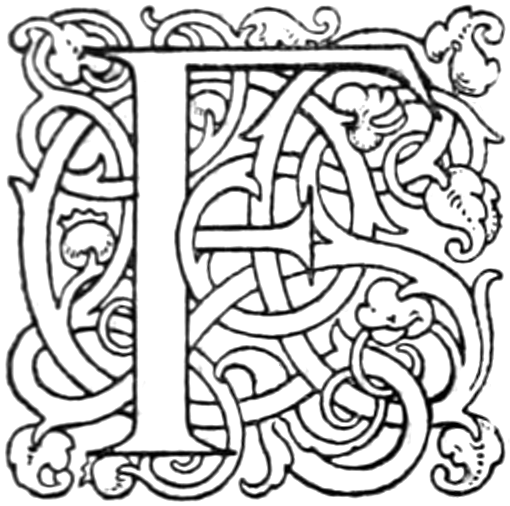
From the number of works that have been published within the last few decades on early printing and the decoration of early books, it is evident that an increasing interest is taken in these subjects, not only by those whose studies have specially fitted them to appreciate such researches, but also by the general educated public.
There is, however, one variety of engraving that has hitherto attracted but little attention, and the importance of which, both from artistic and documentary points of view, is still unrecognised, and it may even be said unsuspected by the great majority of students. Whilst every engraving that may technically be termed a cut or an illustration is catalogued and recorded in the different monographs on special printers, those which take the form of initial letters, often of equal, if not superior merit, are represented much more sparsely, and as having a secondary importance only.
In a monograph on fifteenth-century printing in a certain German town, for instance, the writer, a professional bibliographer, gives about ten or twelve initial letters, whereas the extent of the material upon which he might have drawn may be judged from the fact that a more recent authority, in his history of one printer only of this town, has been able to reproduce more than fifty specimens, many of which are quite equal in interest to illustrations proper, some of them having been recently pointed out by a London expert as constituting the chief attraction of a volume[1] with both initials and illustrations which came under his hammer.
[1] The initials in the Leben der Heiligen Drei Könige of Knoblochtzer.
[viii]
The above lines, written ten years ago, when I first began to collect material for this volume, are perhaps no longer as true absolutely as when first penned. Besides the works of Butsch, Reiber, and Heitz which were already in existence, Ongania’s book on Venice bibliography contains a great many initials; Heitz has devoted a volume to those of Holbein and other artists of the school of Basle, and others to certain initials of Strasburg and Hagenau; and Redgrave, Haebler, Claudin, Schorbach, Spirgatis, and Kristeller give a certain prominence to initials in their respective monographs.
I still think, however, that a special work on the subject is needed to do justice to the richness of artistic material available in this special matter.
The woodcuts in early books are often merely illustrative, that is to say explanatory of the text, and were not designed as ornaments; but the initials were intended to be decorative, and one can see in them a real artistic effort and sentiment.
Quaritch, indeed, has recently called attention to this fact, of the superiority in some early books of the initials over the woodcuts, and it is beginning to be recognised also by several great booksellers, whose catalogues contain increasing numbers of reproductions of ornamental letters in preference to other specimens of early engraving.
Unfortunately, circumstances have prevented my completing my first programme, and what I offer here can only be considered as a general introduction to the subject. But such as they are, these fragmentary notes will not, I hope, be found entirely devoid of interest.
In conclusion, I have to express my thanks to Mr. A. W. Pollard, the amiable and indefatigable secretary of the Bibliographical Society, for help in seeing this volume through the press, and for many valuable suggestions and criticisms.
OSCAR JENNINGS.
[ix]
| PAGE | |||
|---|---|---|---|
| Preface, | vii | ||
| Introduction, | 1 | ||
| CHAP. | |||
| I. | Block-Books: The Invention of Printing: The Psalter of Mayence, | 6 | |
| II. | Augsburg, | 14 | |
| III. | Ulm and Nuremberg, | 22 | |
| IV. | Basle and Zurich, | 29 | |
| V. | Lübeck and Bamberg, | 39 | |
| VI. | Strasburg and Reutlingen, | 43 | |
| VII. | Cologne and Geneva, | 51 | |
| VIII. | Venice, | 55 | |
| IX. | Other Italian Towns, | 64 | |
| X. | Lyons, | 73 | |
| XI. | Paris, | 82 | |
| XII. | French Provincial Towns, | 90 | |
| XIII. | Spanish Towns,[x] | 96 | |
| XIV. | Early Dutch Initials, | 101 | |
| XV. | Later German Initials: Hagenau, Magdeburg, Metz, Oppenheim, Ingoldstadt, etc. etc., | 103 | |
| XVI. | English Initials, | 108 | a |
| Reproductions of Initials, | 111 | ||
| Index, | 281 | ||
[1]
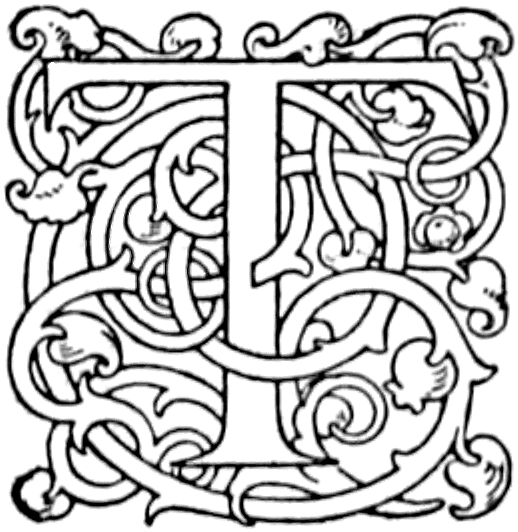
The ornamentation of books dates probably from the time of their invention, that is to say, it goes back to a very remote antiquity. From Greece, where the book-trade was flourishing at an early period, it passed into Italy, extending thence to the provinces of the Empire, to Gaul and Spain, where book-lovers became more and more numerous, and as civilisation became more refined, increasingly particular about bindings and ornamentation.
The verse of Tibullus,
shows the extent of the embellishments to which bibliophiles had then become accustomed, requiring the titles of their favourite authors to be engrossed in coloured or illuminated letters.[2]
[2] Numerous passages might be quoted from Latin writers to show how great an interest they took in books, and how valuable rare, and what might be called original, editions had even then become. It would seem, too, that they even knew the pleasures of book-hunting, for Aulus Gellius relates how, having a few hours to spare after landing at Brindisi, he spent his time looking through the contents of an old book-stall, and was lucky enough to discover a very old work on occult science.
Besides the title, the headings of chapters and the initial letters were also distinguished in the same way from the rest of the work, a custom which passed from the Roman copyists to those of the Lower Empire, and in course of time became generally adopted in the preparation of manuscripts. But this was not all. It is now recognised that book illustration[2] was known to the Romans, and that the miniatures of the mediæval manuscripts only followed the fashion of the rich and sumptuous volumes transcribed by the copyists of Athens and Rome. The fourth-century Virgil, for instance, one of the treasures of the Vatican, which has been so well described by M. Pierre de Nolhac, is an example of this, containing as it does a large number of figures. Like all manuscripts of the time, it was written exclusively in majuscules, very similar to those used in Roman inscriptions.[3]
[3] Pliny speaks of a marvellous, almost divine, invention by which pictures were added to the book of Imagines of Varro—no doubt printed by stamping.
The taste for luxury spreading from the third century, Byzantium became the centre of the most extravagant and costly elegance in all its manifestations, and books of that origin have come down to us written on purple parchment in letters of gold. It was not until several centuries later that a reaction took place, when Leo the Isaurian, in 741, considering such refinement as sinful, put an end to it by burning the public library, together with its staff of bibliothecarii and copyists, the survivors finding a refuge for their art in the western cloisters and monasteries.
The intelligent protection and encouragement and hospitality afforded to men of letters by Charlemagne was a great contrast to the bigotry of Leo the Byzantine. Interesting himself warmly in all questions relating to instruction, he took a special interest in the copying and transcription of manuscripts, inviting to his kingdom the Irish and Anglo-Saxon monks, who from the sixth century had made a special study of calligraphy, and were celebrated all over Europe for their miniatures and historiation.
In consequence of the patronage of Charlemagne and of Charles the Bald, son of Louis the Débonnaire, artists of all nationalities, but more particularly Germans and Italians, who had come from Oriental schools, received a warm welcome. At first in the sixth century the initial letter was of the same size as the others, only distinguished by the difference of colour, being in minium or cinnabar. A hundred years later, under the Byzantine influence, the letter grows[3] larger, until it occupies the whole page, at the same time being painted with the most vivid colours according to the fancy and caprice of the artist. Little by little the Byzantine style first introduced became modified, and assumed by degrees a national character. The decoration of the initials took the form of interlaced chequer-work or of historiated arabesques, resembling the mosaics of enamelled specimens of Gallo-Frank jewellery.
Then come figures of animals, in which the imagination of the artist runs riot, as in the alphabet of which Montfaucon has given a specimen in his Origins of the French Monarchy.
To quote the opinion of a contemporary writer, there was nothing under heaven or earth that had not served as a model for designers of ornamental letters.
Towards the fourteenth century this exuberance of decoration quiets down. Fancy is by no means excluded, but it becomes more regulated and more sure, to the advantage of art itself, which speaks through the skill of the painters, whose names, however, with but few exceptions, unfortunately remain unknown to us.
Paris was renowned at an early period for the excellence of its manuscripts, and the talents of its copyists and illuminators. Richard de Bury, Bishop of Durham and Chancellor of England, speaks in his Philobiblion of the five libraries he had seen in that town, and the magnificent books that he had been able to buy.
In England, illumination had flourished from before the twelfth to the fourteenth century, but by the middle of the fifteenth art was dead, and when handsome miniatures or other decorations were required for books, it was to French artists that it was necessary to apply.
In Italy, the influence, as regards book ornamentation, of French art may be judged from the passage of Dante, who, speaking to a miniaturist of his profession, is obliged to use a periphrase to design it:
[4]
The dawn of printing was at hand. Manuscripts, whether handsomely embellished or copied simply without ornament, were expensive luxuries which only the rich could purchase. With the revival of learning, for students in general, for the poorer classes, for school children, cheap books costing as little as possible, but serving the same end as the manuscript, were necessary, and the xylograph came at its hour.[4]
[4] It should be mentioned that block-books are now considered by some authorities to have come later than the invention of printing with movable type, i.e. about 1460.
From the earliest times copyists had used stamps[5] and copper stencillings in order to apply initials that recurred frequently, a practice which contains in it the first germ of printing. Playing-cards were printed by the same process and afterwards illuminated.
[5] Passavant.
Picture-books came next, with text and illustrations cut on the same block, the leaves being printed on one side only, and afterwards gummed back to back.
Such was the book known as the Biblia Pauperum, ‘Figurae typicae veteris atque antitypicae novi testamenti,’ a short pictorial history in forty leaves of the Old and New Testament. Another of these block-books is devoted to the history of St. John the Evangelist and his apocalyptic dreams, of which there are six different editions, with texts in Flemish, Saxon, and German. The Ars Moriendi, or temptations of the dying, with terrifying pictures, shows a moribund man assailed by devils,[6] but, as in all similar productions, the terrible is relieved by a touch of the grotesque. The Speculum humanae salvationis is remarkable for being printed partly from blocks and partly with movable characters. This shows the transition from xylography to printing proper. The printer of this work, in order to economise the composition of twenty-seven leaves, used the blocks he possessed, and printed them together with twenty-seven others composed with movable type. The example is not unique.
[6] See, under ‘Paris,’ the representation of one of these death-scenes in an initial of Chevallon’s.
A last variety of xylographic impressions is known under the generic name of ‘Donatus.’ This is a little primer of[5] Latin grammar first compiled by the grammarian Aelius Donatus, by whose name it was afterwards known.
We have mentioned the xylographic publications, because in a certain number of them ornamental initials are to be met with. These, as would naturally be supposed, are of the same style as those found in manuscripts of the same period. It may be observed here, that whilst books of price were embellished with expensive work, the less valuable manuscripts were left either without initials at all, or with ornamental letters of a few stereotyped patterns, that experience had shown to be most harmonious to the written text. Of these patterns the most popular is the Maiblümchen, or lily of the valley design, constantly seen in manuscript books, and adopted by many of the early printers. This design will be seen in many of the first initials of the Augsburg printers, and especially of Rihel of Basle.
Historiated initials are less frequent in the block-books, the only one we have found being the S of an Ars Memorandi, of which a reproduction is given.
We have noted briefly the successive changes in the manuscript book, the different phases of its evolution towards its final formula and expression as an impression from movable type.
This brings us to the invention of printing, but it must be noted that printing, which revolutionised in so many ways the world, did not immediately put an end to the professions of the rubricator and illuminator. Some printed works of the end of the fifteenth and the beginning of the sixteenth centuries are embellished with miniatures of the very highest merit and illuminated letters of the greatest beauty.
[6]
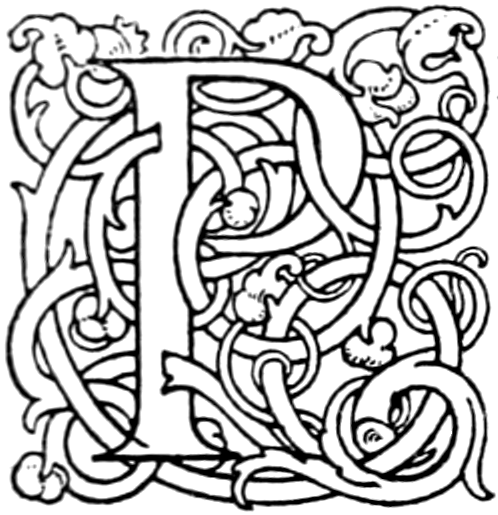
Printing, with the discovery or invention of which the name of Gutenberg is intimately associated, goes back to the year 1454, or, if we accept the recent discovery of an almanac which can only refer to 1448, some six years earlier.
This is not the place to relate its general history, which is to be found in all the special works on the question. We shall set down here only the facts which concern our subject more particularly, and show the evolution of ornamental letters in books of the first period after the discovery of the new art.
It is known that Gutenberg, after the expensive experiments that had crippled his resources, had borrowed money from his fellow-citizen Fust, for the purpose of developing his new discovery.
His methods were, however, incomplete, and, according to one of many conjectures, it was not until two or three years later that Peter Scheffer, presumably a workman in Gutenberg’s office, perfected it by the invention of punches and matrices, so discovering a means of founding the type for which he devised a more suitable alloy instead of engraving each letter. This brought Scheffer into favour with Fust, who gave him his daughter in marriage. A quarrel with the original inventor ensued, and Gutenberg, nearly ruined, was[7] forced to retire, leaving the two others in possession of the field.
The object of the first printers was no doubt to imitate the manuscript book as closely as possible. Gutenberg in his Bible had only attempted to copy the letterpress proper. The two partners gave in 1457 as their diploma piece an edition of the Psalter with two hundred and eighty-eight capitals in two colours, besides the great initial B, the whole forming a perfect imitation by the press of a highly decorated manuscript.
At the present time an expert could see at a glance that this book is printed, instead of being written. But in 1457, and until the invention of printing had become generally known, no one could have guessed that it was anything but what it appeared, a beautifully finished manuscript.
Of the letters, which are mostly in red and blue, the handsomest is the initial B at the beginning of the first psalm, which is surrounded by arabesques, continued along the margin. Besides these ornaments, figures of a dog and bird are stencilled, as it were, in white on the red ground of the letter.
Writers are by no means agreed as to the way in which these initials were executed, but until recently the explanation most generally accepted was that of emboîtement, each part of the letter being inked separately and afterwards joined. According to Mr. Gordon Duff, it is impossible to determine exactly how they were produced, but in one edition, that of 1515, the exterior ornament has been printed, while the letter itself and the interior ornament have not. This shows that the letter and ornament were not on one block, and that the exterior and interior ornaments were on different blocks. Mr. Blades thought that the design was not printed but impressed in blank, and afterwards filled in with colour by the illuminator. The last opinion, that of Mr. Weale, is that the letters were not set up and printed with the rest of the book, but subsequently to the typography, not by a pull of the press but by a blow of the mallet on the superimposed block.
[8]
It is not, perhaps, without interest to note that the white ornaments which have been already mentioned are reproduced on one of the initials of the Bamberg missal. Whether or not this lends additional likelihood to the Bamberg printer having been a workman of Gutenberg, the reader must judge for himself.
We have said that the object of the first printers was to produce an imitation manuscript. It has even been suggested that Scheffer tried to palm off some of the copies of the Bible as, and at the price of, the manuscripts.
Gabriel Naudé, in his addition to the history of King Louis XI., is responsible for this accusation, which has been reproduced without investigation by several historians. The passage is too long to quote here, but he states positively that Scheffer sold the first copies pour manuscrites at seventy-five écus a copy, selling others afterwards at from twenty to thirty. Those who had paid the higher price brought an action against him for survente, and he had to fly from Paris to Mayence, where not being in safety he took refuge at Strasburg, living for a time with Messire Philippe de Commines.
The story is charmingly circumstantial but hardly convincing. At any rate, it is certain that no sharp practice could have been attempted after 1457, as the colophon of the Psalter states the volume ‘Venustate capitalium decoratus rubricationibusque sufficienter distinctus adinventione artificiosa imprimendi et characterizandi; absque calami ulla exaratione sic effigiatus.’
It has also been said that Scheffer was not the first to use the Psalter initials, which formed part of the stock which Gutenberg was compelled to relinquish in payment of the money he had borrowed of Fust.
Fischer at the beginning of the last century published the description of a Donatus of 1451 with some of these initials, of which he gave a facsimile, and which he attributes to Gutenberg, but this book is no longer to be found, and it is supposed that he was the victim of a hoax.[7] The only[9] copy now known with these initials has come down to us in the shape of a fragment which is preserved in the Bibliothèque Nationale. The catalogue gives the date as 1468, but Hessels and many other good judges place it at 1456. It is printed in the type of the forty-two line Bible, with thirty-five lines to the page. In the colophon Scheffer makes use of the expression ‘cum suis capitalibus,’ which Hessels translates ‘with his capital letters,’ a rendering, says Mr. Gordon Duff, which is surely impossible.
[7] According to M. de Laborde, ‘Bodman archiviste de Mayence, tourmenté par Oberlin, Fischer et tous les bibliographes du temps pour leur trouver quelques nouveaux renseignements sur Gutenberg, n’imagina rien de mieux que d’en fabriquer.’ Fischer in his Essai sur les monuments Typographiques de Jean Gutenberg declares that he found two leaves of a Donatus, which was printed by Gutenberg with the same initials as were afterwards used by Scheffer. These leaves were in the cover of an account-book dated 1451, which was discovered in the Archives of Mayence by Bodman. These leaves have since disappeared.
Two other questions remain to be considered: Why Scheffer should have used the initials frequently until 1462, and then (with the exception of successive editions of the Psalter) have given up their use entirely? Who was their author?
For the first there was a combination of several reasons. The opposition of the Formschneiders may have had something to do with it. On the other hand, Scheffer may have got tired of always using the same initials which had been cut for him by an exceptionally clever engraver, of whom he had afterwards lost sight. In the third place, the sack of Mayence in 1462, which led to the dispersion of his workmen, may have been partly the reason, but that he did not lose his material is proved by the initials appearing in the antiquarian reprints of the Psalter.
In our opinion the second reason is most probable, and it is supported by the testimony of Papillon as to the identity of the artist, which seems to have escaped recent bibliographers.
According to Heineken, a certain Meydenbach is mentioned in Sebastian Münster’s Cosmographia, and also by an anonymous author in Serarius, as being one of Gutenberg’s assistants. Heineken on these grounds considers that he accompanied Gutenberg from Strasburg to Mayence, also[10] that he was probably an engraver or illuminator, and Von Murr thinks he was the artist who engraved the large initials.
Fischer is convinced that they were engraved by Gutenberg himself, ‘a person experienced in such work, as we are taught by his residence in Strasburg,’ which Jackson declares teaches no such thing.
Papillon’s history is too long to be related here verbatim, but in substance it is as follows: A German who was making the tour de France applied to him for work. He stated that his name was Cocksperger, and that he was descended from Peter Cocksperger who had engraved the initials of the Psalter of Mayence. Papillon only saw him three times in 1737, when he showed him some of his work, which, although somewhat coarse, was well cut, of a pretty taste, and not common. His ancestors had lived in Mayence, Cologne, and Nuremberg. One of them, Peter, had worked with Fust and Scheffer at their first impressions, and it was a tradition in the family that he was a scribe and miniaturist, and also engraved neatly on wood. He had been engaged by Scheffer, who lodged him in his house, to design and engrave on wood large initials embellished with ornaments like those he was in the habit of drawing and painting. Also that one of his brothers, Jacques, together with a friend named Thomas Forkanach who also engraved on wood, had helped him to engrave the initials for Scheffer’s Psalter. He showed Papillon a book of ‘figures of the mass,’ a xylographic tract printed au frotton. Not being able to get acceptable work, he left Paris. ‘This man,’ says Papillon, was ‘franc et de très bon caractère,’ he had means to live quietly at home, had not l’envie de voyager made him leave Germany.[8]
[8] Papillon, Histoire de la gravure sur bois.
We have not seen any references to Cocksperger in modern works, but Dibdin in one of his books quotes Papillon’s account of him. It would be curious to know whether there was really a family of this name in Mayence at the date Papillon gives, and whether there is any trace there of such a tradition.
[11]
Besides the initials used in the different editions of the Psalter, and in some other publications such as the Rationale Durandi, which has the same subscription as the Psalter, but with the date changed to 1459, Scheffer had a splendid bichrome T for the Canon of the Mass, considered by many as quite equal to the B of the Psalter.
Later in the century polychrome initials, as these letters in two colours are somewhat incorrectly termed, are said to have been used in early Dutch impressions. Humphreys in his History of Printing gives the reproduction of a Q in two colours from the Dyalogus Creaturarum, printed at Gouda in 1480 by Gerard Leeu, which he supposes to be printed, and which he considers, as we think erroneously, to be quite equal to Scheffer’s B.
Initials printed in one colour are not uncommon. They are to be found, for instance, in the Etymologicum Magnum of Callierges, and sometimes in missals, such as the Missale Olumucense of Bamberg and the Rouen Missal, ‘ad usum insignis ecclesie Atrebatensis.’
It has been said that the Psalter letters ceased to be used in 1462. Whatever may have been the reason for this, and it is possible after all that it was simply from motives of economy, Scheffer’s example, as regards the suppression of ornament, was followed by the other printers, and with the exception of Pfister, whose impressions from movable characters have every appearance of xylographic productions, for some years no books were issued with typographical embellishments.
It is probable that, for the two years during which he flourished, Pfister’s illustrated publications were tolerated because they were generally supposed to be block-books, and that he was compelled to stop operations by the Guilds, as soon as they found out that he was in reality one of the hated printers. For it was not only as craftsmen that the Formschneiders were hostile to the members of the new trade. The engravers had become the printers of the xylographic books, then a new and profitable industry, and they were afraid of the sale of their own productions being interfered with by the illustrated works of the type-printers.
[12]
From the point of view of ornamental initials there is little to say about the xylographic impressions.
Before the invention of printing, the copies of block-books were obtained, as has been already mentioned, by what is known as the frotton process, the paper being placed over the engraved block and rubbed with a special pad. The ink in the originals is of a brownish yellow. After the invention of the press, certain popular treatises continued to be struck off from xylographic cuts, but by impression, like ordinary books. One of these, the Mirabilia Romae, a guide-book to Rome at the end of the fifteenth century, has a large historiated S at the beginning. It is remarkable from the fact that the letterpress, of which a specimen is given with the initial, is not cut in imitation of type, but, as can be seen in our reproduction, of ordinary hand-writing.
Another specimen of this kind of printing is the P, which we reproduce with a border, from a Donatus, the first and eighth leaves of which were preserved for centuries in an old binding.
This Donatus, of which the only leaves remaining belong to the Leipsic Museum, was printed by Dinckmut. There is another xylographic fragment with a colophon bearing the same name in the Bodleian Library. The initial itself represents a schoolmaster surrounded by his pupils, a subject frequently met with as a frontispiece to books of this class, and it is prolonged into a border which frames the page.
When the initial of a Donatus does not represent a pedagogue and his class, the subject is often the Virgin and Holy Family. J. Rosenthal has an extremely valuable edition with the Virgin, the Child, and St. Catherine. Amongst our specimens of Cologne is a Donatus without name of printer or date, but no doubt printed by Quentell towards 1500, in which, besides the Virgin and Child, there are grotesque profiles in the two left corners which look as if copied from the same source as one of the Bämler initials, and the initial with grotesques in the Bâle Psalters.[9]
[9] The Donatus, always being in demand, was generally one of the first books printed at a new press. It was the first work issued by Pannartz and Sweynheim when they started at Subiaco.
[13]
During the remainder of the fifteenth century there was very little in the way of initial ornamentation in books published at Mayence, where Scheffer, who was always the chief printer, seems to have exhausted his possibilities in this direction with his first experiment.
There is, however, a fine large historiated D in a German translation of Æsop—Das Buch und Leben des Fabeldichters Æsop—without printer’s name or date, but attributed to Scheffer, towards 1480. This initial has already been reproduced in Muther’s Bücher-Illustration, and more recently in a bibliography of incunabula and books printed before 1501, by Ludwig Rosenthal. The only other interesting ornamental letter we are acquainted with of Mayence origin before 1500 is the G at the commencement of Erhardt Reuwich’s Breidenbach.
During the first two decades of the sixteenth century there is the same dearth of anything like ornament in Mayence books, but towards 1520 John, the grandson of the first Peter Scheffer, has several alphabets, one of very large letters with arabesques of flowers, foliage, and birds, used first in his Livy of 1518, published under the patronage of Brandeburg, Archbishop of Magdeburg and Mayence. There is also a smaller one with the most varied subjects, besides a few letters with children on a black ground, and one or two linear initials also with children, copied from Venetian models.
[14]
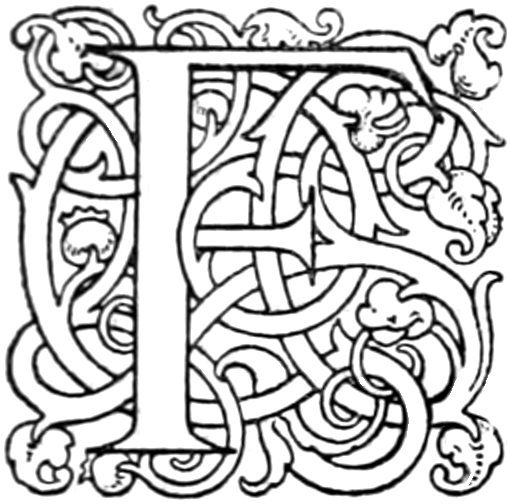
From what has been already said, it seems evident that the aim of the first printers was to produce by the new art as perfect as possible an imitation of the manuscript.
Scheffer printed books with ornamental letters in the manuscript style. The other printers left them to be added by hand, which produced the same effect. It was not until the beginning of the seventies that the printed book assumed its definite form, and that it was recognised that new methods and new processes were necessary. The printed book was henceforth to be a printed book, and not an imitation manuscript. It was no longer to pass, for accessory embellishment, through a number of successive hands, but to be finished at a single impression.
It would not be exact to say that it was Günther Zainer who relinquished the fiction of a printed manuscript, and who recognised that, in virtue of the economic principle of which the press itself is a manifestation, text and ornamental embellishments should be produced as simply as possible.
The alteration was brought about by the Augsburg printers generally, rather than by any one in particular, and was a matter of evolution rather than of sudden change.
It was hindered, too, to a great extent by the opposition of the Guild of Engravers, who saw in the innovation a menace to their privileges, and who brought an action against[15] Zainer and Schussler in 1471 to prevent them using wood-engraving in their books, and even opposed their admission as burgesses. It was only at the intervention of Melchior Stanheim, Abbot of St. Ulrich, that the matter was arranged, on the understanding that they should insert in their books neither woodcut pictures nor letters, a prohibition that was only withdrawn after a new arrangement which bound the printers to employ only recognised members of the Formschneider Guild.
As an example of the jealousy with which these privileges of corporations were maintained, it may be mentioned that Albert Dürer was compelled to pay four florins to the Society of Painters of Venice for working at his profession during his stay in that city.
Günther Zainer’s first woodcut initials, if they can be called ‘woodcuts,’ are merely outline letters without any kind of ornament. They were intended simply as a guide to the rubricator.
In the next stage we have a framed initial with an ornamental groundwork, but the composition is less effective in black and white than when the letter itself is picked out in red. A good example of this is in the alphabet of the Zainer German Bible, afterwards used in the Summa Confessorum of J. Friburgensis. In these initials, what a contemporary authority on lettering calls a ‘friskiness’ of the design leads to a difficulty of distinguishing between the ornamental prolongation of the different parts of the letter, and the very similar decorative groundwork,—so much so, that even the rubricator was sometimes mistaken, the colour being left unapplied where needed, and vice versâ.
Finally we come to initials, of which the specimens that have come down to us are coloured as often as not. These are more effective when not so treated, and were probably intended to be left as printed. The reader can judge from the specimens reproduced.
Butsch (Bücher-Ornamentik) mentions the Gulden Bibel of Rampigollis, the Belial of 1472, and the Glossae of Salemo, as the earliest works of G. Zainer with woodcut initials.[16] The Belial, he says, has a large ornamental initial of arabesque design.
Our first selections are from the Summa Confessorum; the large P is from the Margarita Davitica of 1475.
The new plan was soon adopted by the other Augsburg printers, and spread thence to other towns and countries.
As far as Augsburg is concerned, it should be noted that the same letters were often used by different printers, and they are therefore as much illustrative of the town and period, as of any one particular press. Ludwig Hohenwang, for instance, uses the same initials in his Gulden Bibel of 1477, as does J. Pflantzmann in his Glossa of Salemo of the same year. The two specimens given of these printers might have been taken from either volume.
Our other examples are taken from works published by Sorg, Keller, Bämler, and Schönsperger.
The Bämler selection is exceedingly curious as presenting probably the first example, if our date is correct, of what was afterwards so common—the grotesque profile.
Unfortunately we are unable to give their exact origin, as they form part of a collection of initials, cut from early books, but if the attribution ‘Bämler, 1475,’ is correct, they are of the same date as the Rihel Bible of 1475, in which there are two initials with profiles, but neither of them grotesque.[10]
[10] There are two pictorial letters in the fifth German Bible (see the reproductions of both at pp. 118, 119), in which the border is formed partly of a grotesque profile.
The five specimens given are selected from the thirteen letters comprised in the collection, and need no description. The others consist of a D, which is in reality the same as our C but reversed; a G, two L’s, an R, a T, and a V. One of the L’s has a sun with full face, and the T, besides being of an unusual pattern, has also a grotesque profile. Unfortunately it has been daubed over by a rubricator too badly for reproduction. The S with the two human figures occurs several times in Rihel’s Latin Bible, and was given by us in a former essay[11] as a specimen of Basle woodcuts. We now class it provisionally with Augsburg.
[11] ‘On Some Old Initial Letters.’ The Library, January 1901.
[17]
Of Sorg, our earliest specimens are of the pure Maiblümchen pattern, the S without any trace of historiation being from a copy of St. Ambrosius on St. Luke of 1476. Other letters of this type are to be found in his Breidenbach and other works, but later on they become almost identical with those of Keller. Compare the A and the H from the Valerius Maximus of Sorg of 1480, with the E and V from the Keller edition of Aristotle’s Opera Nonnulla of 1479. The S with a grotesque profile at each end and the letters G I A dates from 1480, and is the first initial we have met with in which the fool, so popular in the imagery of the period, here complete with cap, ass’s ears, bells and cockscomb, is represented.
Schönsperger’s initials, of which four reproductions are given, are a little later, 1489.
We come now to pictorial initials, and in this respect the printers of Augsburg had been anticipated by those of Ulm and Nuremberg.
It was in 1473 that the fourth German Bible was published at Nuremberg. It was probably the success of this edition that induced Günther Zainer to bring out the magnificent folio classed as fifth, which may truly, from its size and solidity, be considered as a typographical monument.
Zainer’s first edition (the fifth German Bible) was undated, but was published either in 1474 or 1475. It succeeded so well that another edition, this time dated and in two volumes, was published in 1477, with small ornamental initials at the beginnings of the chapters, as well as the large pictorial letters previously used at the commencement of each book.
The difference between the Augsburg and Nuremberg initials can be seen in our reproductions, the former being taller and surrounded with accessory ornaments. In the Nuremberg Bible, Corinthians 1 and 2, Ephesians, Philippians, Thessalonians 1 and 2, Timothy 1 and 2, Titus and Philemon, all have the same initial. Hebrews has no initial at all, nor has Galatians. In the Augsburg edition the letters are all different; Galatians has its initial, and Hebrews begins with a pictorial Z.
[18]
In Sorg’s Bible of 1477, the only large historiated letter is the B at the beginning of the dedicatory epistle, with bishop and cardinal in a cell which, as can be seen in the corresponding Nuremberg initial, looks like a third-class railway compartment. There is a smaller D, not worth reproducing. The different books of the Bible are mostly preceded by small engravings.
But Sorg’s best historiated initials, in fact the only ones with which we are acquainted (for the B in his Bible is a copy of Zainer’s), are to be found in a work by Henricus Suso, ‘dictus Amandus,’ published in 1482: Das Buch das heisset Der Seusse, a translation of his Horologium aeternae Sapientiae.
This book contains a number of engravings on Biblical subjects, which are most often painted over beyond the possibility of reproduction. Such is the case with the copies both in the British Museum and in the Paris National Library.
Besides these illustrations there are three large pictorial initials, C, R, and S, of which the C alone occurs twice, representing, the C an angel appearing to a woman, the R a saint with a crozier, and the S an eagle, the background being filled up with Maiblümchen.
Towards the end of the century Ratdolt, who had returned from Venice, was the chief printer at Augsburg.
Amongst his other productions, Ratdolt printed a number of liturgical works, the most beautiful that we have seen being the folio Breviary of 1493. The type is admirable, and those pages which begin with the large letters, such as the C with the Pope, or the H (All Saints), printed as they are with the brilliant black ink of the period, are particularly effective. The B at the beginning of the Psalter is used again in the smaller Psalter of 1499, as are several of the smaller initials. The pars aestivalis begins with the U. The C with St. Urban is at the commencement of the section De Sanctis.
Two of the smaller initials occur in the larger Psalter, which are not in the smaller one. A D representing a kind of Indian with a club and feathers is the fool referred to in the opening words of the Psalm Dixit insipiens. Another D[19] has Jesus kneeling to His father (Dixit Deus Domino meo). On the other hand, the crucifixion initials of the Psalter of 1499 are not in this edition.
The Psalter of 1499, Psalterium cum apparatu vulgari familiariter impresso—Lateinisch Psalter mit dem teutschen nutzlichen dabey gedruckt, has not the imposing appearance of the earlier folio volume, but like all Ratdolt’s work is well printed. This would appear to have been taken as a model for Psalters in the Vulgate. There are several editions of different towns with the text framed, as it were, by a translation in the vernacular in smaller type. The Psalter of Furter has the same disposition, the initial letters, although different in treatment, corresponding almost exactly with those of Ratdolt’s Psalter. Knoblouch has a similar Psalter, but with non-historiated initials. In the Metz Psalter of Hochffeder, otherwise on the same plan, the only initial is on the title-page.
In the Missal of Frisingen of 1492 there are no historiated letters, and the ornamental initials in the Venetian style are unfortunately most outrageously coloured in the only copy we have seen. Amongst other letters there is in it an extremely curiously designed S which is difficult to describe, but which we would recommend to students of lettering. In the D, which is in the shape of a Gothic German Q reversed, and the P, there is a branch-work pattern starting tangentially from a central circle and ending in trifoliated ornaments altogether graceful and harmonious. Ratdolt’s mark is on the last page, and above it:
Ratdolt continued to print liturgical works for some part of the sixteenth century, but the only other volume of the kind that we have had at our disposal is the Pars Aestivalis of the Breviarium Constantiense. Ratdolt, Aug Vindel, 1516. In this book there are four pages with borders, one of which is reproduced, and on the opposite sides are full-page engravings. There are eight initials, which we reproduce, and[20] which are also, we believe, to be found in his Ratisbon Breviary.
Hitherto, with the exception of the last-mentioned work, we have had to do with what may be called the first style of engraving, in which designs and pictures drawn by the artist were executed by the wood-cutter in linear reproduction only.
With Albert Dürer, however, came a new epoch, and it became the custom for artists not only to design but also to engrave their own work. This practice, which was commenced by Dürer, who served a long apprenticeship to the celebrated Wohlgemuth, was continued by most of his pupils, and new technical methods were naturally the consequence. Henceforth the more liberal use of shading, and the invention of cross-hatching, enabled effects to be produced which had been before impossible.
The results may be seen to this day in the magnificent engravings by the great artists of the beginning of the sixteenth century, which, notwithstanding the difficulties under which they laboured, have never been excelled.[12] Their productions, even when it comes to initials, are real compositions with a personal character.
[12] At this time the wood employed for engraving was pear, and the surface of the block was parallel to the fibre. This made cross-hatching most difficult of execution, and in consequence of the extreme care and attention necessary, it is said that the work took eight or nine times as long as at present. It is only since the days of Bewick that boxwood has been used, and the blocks cut with the fibre of the wood perpendicular to the surface.
To mention those only who designed initial letters, and of whose works we shall give specimens, there were Albert Dürer, Hans Burgkmair, Hans Holbein, Hans Schauffelein, Anton von Worms, Lucas Cranach, Hans Baldung Grün.
We have here to speak of the initials generally attributed to Hans Burgkmair, but which, according to Dr. H. Röttinger, ought to be assigned to Hans Weiditz, one of his pupils.
These initials are to be met with for the most part in the publications of Heinrich Steyner in 1531 and the following ten or eleven years, and come mostly from German translations of classical authors. The influence of Albert Dürer, of whom Burgkmair was himself the pupil, is clearly seen.[21] Different treatises and different editions of Cicero were published in 1531, 1535, 1540; of Herodianus in 1531; Justinus, 1531; Boccaccio, 1532; Cassiodorus, 1533; Plutarch, 1534; Petrarch, 1542, in all of which we meet with specimens of these letters.
The Z with a fox trying to get at the poultry in the market-woman’s basket is from the German Cicero. The C (bagpiper) and the N (caricature with big head and small legs) and the P with a peacock are from the Magni Aurelii Cassiodori variarum libri xii. The E with the monk and nun, and the C and H in a different style, are from the German Petrarch. The other initials are from one or other of the volumes mentioned.
[22]
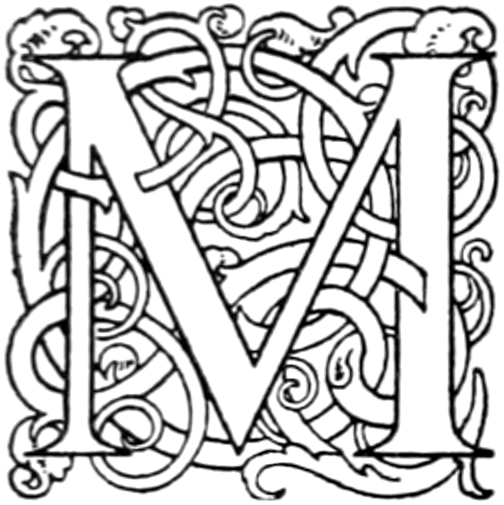
Most writers on early bibliography, amongst others Bodemann and Muther, who both give reproductions of the initial border at the beginning of the Latin Boccaccio, quote J. Zainer as the first printer in Ulm to use woodcut initials. The date of the Boccaccio is 1473. In addition to the initial border it contains a complete alphabet,[13] of which we give several specimens. From a decorative point of view this alphabet is not very remarkable, the letters being of small size, but the book is interesting on account of the very large historiated initial at the beginning, which is prolonged along the side and upper margins into a floro-foliated border in imitation of the more elaborate decoration of the old manuscripts. The subject represents that very unfortunate incident in the history of the first woman which was the cause of all the subsequent unhappiness of mankind. Eve, who is the heroine of the first chapter of this book on celebrated women, is represented in the act of receiving the apple from the arch deceiver, who is ensconced in the branches of the fatal tree with his tail twisted into the letter S. Above, in the branches of the tree, are small personages emblematic of the seven deadly sins. In a German edition of the same book of the same year, the initial becomes a D, and contains[23] the arms of the noble to whom the work is dedicated, with winged angels at the corners, being prolonged into borders along the two adjacent margins. In these two instances the initial letter forms part of the general composition.
[13] Copied from a manuscript of the fifteenth century, the ‘Evangeliare of St. Udalrich.’
In another style of border the initial is merely placed in juxtaposition, and the same design is thus able to serve for any book with any letter.
There is a remarkably vigorous folio-floral border with the head and shoulders of a fool with his cap, bells, and other insignia, at the angle of the two margins in the Liber Biblie Moralis, 1474. The same composition is used in the Alvarus Pelagius the year before.[14]
[14] In church architecture, and in early book ornamentation, which reflects so well the ideas and customs of the time, the fool did not make his appearance before the middle of the fifteenth century. Wright, in his History of Caricature, mentions as early instances some sculptures of this date in churches of Cornwall, and it was about the same time that this personage is first seen in manuscript decoration.
The idea, however, was much older, springing from that taste for the grotesque which characterised the Middle Ages, and the relics of which are seen in so many artistic remains of the period. From the tenth century and even earlier, companies of fools existed in all large towns, and on certain occasions Mother Folly and the Lord of Misrule reigned supreme. The cult of the ass, whose ears were to become later part of the fool’s insignia, was another outcome of this love of the burlesque.
In printed books, the first engraving we are acquainted with of a fool is in the border to the Liber Biblie Moralis of 1475. In initial letters, as far as we have been able to ascertain, this subject was not used before 1480, when it is to be found in specimens both of Augsburg and of Strasburg. A remarkable portrait of a fool is contained in an O in Schott’s Plenarium, printed, as is stated in the colophon, at ‘Strospurg,’ in 1481. Knoblochtzer’s large S, for the Dyalogus Solomonis et Marcolfi, gives a fool with another personage at full length, and at last the typical fool, with a marotte and all other accoutrements, is met with in initials of different Psalters, being well seen in that of Fürter of Basle.
Henceforth, with a face characterised by leering cunning, the type is to remain unchanged, and Brandt, Erasmus, and Holbein only add to its popularity, without modifying the general conception. There is a little pictorial initial by Quentell, in which the usual expression is replaced by one of extreme finesse, but coarser cunning is the rule, and it is under this aspect that the fool is depicted by Holbein in the R of the alphabet of Death.
In the Quadragesimale of Gritsch there is a similar border, but the fool is replaced by a personage with a doctor’s bonnet. The letters accompanying these borders belong to the alphabet, of which we give several reproductions, and which is the most frequently used in J. Zainer’s works.[15]
[15] Reiber in his Art pour Tous gives a similar alphabet of the Augsburg Zainer, which, he says, is copied from a manuscript of the tenth century.
[24]
Another great work from the Ulm press is the Cosmographia of Ptolemy, printed by Leonard Holl, in which there is an alphabet of initials not unlike those of Schönsperger already given. Those of L. Holl ought to have been preferred as illustrations, inasmuch as they are earlier than the others, 1482, but they are almost invariably painted and unfit for zincotype reproduction. The chief interest, moreover, in the book is in its two large historiated initials on the first two pages, the first showing the printer offering his book to the Pope, the second representing probably Ptolemy himself.
Our last specimen of J. Zainer’s engraving is the F which begins the dedicatory epistle of the Latin Bible of 1480, and which is a curious example of the peregrinations of woodcuts through different workshops, and of the incongruous uses to which they were put.
In the Ulm Bible the letter is much fresher and the border-line very little broken, but our reproduction is from an impression made when it was much the worse for wear, and had passed into the hands of Hupfuff of Strasburg. It has been used by him without any kind of apropos, not as an initial but as a frontispiece to a tract published in 1507 with the following title: Canon Sacratissime Misse una cū; Expositione ejusdem ubi in primis praemittitur pulchra contemplatio ante missam habenda de Cristi pulchritudine.[16]
[16] On the title-page of a little pamphlet entitled ‘Deploration sur le Trepas de tres noble Princesse Madame Magdalain de France Royne Descoce,’ of which only one copy is known, the frontispiece is a B showing the Queen holding up a dagger, and with the motto ‘Memento mori.’
Every student of bibliography has met with instances of the use of illustrations having no reference to the text, simply to fill up a space and because nothing more suitable was at hand. Cuts, for instance, from Brandt’s illustrations to Grüninger’s Virgil are to be found in some volumes of Geyler’s Sermons. The same indifference to the reader’s opinion was often displayed in connection with ornamental letters. When the letter is simply ornamental it does not much matter: a C turned over becomes a D, and vice versâ.[25] An M at a pinch serves reversed as a W, an N on its side does for a Z. But when, as is sometimes the case, the letter taken liberties with is pictorial or historiated, the resulting effect is far from artistic.
Here there is, of course, no absolute incompatibility between text and illustration, which was probably considered a very satisfactory makeshift for the cut which often adorns the recto or verso of contemporary title-pages, representing the author presenting his book to a patron.
In 1496 J. Reger published books with initials, of which we have selected the M, the C, and the S. They come from the Obsidionis Rhodie Urbis descriptio of Caoursin, a work very much sought after on account of its full-page woodcuts, some of which represent incidents in the siege, others the entertainment of an ambassador by the Grand Master. The M and the C are the only letters with animated subjects; the others, R, H, N, and G are simply foliated, and the proofs are too inferior for reproduction.
The same printer has another book of the same date about Rhodes, the Stabilimenta Rhodiorum militum, with three interesting initials, an F, a boy with a dog, an O, a naked winged babe, and an X, a bird with foliage.
—If Zainer at Augsburg was the first to introduce woodcut letters printed in black ink, the practice was adopted very soon after at Nuremberg, if indeed, setting aside the outline initials already mentioned, Nuremberg has not the priority as regards genuine ornamental woodcutting. For whereas the Belial of 1472 is the first work mentioned by Butsch with woodcut letters at Augsburg, at Nuremberg, where J. Müller of Königsberg (Regiomontanus), as is stated by Panzer, settled in 1471, his first publication, the Theoricae Novae Planetarum of Georgius Purbachius, is embellished with eight initials. These are interesting as affording another example of the fact that the earlier designs were generally taken from manuscripts, for Olschki, in his Monumenta Typographica, gives the reproduction of a manuscript initial which is of the same size and of the same pattern as the S[26] we have given from the Theoricae Novae, and which contains besides eight smaller initials, D, L, M, O, P, Q, S, V, measuring 2·4 centimetres.
There is a Q of the same style and size in the Astronomicon of M. Manilius, published by Müller in 1473.
Müller, or Regiomontanus, as he styles himself in his colophons, was not only a printer, but one of the most learned mathematicians of the day. In 1471 he printed a Calendarium of his own with many astronomical figures and woodcut initials.
In 1476 Ratdolt and his partners printed an edition of this with a charming border and initials at Venice, and in 1496 it was published by J. Hamman de Landoia.
In 1473 appeared the first German Bible with large pictorial initials, the Nuremberg Bible of Frisner and Sensenschmidt, known as the fourth German Bible. In our opinion the work on these initials is amongst the best of the time, and often much superior to what is to be found in ordinary illustrative cuts of the same date. The subjects are the same as in the Augsburg Bible, but the initials differ in being wider than tall in the Nuremberg edition, and in the absence of the Maiblümchen decorative border which is a feature of the others.
After the German Bible, we know of no initials of very great interest in Nuremberg books for some years. Koberger, who reigned supreme in this town, did not favour their use.[17]
[17] In a recent catalogue of thirty-seven works published by him, no woodcut initials occur in any.
In 1489 a book was published, generally attributed to G. Stuchs, which is interesting in many ways.[18] The title, which is xylographic, runs as follows:
‘Versehung leib sel er unnd gut,’
anglicé: ‘The way to preserve body, soul, honour, and means,’ and on the verso is a remarkable engraving of a sick person in bed surrounded by attendants, which evidently suggested the cut representing the sick fool in Brandt’s celebrated Navis Fatuorum. At the end of the volume is a great[27] typographical curiosity, which constitutes, when completed by hand, an ex-libris. This is a woodcut engraving occupying nearly the whole of the page, with a shield in blank and two scrolls. On one of these are engraved the words, Das Puch und der Schild ist, the corresponding one being intended for the owner’s name, and the shield for his coat of arms.
[18] Proctor ascribes this work to either Conrad Zeninger or Peter Wagner.
In our copy this book-plate remains in its original condition, but we have seen another that was filled up at the time, and which has been the means of rescuing the name of a worthy monk from oblivion. In it, the first part of the sentence is completed by the addition of the words, des Closters zum Parfusen hat Eundres Gewder gemacht, the whole forming an ex-libris of the Monastery of Barefooted Brothers of St. Francis, and testifying to the skill of the ‘bibliothecarius,’ Andrew Gewder, who engrossed and illuminated it.
There are two specimens of this page also in the Franks collection of book-plates at the British Museum. In one of these the space is blank, in the other it is filled up with the name of a nun, Barbara.
The chief interest of this volume, however, resides in its initial letters, after the designs which are preserved at the Pinacothek at Munich, of Israel von Mecken. Many of them are repeated a great many times, there being altogether between seventy and eighty impressions; but these represent only eight different letters of the alphabet, A, D, E, H, I, M, P, S. Of these the E, which we give, is the only letter which is both engraved and printed perfectly, the A being the next best. Nearly all the others are flat, often wanting in depth and relief, besides being badly printed.
Altogether this book is one of the most interesting relics of early typography, and is especially noticeable as being the first volume illustrated by a known artist.
In the early sixteenth century, works published at Nuremberg were not as a rule well supplied with ornamental initials, the complicated calligraphic letters that became so common in German books, and that were little used elsewhere, taking[28] their place. Butsch in his reproductions of alphabets of this period does not give any specimens. This is all the more remarkable in that Nuremberg was the home of Albert Dürer and the great centre of the wood-engraver’s art. The few examples, moreover, that we have seen, are very primitive both in design and in execution, as the reader can see from the reproductions taken from the Missale Pataviense, printed by Jodocus Gutnecht, 1514.
[29]
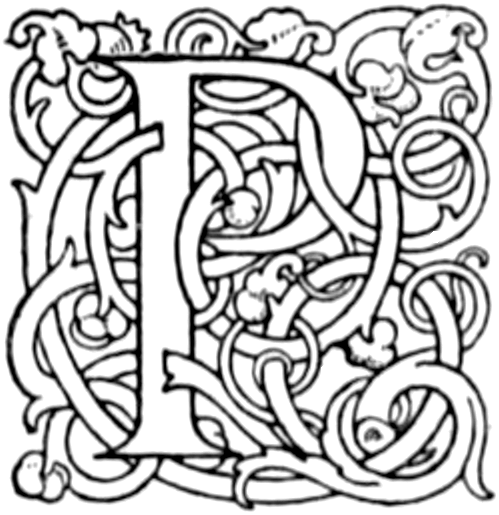
Printing was introduced into Basle before 1468, having been preceded, as in most other towns of the upper Rhine, by xylographic publications. No Basle book bears a printed date earlier than 1473, but the absence of such printed date does not prove that the introduction of printing into Basle did not take place earlier, and a note of the purchase in 1468 of a copy of St. Gregory’s Moralia in Job, printed by Berthold Rodt or Ruppel of Hanau, shows that he must have been at work at that time.
From the point of view of initial letters we will pass over Berthold Rodt and Michael Wenssler, to come to the publications of Bernard Richel, the most interesting of which are his Sachsenspiegel of 1474 and the Latin Bible, which had several editions, these appearing in 1471-75-77. In describing this work, Panzer in his Annales Typographici remarks that the woodcut initials do not occur in all the copies. In some of them their place is left blank. This is another evidence of the early printer’s reluctance to adopt printed ornaments as the definite formula, and if any further proof is necessary it will be found in the fact that even where woodcut letters are used, they are often more or less enlivened with colours.
We have already alluded to these initials in describing those of Bämler, and we have touched upon the point as to[30] who was the first to make use of the historiated S which has a certain analogy with the xylographic letter mentioned in a former chapter, from the Ars Memorandi.
There are in this Bible four different sets of letters, but of none of these is there a complete alphabet, although but few letters are wanting of the largest. The next nearly complete is the second in size.
Of the four different sets, the second in size is of a special design, different to anything we have met with. The others are pure specimens of Maiblümchen ornamentation, and amongst the best of the kind.
The three different-sized initials with human faces are the only letters in the volume with any trace of historiation.
Several Psalters were published either at the end of the fifteenth or at the beginning of the sixteenth century, of exactly the same size and general disposition, two of them with initial letters that correspond in subject although very different in treatment. These are the Psalters of Basle and Augsburg.
The latter has been dealt with in a previous chapter. The Basle Psalter was published by Furter in 1501, and the initials of the two volumes can be contrasted and compared with those that have just been dealt with.
In these letters, the fool who saith in his heart there is no God (Dixit insipiens), is represented in the D which begins the Psalm as a jester, which is not quite appropriate. In the Mallermi Bible, where there is instead of an historiated letter a little cut, the rendering is more correct. The fool is there, a man with dishevelled hair, and having every appearance of having lost his reason. The C with Absalom hanging by his hair is reproduced as an example of Basle woodcutting in Muther’s Bücherillustration.
There is amongst these initials a nondescript kind of letter which is an example of the carelessness that sometimes occurred in the workshop. It was intended for an E, but the draughtsman forgot that the drawing would be reversed in the printing, and the printer has arranged matters in the text by turning the letter upside down.
[31]
In a former essay (The Library, 1901) we gave three specimens—S, T, and V—from a book entitled Liber Decretorum sive panormia, etc. etc., as examples of Furter’s ornamentation. Letters of this alphabet occur also in an extremely rare book unknown to Hain, without date or name of printer, but undoubtedly printed at Basle, the Decreta Consilii Basiliensis. It is, however, certain that they were used in a work printed at Besançon some ten years before the Liber Decretorum, and although the fifth volume of Claudin’s Histoire de l’Imprimerie en France in which this work was to be described has not yet appeared, we have reason to believe that they are to be attributed to this town, and were to be given in the chapter in which it is mentioned.
We shall have to refer later to the frequency of the repetition in some volumes of the same initial. In the German Bibles, for instance, the different books most often begin by the word ‘Der,’ and consequently by an initial D. In a book of sermons by that extraordinarily fertile writer, Geyler von Kaisersperg, not only does every section commence with the letter D, but with the same identical initial. In this volume, the Christianliche Bilgerschaft, printed by Adam Petri in 1512, the preface begins by a floral letter of no consequence. After that the D, with a pilgrim and a cross on his shoulder, is repeated at the commencement of every chapter, possibly thirty times. The title-page has an illustration by Urs Graf with the same subject.
The last years of the fifteenth century had passed away, but the German printers, including even Ratdolt, who had returned to Augsburg from Venice, still resisted the influence of Renaissance art. In the Narrenschiff of Brandt of 1493 we can see the science of the draughtsmen excellently interpreted, but the Gothic facture still holds good against the encroachment of more modern artistic tendencies, and it is not until towards 1512 or 1513 that the new ideas begin to be more generally accepted.
But as a modern writer has said: ‘Dès que la Renaissance lumineuse a paru, traînant derrière elle l’admirable cortège de ses maîtres délicats, fils de la Grèce antique qui moulaient la[32] feuille divine de l’acanthe sur le sein d’une vierge endormie, le vieux monde s’écroula et l’ornement gothique fit place à la triomphante et poétique arabesque devenue l’aurore nouvelle.’
It is in the Ritter von Thurn, published by Furter in 1515, that we see first this influence in the form of a title by Urs Graf, copied from the Venetian original, and ornamented with dolphins and acanthus. Besides a great many titles, Urs Graf also engraved a certain number of alphabets, inspired to a great extent by those of Tacuinus de Tridino, but wanting in originality, and generally inferior to the originals. The reader can compare the two kinds of initials.
But it was the arrival of a young artist of genius that completed the revolution at Basle in the ornamentation of books. This is not the place to discuss the merit of Holbein as a painter, nor to study the long series of title-pages, borders, friezes, and printers’ marks which he composed for different printers of Basle and elsewhere.
We are concerned here only with his alphabets; and of those which bear more particularly the mark of his genius, the alphabet of Death occupies the first place.
This as a composition is a chef d’œuvre, and it was engraved on wood by an artist of the very highest merit, Hans Lützelberger.
These initials, notwithstanding their small dimensions, about twenty-four millimetres square, can well bear comparison with the larger engravings in Les Simulachres et Historiées Faces de la Mort which was to appear several years later at Lyons, in 1538, chez les frères Trechsel Soubz l’escu de Coloigne. The alphabet is composed of twenty-four letters, and several of the original proof-sheets are to be found in different Continental museums. Basle and Dresden each possess one.
The letters of this alphabet may be met with in different works published by Bebelius, such as the New Testament in Greek of 1525, that of 1531, the Galen of 1538, and particularly in the two folio volumes of Aristotle which appeared in 1532. In the five first, A to E, the body of the letter is in[33] white. In the others there is a double outline which softens their appearance and reduces their size. Each of the letters merits a separate description, but the reproductions given, as far as they go, obviate all commentary, permitting the reader to judge for himself, and to appreciate the justice of the praise that has been lavished upon them by art critics.
The subjects in the alphabet of Death are the same as in the celebrated Basle frescoes. In each of these scenes, men and women of all sorts and conditions are invited to accompany him by Death, who will take no refusal nor hear of any previous engagement; from B and C the Pope and Emperor, to V the merchant, from the Hermit full of years W, to the child in its cradle V, the Last Judgment Z, finishing the series.
The Latin alphabet (for there are some Greek initials) contains two subjects not to be found either in the frescoes or in the larger illustrations for the well-known satire, V the horseman with Death sitting behind like black care, and S the courtesan. In the Greek alphabet of inferior execution, certainly not the work of Lützelberger, of which we give three specimens, there are also two other subjects, the Σ and the Ω, a peasant and a smith.
Curiously enough, an enlarged copy of this alphabet, but of much inferior merit, was used more than ten years before by Cephaleus of Strasburg, who also had a smaller series in the same coarse engraving. Some of the letters are given for comparison.
A very curious alphabet, which although not equalling Lützelberger’s is of more than average execution, can be but little known to bibliographers, for as far as we have ascertained it only occurs in a few books published at Stella, in Spain. The scenes are selected from the Simulachres, and each letter is a complete little picture.
Besides these alphabets a certain number of Dance of Death letters are to be found in other books of Basle, of which the V, with Death on horseback with an hour-glass, will serve as an example. They are also to be met with in books of Cologne.
The Dance of Death, although intimately associated with[34] the name of Holbein, was not his creation, the subject having always been a favourite one in the Middle Ages, and having been treated also by Albert Dürer. It was the general rule to represent Death, who although a skeleton was endowed with motion, with withered muscles. In an extremely precious book, printed by Meydenbach at Mayence, Der Doten Tantz mit Figuren Clage unt Antwort schon von Allen Staten der Welt, which is illustrated with forty-one curious cuts with the same subjects as Holbein’s alphabet, Death is thus represented, and the same thing is seen in other German editions of this work of the fifteenth century, and in the numerous French editions of the Danse Macabre which appeared about the same time. Holbein, however, preferred to suppress these, and in so doing exhibited his ignorance of the anatomy of the human frame. Not only are the shoulder-blades and pelvis wrongly drawn, but the arm and thigh are represented each with two bones, whilst the fore-arm has only one.
These mistakes have frequently been pointed out before, but the fact that they furnish an argument in the controversy about Holbein’s possible sojourn in Italy seems to have been less noticed. There is no positive evidence on this point, but arguing from a change in Holbein’s style after a certain period, in which the influence of Mantegna and Leonardo da Vinci is manifest, it is said by some of his biographers that he must have studied under these masters. It must be remembered, however, that in Italy at this time there were regular schools of painting, and it is difficult to suppose the masters above-named to have been as ignorant of anatomy as must have been the case had Holbein been their pupil. If his knowledge was derived, on the contrary, from contemporary German books, his mistakes become more comprehensible.
The peasants’ alphabet, also composed of twenty-four letters but of a different character, is another of his best compositions. The museums of Basle and Dresden possess proofs of this alphabet.
The letters are to be found in the publications of Froben,[35] Cratander, and Bebelius, and Voltmann in his Bibliography of Holbein has given some specimens of them. Butsch reproduces the whole alphabet, as indeed he does several others, including that of the Dance of Death. The realistic scenes depicted in some of the letters, taken from life, are not always edifying, but this is the fault of the models rather than that of the artist.
In A, we have musicians playing on their instruments, B to K show some couples dancing, L is a love-scene, M a fight with swords, O a boy holding a girl, while another boy is cooling his ardour by throwing water over him. In P the water is being offered to a girl from a pail, V shows a bowling ground, with a game of nine-pins, W the ride home.
Our three specimens are taken not from this alphabet but from letters with similar subjects in the Galen.
Of the same size as the peasants’ is the children’s alphabet, which is treated with the same happiness and talent of observation. Holbein must have been especially fond of children, for they figure in a great many of his compositions, titles, borders, and printers’ marks, and he paints them with a grace that Lützelberger, for it is probable that he engraved them, has caught most happily. The different incidents of juvenile life, chiefly games, are rendered with great realism. Sixteen letters of this alphabet can be found in the Lactantius of Cratander and Bebelius of 1532, others in various Basle works. In a larger alphabet, children are engaged in all sorts of trades—forging, cooking, baking, building, carpentering, fishing, playing at coopering, at being bath-keepers and tanners. The W, which is rarely met with, represents a boy taking off a doctor with spectacles on his nose, whilst another is reading a book, and the third preparing some physic.
This playing at adult occupations has been taken as a subject for alphabets by other artists, the best being that of J. van Calcar, to be mentioned presently.
Holbein composed two sets of initials for Valentin Curio, whose name appears on publications which are often on philological questions.
These letters, also with children, are to be found in volumes[36] often ornamented with pictorial borders by the same hand, our reproductions, C, D, O, Q, being taken from the Strabo of Walder, and others being met with in the Enchiridion of Erasmus. From a smaller set by the same printer we select A, I, N, Q, V, X, Y, Z. The A, C, D, D, H, I, O, P, Q, V, with animals and personages, are also from the same press.
Of the many other initials we will mention the Greek capitals of the Lexicon Graeco-Latinum of René Gelli, published by Froben in 1532, found also in the Lexicon Graecum of J. Walder, 1539, in which the Δ represents a young woman struggling as she is carried off by Death. This letter is of singular beauty. This leads us to speak of the four large Greek initials which we give from the Galen of 1538, of Bebelius and Cratander, remarkable from every point of view. The Δ represents Silenus on a pig, the Θ Samson with the jaw-bone of the ass, the Π the prodigal son eating at the same trough as the swine, the Ω a child sailing on a shell.
Besides these four beautiful letters, of which there are only five proofs in the work, one at the beginning of each of the five folio volumes, the Θ occurring twice, there are numerous initials from other alphabets scattered through its pages, such as the series of which we give a Π with a child and a ram, and some specimens of the alphabet engraved on metal, of which we reproduce the F representing the Deluge, Noah’s Ark being dimly perceived through the rain, the M Jacob’s ladder, and the Q Joseph and Potiphar’s wife. These initials, although generally in very bad impressions, are to be met with in volumes of Bebelius and others, and were even copied abroad. They are to be found, for instance, in the Commentaires sur l’Histoire des Plantes printed by Jacques Gazeau in 1549.
An alphabet, of which we give the B, I, and M, is found in the Cyprianus of Froben of 1521, and in many of his later impressions. The I with the three children, the front one with the basket on his back, is generally by itself, that is to say, not with initials of the same size and character.
The O, also with three children, belongs to one of the[37] alphabets in the same style, which are no doubt imitated from Venetian models. We must mention the alphabet of the Master I F on a black ground in publications by Froben after 1518, the first letters of which represent the labours of Hercules, the following ones different scriptural and classical subjects. The B with a child in its cradle, and the E (a winged child on a sea-horse), are samples of the initials from Basle books of the time, which are possibly by Ambrose rather than Hans Holbein, as are the K and Z with children and grotesques, on a black ground with stars.
But, however interesting the work of Holbein, however varied and supple his genius, we cannot do more than give specimens of the whole. The reader who is desirous of fuller documentation can refer to Woltmann’s Holbein und seine Zeit, Leipsic, 1872; to the Bücher-Ornamentik of Butsch, or to the more complete collection of Holbein’s Initials, recently published by Heitz.
Holbein’s alphabets and initials were soon adopted by all the printers of Basle, and with few exceptions until 1545 there is nothing to note of any other artist. It was in this year, the date of Holbein’s death, that the Basle edition of Vesalius’s De Corporis humani fabrica was printed, a work that may be considered as one of the most remarkable products of the German Renaissance.
This book had been previously published at Venice, and its success was so great that it was shortly after pirated at Cologne. Vesalius, in his preface to the Basle edition, alludes to the want of international copyright, to the dishonesty, and particularly to the vandalism, of publishers who substituted detestable copies for the wonderful originals of his anatomical plates, which he would have preferred to lend them. Besides these plates, which have never been surpassed in beauty, there is the admirable frontispiece by J. van Calcar representing a lesson on anatomy, and two series of initial letters depicting children, who, with inimitable seriousness, are acting as medical consultants. In a later edition Van Calcar’s initials are replaced by a much inferior set by another hand.
[38]
—There are several interesting alphabets in the books published by Froschouer of Zurich, the most important of which is illustrated with scenes from the Bible. The two A’s, the D, the reversed D that serves as a C, and the F, are said to be by N. Manuel, the S with Jesus overturning the money-changers’ tables in the Temple by Ambrose Holbein.
[39]
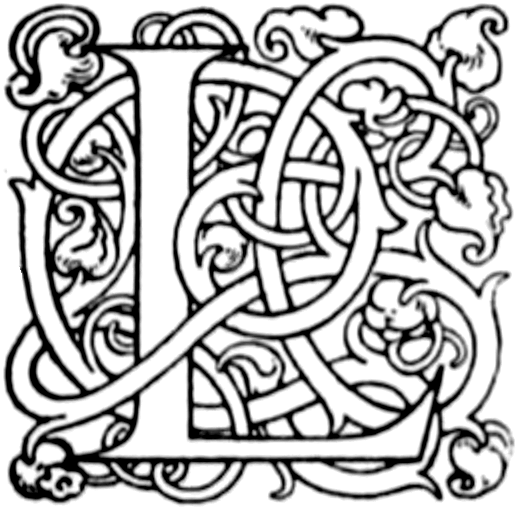
Lübeck is represented here by two printers, Lucas Brandis and Bartholomew Ghotan. In one of his recent catalogues J. Rosenthal has given the reproduction of an alphabet from a Herbal, but the letters are of very little interest, being about the same size as those of the Ulm Boccaccio and with the same kind of ornamentation. As the first letters used in the town of Ulm, and one of the first sets used by any printer, and so showing the evolution of typographical ornamentation, the Ulm initials have a certain interest, but they would not have been worth reproducing from a book dated almost twenty years later.
Lucas Brandis published two immense folios, the Rudimenta Novitiorum, the Latin original of the Mer des Hystoires, the other the History of the Jews by Josephus. The first, which appeared in 1477, is a kind of History of the World, and, like the Nuremberg Chronicle, is full of cuts representing towns, kings, philosophers, and other subjects. These, however, are much less interesting than the initials, which are the first examples of what are called passe-partouts, the central picture being removable at will and adaptable to any frame. Some of them are special to one or other volume, but most of them are to be found in both.
The most curious is perhaps the I at the beginning of the volume on page 3, of the purest manuscript character,[40] and entirely different from anything we have met with elsewhere.
The Q of the Quinta Ætas, with a battle-scene, is a favourite one for reproduction. Dibdin, who gives it in the Bibliotheca Spenceriana, considers it to be ‘the most remarkable’ of a ‘very splendid and noteworthy book,’ and it has lately been reproduced in a monograph on Lübeck printing, but a quarter only of its right size, giving no idea whatever of how it looks in the original.
On page 289 is a C with the Virgin, unfortunately too badly daubed over in the Bibliothèque Nationale copy to permit of reproduction. The interior, the Virgin and Child, is given as a cut by itself without the letter, on the verso of the same page, and in other places.
Of our three other specimens Mr. Pollard has already given one, the ‘Knight Templar,’ in an essay on the subject now reprinted in a volume called Old Picture-Books.
The Rudimenta itself was one of the great picture-books at the end of the fifteenth century, and as in the Nuremberg Chronicle, the same cuts often did duty for more than one subject. On the verso of p. 404 is a picture representing a few buildings with a windlass behind a wall, with a gate in it from which a man is emerging; and in the foreground an imposing draped figure giving directions to three little fellows, who are severally trundling a wheelbarrow, carrying a flask, and flourishing an adze. This is at the beginning of the chapter ‘Turris confusionis Babel.’ On p. 107 the same cut is the foundation of the kingdom of Assyria. On p. 117 it serves for the Constructio Treveri, and successively for Spires, Lüneburg, and Wismaria. Athenodorus and Philo Judaeus have the same cut, and the same counterfeit presentment does for Demosthenes, Pericles, Parmenides, Aristides, and Xenophon. Another series represents indifferently Crato, Cicero, Cato, Virgil, Simonides, Plotinus, Theophrastus, Menander, Paulus, and Archephilus.
The little D would appear to be a first attempt at book ornamentation, and was used at the beginning of the Leben des heil. Hieronymus by Bartholomew Ghotan in 1486.[41] Our other Lübeck initials are taken from the 1493 edition of the Meditations of St. Bridget by the same printer, in which there are altogether ten or a dozen different ornamental letters, one of them being repeated twice, another three or four times.
This book is chiefly esteemed on account of the engravings, representing the miracles of the saint, some of which are full-page size.
Like all works of the kind, it was very popular in its day and went through many editions, but the Lübeck impression is the most rare, most of the copies having been destroyed by accident before the book was published.
—Independently of accessory ornamentation, the missals printed at Bamberg by J. Sensenschmidt, either by himself or with a partner, have always been considered by bibliographers as models of beautiful letterpress. Lippmann gives amongst his reproductions of early typographical monuments a page of the Missale Olumucense with one of the large red initials used only in these Bamberg missals.
The first in which they occur is the Missale Freysingense, printed in 1487 by Sensenschmidt and Heinrich Pelgensteiner; here the initials would seem to be slightly smaller than in the succeeding volumes.
It was in the following year that Sensenschmidt published the Missale Olumucense,[19] in 1489 the Liber Missalis Bambergensis. Mr. Weale[20] mentions two other editions from this press in the two following years. The letters reproduced here were taken from the copy in the Bibliothèque Nationale, in which there are ten of these special red initials, beginning with the A of the opening line of the mass (Ad te Dominum), and comprising one of each of the following: B, C, D, E, P, R, S, and two different varieties of the T. There is besides a large historiated T, in black, representing the sacrifice of Abraham, at the commencement of the Canon of the Mass (Te igitur). This is the only volume that we have been able[42] to examine personally, but we have seen a G in a collection of initials with a different text on the verso, which probably comes from one of the other editions.
[19] See also in Burger, Monumenta Germaniae et Italiae Typographica, Deutsche und Italiänische Inkunabeln.
[20] Bibliotheca Liturgica.
Of other Bamberg missals with other ornamental letters, the most interesting is that of Johann Pfeyl, the initials being entirely different in style to any that we have seen elsewhere. The colophon has it: ‘Missale speciale divinorum officiorum secundum chorum alme et imperialis ecclesie Bambergensis,’ and states that it was printed in 1506 ‘by the industry and exact diligence of that “disert” and expert master Johann Pfeyl.’ In the splendid full-page engraving on vellum, which in many missals is the chief attraction to collectors, there is a view in the distance of the town of Bamberg.
The initials are so curious that we have reproduced them all. One or two are repeated; the G, representing Jehovah crowning a martyr, serves for three different saints. The somewhat smaller linear T, of the Canon of the Mass, is a reduced copy of the corresponding initial in the Sensenschmidt missals.
[43]
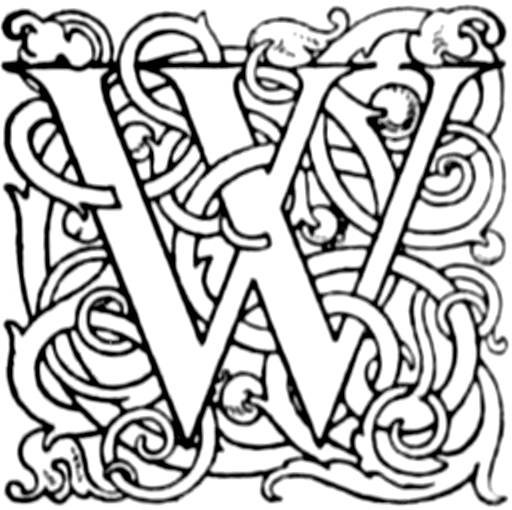
With Knoblochtzer, Schott, and Prusz, the first commencing in 1477, Grüninger and Hupfuff at the end of the fifteenth century, we have printers who made a liberal use of initials. Knoblochtzer has been thoroughly explored by MM. Schorbach and Spirgatis, and a monograph upon Strasburg book-illustration has been published by Dr. Kristeller. Although many of our specimens were known to these bibliographers, a few of them, and these by no means the least interesting, have escaped their observation.
One of them, the splendid A representing Jesus washing the feet of a disciple, is what one might expect to find at the beginning of a thirteenth- or fourteenth-century manuscript, and the artist in cutting it has managed to make it retain this appearance.
It is to be found in an undated volume without name of printer, but identified as having been printed by Knoblochtzer in 1478, and entitled Thomas (Ebendorfer) de Haselpach: Sermones dominicales super Epistolas Pauli. This A at the beginning of the first volume is the only typographical ornament in the book, and seems to have been entirely unknown to either of the Strasburg bibliographers.
The D, with two armed figures and the two coats of arms, is given by MM. Schorbach and Spirgatis as the earliest specimen of Strasburg ornamentation. It occurs for the first[44] time at the beginning of Knoblochtzer’s Burgundische Historie, in which there is no other woodcut. It represents the Duke René of Lothringen and Charles the Fearless of Burgundy with their shields at their feet, and was cut specially for the History of Burgundy, although it occurs several times also in the Schachzabelbuch of Jacobus de Cessolis. The latter volume contains also the large S, with two personages, one in a fool’s cap, which also ornaments the first page of the Dyalogus Salomonis et Marcolfi.
Another handsome initial from the Knoblochtzer press, and especially well engraved, is the I, with an angel with outspread wings above, Samson forcing open the lion’s mouth below, and branching ornaments on either side. It is to be found on the first page of the Belial of 1483, and several times in the Leben der Heiligen Drei Könige; also in the chess-book of De Cessolis already mentioned.
In the last two volumes there are eleven of the twelve initials representing the months of the year, which are to be found complete in a Deutscher Kalender, having the form of a little volume. There is a calendar printed probably at Nuremberg, on a single sheet, with the whole of the alphabet, but the letter for January is replaced by one having the Nativity as its subject, the general disposition being much the same as in the initials of Geneva or of Bamberg similarly historiated. These calendar letters are to be met with in a great many Strasburg publications, as, for example, in the Tractatus clarissimi philosophi et medici Matheoli perusini de memoria augēda per regulas et medicinas. They also occur in the De valore et utilitate Missarū pro defuntis celebratarū per sacre theologie professorē Jacobū ordinis cartusiensis edita. This little tract, which contains amongst other initials the calendar D representing a man trimming the vines, is dated 1493, and as Knoblochtzer ceased to print in 1485, making over his material to Mathias Hupfuff, it is to the latter that it must be attributed.
The two P’s, one with a doctor, the smaller with a king, are at the beginning, the first of a De secretis mulierum, the second of a tract entitled De ritu et moribus Indorum. The[45] letter itself, in the smaller initial, is entirely white, but in the copy from which it was reproduced it is painted in blue and red.
The anthropomorphic letters are to be found in many of the publications both of Knoblochtzer, Schott, and others. These letters are reduced copies of a very celebrated alphabet known as the alphabet of the master E. S. of 1464, specimens of which are given in several works on early engraving. The British Museum has a somewhat similar alphabet, but with the personages in different attitudes, printed originally au frotton. Some letters of this were given by Jackson, and the whole was reproduced a few years since by the trustees of the Museum.[21] One of our reproductions, the one with a man holding up a dog by the tail, is from the Vier und Zwanzig Gulden Harpfen. The D with a saint is the only initial in an Albertus Magnus of Knoblochtzer; the three others were reproduced from two impressions of Hupfuff, a Melusine and a Boethius of 1500. In the latter is an I of this alphabet which we have not seen elsewhere, but of which the impression is slightly defective.[22]
[21] Grotesque Alphabet of 1464, with an Introduction by Campbell Dodgson.
[22] The six other initials, the M with two dragons, the S with the letters P, A, and a fool’s head with cap and bells, and the four smaller ones, are from different publications of Knoblochtzer.
The M and the P, the Crucifixion and the Nativity, are also taken from a work without date or name of printer, and have hitherto remained undescribed, as far as we know. The work is entitled Commentarius Sancti Johannis Episcopi Constantinopolitani cognomento Crisostomi in epistolam Sancti Pauli Apostoli ad Hebreos. The letters would appear to belong to the same alphabet as the C, representing saints and others being put to the torture, which is used by Schott sometimes as a D. This latter is to be found twice in a rare book, the Scriptum in primum librum Sentenciarum Venerabilis inceptoris fratris Guilhelmi de Ockam, dated 1483, but without printer’s name, and it occurs as a D in an undated Secreta of Aristotle.
The three letters, comprising amongst them the N with[46] the rabbit, and the O with a fool, are from a Plenarium of which we have only seen a fragment, without printer’s name or date, but said to be of Strasburg.
The rabbit occurs again in the Plenarium of Urach of 1481, with floral letters somewhat larger than those given here, and also in the Stella Meschia printed at Esslingen, the first book published with Hebrew characters. It has also two full-page illustrations.
The six large historiated initials which follow are taken from a Psalter without date or printer’s name. Van Praet in his catalogue of books printed upon vellum belonging to the King’s Library, says that it ‘comes from a German Press.’
Mr. Weale attributes it to Basle, and it is interesting to compare these initials with those which illustrate Furter’s Psalter of 1501-3. It would seem, however, that it is to be attributed to J. Prusz, and that it was printed in 1499 or 1500.
Two of our reproductions are from the copy in the Bibliothèque Nationale. For the others, which are defective in this copy, we are indebted to M. Jacques Rosenthal, who considers that the volume was printed in 1480. In our own opinion the later date is more probable.
The four initials, of uniform size and style, A, C, E, and S, the E with the Nativity being certainly one of the prettiest we have seen, have every appearance of being taken from a missal. We cannot affirm for certain that they have no such origin, but the book from which they were reproduced is an edition of Pogge, printed by Knoblouch in 1513. Two of them, the E with the Nativity and another, occur in an Interpretatio Sequentiarum of the same year. Other printers used them, however, before this. We are unable to give exact references for the whole series, but the E had served already in a volume of sermons of Geyler von Kaisersperg, published by Matthias Schurer in 1505. In this, with the exception of a floral V on the second page, it is the only woodcut initial.
There is a Psalter of Knoblouch of 1513 of the same size as those of Augsburg, Basle—and Metz—Psalterium cum[47] apparatu vulgari firmiter appresso. Like the Metz Psalter, it has an initial on the title, this being ornamented with a moth and dragon-fly and bunches of leaves and flowers. Below is a cut of David with his harp, the Almighty looking down, and a German castle in the background. There are two strips of border, one on each side of the cut, but descending lower, one of a conventional foliated pattern, the other with strawberry leaves, flowers, and fruit. The initial B is of the same design; the other letters have dragon-flies or butterflies, a D has a geometrical pattern something like the Maiblümchen.
Grüninger began to decorate his publications with ornamental letters at the end of the last decade of the fifteenth century. They are of a very special kind, and the only other printer who occasionally used them was Quentell of Cologne.[23] Some of them occur in a small folio by Braunschweig—Liber Pestilentialis de venenis epidemie, 1500, with pictures on nearly every page, manufactured according to the system he adopts in many of his illustrated books of bringing three factors of the picture together, and so obtaining variety with an economy of engraving. The centre of a picture on one page, for instance, will be found a few pages later with the two outer thirds replaced by different blocks, the variety introduced into the general appearance being sufficient for it to pass as a different composition. A few pages later, it is the centre that is replaced with the same effect. Such pictures are to be seen in the different editions of Braunschweig’s De Cyrurgia, in which there are only insignificant nonhistoriated initials.
[23] An M with a bear’s tooth, and two others, a D representing a saint sitting on the desert with what looks like a monkey (perhaps St. Roch and his dog), and an O with an angel with large wings, are to be found in the Tractatus Consultatorii Venerandi Magistri Henrici de Gorychum, printed by Quentell, ‘anno supra Jubileum tertio.’ These initials are generally too smudgy to be copied.
In this same book, the chapter ‘De Observatione Festorum’ commences with the O with a fool’s head.
Grüninger’s finest picture-book is probably his splendid edition of Virgil, with engravings by Brandt, the author of the Ship of Fools. In this work he makes use of nearly all the letters of this smaller historiated alphabet, which are also[48] found afterwards constantly in his impressions, and particularly in the publications of the reformer, Geyler von Kaisersperg. In these, many of the initials, as is only appropriate, represent religious subjects—David and his harp, St. Sebastian full of arrows, and in a slightly different style, St. Laurence carrying his own gridiron. Two of them are framed. One of these represents Adam and Eve; the other, a D with a charming little love-scene, would seem frequently to have excited the reprobation of devout readers, for in three different works we have found this initial defaced almost beyond recognition. A larger initial of the unframed series, representing a swordsman, we have only met with in the 1501 edition of Boethius, De Philosophico consolatu sive de consolatione Philosophiae, etc., with commentaries of St. Thomas.
Grüninger’s largest letters would appear to have been reserved exclusively for Geyler’s publications. We have seen them in a great many of his books of sermons and nowhere else. They are most numerous in his Evangelia, where there are between thirty and forty different varieties, but even then they do not constitute a complete alphabet, as Geyler’s sermons most often commence with the word der or die, the letter D occurring as frequently as all the others together, and several other letters much more often than the remainder.
Geyler and Grüninger were evidently made to write and publish for one another, for whilst the preacher often loses the thread of his subject in amusing but not always relevant anecdotes, the printer would seem to have set up his copy much on the same principle, embellishing the sermons with illustrations, many of which, inserted apparently at haphazard, are entirely foreign to the subject. In one of these collections, for instance, there are a number of cuts from the Virgil.[24]
[24] Geyler von Kaisersperg was one of the most curious figures of the fifteenth century, a precursor of Luther, a ‘free preacher,’ and for the first twenty years of the sixteenth century his sermons were published by nearly every printer in Strasburg, as well as by many others in Basle and other towns.
Luther has a more extensive bibliography, but with Geyler each item means a volume, whereas the sermons of the great reformer were published as a rule separately, and as soon as they were preached. Like the celebrated Maillard, he did not hesitate to denounce the selfishness of the rich, the extravagance and coquetry of women, and the licentiousness and corruption of the clergy.
From a documentary point of view, Geyler’s sermons are most interesting, for in reprobating the follies of his time he gives a number of details concerning the manners of the period, which would be difficult to find elsewhere. On the verso, for instance, of the initial B, with David and his harp, there is a fragment of one of his discourses on ‘bathing,’ which gives a good idea of ecclesiastical proprieties at the end of the fifteenth century.
‘Is it,’ says Geyler, ‘allowable, balnea intrare, on Sunday?’
‘Dico,’ he replies, that ‘pro voluptate’ and ‘pro luxuria,’ it is forbidden at all times, but it is allowed on necessity.
By ‘voluptas’ he says, he understands ‘superfluous delectation,’ which is a sin but not mortal. By ‘necessity,’ honest and opportune recreation. He next asks, ‘Liceat clericis vel religiosis balnea intrare?’ Again he replies, ‘Dico, yes, upon necessity’; but necessity not only means infirmity, but also any lawful ‘refocillatio’ of the body. The apostle John, he says, ‘ingressus est balnea gratia lavandi.’ The first line of his tertio starts with the question as to whether it was licit to take a bath with a Jew, but here the cutting ends.
It must be remembered that in the fifteenth century, hot air and vapour baths were most popular, but they had anything but a good reputation. It is probable that the prohibitions of Geyler were directed rather against the place of evil resort, than, as would at first seem, against cleanliness.
But the most amusing of Geyler’s publications is a series of sermons, ‘Navicula sive speculum Fatuorum,’ an imitation of Brandt’s celebrated satire on Fools, which had recently appeared. In the earliest edition, each section begins with an initial representing a fool’s cap with large bells. In that before us, each sermon is preceded by an apposite illustration from the work in question, but there are no ornamental initials. The first concerns foolish aspirants for mitres and birettes. The second, which is illustrated by the well-known cut representing a spectacled fool in his library—in the original, the fool who collects books he does not read—here deals with bad judges and senators.
The best section, and that giving the best idea of Geyler’s manner, is that which treats of the sick fool. Beginning with the quotation ‘Stultorum infinitus est numerus,’ the picture shows the disobedient patient in bed, in the act of kicking over a table, whilst the nurse is looking on in astonishment, and the doctor seems to be reflecting as to what should be done under the circumstances.
These fools, says Geyler, are foolish in the first place because they despise medicine: ‘sunt qui medicinam prorsus contemnunt et abjiciunt’; ‘clearly fools,’ says Geyler, ‘stulti plane’! ‘Nescientes quia scriptum est, eccles. xxxviii., Altissimus creavit de terra medicinam, et vir prudens non horrebit eam. Notate verba—signate mysteria. Vir prudens non horrebit eam! Non horruit eam beatus Augustinus de quo legitur: quod egrotante eo neminem admiserat, nisi medicos.’
It will be too long to quote the whole sermon, but Geyler has a word to say about those fools, ‘sunt quædam fatuelle,’ who, out of curiosity, tried to catch their doctors at fault, ‘quas sola curiositas impellit et titillat ad explorandum peritiam medici.’ But they catch nothing but their own purses, and it is the doctor who is most tickled, for he pockets the fee. ‘Tales se decipiunt et bursam: quod medicus accipit pecuniam.’
He tells here the tale, so often related since, of the patient who in answer to the doctor’s question as to what was the matter with him—where he was in pain—how long he had been ill, ‘respondit nescio,’ and again and again, ‘respondit nescio.’
‘Bene,’ replied the doctor; ‘under these circumstances, this is my prescription: “Recipe nescio quid: repone nescio ubi: et sanaberis nescio quando.”’ ‘Magna stultitia,’ remarks Geyler, ‘nolle obedire medico quem queris: aut non quesivisses, et sic pecunie pepercisses.’
The fifth and sixth follies are to seek help from empirics, magicians, and Jews, which is expressly forbidden (if any one else is available) by the Decretals.
[49]
The large series, two specimens of which are given, invariably deals with Biblical subjects. The letters are generally attributed to Hans Schäufelein.
Besides the initials already enumerated, Grüninger has a few historiated letters on a black ground, of intermediate size and different complete foliated or floral alphabets, all of them uniformly uninteresting.
—The large S, with a personage in a doctoral bonnet, is taken from an Albertus Magnus, Secreta mulierum[50] et virorum, in the Paris Bibliothèque Nationale (Res. 826), described in Mlle. Pellechet’s Catalogue des Incunables under No. 372 as being without typographical indications. It also occurs at the commencement of a Physiognomia of Michael Scotus, which is stated by Mr. Proctor to have been printed by M. Greyff at Reutlingen, the date being probably 1482. We have not seen this volume, but thanks to the courtesy of Professor Ferguson of Glasgow, who sent a photograph of the initial, we have found that it is identically the same.
The reproduction does not render exactly the peculiar impression of the ink, which gives the initial the appearance of having been drawn in fusain. Another initial, the P with the Pope, is taken from a volume printed at Reutlingen by Greyff—the De ritu et Moribus Indorum—which has exactly the same typographical disposition as the edition printed by Knoblochtzer at Strasburg, a P at the beginning with the Pope, and a border on the margin of the front page.
It may be noted here that in previous chapters no attempt has been made to distinguish between metal-cut initials and those cut on wood. Many printers, such as Grüninger, Gering, and Rembolt, etc., undoubtedly used soft metal, but this was cut in the same way as wood, the blocks were inked in the same manner, and printed in the same way with the type, so that for all practical purposes they belong to the same class.
[51]
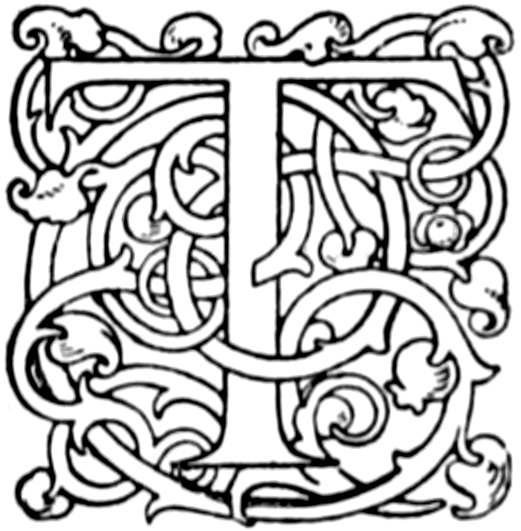
The early printers at Cologne do not appear to have made much use of woodcut initials, the first known to us being the R of a missal by H. Quentell of 1494. This, although cut somewhat roughly, shows considerable vigour. It is highly probable that the splendid P with the Virgin and Child and grotesque profiles in two of the corners is of the same or earlier date. The book in which it occurs is an undated Donatus, which J. Rosenthal, to whom the volume was submitted, thinks was printed by H. Quentell towards the end of the fifteenth century. It looks at first sight as if a missal or Psalter letter had been used, as was so often the case at the time, because it happened to be in stock, but the Donatus, as has been said, often began with an initial of the kind. We have not been able to trace this P to any other press or publication.
The D with a fool’s head in cap and bells is to be found frequently in Quentell’s books. The specimen from which it was copied is in a book already mentioned, the Tractatus Consultatorii Venerandi Magistri Henrici de Gorychum, printed anno supra Jubileum tertio. It is to be found at the beginning of the chapter, De observatione Festorum.
On the title-page of a treatise called Quodlibeta, by St. Thomas Aquinas, is a curious black U. This is also by Quentell.
[52]
Another class book, a Latin verse primer, entitled Sequentiarum et hymnorum Expositio, etc. etc., printed by Herman Bumgart de Ketwyck in 1501, has the strangest initials that can be conceived. The book was a very well known one, and other editions exist with a similar cut on the title-page, representing a master at his desk surrounded by scholars.
But Cologne, like other German towns, was now to feel the influence of the Renaissance, and adopt for book ornamentation such artists as Albert Dürer, Holbein, and Anton von Worms. In the case of Holbein, such ornamental letters as appeared in Cologne books were copied from models that had been used previously at Basle, in the same way that the letters of other artists were copied from books of Hagenau and elsewhere, but Dürer and Anton von Worms’s designs were printed first in works of Cologne.
Of the initials attributed to Albert Dürer, the finest are those comprising the alphabet used by Eucharius Hirtzhorn, who latinised his name to Cervicornus. These initials, which are the largest of their kind, represent children playing and romping sometimes with animals, such as horses and monkeys, and make up a very remarkable set. It is highly probable that Albert Dürer, as is generally admitted, was the designer of this alphabet, but there is no positive proof, and a writer on this special question in Le Livre, M. Glucq, gives it as his opinion that these letters were designed by Hans Burgkmair, and instances the treatment of the horses’ heads in borders by the latter as being identical with the heads in some of the letters.
This alphabet was often copied by printers of other towns, particularly Lyons, and by Hubert de Crooce of Bruges, but the copies are always greatly inferior in execution, and can be distinguished also by having a wavy linear, or criblé, groundwork instead of a black one.
The reader can compare the initials given here, which comprise the most interesting of the set, with those by H. Weiditz, described in the chapter on Augsburg. For comparison between the Cervicorn initials and the borders alluded to, reference can be made to the Bücherornamentik of Butsch.
[53]
The smallest of the Cologne children’s alphabets is to be found almost complete in different works by J. Gymnicus, and was designed by the painter Anton von Worms. The C with a child playing with a snake is an example. The D and O, from a somewhat larger alphabet, are principally found in the works of Melchior Novesianus, as are also those imitated from Holbein’s alphabet of Death. The largest Q, the S with the bishop and the symbols of the Apostles in the corners, also by Anton von Worms, and the Q with the death’s head, all come from volumes by Quentell. The three smallest letters belong to an alphabet used by Melchior Novesianus.
—Genevan incunabula are of the very greatest rarity, and very few initials of that town are mentioned by bibliographers. Of very large letters the most curious are two of the calligraphic L’s that are so popular on the title-pages of French impressions, and the larger of which is evidently inspired by a Paris or Lyons L of the same general design. Our reproduction comes from the Doctrinal de Sapience, printed in 1493, no doubt by Bellot, as the book has two impressions of the C of his alphabet. This composition is greatly superior to the French original, known as the January and May initial, and if the artist has intended to represent innocence and cunning, he has succeeded to perfection. Compared with it, that which may be found on the title-page of Verard’s edition of the Doctrinal de Sapience and in many other works, is insipid.
The letter with a hooded dog, or perhaps a monkey holding a book, with a clerk below, is accompanied on the title-page by a border representing the birth of Eve.
As regards the volume itself, which is entitled Les Fleurs et Manières des Temps passés, it is without date or printer’s name, but at the beginning of the front page after the title is a Bellot A, whilst on the verso of the title is the mark of Loys M. Cruse.
A still earlier Doctrinal de Sapience of 1488, also without printer’s name or date, has a C on the second page of comparatively[54] little interest, which has been reproduced by Humphreys in his History of Printing. The C reproduced here is at the beginning of the fourth page. A Kalendrier des Bergers of J. Bellot, 1497, has a Q with a cock in the Lyons style, a curious U, and the P of his fine alphabet.
Initials are occasionally met with in which the printer’s mark is worked into the design, as, for instance, a D of Kobel of Oppenheim. In a treatise on the right way of preaching, by that sacratissimus doctor of the Christian Church, St. Thomas Aquinas, L. M. Cruse of Geneva in 1485 uses capitals which he embellishes with his own initials. Sorg and some Strasburg printers have ornamental letters with initials on them, but not corresponding to their own names—most likely to those of the artists.
Better known than the large historiated letters just described is the alphabet of which we give the M, the N, and the T. These letters occur in many of Bellot’s publications, but in the Dialogus Creaturarum it is nearly complete.
This is one of the most decorative alphabets of the time, but good proofs of the Wagner alphabet of Nuremberg, in which the same design had already been used, are even more effective—compare this M, N, or T with the Wagner E. Unfortunately, very few of the latter, which are on a black ground, print well. The Avignon initials given further on are also of this pine-cone pattern, as are those also in the Psalterium Virginis Marie of Alanus de Rupe, printed, it is stated, in the most Christian kingdom of Sweden, cum initialibus ligno incisis, in 1498. It is quite possible that the later printers copied from Wagner, but the design they all use is one that is frequently met with in old manuscripts, and, like most other fundamental patterns, there is no doubt that this was its origin.
Our last Geneva specimens are taken from the very rare missal printed by Bellot. The M is from the title-page. The other initials are somewhat in the style of the Lyons Catalogus Sanctorum, but they are even more like those of a Troyes missal printed by Lecoq.
[55]
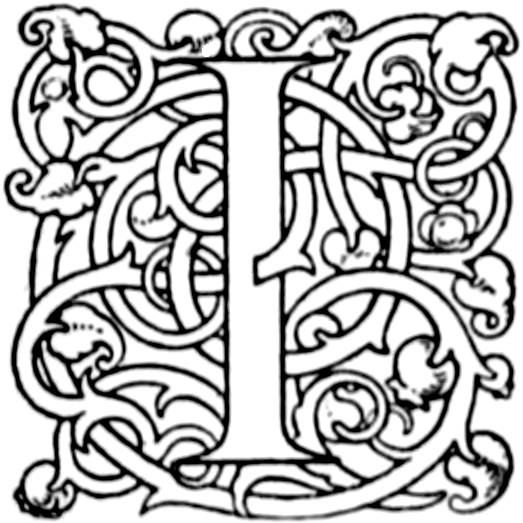
It was at Subiaco, not far from Rome, that printing was first introduced by the Germans, Conrad Sweynheim and Arnold Pannartz, who commenced operations most probably in 1464, their first book being a Donatus. The second was a Lactantius, the earliest book in which legible Greek characters were used, for those which appeared in a few words in the Offices of Cicero, printed at Mayence in the same year, were mingled with Roman letters, and with so many errors, that it must have needed a clever reader to guess the meaning. The Lactantius was finished on the 25th of October 1465, ‘in venerabili Monasterio Sublacensi.’
After Subiaco, presses were established successively in different towns of Italy, first at Rome, where Ulric Han or Hahn of Ingoldstadt, in Bavaria (Gallus in the latinised form of the name), commenced operations in 1467. Sweynheim and Pannartz also removed to Rome at that date, where they printed for about ten years, dying respectively in 1477 and 1478.
The next comers were George Lauer of Würtzburg and Giovanni Filippo di Lignamine, whose celebrated Cronica Summorum Pontificum imperatorumque contains interesting information about the first printers of Mayence, Strasburg, and Rome.
But books with initials printed at Rome before the end of[56] the fifteenth century are not common, and even when met with, if we except some handsome ones used in some of their books in 1470 by Sweynheim and Pannartz, the ornamental letters of this town are relatively of but little interest.
It was at Venice that this branch of typographical art was to reach its highest perfection, especially in the use of beautiful initials, and was to make its impressions renowned throughout the world and sought after by collectors in future days.
John of Spire celebrates his arrival on the shores of the Adriatic in the following lines, which are to be found at the end of his first production in that town, The Letters of Cicero:—
MCCCCLXVIII.’
John of Spire was succeeded by his brother Vindelin.
It was in 1470 that the first book appeared with the name of Nicolas Jenson—the Preparatio Evangelica of Eusebius—and this was followed soon by other works which are justly considered as chefs-d’œuvre of typographical art.
According to a story which has passed current for a century and a half, though its authority is now questioned, Jenson had been formerly an engraver at the Mint of Tours, and had been sent to Germany by the French king to investigate the truth about the discovery of Gutenberg. On his return, Charles VII. having died, Jenson met with no encouragement from his successor, Louis XI., and decided to go to Venice. Here he published books by himself for ten years, taking as a partner in 1480, the year before his death, John of Cologne, who had come to Venice about the same time as himself.
Even in his own days Jenson was justly celebrated, Andrea Torresano stating with pride in the colophon of the Lectura in I. et II. Decretalium that he had printed it ‘inclytis famosisque characteribus optime (sic) quondam in[57] hac parte magistri Nicolai Jenson gallici quo nihil prestantius, nihil melius, nihil dignius.’
This Andrea Torresano was the head of the new firm ‘J. de Colonia, N. Jenson, sociorumque,’ and he afterwards married his daughter to Aldus Manutius.
So great was the success of printing in Venice at this period, that more than one hundred and fifty presses were established during the last thirty years of the fifteenth century, and upwards of fifty were in full work in the year 1500.
Aldus had come to Venice with the intention of publishing works in Greek, but this did not prevent him printing in Latin and Italian. His most famous book in the latter language was the Hypnerotomachia Poliphili, which besides the most beautiful woodcuts that have ever been printed contains also some ornamental initials generally considered to be in the best taste. An edition of Aristophanes from the same press also contains large interlaced letters, which are given by Ongania.
With reference to these initials it is to be remarked that, although in the best taste and admirably suitable to the work they embellish, they are less interesting when seen by themselves, that is to say independently of the text, than many others.
Our earliest specimens are taken from the works of Ratdolt, whose books are also renowned for their beautiful borders, which in some cases match in style the initials that accompany them. This style is even more effective in the border than in the letters, as can be seen by reference to his Appianus of 1478, the first page of which is reproduced in Butsch’s Bücherornamentik.
The three outline initials, much more artistic in our opinion than the interlacing letters of Aldus, are from Ratdolt’s first alphabet in the Calendarium of J. de Monteregio of 1476. The border of this book is frequently mentioned in the earlier monographs upon the first printers as being composed literis florentibus, the initials being of the same design. It is supposed by Passavant that these letters were designed by Ratdolt’s partner, Bernard Maler or Pictor, i.e. Bernard the painter, and executed by another German engraver.
[58]
Ongania, in his work on Venetian printing,[25] has also reproduced four of these initials, the whole alphabet, as far as it is complete, in Ratdolt’s impressions, being given in a monograph on Ratdolt by Mr. Redgrave.[26] Later on we find this printer preferring larger sized initials with a white pattern on a black ground, smaller letters of the same general design being used in some volumes. The later publications being also more frequently met with, these large black initials are also more commonly known and are more characteristic of Ratdolt’s work than the others. They became one of the recognised types for Venetian typography, and were imitated more or less by other Venice printers, in the same way that the Maiblümchen pattern was adopted as one of the most suitable for the early German press.
[25] L’art de l’Imprimerie à Venise.
[26] ‘Erhard Ratdolt and his Work in Venice’—London Bibliographical Society.
In a volume by Jacopo Publicio called the Oratoriae artis epitomata; ars memoriae, ars epistolandi, and which has numerous other cuts, there is a curious alphabet in which each initial is represented by an emblem serving to fix the letter on the memory. As far, however, as we know, this alphabet, which is engraved on one block, consists of specimens of letters useful in mnemonics, but which have never served in books as ornamental initials. They are only mentioned here as a typographical curiosity.
Subsequent printers adopted a design with white leaves on a black ground, the white ornament standing out very sharply, and often with an exceedingly brilliant effect. In other initials, in white on a black ground, we have children playing at all sorts of games by themselves or with dogs, monkeys, dragons, lizards, and dolphins; sometimes there is a large bird looking like a wild goose. In some cases there is a combination of the two last mentioned compositions, such as a child playing with a dog, with a foliated background. There is a very effective F of this kind, and an O with a child making a dog sit up and beg, in the Epigrammata of J. B. Cantalycius, printed by Matteo Capcasa.
The brothers De Gregoriis used various kinds of initials.[59] The large A and V are from their Herodotus, the first page of which is ornamented with a magnificent border, which has often been reproduced. Several other initials in different styles are from books by these printers, amongst others the large outline P and the smaller A and E. An interesting alphabet, most of the letters of which represent children playing with different kinds of animals, is taken from a small treatise on Geography by Zacharius Lilius, entitled Orbis breviarium, etc., printed at this press.
Sessa, whose mark consists of a cat with a mouse in her mouth on a crowned shield with the initials I B S, has some of the letters just described.
Ongania gives amongst others, as coming first from a 1496 edition of Marco Polo’s De le Maravigliose cose del mondo, the D with two children and a dog, the P with the children and bird, and a P with the portrait of a man, here printed in red, but which is found elsewhere, like all the other letters, printed in black. The very small initials, mostly with heads, the H with a rabbit and the T with rabbits dancing, are also to be found in Sessa’s impressions.
Several very large letters, two more particularly, the M and the S, were used by Bernardinus Benalius and Matteus Capcasa in 1498, and often printed in red. They were afterwards adopted by the Paris printer Josse Bade.
Of the linear initials used in the missals, the beautiful B representing Mary Regina cœlorum amongst others, appeared for the first time in the Missale Romanum of 1499 by George Arrivabene. Our reproductions are taken from missals and breviaries of Lucantonio di Giunta, himself especially a printer of music, but who edited a great many liturgical works.
The largest in size of all our initials are from another missal of Giunta, the Missale Vallisumbrose of 1503. The first letter of this series has been given by Mr. Pollard in an essay on ‘Pictorial Initials.’
An alphabet of large letters of an interlacing pattern is to be met with in several works, first in Plutarch’s Lives, translated by Guarino of Verona and published by Melchior[60] Sessa and Petrus de Ravenis in 1505. They have been described as of great elegance and finished beauty, but they are as a rule badly printed and do not look well in reproduction, as can be seen by reference to Ongania.
The alphabet of children already mentioned is more or less completed by letters from different works published by Tacuinus de Tridino, amongst others the Euclid of 1517 and several earlier volumes. The C with a child on a dolphin, the L with one child riding another, and the N with children and dog; the grotesque O, the P also with children and a dragon, are one from the 1517 Euclid, others from a Justinian, the remainder from works of Horace by the same printer.
The C with a child on the back of a horse is first met with in a Practica of Serapion by Bonetus Locatellus, ‘mandato Octaviani Scoti,’ the outlines C, P, and S with children or amorini having the same origin.
An alphabet, remarkable from the fact that it is generally found complete, by Bernardino Vitali, serves as a rule in publications of Sessa to initial the index. It is to be found serving this purpose at the beginning of this printer’s edition of the Lives of Plutarch and also for the index to the works of Pliny.
Pliny’s Natural History was a popular book at this time, and two editions of it have the large interlaced initials used in the Plutarch. In a third, in Italian, by Sessa and Petrus de Ravenna in 1516, there are a number of ornamental letters with children: a P, with child and dragon, precedes the eighth book; an S, with a child above and a bird below, the tenth and thirty-second books; the thirty-first having what at first appears to be the same, but which is really a copy. The letters C, G, R, N are also with children, either by themselves or with birds or dogs. As an example of the indifference to appearances, a historiated A is used upside down as a V, in Tacuinus de Tridino’s Homer of 1503. A fine V with children does duty as an A, and an E all the way through as an F, in the Justin of 1508 of the same printer.
The L with a satyr, and the very handsome G, are from[61] the same book. The P with a child and bird is repeated eleven times in this volume, and from the dilapidated condition the block is its chief disfigurement. In the Horace of Guglielmo Fonteneto Monteserrati, we find it at the beginning of the ode ‘Phoebe silvarumque potens Diana,’ but the bird is changed into what is apparently a goose. The children have older faces, and there is a slight difference in the ornament.
In their original condition, these children initials are most decorative, but many of the copies are greatly inferior. These are to be found not only in Venetian impressions by other printers, but also in some books printed in provincial towns, and they evidently inspired many of the children’s alphabets that were used afterwards in Basle, Cologne, Hagenau, and one or two initials we have given of Paris.
At Turin some of them were used in the Epistole Heroidum of Ovid published by F. Silva in 1510, in which we find that the L with the satyr, the P with a bird, the T with children playing with a skipping rope, an M with an eagle, the N with a child and dolphin, and the G, but of much coarser execution than the original. From a documentary point of view these letters are perhaps not so interesting as the alphabet used currently half a century later by Giolito and other Venetian printers, in which the games then in vogue are represented in linear engraving upon a white ground. But the introduction of animals in the earlier alphabet is not entirely fanciful, and the classical student will no doubt be able to understand many of the allusions.
The A, for instance, with a boy riding upon the back of a dolphin, is a case in point and no doubt refers to the tale of Arion told by Herodotus, and more fully by Ovid in the Fasti.[27]
[27] In the eighth chapter of his ninth book, Pliny speaks of a dolphin that had conceived a wonderful affection for the child of a poor man. At whatever hour of the day he might happen to be called by the boy, he would instantly fly to the surface, and sportively taking him up on his back, he would carry him over a wide expanse of sea to the school at Puteoli, and in like manner bring him back again. Other instances of the same kind are related, which he says give an air of credibility to the one that is told of Arion.
[62]
We give a somewhat numerous selection from a work which has hitherto remained but little known to bibliographers, by a printer whose publications are far from common, the Vita di Sancti Padri vulgare historiada of Otino da Pavia de la Luna, 1501. In an earlier edition, also very rare, the initials are insignificant, and the chief interest of the volume is in the little cuts which precede the lives of the different saints. The edition from which our initials are taken is on the contrary a perfect storehouse of interesting ornamental letters. At the commencement of each book there is a half-page engraving representing an incident in the life of the first saint whose history follows, and this is surrounded by a handsome ornamental border which sometimes surrounds the whole page. Each book commences by an initial of larger size than the others. Some of these are given—the C with a saint holding a bag to another, the D with a dog, the L with four ecclesiastics, and two U’s, one with a monk tempted of the devil in the form of a beautiful woman. The smaller letters, of which there are sometimes as many as three or four on a single page, also represent incidents in the lives of the different saints, the devil being often the subject of the picture. The title-page has on it the mark of Otino da Pavia de la Luna in black and red. Some of the initials of this volume afterwards found their way into the possession of Bernardino Vitali, who used them in an Omiliario quadragesimale, published in 1518. We have not seen this volume, but Ongania gives reproductions of its principal typographical ornaments, amongst them a P and a U from the Otino da Pavia de la Luna alphabets.
Of the initials not yet mentioned, the D and the Q, the former with a monk wearing spectacles, are from a treatise on animals by Aristotle, printed by Sessa. The curious L, with a personage in a turban, looking at a castle on the walls of which are the heads of three of its defenders, comes from an edition of the Legendario de Sancti of Jacobus de Voragine, printed by Nicolo è Domenico dal Gesu. We are almost sure, however, that we have met with it in an earlier missal,[63] and it was subsequently used in at least one impression of Lyons. The remaining letters are by different printers.
The two large initials with portraits of a much later date represent respectively—the C, Cosmo de Medici; the P, Pius Romae Pontifex.
[64]
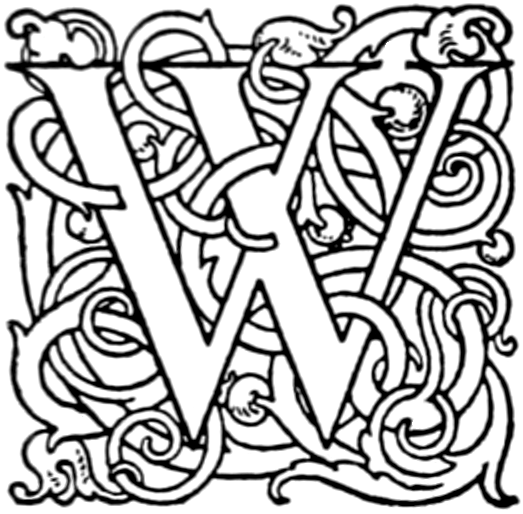
We have alluded in the preceding chapter to the paucity of woodcut initials in early works printed at Rome, and it is well known that the opinions of the clergy were divided with respect to the propriety of adding decorative embellishments to books. Some church dignitaries considered it a pious occupation, whilst others, who looked upon the copying of manuscripts as a sure way of attaining salvation,[28] were entirely against book ornamentation. It is probably on account of some such hostility on the part of the ecclesiastical authorities that ornamental initials are so seldom met with in books of the early Roman printers. In a list, for instance, of seventy-nine works published by Planck, only one, a Pontificale of 1485, is mentioned as having woodcut initials; in the same list, of thirty-nine books by Eucharius Silber, there is one only with ornamental letters. Lastly, of one hundred and seventy-eight other works by seventeen known and six unknown printers, only two are reported as being so embellished. Of the earlier printers, Sweynheim[65] and Pannartz used some very handsome initials in a few of their publications after 1470, the D reproduced being from their Suetonius, Vitæ Cæsarum. We give also a P from one of E. Silber’s publications, and a C with the portrait of Ariosto from a work published by Jacobus Mazochius, 1515.
[28] A propos of manuscript copying, there was an anecdote current in Scriptoria concerning a brother who had sinned very constantly whilst in the flesh, and who was challenged by St. Peter at the Gate of Paradise. The tally at first seemed to go against the applicant, but at last it was found that he had been for some time a scribe; written letters were checked against sins, and the frater was found to have a small but sufficient balance in his favour.
Siennese impressions are anything but common, and as the early typography of this town still awaits a historian, a short account of a few works from its chief press will not be out of place. The most important is no doubt the Datus, printed by Simeon Nardi in 1503. The title consists of two lines in small Gothic characters, Augustini dati senensis opera, and underneath come three sonnets by admirers of Datus (for the name is spelt indifferently, Datus or Dathus), in each of which he is compared to Cicero. ‘Read through,’ says Angelus Fundius, ‘this venerable volume of the facund Dathus, but take care I advise you to glance first at the title page.’ ‘Nam si forte vagus legeres, mihi crede putares non esse hoc Dathi sed Ciceronis opus.’ The others are equally complimentary. The volume is a folio collection of speeches and essays on all kinds of subjects, and consists of fourteen preliminary, followed by two hundred and ninety numbered leaves, or twice as many pages. There are sixty lines to the page of small, clear Roman type, pleasantly relieved by curious little capitals. The colophon gives ‘Impressum Senis ex Architypo per Symeonem Nicolai Nardi, Anno salutis MDIII Sexto Kal Novembris,’ and on the verso is Nardi’s mark representing a child holding a banneret astride a wolf, which is suckling another child beneath. The whole is surrounded by a highly ornamented border.
The most interesting feature, however, of the book is its series of large initials, which, taking into consideration the two different states of the Q, are fourteen in number.[29] The most characteristic, and perhaps the most effective, are those on a black ground, but the others are equally free and vigorous in treatment. One of them, the R, has the same subject (Romulus and Remus with the wolf) as the printer’s mark,[66] a subject which is used in other volumes as a pictorial title-page. The reason of this is explained in the motto at the bottom of the mark in another book,
‘ROMAE QUE ORIGO SENAE INSIGNIA.’
[29] In some of the proofs the Q is a white letter, the original block being cut away.
Unfortunately, as is so often the case, the impressions are not all equally good, but it is easy to see that where anything is wanting, it is the fault of the printing and not of the artist.
The letters of this series were much used in subsequent publications, but with the exception of an ornamental M of the same style which comes from a book of poetry published by Simon Rubeo in 1513, and an I in a tract by Marcellus Beringhuccius not of the same merit, we have not seen any Sienna letters that are not in the Dathus. It is to be remarked that the volumes which have an ornamental title-page have no printer’s mark, and vice versa, the first not occurring in publications before 1539.
Two of the Nardi initials, the P and the C, are to be met with in a quarto volume, ‘C Plinio de li homini illustri in lingua senese traducto et brevemente commentato,’ which is printed in the Inclyta & Excelsa citta di Sena by that accurate man Symeone di Nicolao Carrolaro Senese, 1506. The mark is different in some details, although practically the same as in the Dathus.
The Vespertinæ lectiones of Marcellus Beringhuccius has the H and some others. The printer’s name varies again, being given as ‘Impressum per Calistrum Symeonis Senen. Ad instantiam Ioannis Alixandri Libraio 1511.’ The title is surrounded by a border of oak leaves and acorns. On the verso of the first page the dedication to Cosmo de Medici begins with the handsome H, and is followed on the next page by an interesting cut representing the burial of Christ. The text on the verso of this page begins with the L. The second part of the book, ‘For the comfort of those who wish to live well, etc.,’ begins with the historiated N, ‘Impresso in Siena per Calisto Francese di Simeone Bindi, 1541. Ad instantiam d’Giovanni di Alisandro Libraio.’
[67]
Another volume of Vespertinæ lectiones of the same author was published in 1539, the printer’s name being given in the same way, and the same bookseller being mentioned. It has the N and the D, as well as a new I, mentioned above. The book, published on the 5th of March, has a title-page with a border of foliated branches that spring below from a common trunk and meet together above. The lower third is occupied by the Siennese wolf and children, with a town in the distance. Two tracts of Marcus Antonius Belarmatus on legal subjects were published by Symeon Nicolai in 1539, with the same ornamental border. In one of them the only large initial is the N. In the other, the title is printed in black, and the D and the Q of the white variety complete its ornamentation. The last book chronologically in which we have met with the Nardi initials is a Life by Feo Belcari of Beato Columbini da Siena, ‘fondatore del ordine di poveri giesuati.’
Like so many of the Venetian ornaments, the borders and initials of Fossombrone are mostly with a black ground, but this is criblé in a special manner.
The most important book of this town, where printing was introduced in 1513 by Ottaviano dei Petrucci, is a treatise by Paul de Middelburg with beautiful borders and initials, On the right way of celebrating Easter, and the day of the passion of our Lord Jesus Christ, a work of great rarity and filled with singular researches for fixing Easter Day, and the date of the death of our Saviour.
The initials have branching ornaments, and children playing with one another, one holding up a mask, or with birds. One of them can be seen in Butsch.
The principal printer of Pavia, at the beginning of the sixteenth century, was Jacobus Paucidrapensis de Burgofranco, whose books have very handsome ornamental and historiated initials, the latter with portraits of celebrated men. His Hyginus de Stellis, published in 1513 at the expense of the heirs of ‘that late nobleman Octavianus Scot and his associates,’ has several. The D given here is from this volume. The O with another portrait, and the four other[68] letters F, L, N, P, are also specimens of this press, but we have not been able to identify them more particularly.
J. de Burgofranco also uses a smaller alphabet in the same style of ornament.
Printing was introduced at Como in 1521, the seven initials given being taken from the first book printed there, the treatise of Vitruvius on Architecture. In this remarkably handsome volume, full of architectural diagrams and plans, there is, amongst others, an ‘elevation’ of the cathedral of Milan. Como had long been celebrated for the beauty of its situation, for the colophon, after giving the names of the ‘magnificent’ and ‘noble commentators,’ ‘emendators,’ and ‘castigators,’ states that the volume was printed by Gotardus de Ponte in the Amoena & delecteuole citate de Como. In one of the initials, a D, there is a view of a lake with sailing boats in a shower of rain, no doubt intended to be Como.
The U with the Crucifixion and the O representing St. Jerome are our only specimens of the press of Guillaume le Signerre, a Rouen printer who set up at the beginning of the sixteenth century at Saluzzo.
The book from which they are taken is an extremely handsome edition of the Aureum Opus of Vivaldus, so often reprinted, and it has a full-page engraving with St. Jerome, the same subject as in one of the initials, and on another page the portrait of Le Signerre’s patron; at the end the printer’s mark. The colophon states that it was printed at Saluzzo by the most deserving brothers, Le Signerre of Rouen, at the expense of that most illustrious and clement prince, Lodovicus, Marquis of Saluzzo, and viceregent of Naples. With the exception of an insignificant floral letter at the beginning of the preface, the two initials given are the only ones in the book, the T with the Crucifixion occurring twice. The brothers Signerre would appear to have tried their fortune elsewhere before going to Saluzzo. In 1496 they were printing at Milan, giving the Practica Musice of Franchini Gafori, with fine borders and initials.
[69]
Ferrara,[30] Milan, etc.—One of the most celebrated books of its day was the De plurimis claris selectisque mulieribus of Philip Bergomensis, described as being revised and ‘castigated’ with great diligence by that ‘great doctor in theology, Master Albert de Placentia and brother Augustinus de Casili maiori,’ Ferrarie impressum opera et impensa magistri Laurentii de Rubeis de Valencia.
[30] Ferrara is known to art students in connection with initial letters by the alphabet of Fra Vespasiano Amphiareo, a Renaissance calligraphist, which is often reproduced in works on manuscript ornamentation.
For the general student this work, which took rank at once as one of the most artistic publications of the time, is chiefly interesting on account of the portraits of the celebrated women whose histories it relates, but besides these there is a nearly complete alphabet of initials which harmonise perfectly with the woodcut engravings. Although different in treatment, the design is very similar to that used by Regiomontanus of Nuremberg, but with the addition of an occasional mascaron, or head of a dolphin. Very decorative, although simple, on the printed page, they lose some of their effect when brought together as an alphabet.
The volume begins with a linear M representing the Virgin and child.
The other set of initials, of an entirely different kind, is taken from the Missale Carthusiense, printed by the monks at their monastery at Ferrara in 1503, and generally known as the Missal of Ferrara. Missale secundum ordinem Carthusiensem. Impressum in Monasterio Carthusie Ferrarie Diligenter emendatum per Monachos ejusdem Domus Regnante Excellentissimo D.D. Duce Hercule Esten. Anno a nativitate domini MCCCCCIII.
In many of the other Italian towns, although printing was established at an early date, the ornamentation of books was comparatively neglected, and there are few or no initials of interest to be mentioned.
Foligno, for example, was one of the first places where the art of printing was introduced. J. Neumeister, one of the workmen and associates of Gutenberg, published there in[70] 1470 a superb folio, Leonardi Aretini Bruni de bello italico adversus Gothos.
At Milan, Philip of Lavagna gave a small quarto, the Miracoli de la Gloriosa Verzene Maria, dated 1469; but this date is a mistake, and it was really in 1474 or 1479 that the tract appeared.
Zarotus was printing at this town in 1471, and three years later Christopher Valdarfer began operations.
When initials occur in the books of these printers they resemble somewhat those of Venice, but they are of unequal merit, some being coarsely cut and merely curious, others of the highest artistic excellence. Of the first, the M and T from the Opus auree et inexplicabilis bonitatis et continentie, printed by Joannes de Castellione in 1513, will serve as an example.
The six other letters are from works by Gotardus de Ponte, and are to be found also in a book called Calipsychia of 1511; in the Life of Saint Veronica by Isidorus de Isolanis, of 1518; also in an Opus auree which seems to have been printed everywhere, dated 1513.
The Q with a very black border, a circle of white dots, an ornament in each corner, and a saint with crozier looking to the right, comes from the Sermons of St. Bernard, Milan, Leonard Pachel, 1495.
The smallest series is from a volume of Decretals by Ulric Scinzenzeller.
At Florence printing was introduced in 1471 by Bernardo Cennini, who commenced at once the composition of the Commentaries of Servius on Virgil, which was published the following year.
To Giovanni Tedesco we are indebted for editions of the Philocolo of Boccaccio and the Trionfi of Petrarch. But the most celebrated Florence printer of the fifteenth century was Nicolo di Lorenzo (Nicolaus Laurentii) of Breslau, the publisher of the celebrated Dante with engravings of 1481.
Books printed at Verona at the beginning of the sixteenth century are not common, and woodcut initials are even more seldom met with, but we have been able to find one or two[71] in a tract printed by Lucas Antonius, or Luc Antonio Giunta, of Florence, in 1504, which is extremely curious in many ways. The text on the title-page is arranged in the form of a cross, and runs as follows: Delitiosam explicationem de sensibilibus deliciis paradisi a D. Celso Mapheo Veronense Canonico regulari editam hoc libello lector agnoscere poteris et ipsa plurimum oblectari valebis. On the verso of the last page is a very fine mark of Lucas Antonius. The ornamentation of the book is completed by numerous woodcut initials of various sizes, but mostly as badly cut as printed. There are several letters of an interlaced pattern, but the two we have selected are the most interesting, the C with the gladiator and lion occurring at the beginning of the first chapter, the Q being repeated twice. There is also a historiated P with a child, a little smaller.
Books of the beginning of the fifteenth century published at Brescia have a few good initials, more or less in the Venetian style. An S, with a winged child with bow and arrows, probably a Cupid, is to be met with in several impressions. The P, with a saint in the same style, and a somewhat larger P, prolonged as a border, have the same origin.
The very wide C, with a monk at a latticed window, is from a volume of Brescia, in which there are also three or four insignificant floral initials in the style of Grüninger’s least interesting letters, an engraved title-page with the portraits of celebrated men in compartments, and on the verso of the last page a Virgin and child with irradiating flames. The title, Theophrasti Natalii Cychuthoe Teutonici Invectivae, Maxima cum diligentia Brixiae impressum, it is said, but without giving the printer’s name.
At Vicenza initials were also mostly in the Venetian style, but inferior as a rule to the originals. In one volume, a Catalogus Sanctorum, printed by Henricus de Sancto Urso in 1493, there are two typographical eccentricities which, as they have to do with initials, are worth pointing out. In some early volumes ornamental initials are occasionally met with of such primitive execution, that the only possible[72] explanation is, that the necessary letter being wanting, it was cut on the spur of the moment by an entirely unskilled hand. Amongst the initials which occur the least often at the beginning of Latin paragraphs are the B and G, and of course such letters as X, Y, Z. It is probable that when this Catalogus was being set up, there was no G amongst the ornamental alphabets available, for no other paragraph in the book begins with this letter. To meet this contingency, the required initial was cut forthwith, the result being the G in question, roughly representing a human face. The other singularity is an instance of the transposition of letters, of which examples have been already given, but here, instead of turning an A or a C upside down to serve as a V or a D, it is an F that does duty both for an F and an E. At the beginning of the eighth book there is an E for St. Ezekiel, which has evidently been made from an F, the lower transversal part having been cut afterwards, as can be seen by the rough execution and the disturbance of the general ornamentation. But the transposition of an F into an E is a thing that often occurs. The peculiarity here is that at the tenth book, which begins with the feast of All Saints, Festivitas omnium Sanctorum, an F being required, the same block is used as for Ezekiel, the letter being restored to its first condition by a plug, but showing clearly traces of its transformations.
[73]
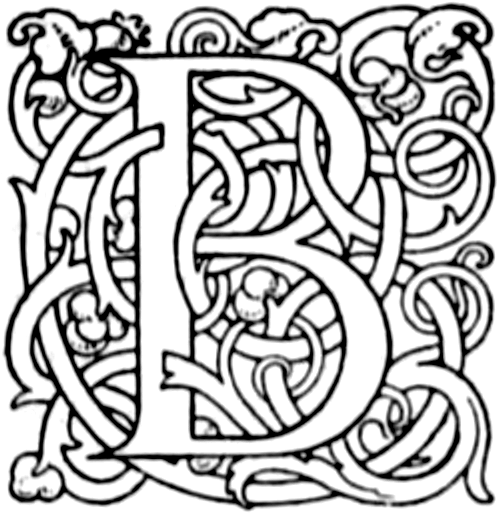
By its geographical situation, by its proximity to Basle, by its condition as a free town, and through the fairs that attracted within its walls the merchants from other parts of France, as well as from Germany, Italy, and Holland, Lyons became at once a typographical centre of the first importance, even preceding Paris as regards book illustration. In 1473 Barthelemy Buyer, a rich Lyons merchant, founded the first press with the help of William Leroy, publishing first the Compendium of Lotharius, then La Legende Dorée, six months before the appearance of the Chroniques de Saint Denis at Paris. Ornamental letters occur for the first time in the Mirouer Hystorial.[31] The specimens given were used by Leroy in 1479, and are known as lettres tourneures fleuronnées. On the title-page of the Prestre Jehan of the same publisher is a historiated P showing the three companions travelling in the land of Prester John, arriving before a castle of the ‘paynims.’ The text begins with a smaller initial, also a P with a serpent’s head which forms part of the alphabet of the Statuta Lugdunensia, and takes the place of the larger initial on the title-page of a later edition. The initials of the Statuta Synodalia are very much like those occurring in the Quatre Fils Aymon and in the[74] Dechier de Nobles Hommes et Femmes, a translation of the De casibus illustrium virorum of Boccaccio (Mathieu Husz and Jean Schabeler, 1483), and, although differently treated, the same subjects, grotesque profiles, are to be found in the first Paris letters of Dupré and Vérard. For the other letters of these early alphabets, of which specimens are not given here, the reader is referred to Claudin’s great work on the History of Printing in France, unfortunately left incomplete by the death of the author, but of which the third volume, the first of the two intended to relate to Lyons, is finished.
[31] Mr. Pollard speaks of an edition of ‘Beaudoin, Comte de Flandres,’ of 1478, with rude printed initials.
It is chiefly in the French books of this period that we meet with those large calligraphic initials for title-pages, generally taking the form of the letter L in the style of the tenth century, which are said by Claudin to be known as lettres de forme, dites cadeaux. The two largest are to be found in the Mer des Histoires, printed first by Le Rouge in 1488, the initials of which were copied by Dupré in 1491. They exceed the dimensions of this page, and are consequently too tall for reproduction here. M. Thierry Poux in his Origines de l’Imprimerie en France, and Claudin (op. cit.), have given good copies. They represent knights in armour, probably St. George or St. Michael spearing the dragon, with different accessory ornaments along the margin.
The most common of all these initials is the one which occurs on the title-page of the Doctrinal de Sapience, and of this we have preferred the Geneva copy. The French composition which is known as the January and May L, and is much more insipid, would appear to have been most popular, recurring in a great many books both of Paris and Lyons. Another L frequently seen, of which Mr. Pollard in his Early Illustrated Books gives a copy, was first used for the Livre du Faulcon; the top of the letter curves down to end in the head of some imaginary bird, between the two grotesque profiles. In some books this part has been removed, the letter presenting the appearance of having been cut down.
Of our selections, the L with two heads on the left and a collection of dragons on the right, one of which is disgorging a fool complete with cap, bells, and marotte, is from[75] the title-page of a Melusine, but is met with in other books. The letter with the two heads, a monkey and two birds, which occurs also in other publications, was taken from the Somme Rurale of Pierre Boutellier. The L with only one human head and a bird separated by the head and neck of an imaginary reptile can be seen in Demandes d’Amour, Le Cordial, Les Quinze, Joies de Marriage, Le Doctrinal des Femmes mariées. As to the initial with Eve, it is to be found on the title-page of the Livre des Marchands, of the Legende Dorée, as well as on some others.
As a last example of these large calligraphic letters, we give the large L with three profiles.
In an entirely different style is a magnificent Q on a black ground, representing St. George and the Dragon, from an edition of the Mer des Hystoires by Michel Topie, without doubt one of the most effective of the Lyons initials. There is a well-cut A at the commencement of Breidenbach’s Sainct voyage de la cité de Hierusalem, which Claudin attributes to Gaspard Ortuin. This book contains the first specimens of Arabic characters printed in France.
We now come to a series of letters from the missal of Pierre Hongre of 1500, some of which had been used in the missal of Uzès, published by Jean Neumeister and Michel Topie in 1497. This lending or hiring of typographical ornaments was very common amongst Lyons printers, as can be seen by a comparison of the books of different publishers, and as is proved by an agreement of the time, between Michel Topie and an Angevin printer, discovered by the Abbé Requin amongst some old notarial deeds.
The letters of Pierre Hongre’s missal represent, as usual, Biblical scenes, and although of an archaic type, the attitudes are true, and they are animated by a sincere and artistic sentiment. The subjects of the different letters speak for themselves. The T, as usual, is the sacrifice of Abraham; the C the martyrdom of St. Stephen; the D the Nativity, etc.
Many of these are to be found afterwards in other missals, such as the missals Narbone, Aquensis, Matisconensis, etc.
The historiated initials from the Saccon Missal, also of[76] 1500, all of the same type, are interesting from the fact that we are able to give the name of the engraver. In our collection of cut initials there is, amongst others, the S with several personages, and from the same book from which it is taken, and in the same type as on the verso of this initial, is a ‘dixit’ of five lines which speaks for itself:—
Good missal initials are to be found also in the Missale secundum ordinem Carthusiensem of Simon Bevilaqua, 1517, such as the C (saints with a palm-leaf), and the D (the Good Shepherd). The Missale secundum ordinem fratrum predicatorum of Moylin, 1515, has also interesting ornamental letters.
Of the two large A’s, one is from a missal, the other from a Catalogus Sanctorum of Saccon. The G and the smaller P are both from Lyons missals.
The three little pictures, one of which represents the expulsion of a devil, the two others the Apostles in a boat, are in reality ornamental initials with the letter, an I, in the right border, and belong to a volume of homilies printed by J. Poullet in 1505, in which every paragraph begins with the same letter. The fourth is one of those little cuts that are sometimes used in missals in the place of pictorial initials, and which, according to Dibdin, are to be classed with initials.
It is not often that we meet with complete alphabets from single books, except in the case of works arranged by alphabetical order and dictionaries. Such is the case with the Catholicon, of which J. Wolff published an edition in 1503. Unfortunately the alphabet is not uniform, either in size, style, or subject, and some of the letters are of minor interest. We have selected the most curious and most uncommon. The four initials of the same kind, the halberdier U, the standard-bearer O, the page P, and the king D, are sometimes[77] found in other volumes—in the Aureum Opus, for example. It is from the prologue of an edition of this work, printed for Gueynard in 1505 by De Vingle, that we have taken the very interesting Q of St. Jerome, which is also the subject of the first initial in the Saluzzo edition. We only know of one other letter of this size in the style of the Catalogus series. As can be seen from our reproduction, it represents the Virgin, and is to be found at the beginning of a very rare and curious plaquette entitled ‘Plusieurs gentillesses pour faire en toutes bonnes compaignies. Et aussi plusieurs bonnes et utiles receptes esprouvées par Maistre Symon de Millan. On les vend a Lyon en la maison de feu Barnabé Chaussard.’
The two curious L’s are from the title-page and from the beginning of one of the chapters of a Lyons Proprietaire, wanting the last page, but of which we have not seen any other copy. The L with a profile and crowned lion is from the title-page. The other letters, D, H, M, are from the treatise on men and women at the end of the volume, arranged according to the signs of the Zodiac. The M shows the author meditating the effect of his opening remarks. The D and the H are at the beginning of a paragraph referring to Virgo and the Gemini respectively.
The two large letters C and D, representing the Viaticum and the Nativity, with the seven smaller ones, are to be found in an edition of the Regimen Sanitatis, with comments by Magnini, attributed by Claudin, on the strength of an initial on the title-page with a bird, to Fradin, 1505. This is no doubt correct, for the large C (a priest carrying the host), with several of the smaller letters, is to be found in an undoubted edition by that printer of Platina’s De Honestate Voluptate of 1505.[32]
[32] The G, C, and I, with profiles and grotesques, were used two years before in a Lyons edition of the Rommant de la Rose, by G. Balsarin, 1503.
From a technical point of view, from the elegance of the design and the delicacy of the execution, the series taken from works by Blanchard and others, with masters and scholars in costumes of the time of Louis XII., is particularly[78] interesting, the S with pope and cardinals being quite remarkable.
The children’s alphabet was used by Fradin and four or five different printers, perhaps by more. A certain number of children’s letters, but enlarged to the size of the initials of Cologne of Albert Dürer, are in the Graduale Viennense of 1534. One of them, the R, is a coarse copy of the same Dürer letter, and has been given under Cologne for the sake of comparison. The others, eleven in number, although not exact copies of the smaller letters, are very much like our smaller reproductions and are treated in the same manner, but the best proofs we have seen of the specimens we give are in a copy on vellum of the Narbonne Missal of Fradin of 1528, from which the P with the Nativity, the smaller P with a saint about to be beheaded, and the R with Death, are also taken. There is a very similar set in the German Psalter of Nuremberg, printed by J. Petreius in 1525.
The F with a portrait of St. Ambrose is from a translation of St. Jerome by Erasmus, of whom an excellent portrait is also seen in another initial.
Two of the most characteristic sets of Lyons letters are those taken from the Biblia cum Summariis et cum Concordantiis, printed by John Moylin for Stephen Gueynard in 1516, and from the Catalogus Sanctorum of Saccon of 1514. The Bible letters represent necessarily scenes in Scripture history, often being inspired by the initials in the Bibles of Nuremberg and Augsburg.
The initials used in the different books of Lives of the Saints, the chief of which were the Golden Legend, the Catalogus Sanctorum, and the Lives of the Holy Fathers, are miniature pictures, and, although of small size, they contain quite as many details as the larger engravings that illustrate some of the more pretentious editions. It may be noted that when there are historiated letters, there are no pictures properly so called, but, as the numerous editions testify, those with pictorial initials, which the unlearned were able to understand, as well as the illustrations proper, were[79] amongst the most popular of the publications of the beginning of the sixteenth century.
In an edition of the Golden Legend now before us, printed in 1514 for Martin Boillon, by Gilbert de Villiers, the same year as the Catalogus Sanctorum of Saccon, of which we give the letters, the text begins with a large A, representing the Advent of Christ, of the same size as the Bible initials. A little further on, another A stands for St. Andrew with his cross. Next comes an N, for the patron of children, St. Nicholas, who is depicted with three of them apparently in a pickle tub. As the letters nearly always correspond to the saint’s name, the historiated initials, for those who knew their alphabets, were even more useful than the large engravings, which required for their comprehension a competent knowledge of the attributes of the saints.
Proceeding further, an N with an ass, a cow, a child in a cradle, and a star, stands for the Nativity. Saint John the Evangelist has an I, with his eagle. Another I, with three soldiers, one of them stabbing a child, and a woman with another child on her lap, represents the Massacre of the Innocents, and both for composition and execution it is superior to the larger cuts of the illustrated volumes.
St. Paul the Hermit, and St. Remy, may be recognised by the bird which is bringing them a ring. The M with a naked saint shows St. Macarius in the desert, where for killing a gnat ‘nudus sex mensibus in deserto mansit et inde a scabronibus totus laceratus exivit.’ The first letter, with the saint kneeling down, and a soldier about to wield an immense sword, is an F, for St. Fabian, and this subject with variations recurs frequently, St. Longinus, St. Gregory, and many others being so represented. In the B of St. Basil we see for the first time the Father of Evil in the shape of a dog-faced monkey, so often depicted both in the architecture and in book ornamentation of the period. He is disputing with St. Basil about the kneeling child, but of course gets the worst of the argument. The same B does for St. Benedict; the A with two devils with hair standing on end is for St. Amandus. The same initial does for St. Ambrosius. George[80] of England is shown on horseback with the slaughtered dragon. An S, with a number of people lying down, is for the seven sleepers. In another S, what looks like a crowd of students illustrates the section ‘De septem fratribus qui fuerunt filii beati felicitatis’; St. Christine is looking at what appears to be a house on fire. The M of St. Macarius recurs to illustrate the nakedness of St. Mamertinus, who is left in that condition by robbers, and the N of the Nativity does again for the Nativity of the Virgin.
The two medical saints, St. Cosmo and St. Damian, are shown together as usual in a C, one of them holding in his hand a flask of special shape. Of the remainder, the most interesting are the M of St. Michael the Archangel, who is attacking with his sword a devil with horns and a very pointed nose; St. Denis, who is carrying his head in his hand; a P, for the ten thousand martyrs, two of whom are shown with swords coming through their bodies from underneath, just as in one of the Schott initials of Strasburg. In the initial for the eleven thousand Virgins, one girl is about to be beheaded whilst two others are looking on. St. Eustace is at his anvil, with fire and bellows in the background. St. Martin is shown, with his cloak, on horseback, and St. Elizabeth of Hungary with a castle in the background. The last with a pictorial initial is St. Bernardinus, to whom the Virgin and Child are appearing in a vision.
There is another edition of the Catalogus Sanctorum with only one large introductory initial, but in which the different chapters are preceded by little woodcuts. In one of these, which is repeated several times, the saint is shown with an instrument for execution on the same principle as the modern guillotine. Of Saccon’s many other alphabets the two outline initials, two Q’s, one a monkey riding a monster, the other an owl, five other letters with heads, and the little black animal letters, must serve as examples.
The L with two peasants looking at an angel in the clouds is to be found in a Bible and on the title-page of a Liber Cathonis.
An amusing little set comes from a printer whose name[81] is unknown to us, the book being entitled Morale Reductorium Petri Berthorii. The C is probably a convent cellarer, whilst the N is a study in contemporary costume, and remarkable for the number of details that have been condensed into so small a space.
The C with the Crucifixion is an example of the extraordinary incongruity that is sometimes seen between ornaments and text. In a book of devotions we sometimes meet with the most scabrous subjects; here the reverse is the case, this reproduction, whatever may have been its origin, being taken from a military treatise published by Jacques Modernes, Vallo, Du Faict de la Guerre et Art militaire. The other letters in the work are from worn-out blocks from the stock of Saccon.
Although of later date than the majority of our reproductions, our remaining initials are so frequently found in Lyons books that they are representative, as it were, of Lyons ornamentation.
There are several different-sized alphabets of philosophers, but the one given is by far the best in execution. Our reproductions are as good as possible, but the proofs in the original are of a greyish colour which, taken together with the clear way in which they are printed, is most ornamental.
The mythological letters are from a book of Italian poetry, ‘Stampato in Lione, per Jacopo Fabio. Appresso Bastiano di Bartholomeo Honorati, 1556,’ and, with the exception of the S, which is signed with the initials H F (Hans Frank), the other letters are attributed to the Petit Bernard. The three large lettres parlantes, D for Diana, etc., are from Lyons impressions of about the same time.
[82]
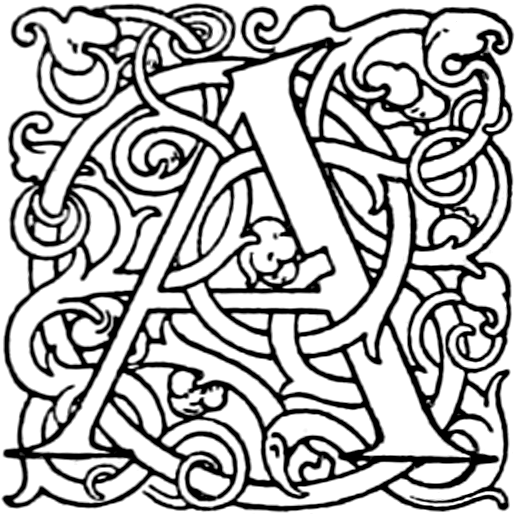
As with Lyons, the material upon which one could draw for Paris is almost inexhaustible. Dibdin considers the initials of this town to be the finest that can be found, and gives the letters of Josse Bade with branches growing out of the heads of the personages as examples. As regards book illustration, however, Paris was behind Lyons, where the earliest attempts at decoration were made in 1478.
The first book printed in Paris with ornamental letters was the Vies des Anciens Sainctz Pères of Dupré, which appeared in 1486, that is to say, eight years later. Mr. Pollard thinks that these initials, of which there are only eight, five of which we reproduce, afforded the first hint for the first calligraphic initials used for title-pages, of which several have been given under Lyons. Dupré was one of the printers who worked for Vérard, who was chiefly a publisher. An alphabet of small calligraphic initials was frequently used in the volumes printed for him by the Lerouges of Paris and Troyes, and is to be found complete in the Jardin de Santé. Pen-letters, as they are called, of this type, are of frequent occurrence in manuscripts.
Of the large calligraphic initials a sufficient number of specimens have been given under the heading of Lyons, and, as a rule, they are more quaint than those used by Paris printers.
[83]
The huge initials already spoken of in the Mer des Hystoires are too large for our format. In the same work is a serpentine S equally out of proportion to this volume, an I with a picture of Christ, and a P of similar size in the style of those that often occur in works of Vérard, representing a scribe at work, and recalling the cuts so often seen on the verso of title-pages. For these initials, which are too large for reproduction in this volume, the reader is referred to Claudin’s History of French Printing and Monceau’s monograph on the Lerouges. Of those more moderate in size, the January and May initial on the title-pages of the Doctrinal de Sapience, the Quinze Joyes du mariage, and many other works by Vérard, Trepperel, and Lenoir, is the best known (see under Geneva). The Livre du Faulcon has an initial with two grotesque profiles, also very frequently met with on other title-pages. This, together with the L with three monkeys, is reproduced by Mr. Pollard in his Early Illustrated Books, to which the reader is referred.
Shortly before the end of the fifteenth century, in 1497, Bocard published an edition of Robert Gaguin’s De origine et gestis Francorum, with a few large grotesque initials, and a very pretty one of the Virgin of the same size, as well as an alphabet of smaller letters. The first leaf of this book begins with an initial which is badly coloured in the only original at our disposal, but which is interesting as forming at the same time an ex-libris. The letter in question is an F, and in each of the segments (separated by the central bar) is a scroll, in which an early owner of the volume had written his name.
In the Nef de Santé et Condemnacion des Banquetz of Trepperel are some other grotesques, found also in others of his publications.
About the same time the use of ornamental initials was commenced by Rembolt and Gering. Gering, who was one of the earliest German printers to settle in Paris, published with his partner, in 1499, a book entitled Divi Augustini in sacras Pauli epistolas Interpretatio, with the large P, representing, no doubt, St. Augustine preaching to[84] his followers, which occurs at the beginning of almost every chapter, and a number of smaller ones.
It is in the smaller initials of Gering and Rembolt that we have some of the best examples, as far as historiated letters are concerned, of those compound animals so often met with in the ornamentation of the fifteenth century. If we look at the records of antiquity, such as Egyptian hieroglyphs, Roman medals and pottery, and other artistic remains, it will be seen that from a very early time it was considered humorous to represent animals carrying on the occupations of men, or doing the duties of other animals. By a natural extension of this idea, men were depicted in the roles of animals who had usurped their supremacy, and who are represented as treating their tyrant in the way that they themselves were accustomed to be treated. Wright and Champfleury in their Histories of Caricature have given numerous examples. In an Egyptian papyrus, a cat is seen walking erect and driving a flock of geese, a fox is carrying a basket and playing the flute, and the lion and the unicorn are playing at chess. In a thirteenth-century tile, a rabbit going a-hunting is riding his hereditary foe the dog, and in a manuscript of the fourteenth, a dog with his paws tied is being conveyed in a cart drawn by two rabbits and led by a third, towards a hill on which a gallows has been prepared for him. In a carving of the same period, another example of ‘the world turned upside down,’ four geese are shown hanging their old enemy the fox. Roman statuettes still exist, in which the personages represented are satirised by their heads being replaced by those of animals, such as rats or wolves.
These fancies, which are said to have come from Greece, led to the creation of such beings as the Sphinx, the most celebrated of the compound animals of antiquity, and later on to the Chimerae and Grylli, which were the predecessors of the innumerable fantastic hybrids that the imaginations of the artists of the Middle Ages called into existence. These creatures have already been represented in our Lyons initials. In one of Saccon’s letters there is a kind of armadillo with a human head, and amongst the reproductions from the[85] Regimen Sanitatis there are two copied from Gering and Rembolt originals, which are also given.
In these latter the R, with a monster with a neck ending in a human head, is particularly noticeable, as it occurs frequently in the borders of the same printers, and the Books of Hours of other presses. It is to be remarked that the belief in the existence of these unnatural monsters was quite general. Wright quotes Giraldus Cambrensis as describing animals in Ireland, some half bulls, half men, others half stags, half cows, others half monkeys, half dogs. The dog-faced monkeys had always been worshipped in Egypt, and for this reason possibly had become an object of suspicion to the mediæval clergy, who made them figure as devils both in church architecture and manuscript decoration. It is in this rôle that they are constantly represented in woodcut initials.
The following year the first edition of the Cornucopia of Perottus appeared, the first part of which has one of the larger initials on every twentieth or thirtieth page. Towards the end of the volume they become much more frequent; not only are they to be met with on every page, but on some there are half a dozen or more. Another edition of this work, which was often printed, was published by Rembolt in 1507, mostly with the same initials, but the P with the Nativity was not used in the second edition.
The two armorial initials are from a French translation of the History of Denmark by Saxo Grammaticus, published by Josse Bade in 1514. Besides these there are three others in the same style, a D, an I, and a P. The D is like the N in general arrangement, but without the supporters, and the legend ‘Arma regis Dacie’ is in scrolls with the letters C. P. and C. L. In the I the central shield is suppressed, and the shields are framed by banderolles with the legend: ‘Arma regis Dacie Swecie Norvegie, sclavorum gottorumque anno domini MDXIIII.’ The P is similar to the two others in being without supporters, and the legend is slightly modified: ‘Arma regis Dacie Swecie Norvegie.’ These initials were particularly admired by Dibdin, who calls attention to their beauty.
[86]
Amongst the publications of Trepperel are several editions of the Jardin de Santé, which, in the Latin Hortus Sanitatis, is a thick folio dealing first with birds, beasts, and fishes, and finishing with an alphabetical account of medicinal plants, and finally stones (minerals). A treatise, De urinis, completes the whole.
Vérard’s edition already mentioned was of the same proportions, but Trepperel published his as an octavo on plants only. The initials are not always well printed, rather the reverse. The best are given in our illustrations. A few of these letters are to be found in a small folio with woodcuts, entitled Les œuvres de Justin, vray hystoriographe sur les faictz et gestes de Troge Pompee, etc. etc., in much better proof. In this same book is the L with a harpy, which, together with the M, the only other letter of the kind we have seen, is to be frequently met with in the Chroniques de France and in a great many other books by Philippe Lenoir, finally in a Paris Missale Carthusiense. The two letters with children, inspired by Venetian initials, with the linear R of the same size and the big ‘philosophus’ Q, are taken from a work on the Logic of Aristotle by Jacobus Stapulensis, published by H. Estienne in 1510. In other works the same initial occurs, but the word ‘philosophus’ is replaced by ‘Aristoteles,’ or by some other philosopher’s name. We have met with several varieties. The smaller letters are to be found also in books printed by J. Petit, H. Estienne, and Josse Bade.
It may be here observed that the Paris printers had quite a specialty for missals, and in some of them initial letters of the most varied origin are mixed together. In one of them, the Missale ad consuetudinem insignis ecclesie Parisiensis, by Wolfgang Hopyl, in 1504, the initials belong to different alphabets. The best are the A (Annunciation), the P (Nativity), another P (the Circumcision), an E (visit of the wise men), S (Pentecost), C (a priest saying mass), and when the proofs are perfect it would be difficult to imagine anything more effective. But the handsomest set is in the Missale Leodiense, also printed by Wolfgang Hopyl, in 1513. These initials are used in other missals, but are here in their best[87] condition. Some of them are to be found in the 1526 edition of the Liége missal by Marnef and Hopyl, and again in the Missel de Chartres of Kerver, 1529.
In most works of this kind the subjects of the histoires are of a Biblical nature, particularly incidents in the lives of the saints, although relieved sometimes by a touch of the grotesque.
In other missals the grotesque reigns supreme, showing how intimately it was associated with the idea of Church Art, as is well seen in the beautiful Books of Hours by Philippe Pigouchet and others, in which the borders are a mixture of the grotesque and the macabre.
One of the books most frequently reprinted at this period was the Propriétaire, the translation of the work of Bartolomæus de Glanville, De proprietatibus rerum, which was the book on which Caxton worked at Cologne. It is a kind of general encyclopædia, beginning with a disquisition on the Trinity, and ending with a chapter on Astrology. It is from this work that we have reproduced the twelve letters, amongst others the Q with a bagpiper, and an L representing a person in a fool’s cap giving a baby pap. These occur in a great many other works of Philippe Lenoir.
In the treatise ‘On Men and Women,’ the different sections are preceded by initials which correspond to the signs of the Zodiac, as in the Lyons copy, of which we have given specimens. But in the Paris edition, curiously enough, the first two sections, Aries and Taurus, have no initials, although ornamental letters with a ram and bull respectively, and entirely inappropriate anywhere else, are to be found in other books published by this printer, such as the Chroniques de France and the Saint Graal.
The two large initials, one of them with a portrait, formed part of the alphabet of Vascosan, used in, amongst other books, the work of Oronce Fine, or Finée, as he is variously called. The vignette of the O is said to be his portrait. It is authenticated by the initials O. F.
Josse Bade has some large initials in the Venetian style, with intertwisting bands and no historiation, generally described[88] in book catalogues as ‘magnificent ornamental letters.’ We admit to a predilection for initials with personages, and prefer to give here some of the smaller set, sometimes printed in red in the original, which particularly excited Dibdin’s admiration, and which are graceful, even when not historiated. They are to be found in a great many of this printer’s productions, as well as in those of Simon de Colines and others.
The missal letters of two sizes, beginning with an A representing the Trinity, are considered by experts to have been designed by Geoffroy Tory or members of his school. They form part of a fragment consisting of eight or nine pictorial pages, such as are to be met with in the missals. Several have the Crucifixion surrounded by an ornamental border, in one of which is the mark of Tory’s atelier—the cross of Lorraine. On these leaves, which have not been identified—they were perhaps only proof-sheets—the letters did not serve as initials, but were placed end to end, to form a compartment border.
In two instances where initials were used at the beginning of the text, they came from an alphabet of one of the missals given above.
The smaller of the two remaining sets, with the little D dated 1526, was used in the publications of Simon de Colines and others.
A similar initial used by Chevallon at the beginning of a treatise of diseases of women by Hippocrates is dated 1524, but after 1545 the date is replaced by the letters C. G., the initials of Chevallon’s widow, Charlotte Guiard.
In a large folio edition published by Chevallon in 1528 of the Digesta seu Pandectae Juris Civilis, most of the initials are too badly printed for reproduction. One of them, however, is of good impression, and besides that is supremely interesting, as it forms a little picture representing a scene from one of the xylographic Ars Moriendi. It is the only letter of the kind we know, and this is the only time we have met with it. In the original the initial is of the smaller dimension, but it is so interesting that we have had it enlarged. In the block[89] books, scrolls are generally seen emerging from the mouths of the devils, with the suggestions printed on them by which they attempt to turn aside the dying soul from thoughts of piety. This miniature composition is too small for such insertions, but the attitude of the arch fiend shows that he is ready to seize any opportunity that may present itself.
There are a great many more alphabets of Paris printers that we should have liked to reproduce, had it been possible to multiply our examples indefinitely—amongst them that of Kerver, of which we give the C with a knight in armour. The three others, B, C, and L, are coarse copies of Kerver letters used in England, these being taken from a medical work by Bullein. Of the next three, the L with a saint is a copy of the same letter of Rembolt, the two others from Philip le Noir both recurring frequently in his impressions.
The P with a master and pupils is from the press of N. de la Barre.
The three little pen letters are from the same source.
We cannot bring this short selection of Parisian letters to a close without mentioning the Royal letters designed by Geoffroy Tory and used by Robert Estienne in a Bible and in other books after 1536. Independently of the accessory ornamentation, the letters themselves have since served as models of proportion.
[90]
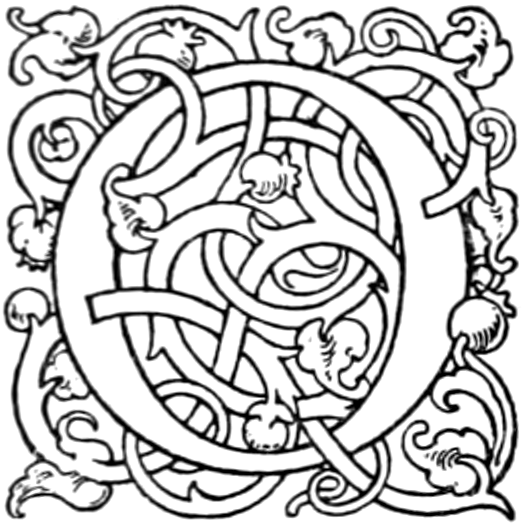
Of provincial French towns after Lyons the most important as regards the history of printing are Troyes and Rouen. In the former the chief printers using initial letters were the Lerouges and J. Lecoq. The five large letters, C, C, D, L, S, with Chinese-looking dragons and birds, together with the B of an entirely different character representing David and his harp, no doubt the initial letter of some Psalter, were used in the impressions of the Lerouges, and were taken from one of their finest books, La thoison d’or.
These printers worked for Paris publishers, particularly for Vérard, and the calligraphic alphabet of the latter, given above, formed part of their material.
Of Lecoq we give two sets. The specimens, with grotesque profiles, are from a monumental Graduale Trecense in which there are altogether between twenty and thirty different varieties, from the Vie de Monseigneur St. Bernard, printed for Macé Panthoul, and from a Statuta synodalia of the ‘State and Diocese of Troyes,’ printed by order of the Reverend Bishop Odard Hennequin. The I, the Q with a fool and his accoutrements, the S with a profile on each side and a bird’s head and upper beak above, the larger F and the V also with two profiles and a face with porcine snout on the top, are only to be found in the Statuta Synodalia.
[91]
It may be here observed that it has been our constant practice to reproduce our specimens exactly as they appear in the original, in order to give them the documentary interest that they lose when retouched. In this case these initials were too badly daubed over with paint for gillotype reproduction, and the first nine were obtained by photographing on wood and then engraving. They are good facsimiles of the originals, but without what may be called their patine. It was subsequently ascertained that the colour in most instances was easily removable, and the other five letters were copied in the usual way. The reader can compare the results of the two processes.
The smaller alphabet, engraved also on wood, is complete in the Vie de Monseigneur St. Bernard, but occasional letters are to be met with in many of Lecoq’s later impressions. Amongst these may be mentioned an excessively rare little Latin primer on the plan of the Donatus, with Lecoq’s marque parlante on the title-page, and with the E of this alphabet at the beginning of the title, which runs as follows: Epithoma sive breviarium octo partium orationis gramaticalis adiectis grãmatice principiis ad completam grammaticam introductoriũ.
Rouen was an important centre of printing at the beginning of the sixteenth century, a great many publishers in other towns and countries having the works which they edited printed in this city. This was often the case with books apparently of Caen. We shall have to speak of a Histoire de Commines, supposed to have been printed at Paris, but really printed at Rouen. The earliest work from which we have made reproductions is an exposition of the Psalms by Petrus de Harentals, with a very long title beginning Psalterii expositio Petri de Harentals viri religione clarissimi, etc.; at the end ‘Impressum in officina Laurentii Hostingue et Jameti Loys,’ 1504. It is stated, moreover, to be sold at Paris by J. Petit and Robert Macé, the large mark of the latter occupying the verso of the last leaf. From this book the series of letters with heads, curious little animals, and compound monstrosities are taken. The large[92] P with a man holding up his hand is on the title-page. In another volume, the Singularissimum et eximium opus universis mortalibus sacratissimi ordinis Seraphici patris nostri francisci, etc., printed by Martin Morin in 1509, are the I with two dragons, the H corresponding to it, and the second H with a woman in a Norman bonnet such as the peasants wear to this day.
The only remaining initial we have met with of this style and size, the P with a man with a pointed cap and tassel, is to be found on the first page of the text of a Coustumier de Normandie, belonging to Mr. Quaritch.
The large calligraphic M with the arms of Normandy adorns the title-page of the missal of Arras, Missale Atrebatense, and also that of the Missale Noviomense of 1506, both of which were printed by Martin Morin, and the twelve initials in red comprise most of the ornamental letters distributed through the two volumes. There are also some grotesque lettrines similar to those found in many Rouen impressions, and such as have been given from the Psalterium of Harentals.
Another large calligraphic initial, and nine smaller ones, are from a Rouen edition of the Propriétaire, printed for Francis Regnault by Jacques le Forestier, which, unlike the Lyons and Paris editions of the same date, 1520-30, is without the series of twelve Zodiac letters that precedes the paragraphs of the little treatise ‘On Men and Women’ at the end of the volume.
The three smaller initials of the same size, A, B (David and his harp), and R, the two somewhat larger—a D with a compound animal with a long snaky neck, and a P with a grotesque, together with the P with a schoolmaster armed with his birch and about to operate, are from another edition of the Coustumier de Normandie of 1523.
The A, surmounted by a crown with a saint below, with the D, a swan, and the S with two animals, are met with also in other books, but were reproduced from the Opera Guilelmi Monachi Valladii, without name of printer or date, but printed at Rouen by Hostingue in 1505. The[93] M is the same as in the missals of M. Morin, and there is the same P as in Harentals’ Psalter, but in very bad proofs.
Our last specimens are from the alphabet of Jacques Forestier, or rather of Jacques le Gentil. Most of the letters are to be found in a 1525 edition of Commines which had always, on the authority of Brunet, passed for having been printed at Paris. Claudin, however, noticed that the verso of the last page had the arms of Rouen and the mark of Jacques Forestier, and the recto says ‘Imprimé par J. G.’ This J. G. was Jacques le Gentil, son-in-law to J. Forestier, to whose business he succeeded, using for a time his father-in-law’s mark.
In the Commines there are sixteen different initials, but neither of the two with profiles, D and G. These, with some of the others, are to be found in the Grand Coustumier du Pays et Duché de Normandie of 1523, already mentioned, and in a book entitled Divi Gregorii Magni et ecclesie doctoris precipua opera, printed at Rouen in 1521 at the expense of that most honest man and most famous bookseller, Francis Regnault of Paris.
From a typographical point of view Avignon is interesting on account of the claim that has been made for it as the birthplace of printing by the Abbé Requin. This is based upon notarial records of 1444, but the invention, in the opinion of the late M. Claudin, was in reality a primitive form of typewriting.
The chief printer there at the beginning of the sixteenth century was Jean de Chauny, and our specimens of initials are from two volumes printed by him for Jehan François de Saint Nazaire, otherwise called De Ripa. The first is a small quarto with a curious ornamental title-page, De Peste libri tres, dedicated by the ‘celeberrimus atque acutissimus’ author to the citizens of Avignon; the other, Interpretationum et responsorum acutissimi atque clarissimi jurisconsulti dōmi Joan francisci de Sancto Nazario cognomento de Ripa libri tres, is a very large quarto printed in 1527. Like most books of the kind, both volumes commence by complimentary verses, the carmen ‘Jacobi Meigroni Novensis,[94] ad studiosos legum juvenes,’ being a good specimen of the punning panegyric of the period.
In a similar composition mentioned under the heading ‘Sienna,’ Dathus is preferred to Cicero. According to Meigronus, De Ripa is more reliable than the Delphic oracle.
Of the larger Avignon initials two only occur in the larger volume, the F reproduced in the text at the beginning of the privilege, and an S at the beginning of the third book, which is somewhat imperfectly printed. The smaller letters are much more numerous, especially in the Libri Interpretationum et responsorum.
A very important work[33] has been devoted to the early printing of Poitiers, one volume of which consists chiefly of facsimiles. As a rule the initials are devoid of interest, but there is a large grotesque L from a Costumier de Poitou printed by J. de Marnef, a P from a missal, and a few with human faces, such as the one that we reproduce.
[33] Monuments de l’Imprimerie à Poitiers, par A. Claudin.
Later in the century a legal work was published with a nearly complete alphabet representing the different occurrences that might happen to an accused person, such as the stocks and the rack. They are, however, as a rule, too poorly printed, and the copies we have seen are not worth reproducing.
In books printed at other French towns we have discovered but few initials. There is a large but uninteresting one at the beginning of a Chambéry edition of the Roy Modus.
On the only leaf that has come down to the present time of a Limoges missal, and which forms the subject of a memoir by M. Claudin, is an R, with the Resurrection.
In an early Albi edition of Æsop, with cuts, in what is called the manière éraillée, which look as if executed by scratching the block with a rusty nail, there are some initials of which the N will give an idea of the éraillée manner. In a later tract, La vie et légende de Mme. Ste. Petroine, there is an A, which may possibly have been used first for a missal.
In the chapter about Basle, mention has been made of an alphabet which is nearly complete, used by Furter in his[95] Liber Decretorum sive Panormia, and which also occurs in a much rarer book without date or printer’s name, the Decreta Consilii Basiliensis. This alphabet, it now seems, was used in 1488, at Besançon, in the Speculum Humanae Vitae of Rodoricus Zamorensis. Sotheby, in his Typography of the Fifteenth Century, has given a reproduction of one of the pages on which there is the very characteristic serpentine S, which is here given with the T and the V.
Printers in the other towns would seem to have been supplied with the worn-out initials of the Rouen and Lyons presses.
In the few books with ornaments printed at Caen, Rouen letters are found; whilst in those published in the south of France, there are chiefly the floral initials from the presses of Saccon, De Vingle, and other Lyons printers.
[96]
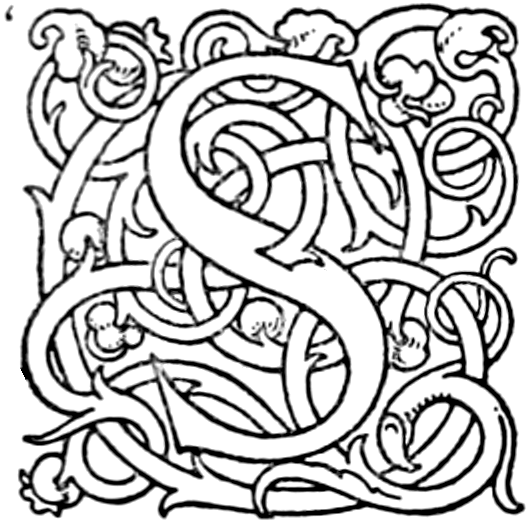
‘Spanish books,’ says Mr. Pollard, ‘are distinguished by the excellence of their initial letters, which are always as plentiful as they are good, the great majority of books after 1485 being fully provided with them.’
Our own experience confirms this statement, but we have found that they are as a rule ornamental rather than historiated, and that there is, moreover, a certain sameness about them.
For this reason we shall only give six specimens of the first variety, but these will serve to give an idea of the initials of this kind usually met with in Spanish books. The C and the M are taken from a volume printed by G. Castilla at Valencia, the E from a Comento di Eusebio, printed in 1522 by order of the Reverend Archbishop of Toledo, at the noble town of Salamanca, by Hans Gyffer Aleman di Silgenstat. The origin of the three others, L, P, U, is uncertain, but is referred to further on. The seven smaller initials, or ‘lettrines,’ as they are called, are taken from the Eusebius.
Our historiated specimens are much more numerous. The first set of nine letters is taken from a work of the very greatest rarity, to which Mr. Pollard has called attention, the Compilacion de Leyes, printed at Zamora in 1485. This consists of eight different sections and a preface, each of which is preceded by one of the initials.
[97]
In the I, which is the first in the book and precedes the preface, there is amongst others a personage with a black rod, probably symbolising the dignity of the Court. On the first page of the text is a P with the King and Queen, Ferdinand and Isabella. ‘The first section of the laws,’ says Mr. Pollard, ‘treating of the Santa Fé, has an initial E showing God the Father upholding the Crucified Christ; the second section sets forth the duty of the King to hear causes two days a week, and begins with an L in which he is unpleasantly closely pressed by the litigants. Two knights spurring from the different sides of an S head the laws of chivalry; a canonist and his scholars in A preside over matrimony; money-changers in a D over commerce; while a luckless wretch being hanged in the centre of a T warns evil-doers what they may expect under the criminal law.’
We may add that in the other E there is a representation of what is probably a prison. Unfortunately, the proofs of these initials in the British Museum copy, from which we have reproduced them, are most defective. As Mr. Pollard says, ‘They must have been designed and executed by clever artists whose work is so fine that the printer in most instances has failed to do justice to it.’ In some of these letters there is in parts only the faintest impression of the design, and it has been necessary in this case to have them retouched.
Of our other historiated specimens, some have been reproduced from a collection of initials, some photographed by ourselves, and some are from books no longer at our disposal, and not having been able to refer always to the volumes from which they were taken, we give some of their origins sous toutes réserves.
Such is the case with the E and P with Biblical scenes, which, notwithstanding the nature of the subjects, come from a medical book, with another pair of initials with Biblical scenes A and E, the P with a portrait, and the three ornamental letters of the same kind, L, P, U, given above. We can only say that the two first and three last come from one or other of the following books:—
[98]
The Epilogo en Medicina y en cirurgia conveniente a la Salud, Pampelune, 1495; the Libro di Medicina llamado, etc., Cromberger, Seville, 1517; and the Medicina y cirurgia of Burgos, 1495.
The large E with the initials S. M. (St. Mark) is from a book printed by Juan de Varila at Seville; the G by J. Alvera of Coimbra. Of the five others, the S and the T each representing the Almighty, the L with a child on a branched groundwork, and the A and U of the same size with saints, we can only affirm the Spanish origin, without being able to give fuller particulars.
The large P with a scribe at his desk is in the Eusebius of Salamanca already mentioned, the only historiated initial in the four large volumes.
The A with a king kneeling, the N with a doctor exhorting a student, and the T, are from two books printed in the same type, but only one of them has the name of a printer. This, the Libellus de beneficiis in curia vacantibus, from which the N is taken, was printed at the most noble and loyal city of Seville by Jacob Cromberger, in 1512. The two others are from a work with a long title beginning Clarissimi cesarei juris doctor ac in studio Salmantino primarii regentis Didaca de Segura solemnis et elegantissima repetitio. It is curious as containing a warning on the title-page to dishonest booksellers and printers against infringing the author’s rights: Cautum est a Serenissimis principibus nostris ut nemo avidus Bibliopola nec quicunque alius audeat imprimere sub poena in privilegio contenta.
The four letters from an alphabet of Death occur in several books printed in the town of Stella. According to different authorities, Stella corresponds to what is now known as Estella. Deschamps says ‘Voyez Flavonia,’ and under this heading ‘Flavonia (Merula Cosmograph). Compostella (Mariana) Santiago di Compostella. St. Jacques di Compostella, town of Spain in the dependence of La Carogne (Galacie).’ This information is not very explicit, but it is supplemented by the statement that Stella was celebrated amongst other things by a book published in 1693 against[99] the abuse of escatados, that is the fashion amongst ladies of cutting their dresses low between the shoulders.
The alphabet of which the E, F, N, and V form part, is a copy not of Holbein’s alphabet of Death, but of the little pictures that illustrate his Simulachres or faces historiées de la Mort. Some of them occur in a book entitled Series totius historiae sacri Evangelii autore Petro Trurozqui Navarro (Stellae, Adrian Anverez, 1557), which contains also most of the letters of an alphabet copied from the Biblical series of Froshover of Zurich, mentioned in its place.
Another book without printer’s name, but dated 1555, in which they occur, merits from us a more particular description, inasmuch as it consists almost entirely of initial letters. The title of this typographical curiosity is Libro Sotilissimo y provechoso para deprender a escrevir y contar el qual lleva la misma orden que lleva un maestro con su discipulo en que estan puestas las cinco reglas mas principales de guarismo y otras cosas sotiles y prouechosas. Each page of the little volume is surrounded by a woodcut border. On the verso of the title, the notice to the reader begins with the M of the Dance of Death alphabet. The two succeeding pages have little pictures of the saints.
On the verso of the fourth page begins the same Biblical alphabet as in the other volume, the first letter, A, representing Eve and the tempter with the Tree of Knowledge, the alphabet, the letters of which are used as illustrative cuts and not as initials, being continued one letter per page with about five lines of text underneath; B (Abraham), C (Jacob), D (David), E (Absalom), and so on. When the Biblical alphabet is finished, the Dance of Death letters take its place, two on a page with a cul de lampe underneath the border, but no text. They are twenty-three in number, occupying twelve pages, the last being accompanied by the A (Eve and the Tree of Life) of the other series.
Then come the remaining letters of the first alphabet, this time two by two, one under the other, without any text, but with a woodcut border. The last page but one has two little[100] cuts of saints on each side, the last one having four still smaller on the recto which entirely fill it, but nothing on the verso.
In the language of typography the town of Alcala de Henares was styled Complutum, and one of its chief printers was Arnaldus Guilelmus Brocart, who, before coming here, had been established at Pampeluna, where he printed, amongst others, liturgical works.
The two large linear initials are taken from a book of this kind, the Passionarium cum Lamentationibus Jeremie atque Benedictione cerei Paschalis, published in 1516. They are the only letters of the size in the volume, the P recurring thrice. There are some smaller initials in the same style, but not of much interest, besides a number of the pen-letters with more or less grotesque profiles in the style, although coarser, of the alphabet of Vérard.
[101]
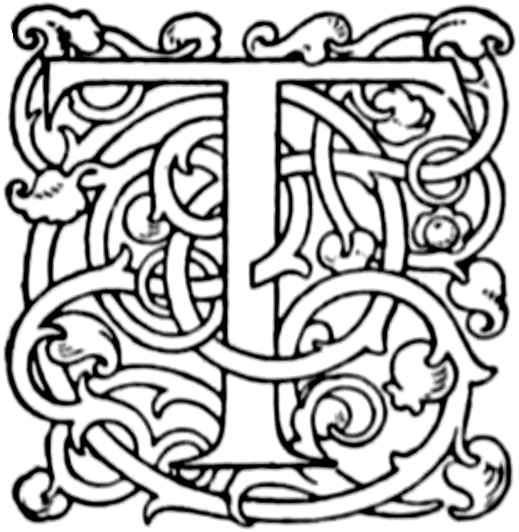
The early typography of the Low Countries has been made the subject of a most interesting monograph by J. W. Holtrop, chief librarian at the Hague, Monuments Typographiques des Pays-Bas au Quinzième Siècle, and it is from this work that we have reproduced most of the initials in this section.
The first specimen given by Holtrop is the G of the Fasciculus Temporum, printed at Utrecht by J. Veldener in 1480—an immense initial more than eight centimetres square. The page is surrounded by a folio-floral border in the same style. It has also been reproduced by Bodemann.
In the Summa Experimentorum sive Thesaurus Pauperum of Thierry Martens, who printed at Alost and afterwards at Antwerp, is the large A with a profile.
Passing over the initials of Ludovicus de Ravescot of Louvain, the next printer mentioned by Holtrop is G. Leeu of Gouda, who published in 1481 a Dyalogus Creaturarum with illustrative cuts, a very black S, not unlike the large one reproduced, and an ornamental border.
The thirteen smaller initials of the same type are from an impression by Godfrid de Os of Gouda, and furnished Caxton, who copied from different continental sources, with the models of some of his initials. Mr. W. Blades, in his Biography and Typography of W. Caxton, gives a plate of[102] woodcut initials from Caxton’s books, two of which are of French origin—Dupré and Vérard—the A of the Order of Chivalry, Italian in style, whilst an O with a grotesque face is the Q given in our series with the tail cut off. There is also an H with a profile on the left, evidently inspired by the P given here.
Of our remaining reproductions, the large S is to be found in books published by Jacob van der Meer of Delft. The P of nearly the same size belongs to a series of five large initials which comprises also the profile A, already mentioned, of Thierry Martens. These letters, together with a smaller alphabet in the style of the letters of Godfrid de Os, are to be found in editions of G. Leeu at Antwerp, as is also the D of pine-cone pattern copied from the alphabet of Israel von Mecken. The large initial with a portrait, which is said by Holtrop to be that of Philip le Bel, is by Godfrid Back of Antwerp.
The P representing the miracle of St. Veronica is to be found in a book by an unknown printer of Schiedam, Johannis Brugman Vita almae virginis Lydwinae Sciedammitae. The G given here with the same subject is evidently copied from this letter, and ornaments a leaf of an early black-letter English prayer-book, found in the binding of a sixteenth-century volume.
Louvain initials of any interest are extremely rare, and the only historiated one that we have seen is an N of a fifteenth-century missal, all the other capitals of which are painted by hand.
The calligraphic G and the H, both with grotesque profiles, are early specimens of initials of Antwerp from the title-pages of books. The G is from a Belial, circa 1500, the H from a small Leyden tract of the same date.
[103]
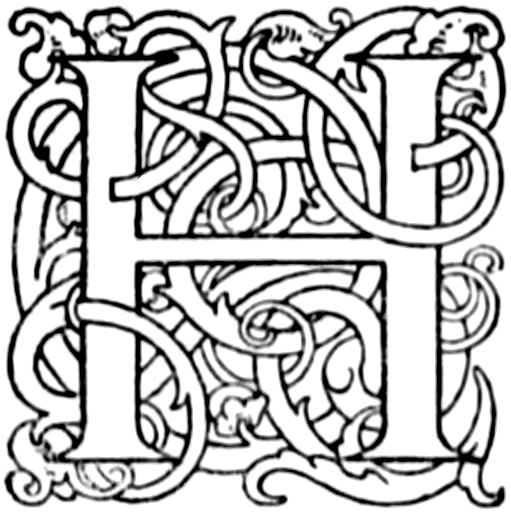
Hitherto we have devoted each chapter to special towns and their printers. In this, the final one, we shall deal with German initials that have not found a place elsewhere. Before, however, proceeding to their enumeration, we wish it to be understood that if certain towns or presses have not been given, it is because we have not wished to go beyond a certain limit. And for this reason we have preferred using the documents at our disposal to reproducing specimens of these presses from other sources. Were it otherwise, and had this recueil of initials been intended to be entirely representative, we should have considered it necessary to give specimens of the large letters used by Johann Scheffer in his Livy, of those designed by Cranach for Luft of Wittemberg, and of those used by Kobel of Oppenheim and of many others.
It should be said, moreover, that the greater number of what may be termed representative alphabets—those that occur most frequently in the publications of the time—have been already reproduced in works on Renaissance book ornamentation, whereas our initials have been selected because less generally met with, and consequently less known.
We have already given specimens of initials printed in red, which nearly always are found in missals; the three following are taken from the Missal of Spires, printed at the[104] expense of that honest ‘dominus Peter Drach,’ and dated 1500. In the copy of the Bibliothèque Nationale there is a fine engraving, before the Canon, of the Crucifixion with the date 1516, but these pictures were often added afterwards.
Although a comparatively small town, Hagenau towards the end of the first quarter of the sixteenth century had become an important printing centre, two printers at least making use of typographical ornaments. Those used by Heinrich Gran are not of the very first merit, as can be seen by reference to Butsch, who reproduces one of his title-pages. Thomas Anselm de Bade, on the contrary, has title-pages and initials from two different sources of the very greatest interest, as our reproductions show.
The nine very large letters, with the very much smaller E, are met with in several missals published after 1518, the most important of which is known as the Benedictine Missal, the Missale Bursfeldense. Missale denuo diligentissime castigatum et revisum ordinis sancti Benedicti reformatorum nigrorum Monachorum Bursfeldensium. As the reader can see, they differ in character from those found in any other missal, and have been attributed to Hans Baldung Grün, who also designed Anselm’s printer’s mark.
Nothing can be more charming than the little E with the children which commences so appropriately the verse beginning Ex ore infantium, and which gives still another example of the alliance so frequently met with between the serious and the grotesque. There is another set of initials in the same style, slightly smaller, in which the incidents on the T are reversed, the sacrifice of Abraham being on the left. They are to be found in the Strasburg Missal of Hagenau of 1518.
Another very good Hagenau series is the children’s alphabet used by the same Thomas Anselm in his Plinius of 1520, and said by Weigel in his Altdeutsches Holzschnittalphabet to have been designed by the elder Heinrich Vogtherr. It is on a somewhat smaller scale than the Dürer alphabet, and about the same size as that of Urs Graf. Artistically it occupies a middle place between the two.
[105]
These letters, which nearly form a complete series, were almost at once copied by Franc Birckmann of Cologne, the only difference being that the M and the R are on a black instead of a white ground, as in the Hagenau original.
Some of the letters were used in books published by Lucas Alantius of Vienna.
In the M, which is reproduced from a Vienna copy, there are some further modifications. The shield under the child’s left arm has been added, and there would appear to be a monogram between the pendent grapes and tassel not in the original.
The five letters, C, E, I, M, and O, the last representing the Massacre of the Innocents, belong to a collection where they are classed as coming from the missal of Magdeburg, which we have not been able to verify. They are said to be the only ones in the volume of this size, and are accompanied by a small ornamental series in the style of Cranach, who may very likely have designed the larger letters.
In the missal of Posen (Posnaniense) of 1524 there are only five ornamental letters, of which three are given, the T being a picture of the cathedral of the town as it was at the time.
The two Apocalyptic initials are typical specimens of the style of Cranach, and come from the Missale Evangeliare of Luther, printed by Lufft of Wittemberg in 1525.
We have mentioned above the alphabet of Cranach which is given by Butsch in his Bücher-Ornamentik. There are several smaller alphabets in the same style, in one of which is an initial representing a donkey sitting up with spectacles, no doubt a satire on the doctors of the church with whom Cranach had often to do. Wittemberg was one of the chief centres of the Lutheran controversy, and inundated Europe with tracts on the subject. A great many of these have ornamental title-pages, many of which were designed by Cranach in a style quite different from his initials. Those with children, which equal anything of the period, are particularly charming.
Nothing could be more fantastic than the subjects in the[106] series of initials, seven or eight altogether, of which the C, L, and T are specimens. What, however, they mean exactly we do not pretend to say. In the T there are apparently two Satyrs dancing a saraband, but the personage in the C would appear rather to be one of those weird creations that grow out of foliage under the pencil of the artist.
These letters are to be found no doubt in other publications of the same press, but those given here were taken from the Elegantiae of Laurentius Valla, printed in 1522 by Lazarus Schurer of Schlestadt. The complete series is known as the alphabet of Pilgrim ‘le maître aux Bourdons,’ Waechstein. Besides the C, L, and the T there are seven others in the Elegantiae; an H with a lion’s head, an I, two winged children; P and Q each with a child, R and S in the same style as the C, the latter having the head of a fantastic animal. There is also a smaller D with an extraordinary kind of winged satyr, and a Q with a couple of children.
Chronologically, we should have mentioned before the Missale Pataviense of Vienna, printed by J. Winterberger in 1512, which has initials of several dimensions, but most of them too indistinct for reproduction. Those chosen, C, P, S, T, are the best of the smaller series.
We have described in their proper places the Psalters of Ratdolt of 1499; of Furter of 1501-3; and of Knoblouch ten years later, all of them exactly uniform in size and arrangement, the two latter with German commentary framing the text. In all of these, ornamental initials are used occasionally, those in the two first-named volumes having exactly the same historiation, whilst in the Strasburg Psalter they are simply ornamental. The Psalter of Metz, printed by Caspar Hochffeder in 1513, is on the same general plan, but without any woodcut initials in the body of the volume; on the title-page, however, is the P given here, which is the only initial of this origin that we have been able to discover.
The four initials, comprising an O with the portrait in costume of a young girl, an outline T representing a money-changer’s office, and two others, are from a Pogge by Knoblouch, who printed several works of this author.
[107]
We have already had occasion to remark about the incongruity between certain books and the initials that embellish them, and the two D’s, one with a personage magnificently costumed, the other with a mandoline player, afford another example of this peculiarity. The volume from which they are taken is the Magdeburg Bible of 1542, printed by H. Walther. In this edition the different books of Scripture are preceded by initials of the same size as the reproductions, but nearly always with Biblical subjects corresponding to the text that is to follow. In Genesis, Adam and Eve are being chased by an angel with flaming sword from Paradise, and so on. The chapters of the books begin by smaller initials, with children romping and playing, in one letter torturing a cat, in another fighting a cock; whilst in a third a child is armed with a pewter squirt, apparently in no way different to the squirt of fifty years ago. Besides initials, this Bible is embellished with cuts, in some of which German castles of the fifteenth century serve as a background to Biblical scenes, and Jews and infidels sometimes wear costumes of the same period.
Scheffer’s large ornamental letters have been mentioned at the beginning of this chapter. In 1518 he was using a small alphabet in some of his publications, and a few initials of intermediate size, four of which are given by Butsch. There is an A with a naked woman sitting on the ground, two C’s with children, and an S, also with children, one of whom is playing on a kind of horn. The B, reproduced in the same style, not given by Butsch, is less frequently met with, Latin paragraphs rarely beginning with this initial.
Ingoldstadt is known to bibliographers chiefly by the Astronomicon Cesareum of 1540, a folio volume with movable astronomical diagrams. On the verso of the title are the arms of Charles V. and Ferdinand, to whom the book is dedicated. The last page is entirely covered by the arms of the printer, P. Apianus, which serve as his mark. Throughout the volume are the geometrical initials designed by Michael Ostendorfer, of which we give the best specimens, some of them occurring only once, others two, three, and four[108] times, the C occurring on ten occasions. There are twenty-two different letters in all, including a Greek Φ.
Another smaller alphabet of children occurs chiefly towards the end, to which set belongs a compound double initial, much wider than it is tall, which contains the letters Q, U. Besides these, there are four I’s with the four Evangelists, each one with his special symbol.
Although undoubtedly a pictorial initial, the C with which we terminate our German selection is not reproduced from a book, but was taken from a document of which we have seen several copies, a licence to marry within prohibited degrees. In this document the body of the text is printed in ordinary black-letter characters, with blanks for the names of the persons wishing to contract marriage. Above the text is a line of ornamental ‘bullatic’ letters, as they are termed, preceded by the C here given, which form together the word ‘Collegium,’ the meaning of the historiation being no doubt that St. Peter with his key has delegated his power to open the Paradise of Matrimony.
[108a]
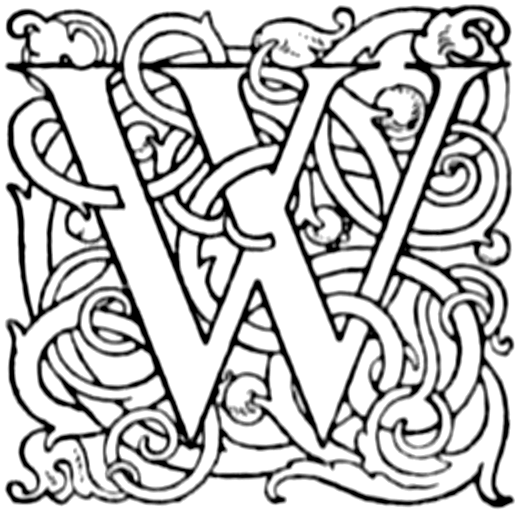
With very few exceptions the decorative and pictorial initials reproduced from foreign books on the preceding pages have been chosen from works printed before 1525, and in most cases before 1500. In Germany, Italy, France, and the Netherlands, schools of cutters and engravers in wood and soft metal with strongly marked local characteristics came into existence before 1490—in Germany some twenty years earlier—and during the last decade of the century numerous finely illustrated books were issued from the chief continental presses. The good work of one country or town might be imitated, slavishly or freely, in another; here and there also the work produced was quaintly or stupidly bad, and good designs were often spoilt by clumsy cutting. But despite all such individual failures, there was abundance of originality and executive skill, and this is true also, though in a less degree, of Switzerland and Spain. When we turn our eyes homewards, we find a totally different state of affairs. The few English illustrated books of the period with which this monograph is mainly concerned have been divided by specialists into three groups:[34] those with cuts borrowed outright from the Netherlands or France (e.g. Caxton’s Horae cuts, the illustrations in Pynson’s edition of[108b] Lydgate’s Falls of Princes, etc.); those slavishly copied, mostly, but not always, very badly, from foreign originals (e.g. Caxton’s Aesop, the editions of the Castell of Labour, Art of Good Living and Good Dyeing, the Ship of Fools, and most of the odd single cuts); lastly, a scanty residue of native origin, illustrating books like the Canterbury Tales or Morte d’Arthur, for which no foreign models could be found. Some of these are almost incredibly bad, others merely wooden, a very few, like the cut to Fisher’s funeral sermon for Henry VII., fairly neat. But, again speaking generally, it is evident that English printers could enlist the services of no designers of any skill and of few woodcutters able to rival the average journeyman-work in foreign books.
[34] Consult an extremely interesting paper on this subject, ‘Initial Letters in Early English Printed Books,’ by Charles Sayle. Bibliographical Society’s Transactions, 1904.
Good initials demanded little less skill from their designers, and certainly no less from their cutters, than the larger forms of book-illustration. The great continental centres of printing prove abundantly that good initials are the natural accompaniments of good illustrations, and thus there is no room for surprise that in England, where there was no competent native school of book-illustration, there was also no competent native school of initial-cutters.
Of the fact there can be no doubt. Caxton possessed only one initial of any size, the A shown among our facsimiles, which he used in one or two of his later books. His contemporaries possessed none at all. After Caxton’s death in 1491, for the next half-century and more the history of English initials is as the history of our book-illustrations—they are imported from abroad, copied from foreign originals, or of no artistic value. An early instance of importation is the large grotesque H, shown in facsimile, which De Worde acquired early in his career from Govaert van Os when the latter was moving to Copenhagen; in the same way Julian Notary obtained a few letters from André Bocard. Though it may be thought churlish to look outside England when we find a rebus on an English name, it can hardly be doubted that the initials cut for Pynson’s Morton Missal, of which specimens are given, were made for him in France. Certainly no one could claim these letters as[108c] starting an independent English school, and most of those subsequently used by Pynson and De Worde are direct copies, or imitations, from the French. Thus it is only by transcending our bounds that we can offer a few examples of English initials which have at least more independence than these early ventures. It, perhaps, shows some rashness to include among them the excellent H from Grafton’s edition of Halle’s Union of the two Houses of York and Lancaster (1548), for this may perchance have been inspired by those in the Paris edition of the Historia Danica of Saxo Grammaticus (see pages 85 and 230). Nevertheless the book is important, because it was on heraldic lines that some of the best later work was produced. Much of this may be connected with the name of that excellent printer John Day. The pictorial initial to the Bible of 1549, showing Edward Becke, the promoter of the edition, presenting a copy to Edward VI., is full of life, and the portrait initial of Elizabeth from Foxe’s Book of Martyrs is excellent work. Between these two books Day had issued, in 1559, a fine edition of Cunningham’s Cosmographical Glasse, and this is adorned by an admirable heraldic D with the arms of the Earl of Leicester, and by some pictorial initials connected with the subject of the book, the authorship of these being still undiscovered, despite the letters IB, IC, ID, found on some of them. At a later date work of the same style appears in his edition of Ascham’s Schoolmaster.
It is a pity that Day, not being the royal printer, could not be entrusted with printing the Bishops’ Bible of 1568, which came from the press of Jugge and Cawood. But his patron, Archbishop Parker, had, of course, a large share in its superintendence, and some of the heraldic initials in the volume are almost as good as the Leicester D. That which has been chosen as a sample shows the arms of Archbishop Cranmer, a pleasing compliment from Parker to his predecessor.
The ornamental title-page to the Bishops’ Bible is not woodcut but engraved on copper, and the fact is significant. Under Day’s guidance English printing and book-illustration[108d] lifted up their head, but the effort came too late. After about 1580 woodcuts became unfashionable, copper engravings gradually took their place, and the change was fatal to the production of fine initials, of which no more were produced.
[111]
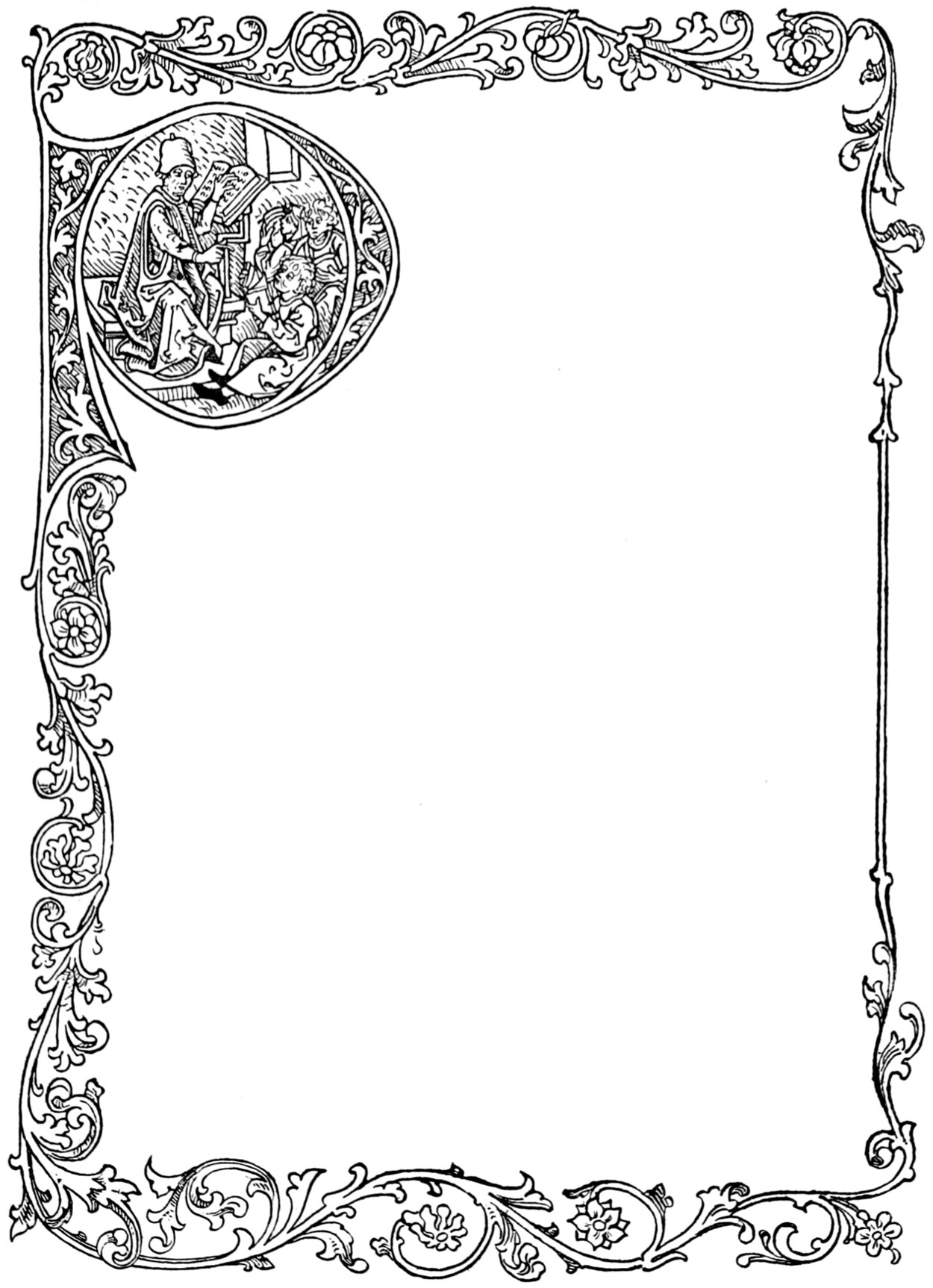
INITIAL WITH BORDER FROM THE XYLOGRAPHIC DONATUS OF DINCKMUT
[112]
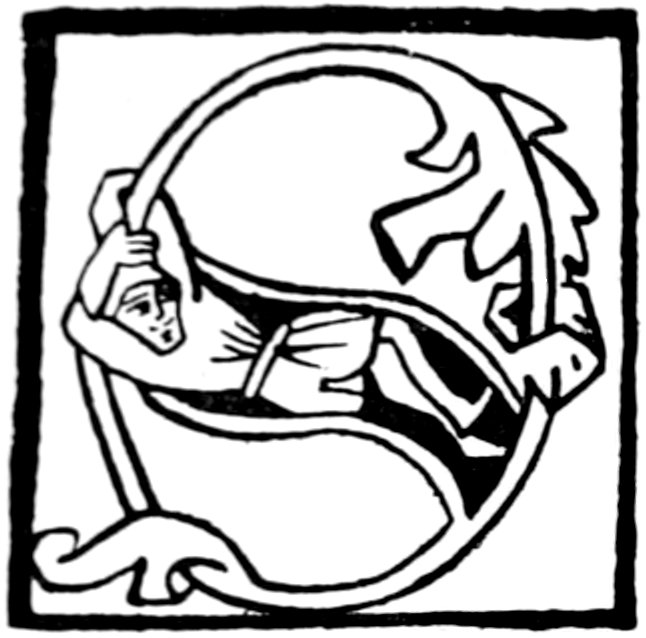
FROM AN ‘ARS MEMORANDI’
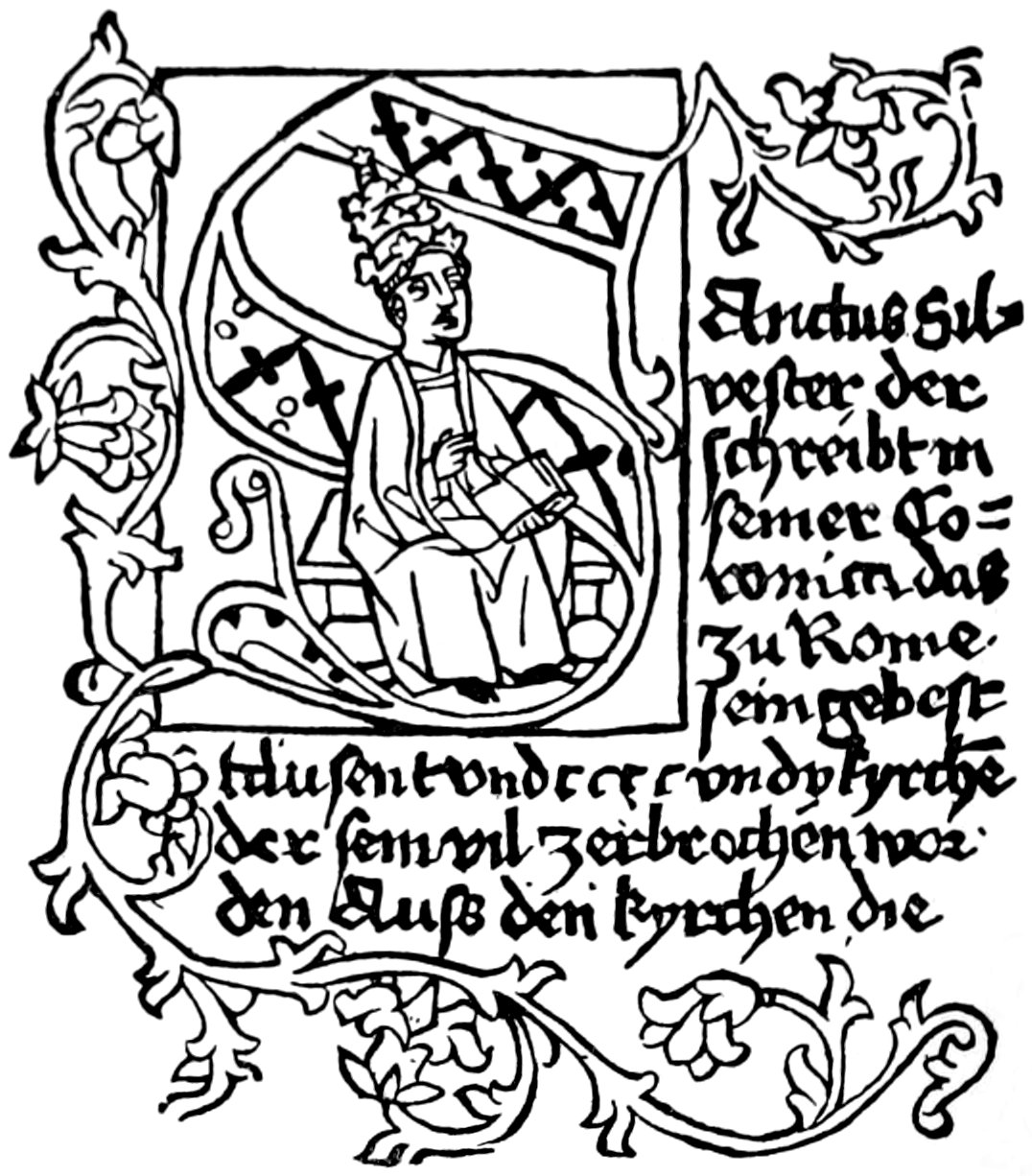
FROM THE ‘MIRABILIA ROMAE’
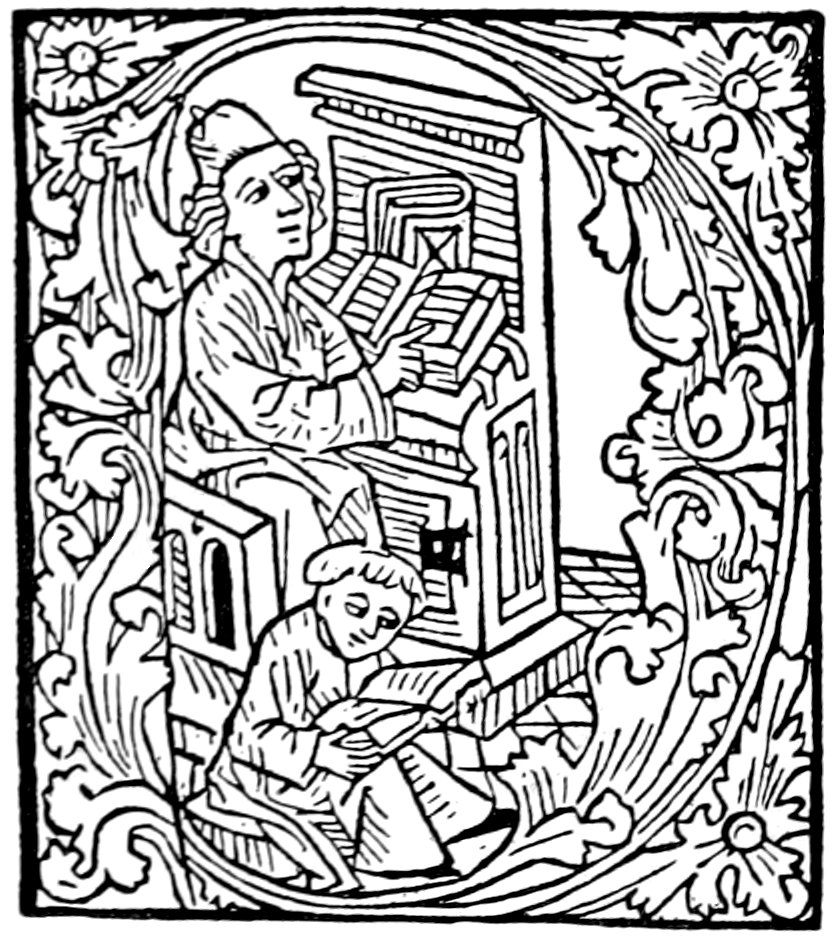
FROM THE ÆSOP OF SCHEFFER
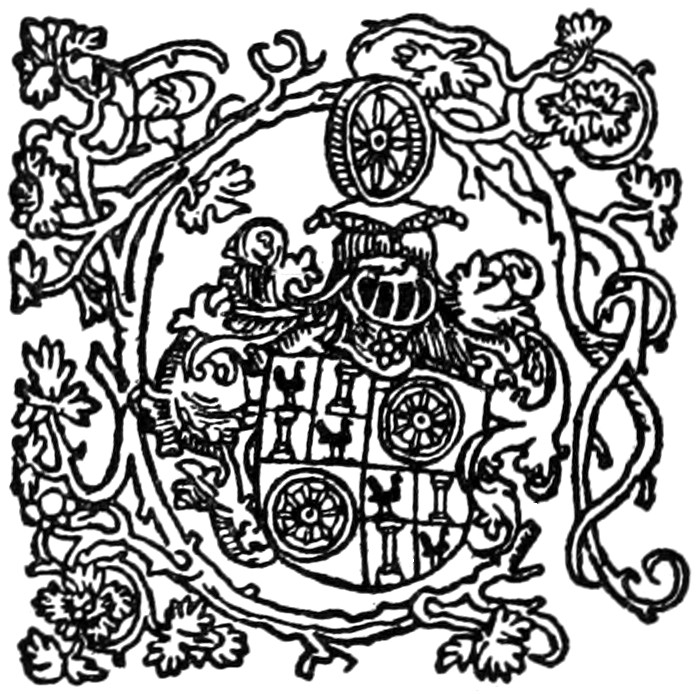
FROM THE BREIDENBACH OF ERHARDT REUWICH
[113]
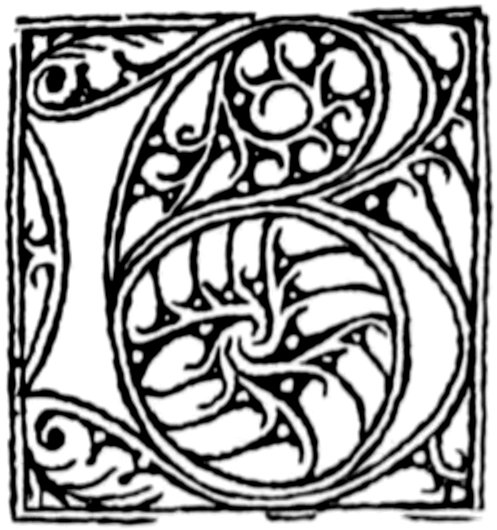
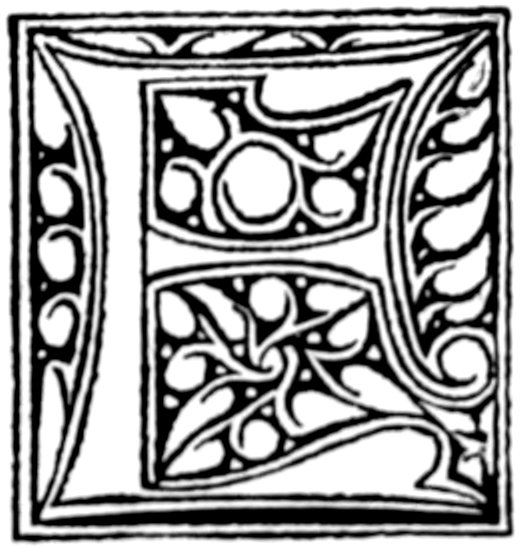

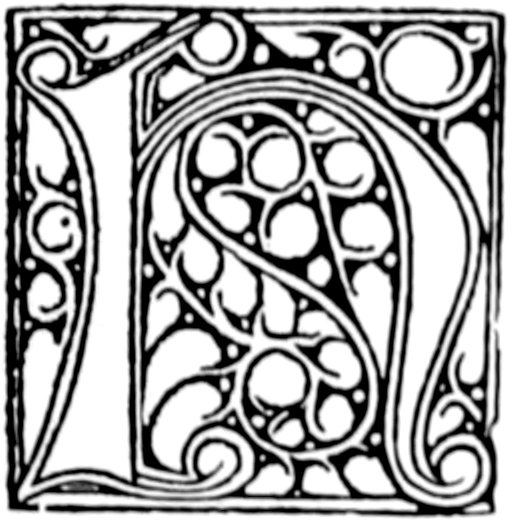
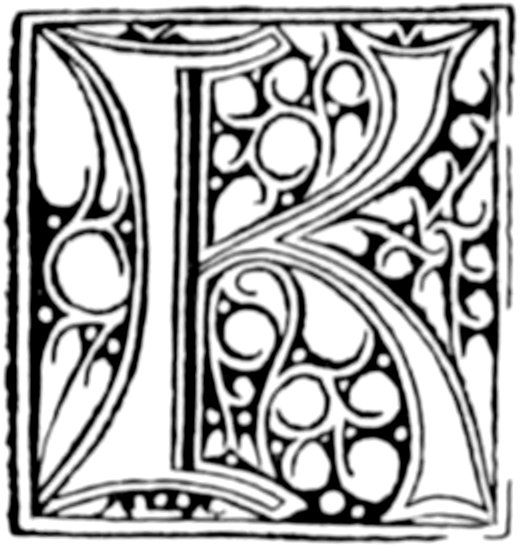
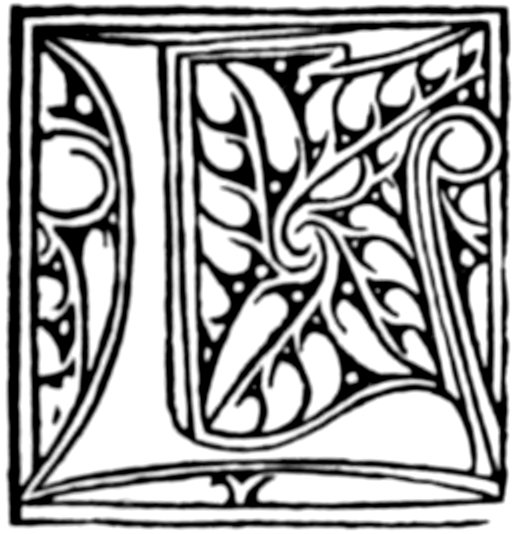
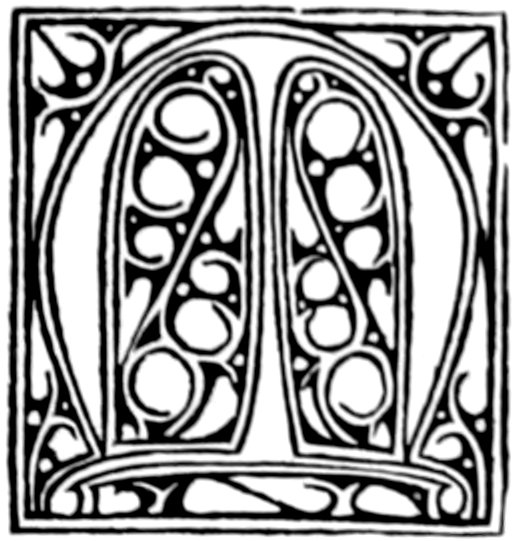
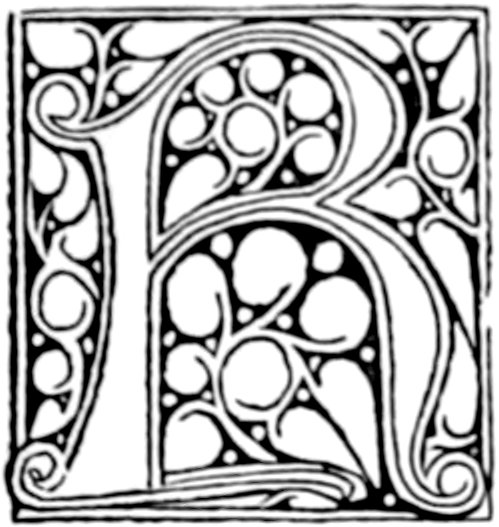
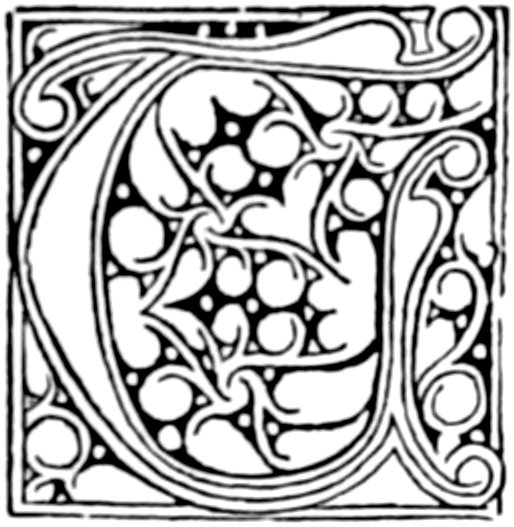
FROM G. ZAINER’S SIXTH GERMAN BIBLE AND J. FRIBURGENSIS’ ‘SUMMA CONFESSORUM’
[114]
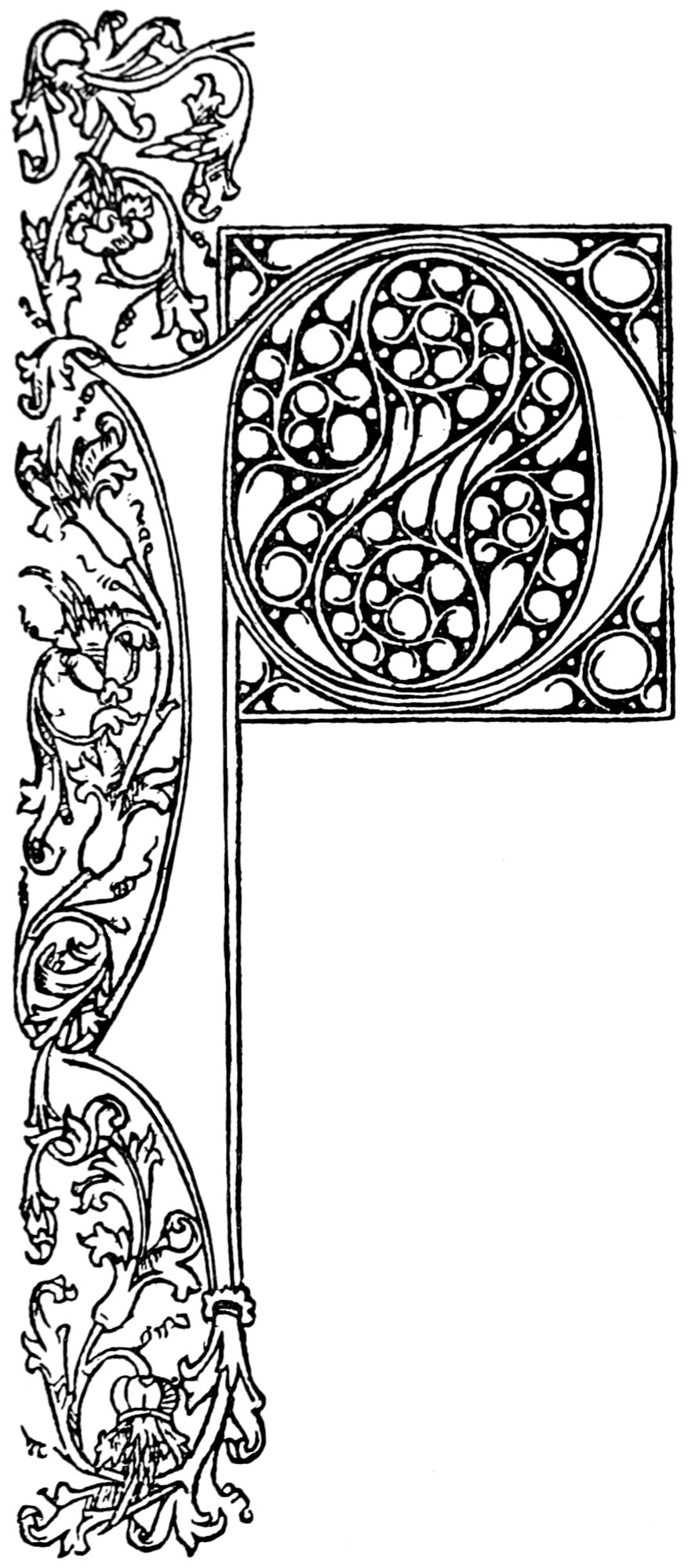
FROM G. ZAINER’S ‘MARGARITA DAVITICA’
[115]
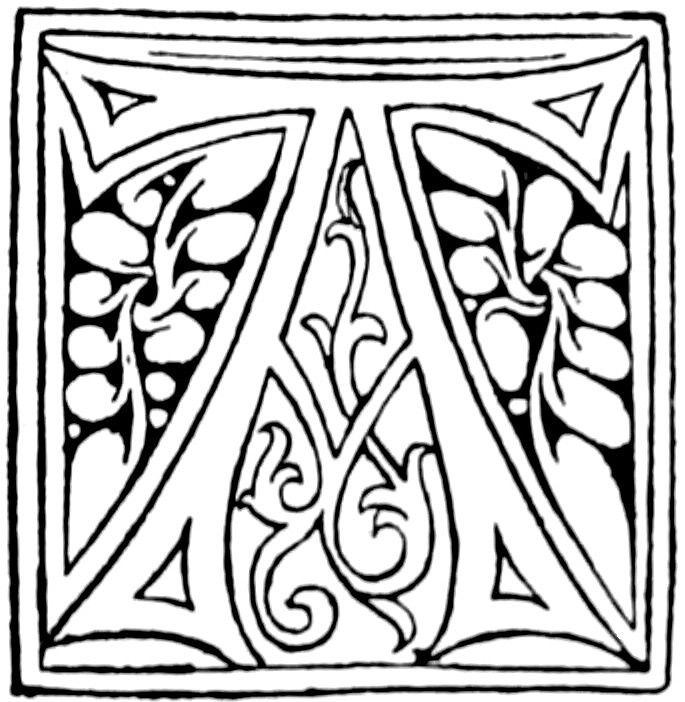
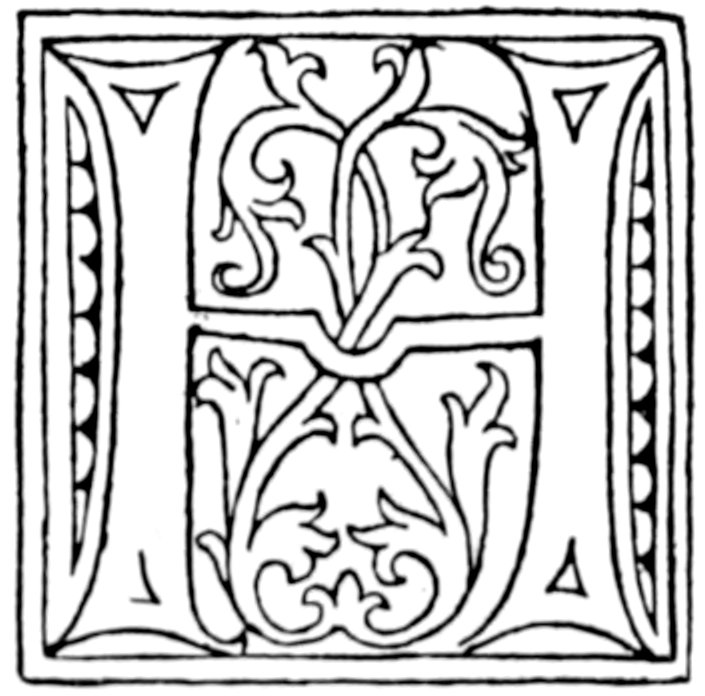
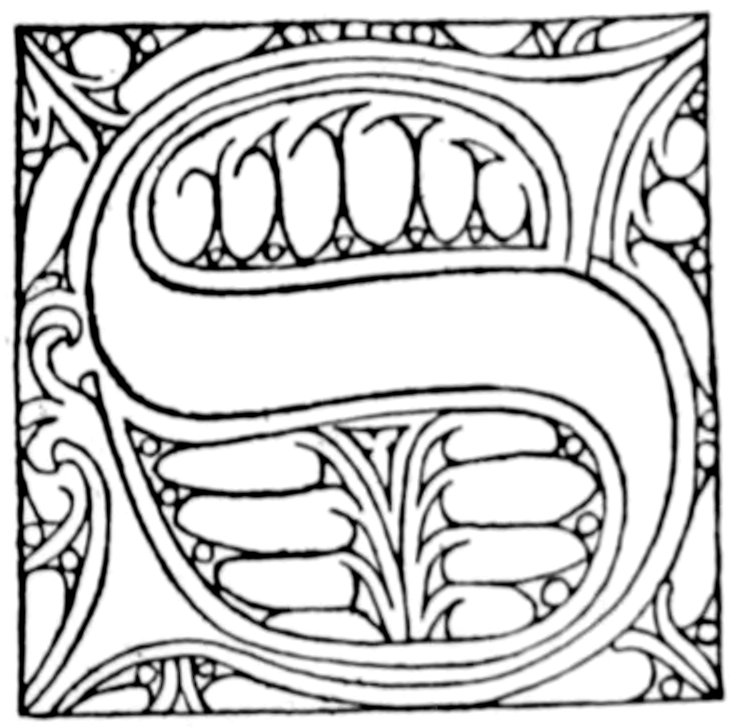
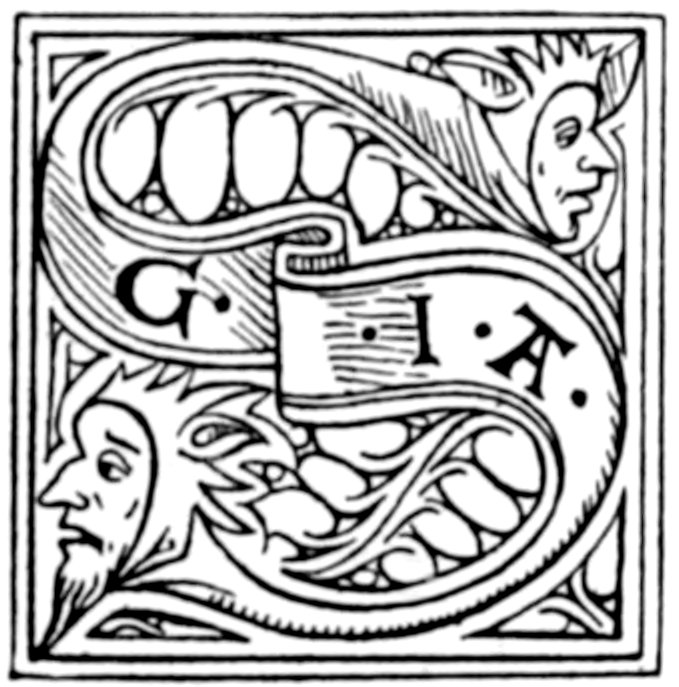
INITIALS OF SORG
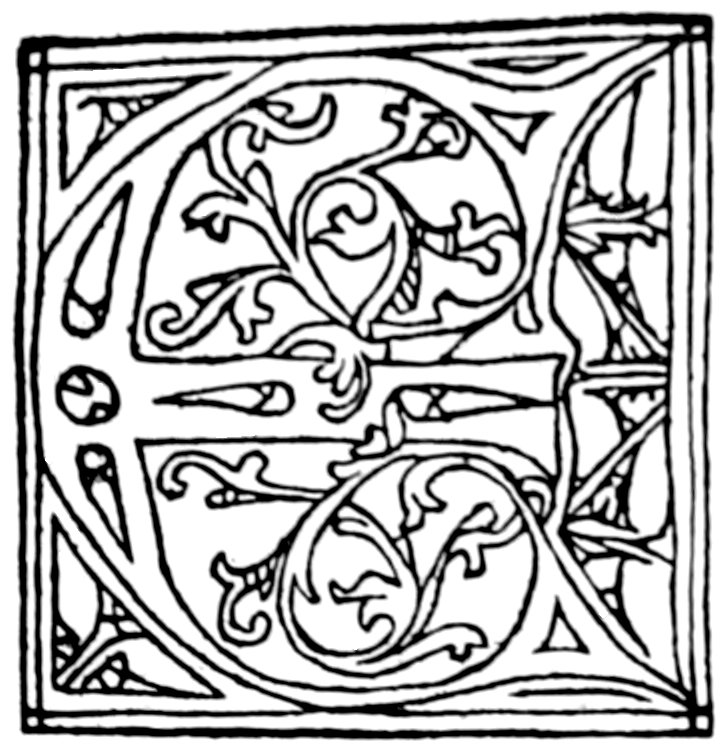
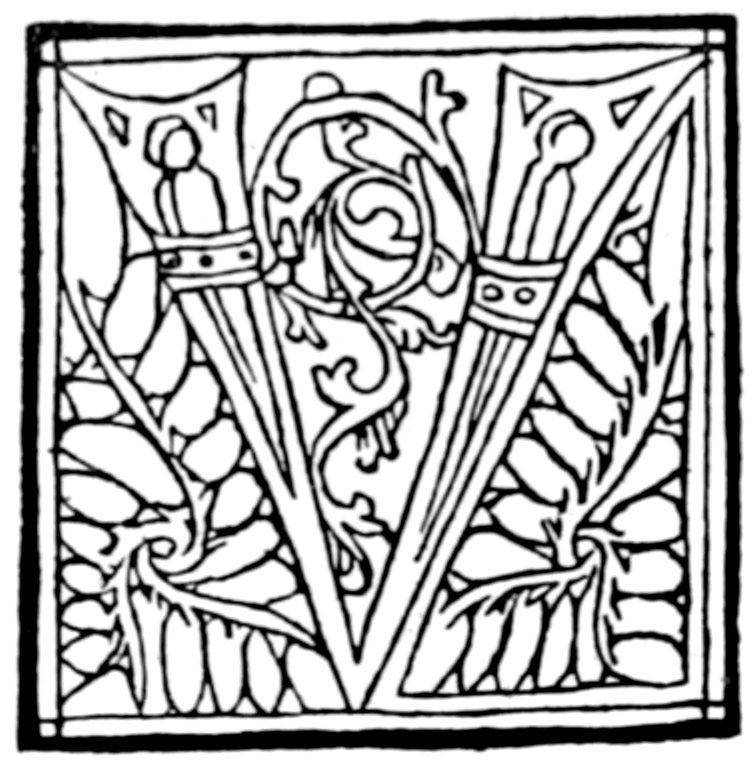
INITIALS OF KELLER
[116]
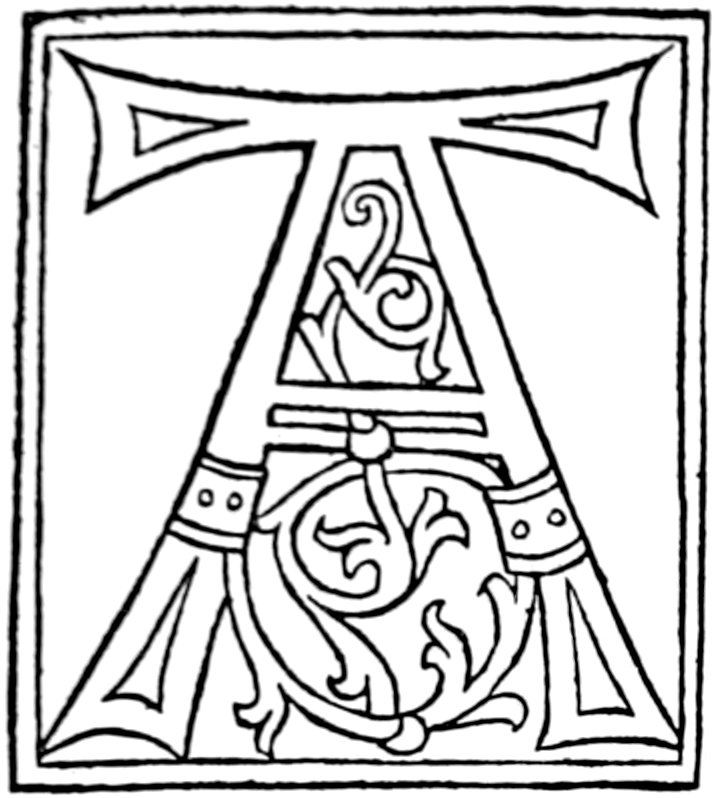
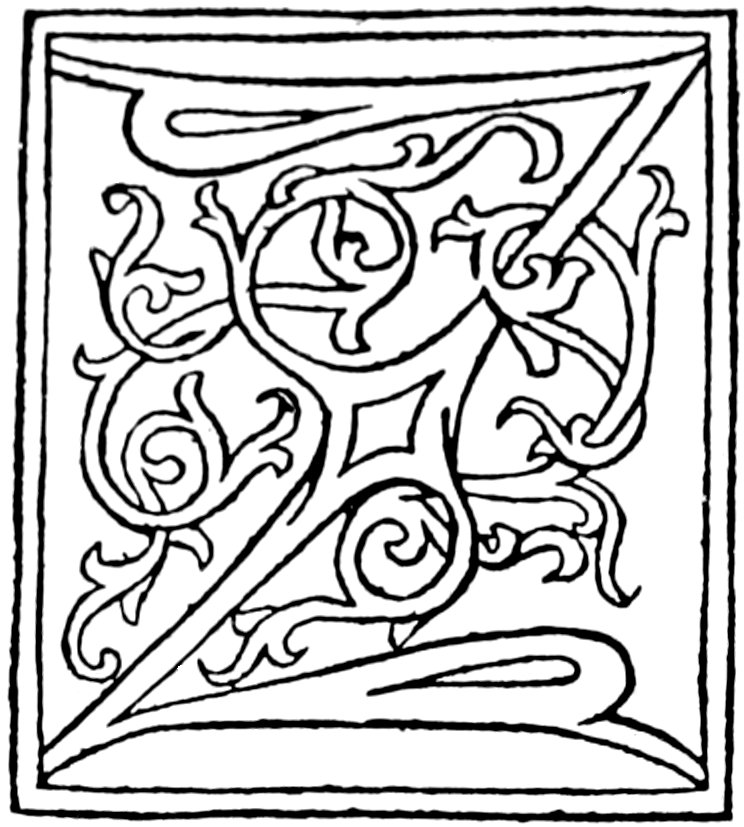
INITIALS OF HOHENWANG AND PFLANTZMANN
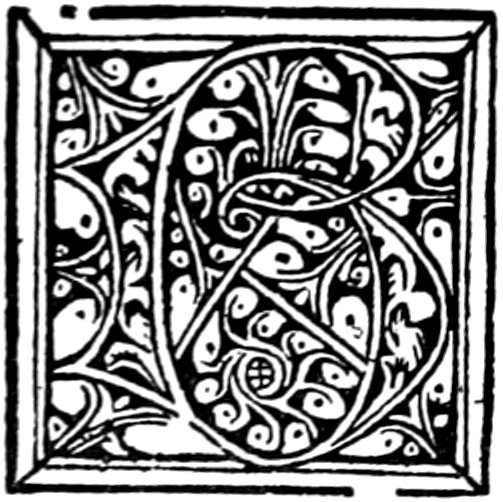
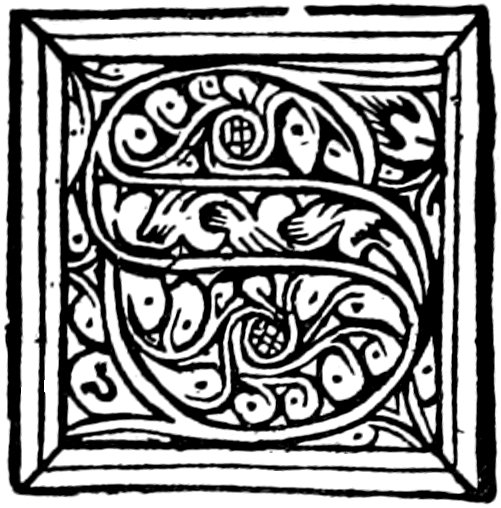
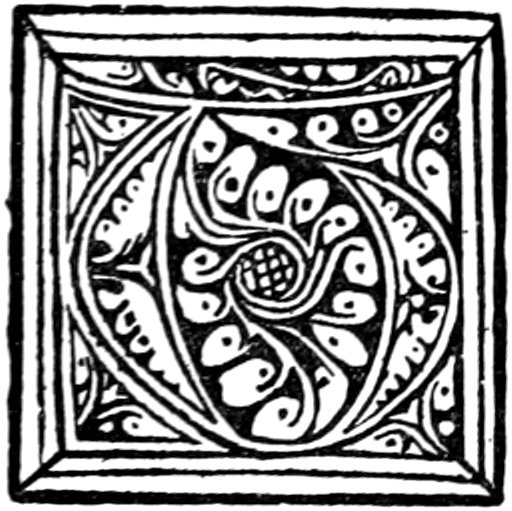
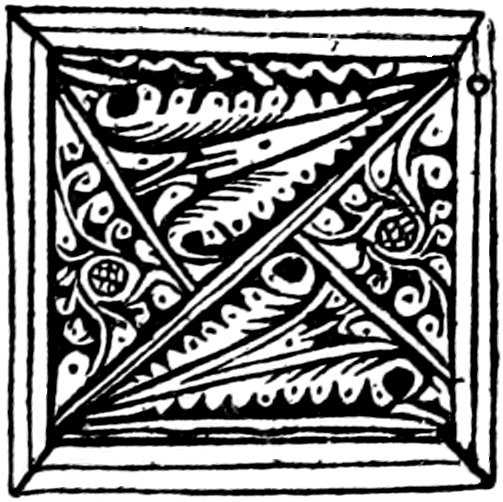
INITIALS OF SCHÖNSPERGER
[117]
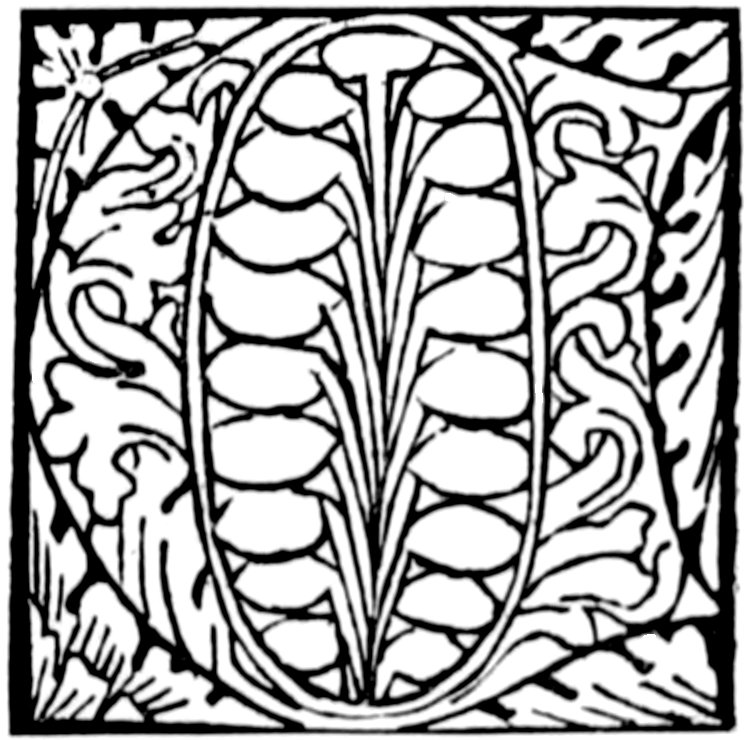
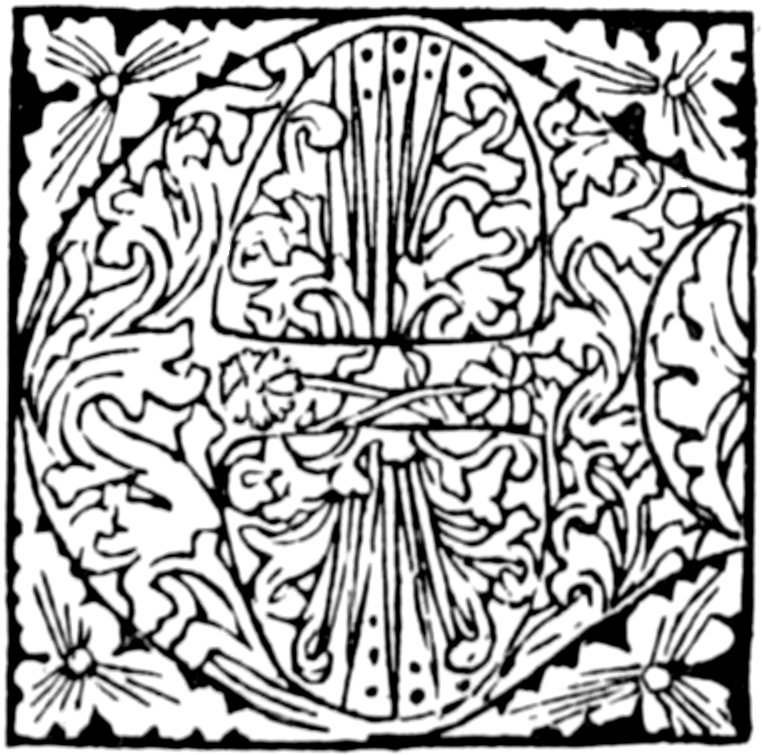
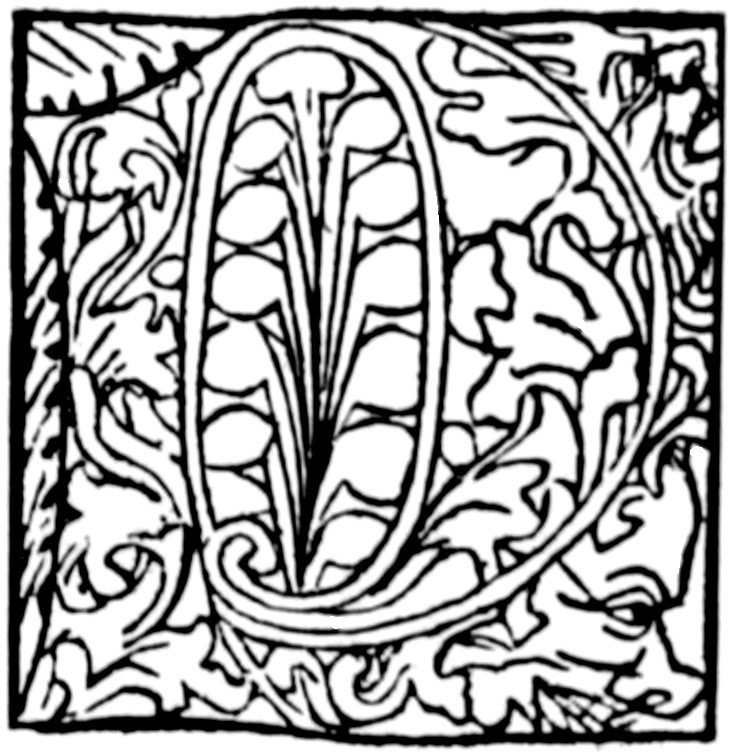

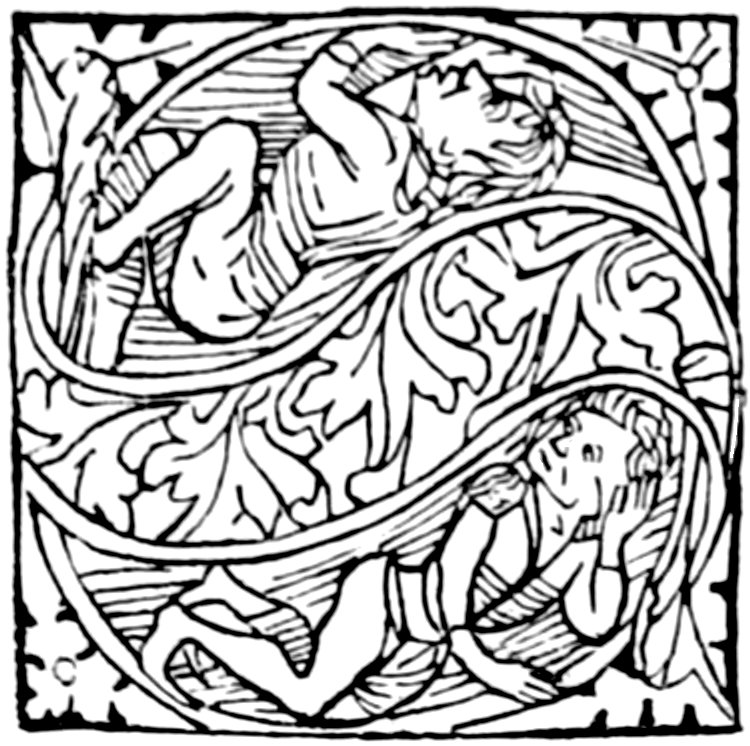
INITIALS OF BÄMLER
[118]
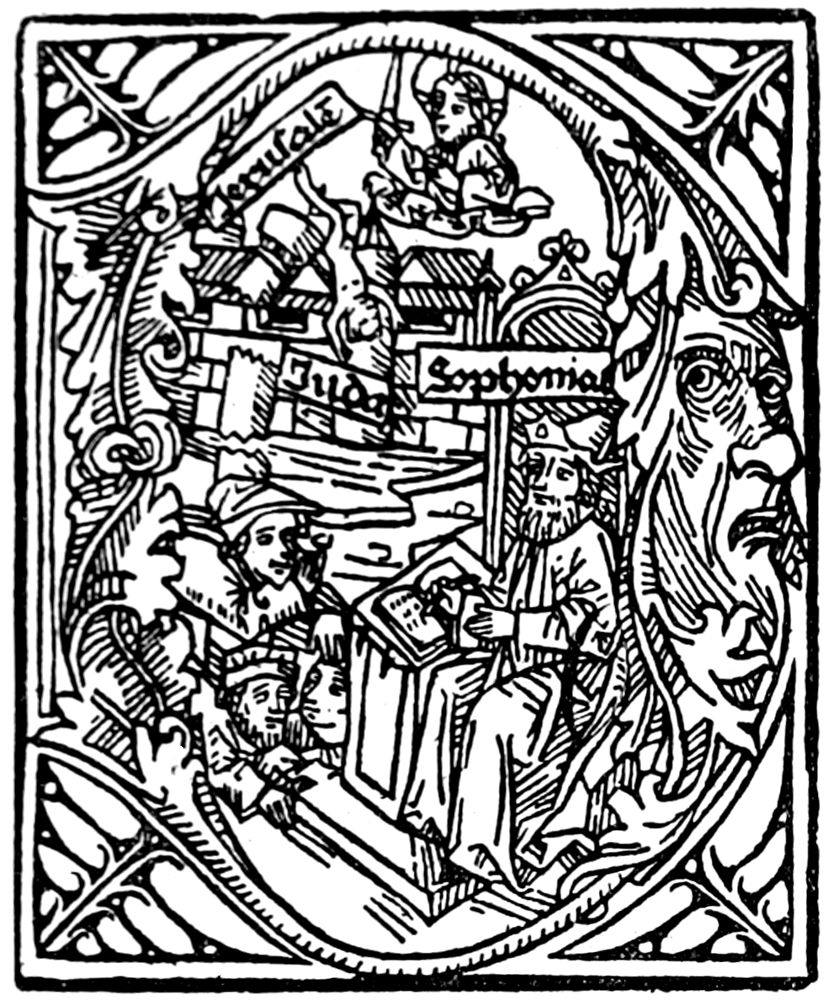
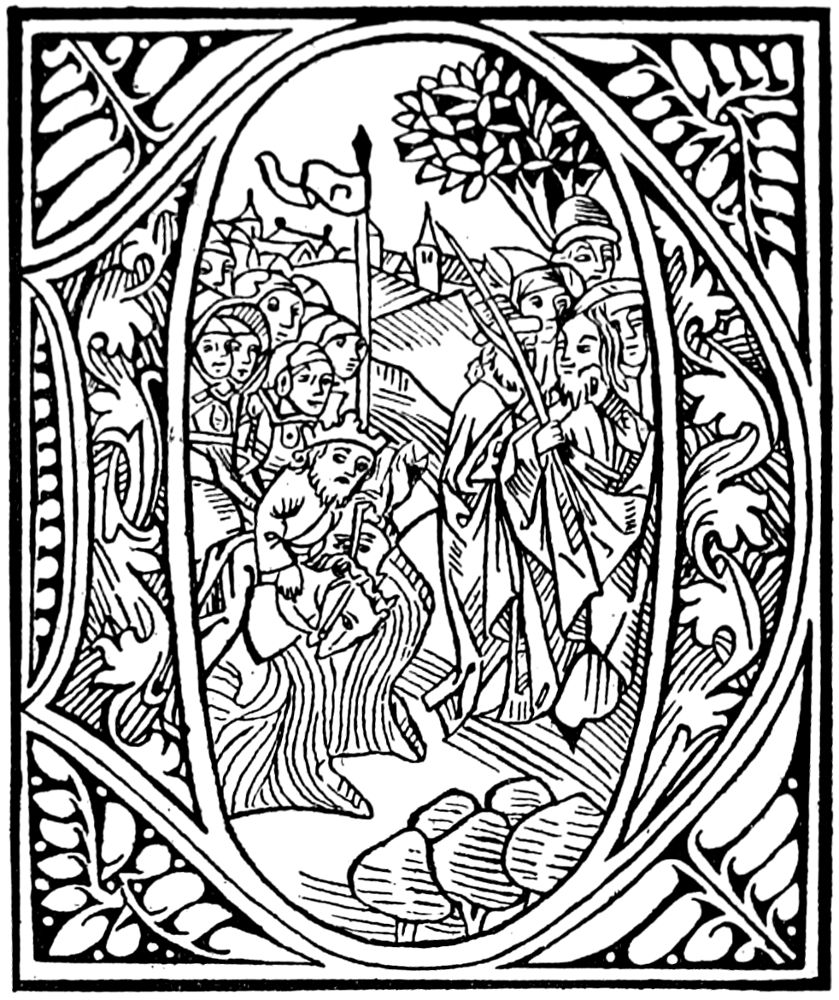
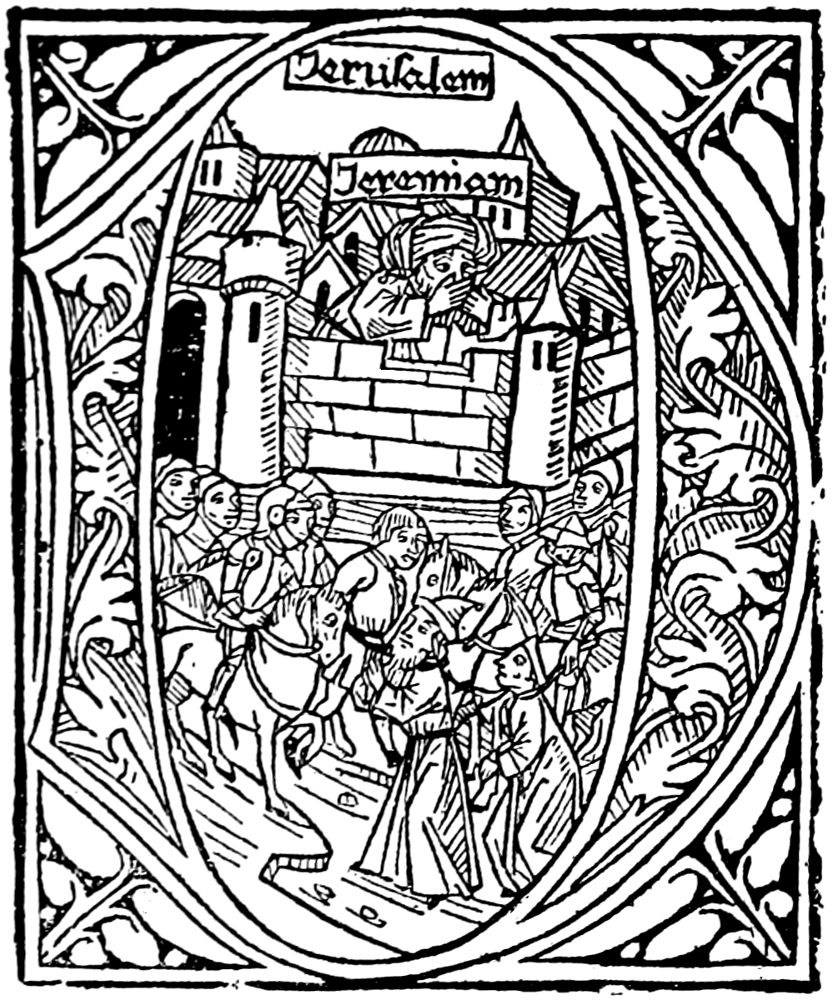
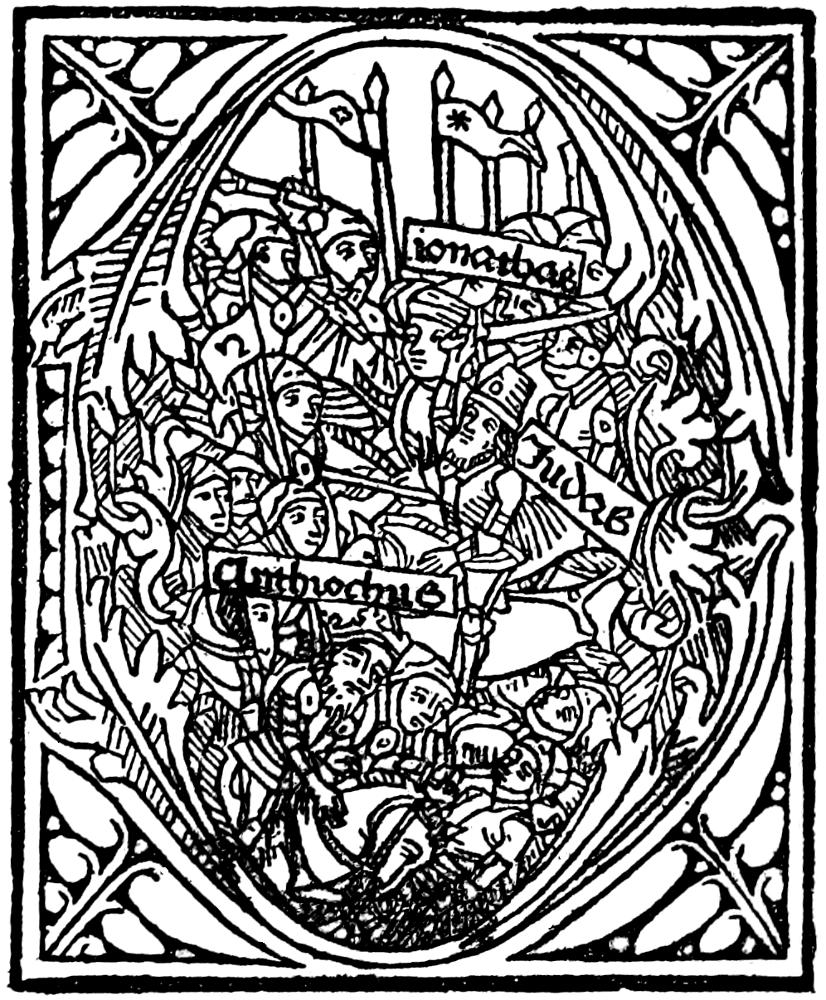
FROM G. ZAINER’S GERMAN BIBLE
[119]
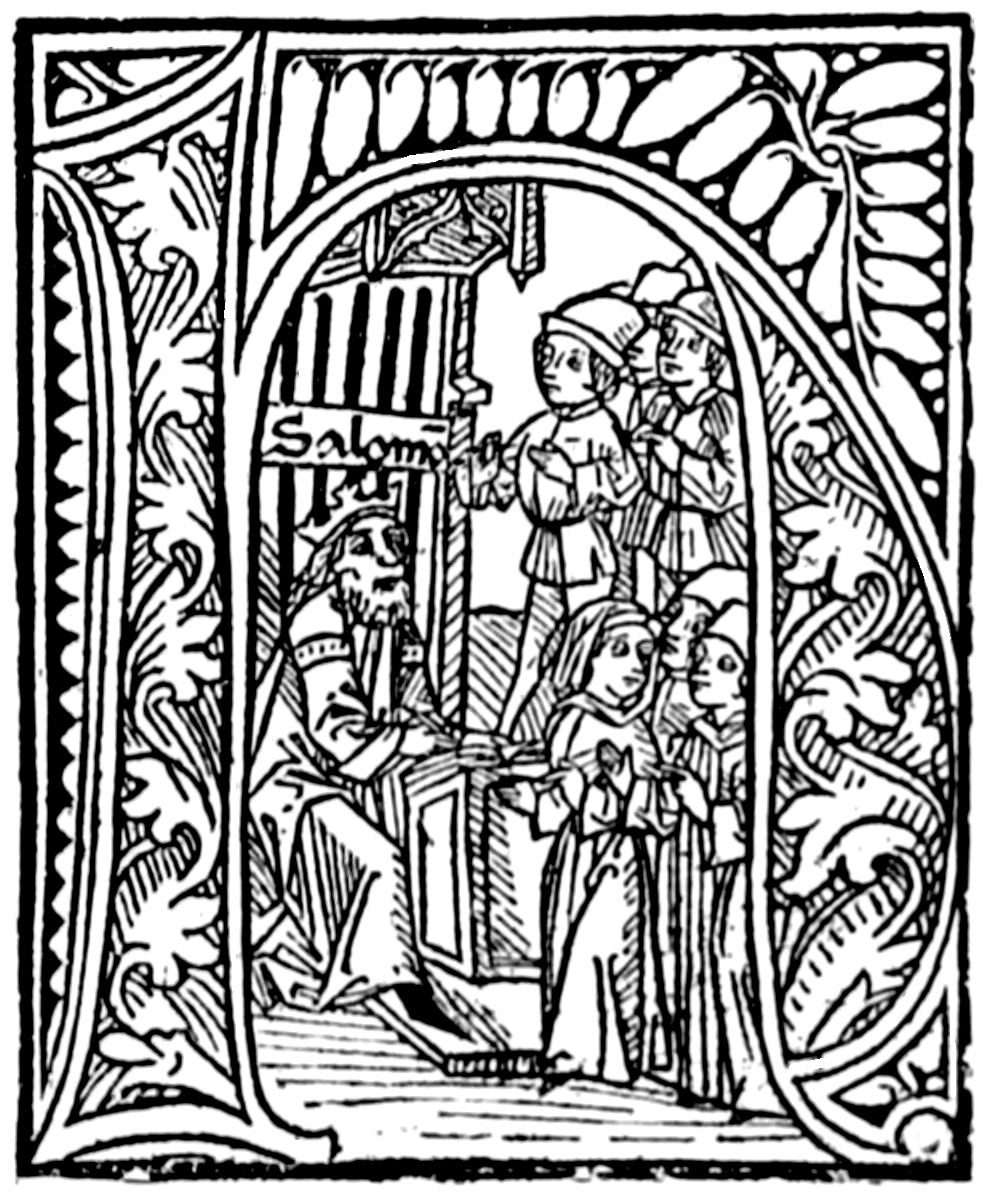
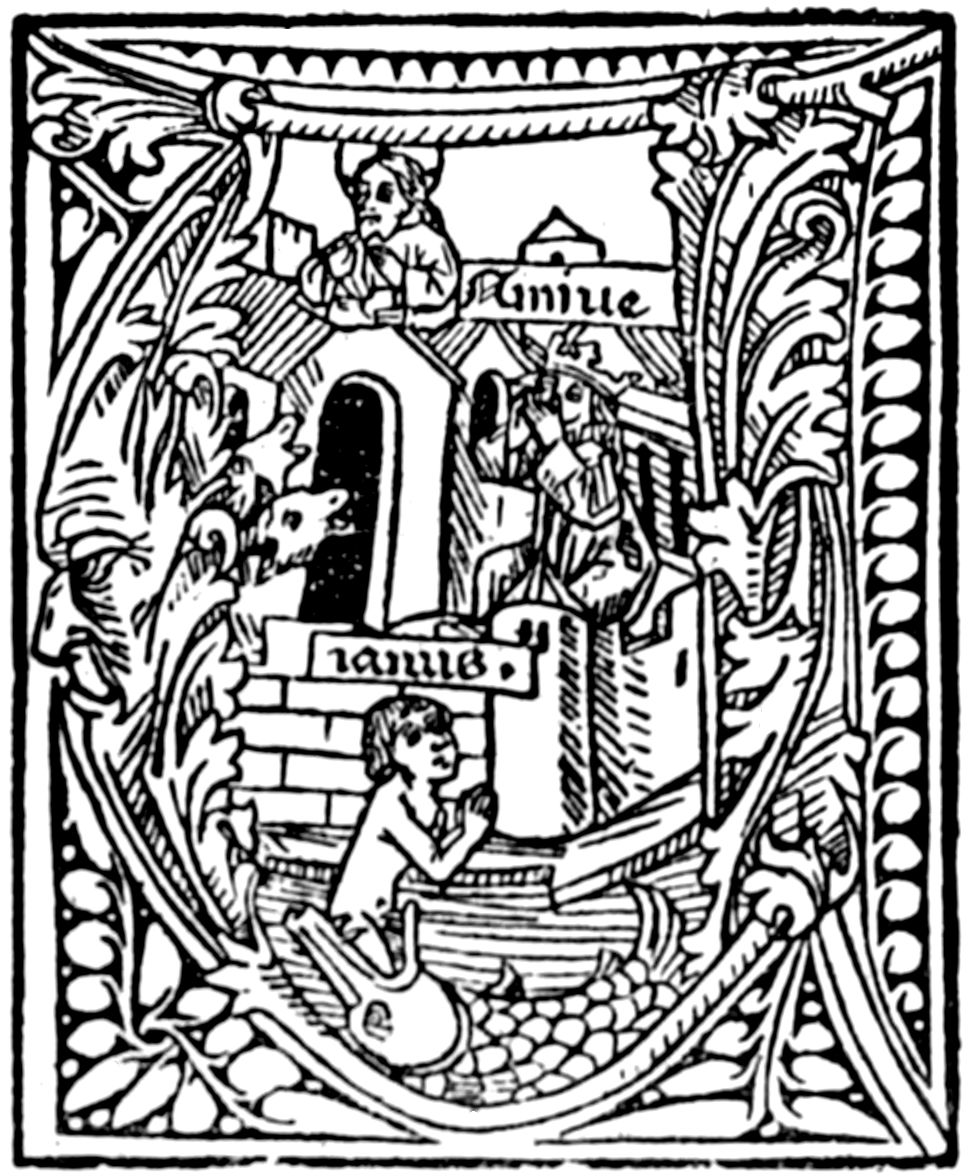
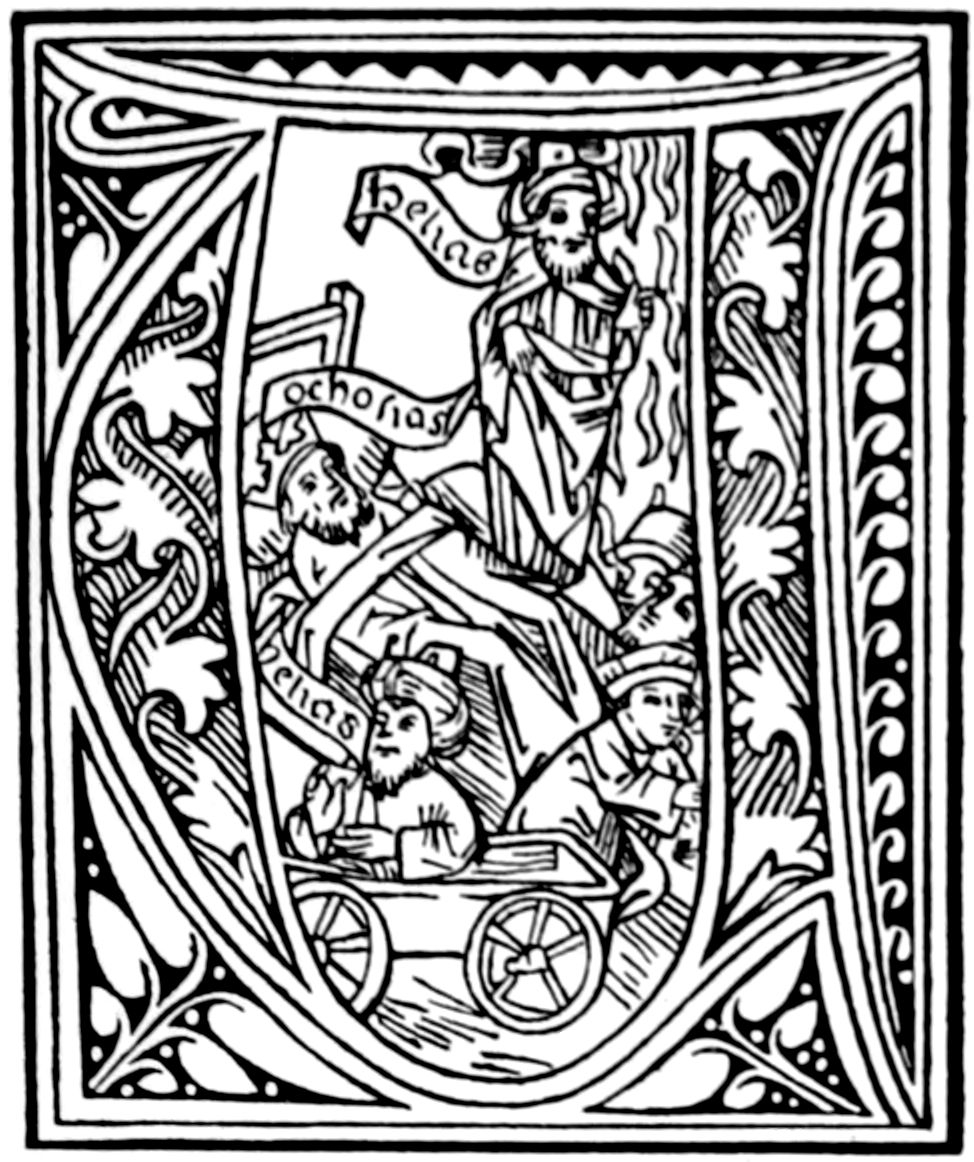
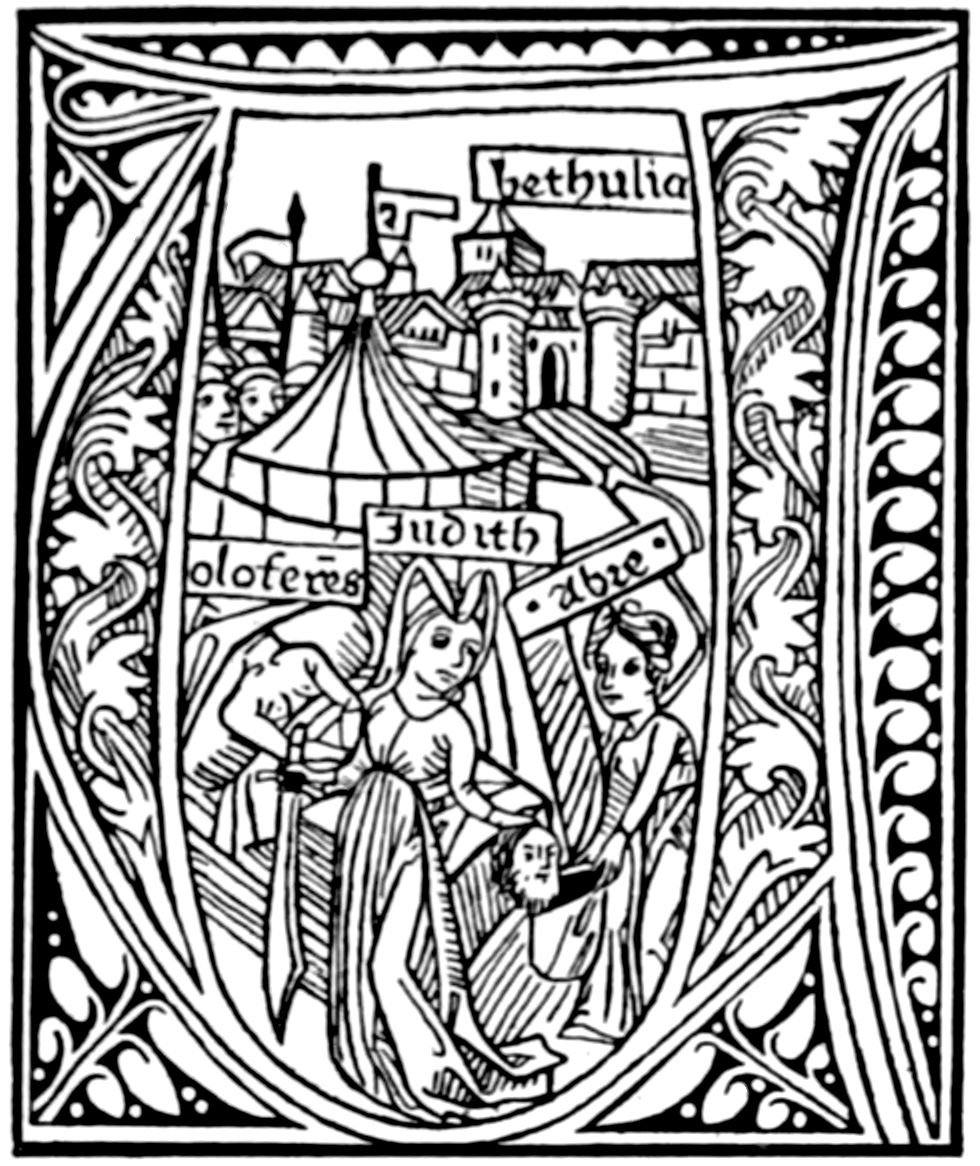
FROM G. ZAINER’S GERMAN BIBLE
[120]
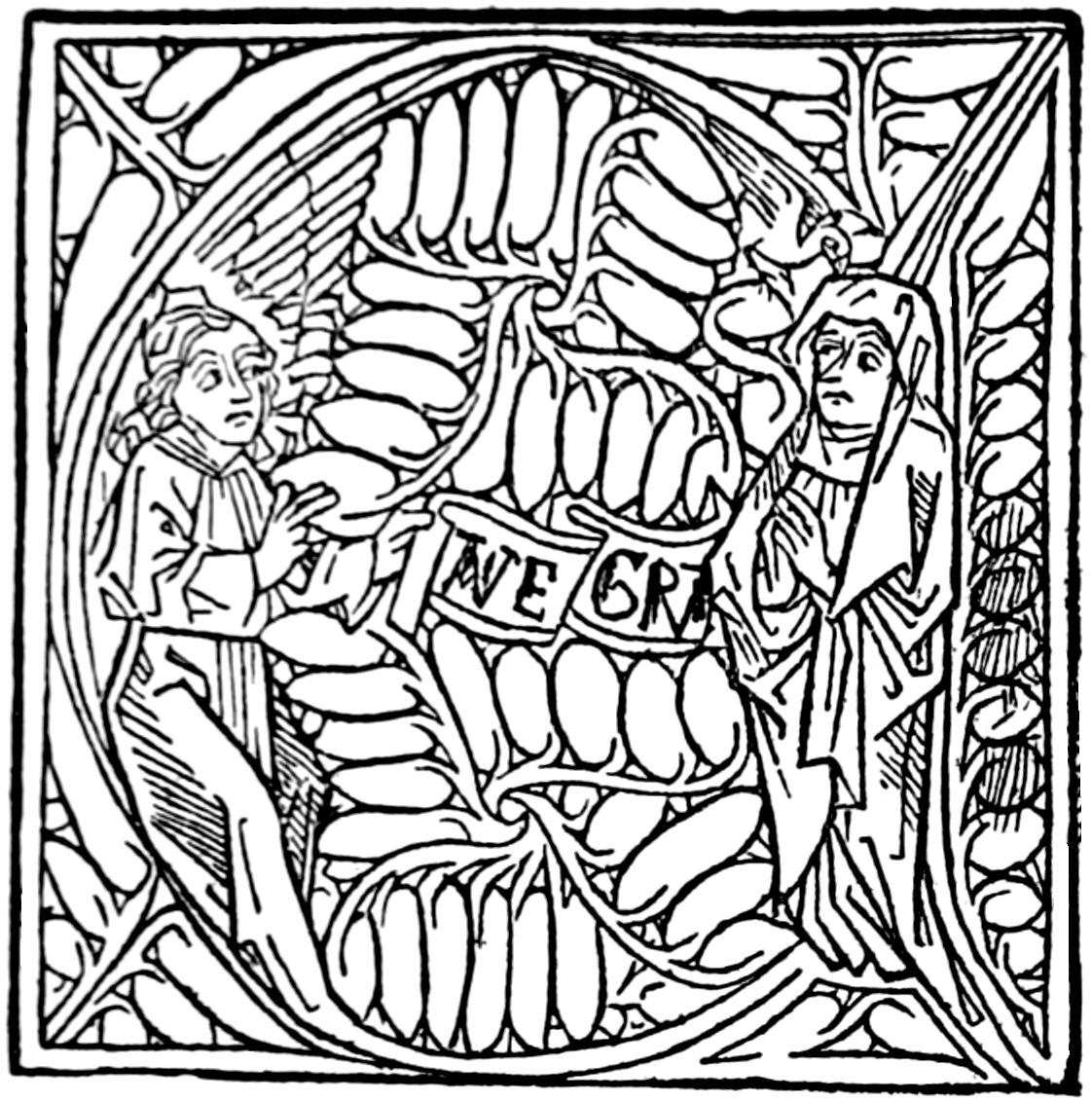
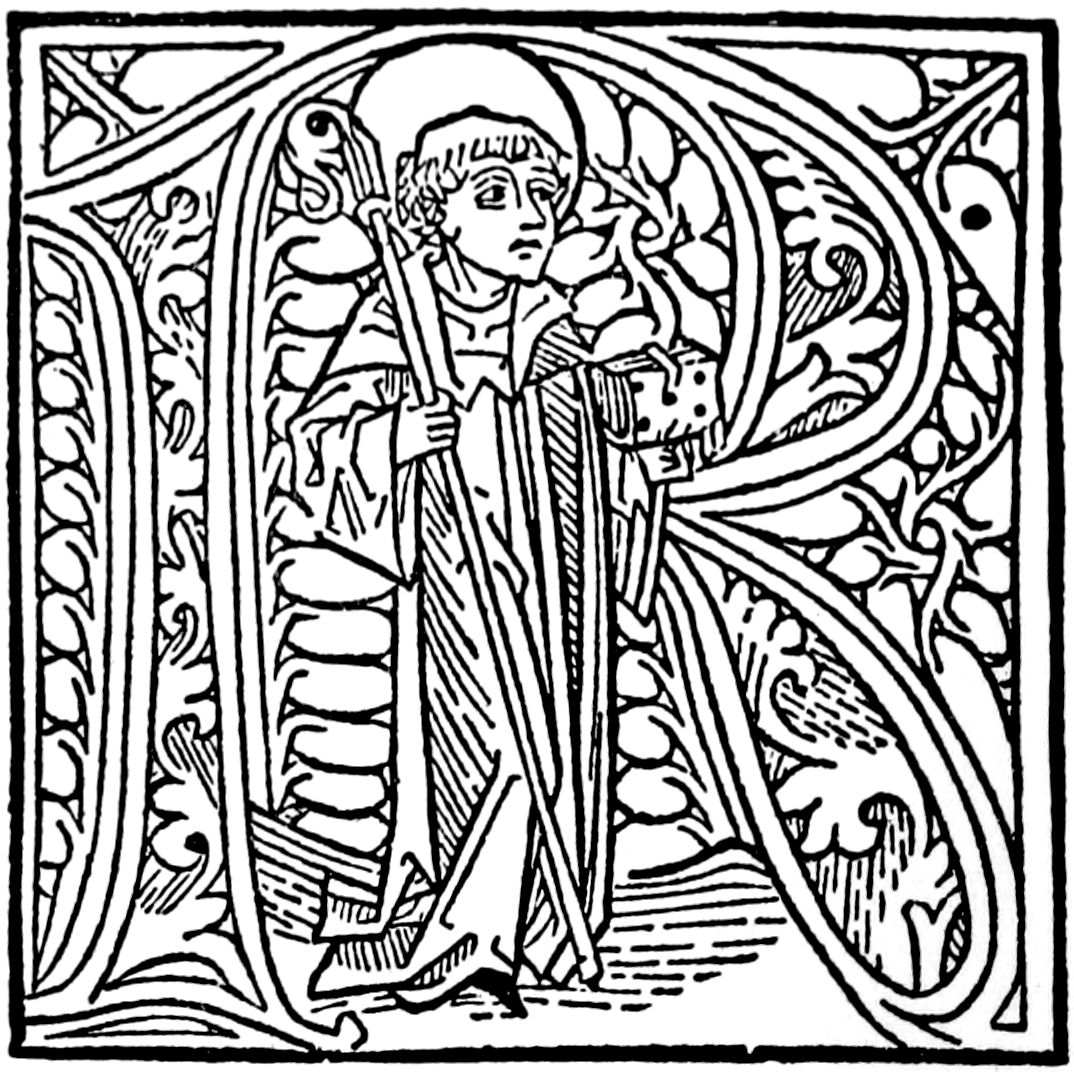
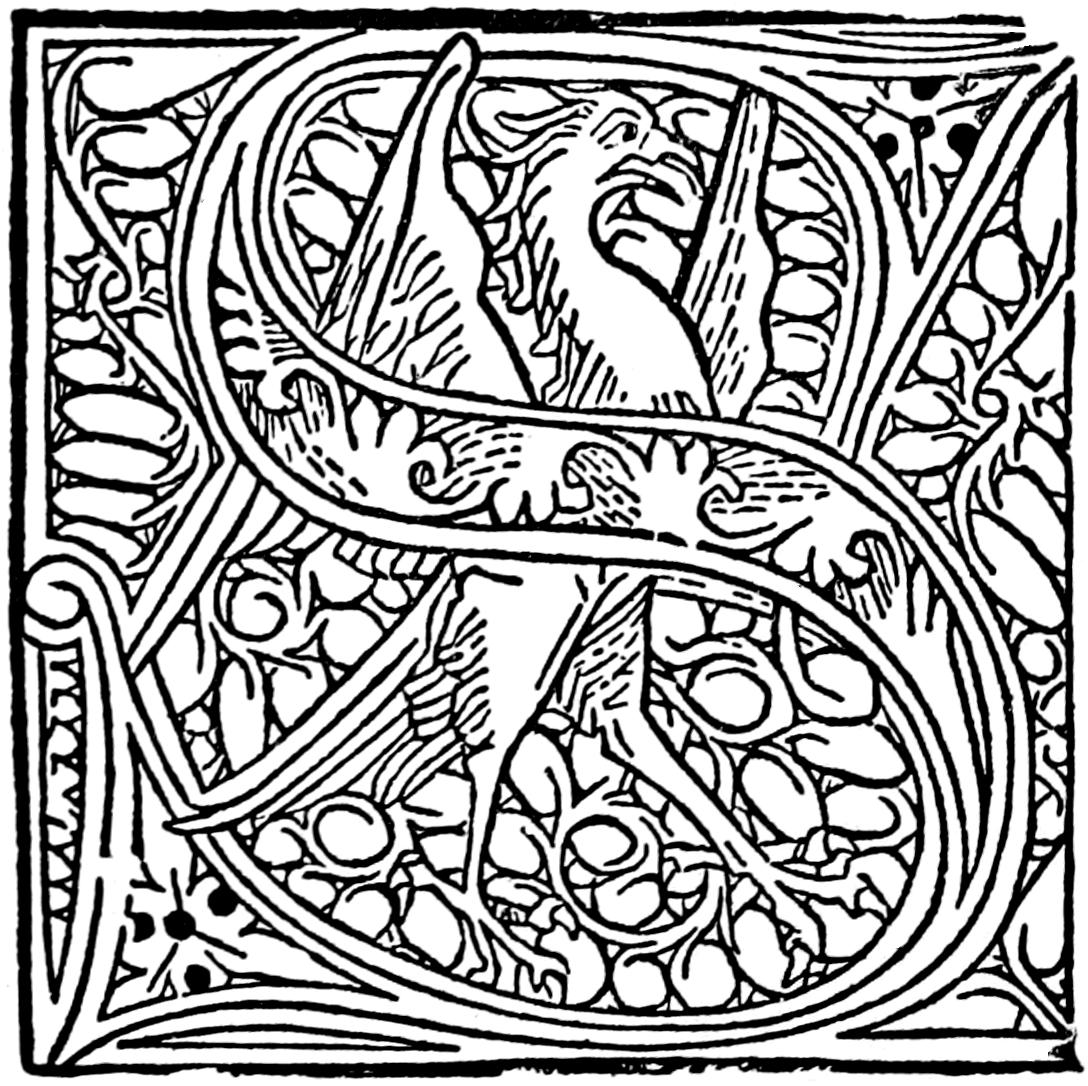
FROM SORG’S ‘SUSO DICTUS AMANDUS’
[121]


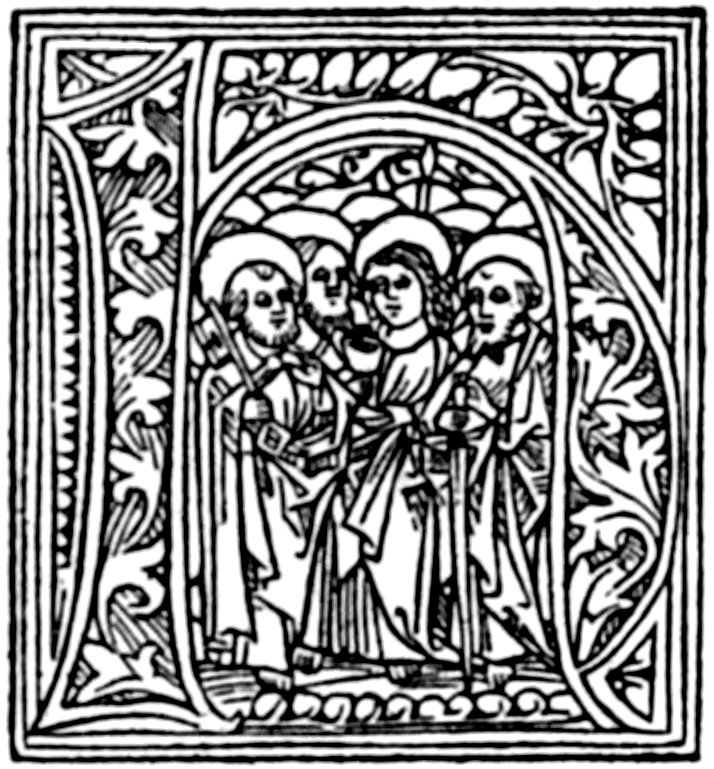
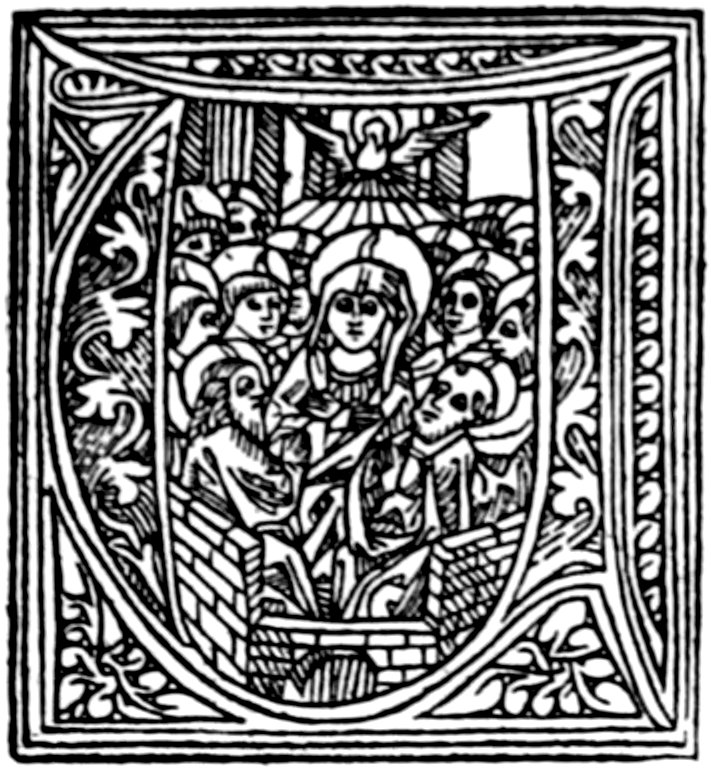
FROM RATDOLT’S BREVIARY, 1491
[122]
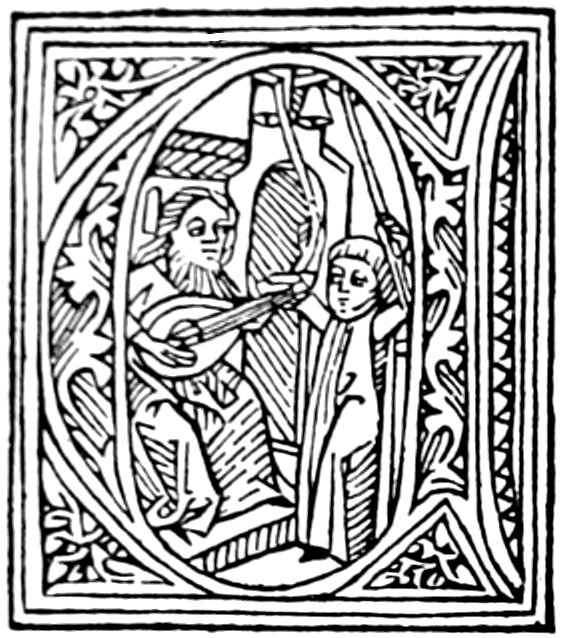
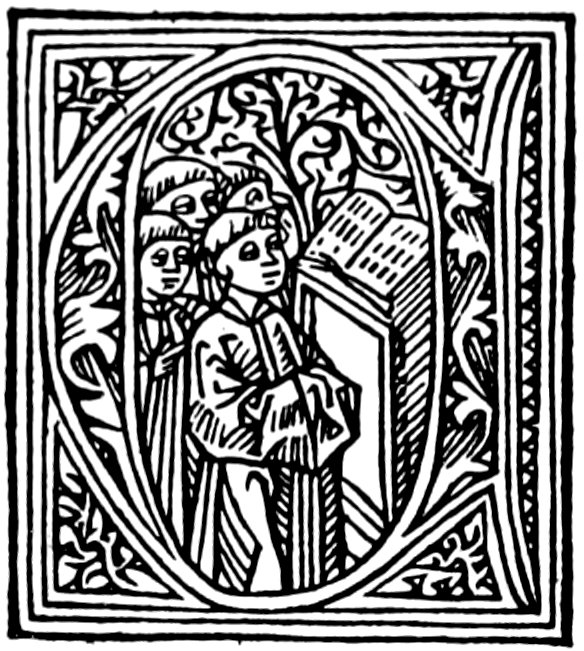
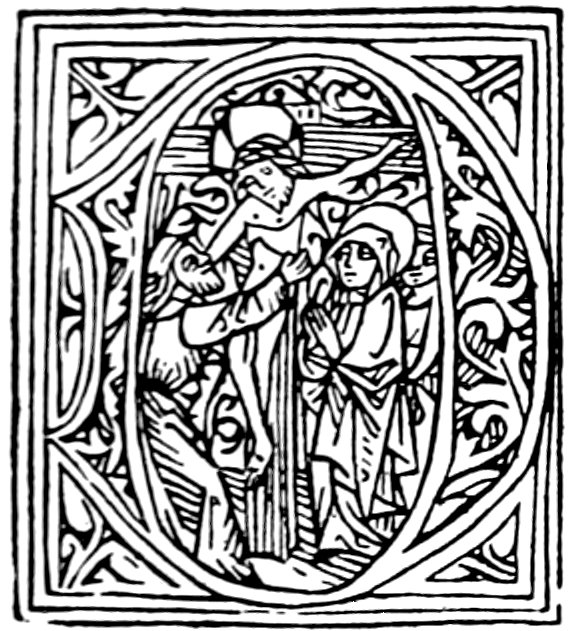
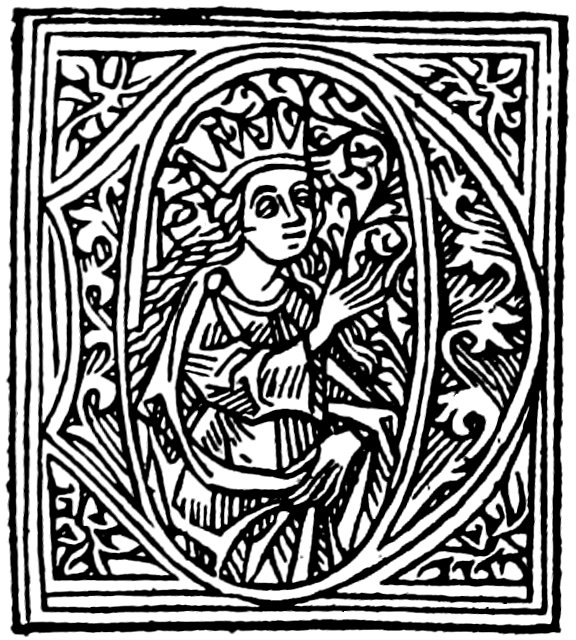
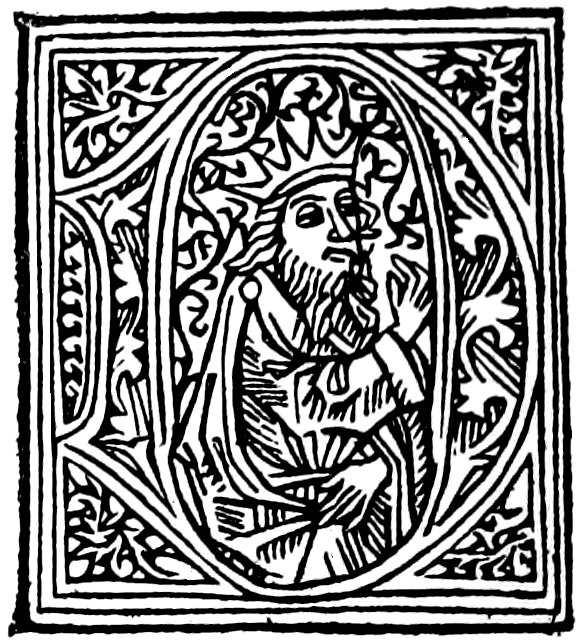
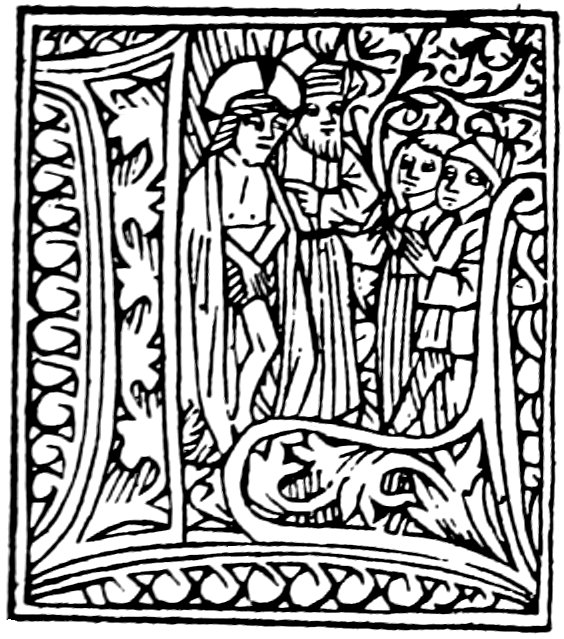
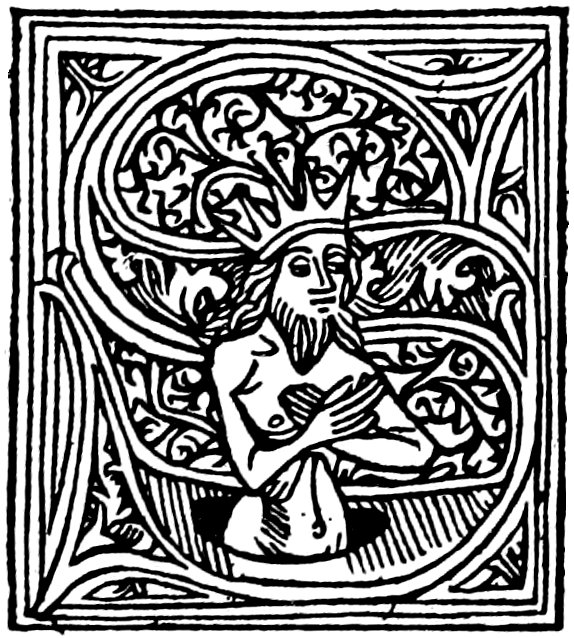
FROM RATDOLT’S BREVIARY AND PSALTER, 1491-1499
[123]
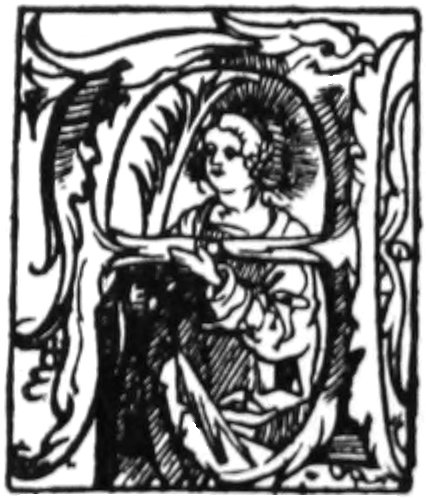

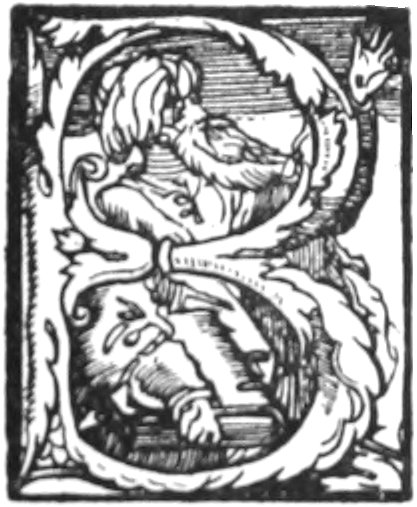
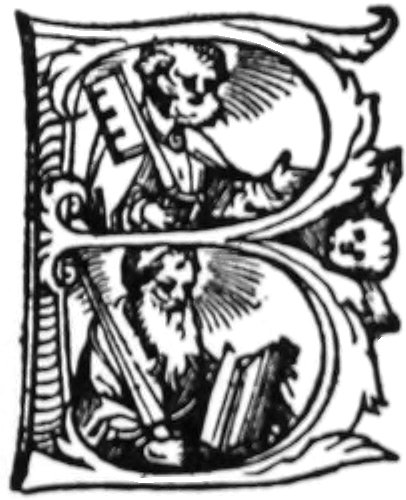
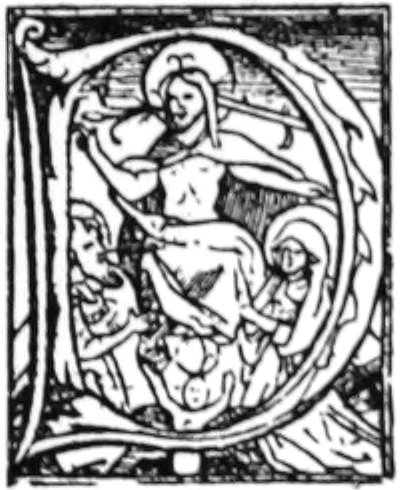
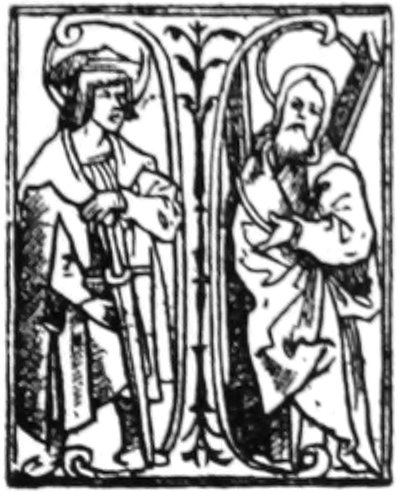
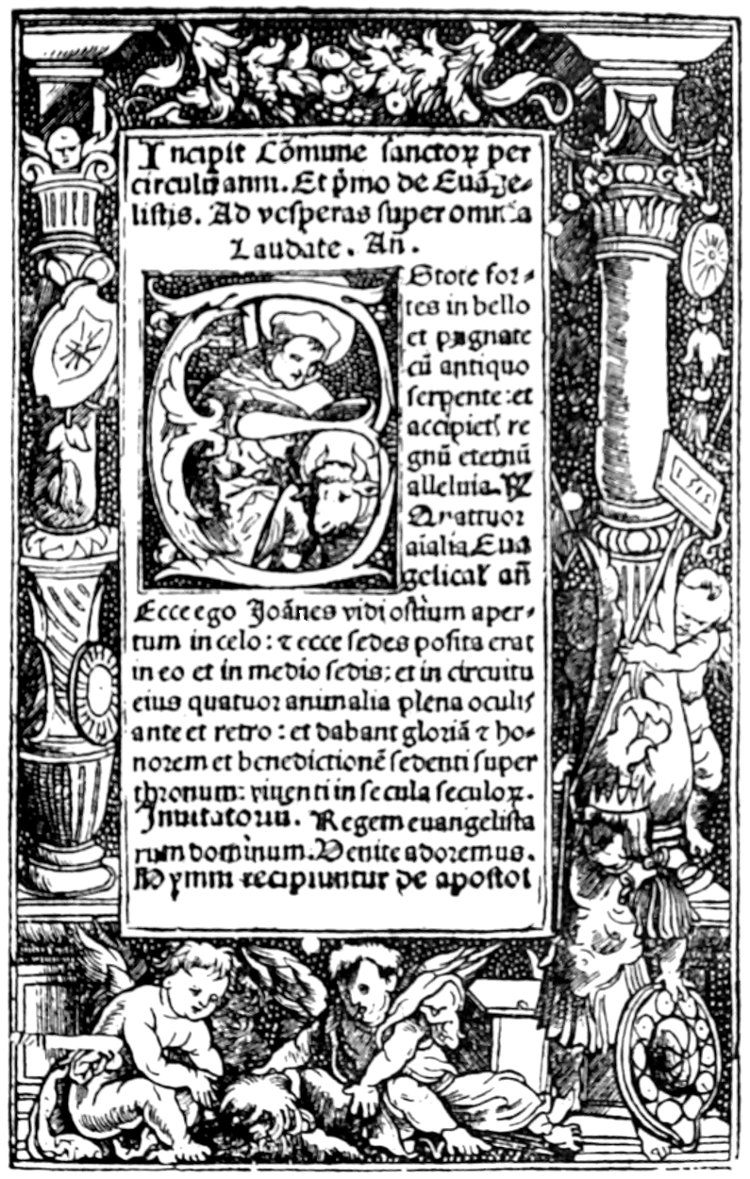

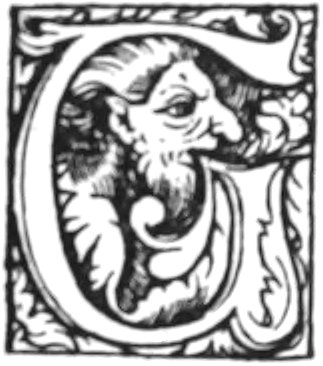
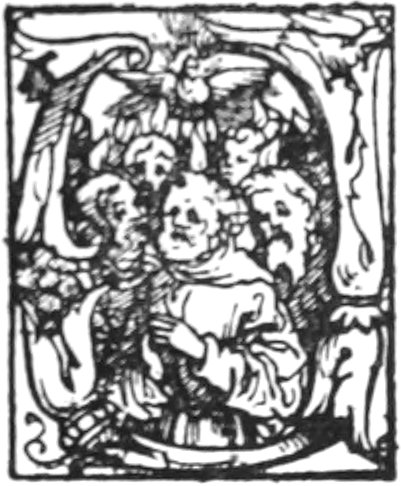
FROM RATDOLT’S CONSTANCE MISSAL, 1516
[124]
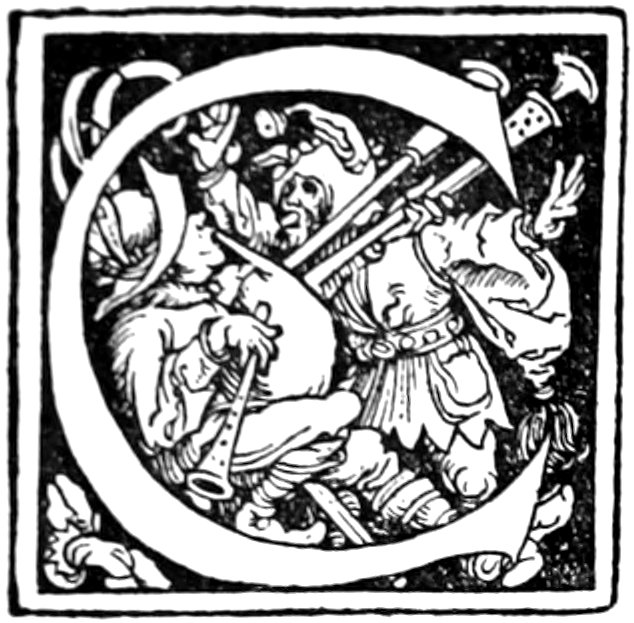
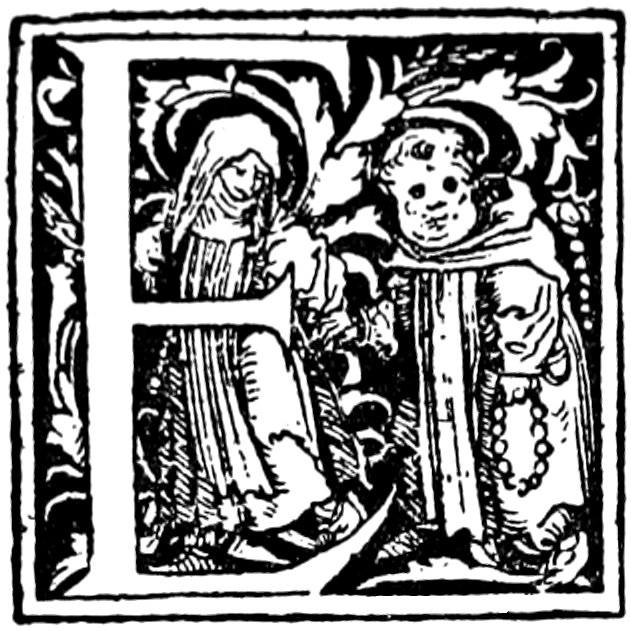


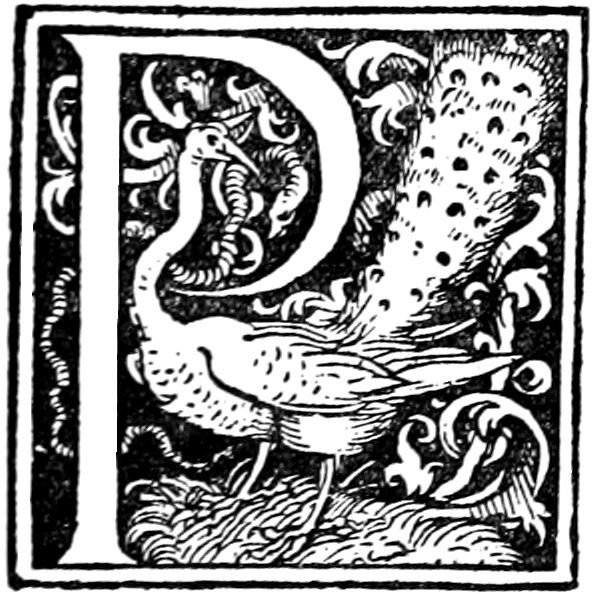

INITIALS BY HANS WEIDITZ IN DIFFERENT WORKS PUBLISHED BY STEYNER
[125]
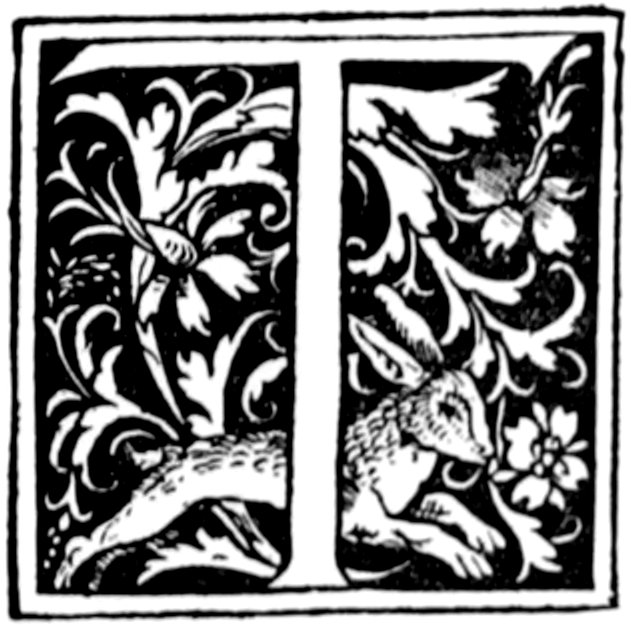

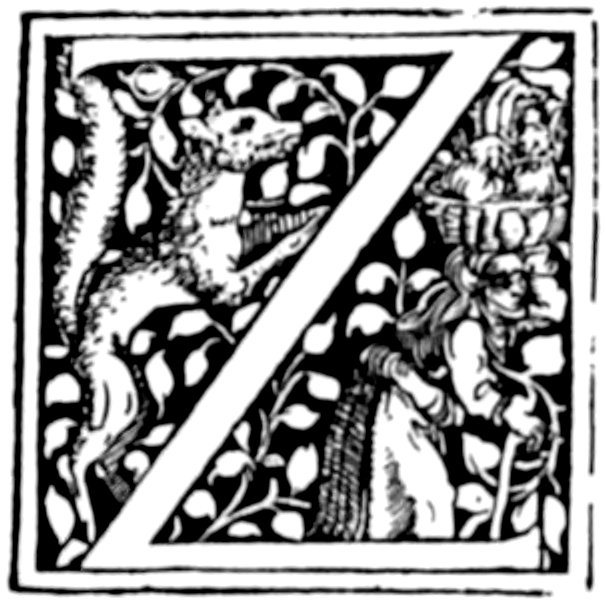
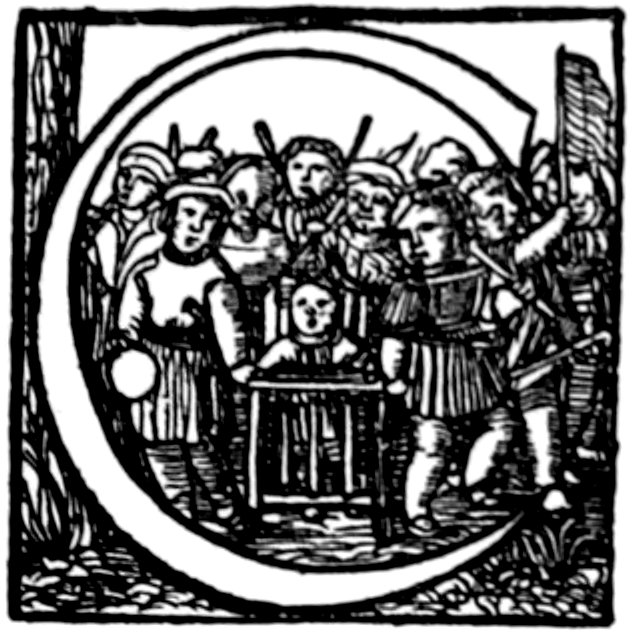
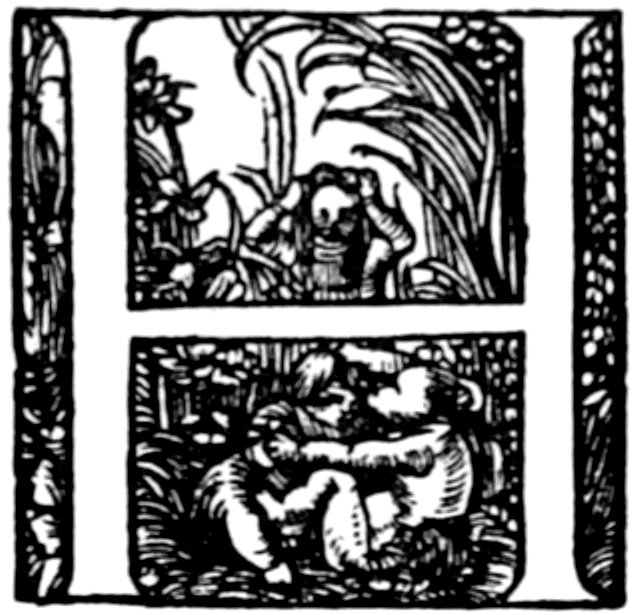
INITIALS BY HANS WEIDITZ IN DIFFERENT WORKS PUBLISHED BY STEYNER
[126]
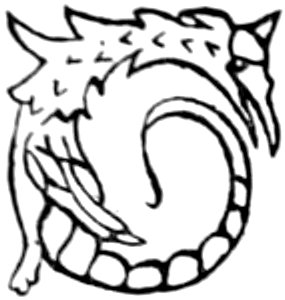
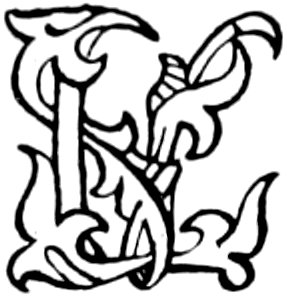
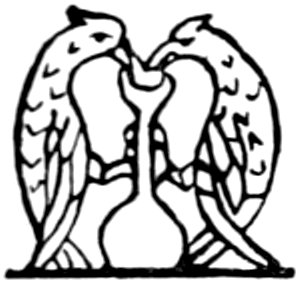
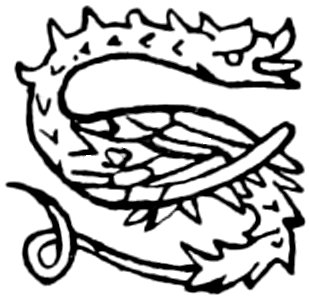
FROM J. ZAINER’S BOCCACCIO

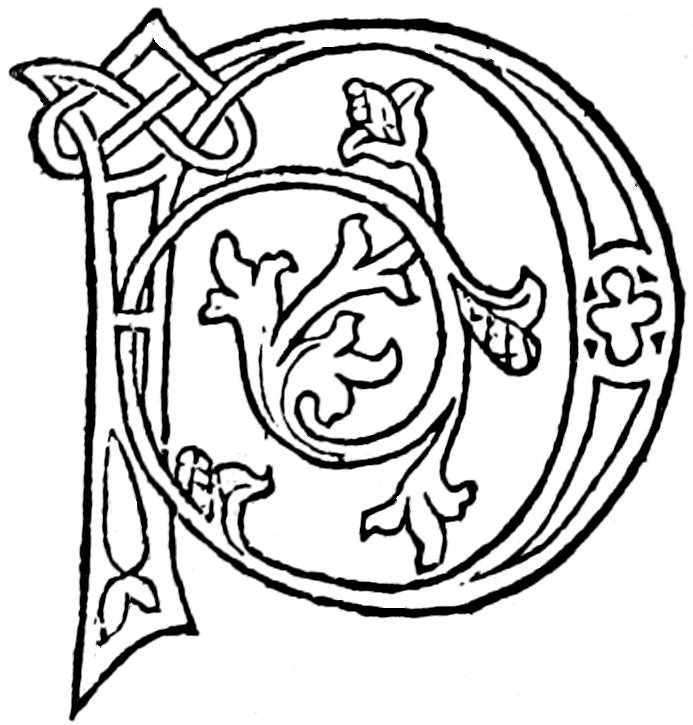
OTHER INITIALS OF G. ZAINER
[127]
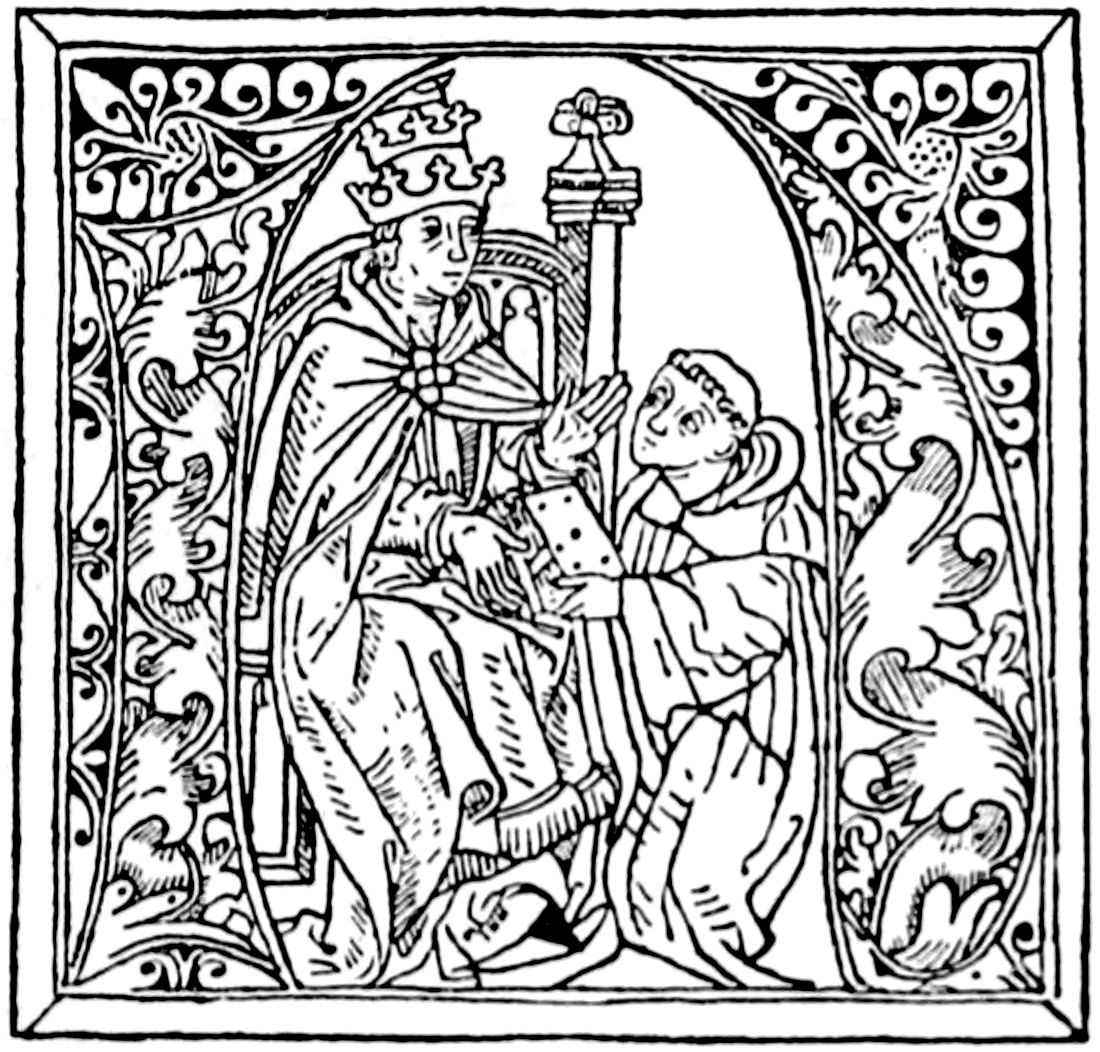
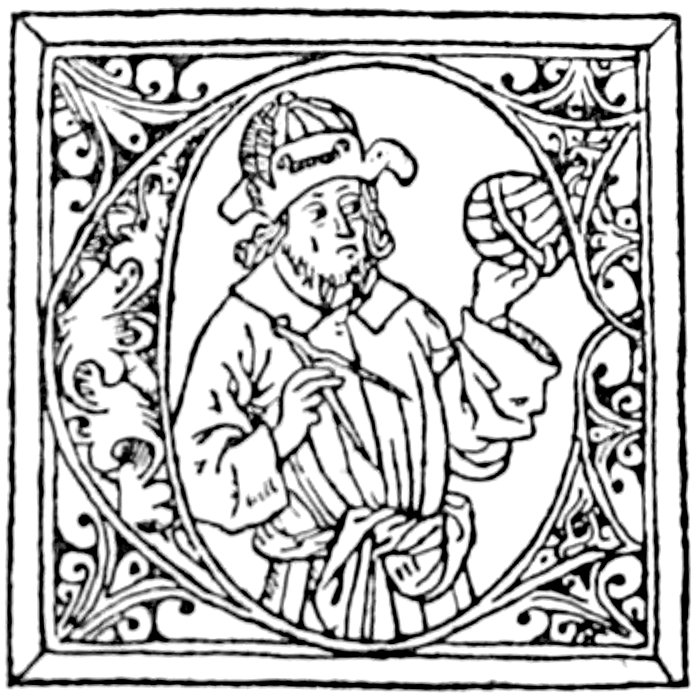
FROM THE COSMOGRAPHIA OF PTOLEMY—LEONARD HOLL, 1482
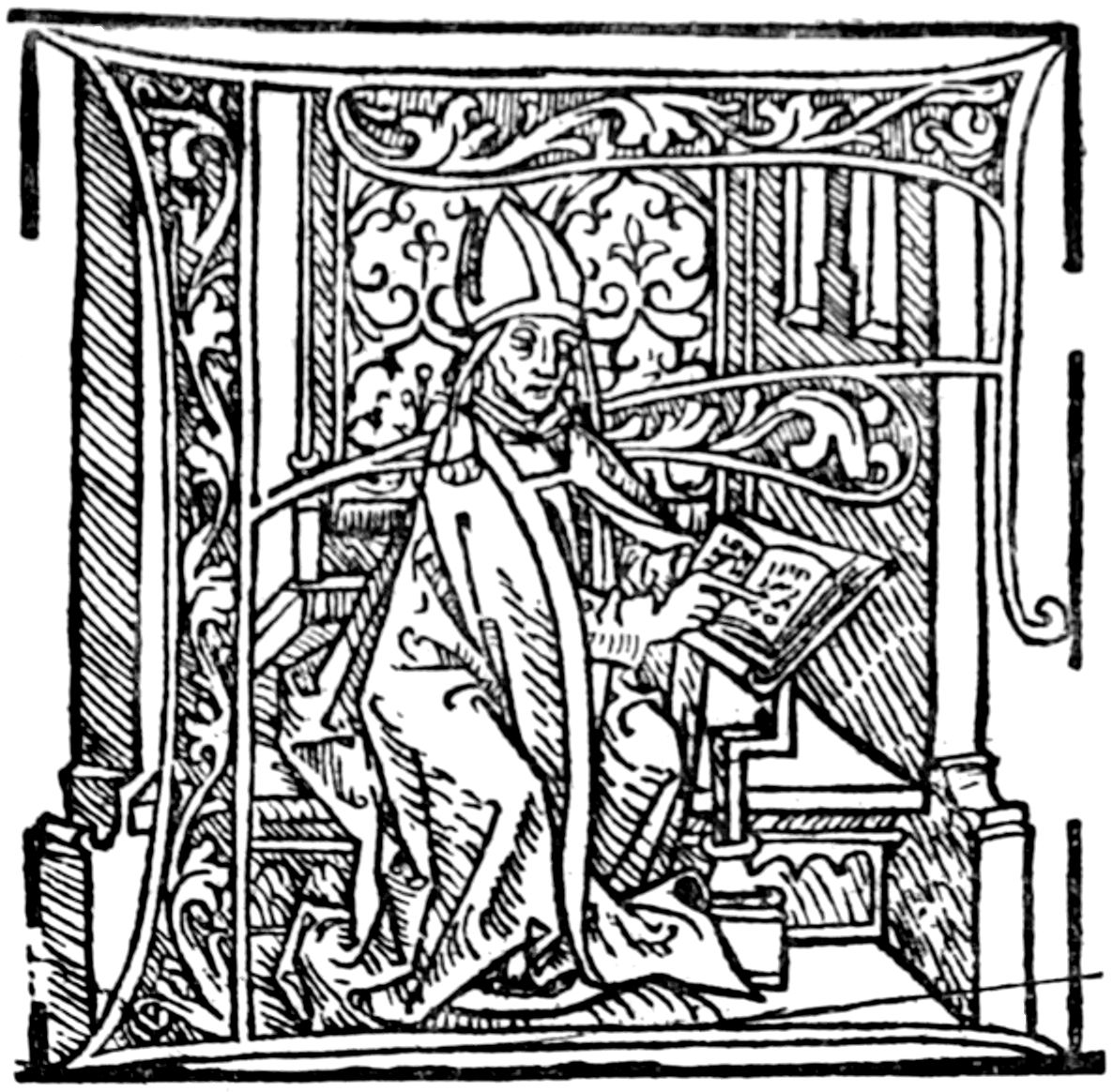
FROM THE ULM BIBLE, 1480
[128]
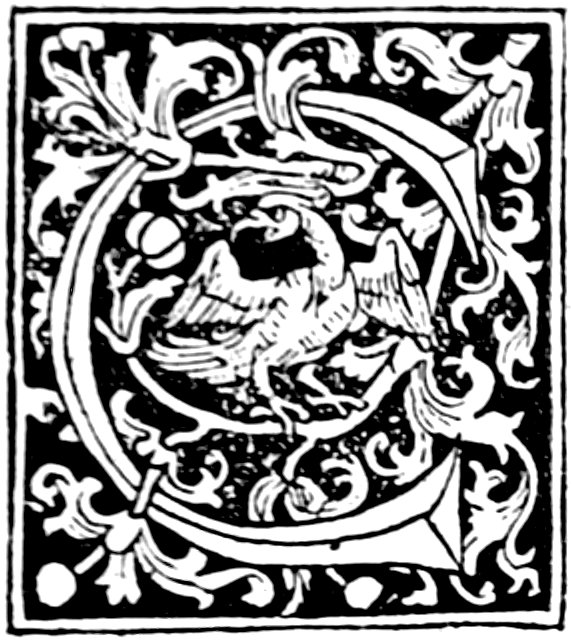
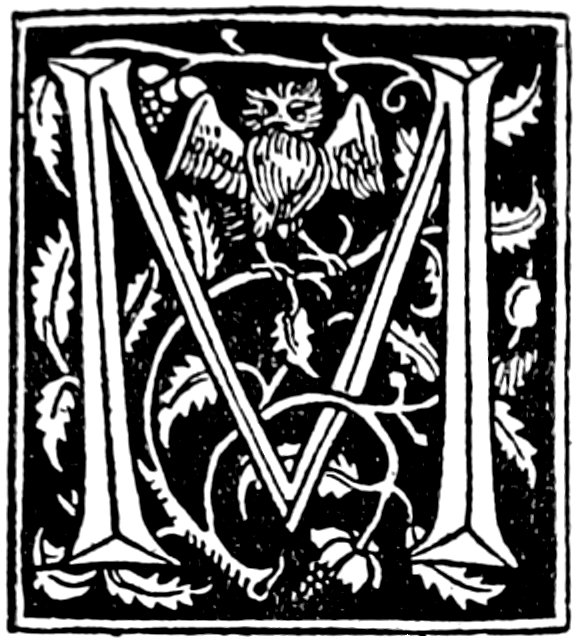
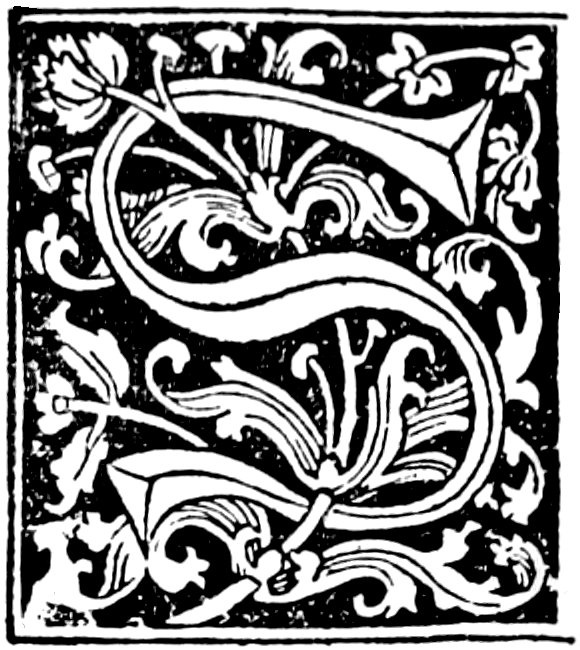
INITIALS OF J. REGER, 1496
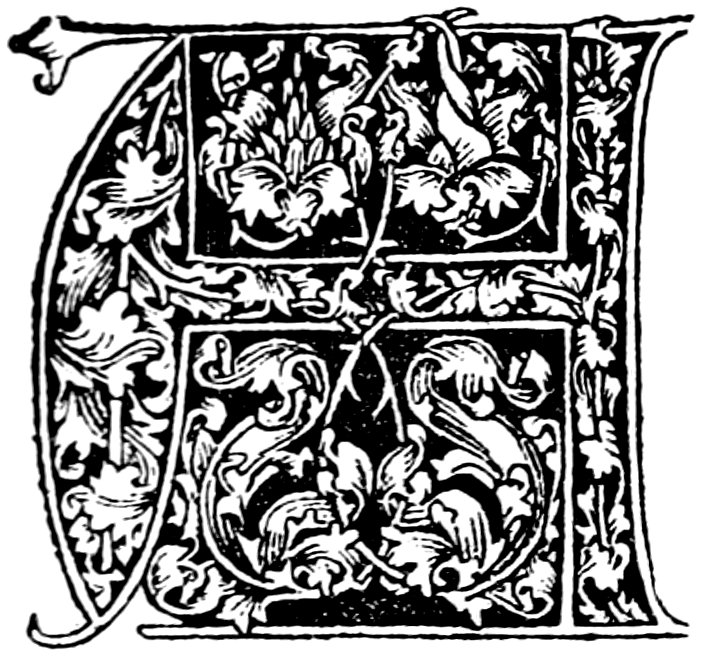
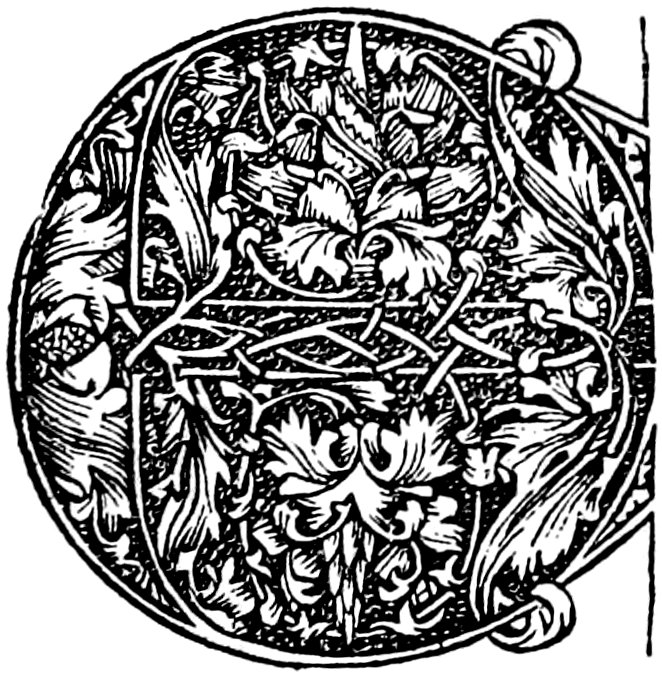
INITIALS OF PETER WAGNER, 1489
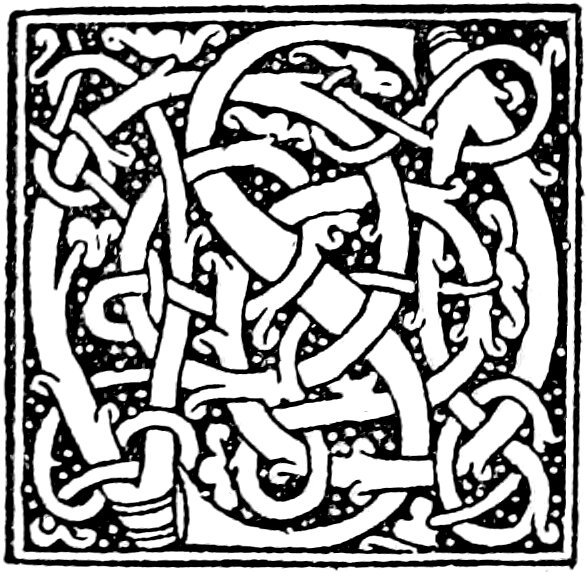
INITIAL OF J. REGIOMONTANUS
[129]
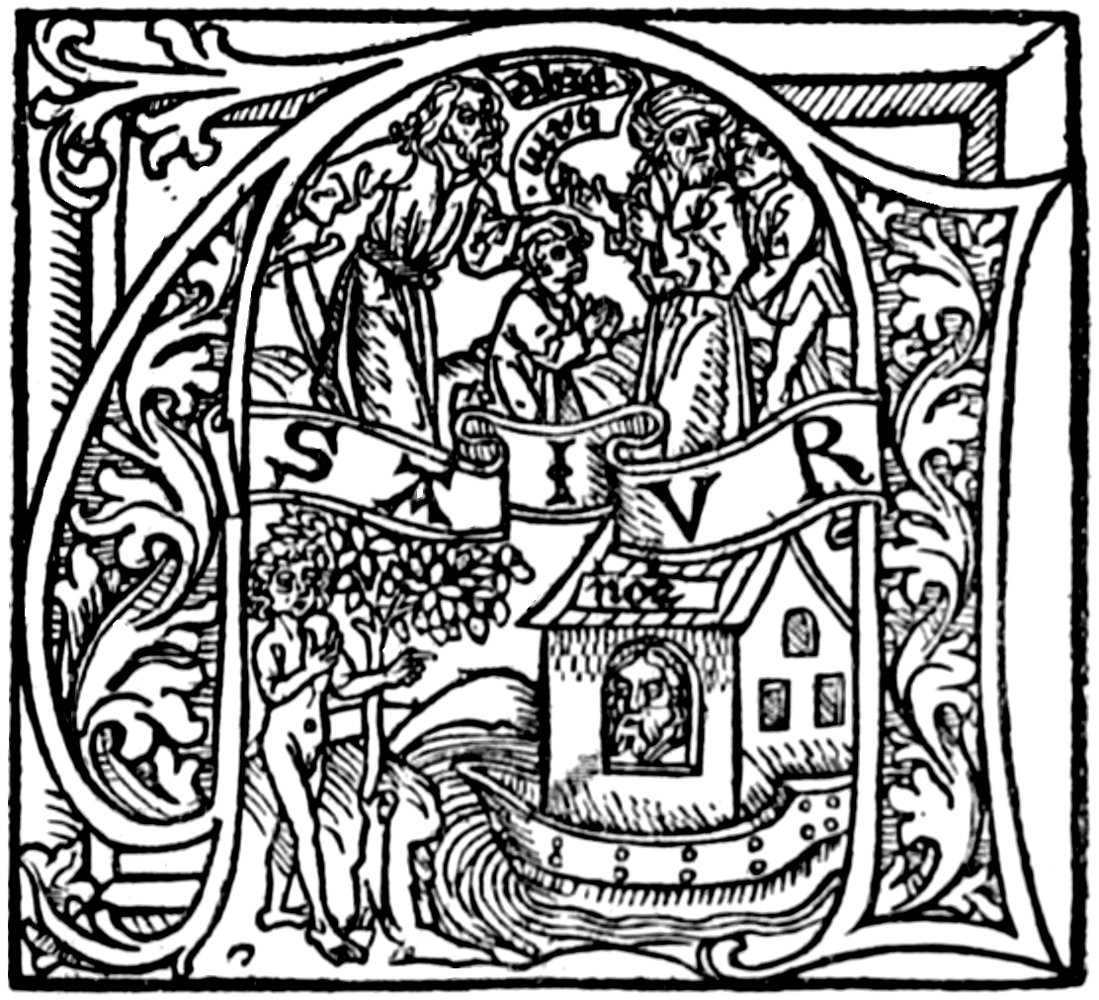
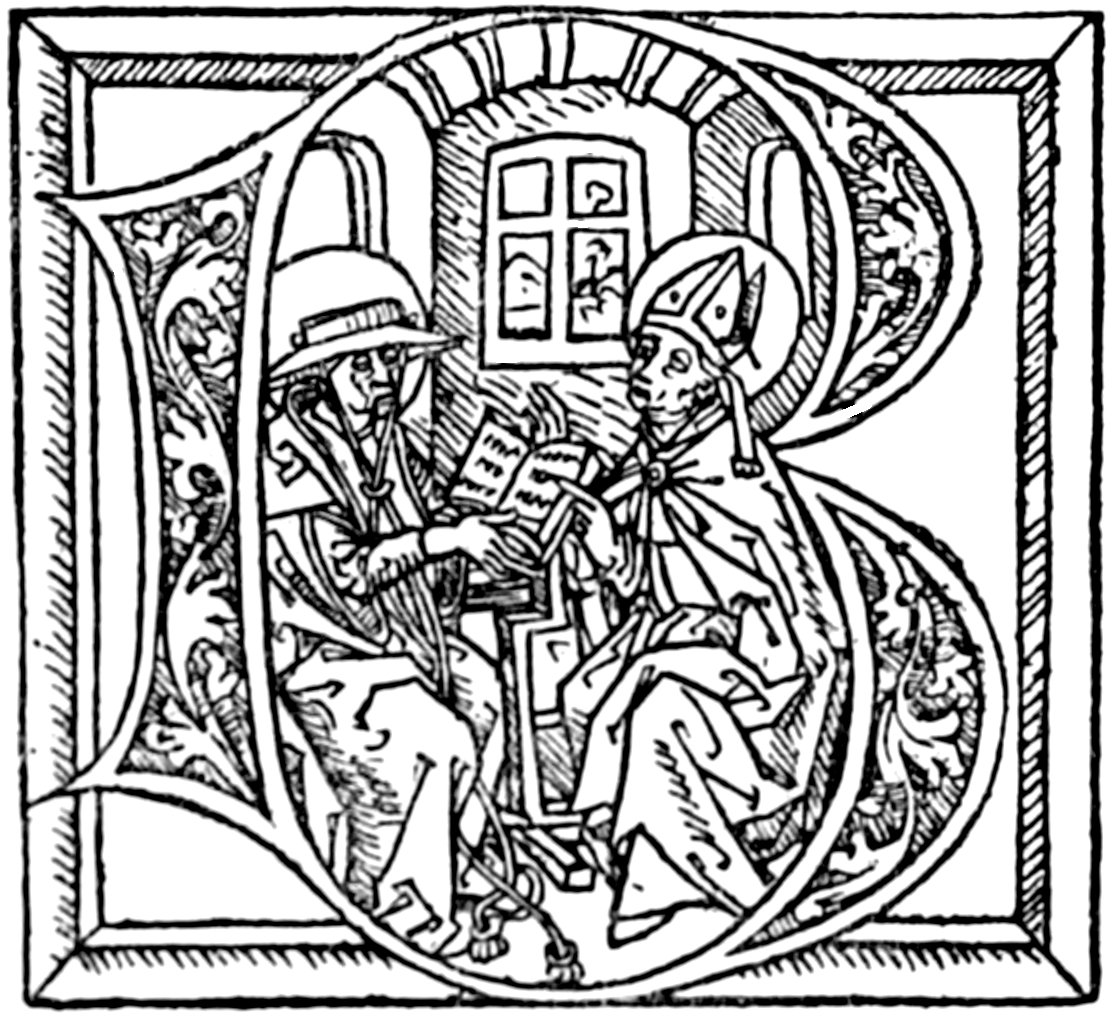
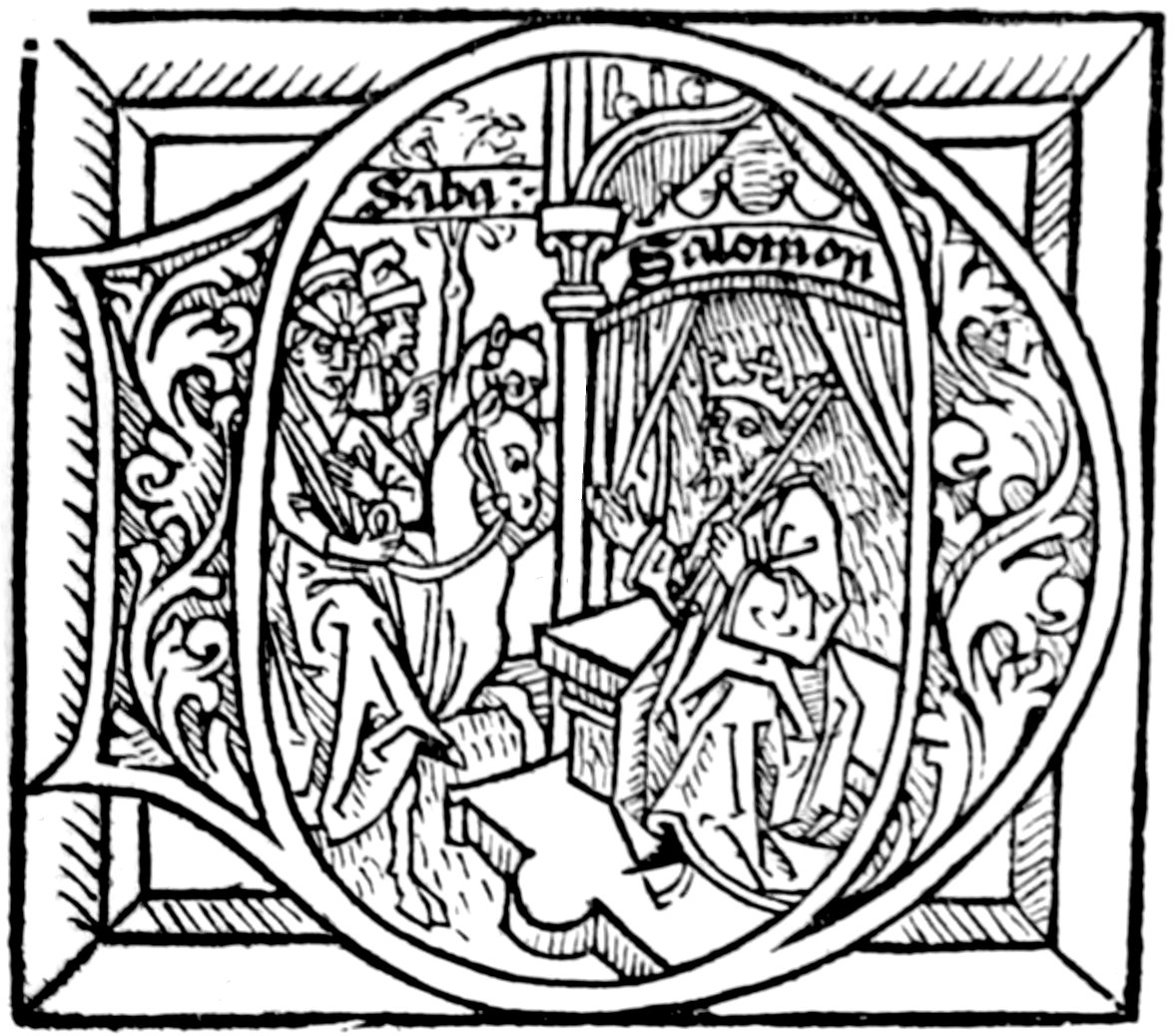
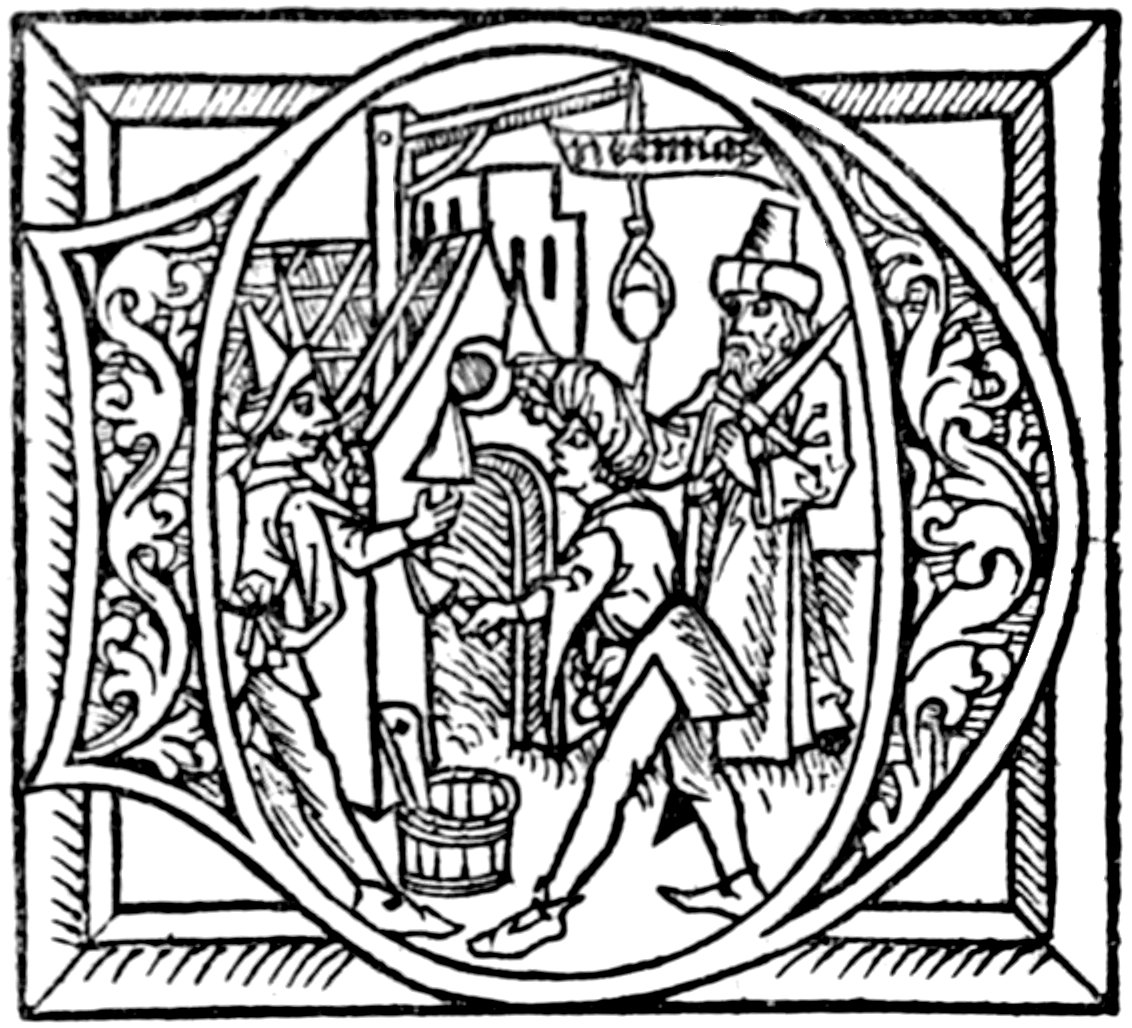
FROM THE FOURTH GERMAN BIBLE OF FRISNER AND SENSENSCHMIDT
[130]
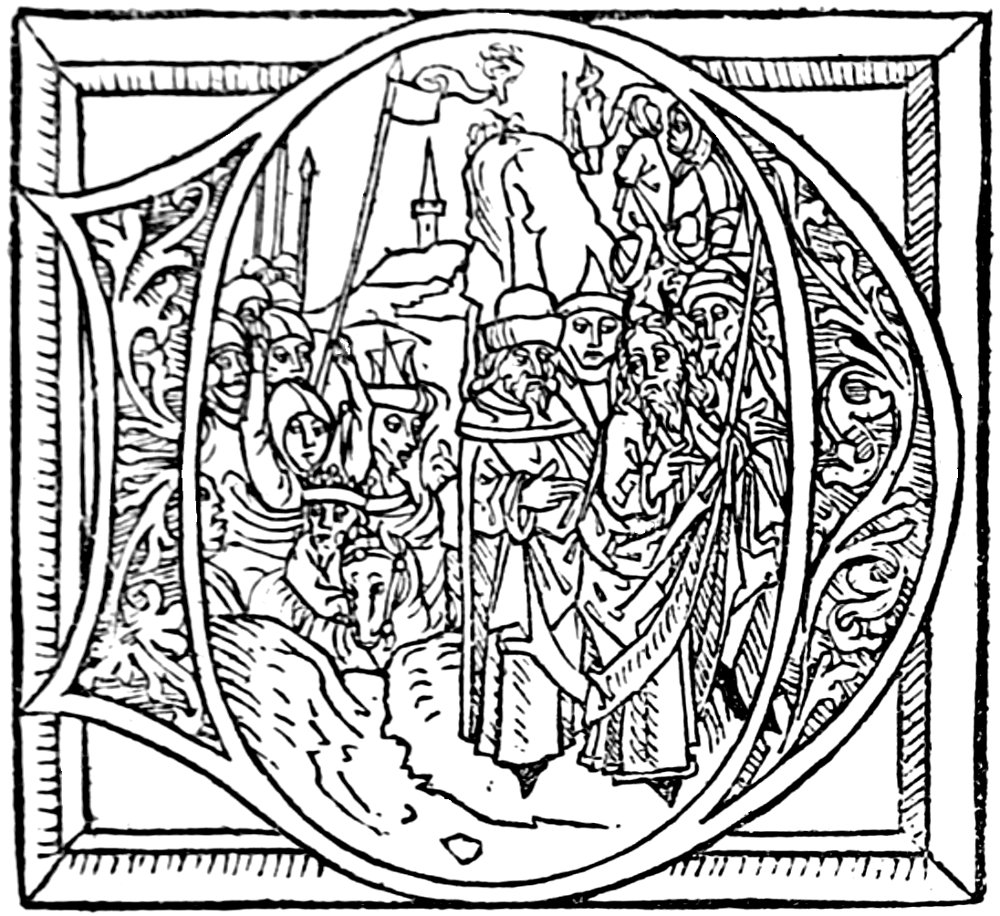
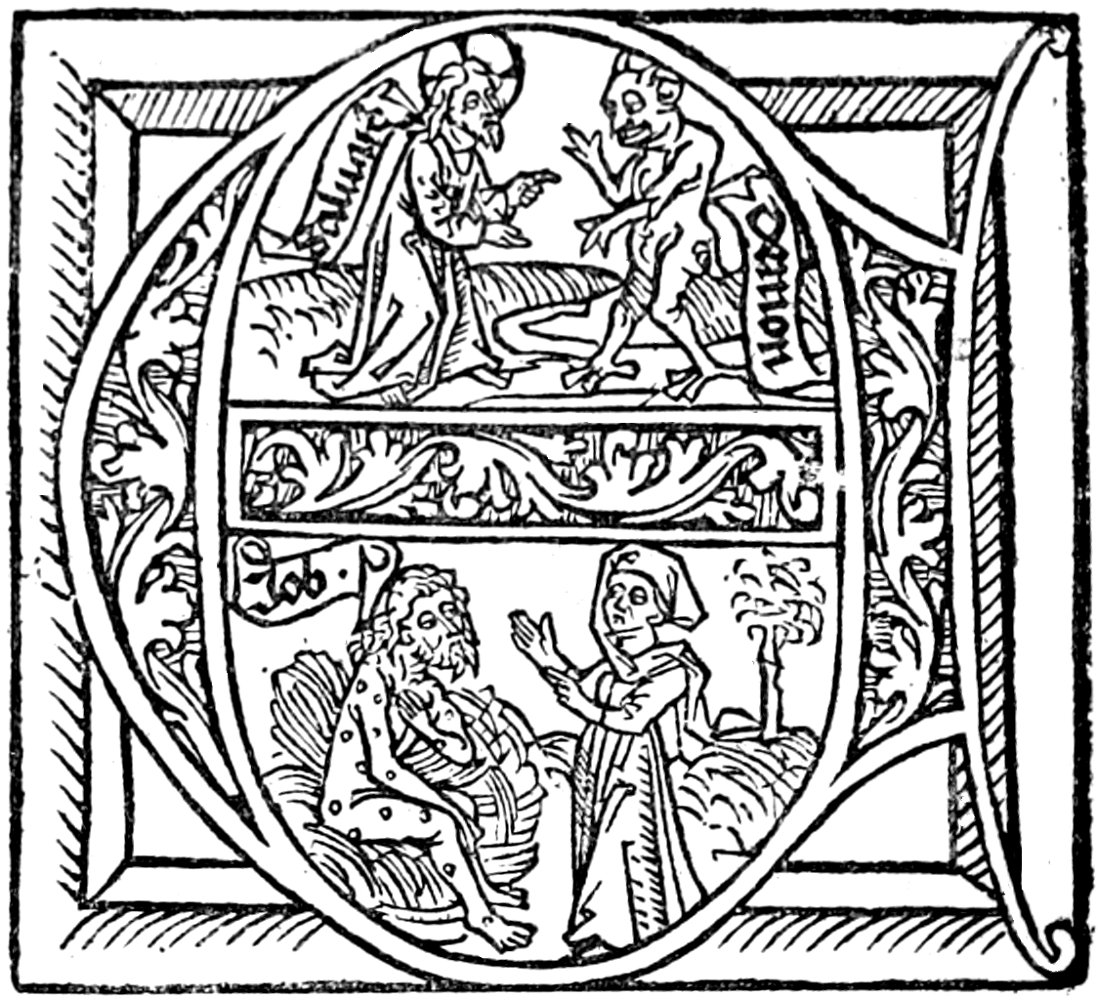


FROM THE FOURTH GERMAN BIBLE OF FRISNER AND SENSENSCHMIDT
[131]
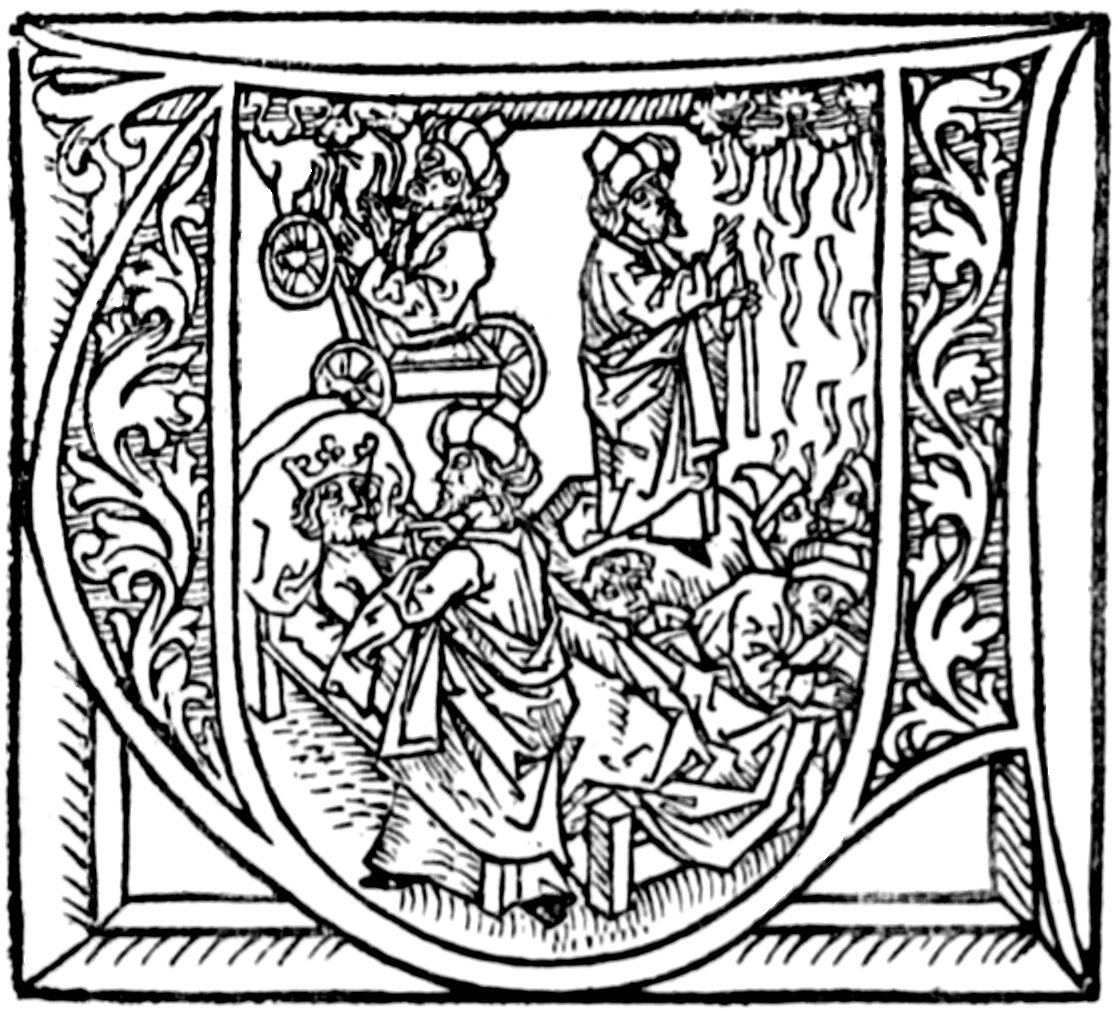
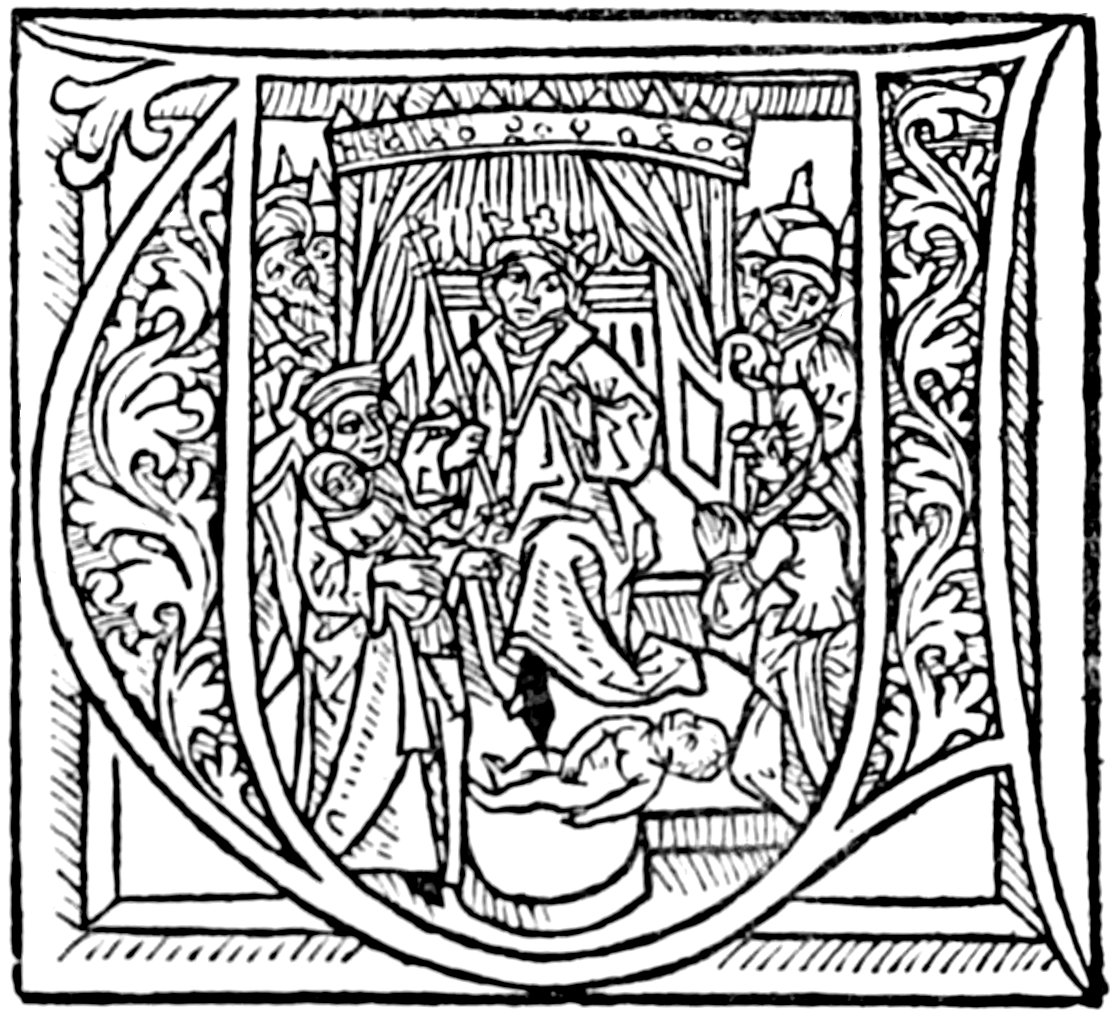
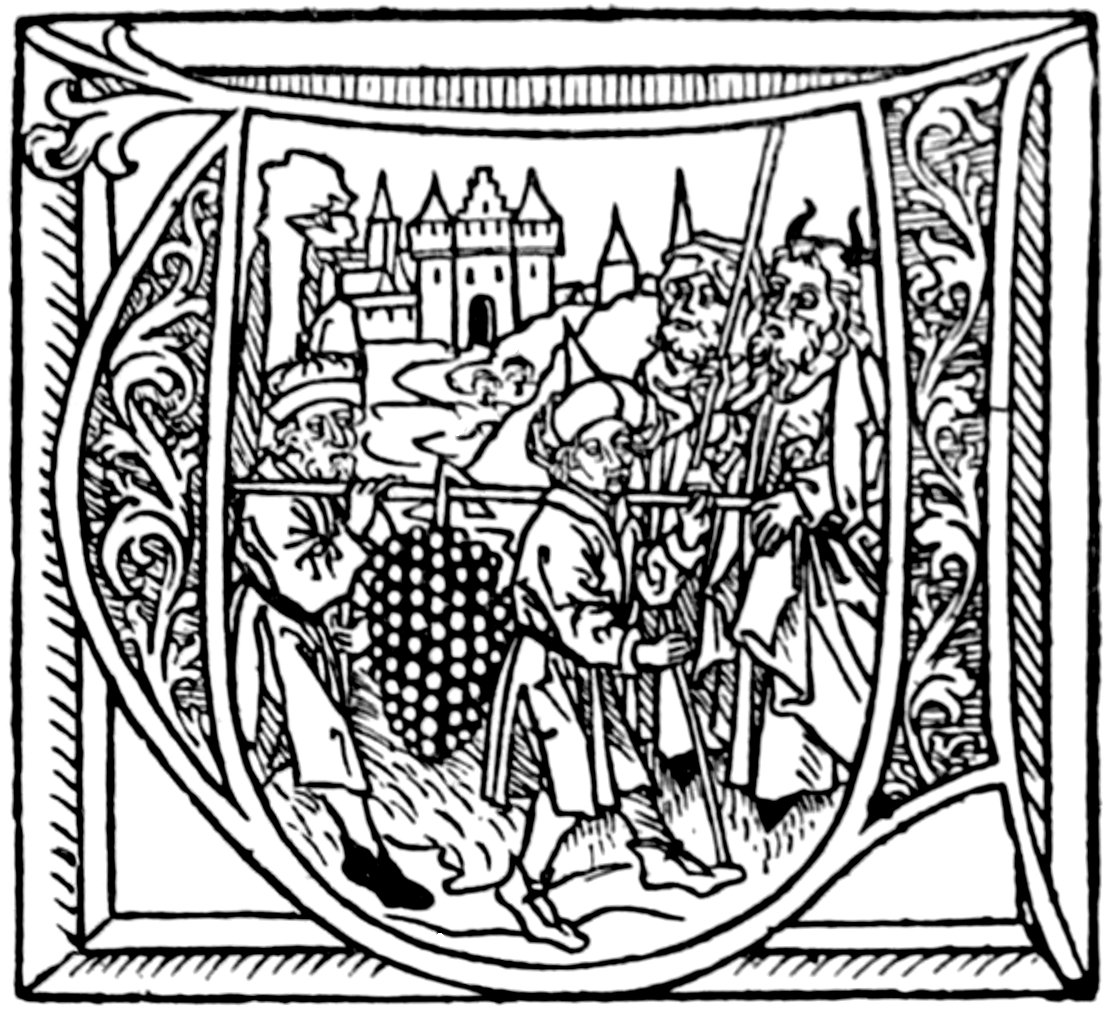
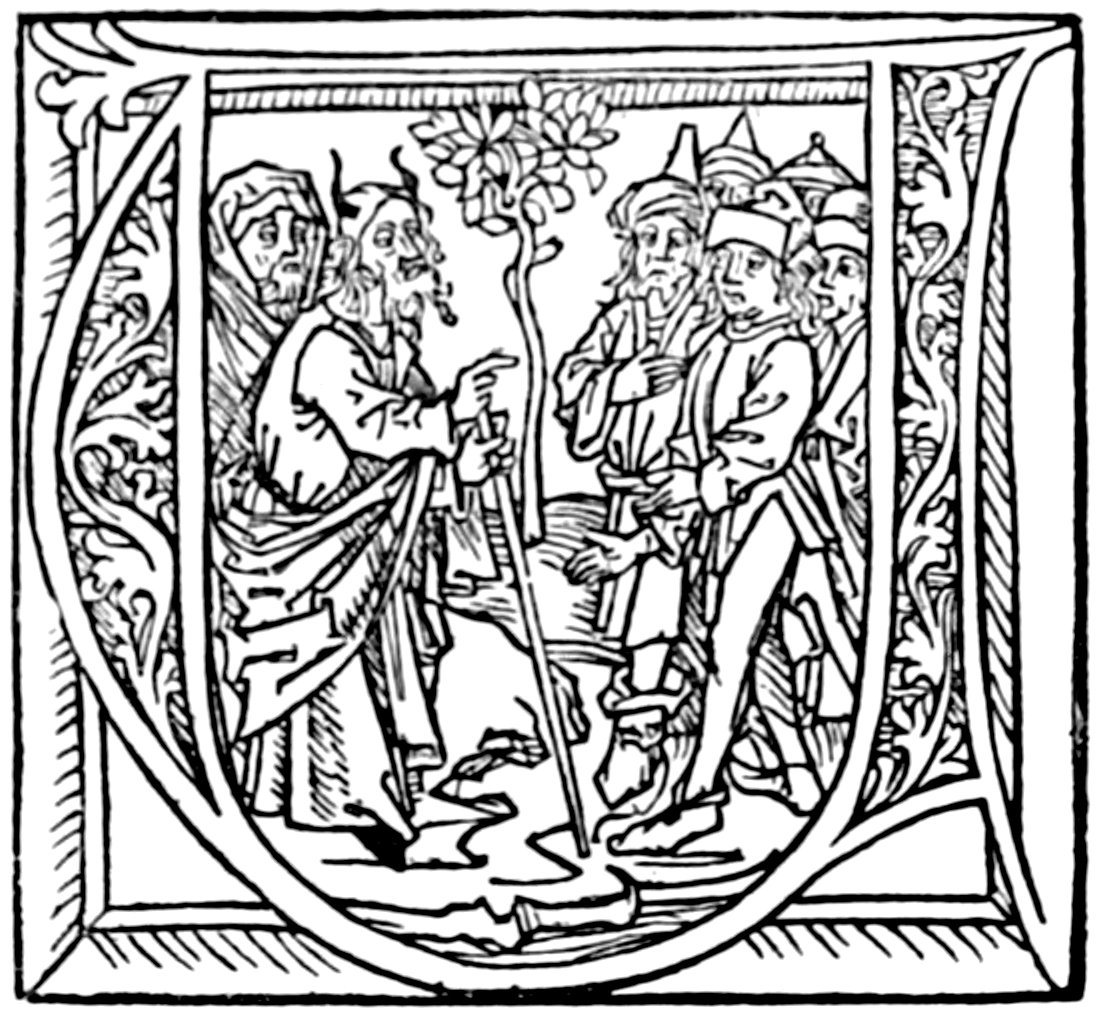
FROM THE FOURTH GERMAN BIBLE OF FRISNER AND SENSENSCHMIDT
[132]
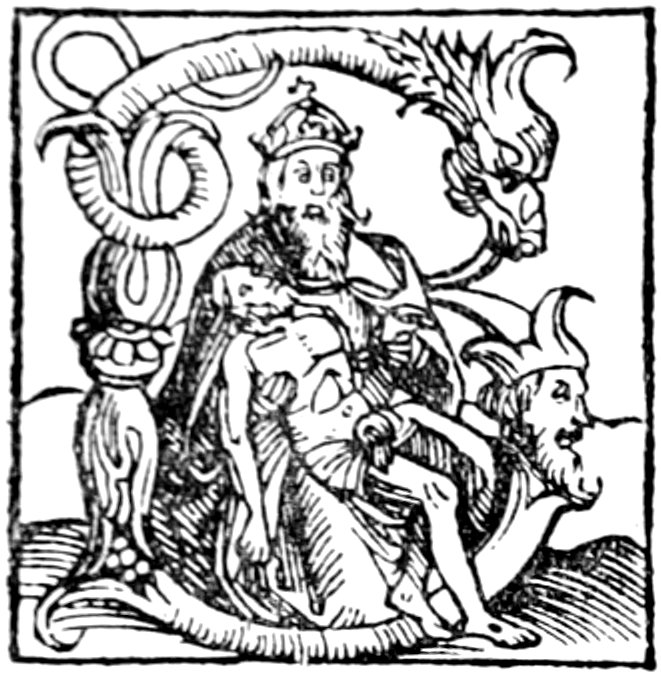

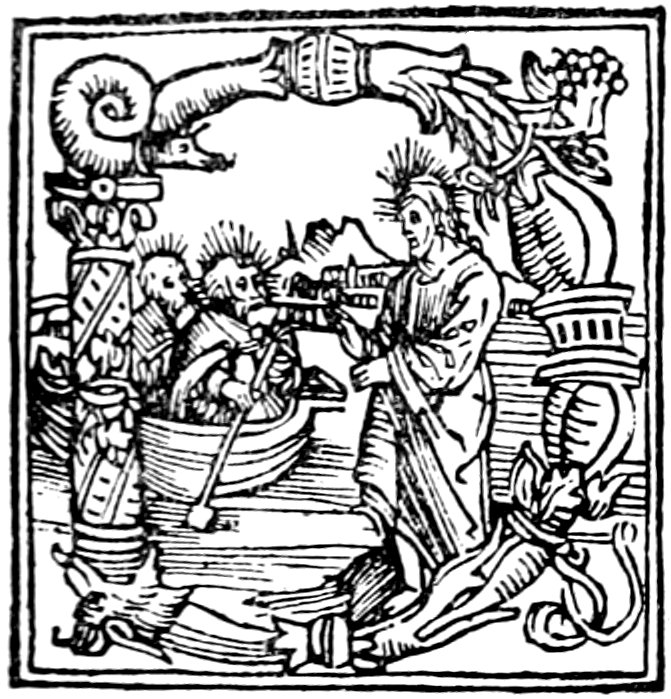
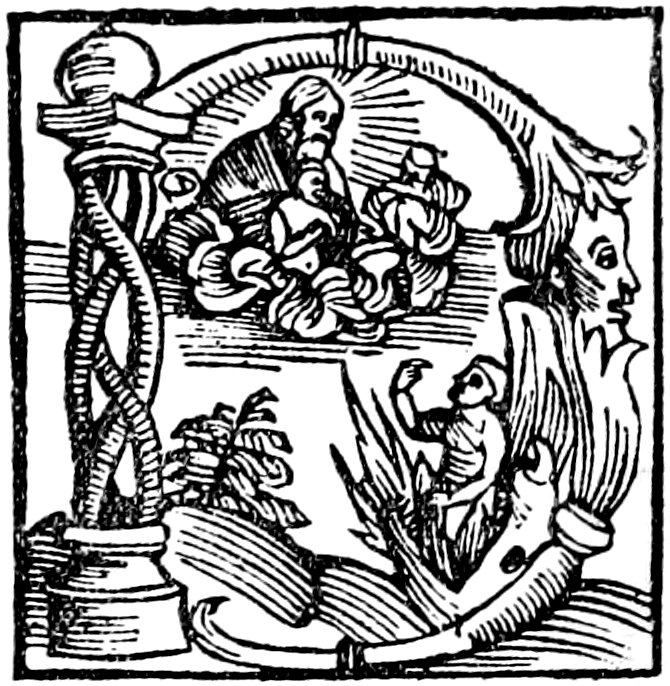
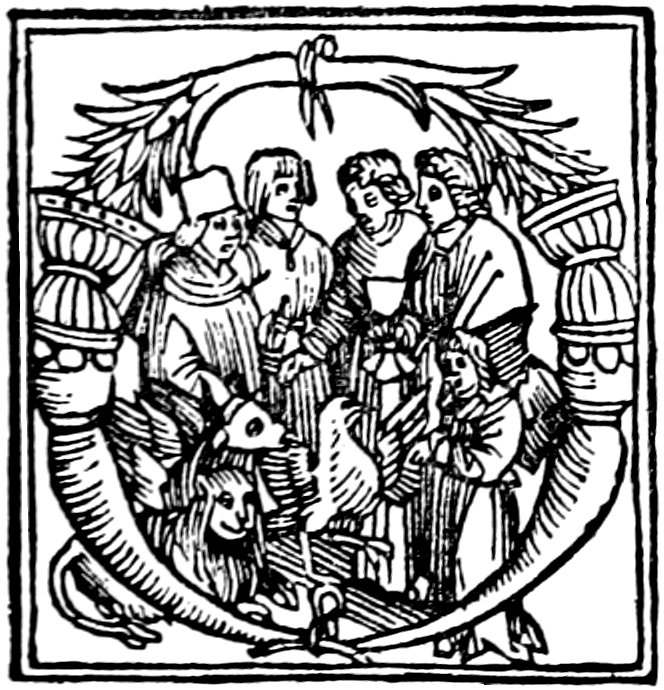
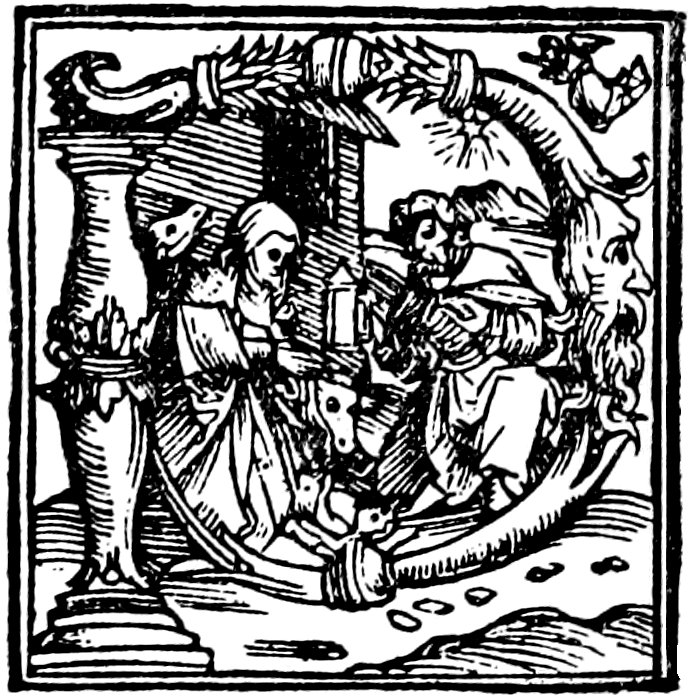
FROM THE ‘MISSALE PATAVIENSE’ OF J. GUTNECHT
[133]
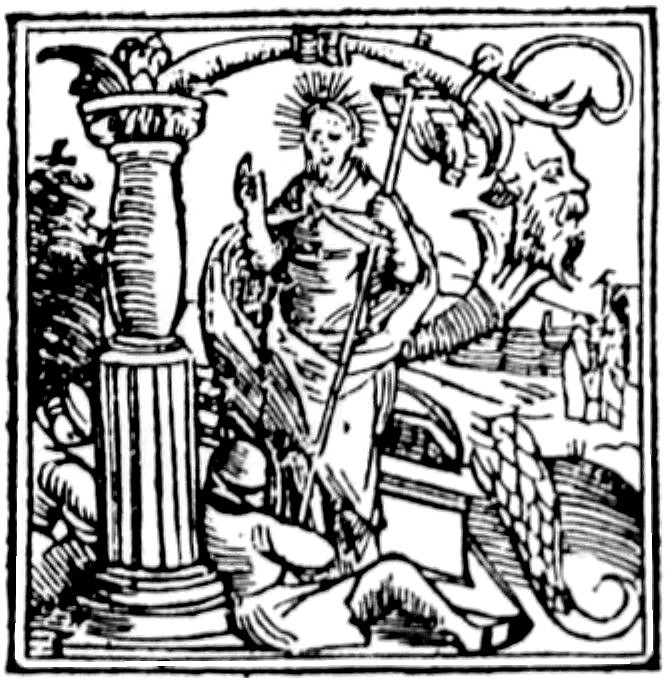
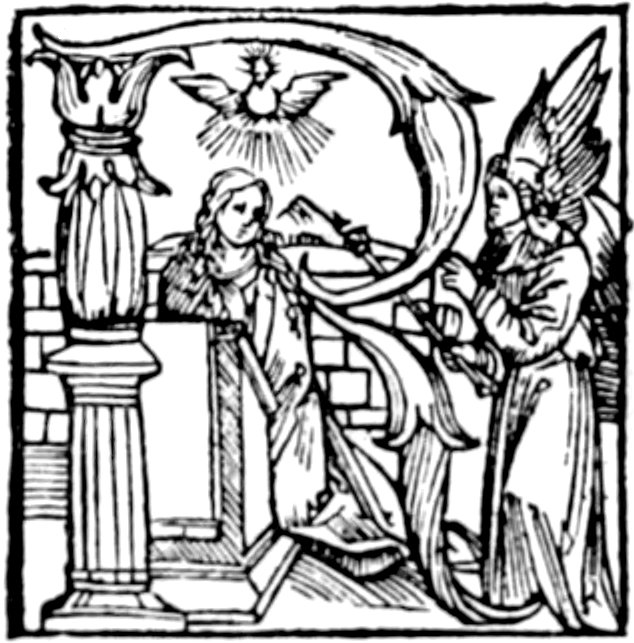
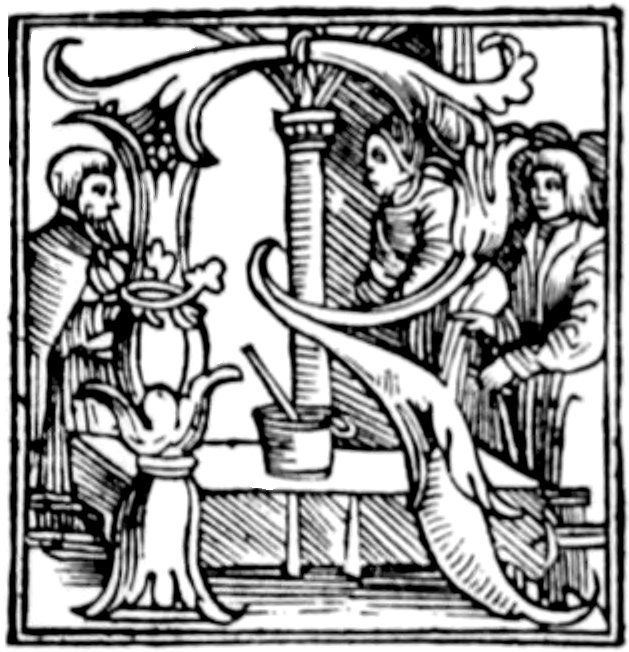
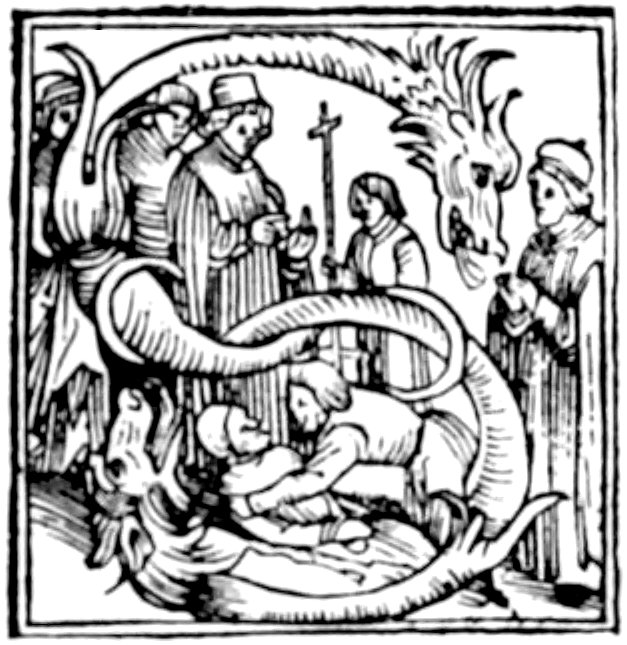
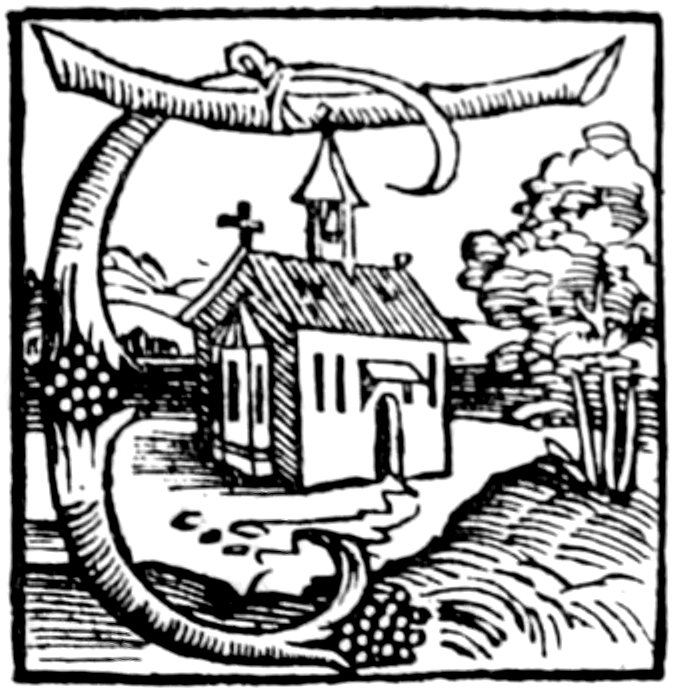
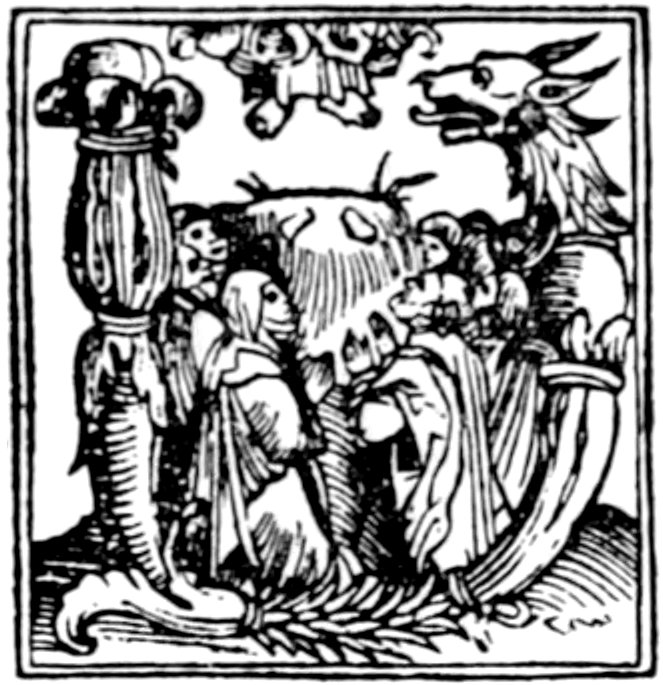
FROM THE ‘MISSALE PATAVIENSE’ OF J. GUTNECHT
[134]
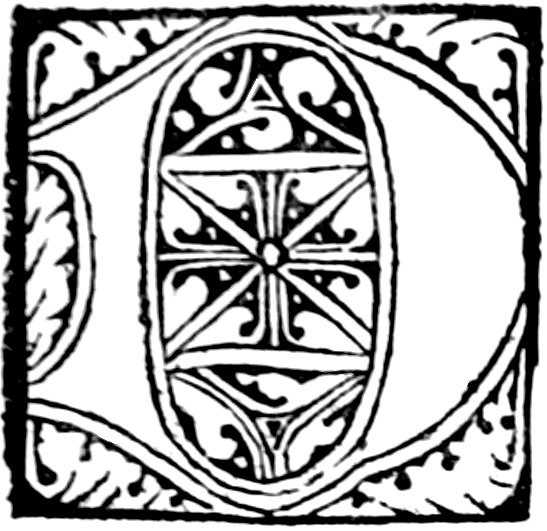
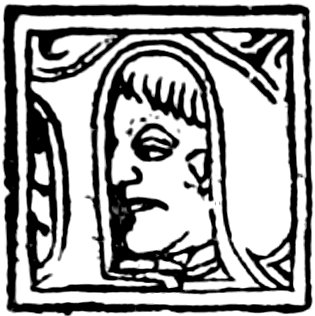

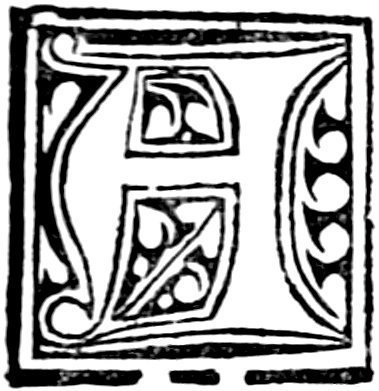
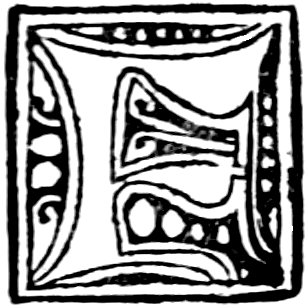
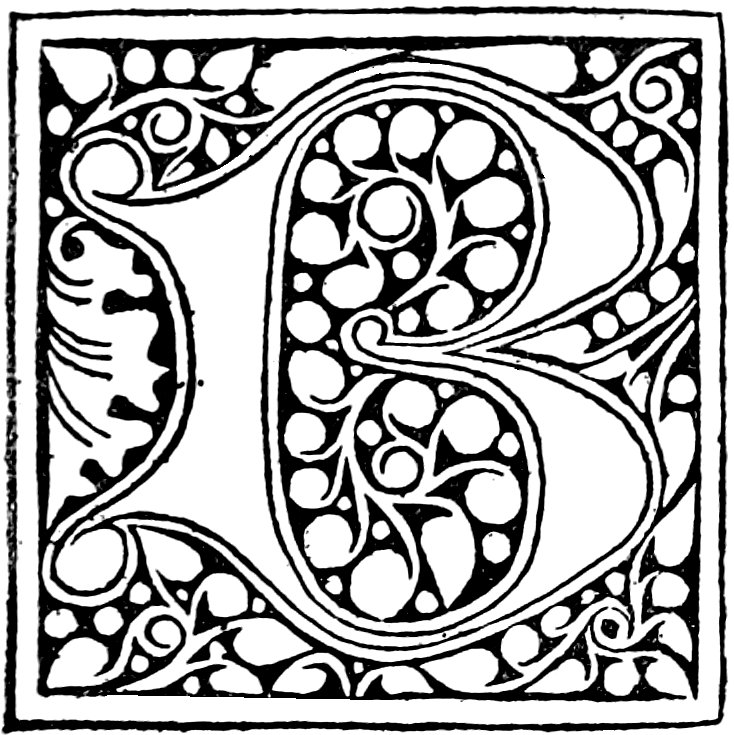
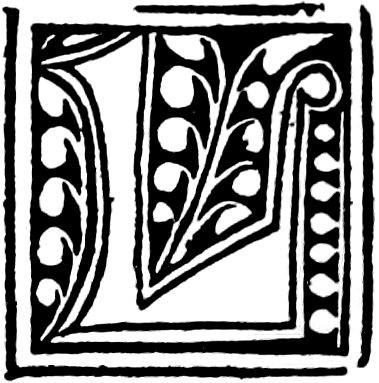
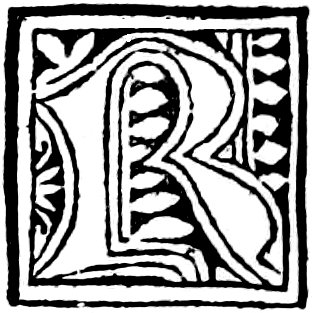

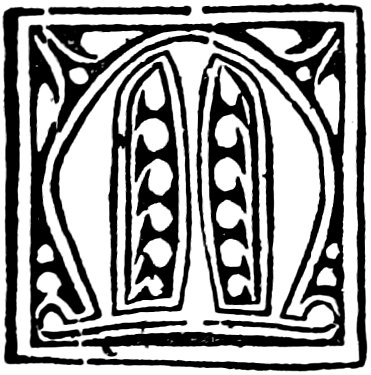
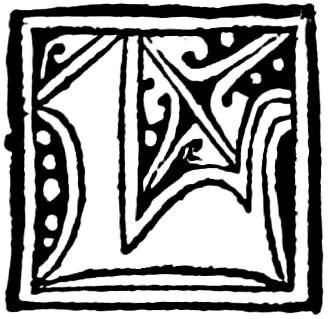

FROM RICHEL’S LATIN BIBLE, 1475
[135]
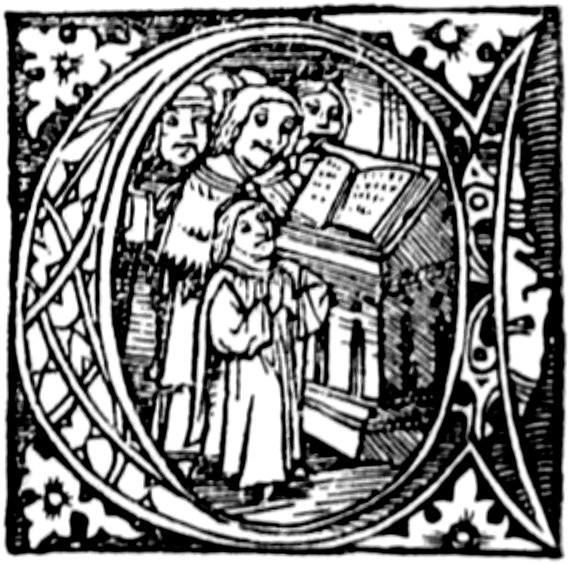

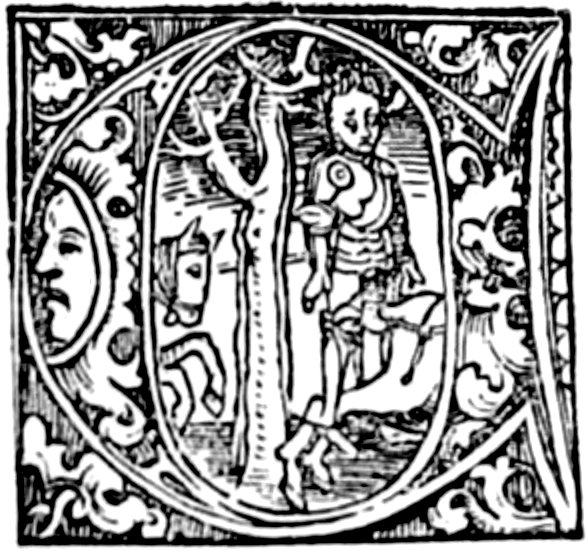
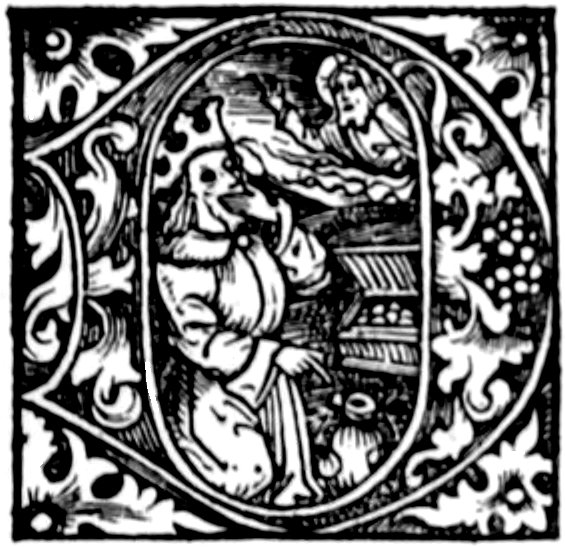
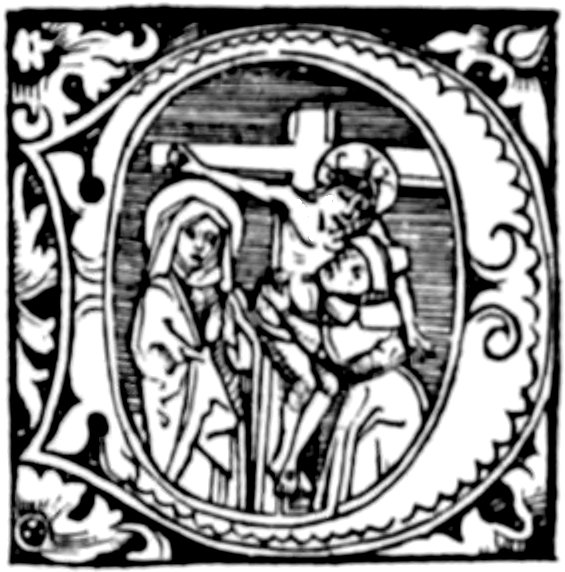
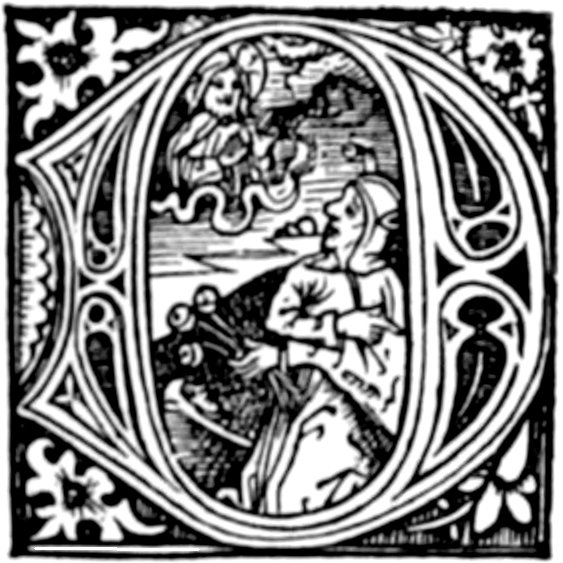
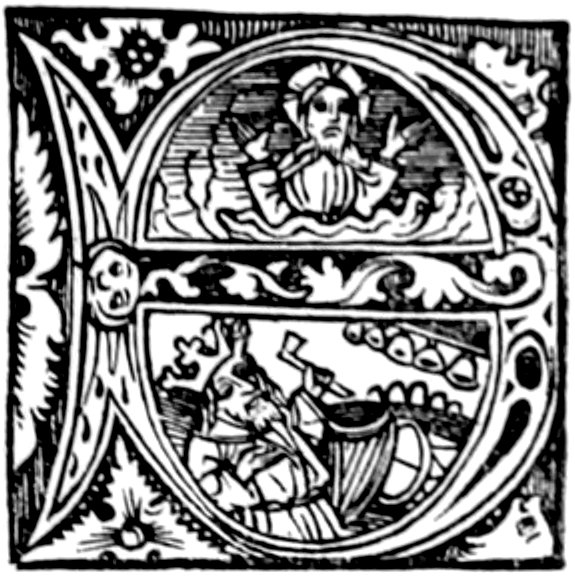
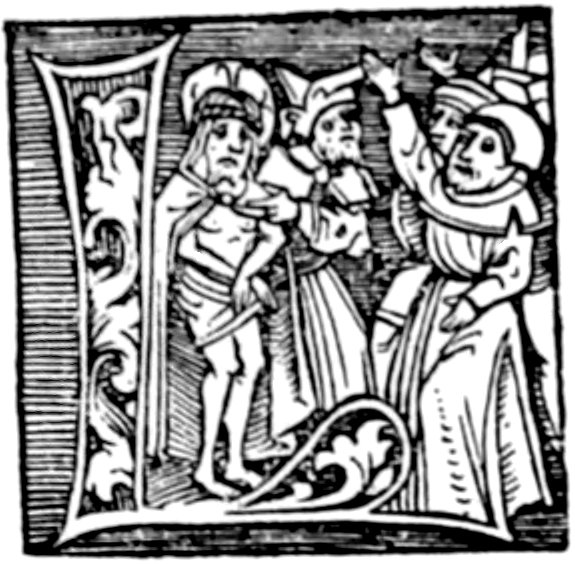
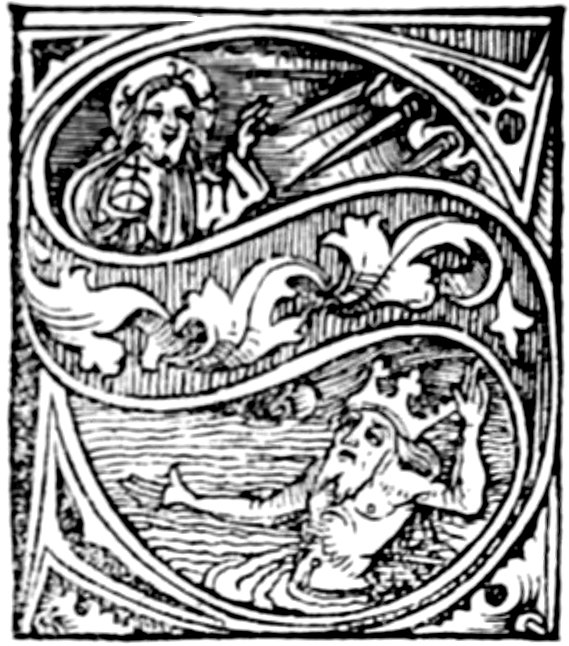
FROM FURTER’S PSALTER, 1501
[136]

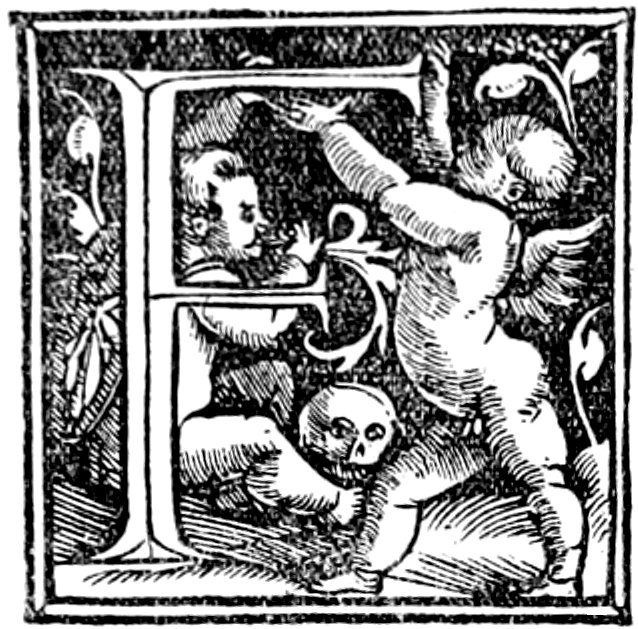
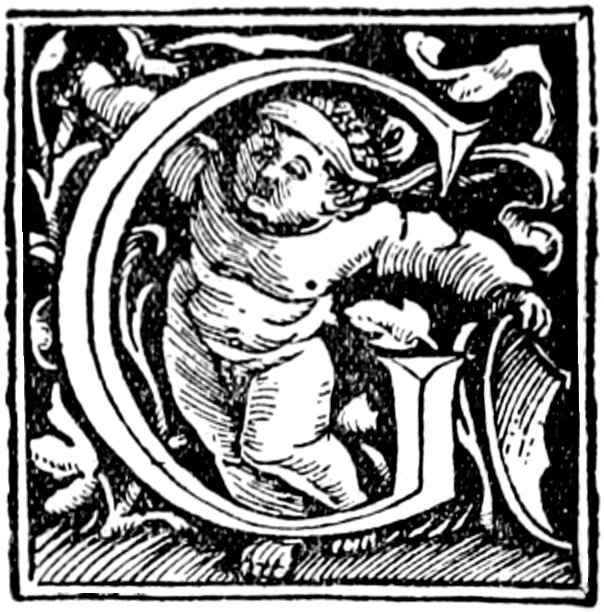
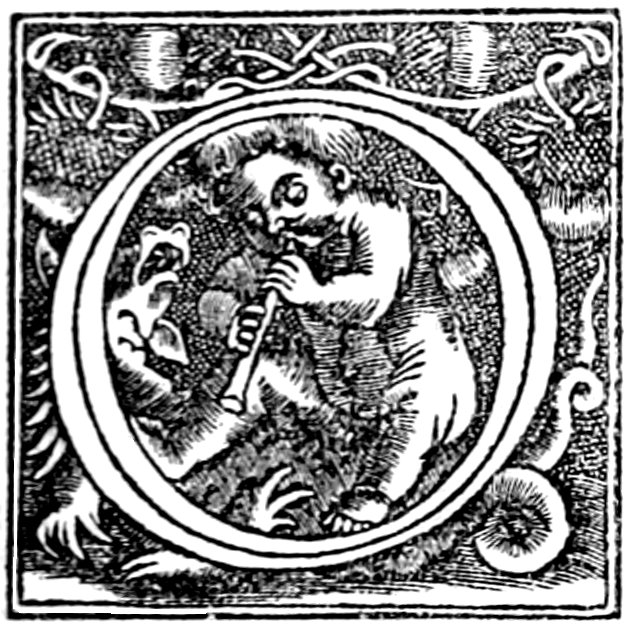

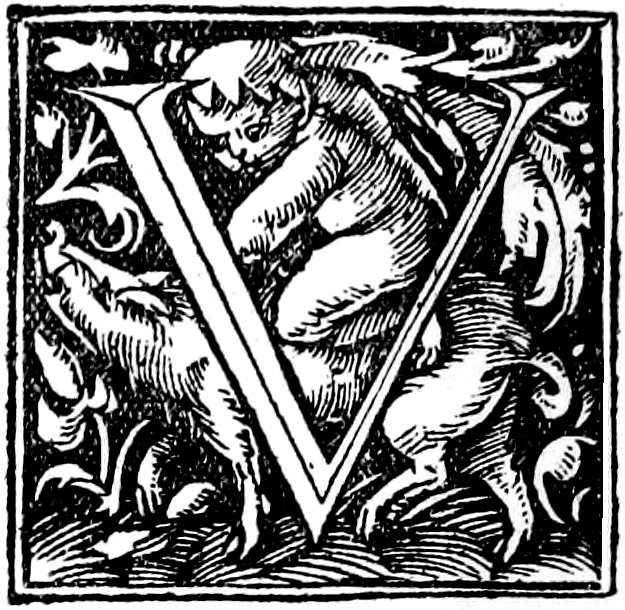
INITIALS BY URS GRAF
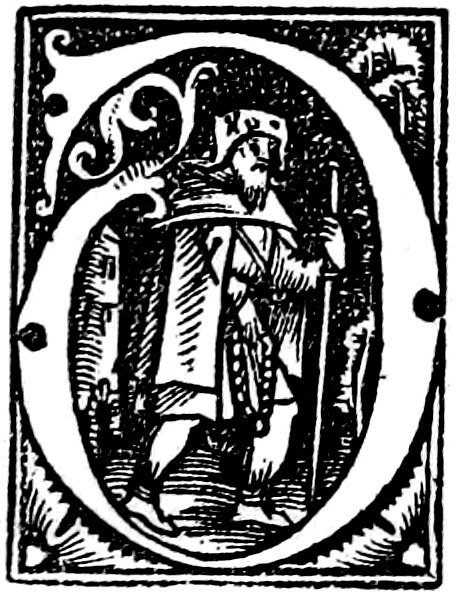
FROM THE ‘CHRISTIANLICHE BILGERSCHAFT’ OF ADAM PETRI
[137]
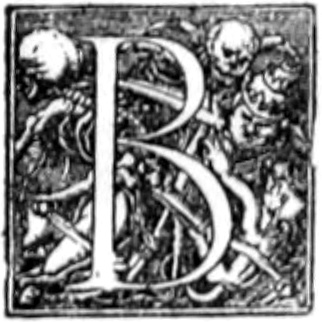
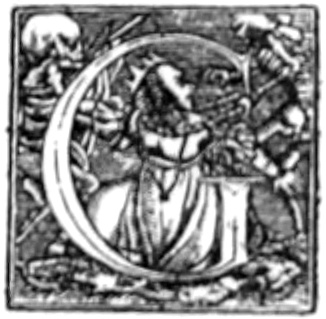

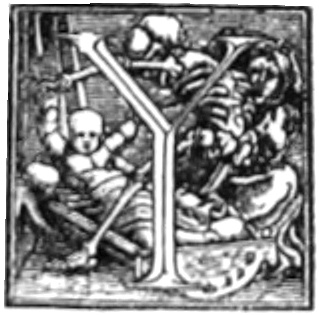
INITIALS OF ‘DANCE OF DEATH’ BY LÜTZELBERGER
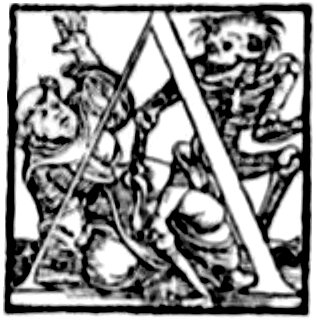
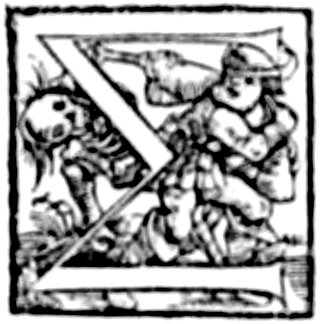
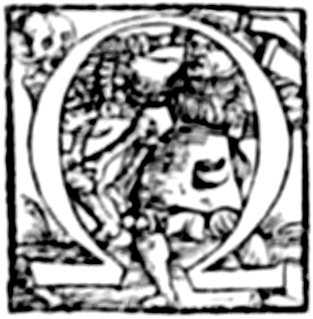
GREEK ‘DANCE OF DEATH’ INITIALS
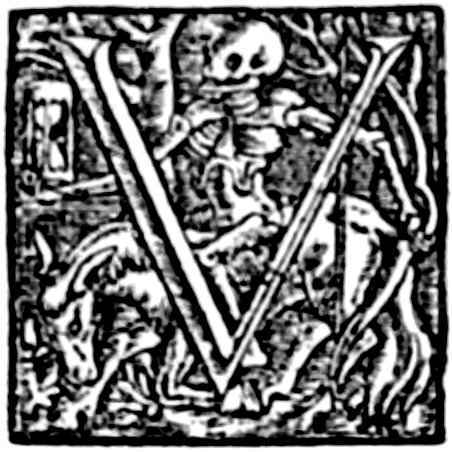
‘DANCE OF DEATH’ INITIAL
FROM ALPHABETS BY HANS HOLBEIN
[138]

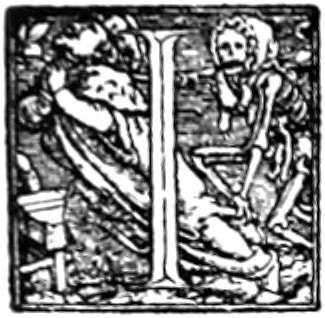
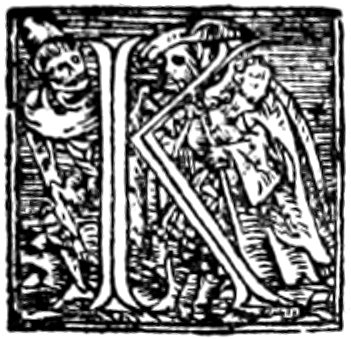
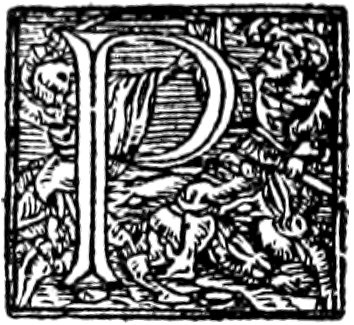
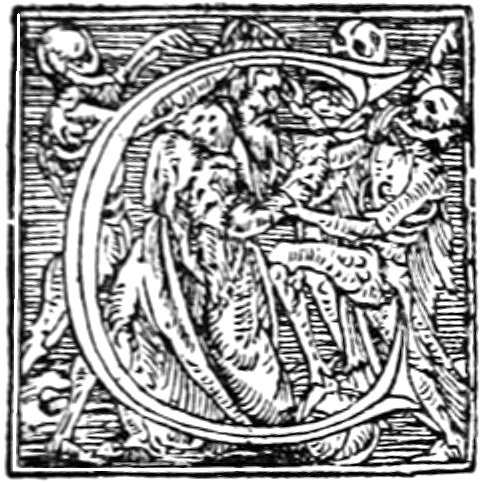
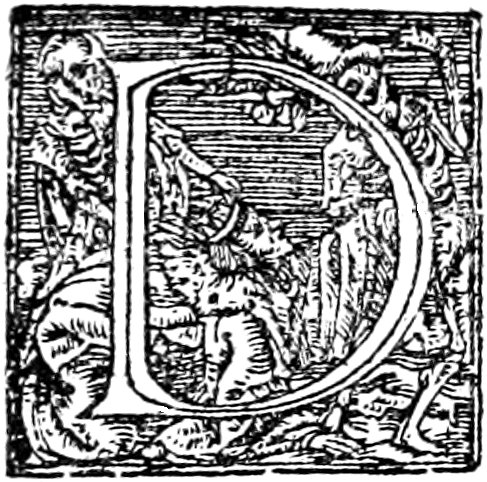
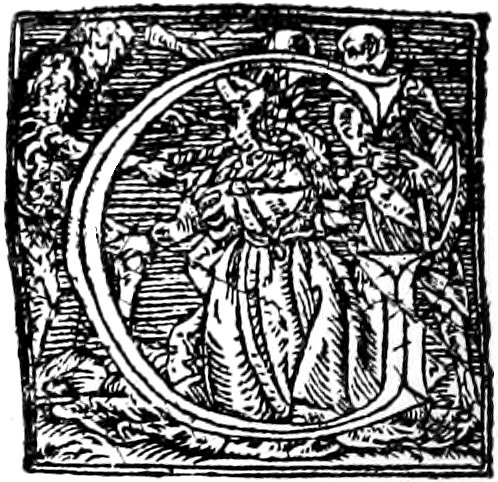
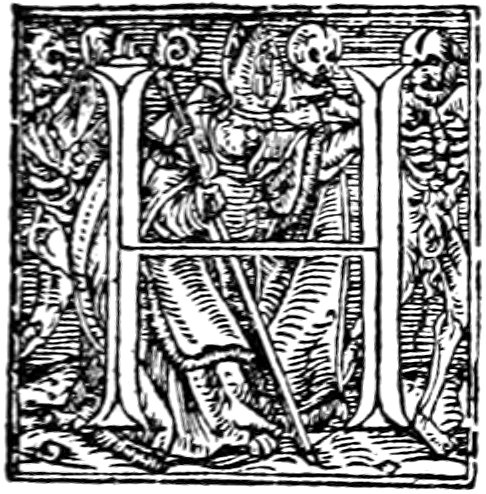
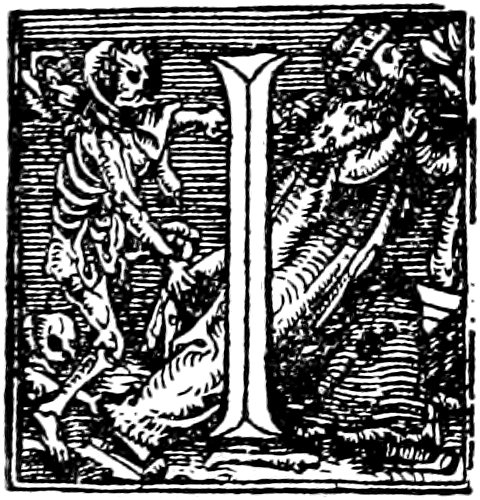
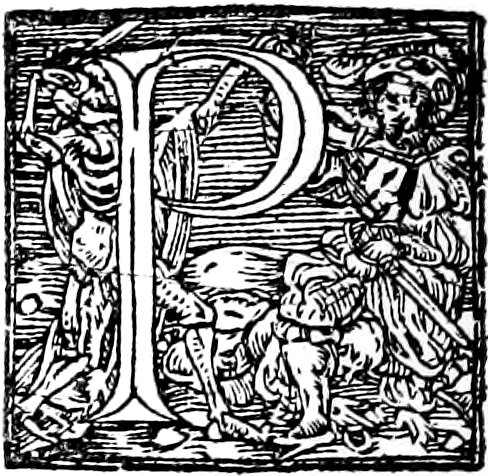
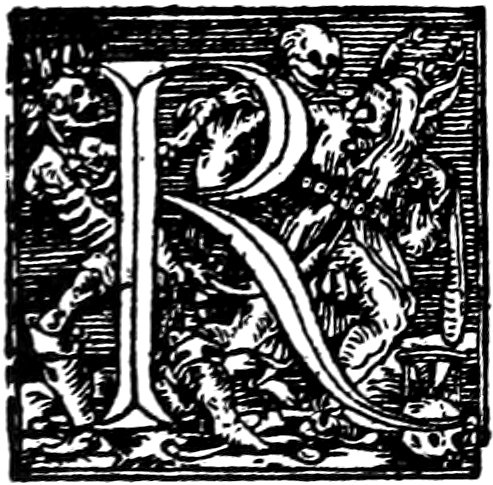
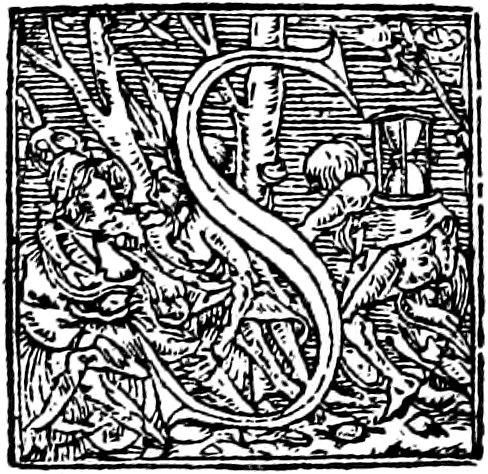
STRASBURG COPIES OF THE ‘DANCE OF DEATH’ ALPHABET
[139]
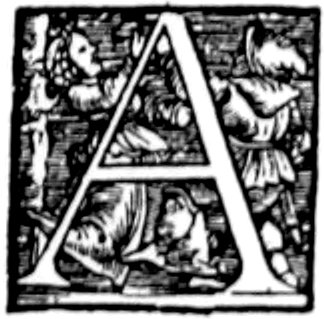

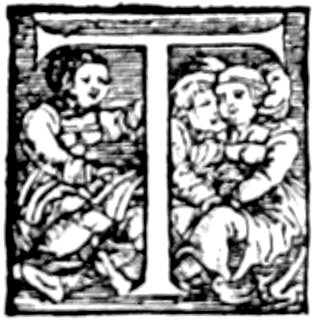
INITIALS OF PEASANTS FROM THE ‘GALEN’ OF BEBELIUS AND CRATANDER
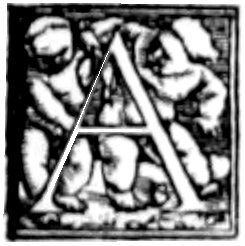
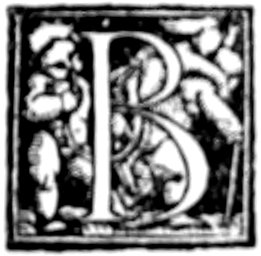
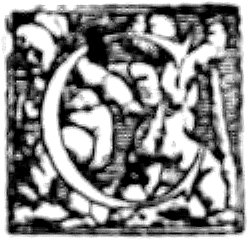
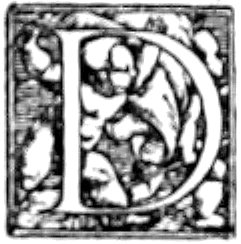

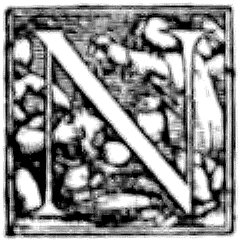
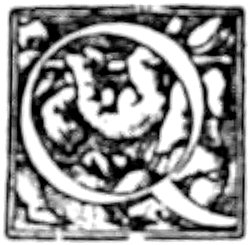
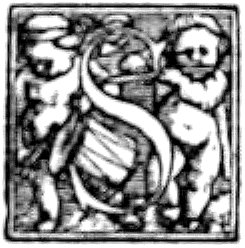
FROM CHILDREN’S ALPHABET IN ‘LACTANTIUS’ AND OTHER WORKS
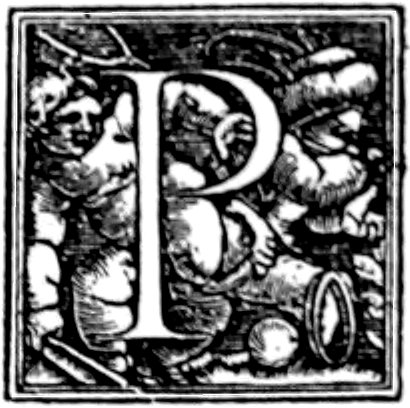
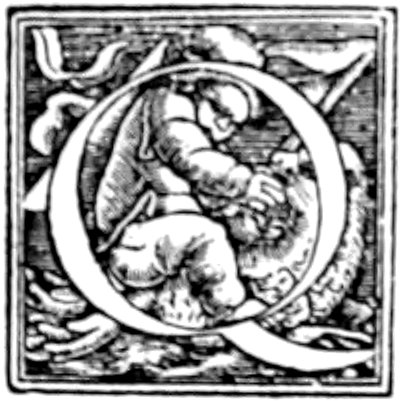

FROM LARGER CHILDREN’S ALPHABET
FROM ALPHABETS BY HANS HOLBEIN
[140]
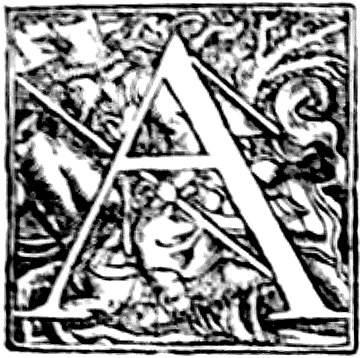
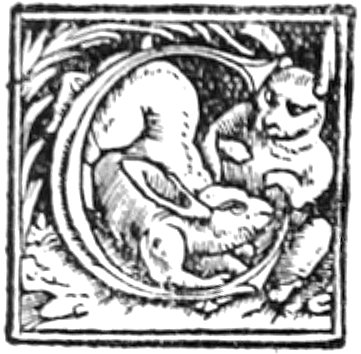
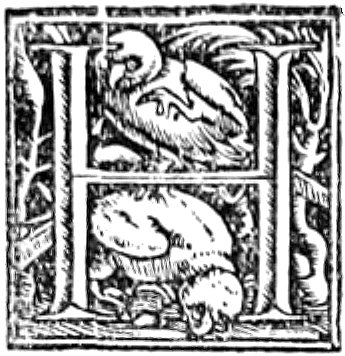
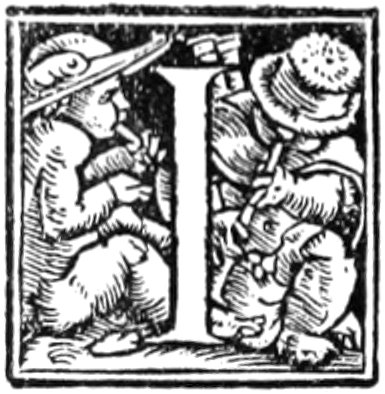
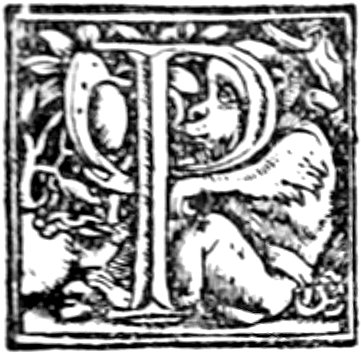
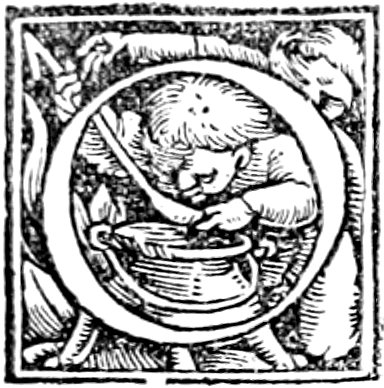
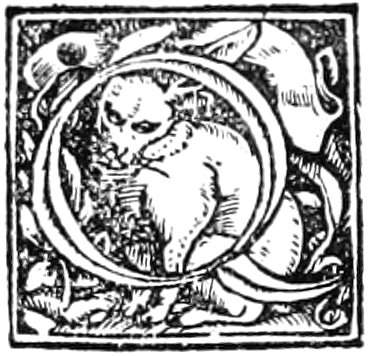
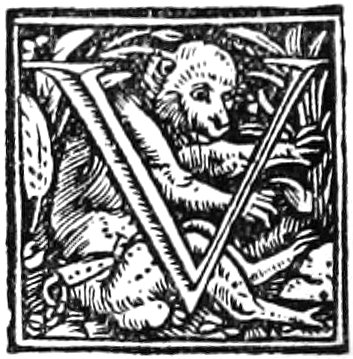
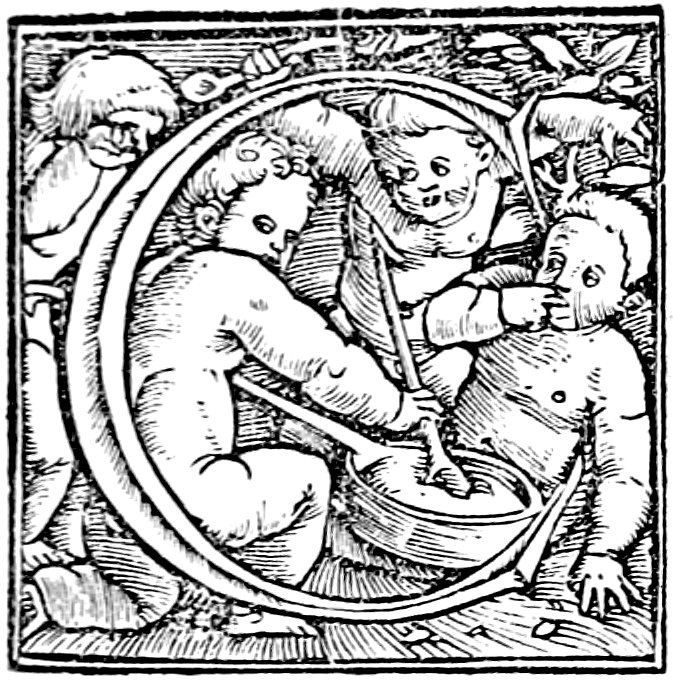
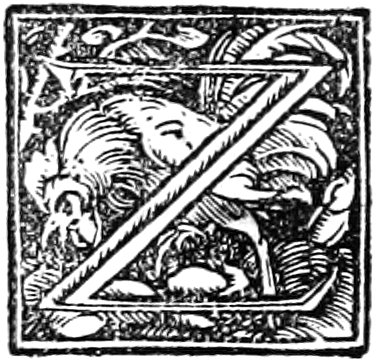
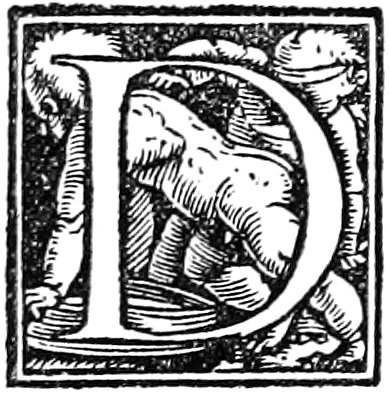
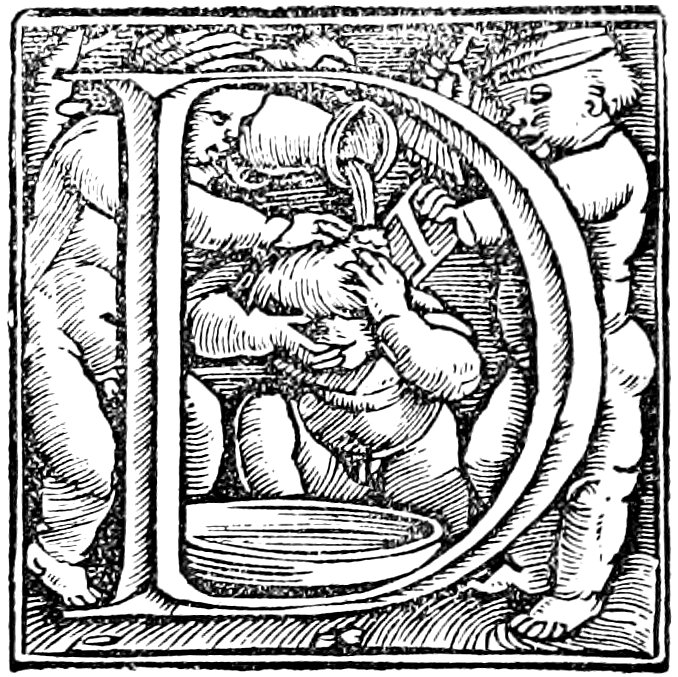
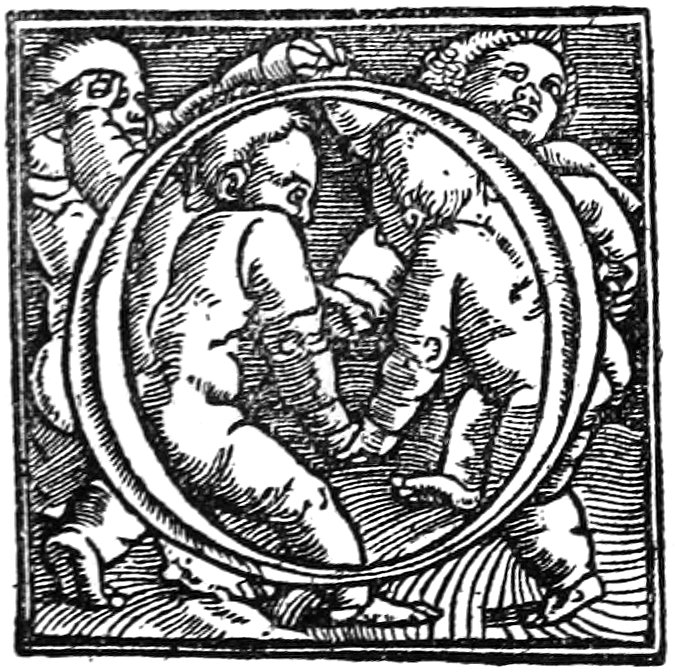
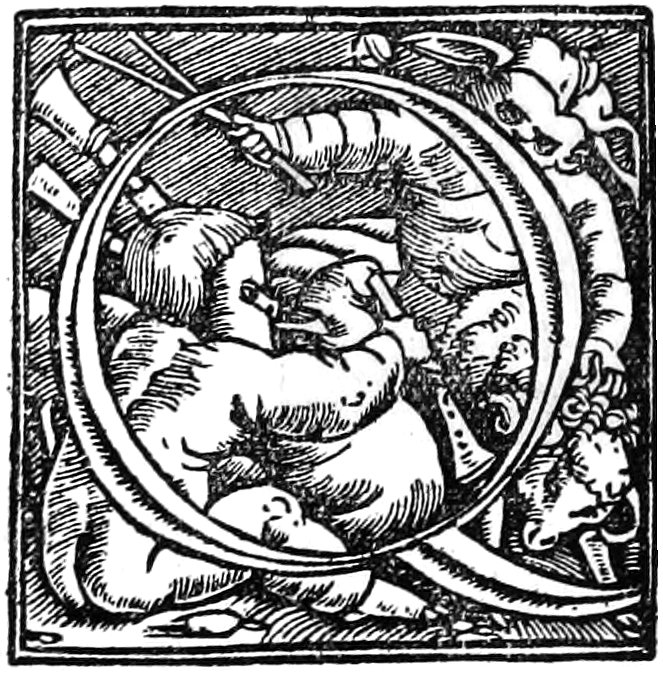
INITIALS OF VALENTIN CURIO, FROM ALPHABETS BY HANS HOLBEIN
[141]
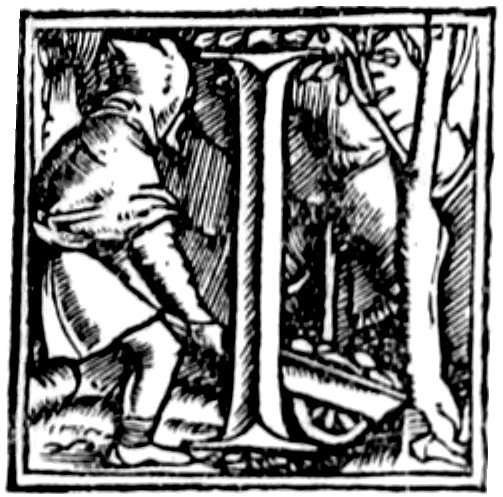
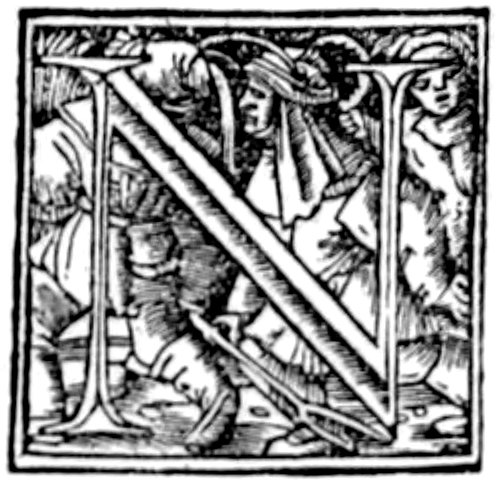
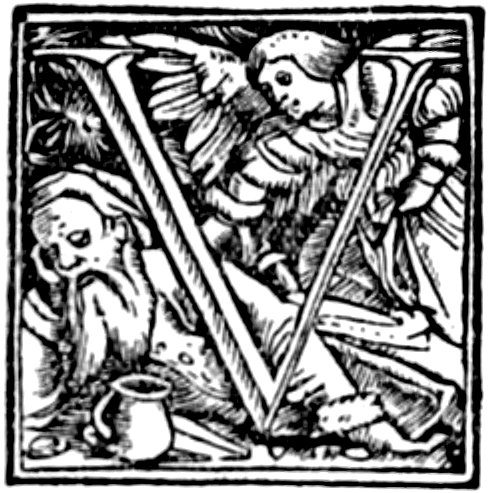
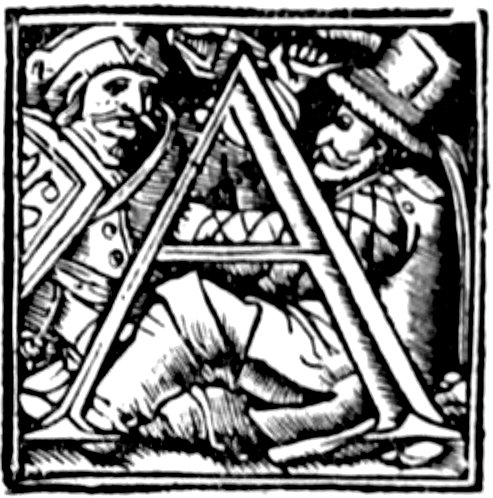
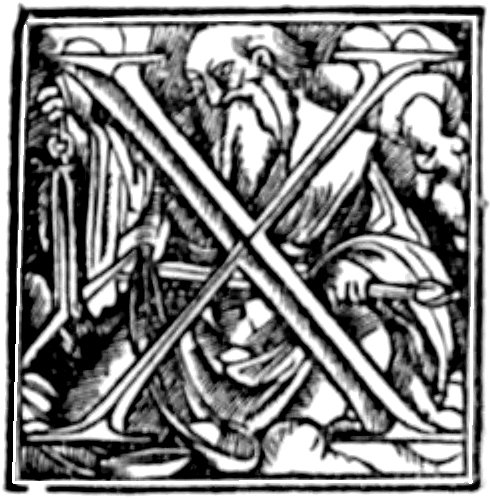
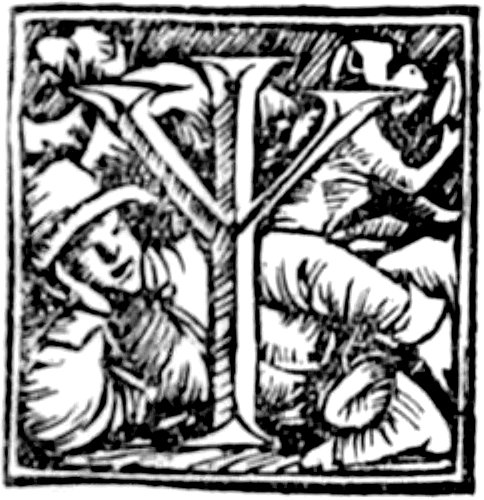
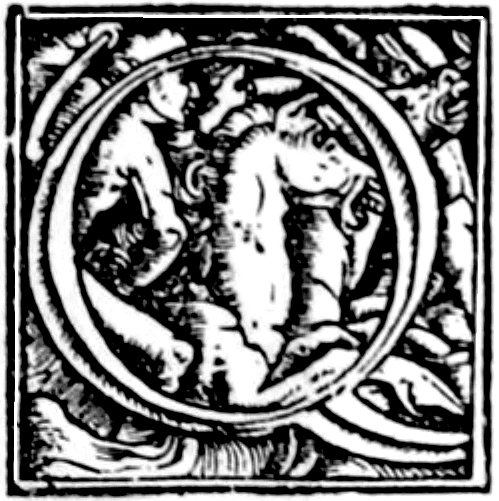
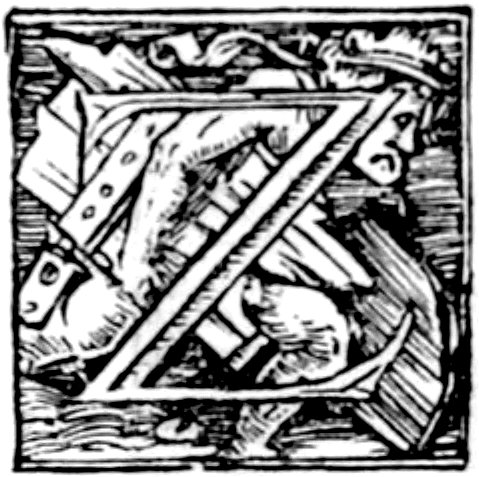
INITIALS OF VALENTIN CURIO, FROM ALPHABETS BY HANS HOLBEIN
[142]
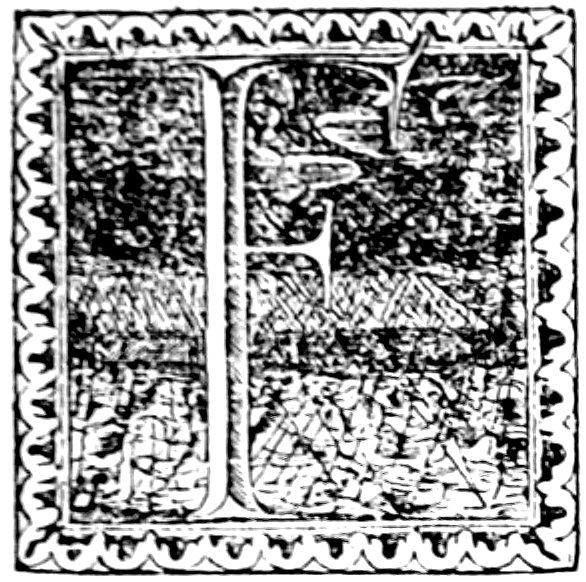
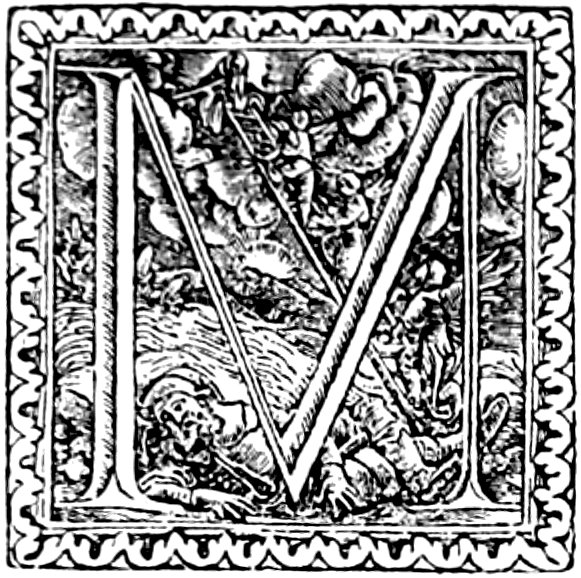
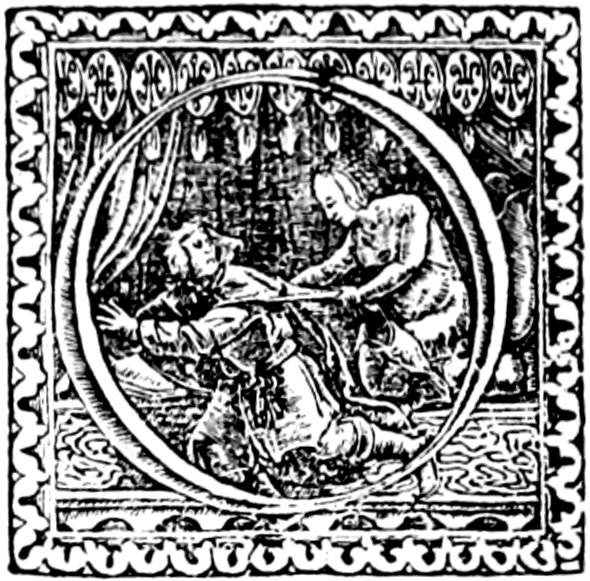
FROM THE ‘GALEN’ OF BEBELIUS AND CRATANDER
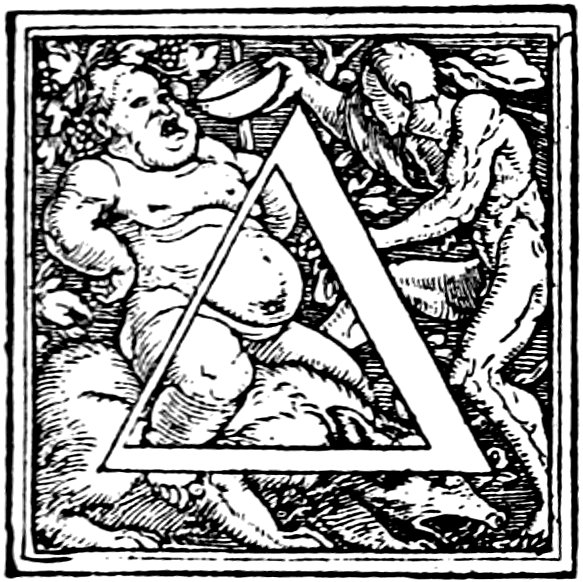
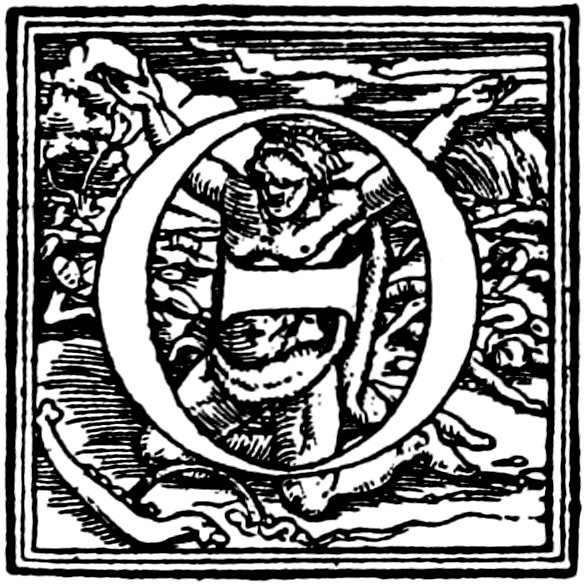
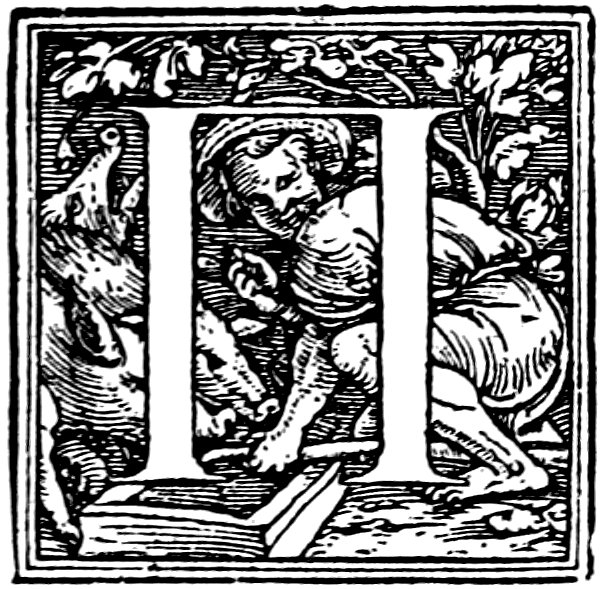
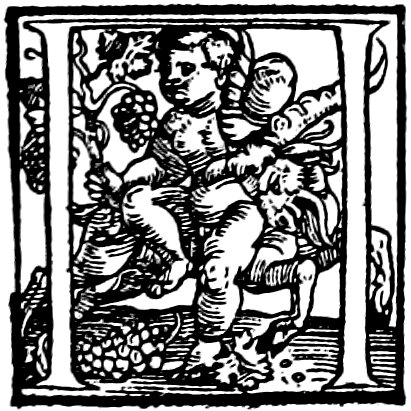
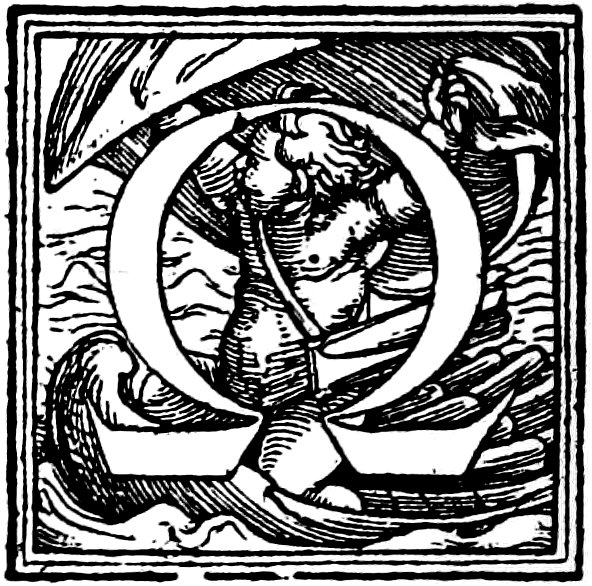
FROM THE GREEK LEXICON OF RENÉ GELLI
FROM ALPHABETS BY HANS HOLBEIN
[143]
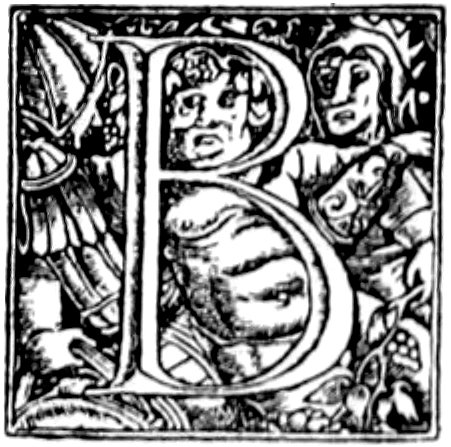

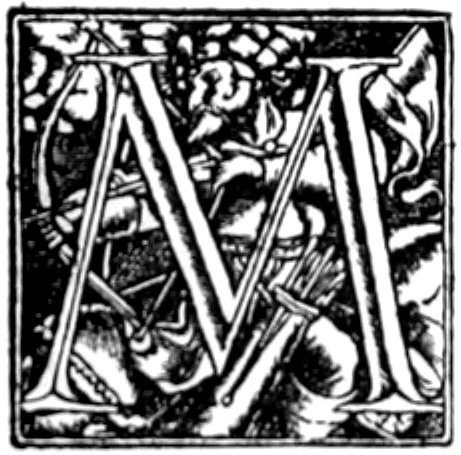
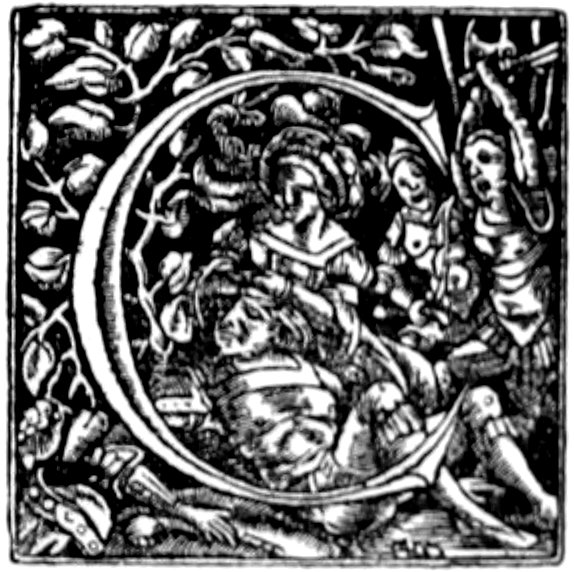
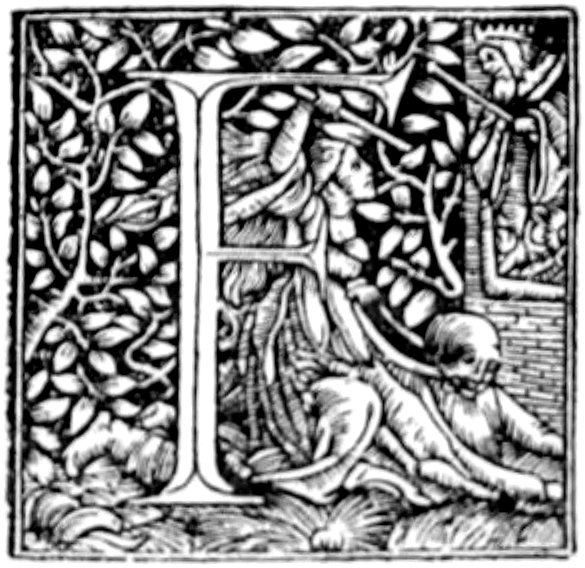
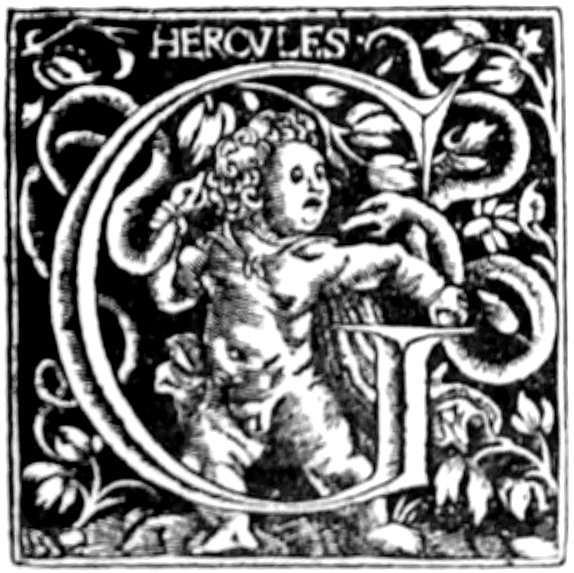

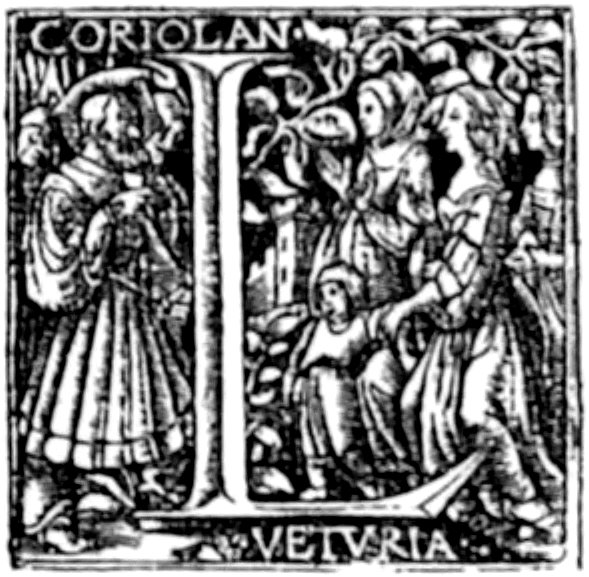
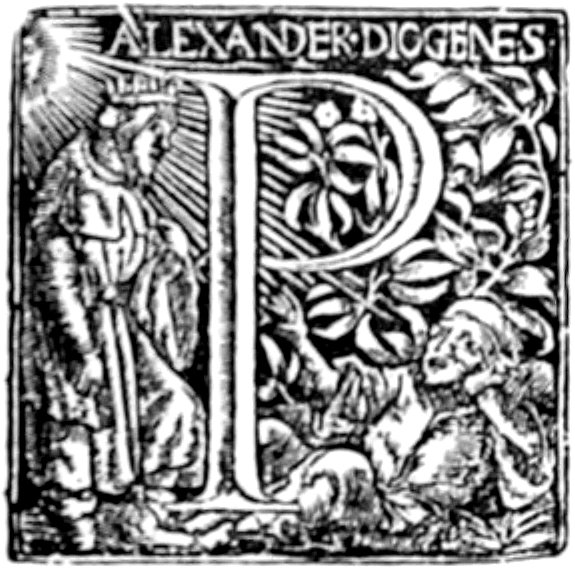
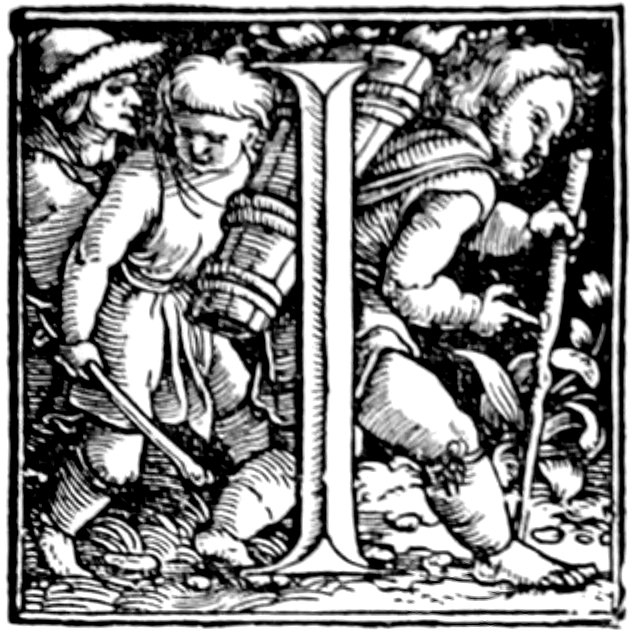
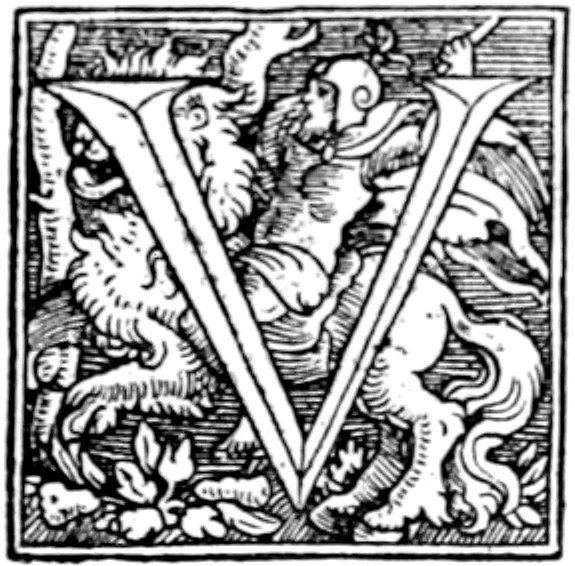
OTHER INITIALS BY HOLBEIN
[144]
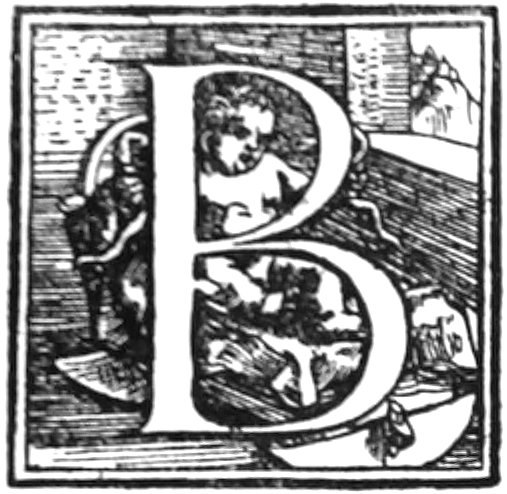
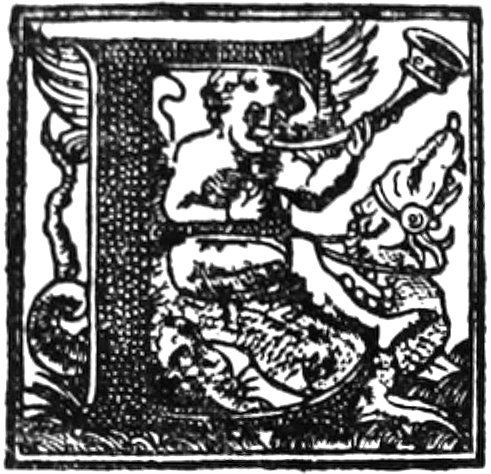
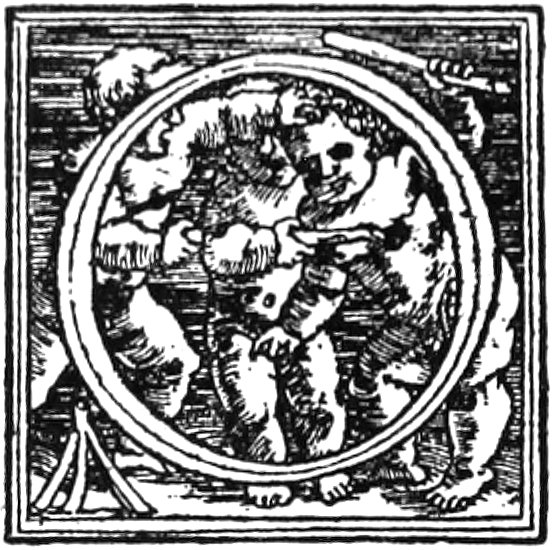
INITIALS BY HOLBEIN
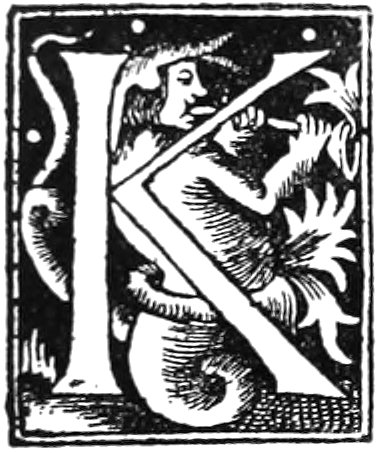
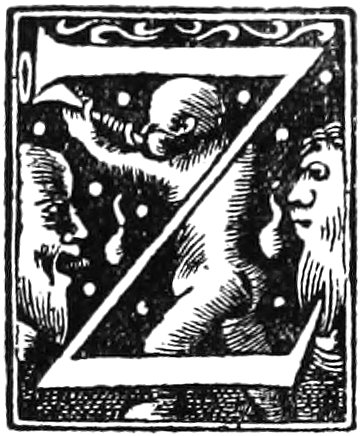
INITIALS FROM ALPHABET BY AMBROSE HOLBEIN
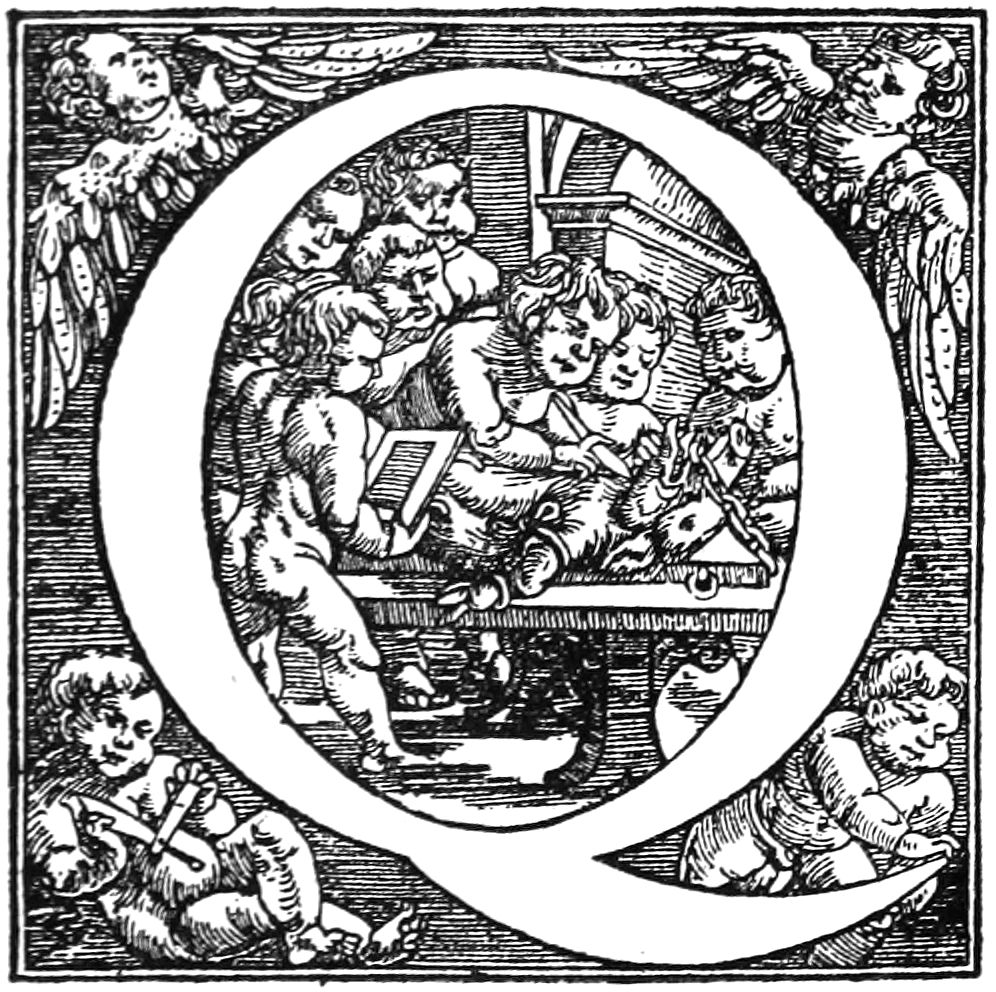
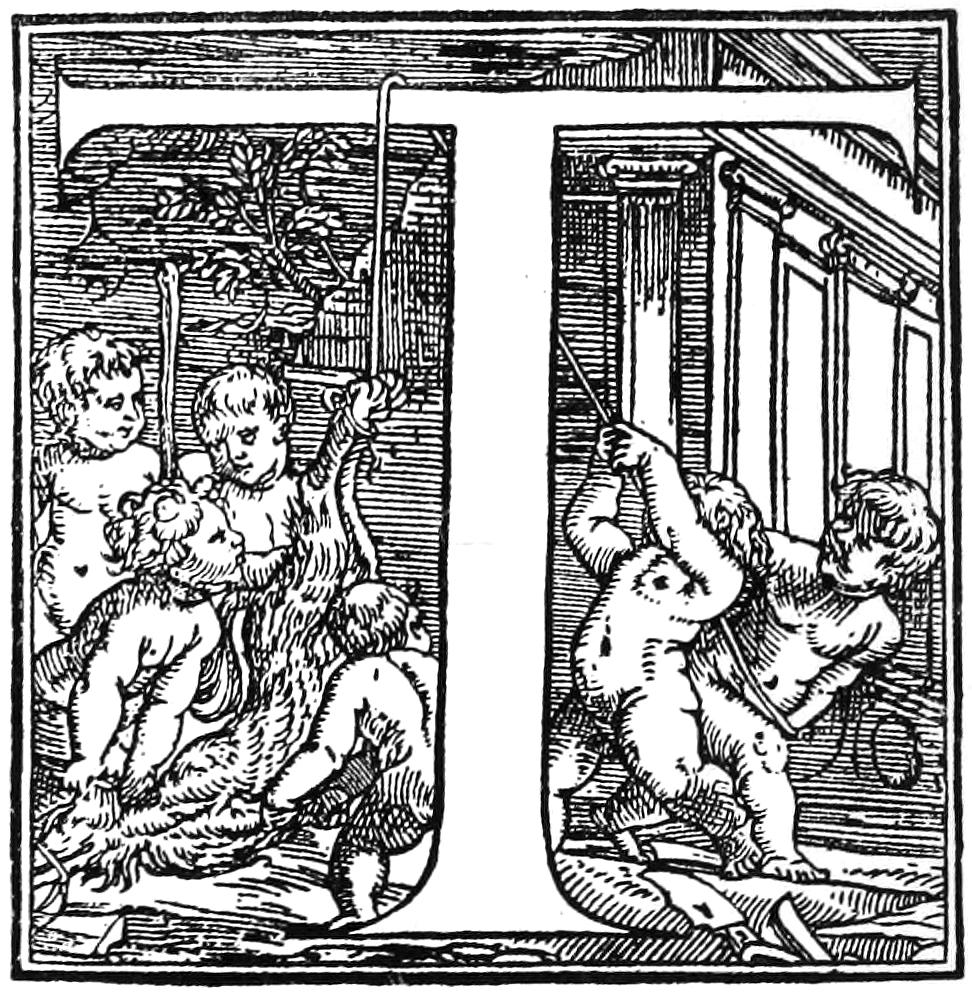
INITIALS BY VAN CALCAR FROM VESALIUS
[145]
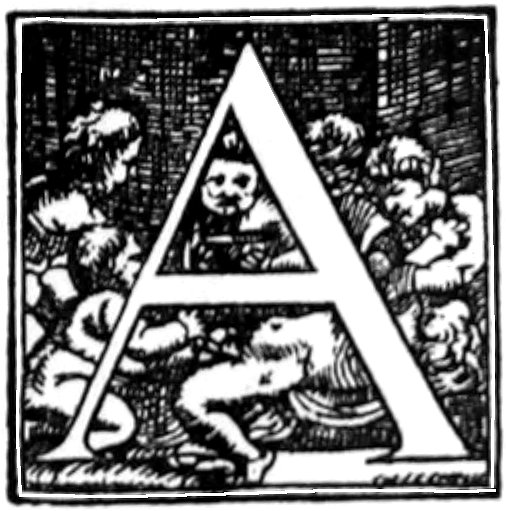
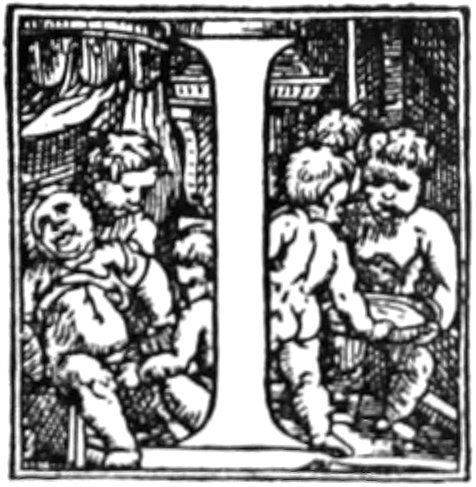
INITIALS BY VAN CALCAR FROM VESALIUS
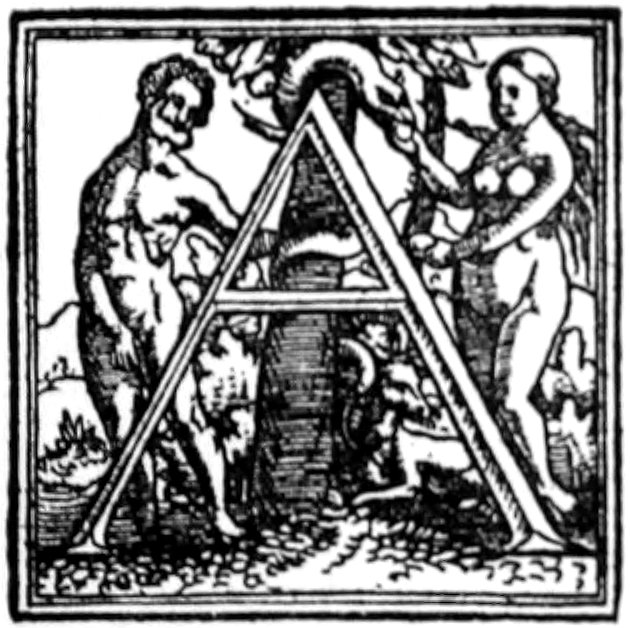
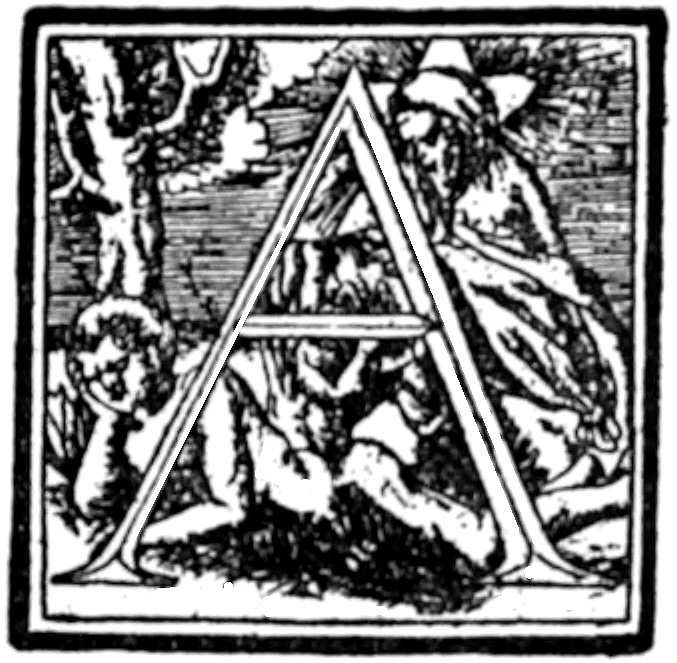
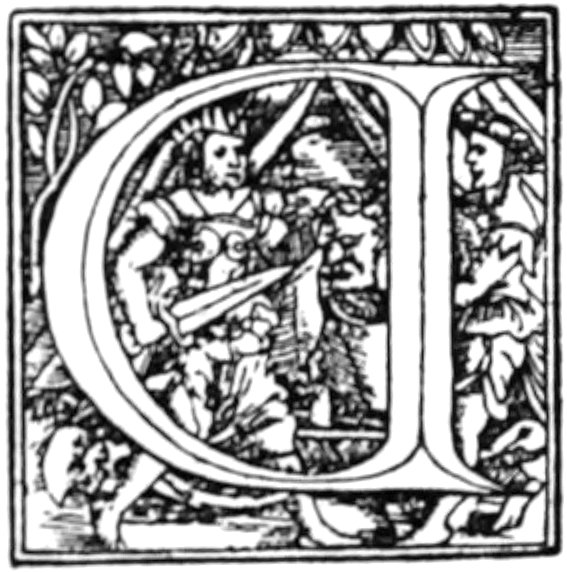
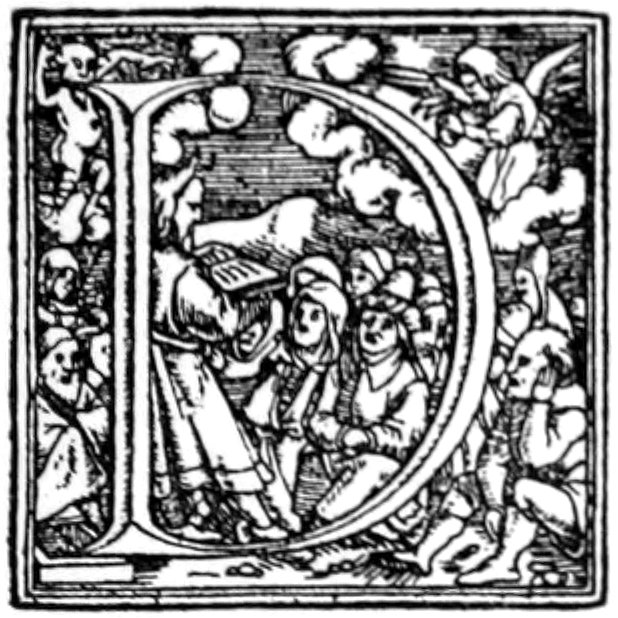
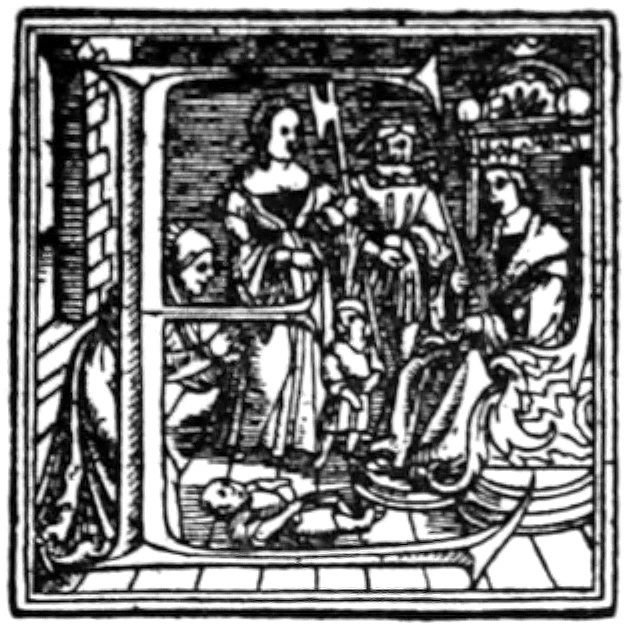
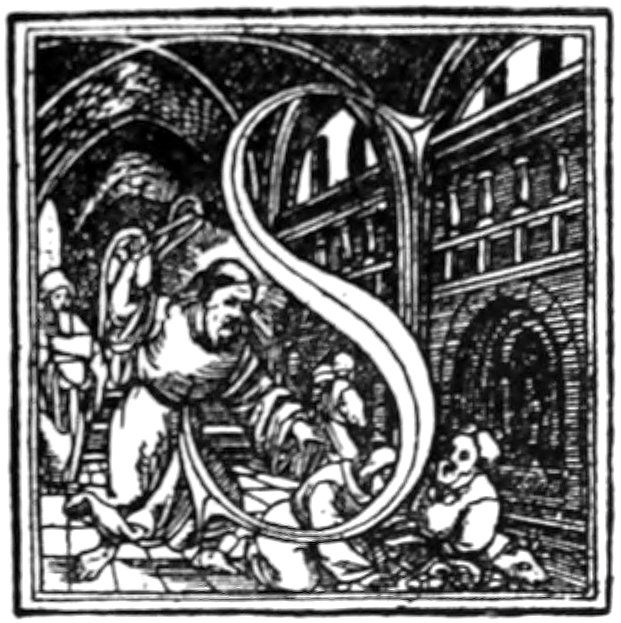
INITIALS USED BY FROSCHOUER
[146]

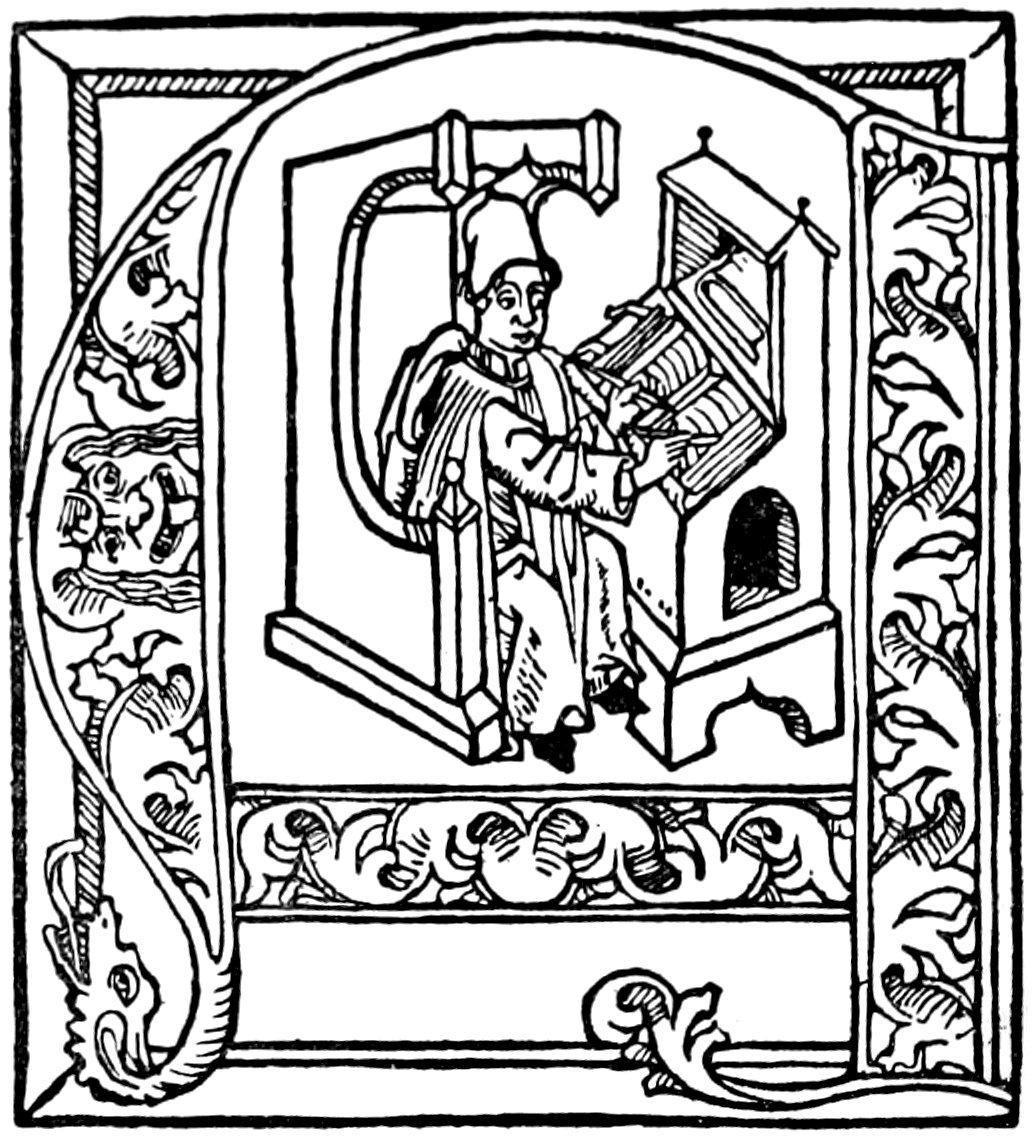
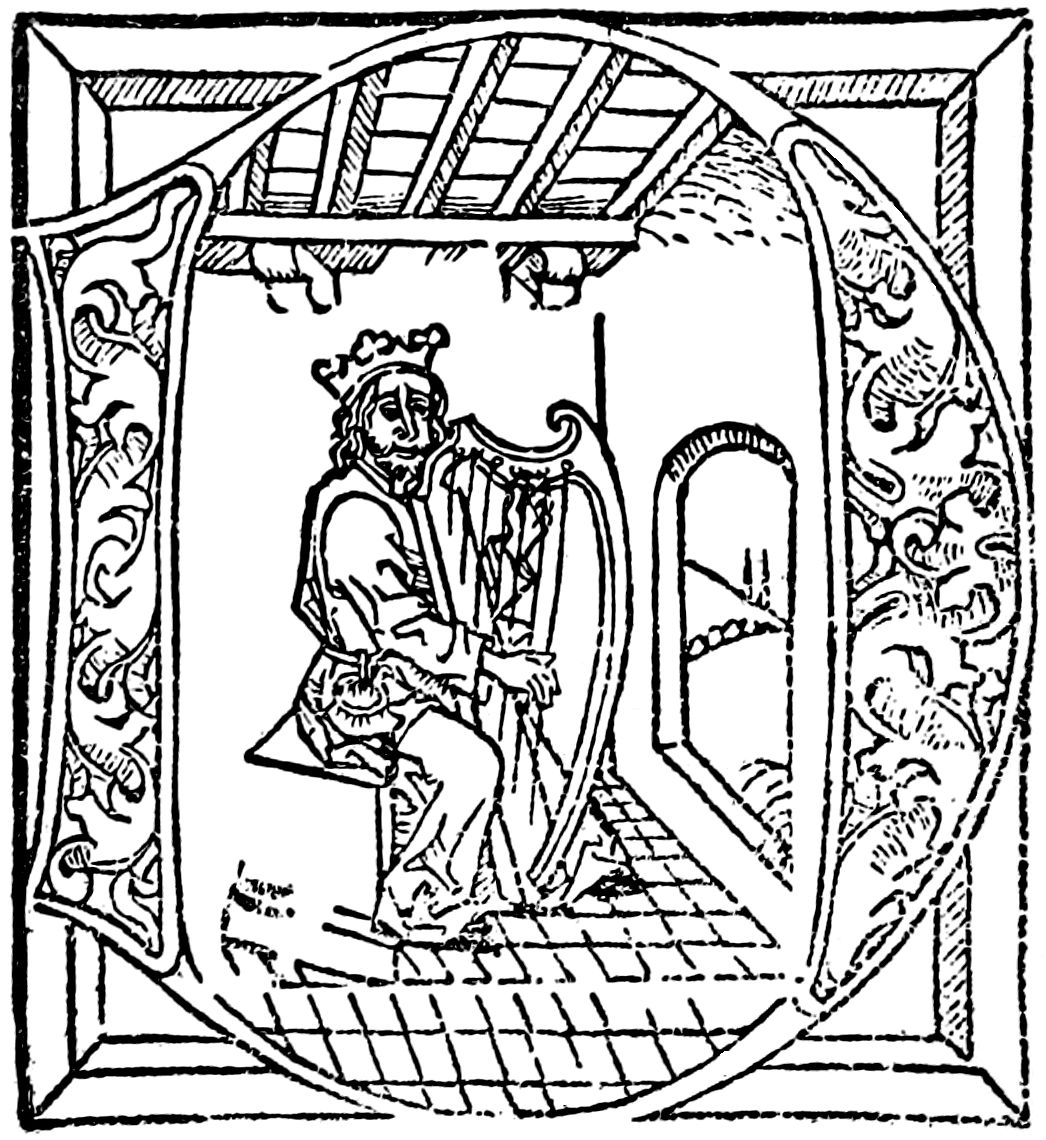
FROM THE ‘RUDIMENTA NOVITIORUM’ AND JOSEPHUS OF LUCAS BRANDIS, 1475
[147]
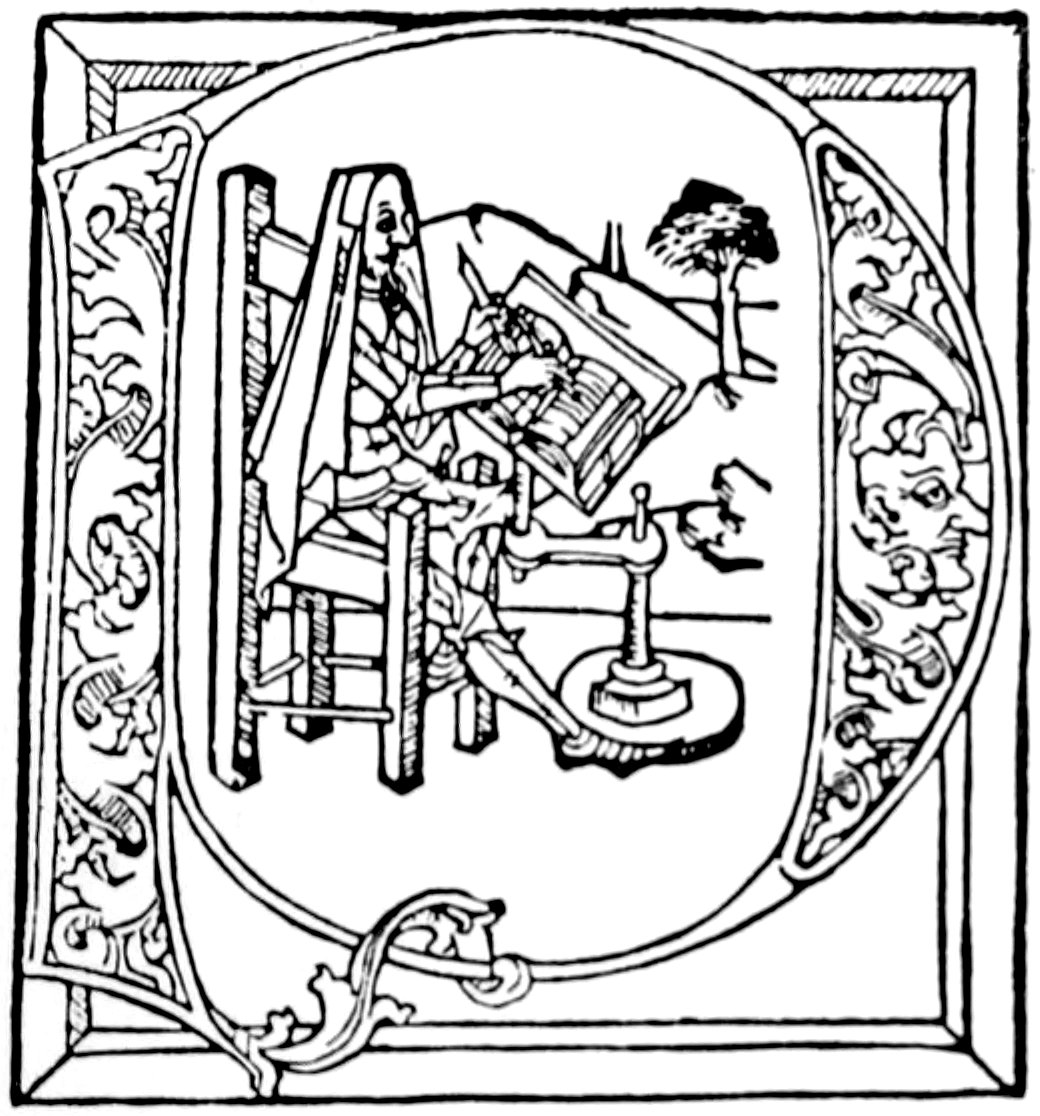
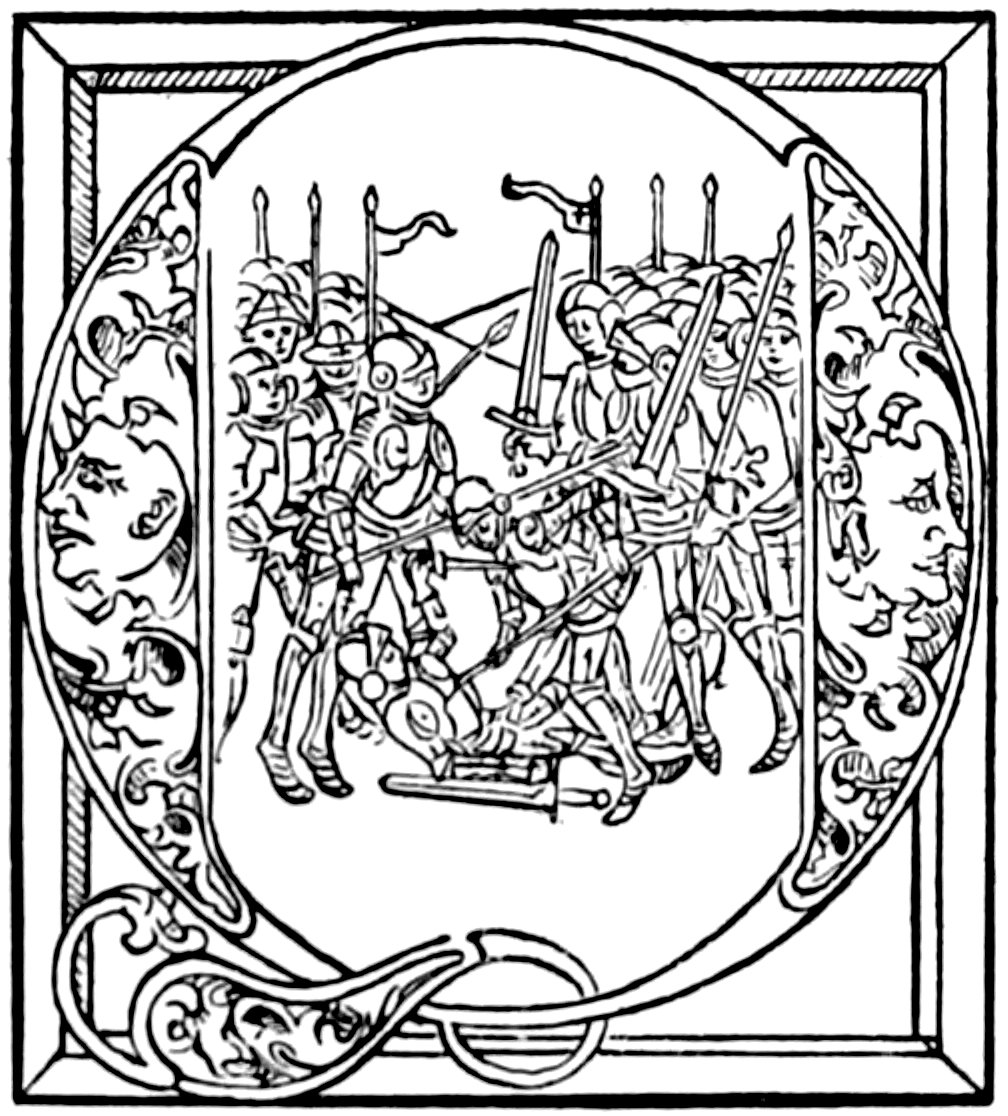
FROM THE ‘RUDIMENTA NOVITIORUM’ AND JOSEPHUS OF LUCAS BRANDIS, 1475
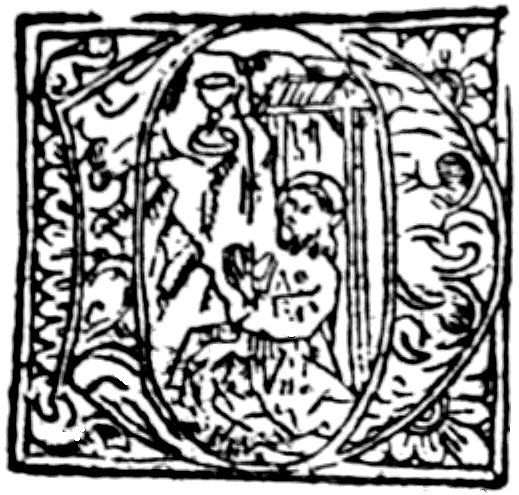
FROM THE ‘LEBEN DES HEIL. HIERONYMUS’ BY BARTHOLOMEW GHOTAN, 1484
[148]
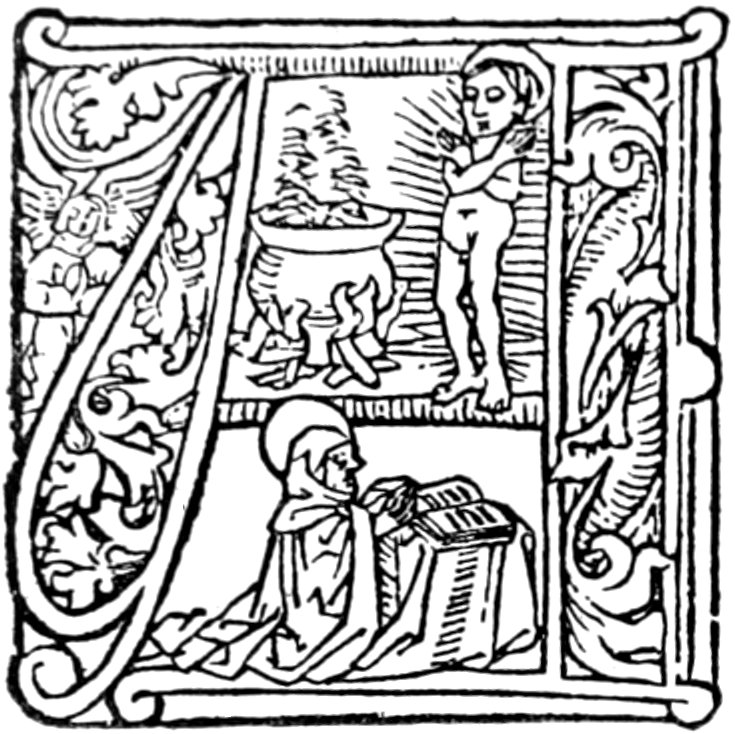
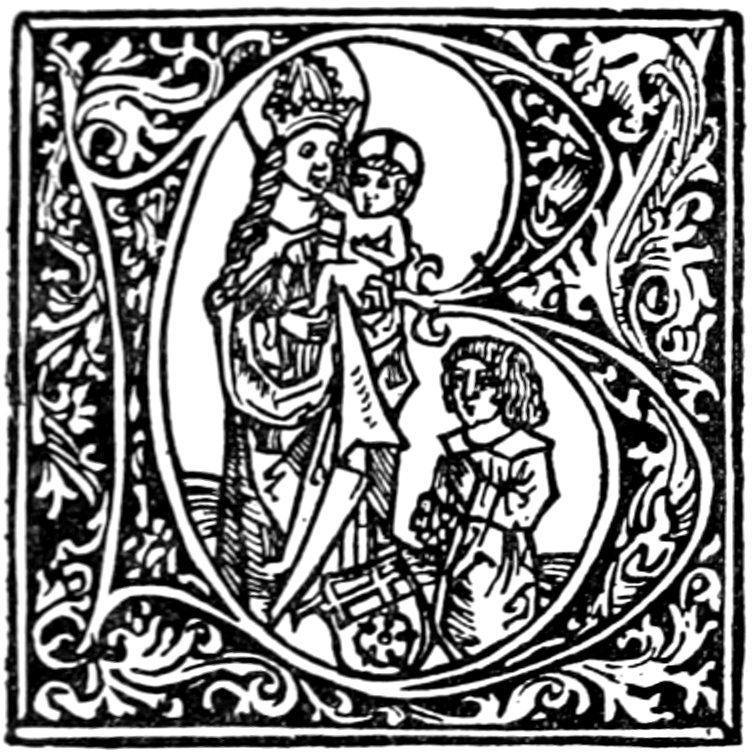
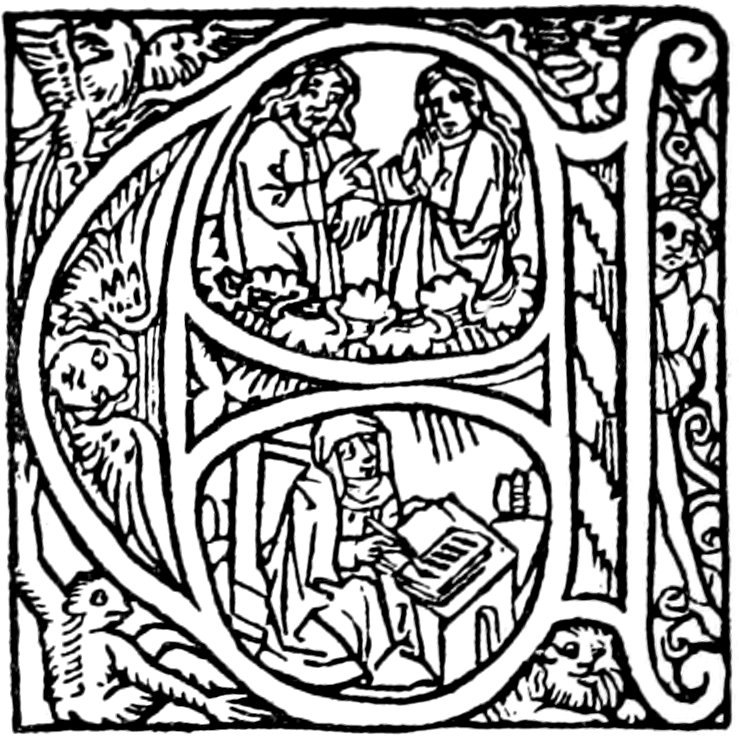
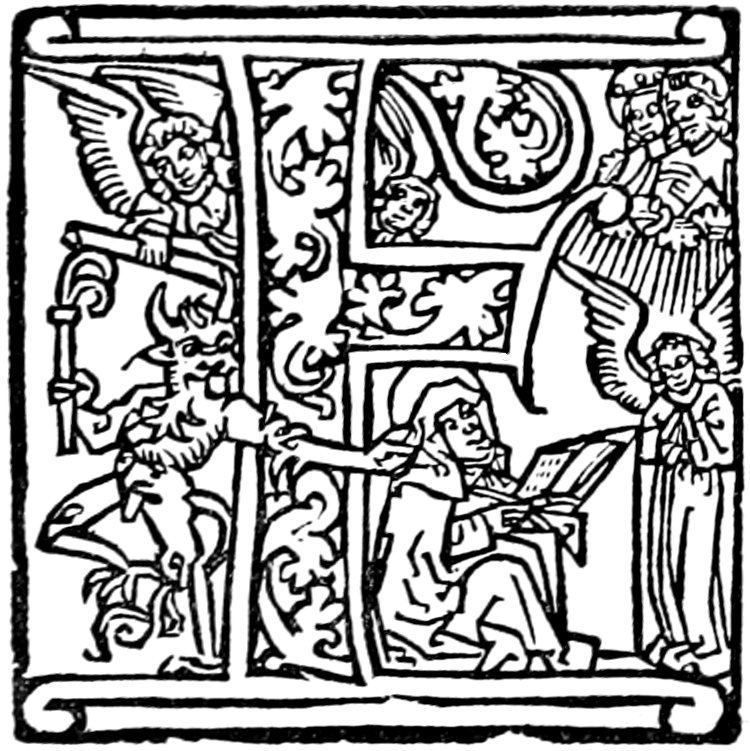
FROM THE ‘MEDITATIONES SANCTÆ BRIGITTÆ’ BY BARTHOLOMEW GHOTAN
[149]
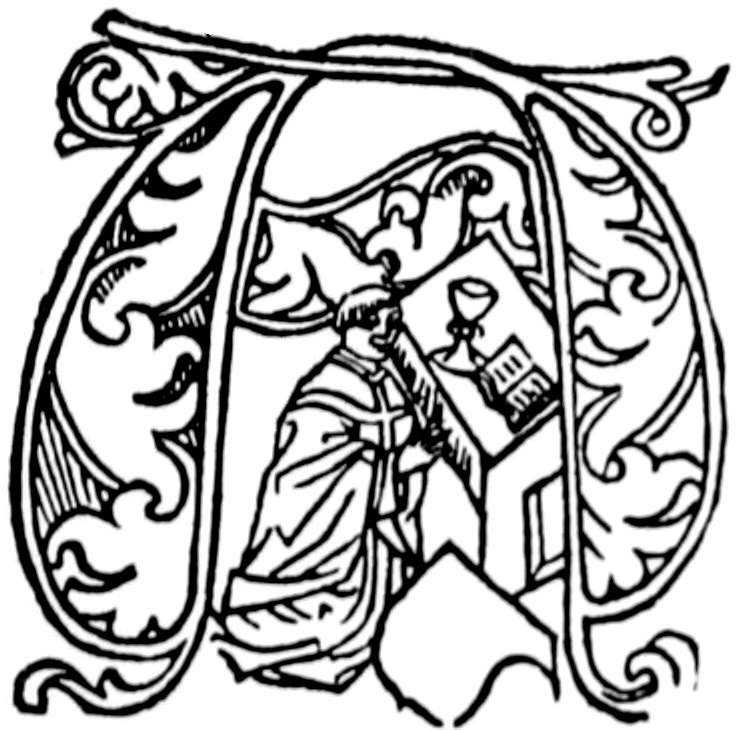
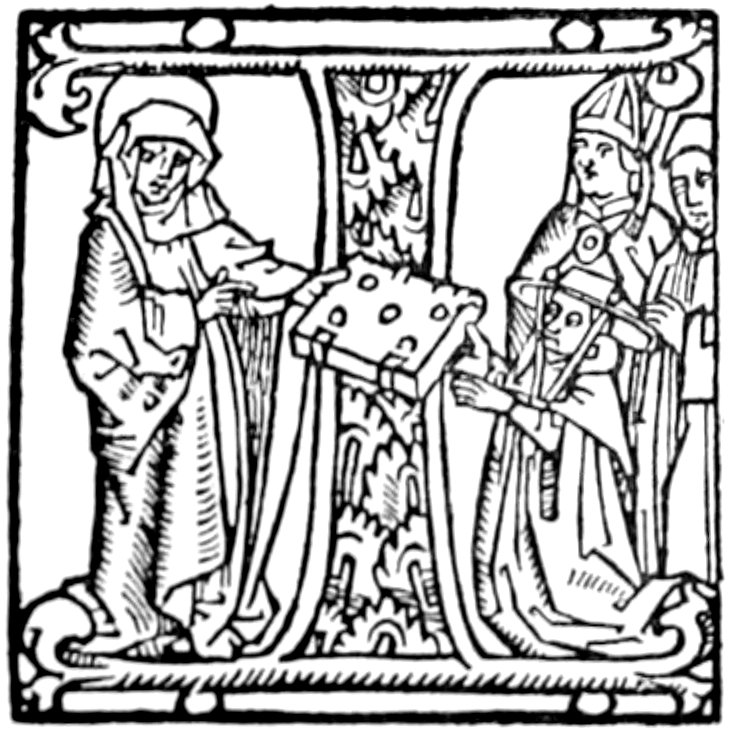
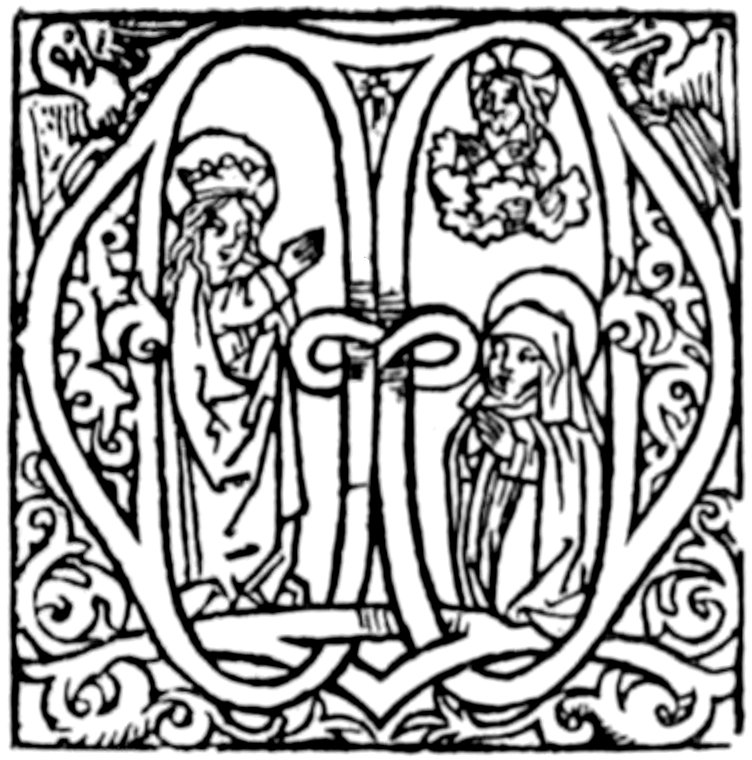

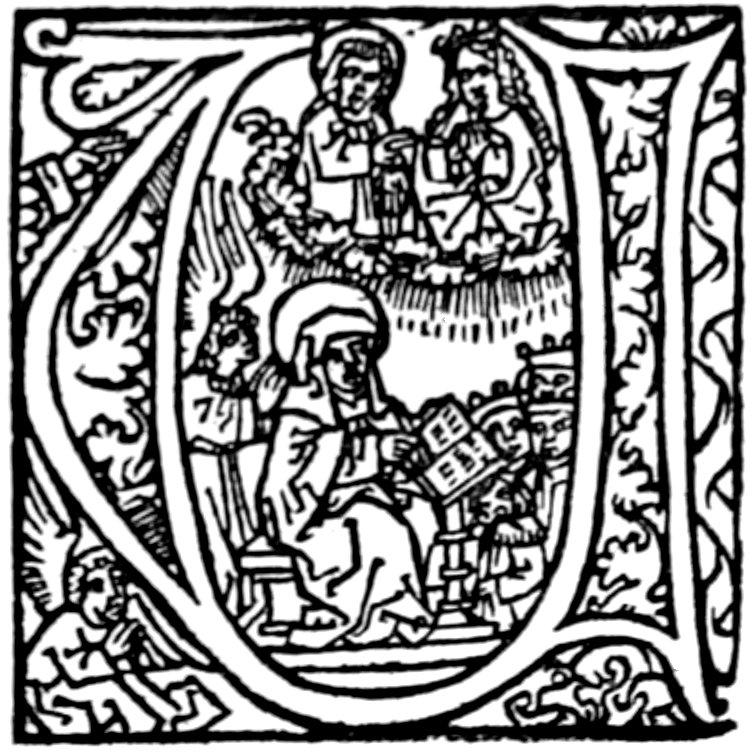
FROM THE ‘MEDITATIONES SANCTÆ BRIGITTÆ’ BY BARTHOLOMEW GHOTAN
[150]
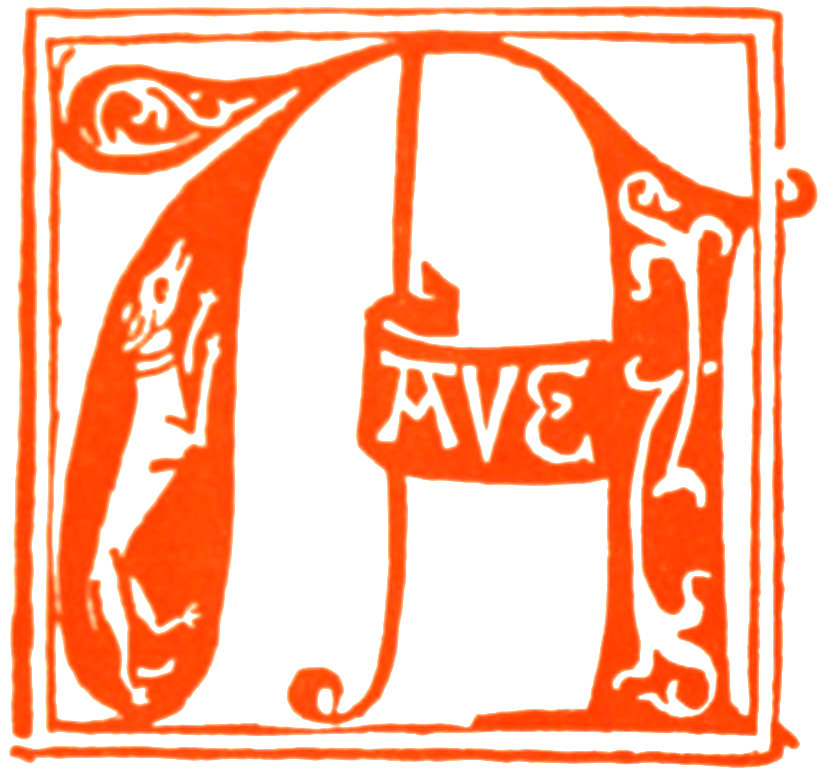
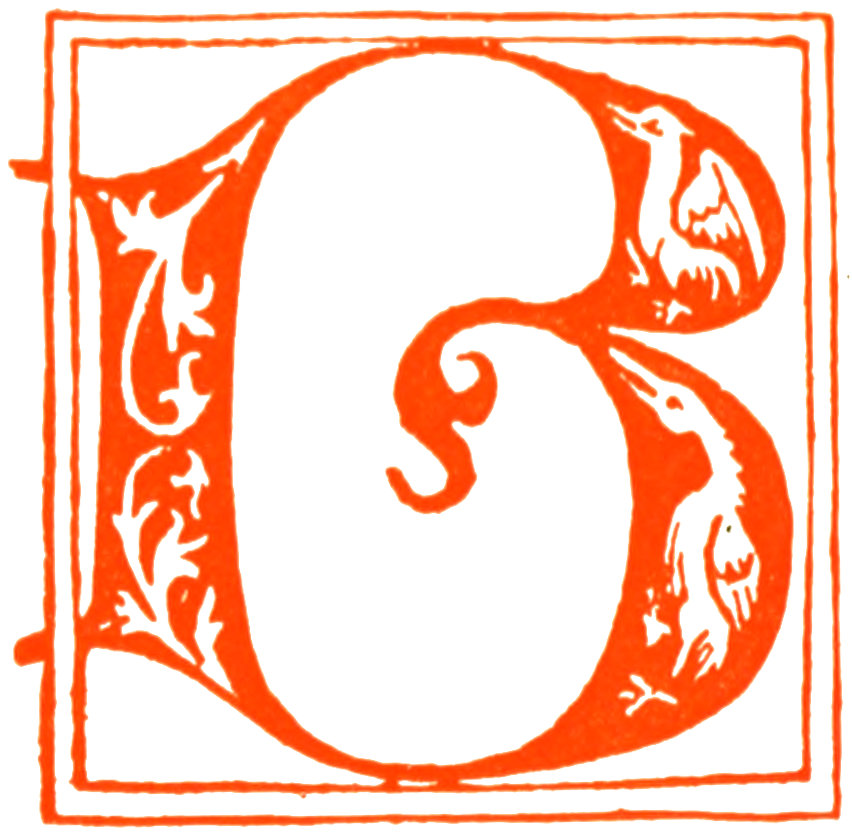
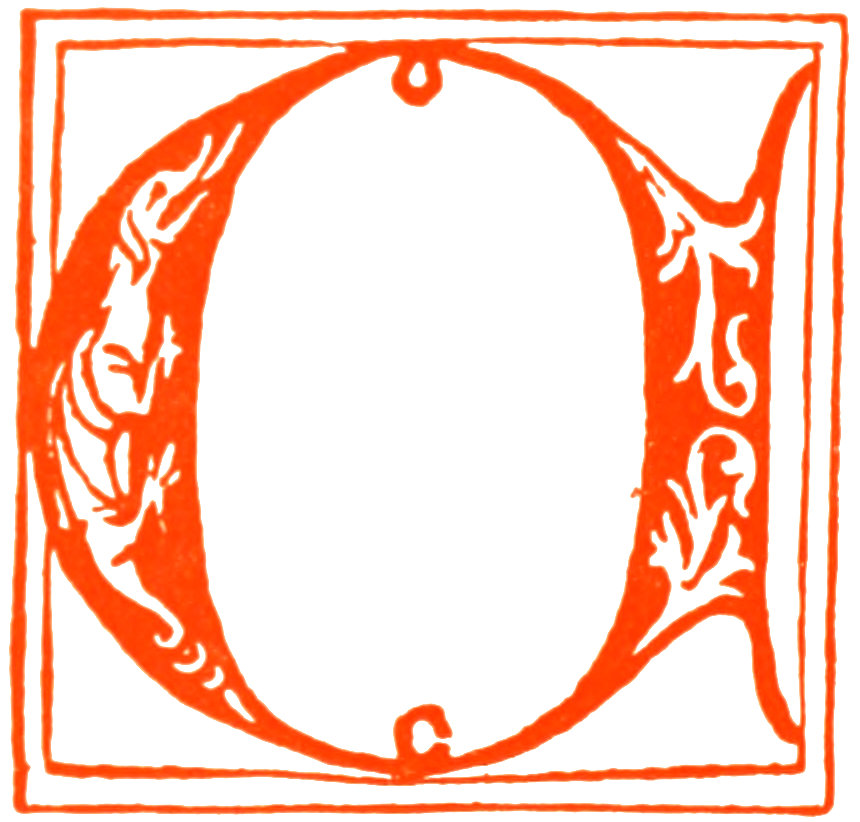
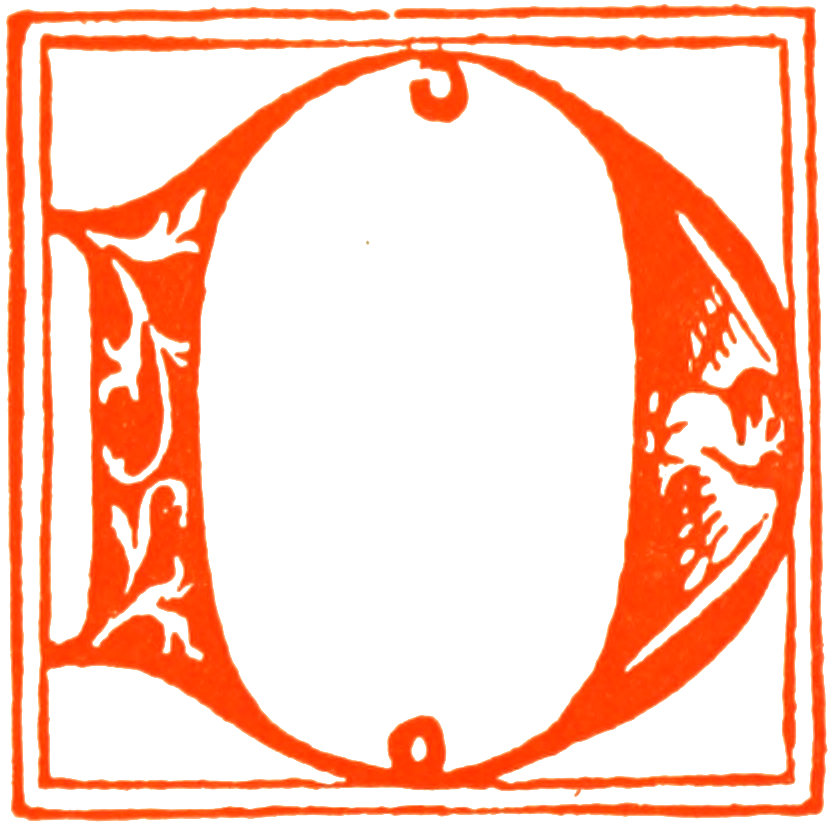
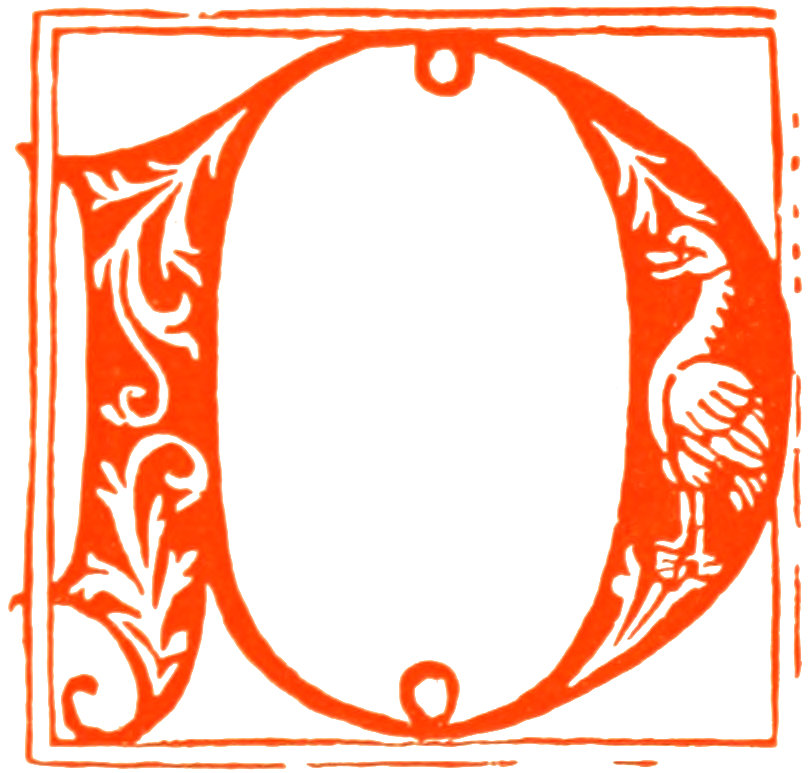
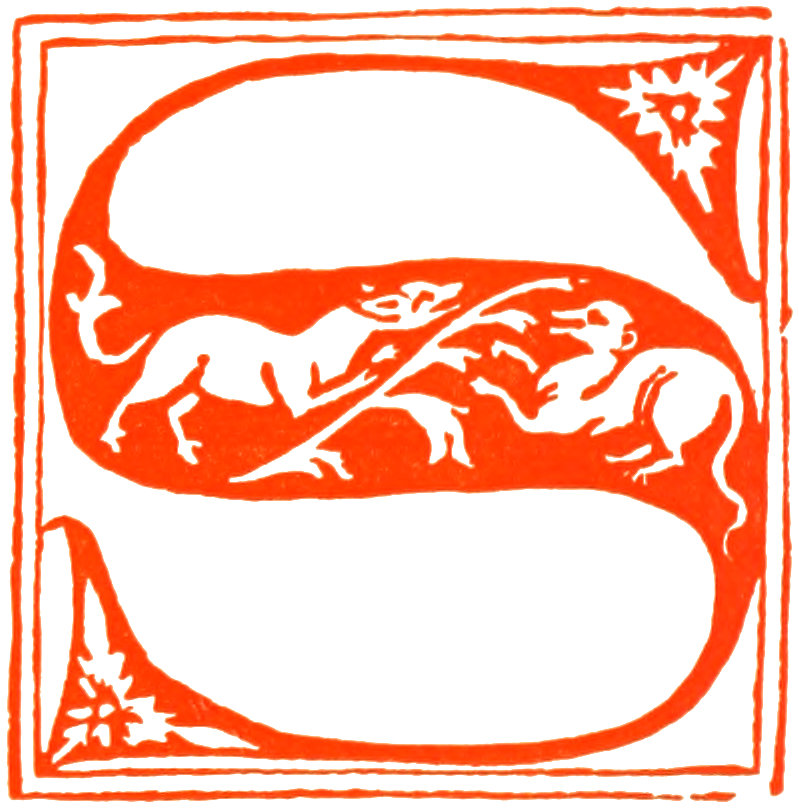
FROM THE ‘MISSALE OLUMUCENSE’ OF SENSENSCHMIDT, 1489
[151]
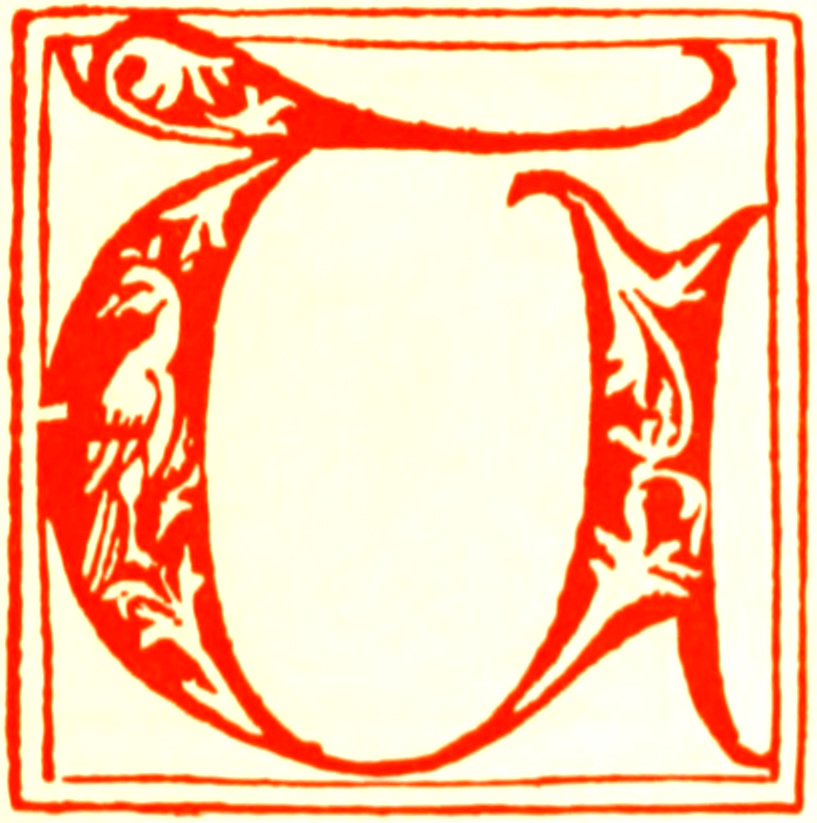
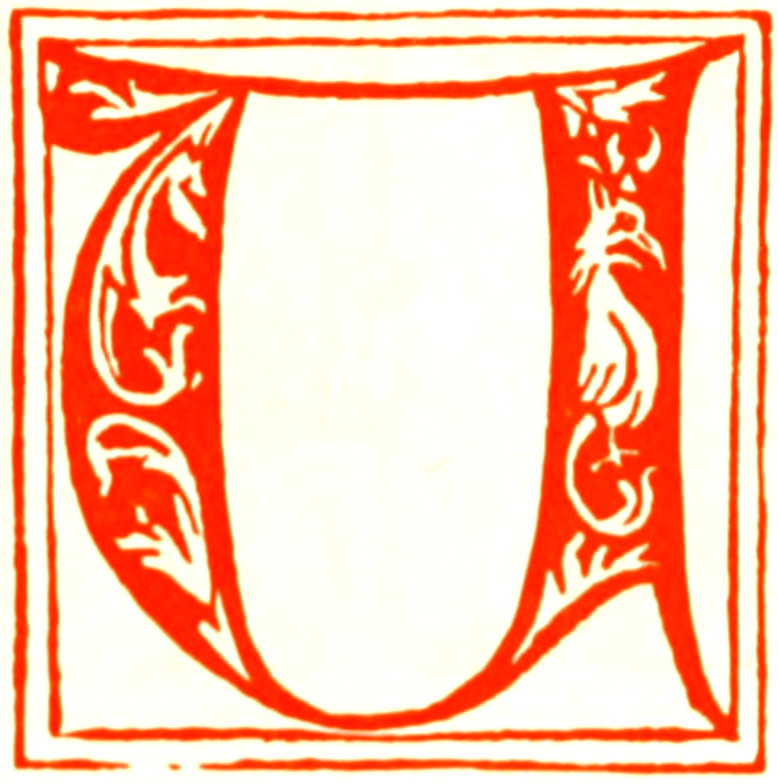
FROM THE ‘MISSALE OLUMUCENSE’ OF SENSENSCHMIDT, 1489
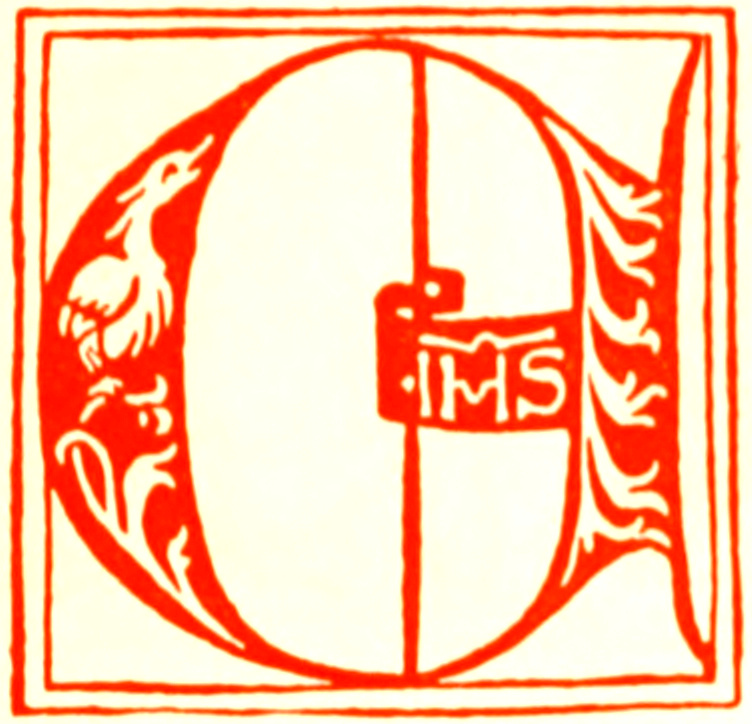
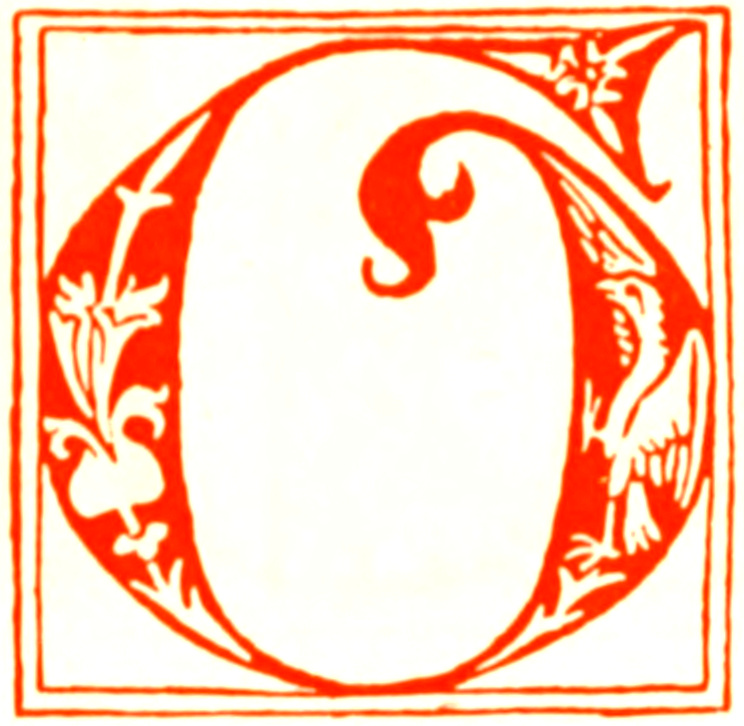
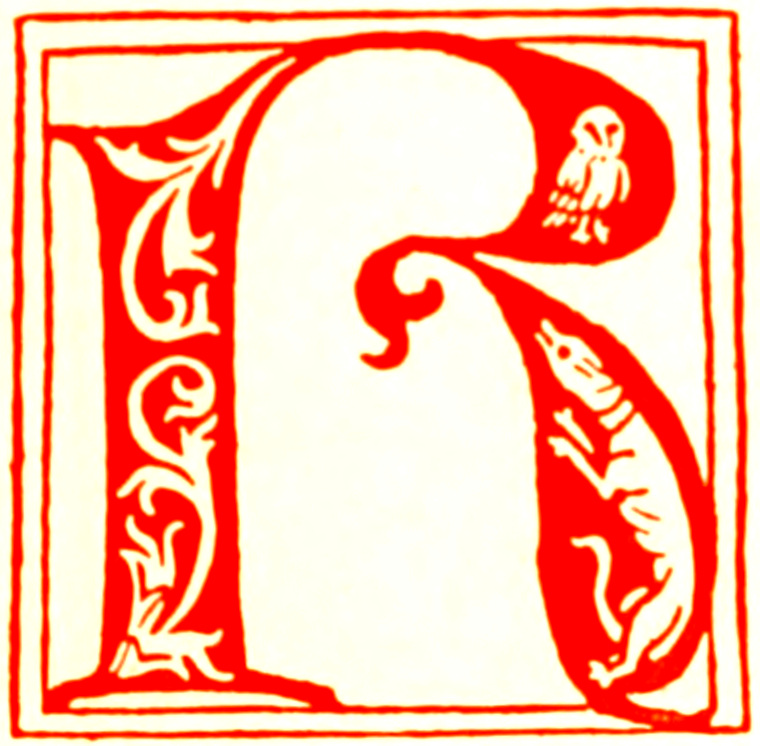
FROM A BAMBERG MISSAL
[152]
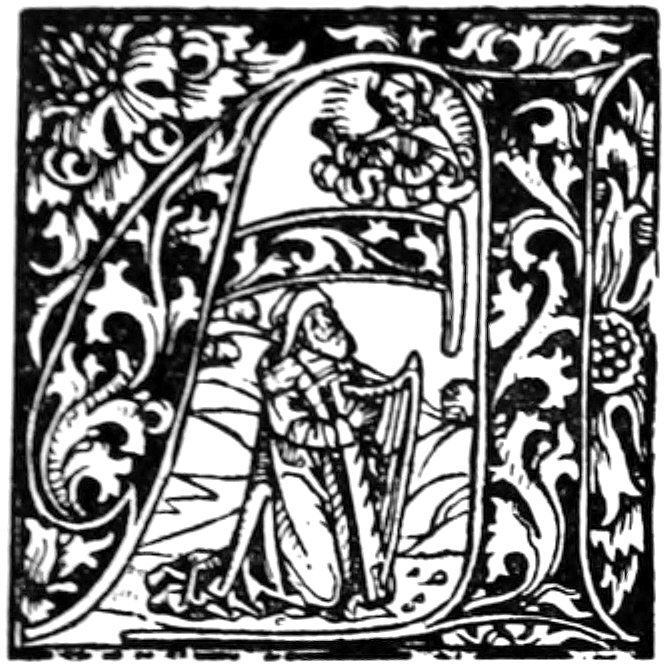
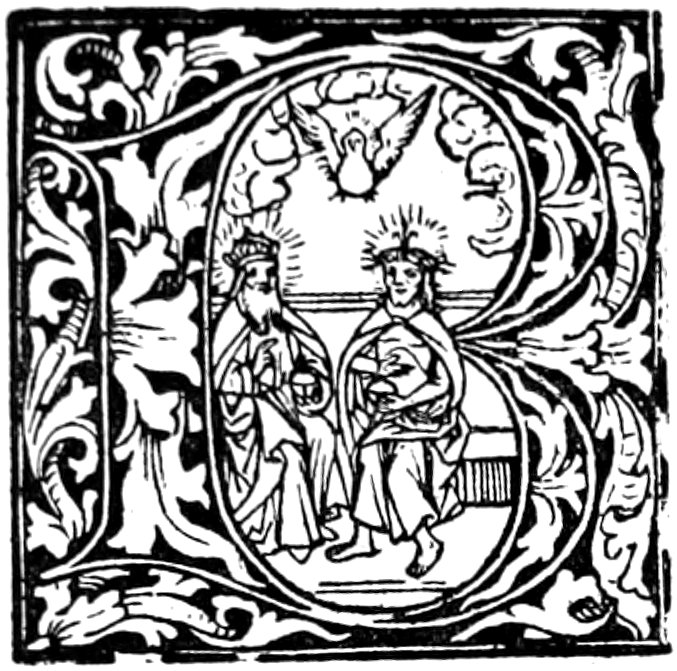
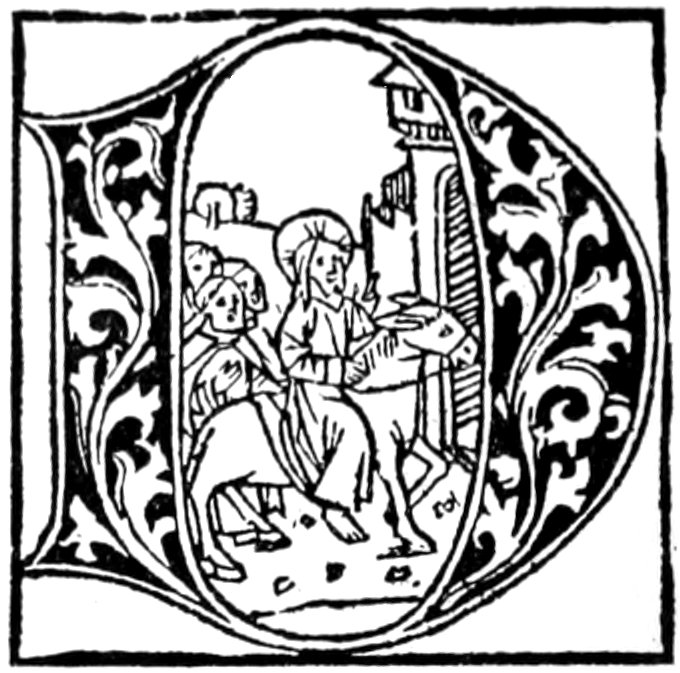
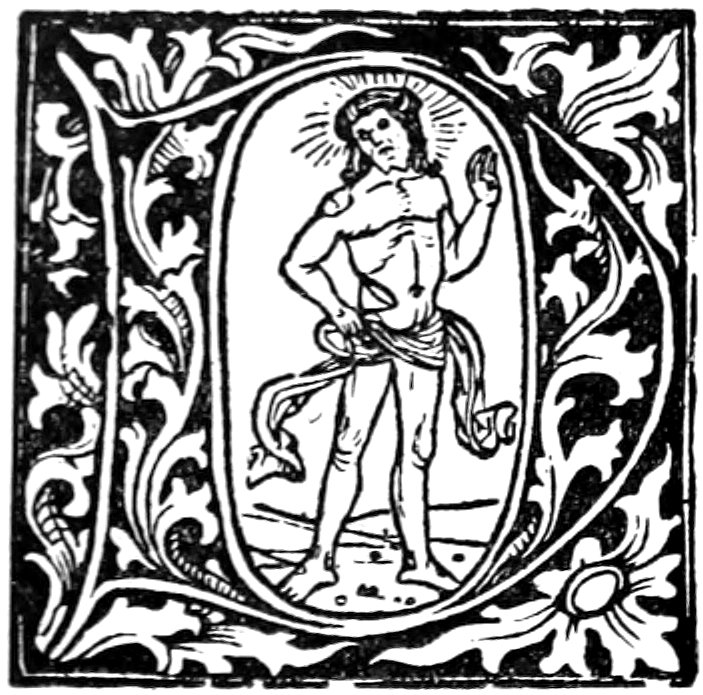
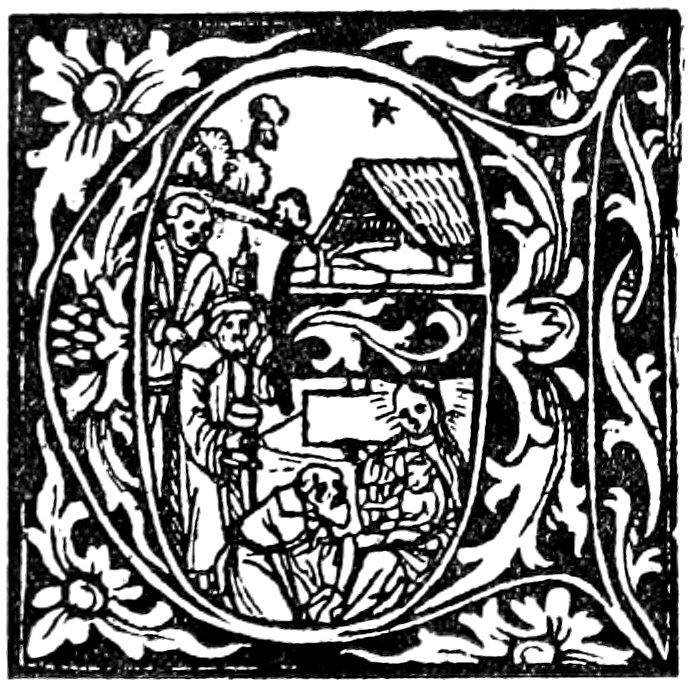
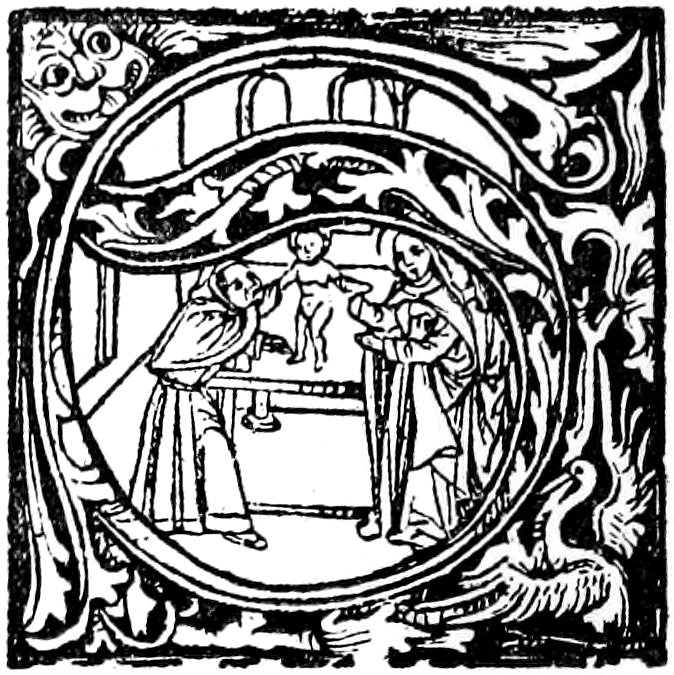
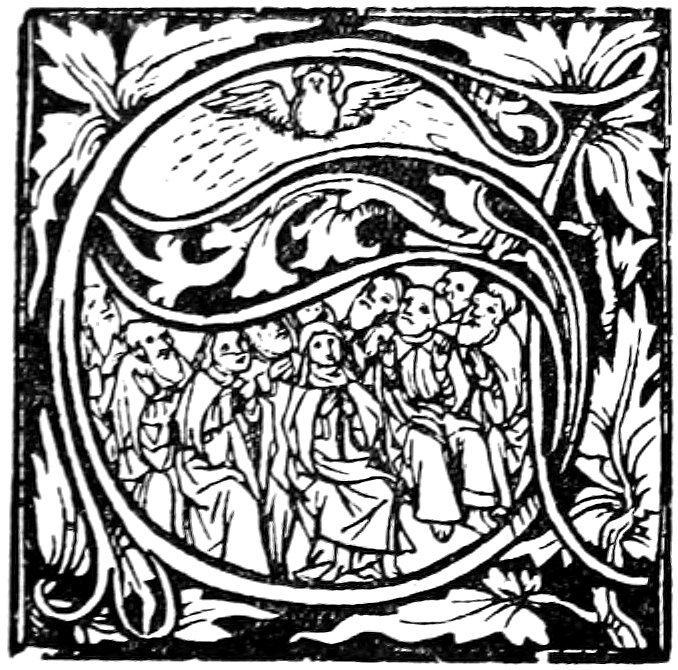

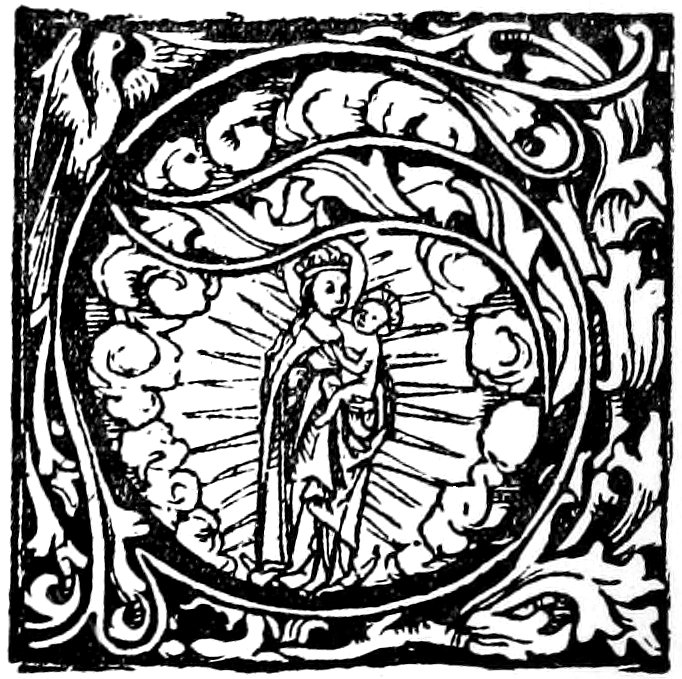
FROM THE BAMBERG MISSAL OF J. PFEYL, 1506
[153]
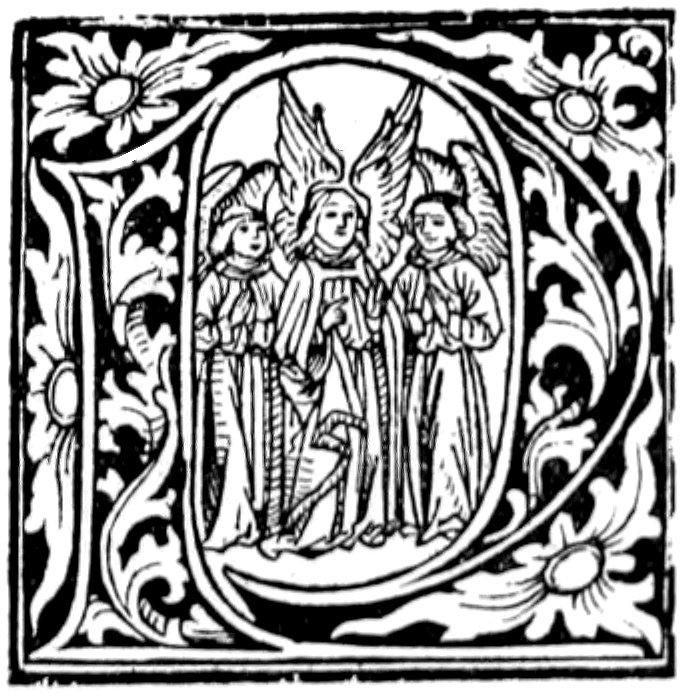
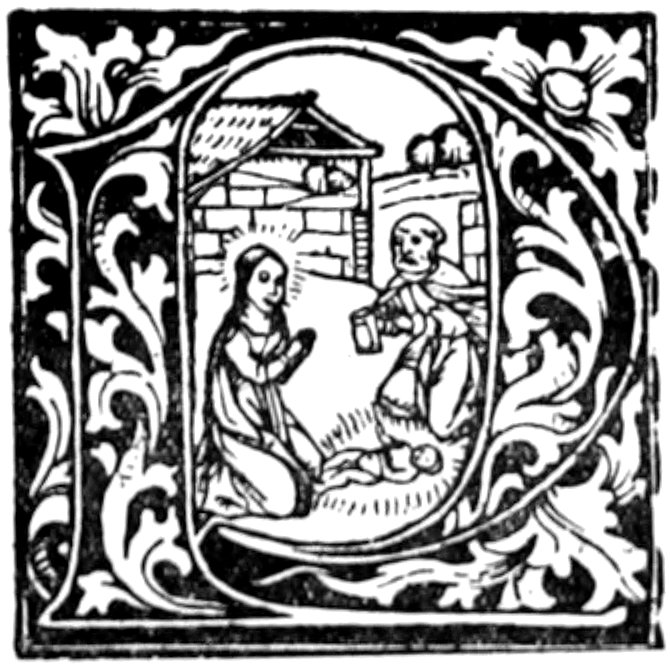
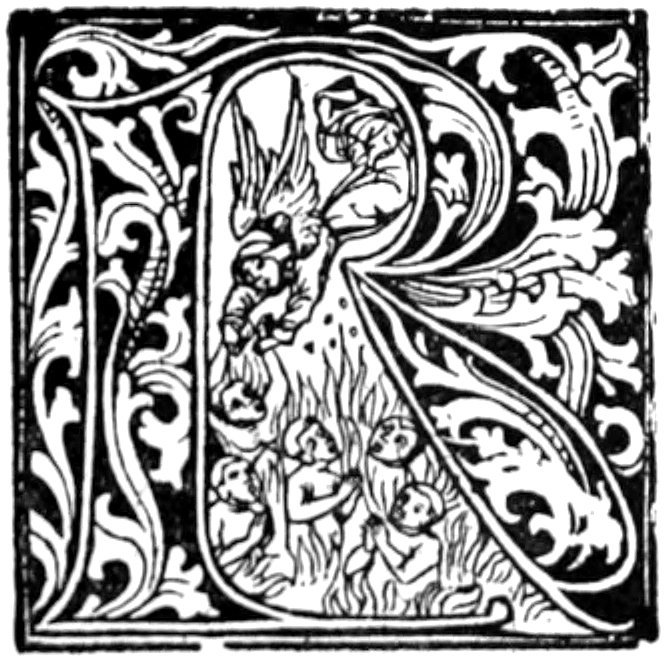
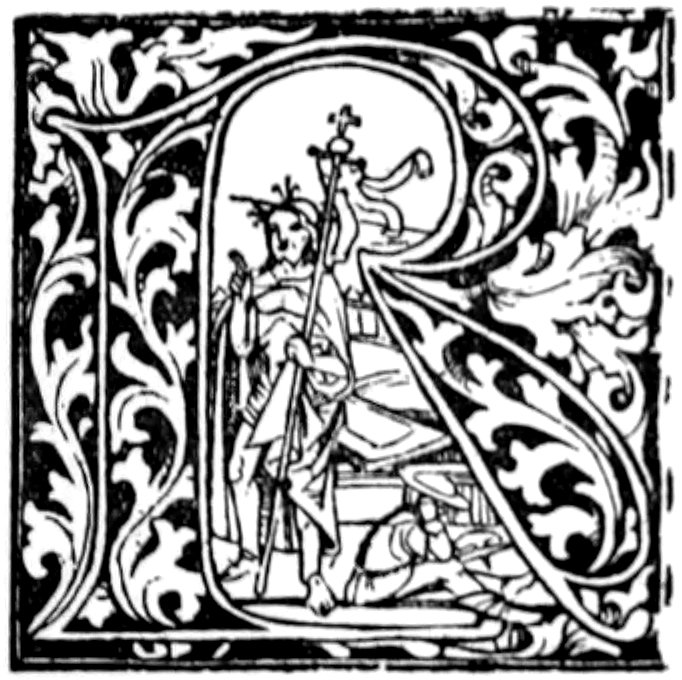
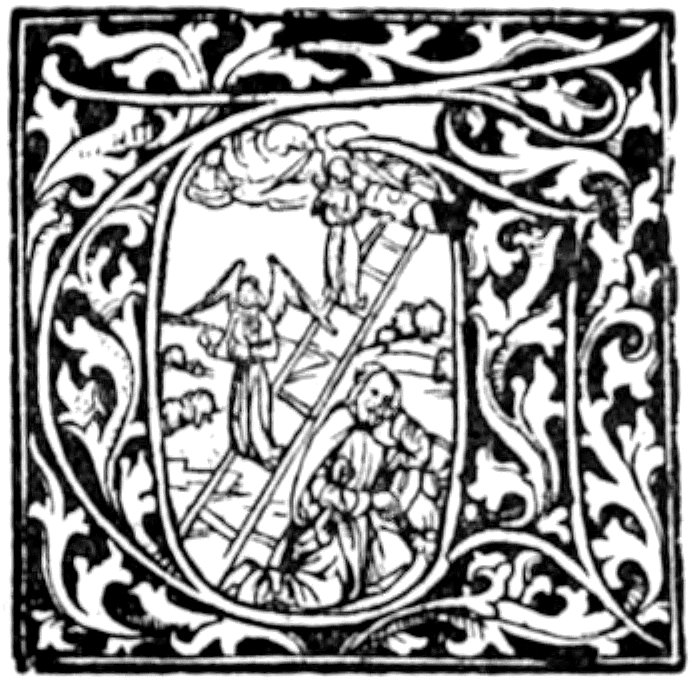
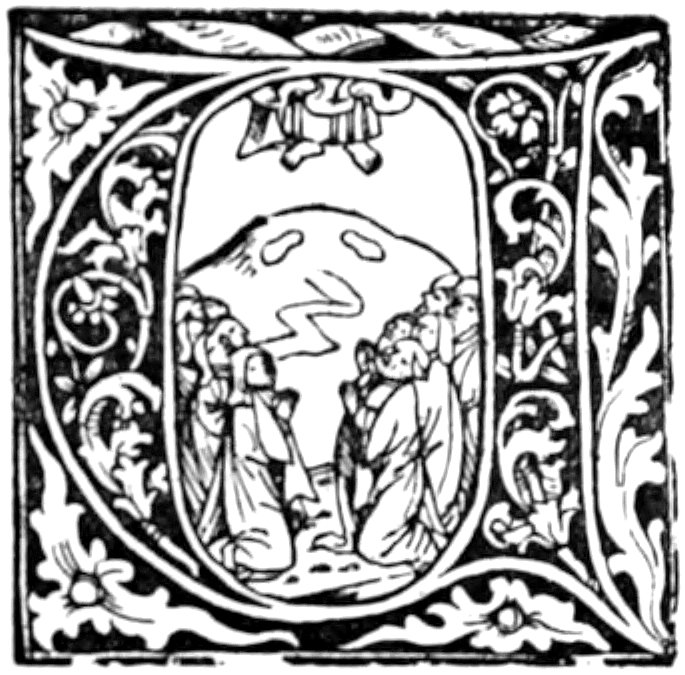
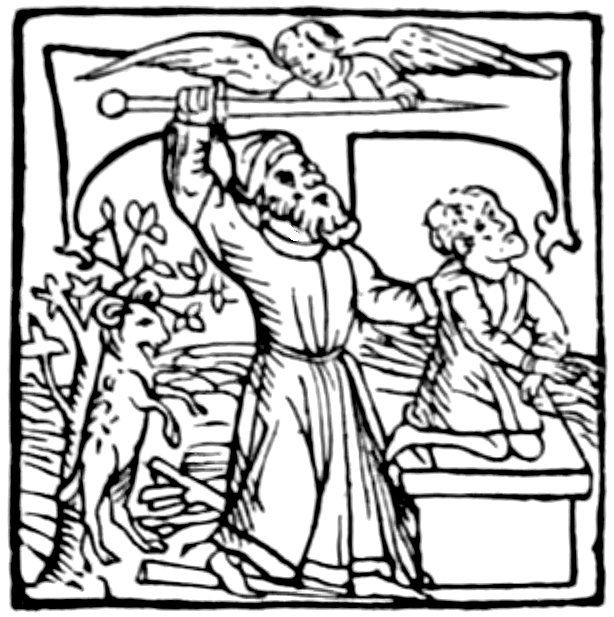
FROM THE BAMBERG MISSAL OF J. PFEYL, 1506
[154]
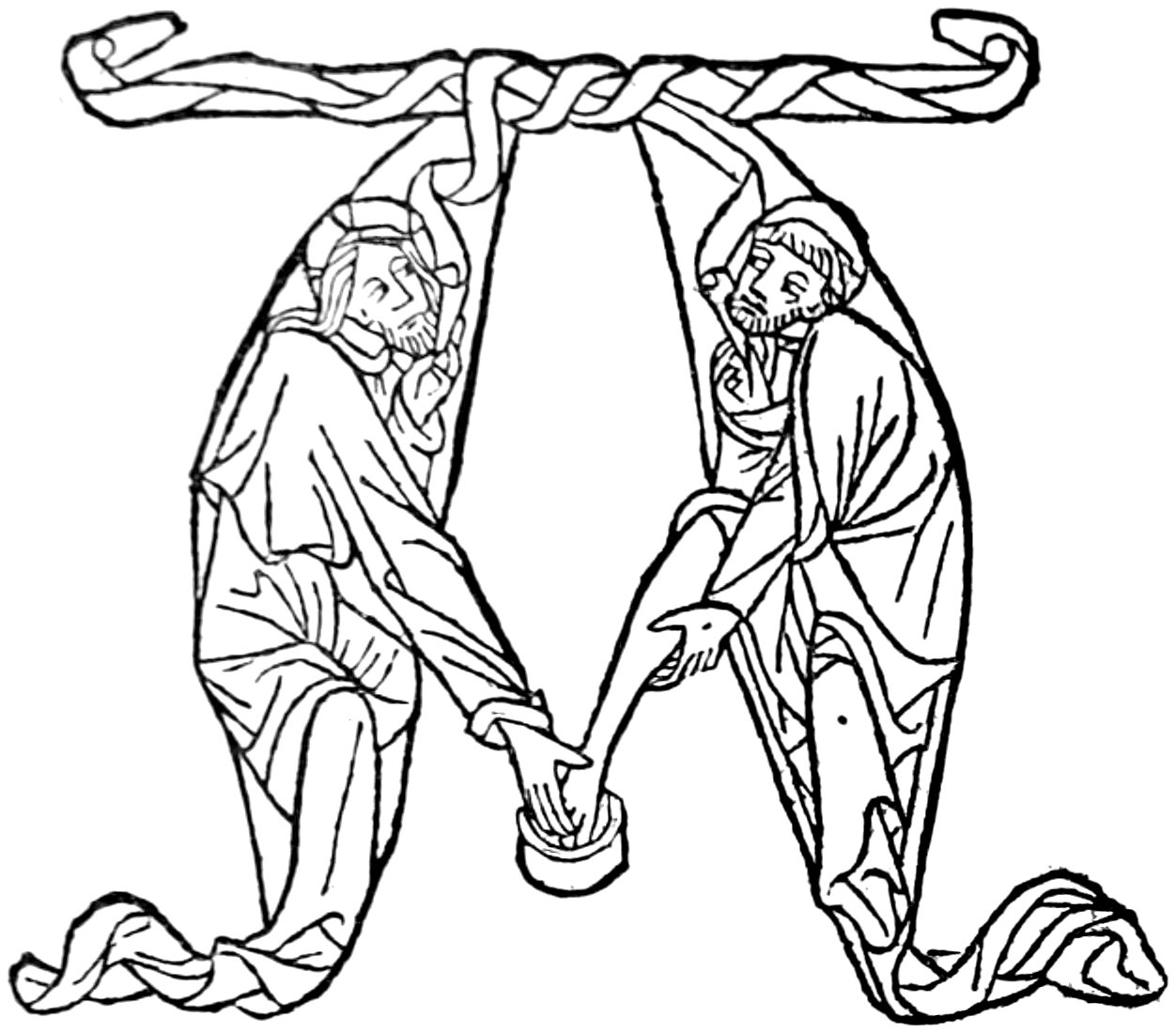
FROM T. DE HASELPACH’S ‘SERMONES’
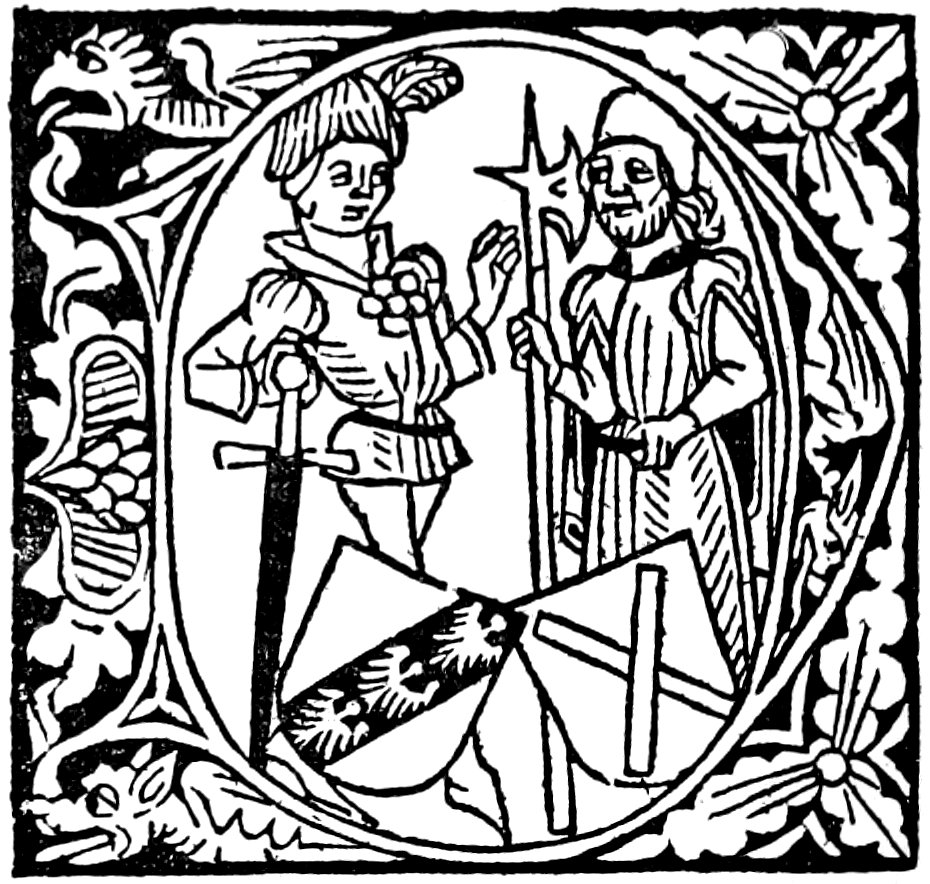
FROM ‘BURGUNDISCHE HISTORIE’
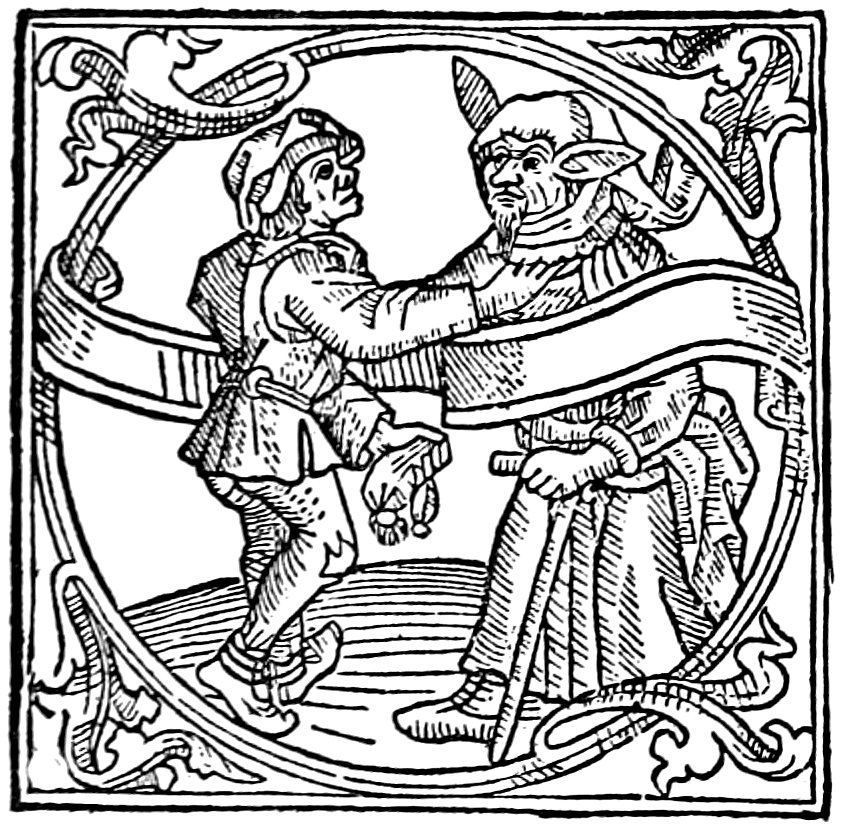
FROM ‘DIALOGUS SALOMONIS ET MARCOLFI’
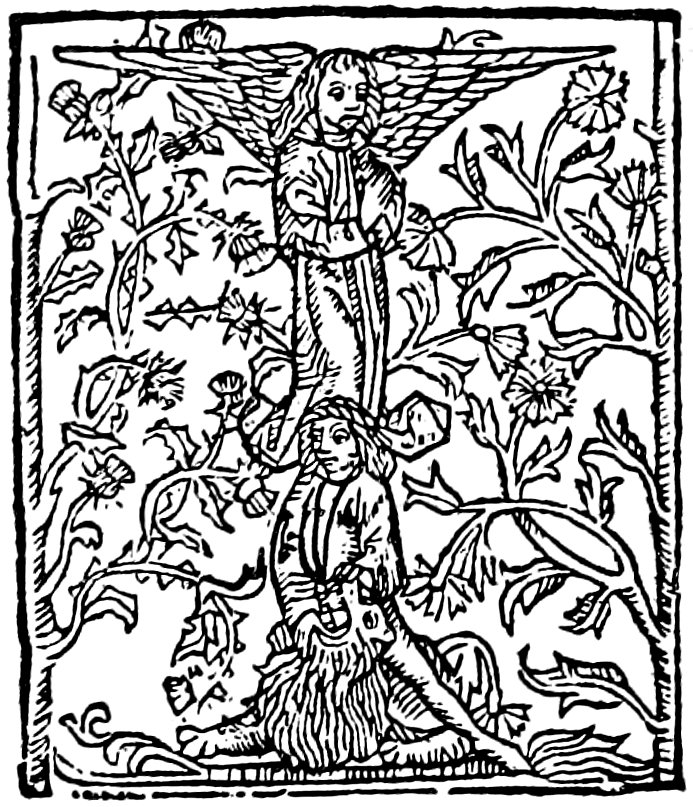
FROM ‘BELIAL’ AND OTHER BOOKS
FROM VARIOUS BOOKS PRINTED BY KNOBLOCHTZER
[155]
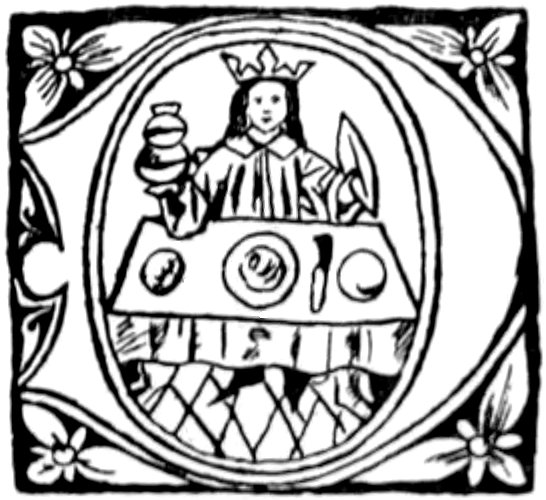
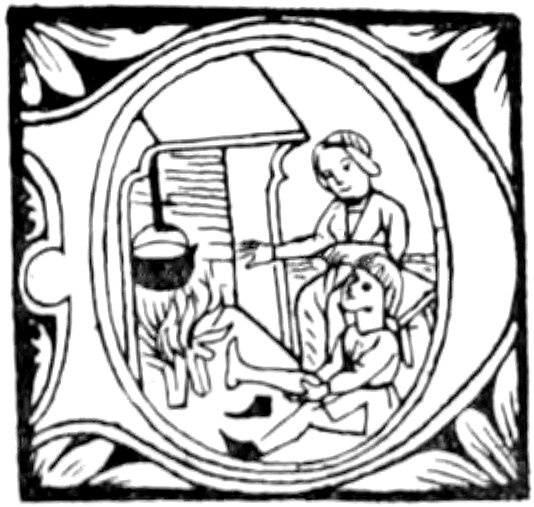
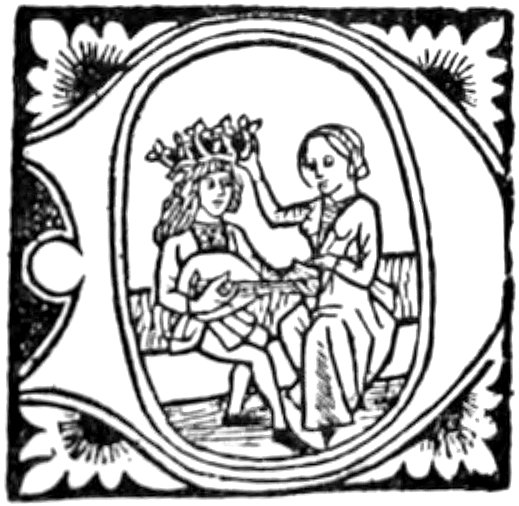
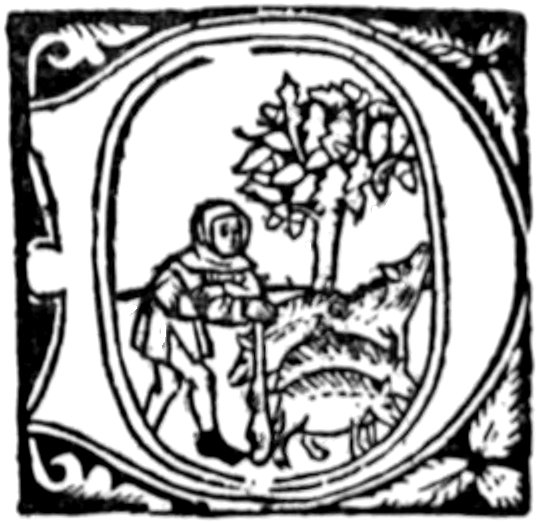
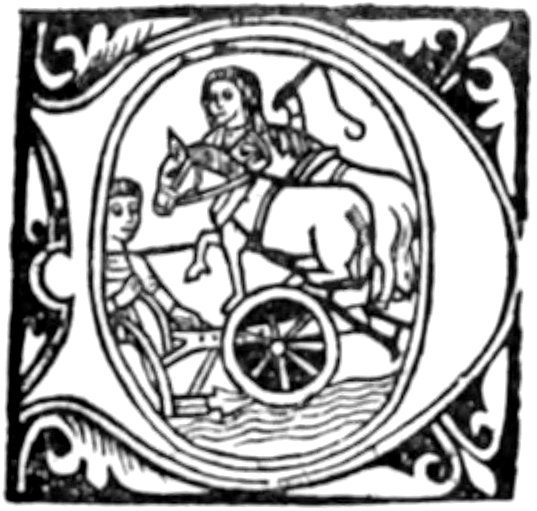
FROM THE ‘DEUTSCHER KALENDER’ AND OTHER BOOKS

FROM THE ‘DE SECRETIS MULIERUM’
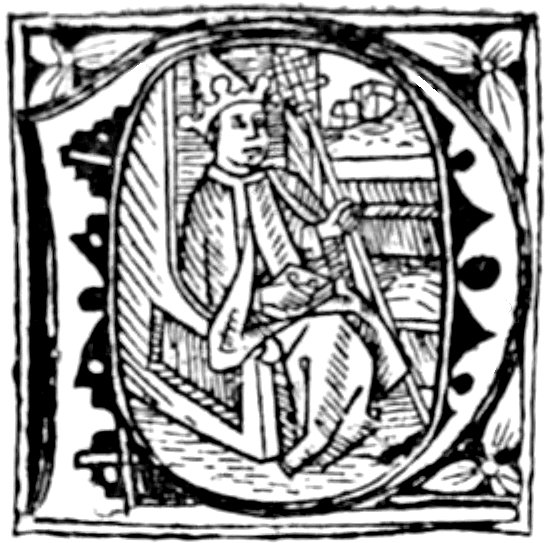
FROM THE ‘DE RITU ET MORIBUS INDORUM’
FROM VARIOUS BOOKS PRINTED BY KNOBLOCHTZER
[156]
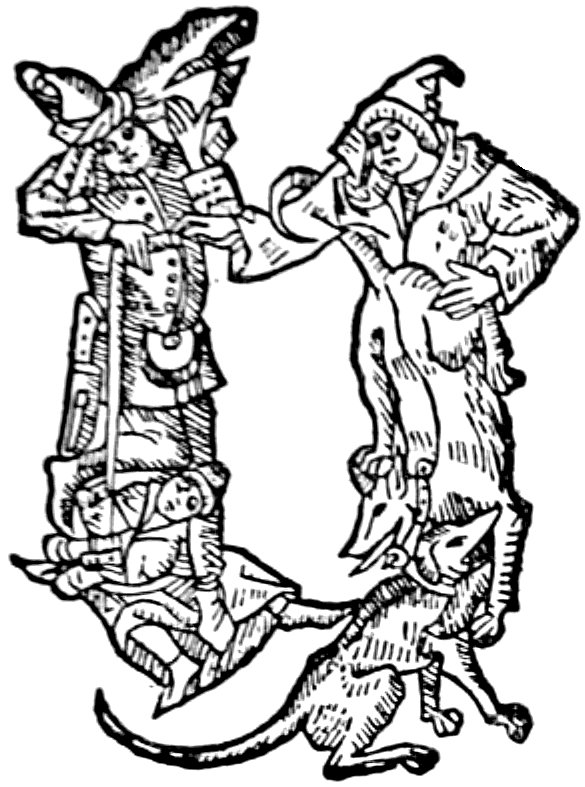
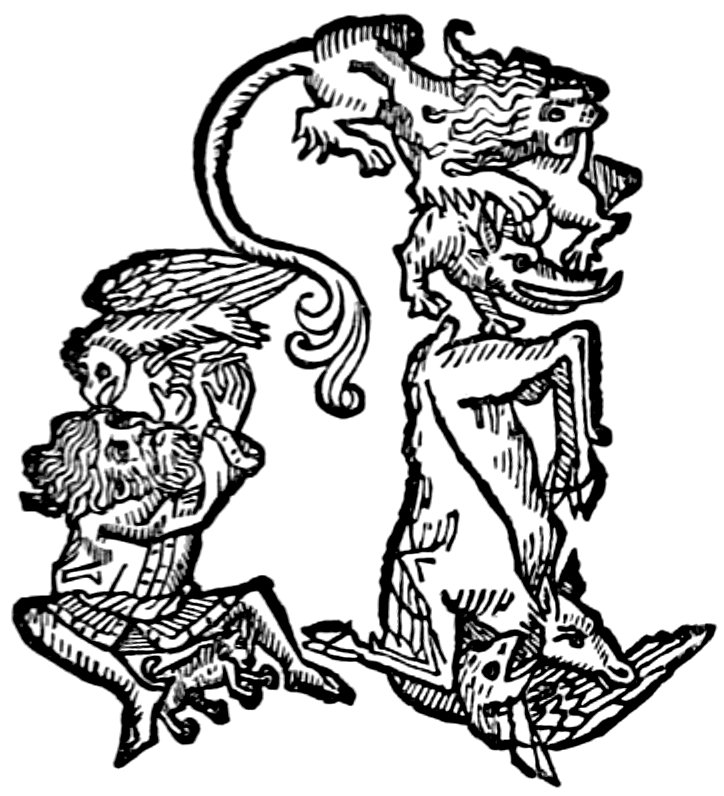
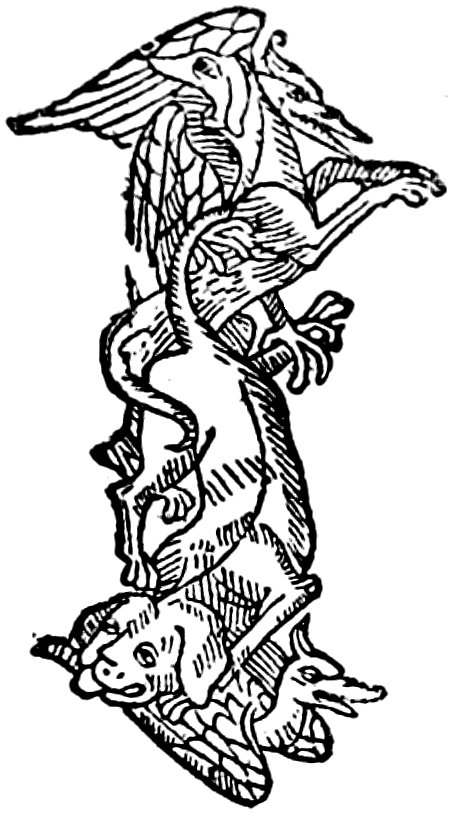
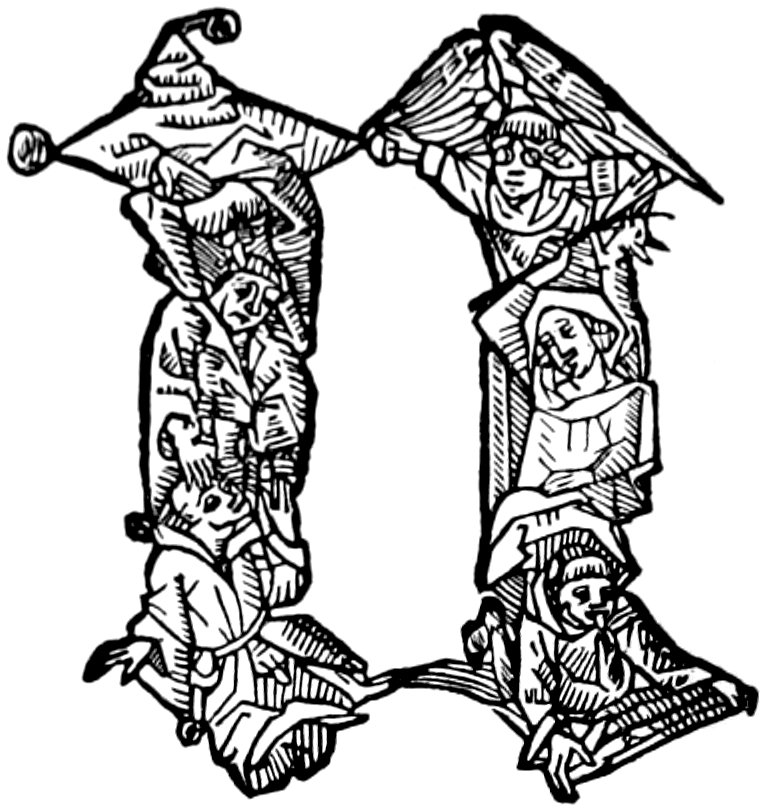
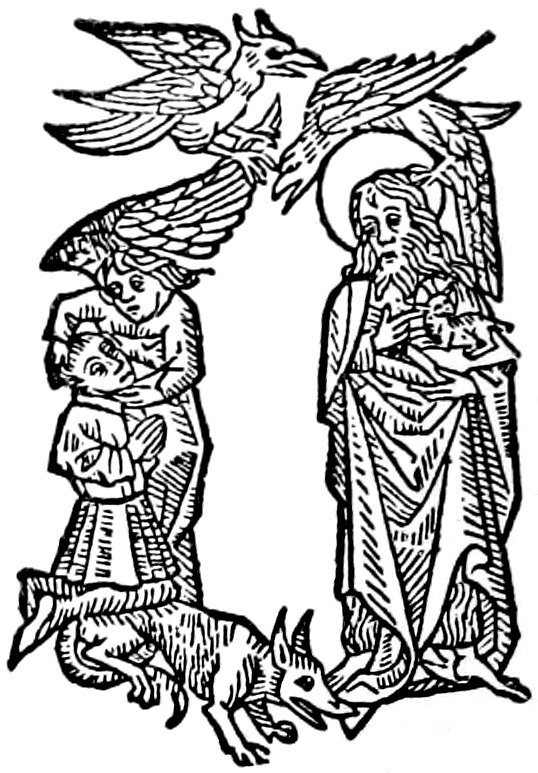
ANTHROPOMORPHIC LETTERS USED BY VARIOUS PRINTERS
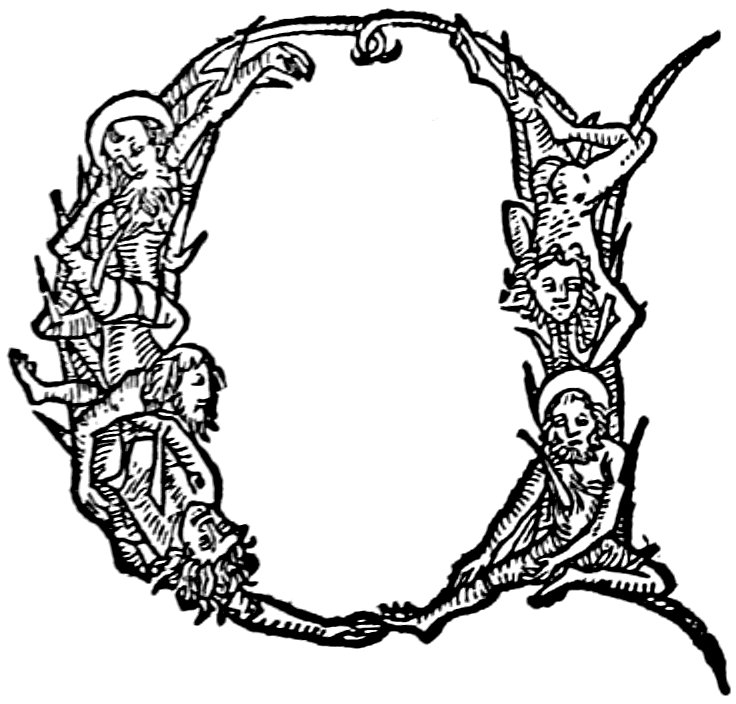
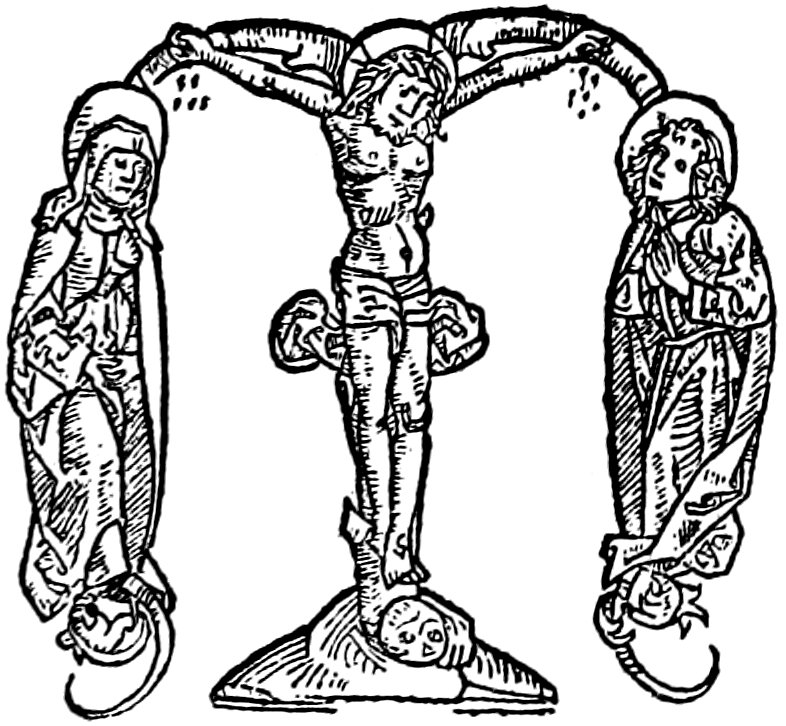
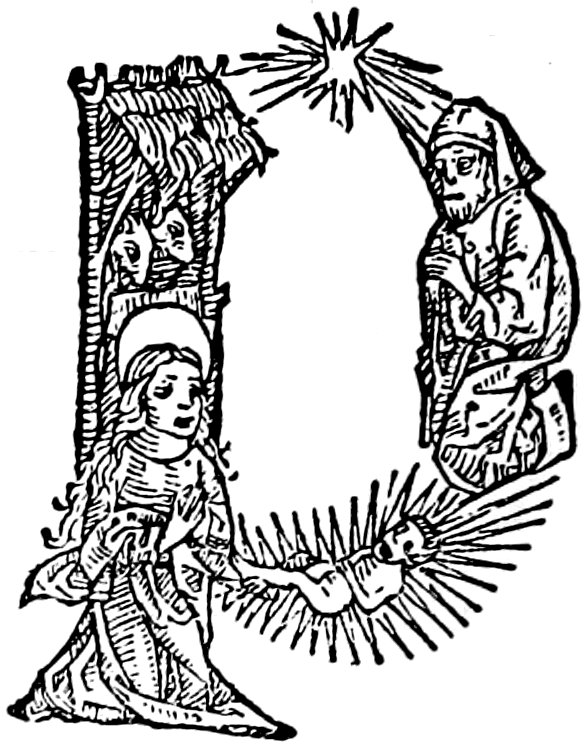
INITIALS FROM THE ‘SCRIPTUM’ OF G. DE OCKAM, AND THE ‘COMMENTARIUS SANCTI JOHANNIS,’ PRINTED BY G. SCHOTT
[157]
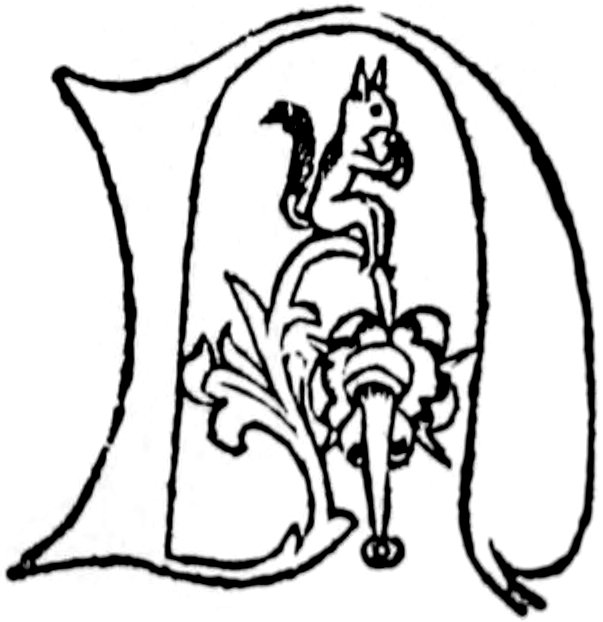
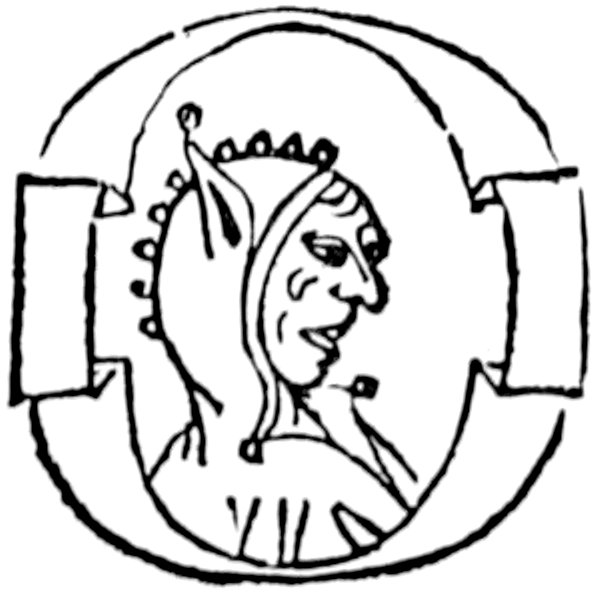

LETTERS FROM THE ‘PLENARIUM’
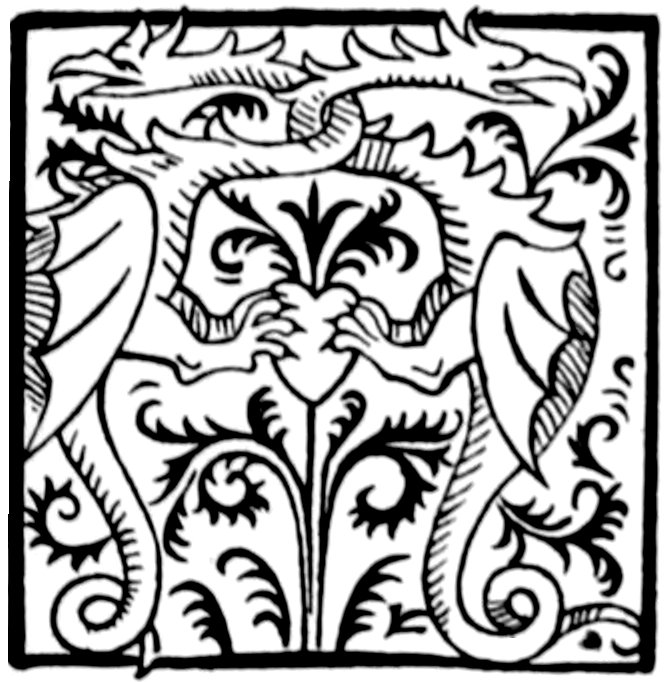

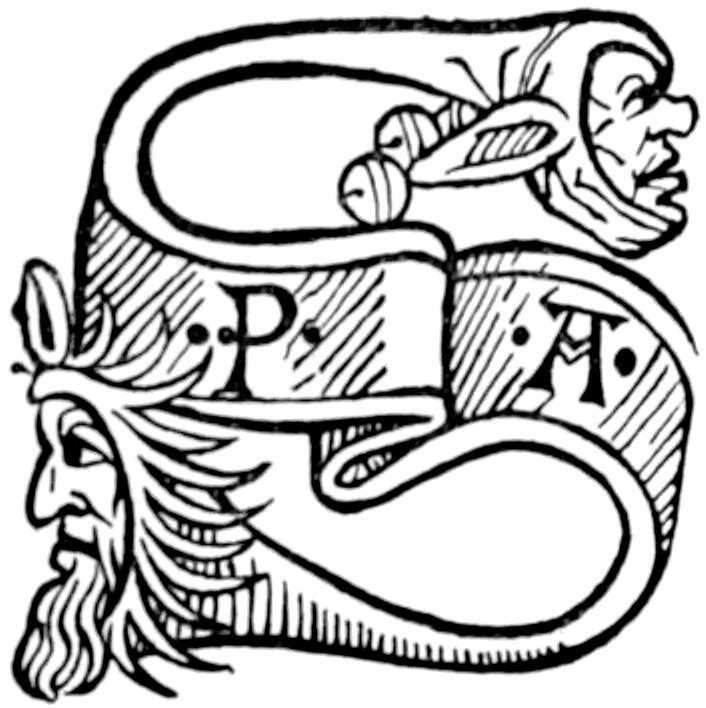
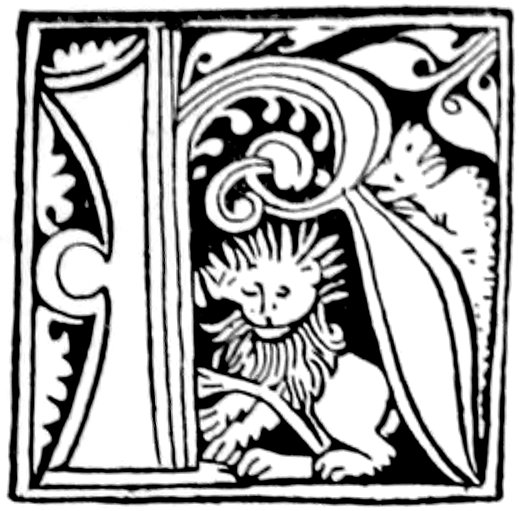
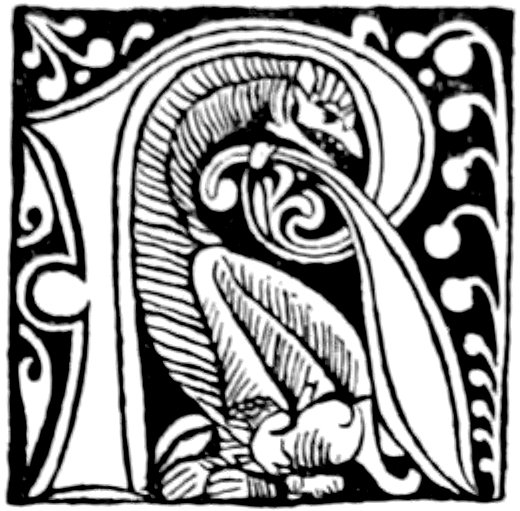
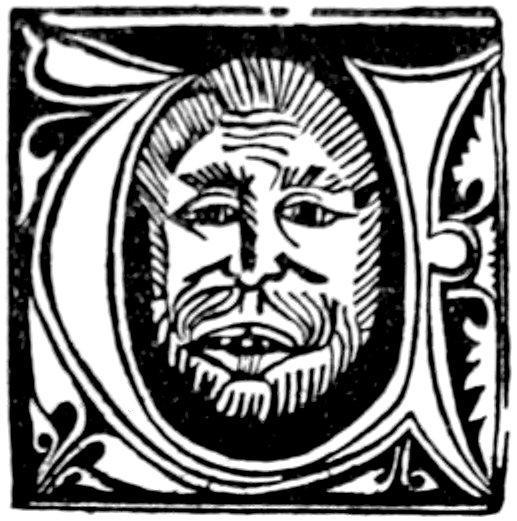
OTHER STRASBURG INITIALS
[158]
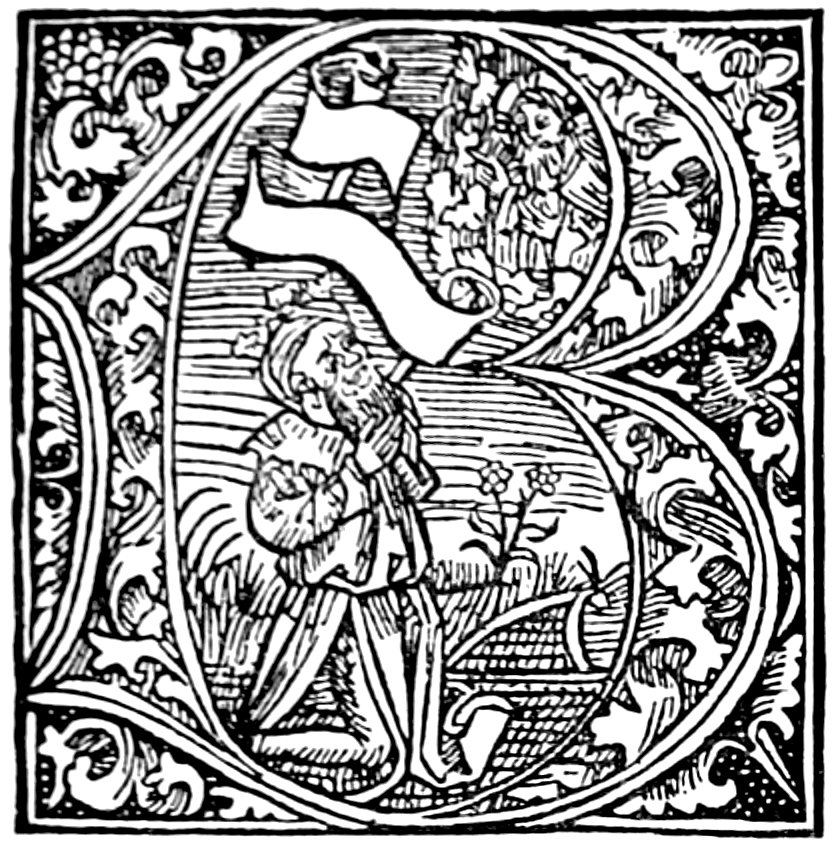
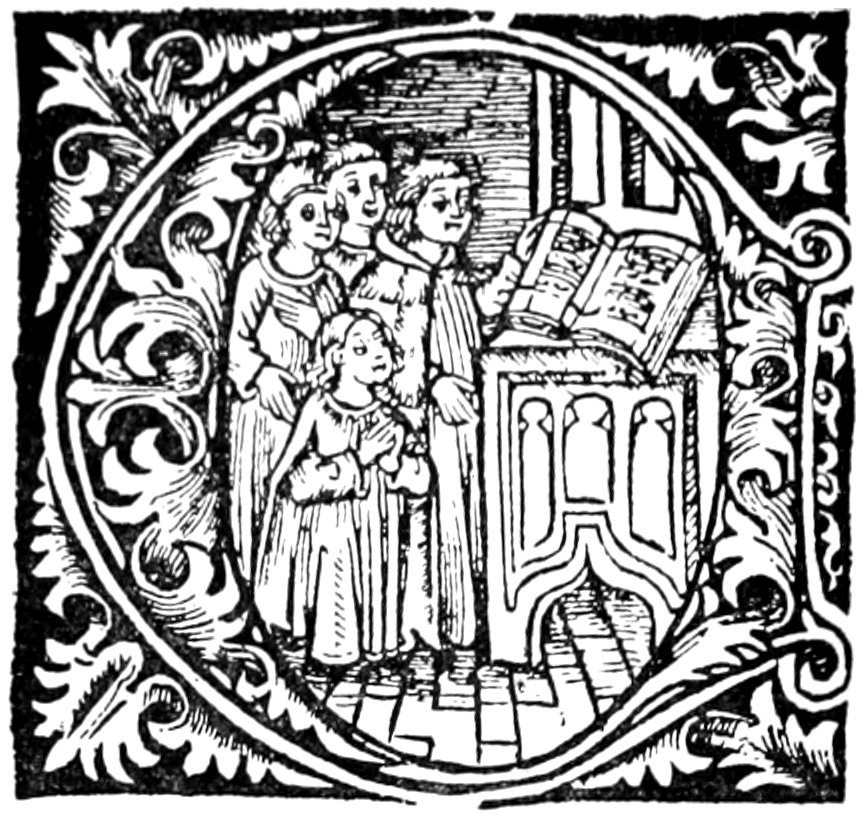
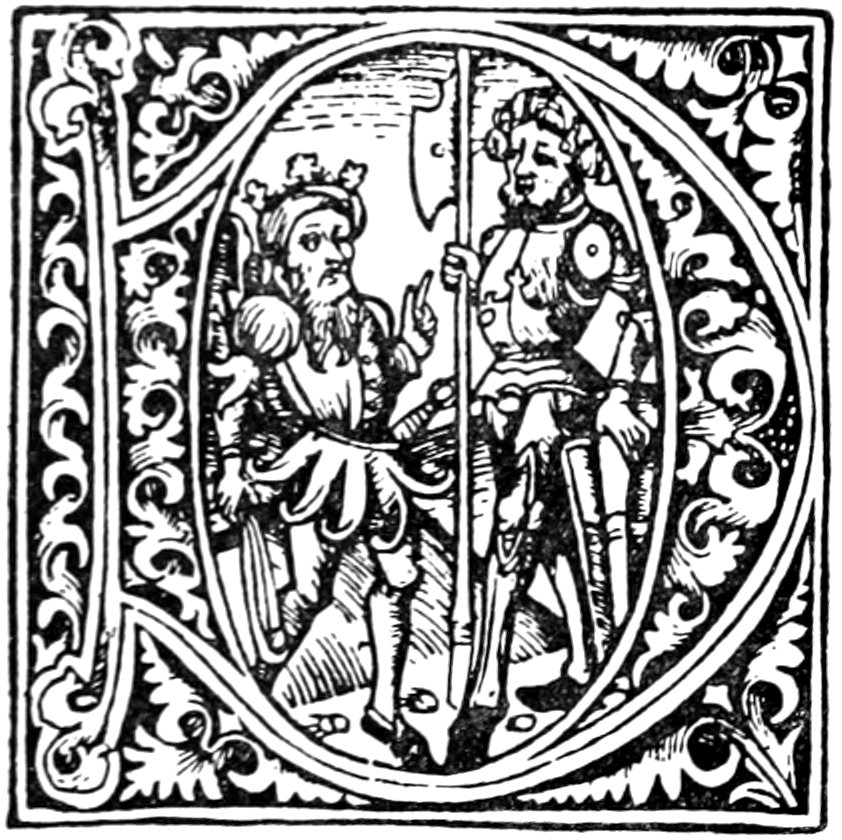
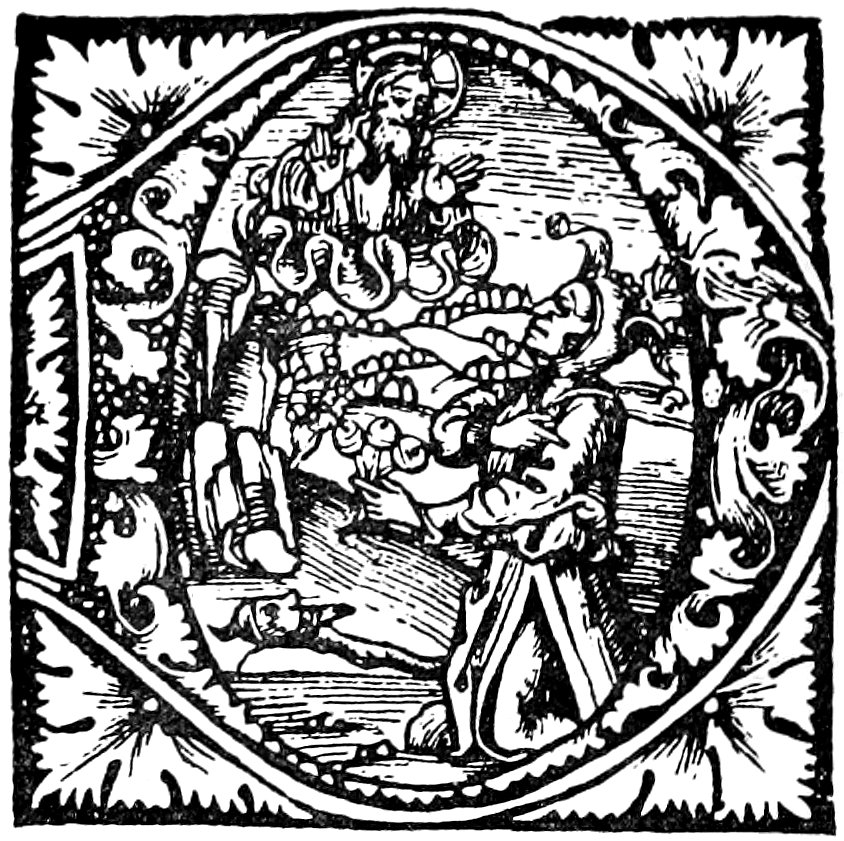
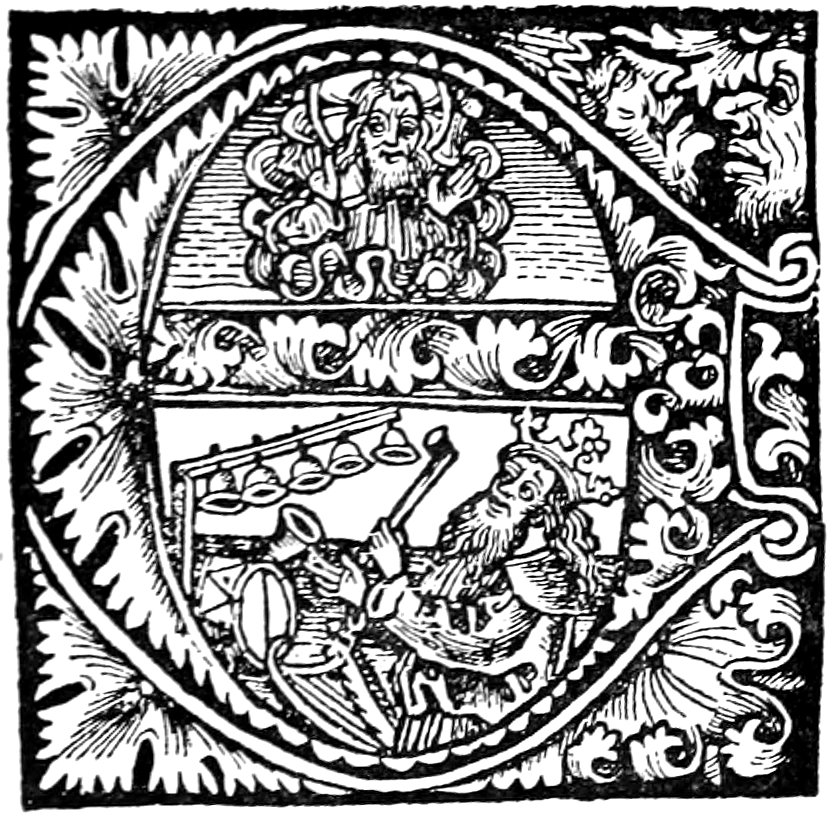
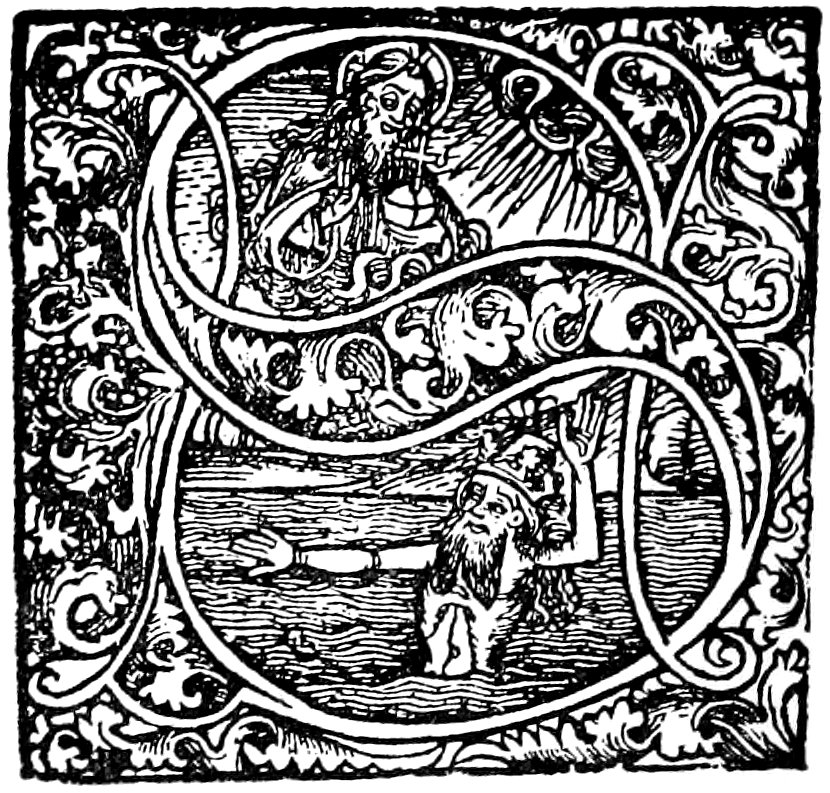
FROM A PSALTER BY J. PRUSZ, 1498
[159]
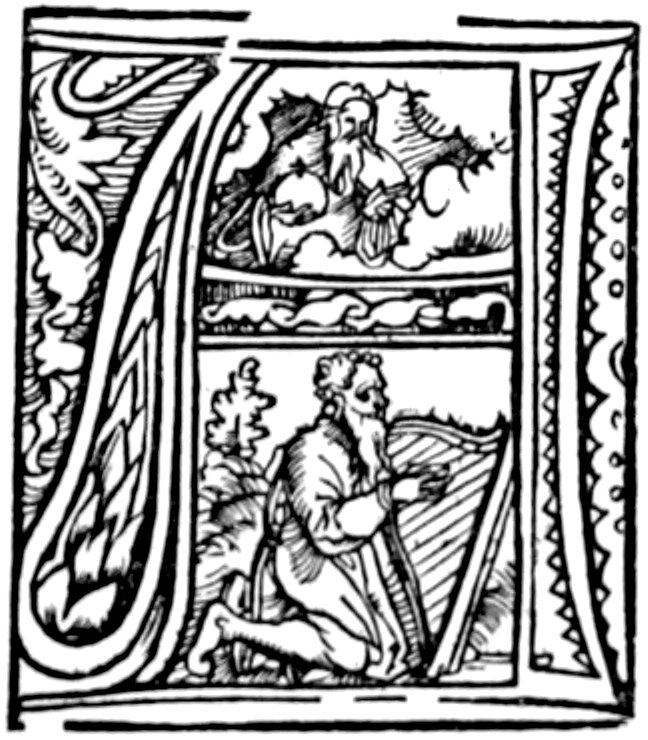

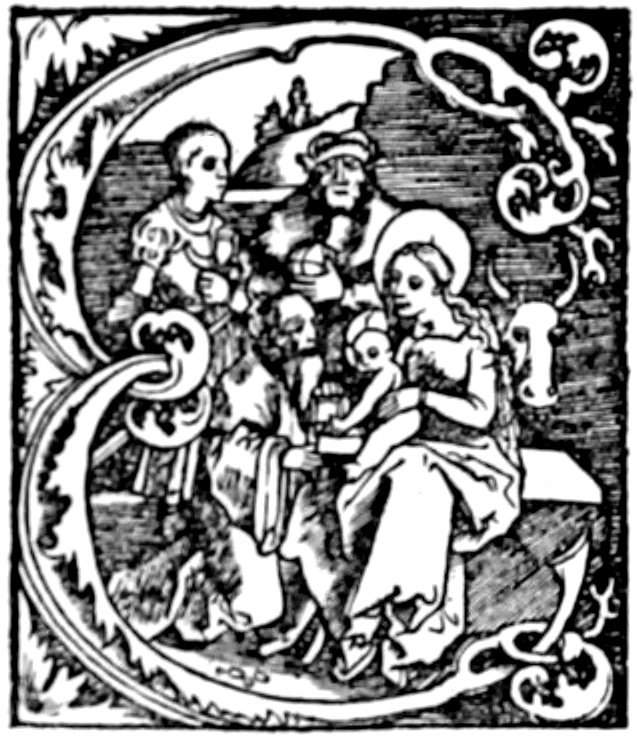
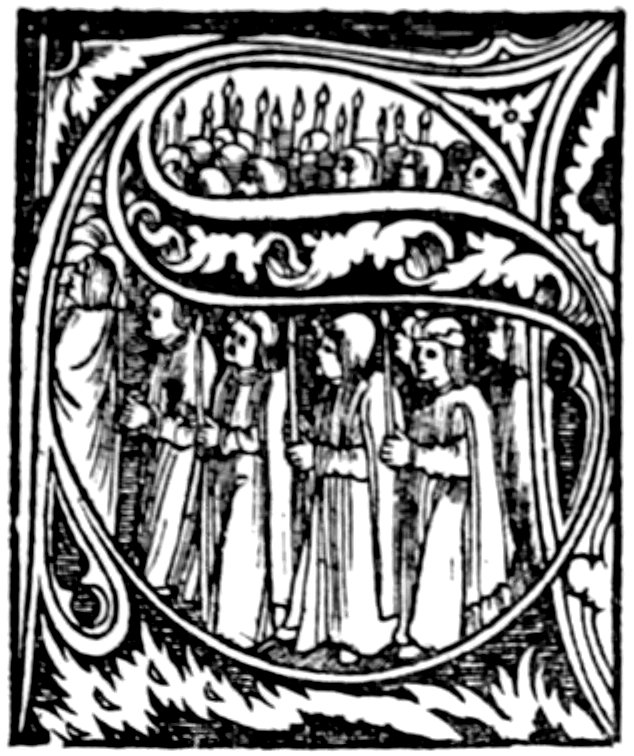
FROM KNOBLOUCH’S ‘POGGE,’ 1513
[160]
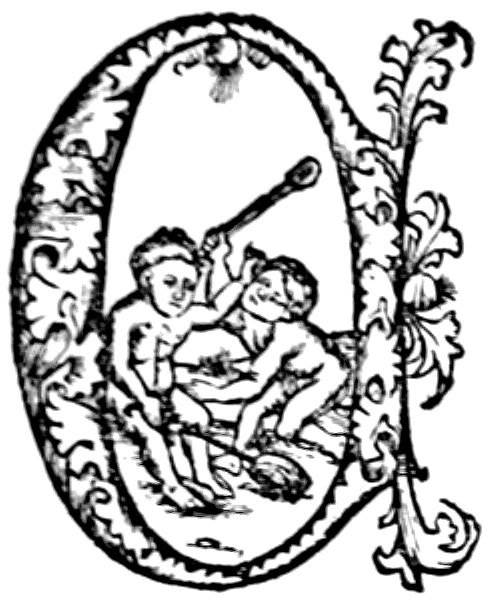
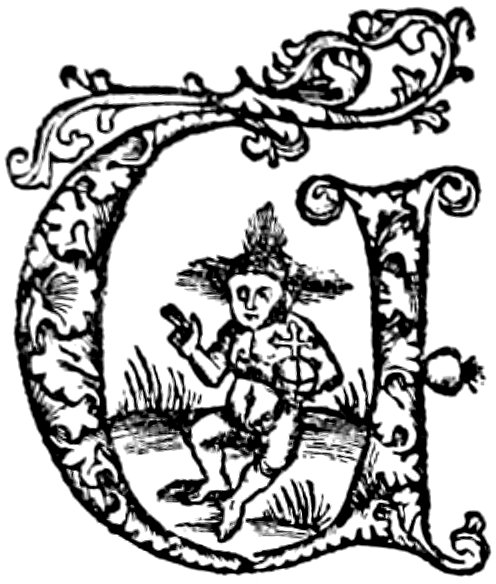
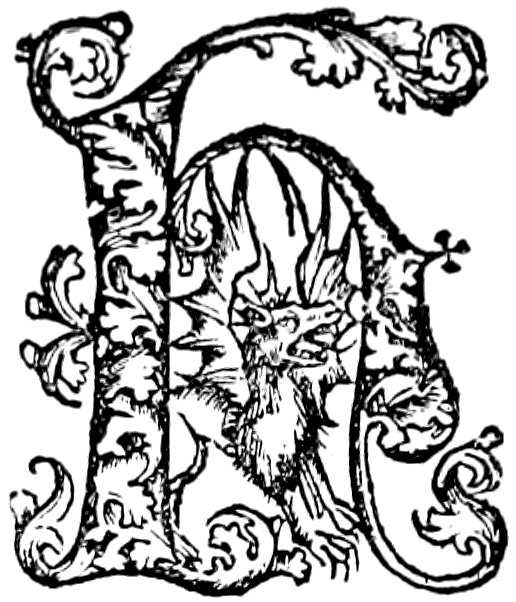
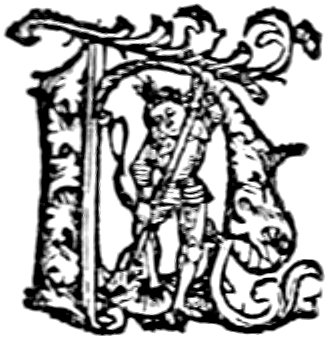
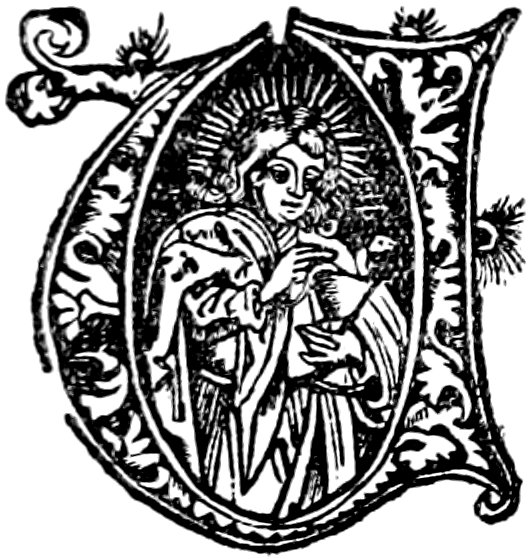
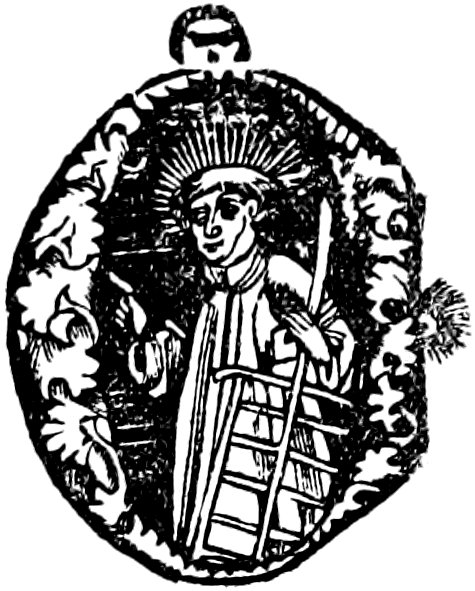
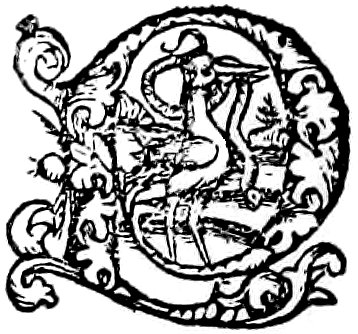

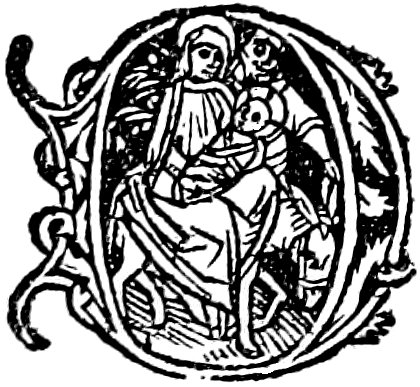
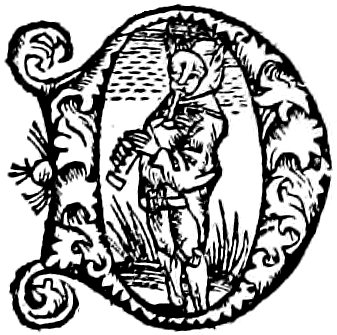
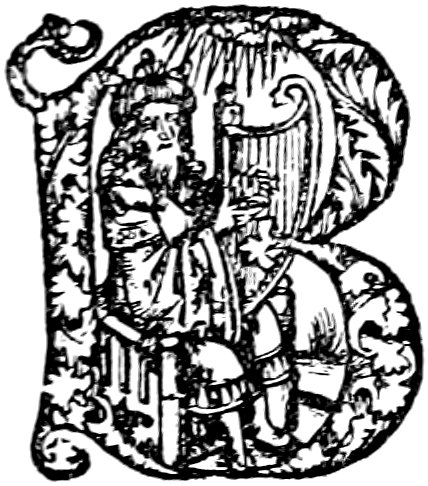
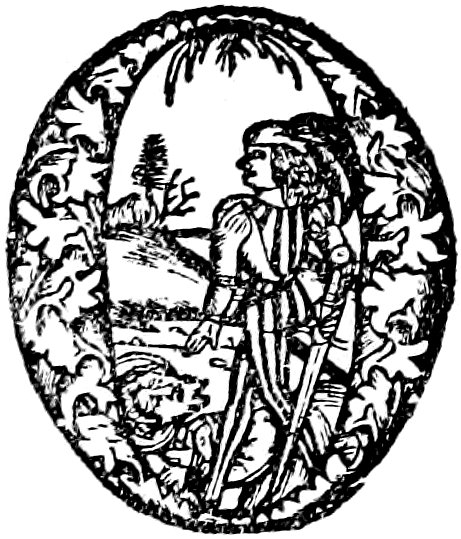
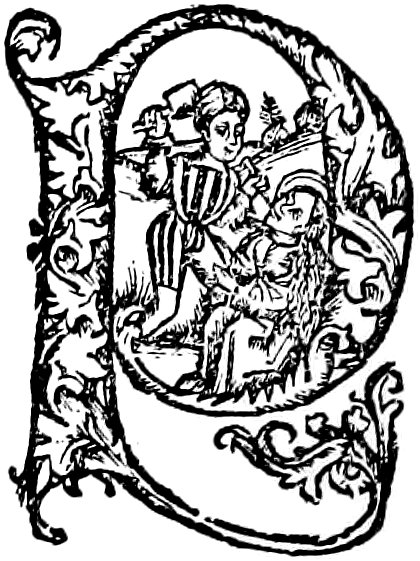
FROM VARIOUS BOOKS PRINTED BY GRÜNINGER
[161]
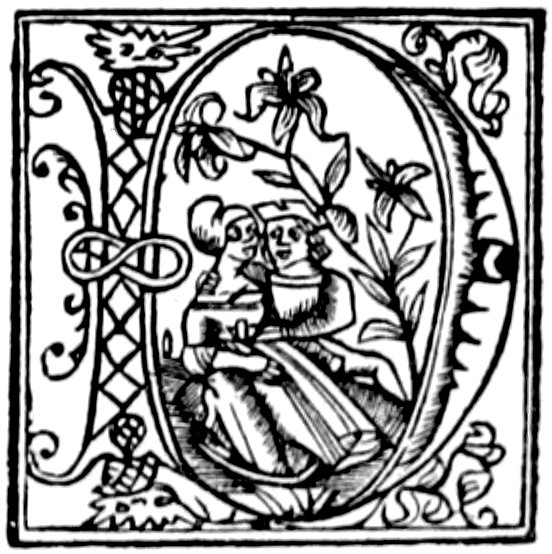
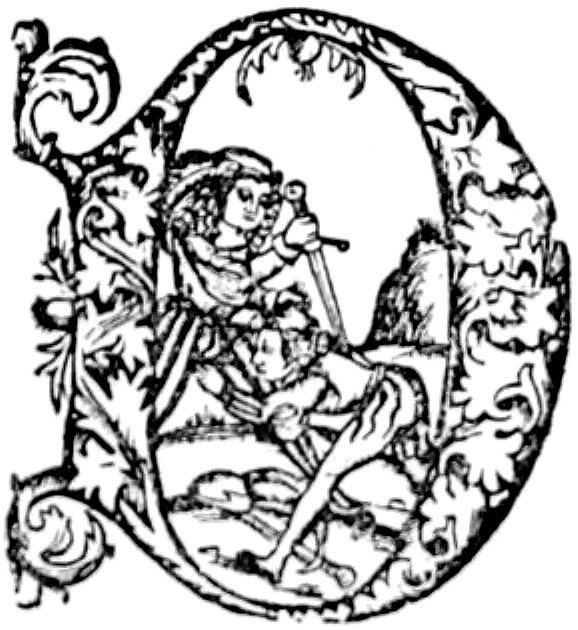

FROM VARIOUS BOOKS PRINTED BY GRÜNINGER
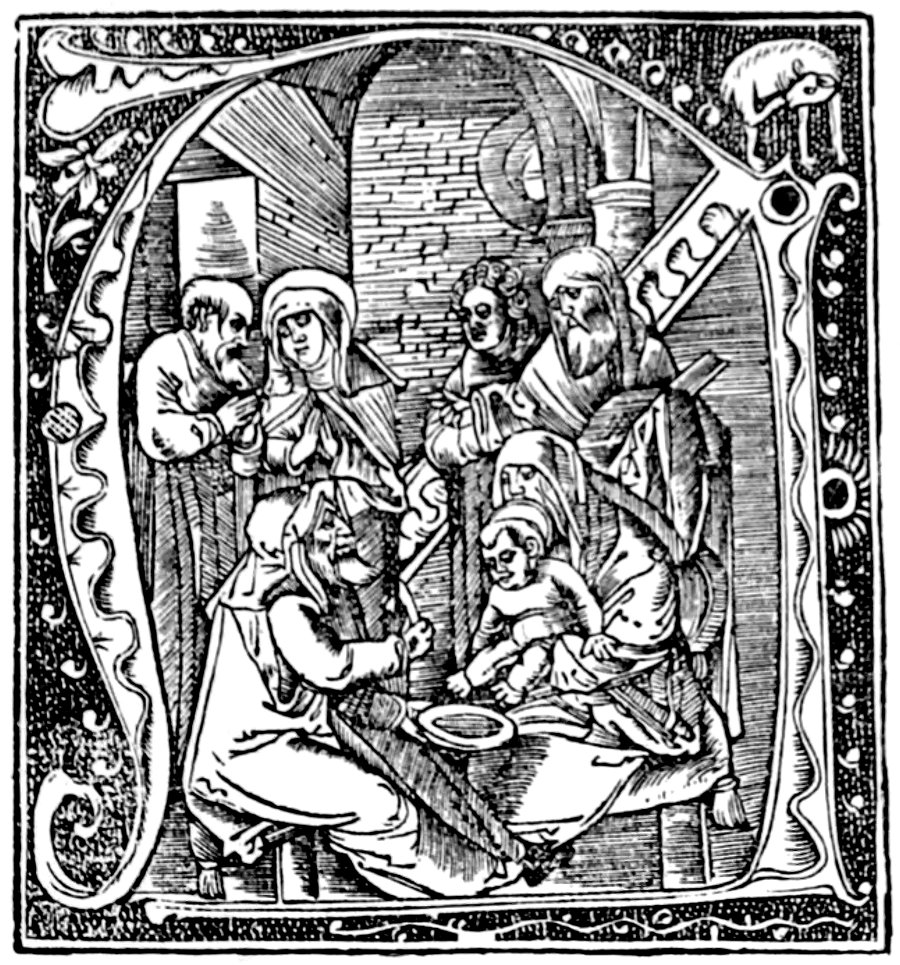
FROM ‘SERMONES’ OF GEILER VON KAISERSPERG
[162]
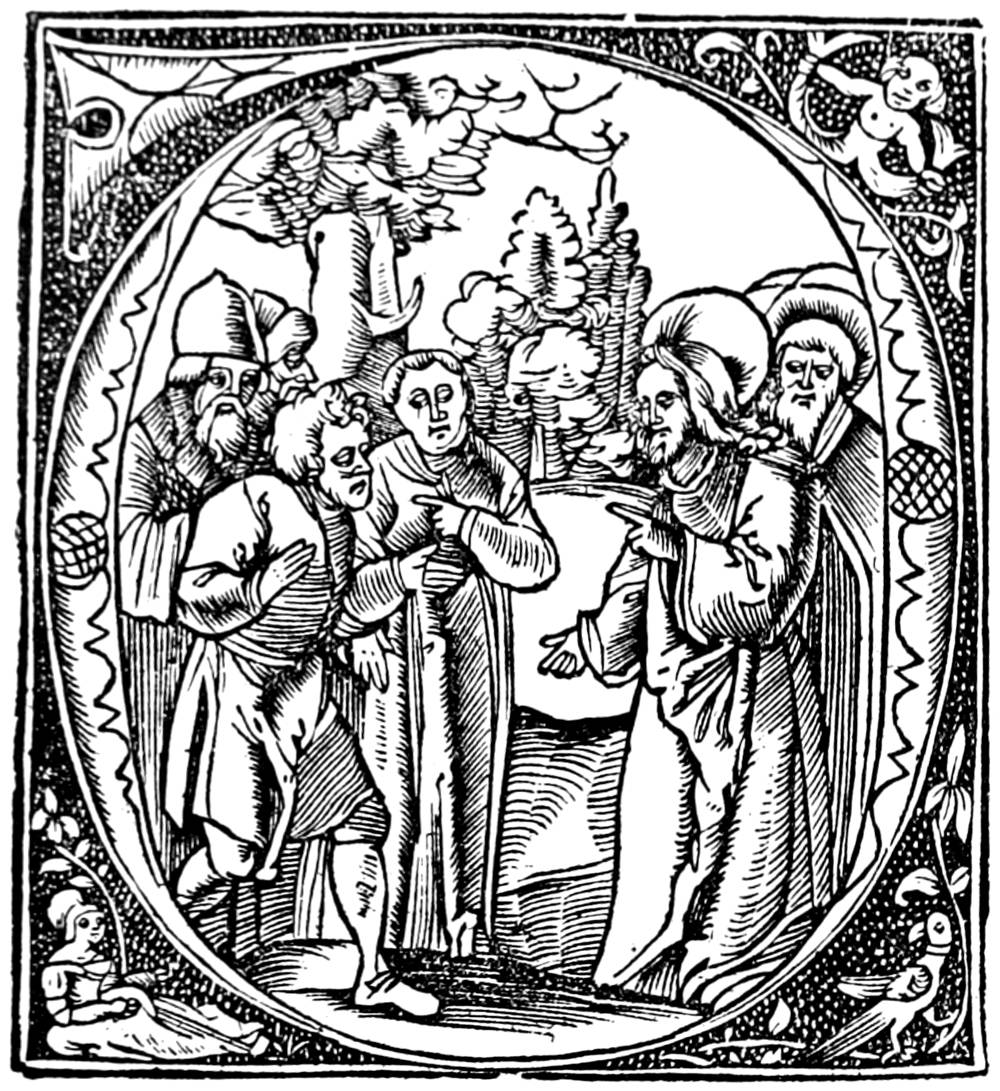
FROM ‘SERMONES’ OF GEILER VON KAISERSPERG

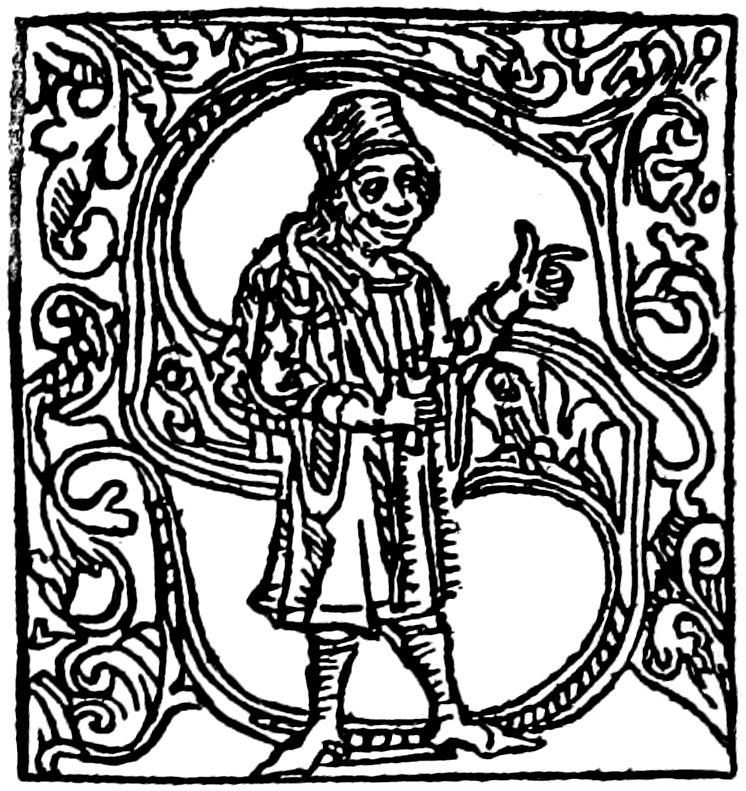
FROM BOOKS PRINTED BY G. GRYFF
[163]
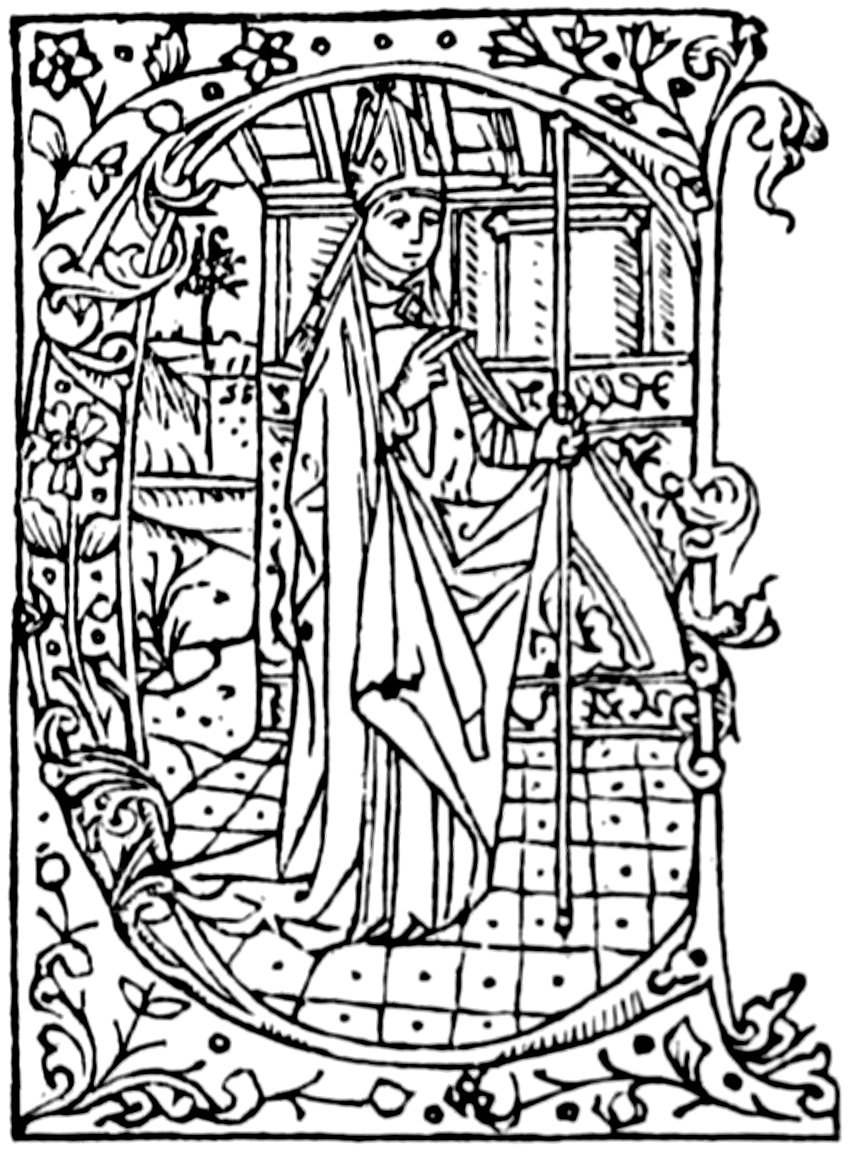
FROM THE ‘DOCTRINAL DE SAPIENCE’ OF 1488

FROM ‘LES FLEURS ET MANIÈRES DES TEMPS PASSÉS’
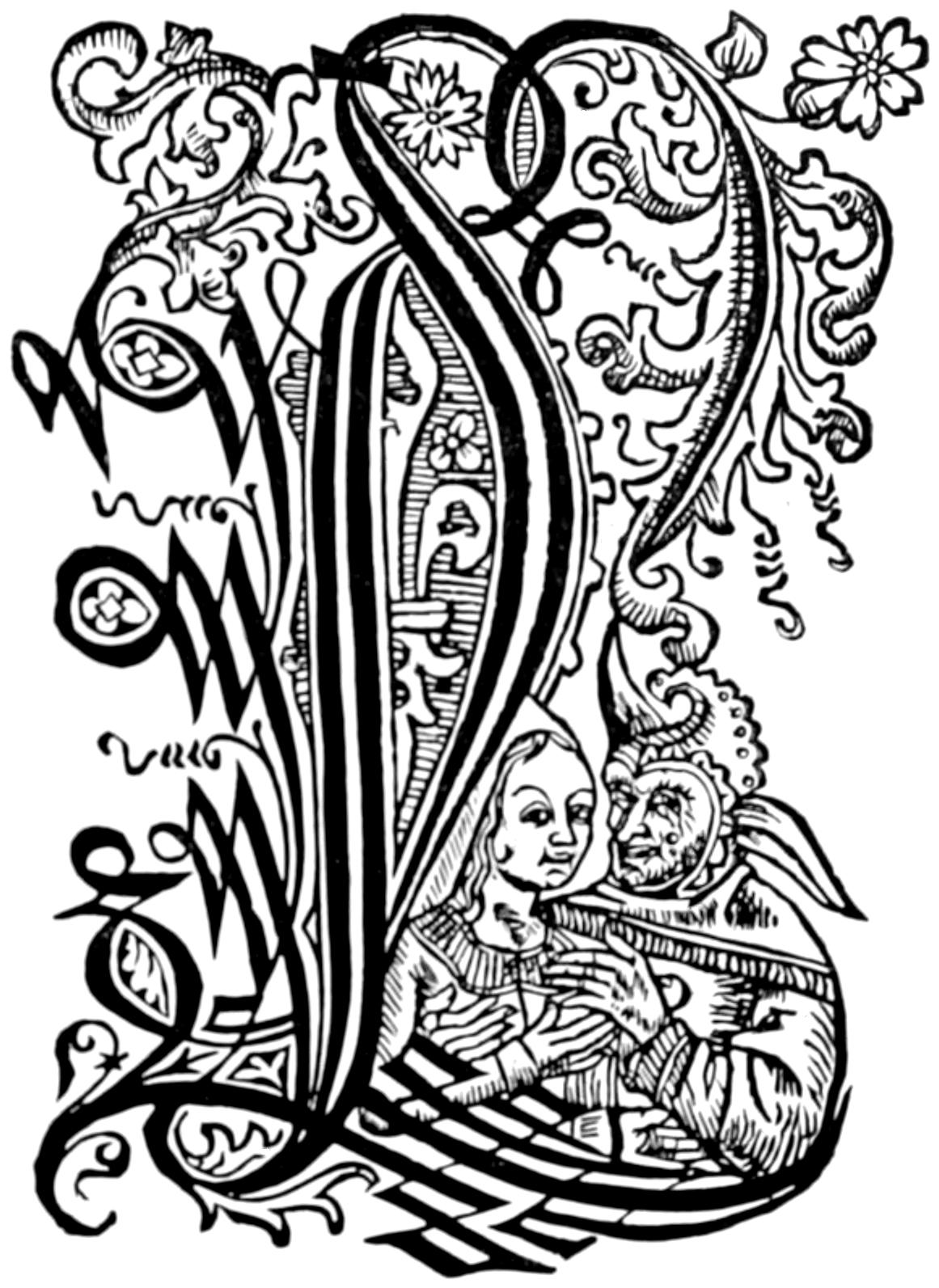
FROM THE ‘DOCTRINAL DE SAPIENCE’ OF 1493
[164]
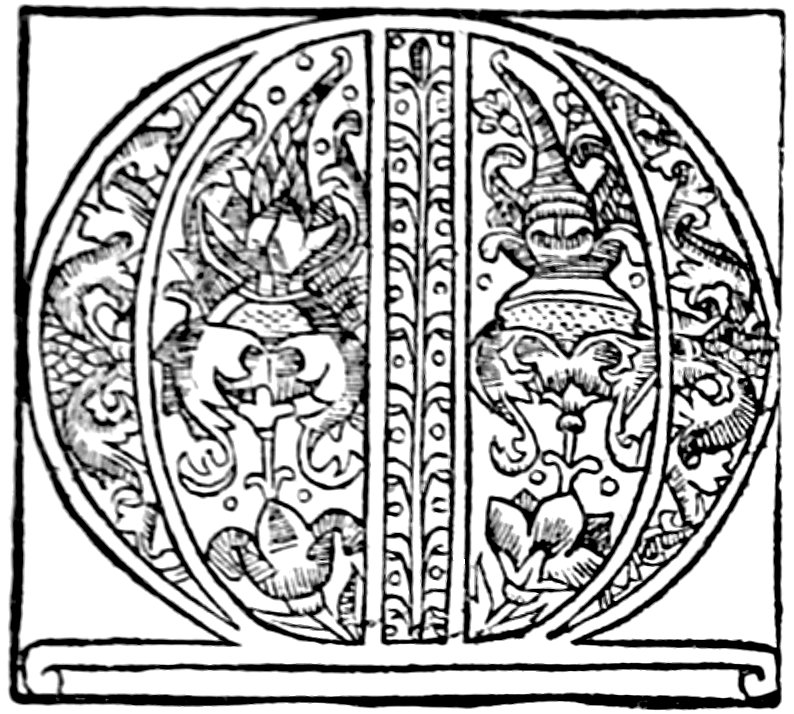
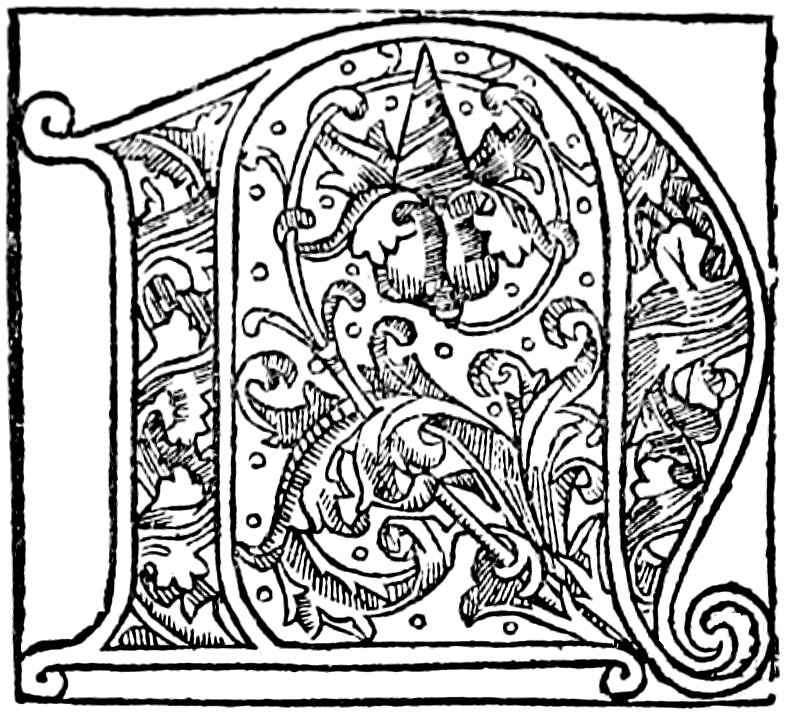

FROM THE ‘DIALOGUS CREATURUM’
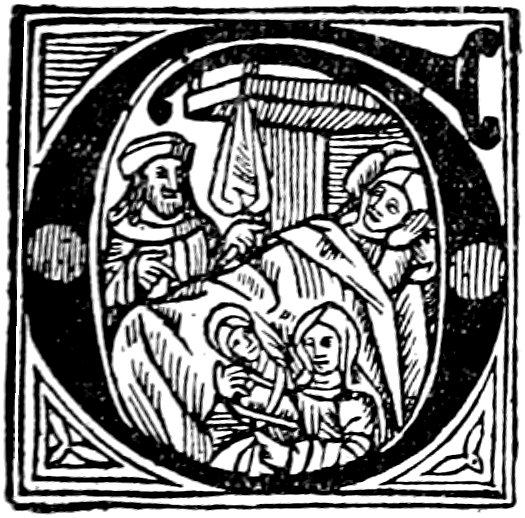
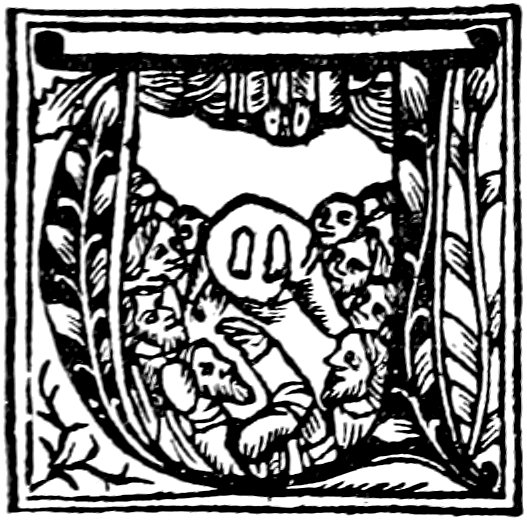
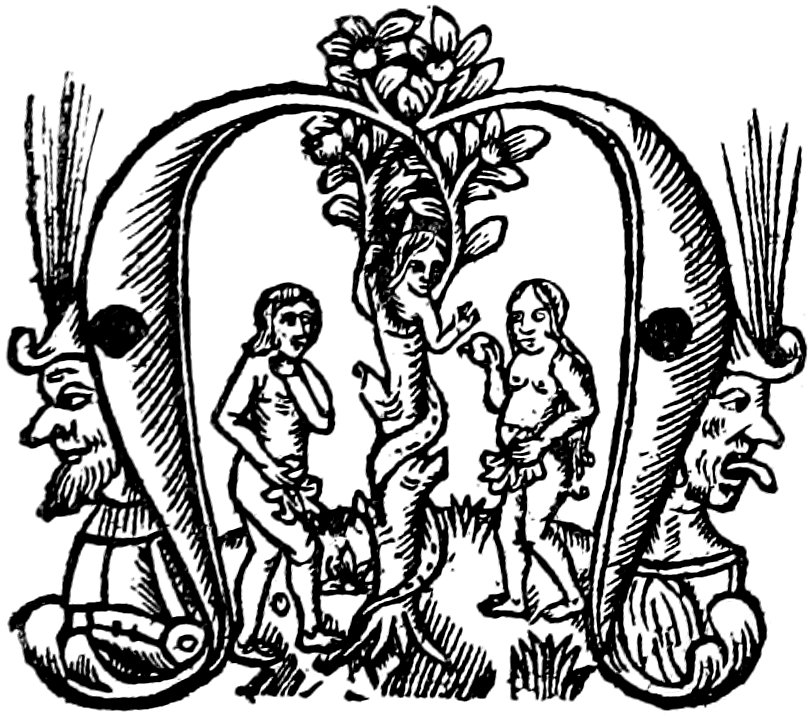
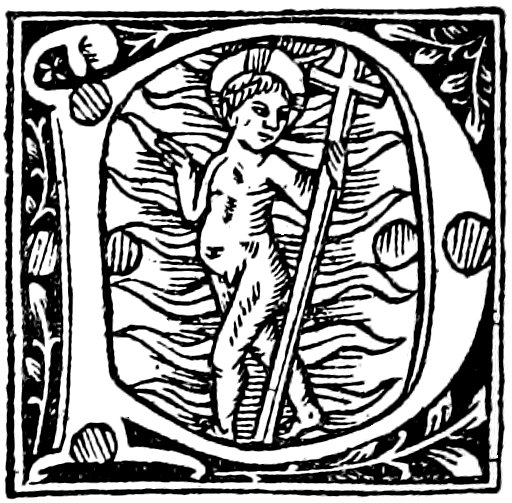
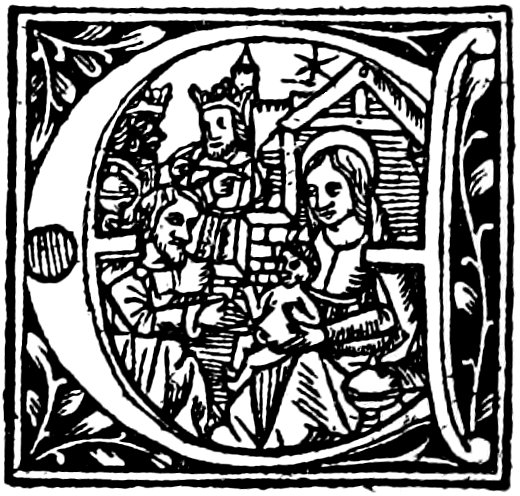
FROM A MISSAL OF BELLOT
[165]
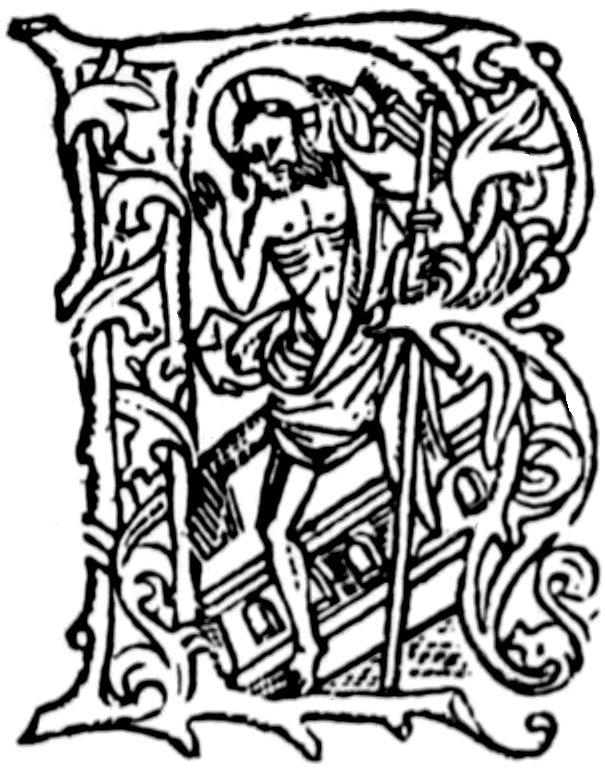
FROM QUENTELL’S MISSAL, 1494
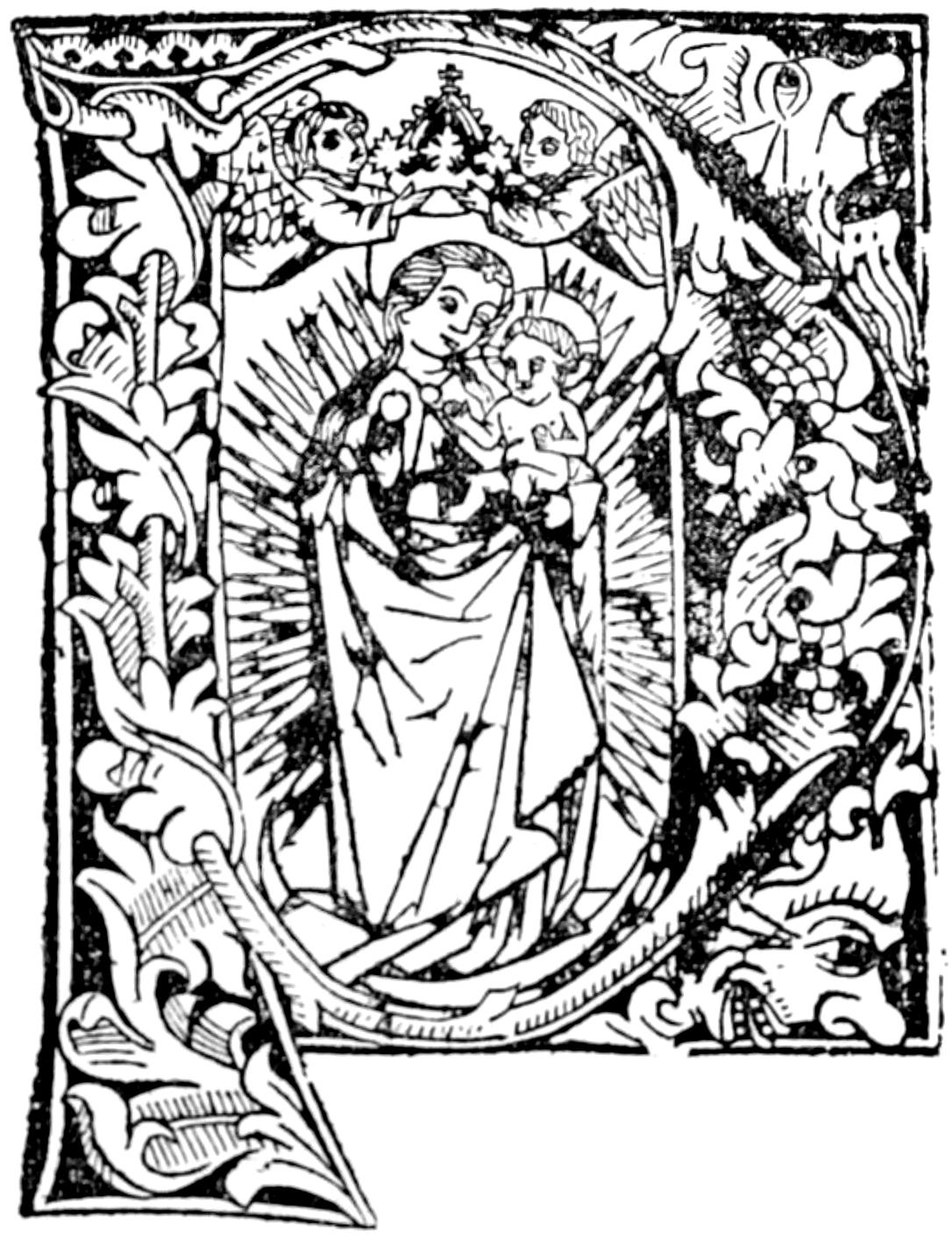
FROM A DONATUS
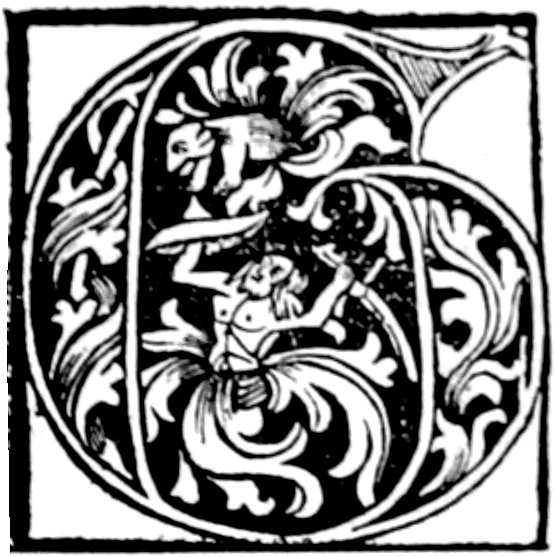
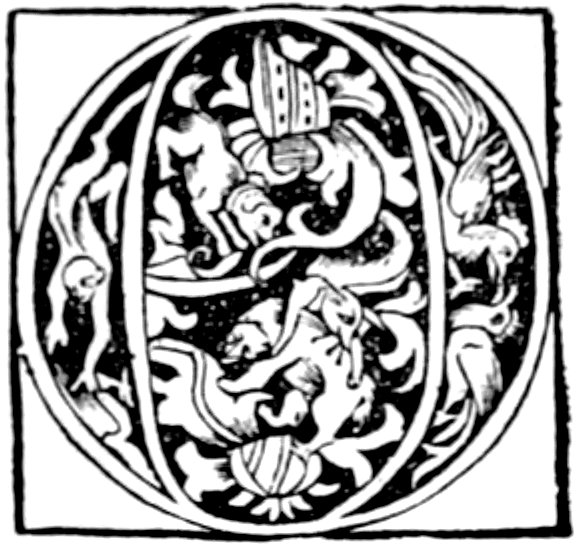
FROM ‘SEQUENTIARUM ET HYMNORUM’ EXPOSITIO BY BUNGART DE KETWYCK
[166]
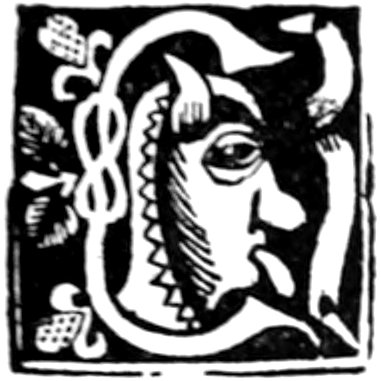
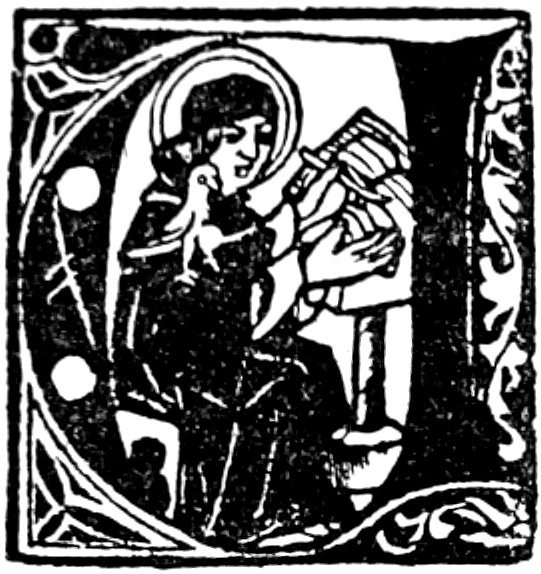
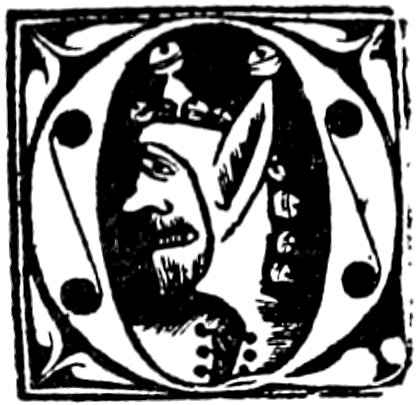
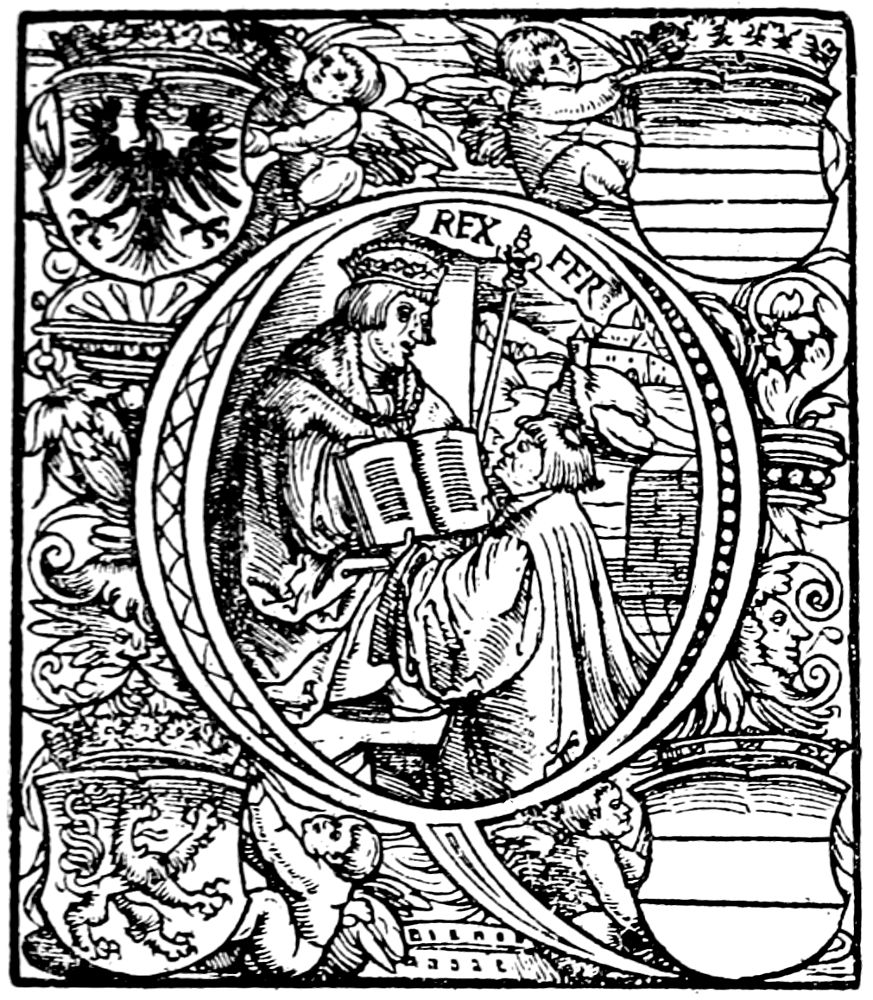
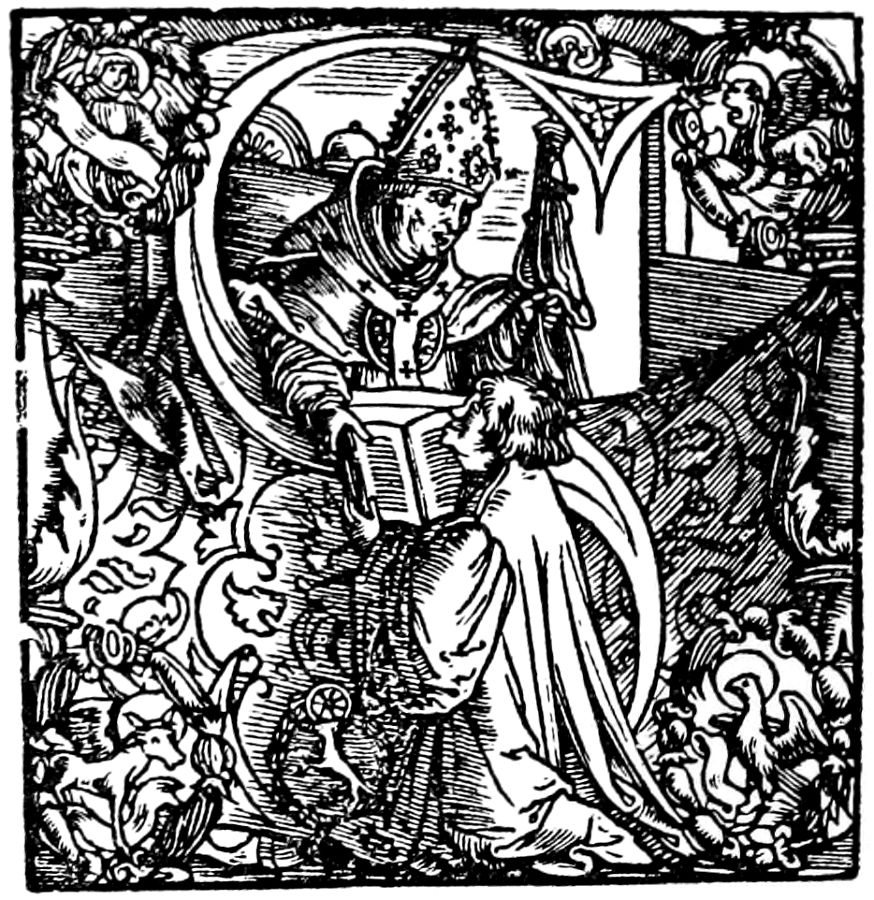
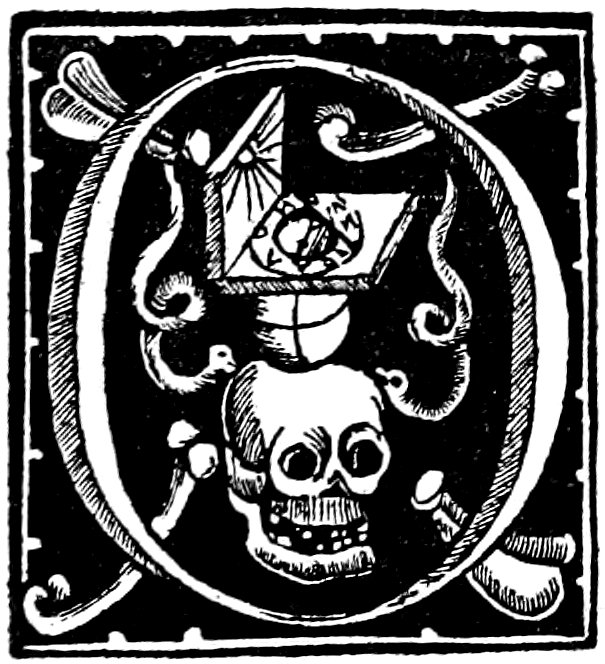
OTHER INITIALS BY QUENTELL
[167]
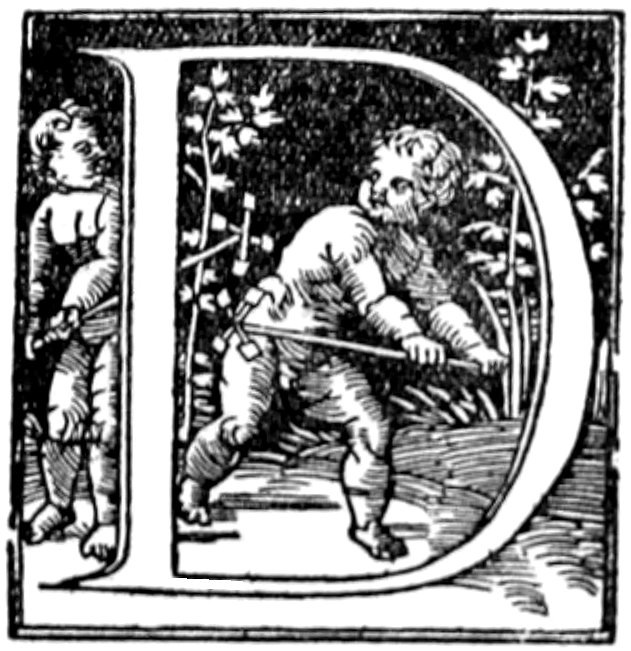
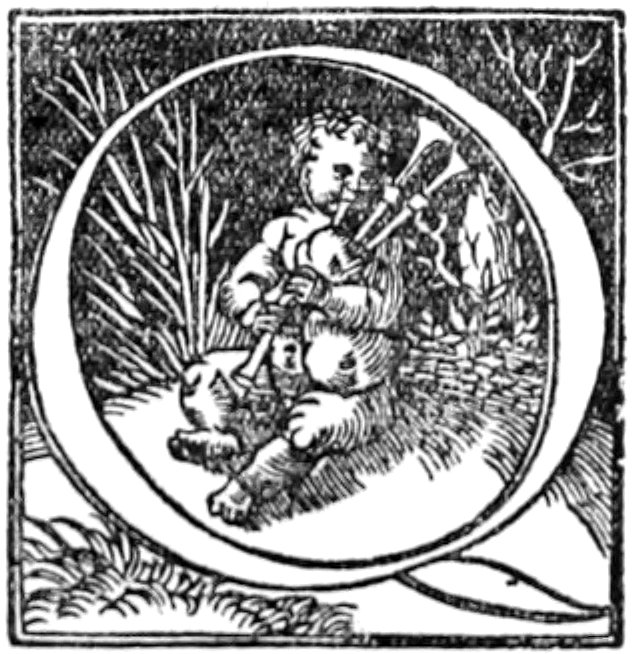
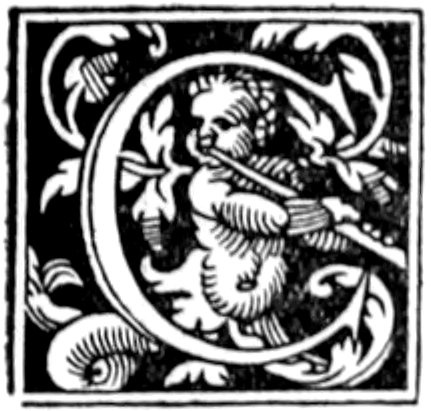
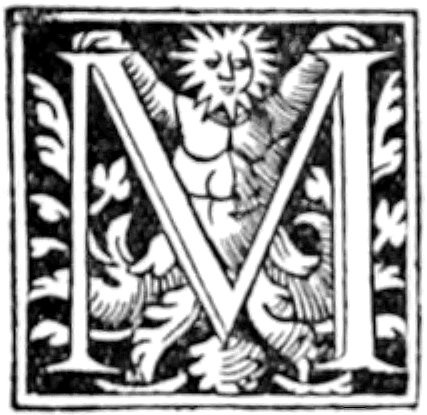
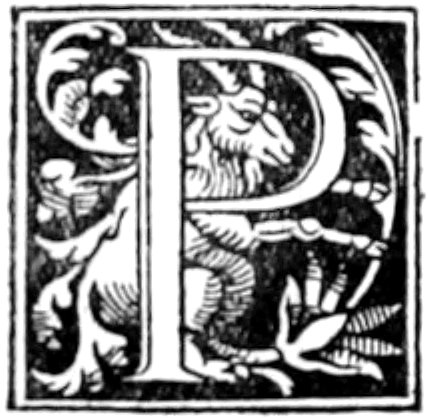
BY MELCHIOR NOVESIANUS
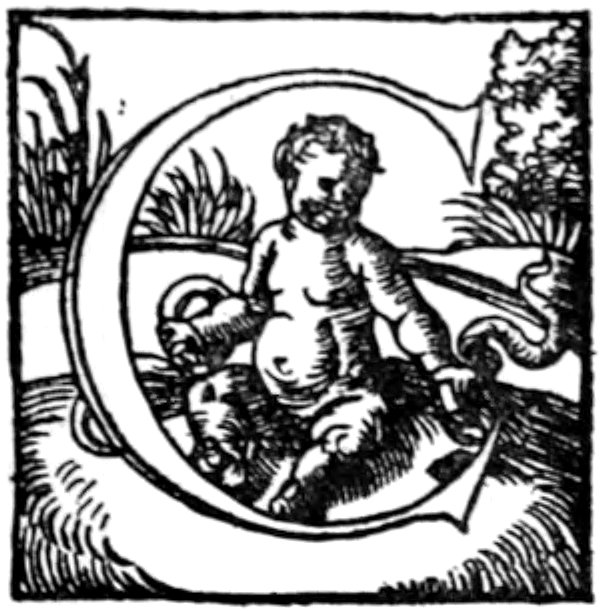
BY J. GYMNICUS
[168]
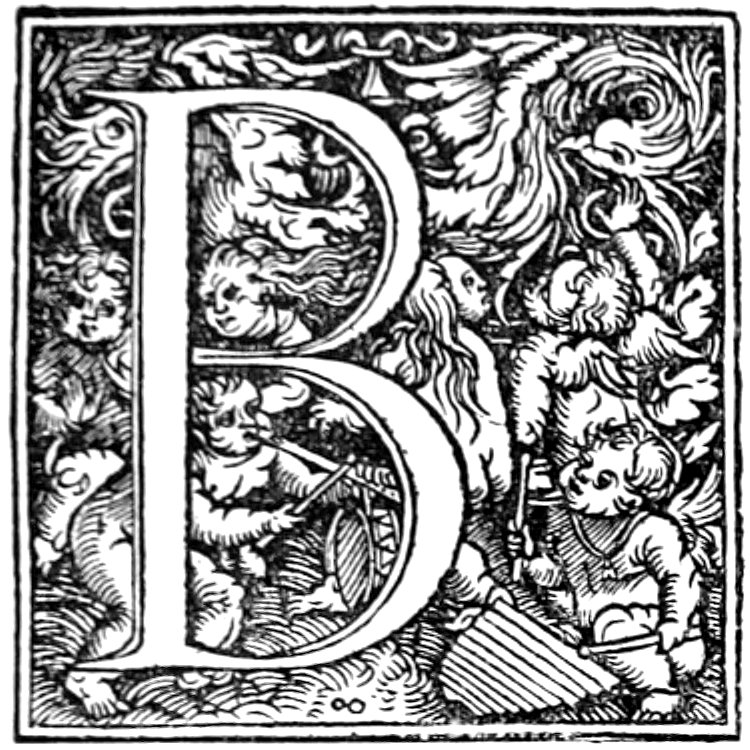
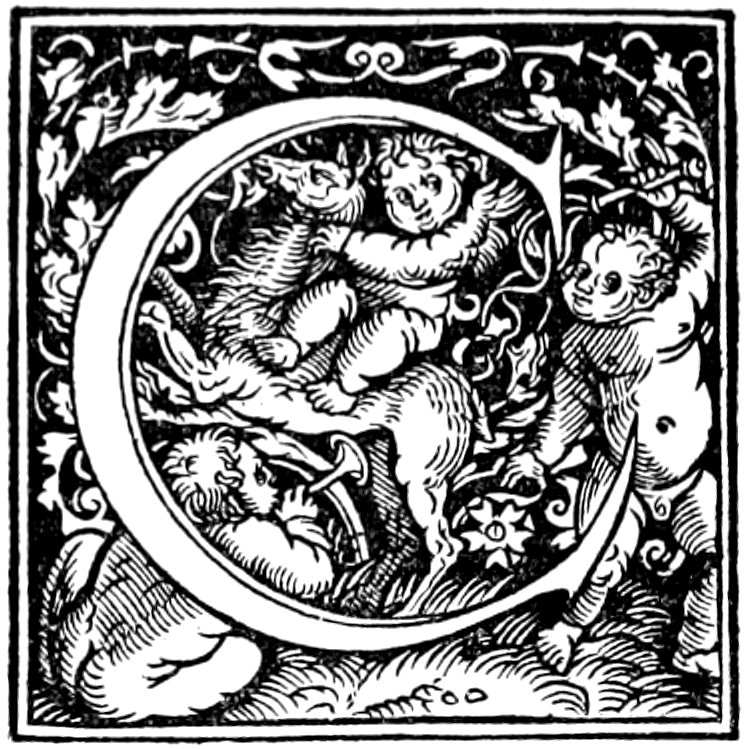
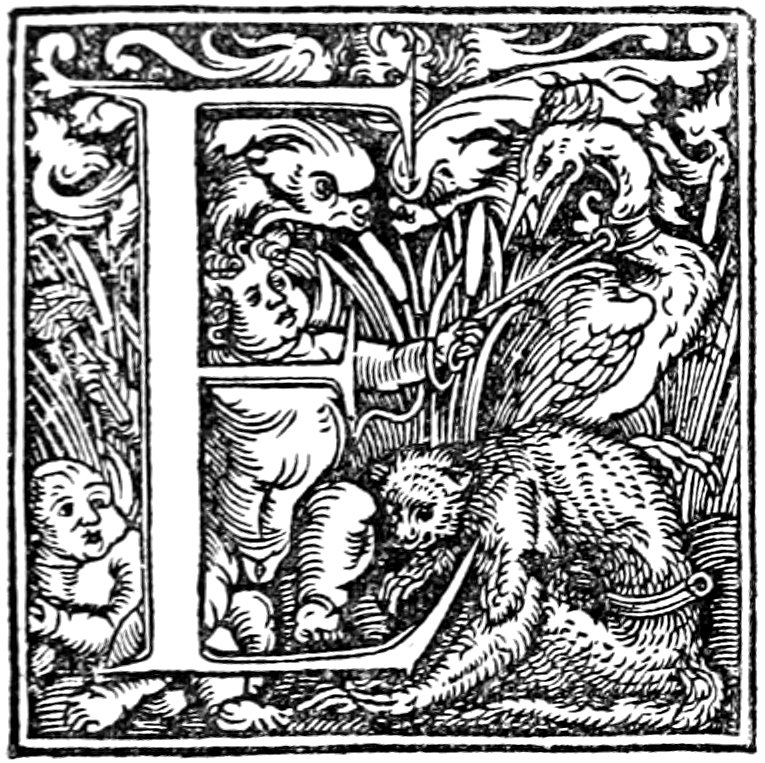
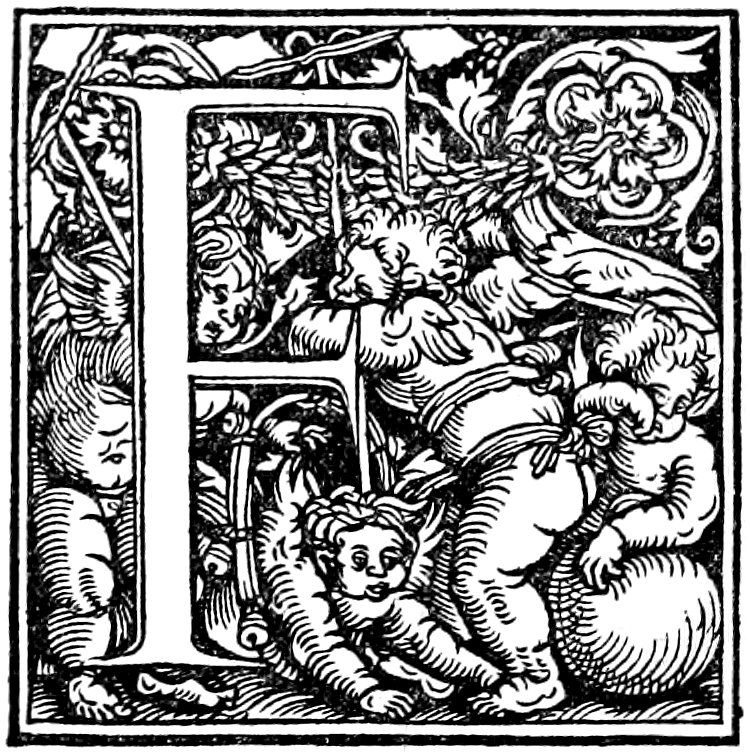
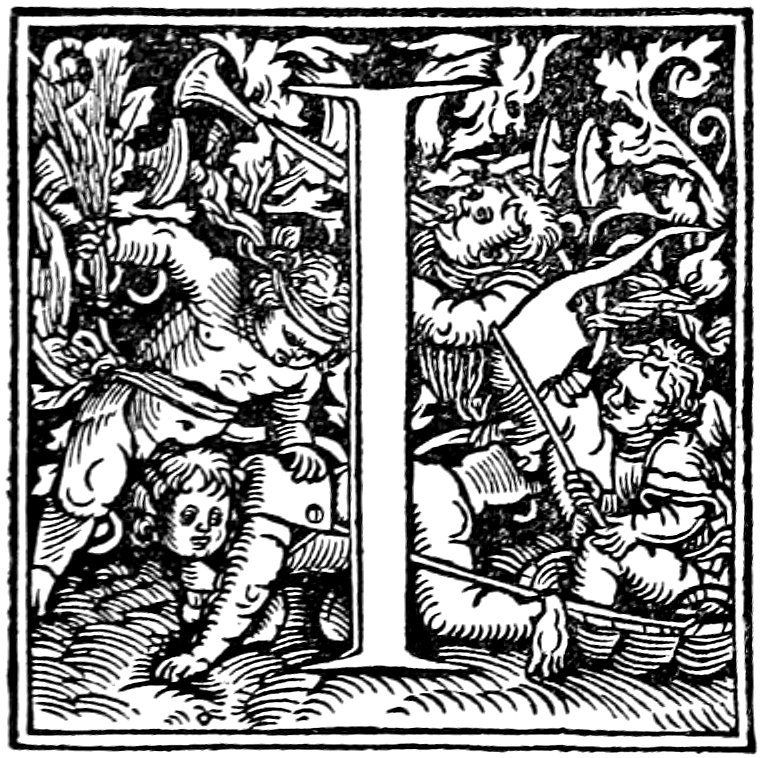
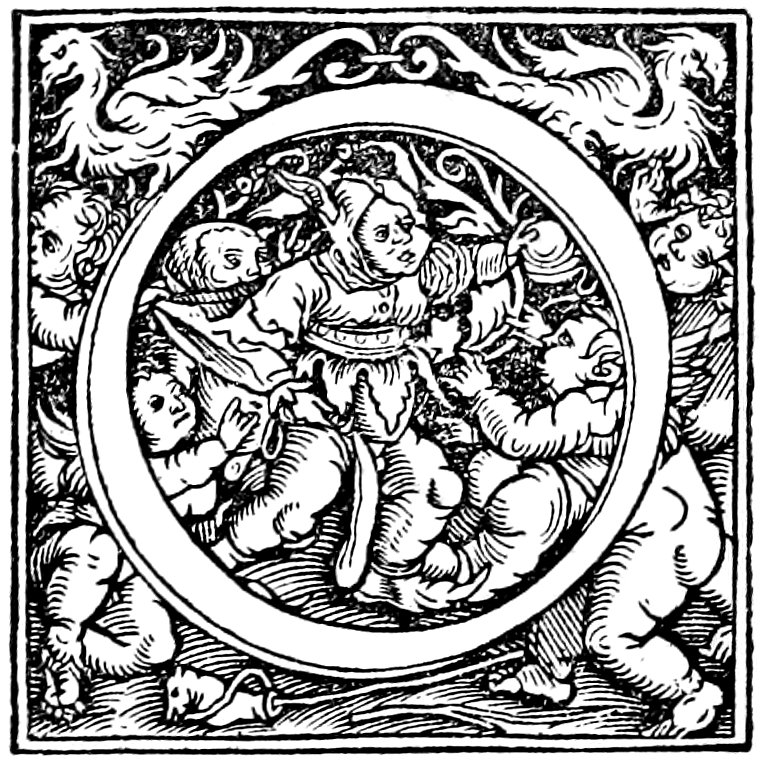
FROM ALPHABET OF ALBERT DÜRER IN BOOKS BY CERVICORNUS
[169]
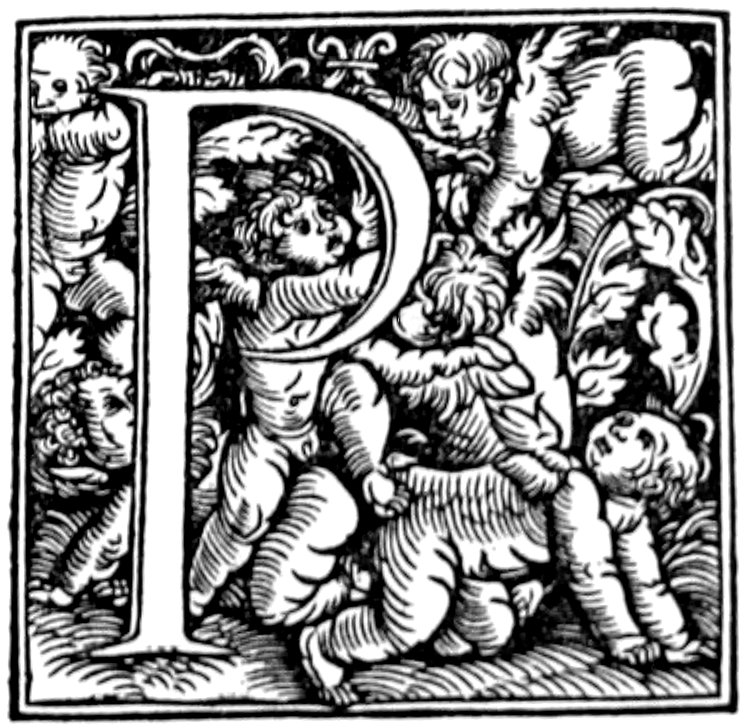
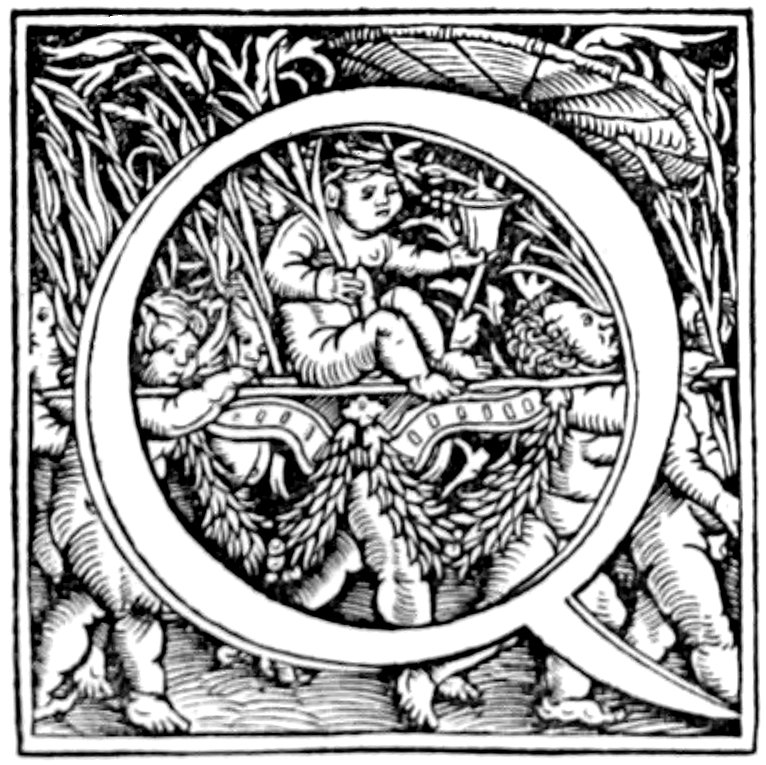
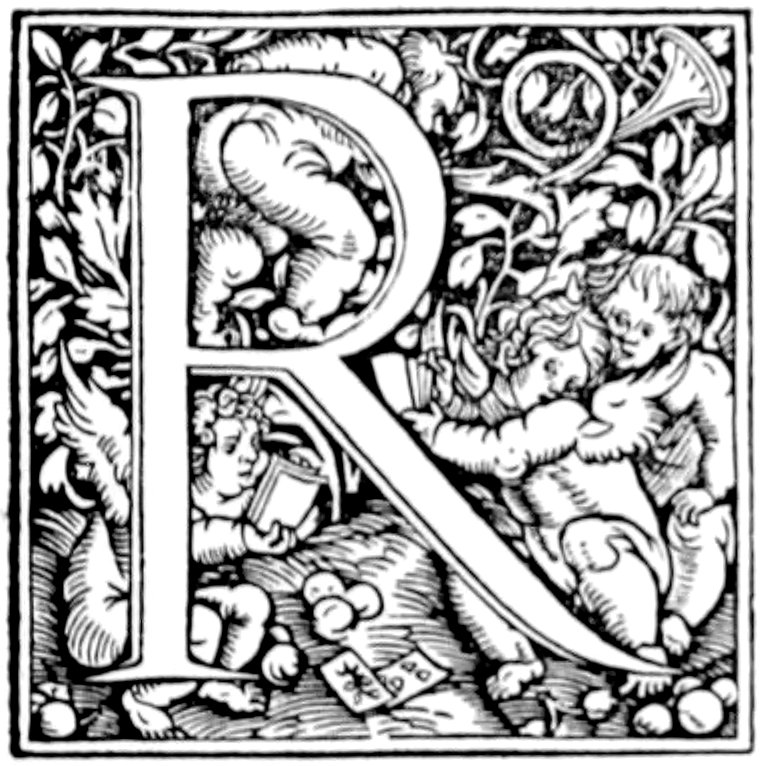
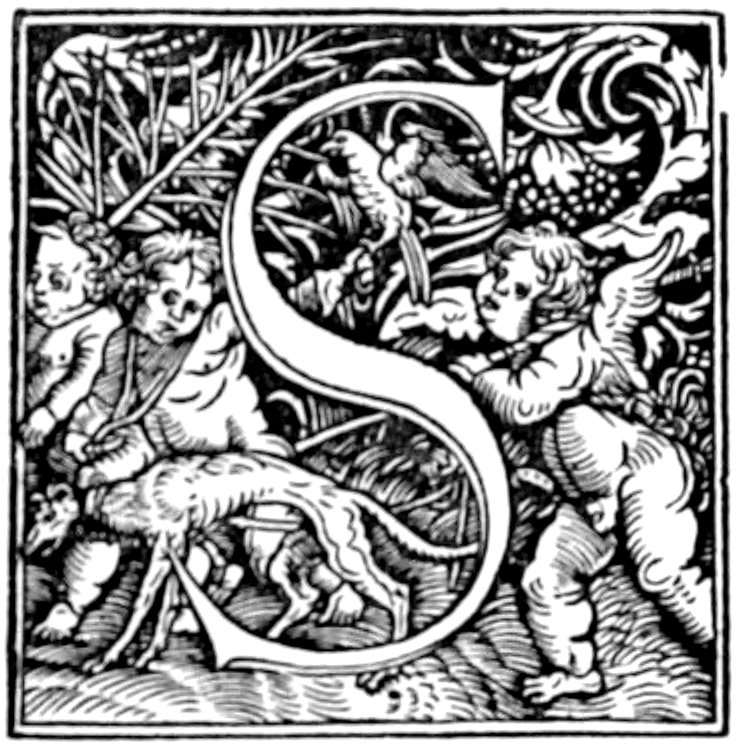
FROM ALPHABET OF ALBERT DÜRER IN BOOKS BY CERVICORNUS

A LYONS COPY
[170]
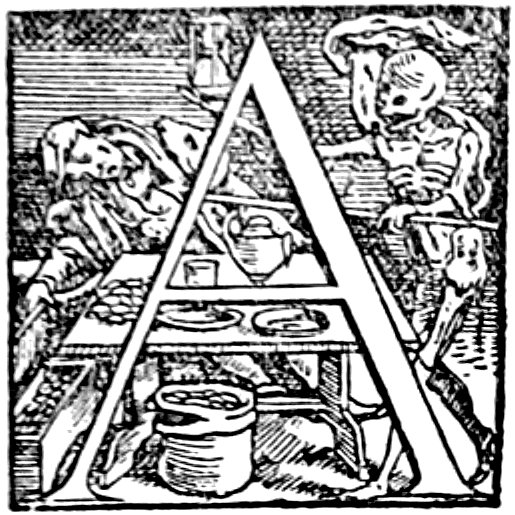

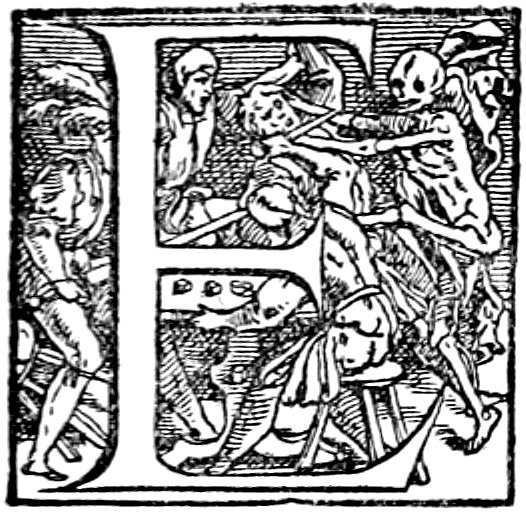
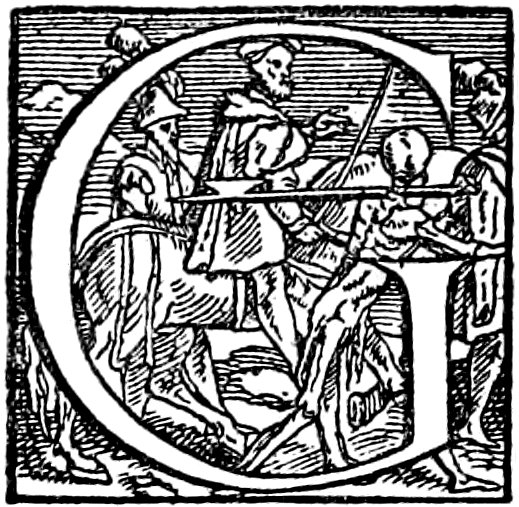
MACABRE INITIALS

COPIED FROM THE VENETIAN ‘BREVIARUM ORBIS’ OF LILIUS
[171]
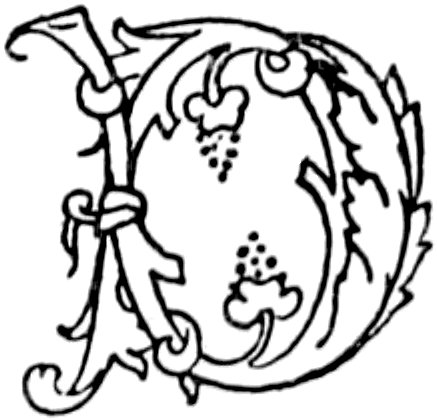

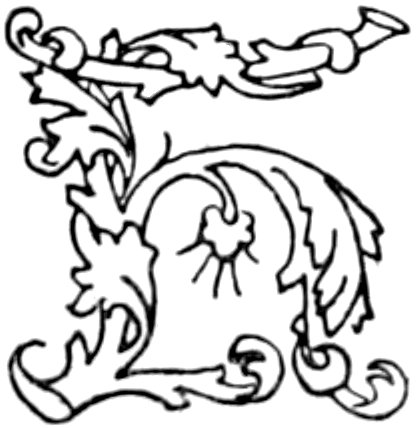
INITIALS OF RATDOLT, 1476
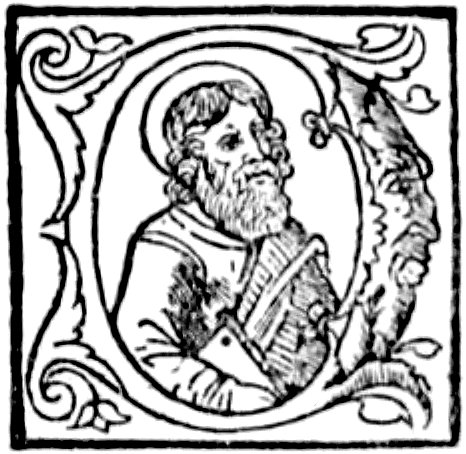
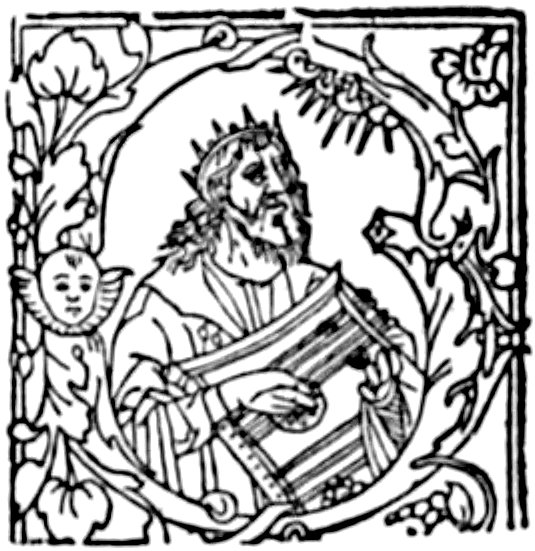
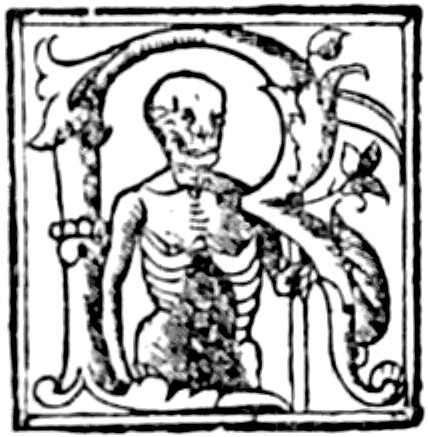
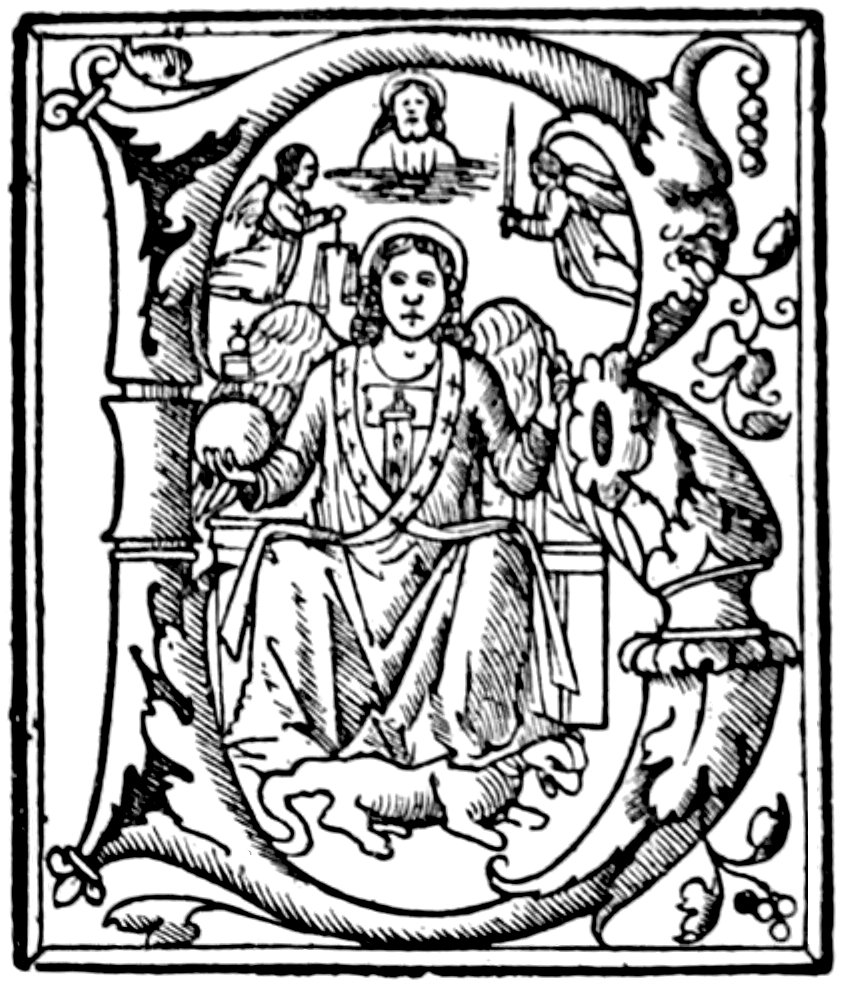
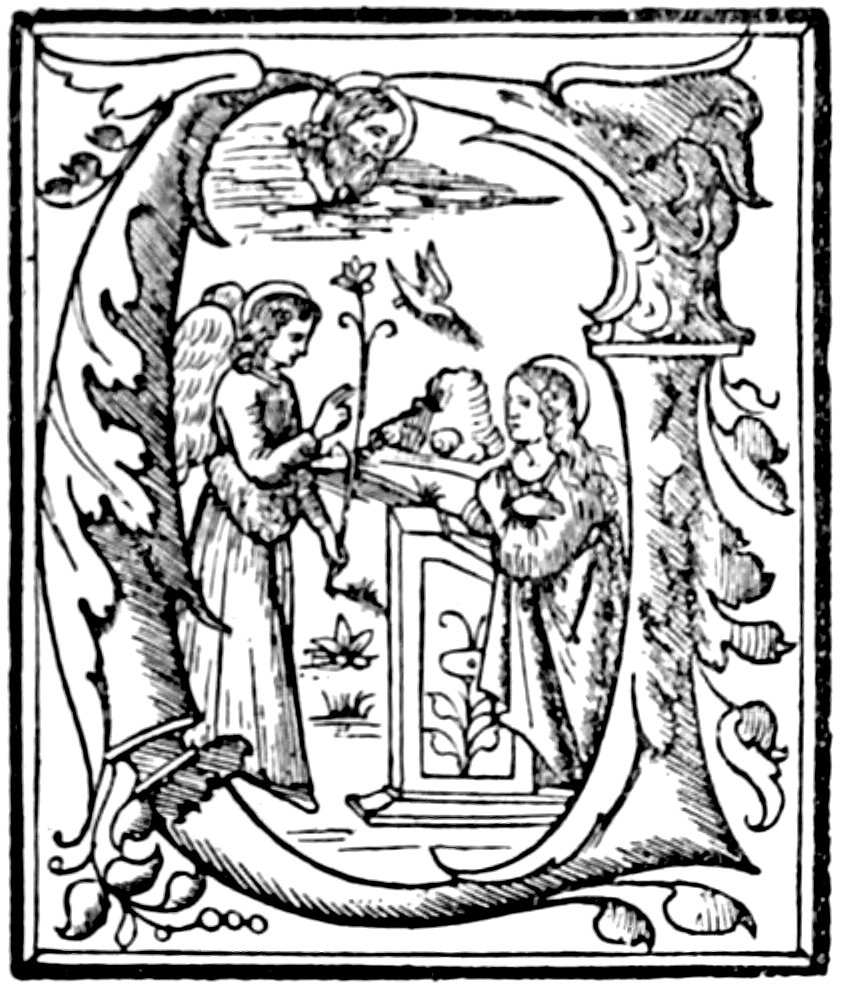
FROM MISSALS AND BREVIARIES BY GEORGE ARRIVABENE AND LUCANTONIO DI GIUNTA
[172]
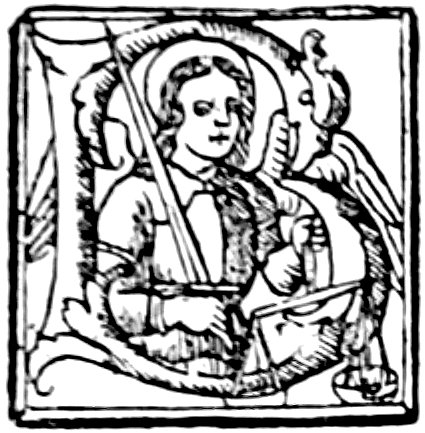
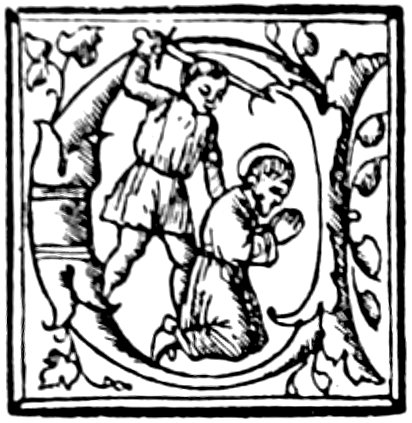
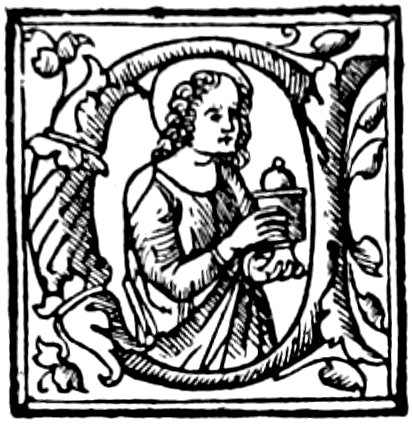
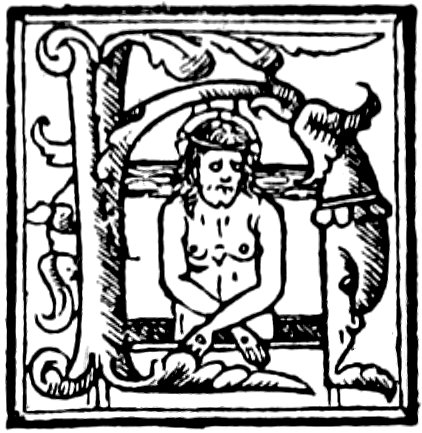
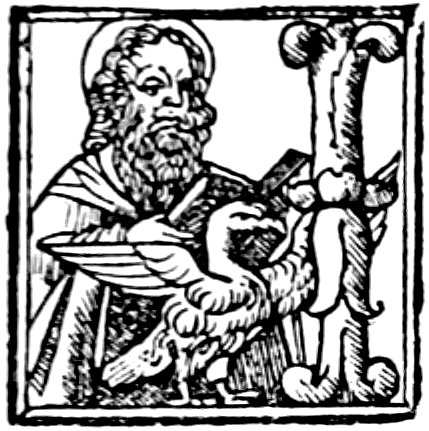
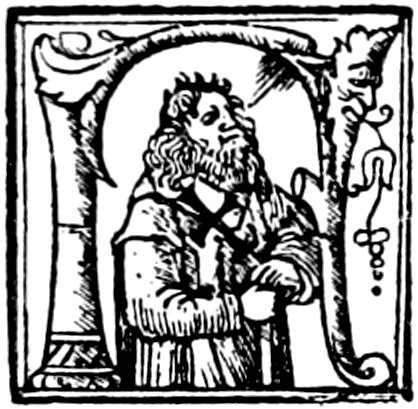
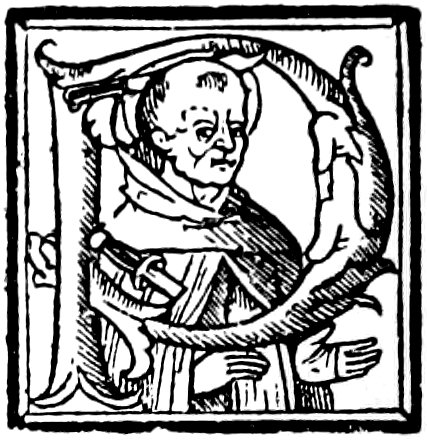
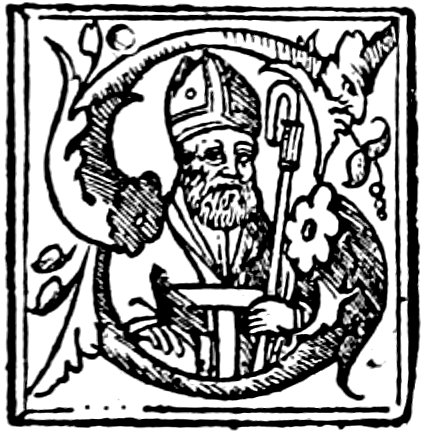
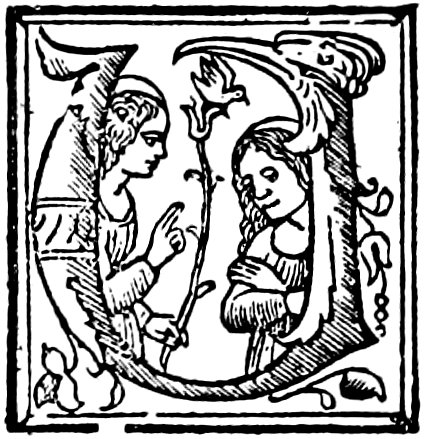
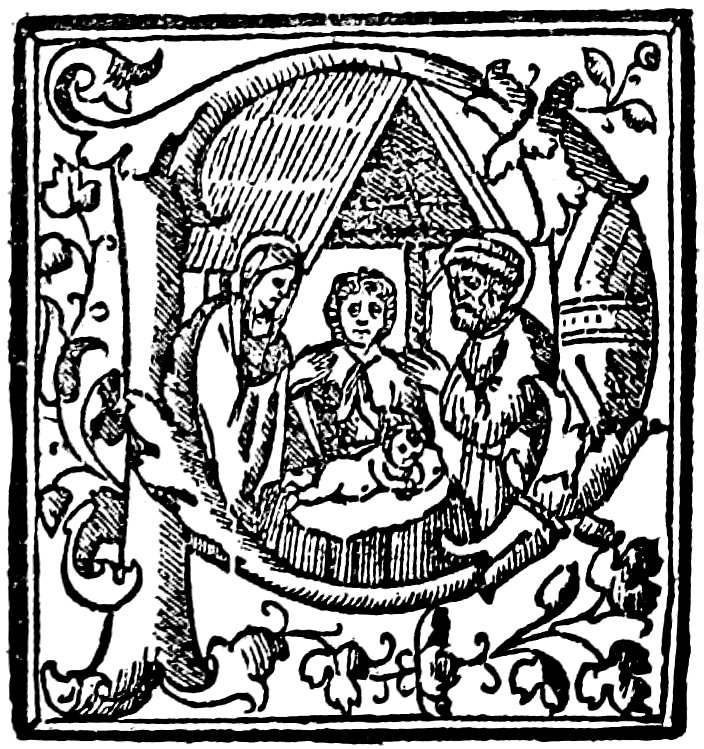
FROM MISSALS AND BREVIARIES BY GEORGE ARRIVABENE AND LUCANTONIO DI GIUNTA
[173]
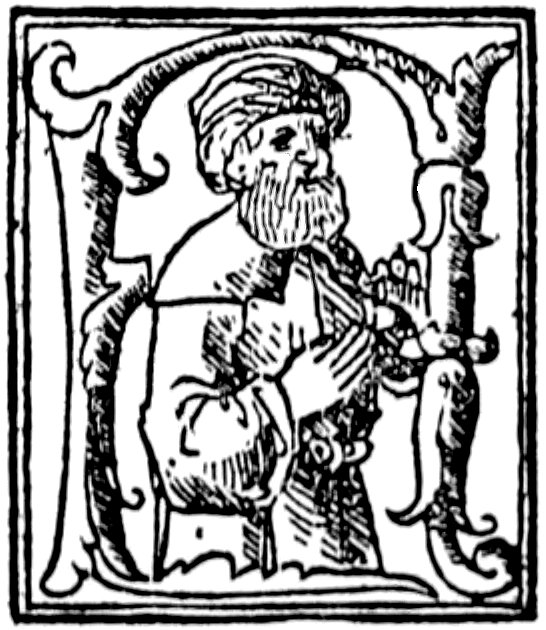
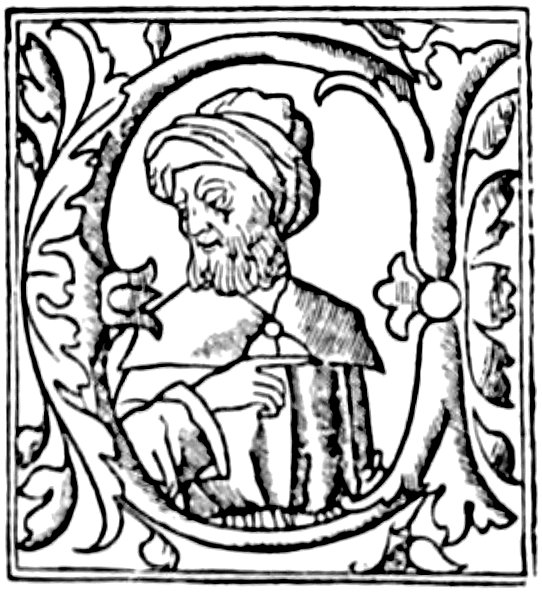
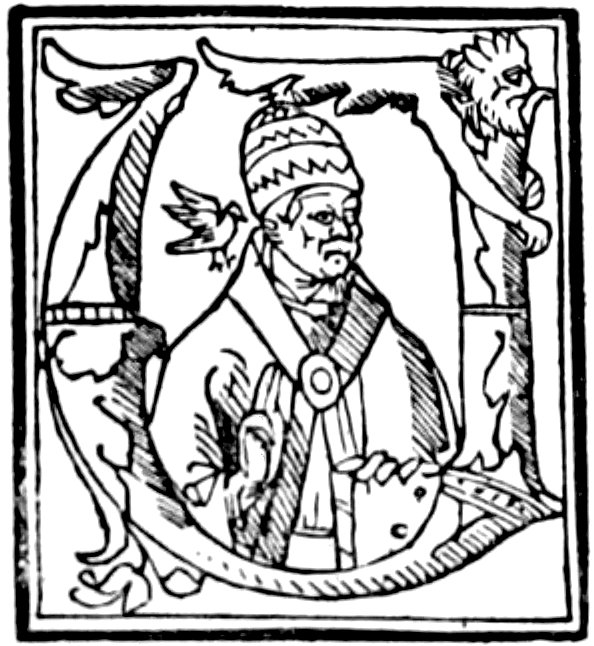
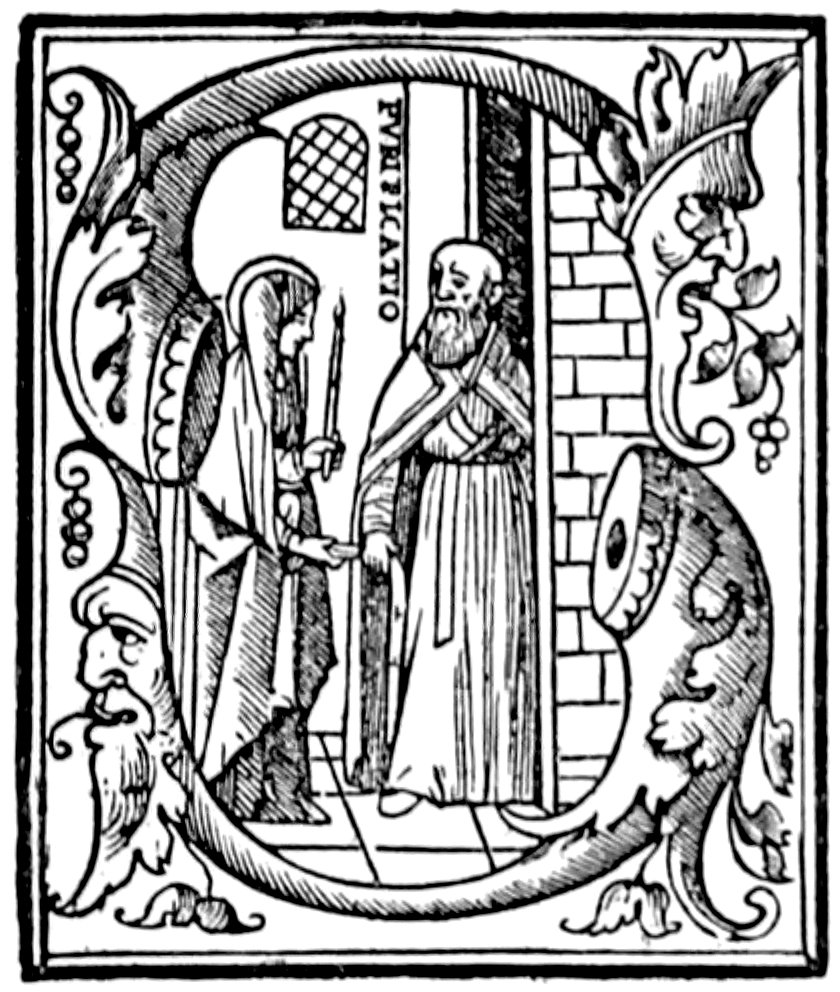
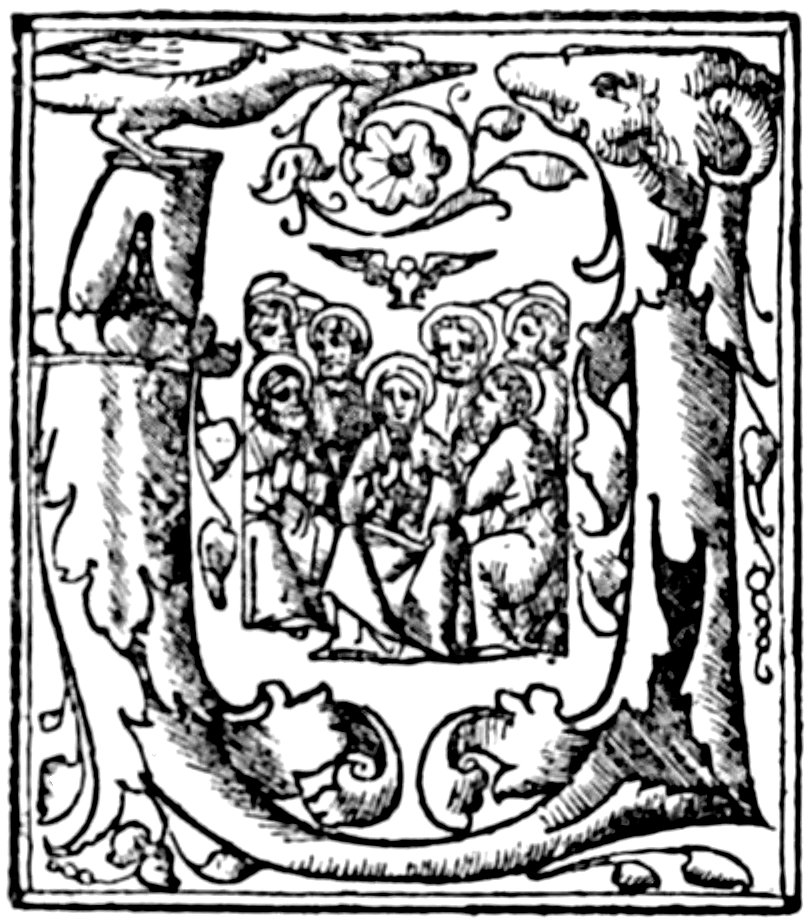
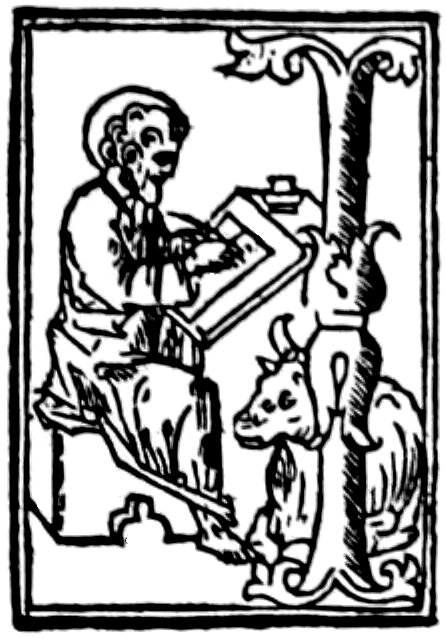
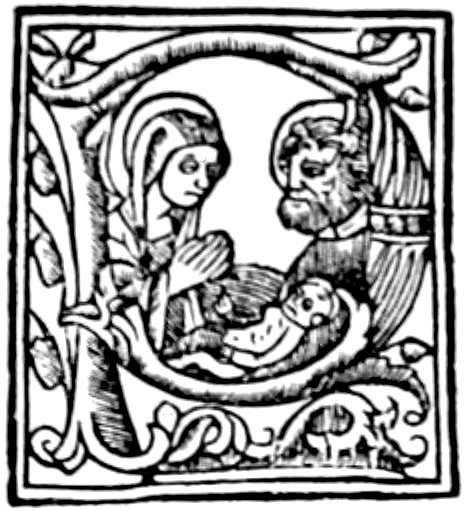

FROM MISSALS AND BREVIARIES BY GEORGE ARRIVABENE AND LUCANTONIO DI GIUNTA
[174]
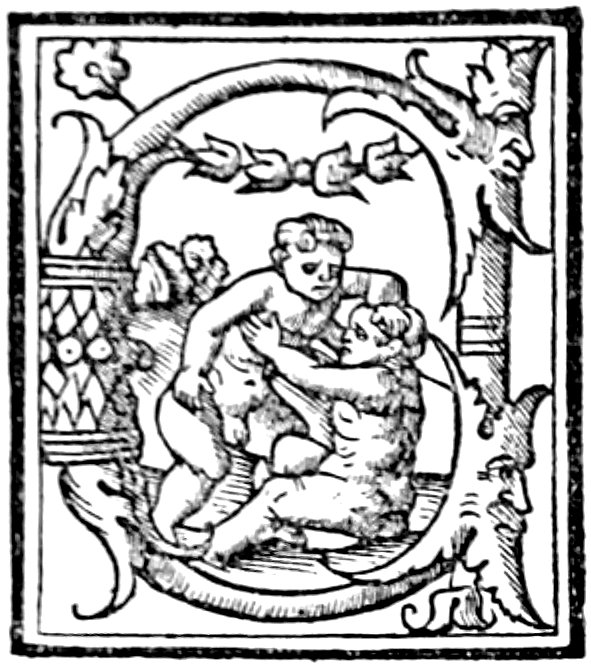
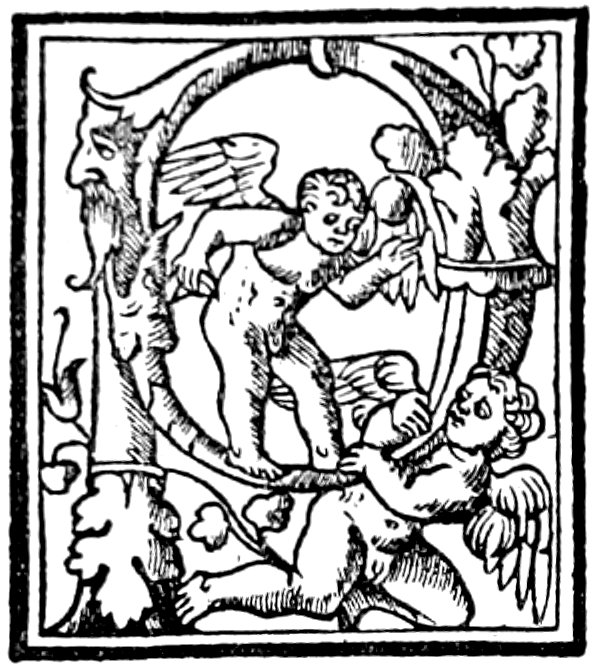
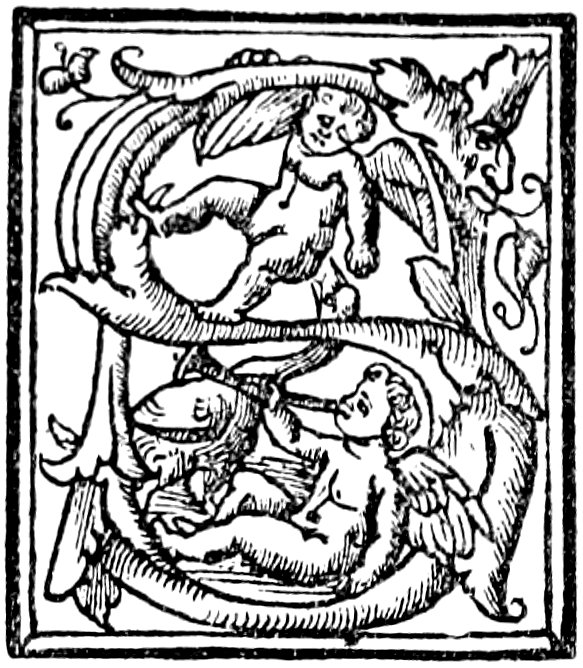
FROM A BOOK PRINTED BY BONETUS LOCATELLUS
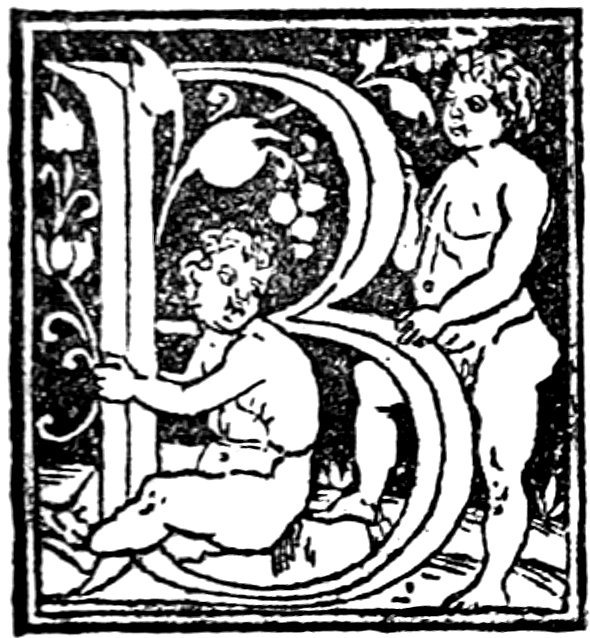
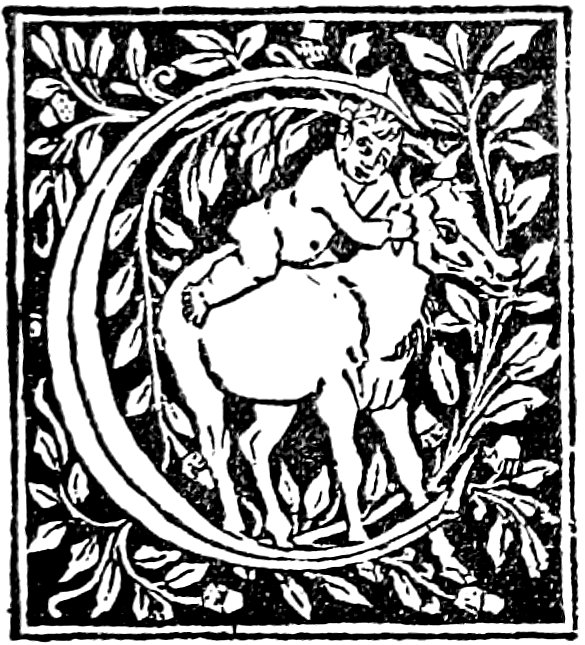
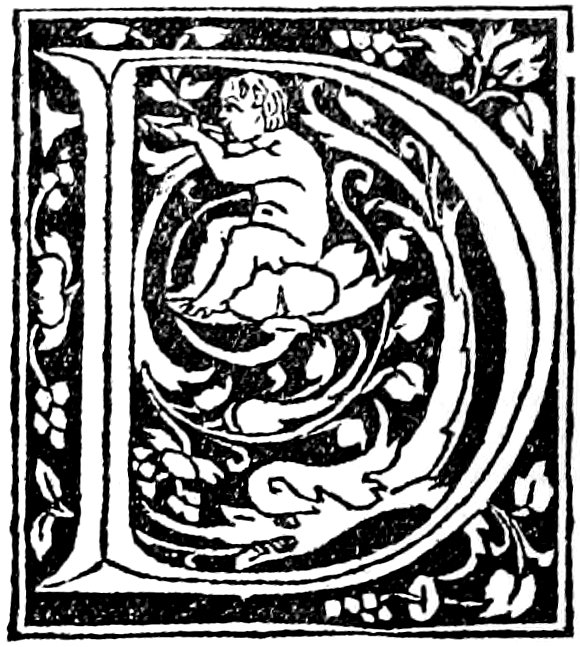


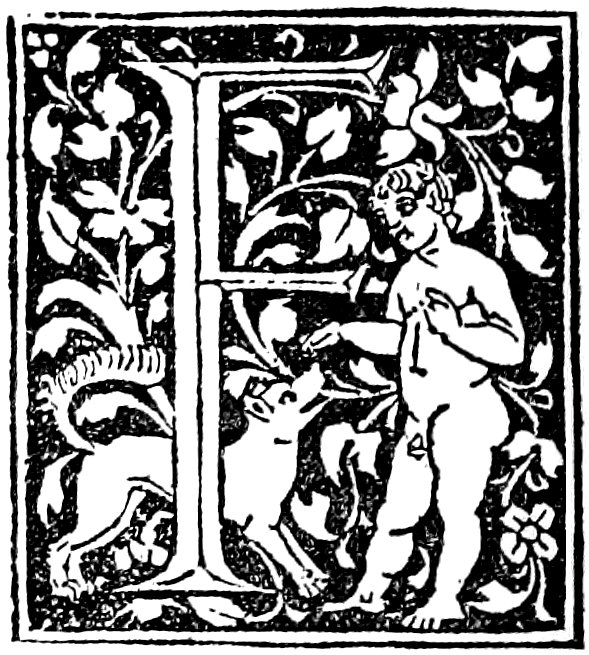
FROM BOOKS BY MATTEO CAPCASA, TACUINUS DE TRIDINO, BONETUS LOCATELLUS, AND OTHERS
[175]
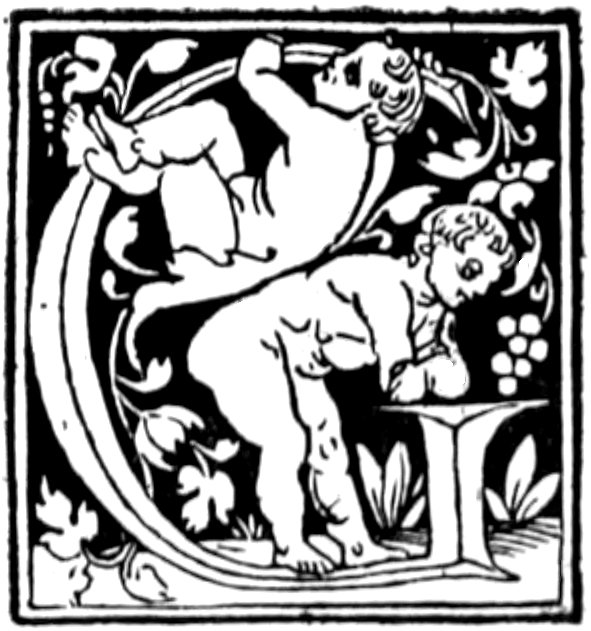
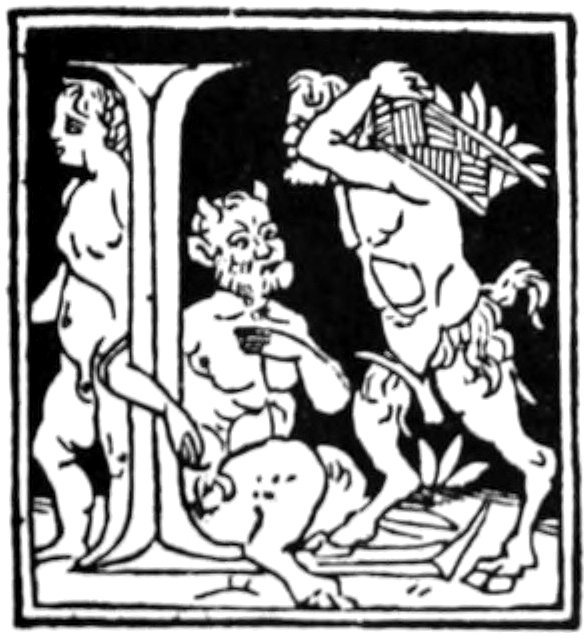
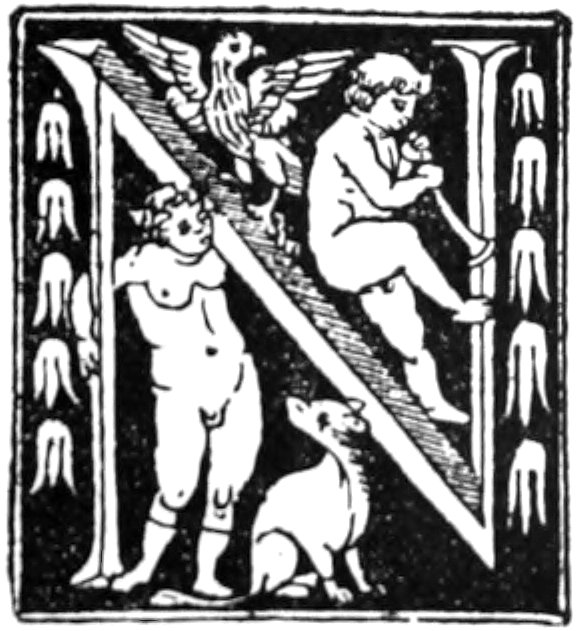

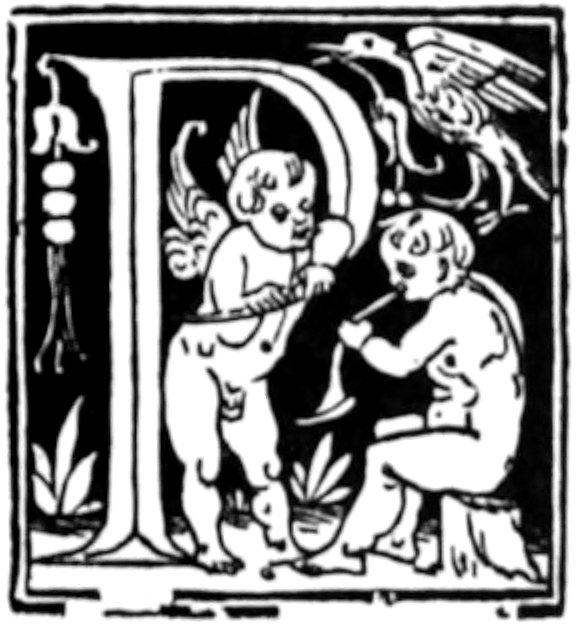
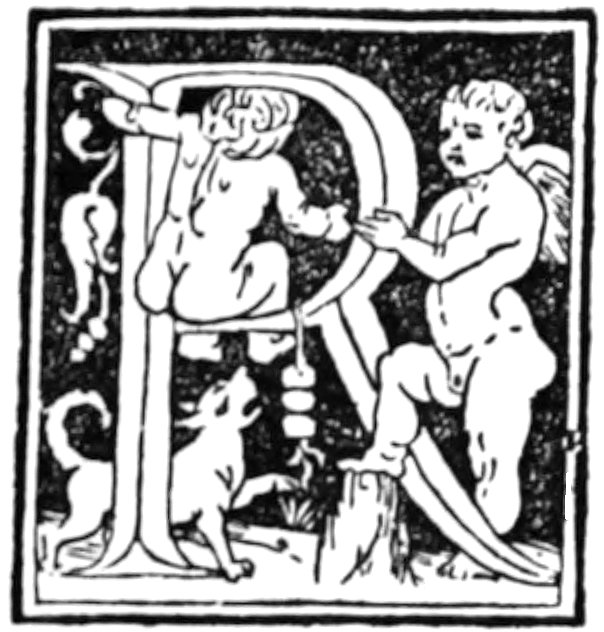
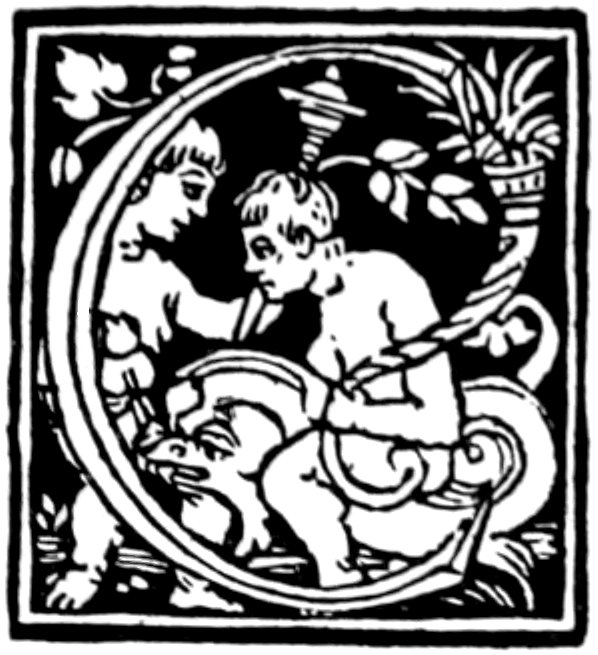

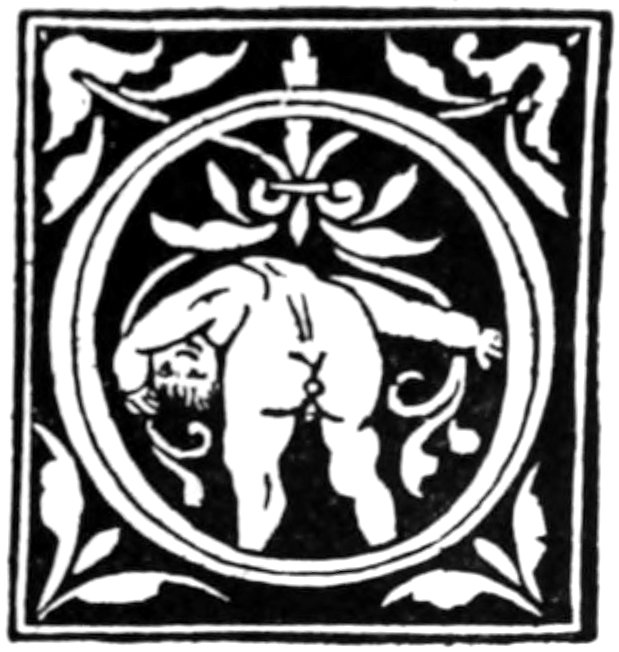
FROM BOOKS BY MATTEO CAPCASA, TACUINUS DE TRIDINO, BONETUS LOCATELLUS, AND OTHERS
[176]
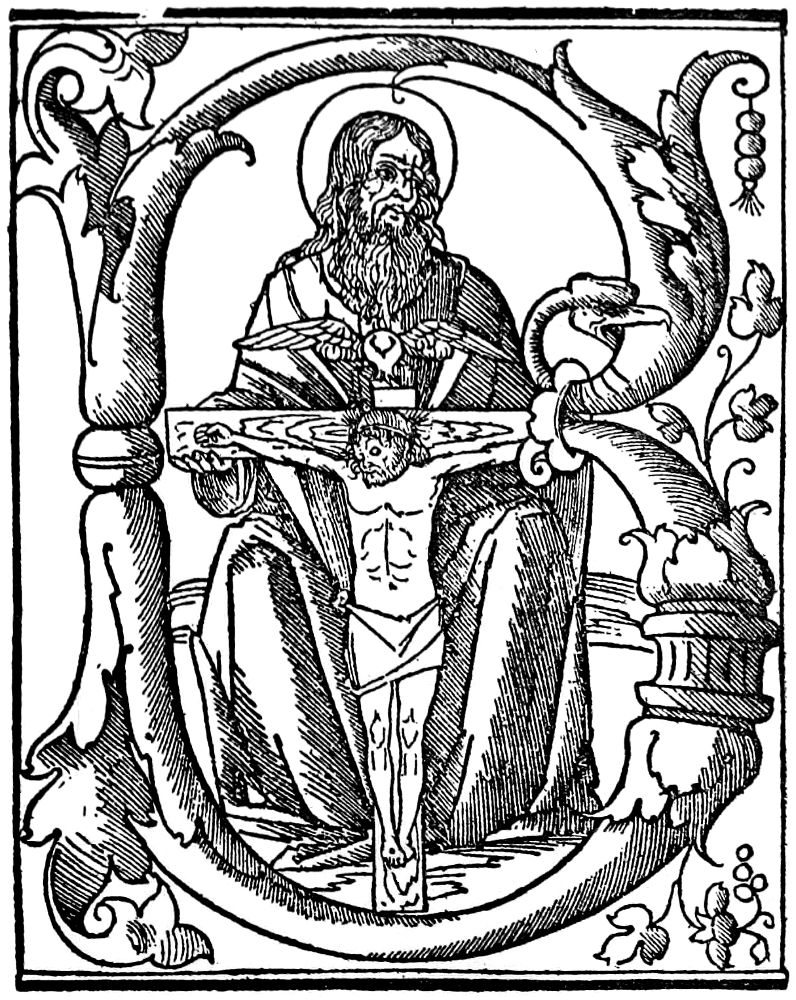
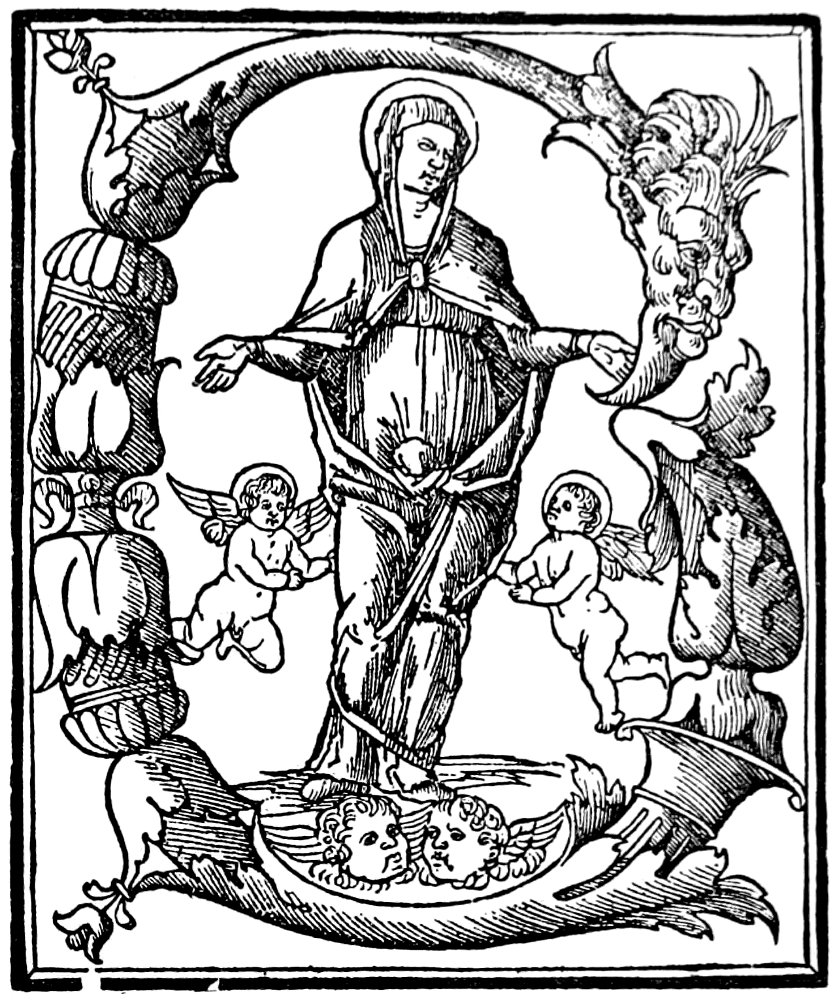
FROM THE ‘MISSALE VALLISUMBROSE’ OF GIUNTA
[177]
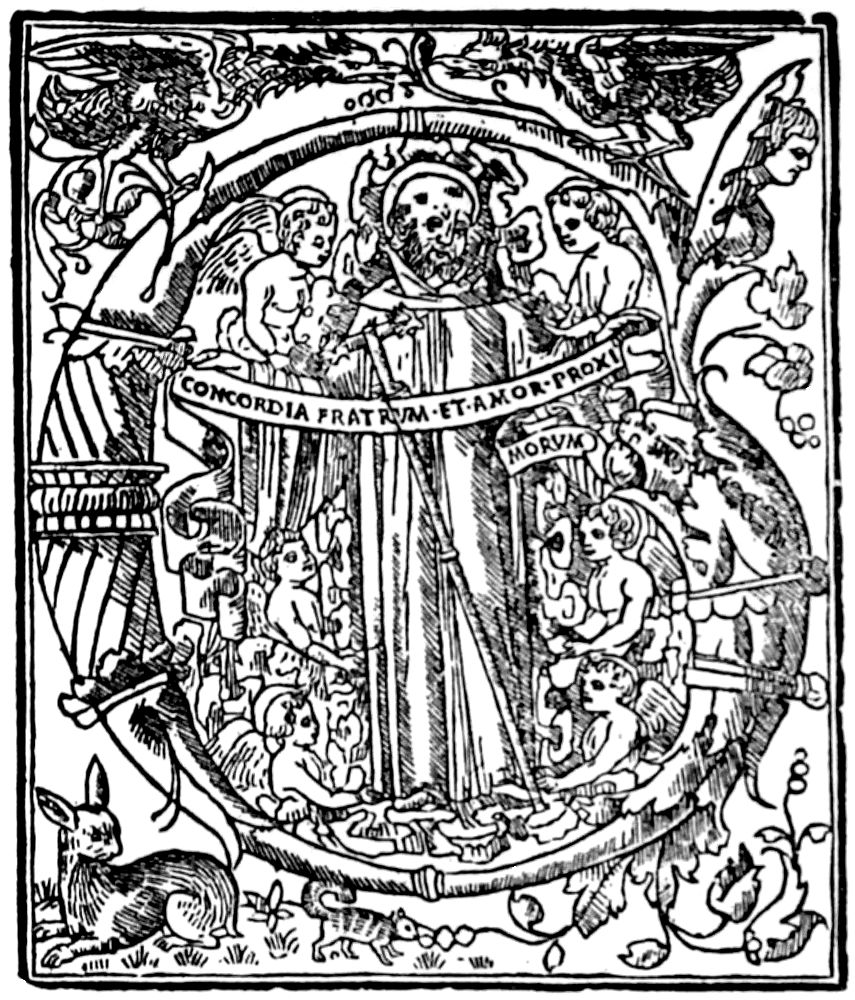
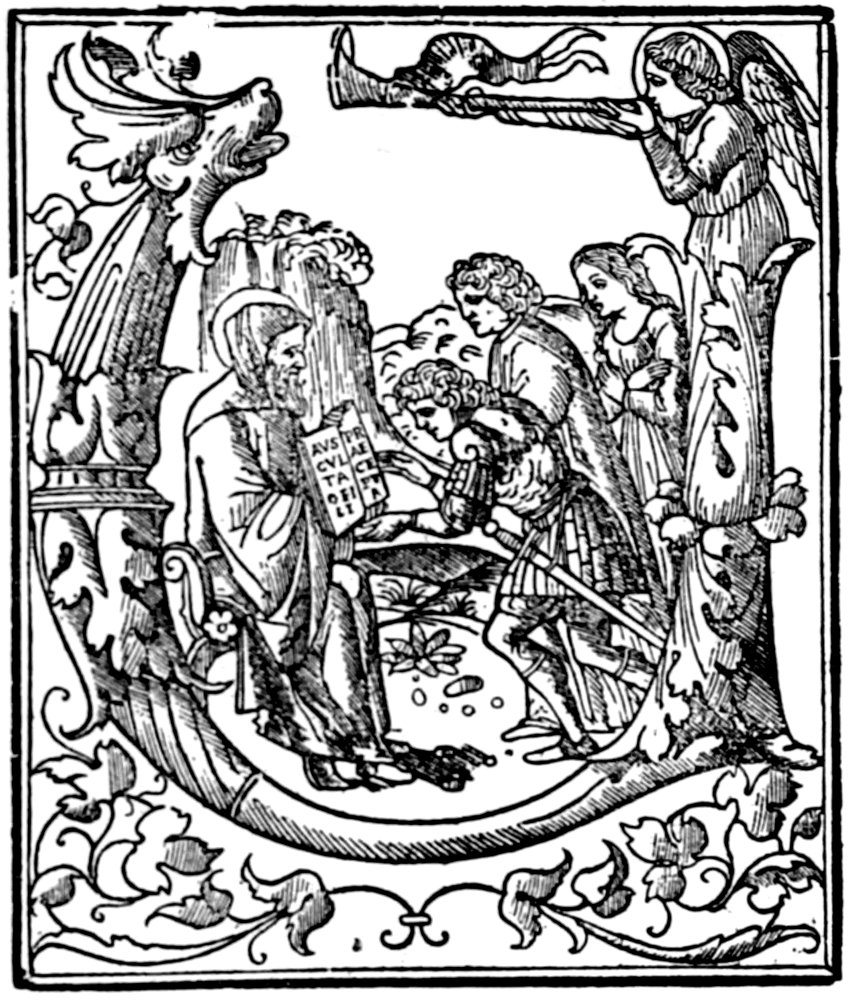
FROM THE ‘MISSALE VALLISUMBROSE’ OF GIUNTA
[178]
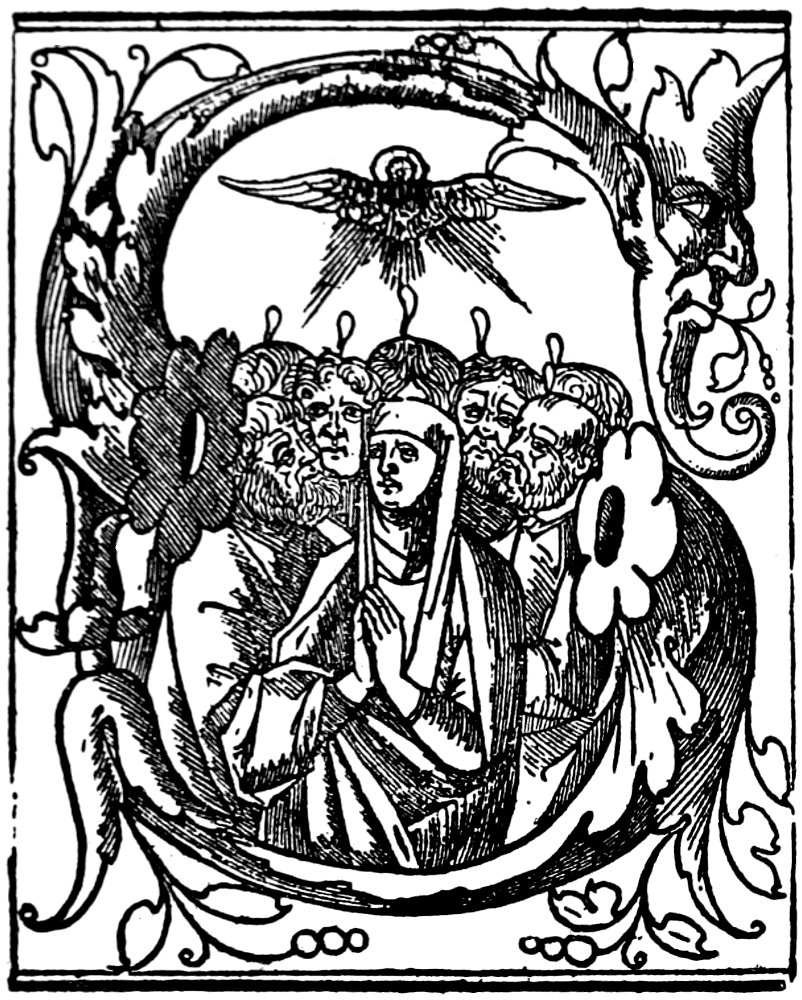
FROM THE ‘MISSALE VALLISUMBROSE’ OF GIUNTA
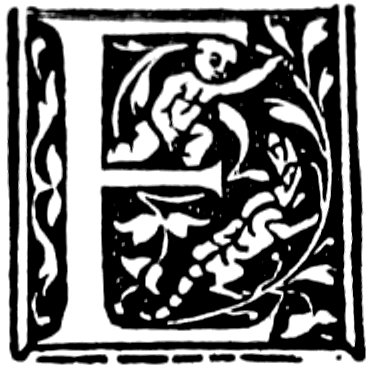
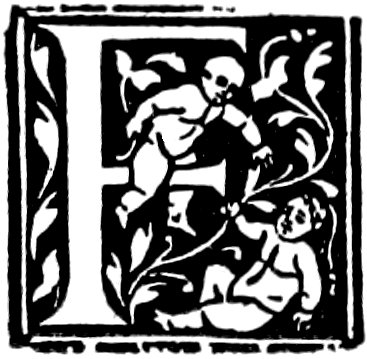
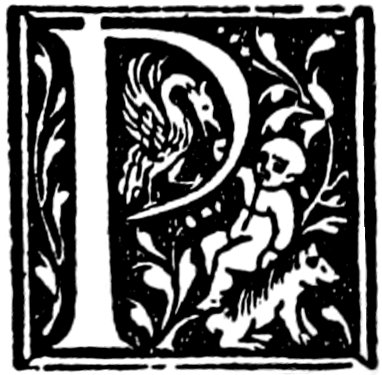
FROM A VENETIAN IMPRESSION
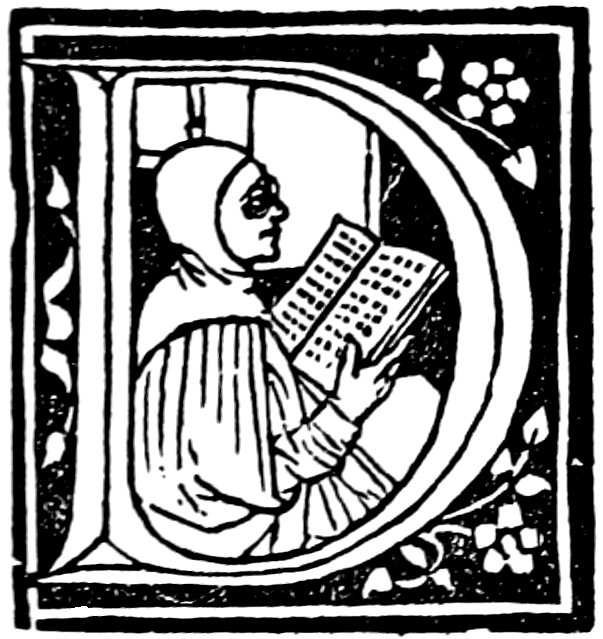
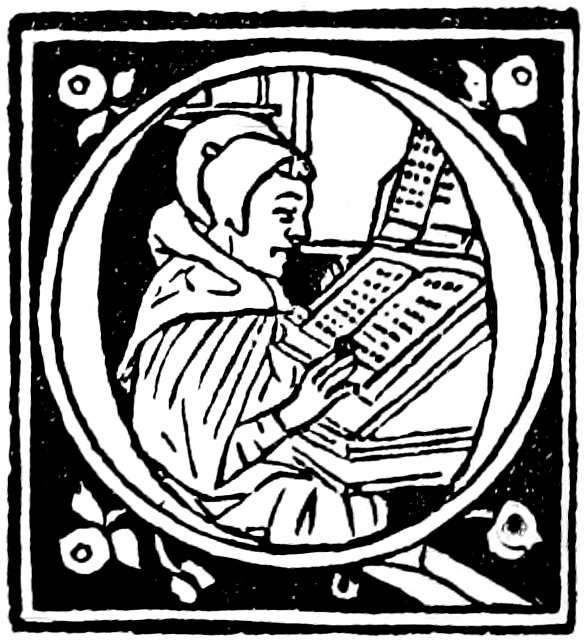
FROM AN EDITION OF ARISTOTLE BY SESSA
[179]
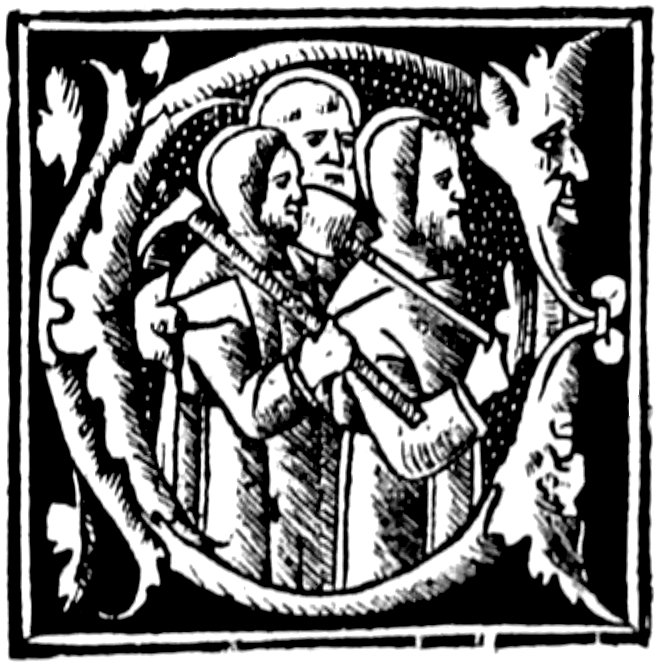
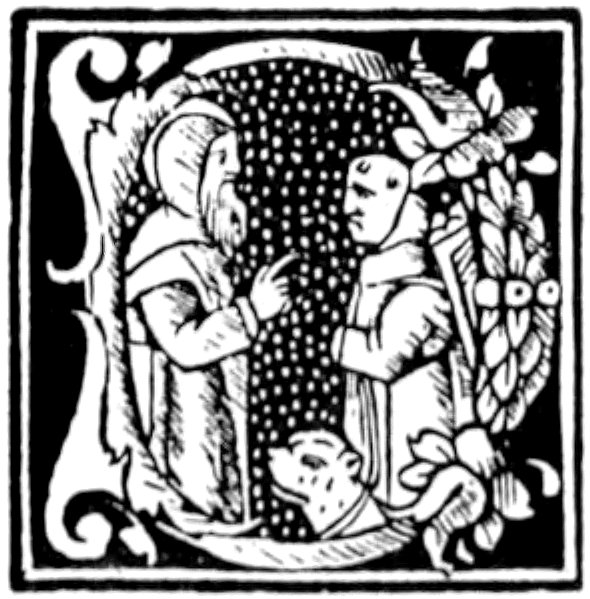
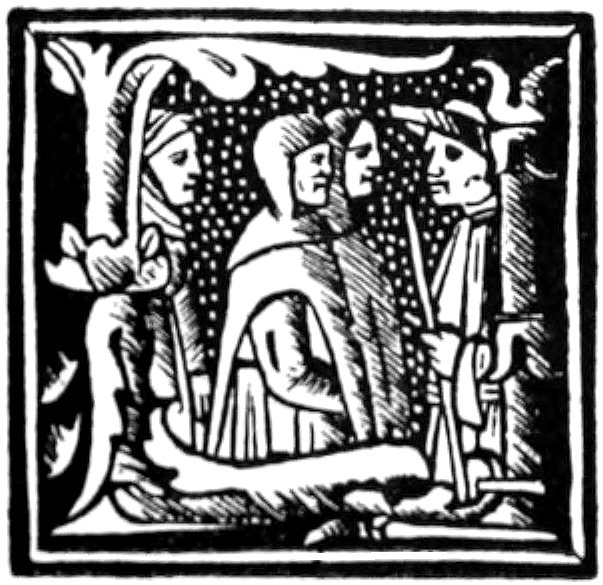
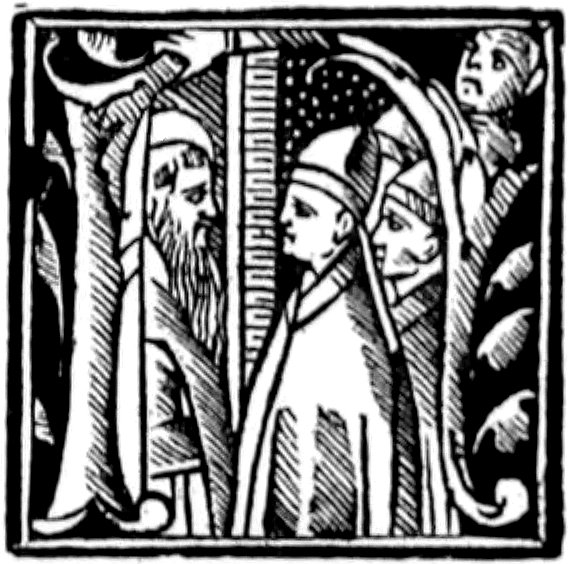
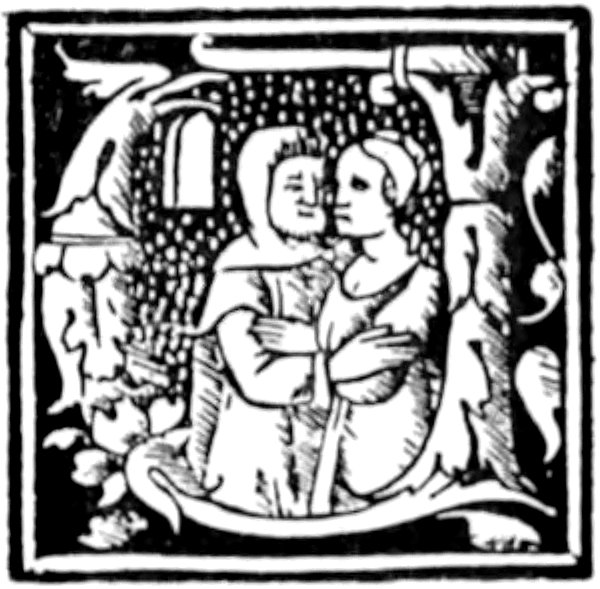


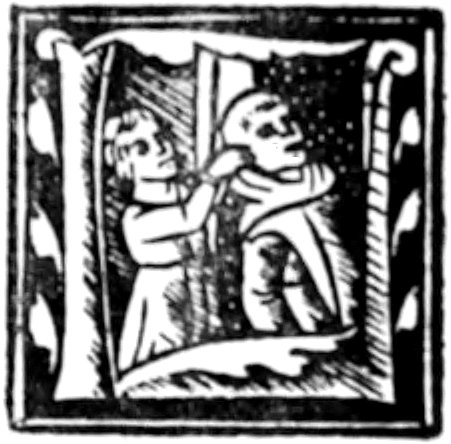
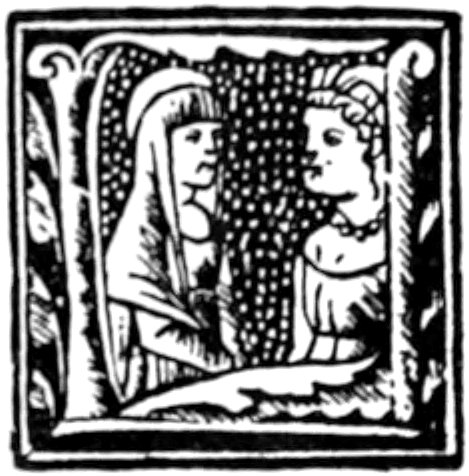

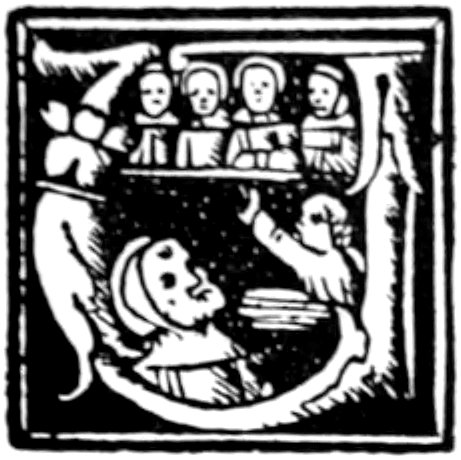
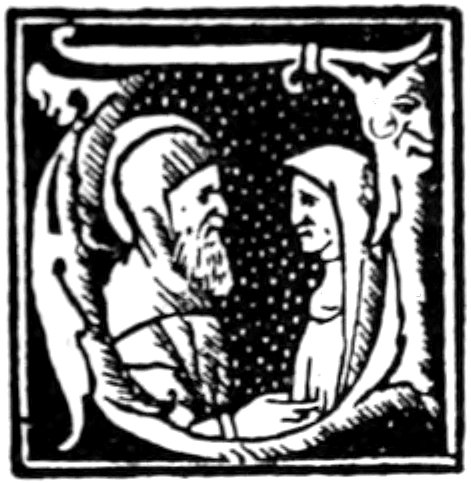
FROM THE ‘VITA DI SANCTI PADRI’ OF OTINO DA PAVIA DE LA LUNA
[180]
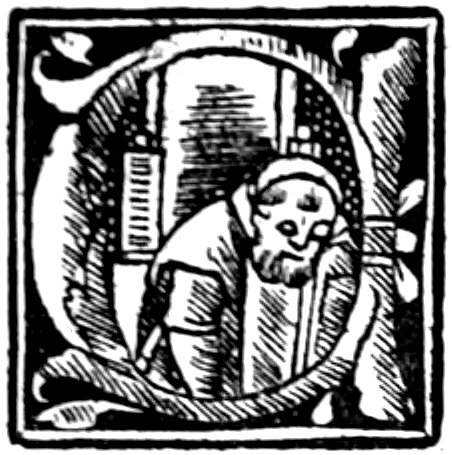
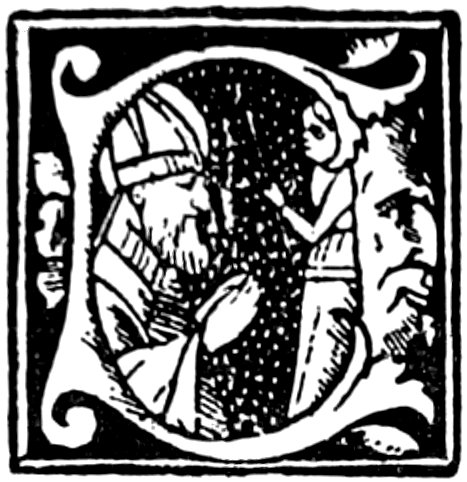

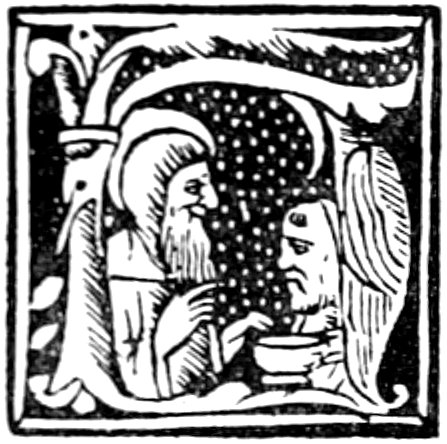
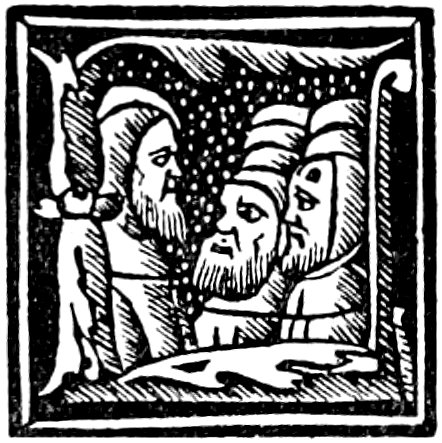
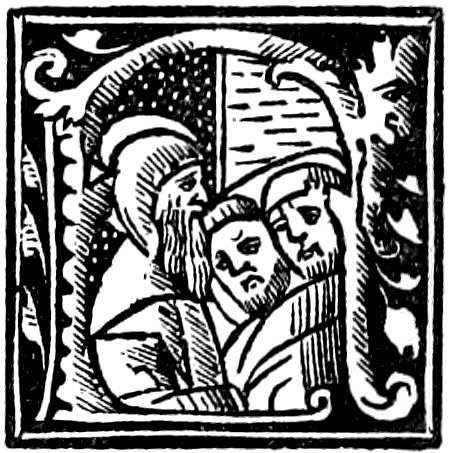
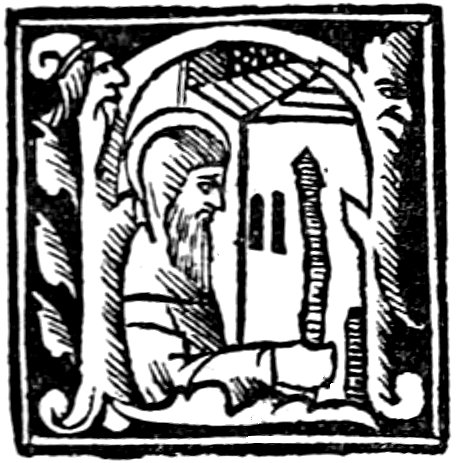
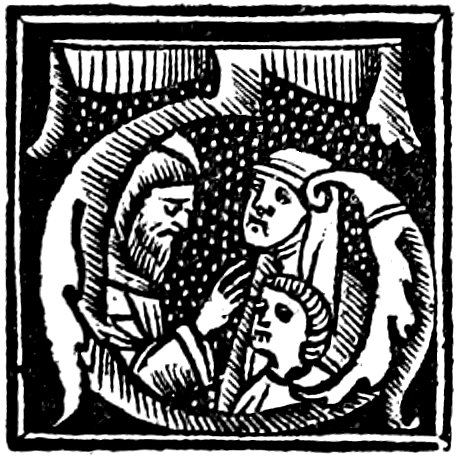
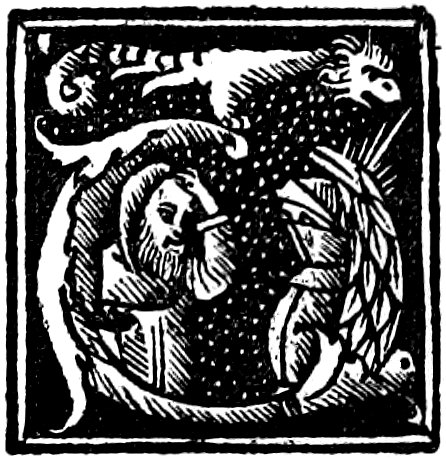
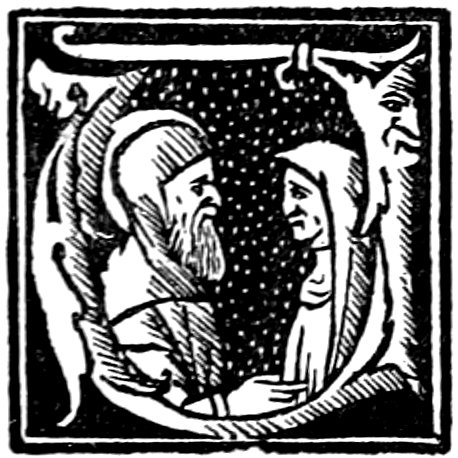
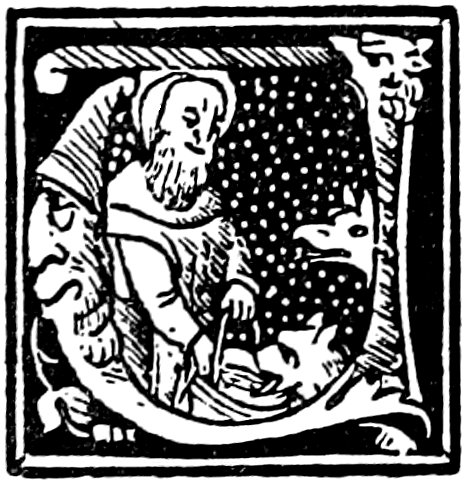
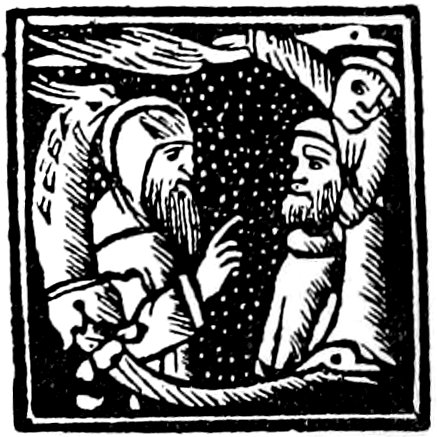
FROM THE ‘VITA DI SANCTI PADRI’ OF OTINO DA PAVIA DE LA LUNA
[181]
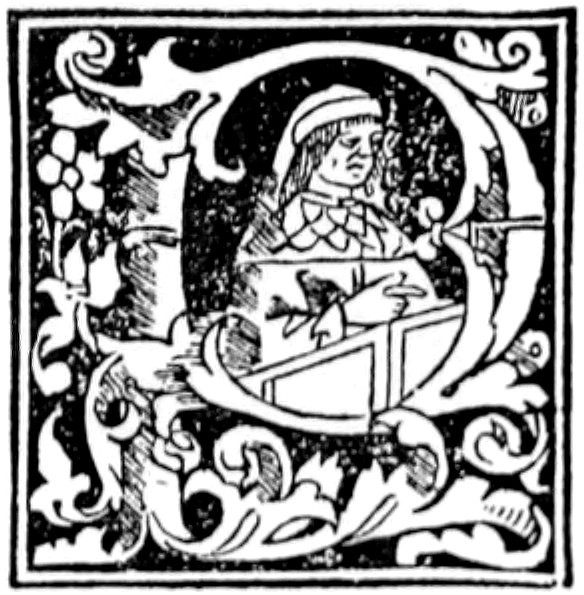
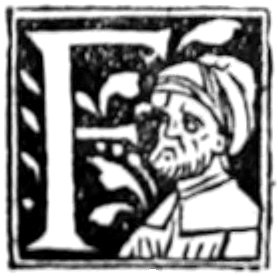

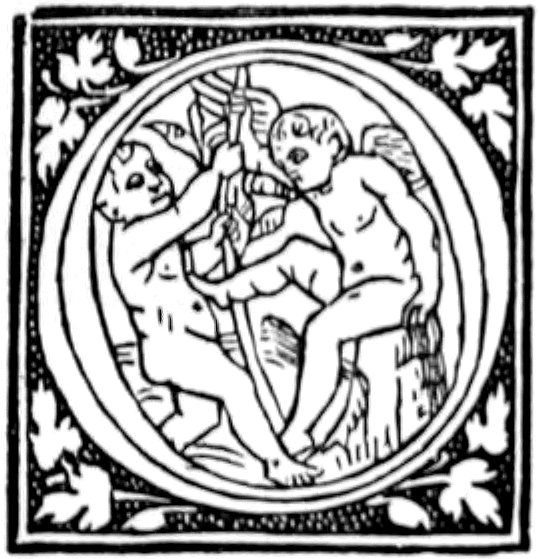
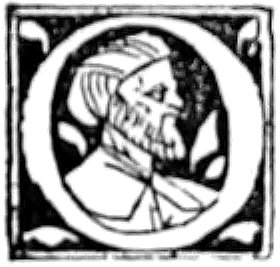
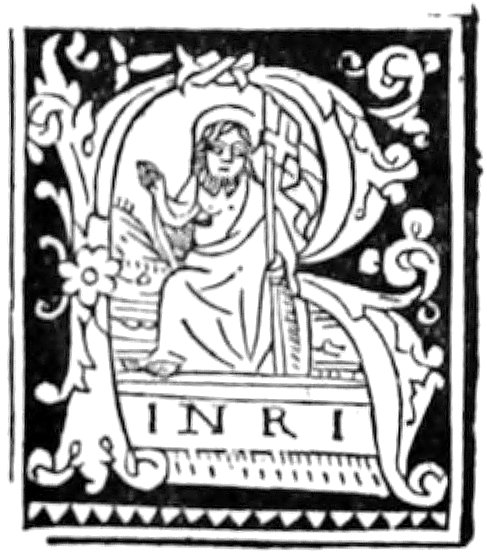

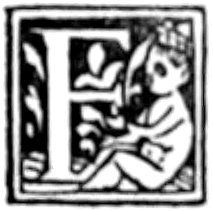
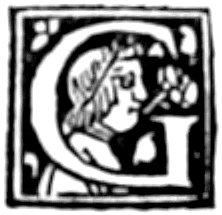
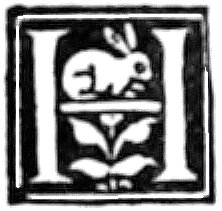
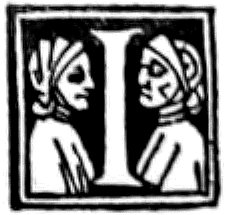
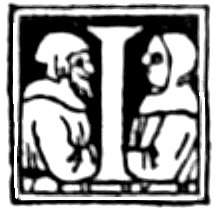
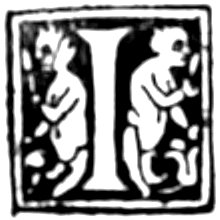
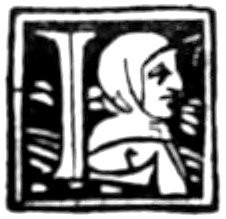
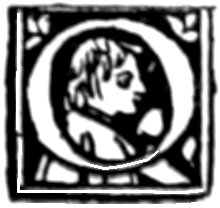
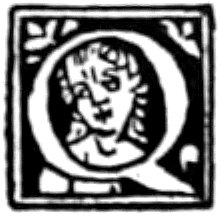
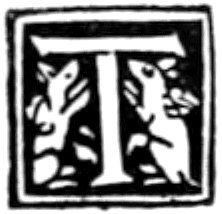
INITIALS BY SESSA
[182]
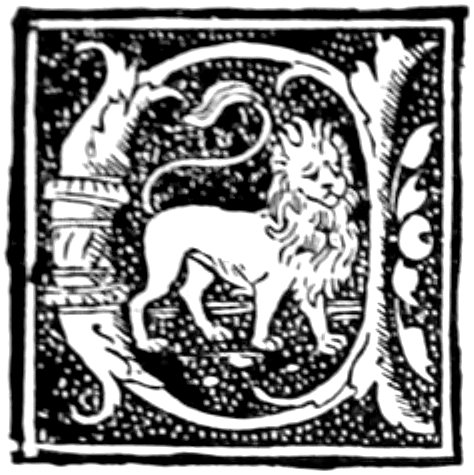
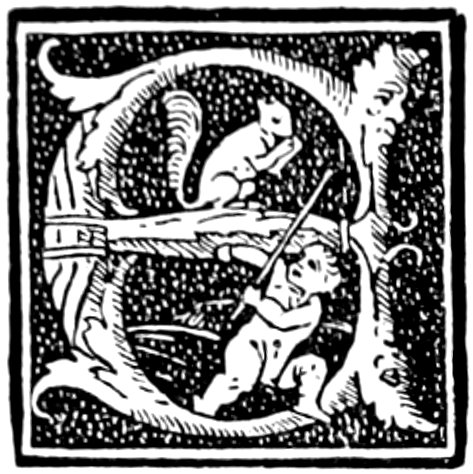
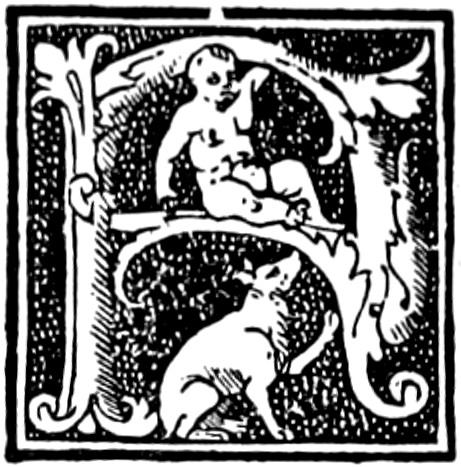
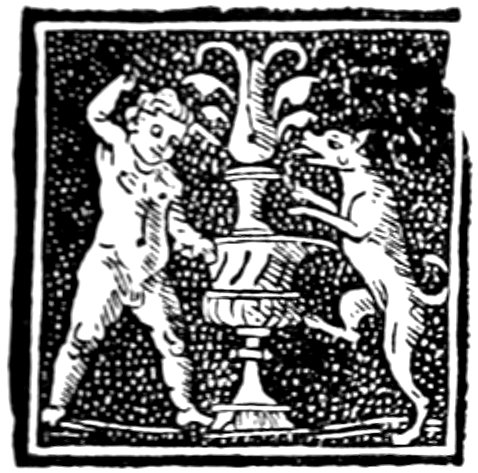
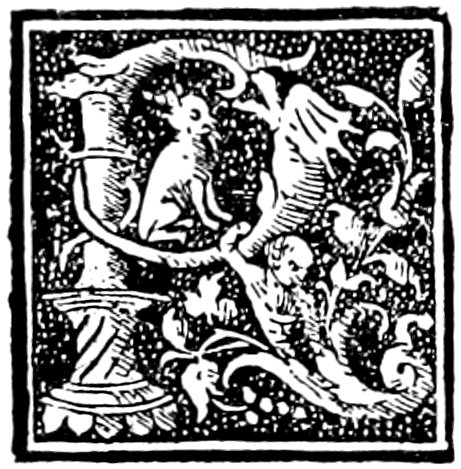
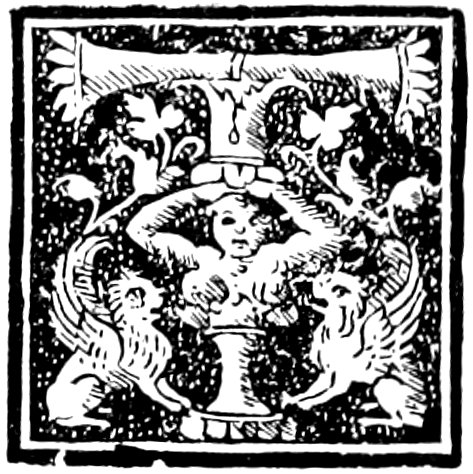
FROM THE ‘BREVIARIUM ORBIS’ OF ZACHARIUS LILIUS

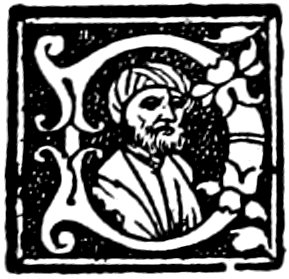
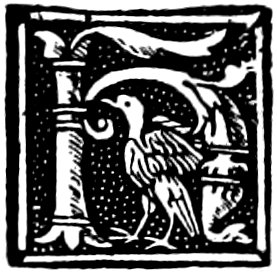
FROM A VENETIAN IMPRESSION
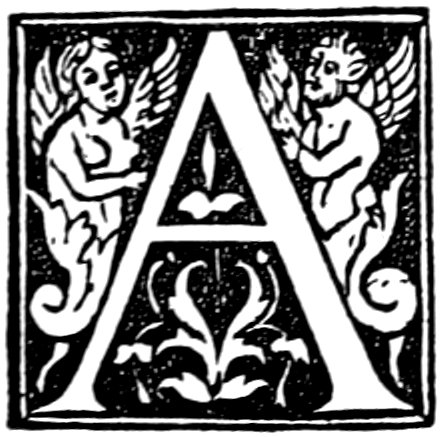
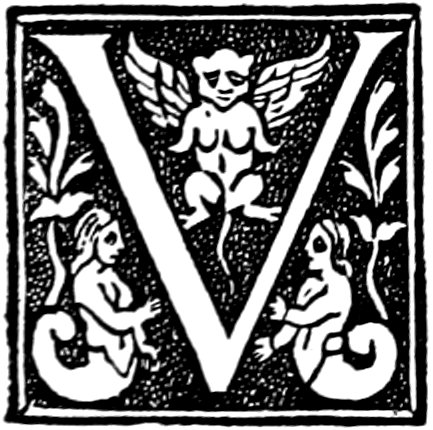
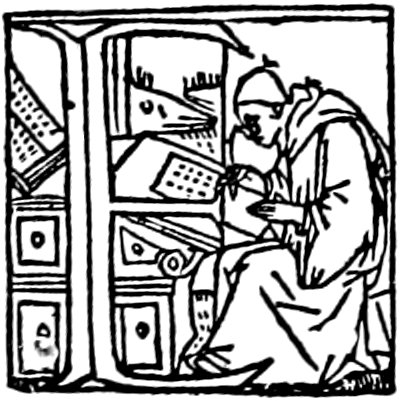
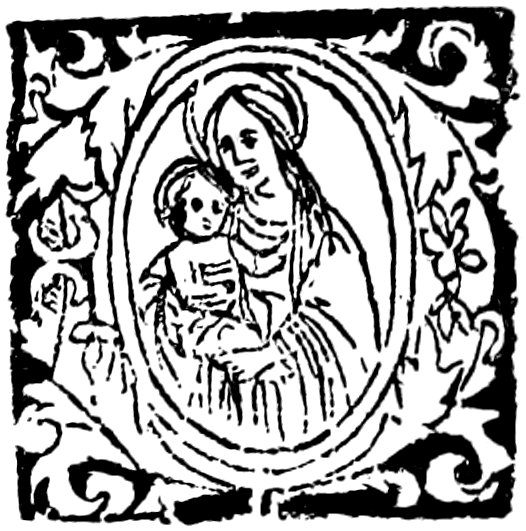
FROM WORKS BY VARIOUS PRINTERS
[183]
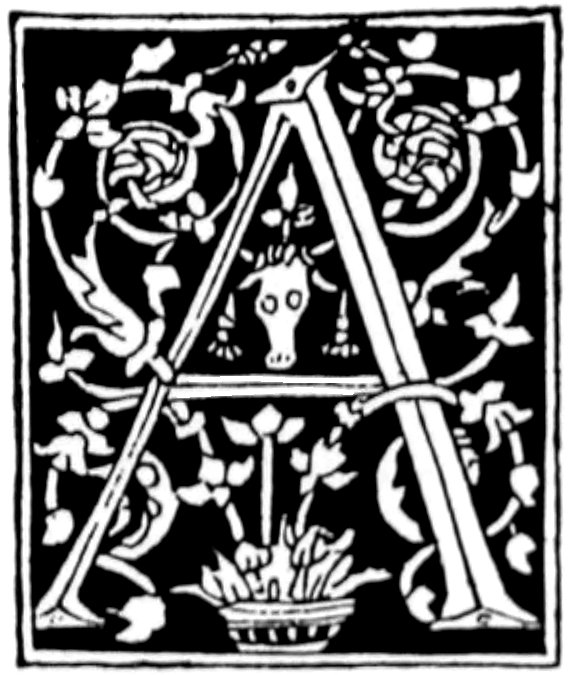
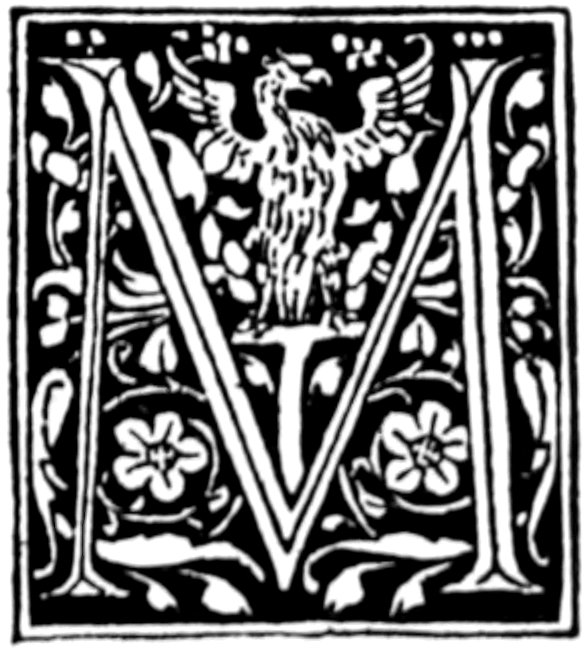
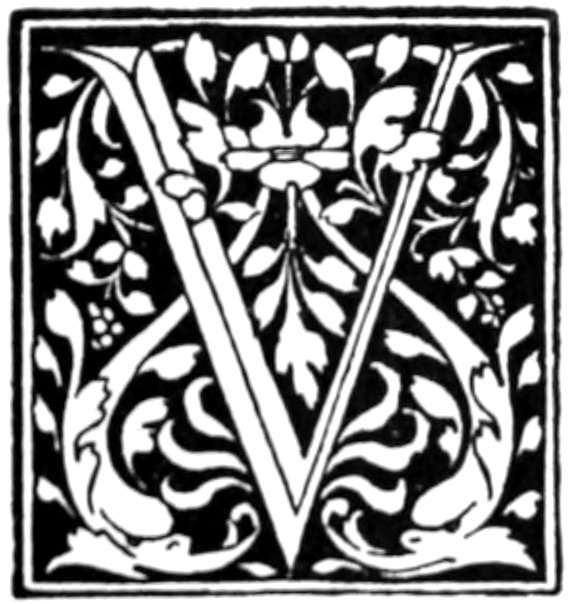
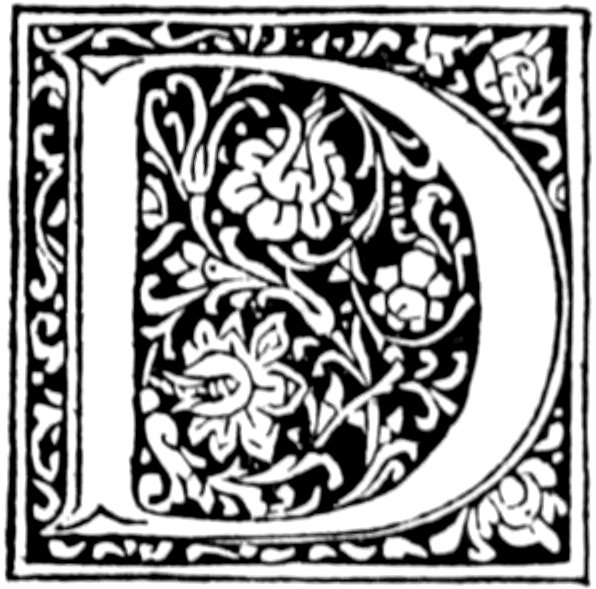
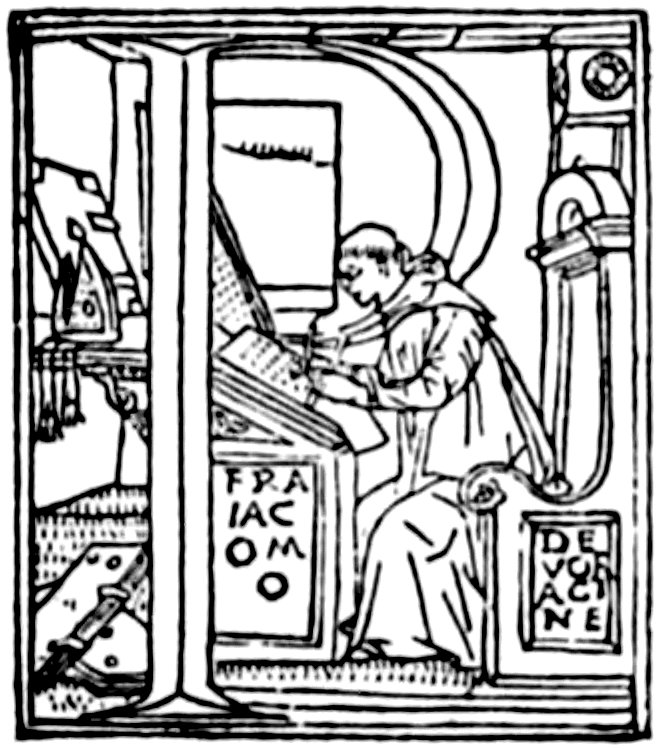
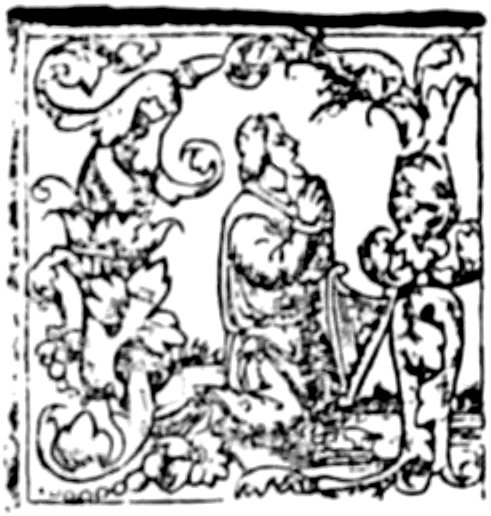
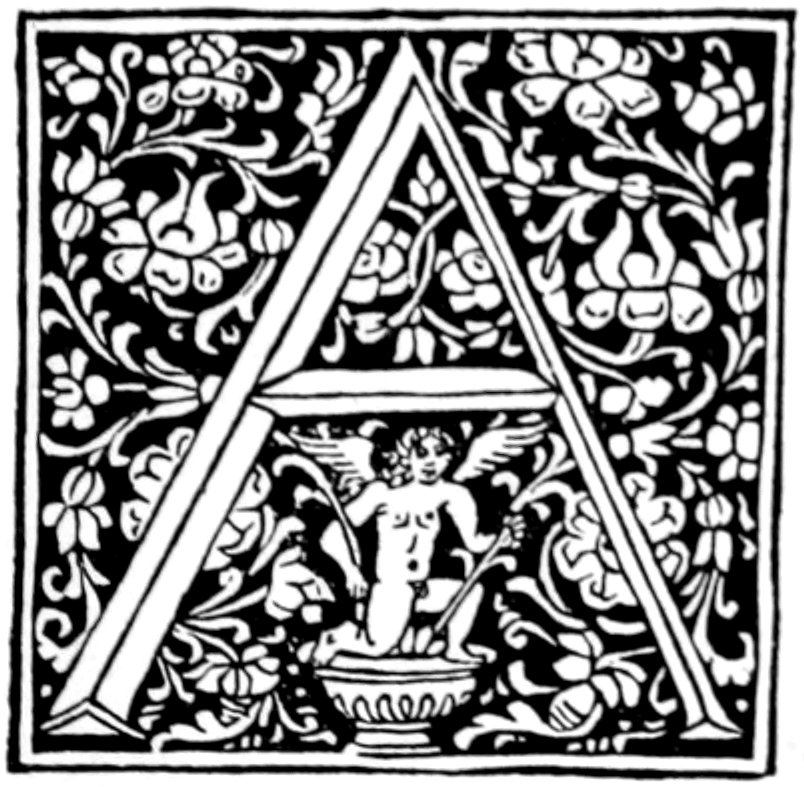
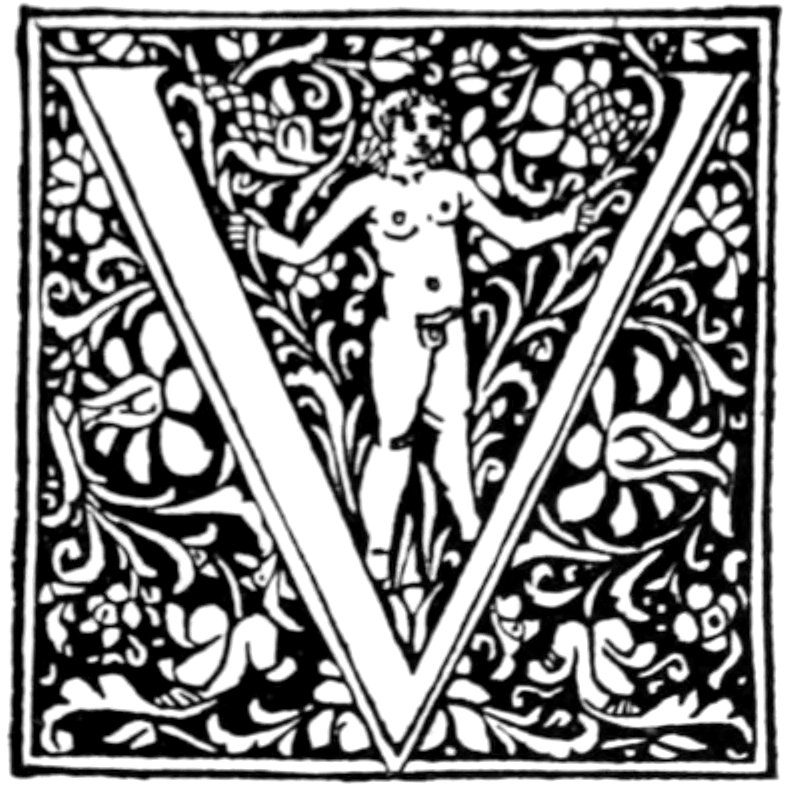
INITIALS BY DE GREGORIIS
[184]
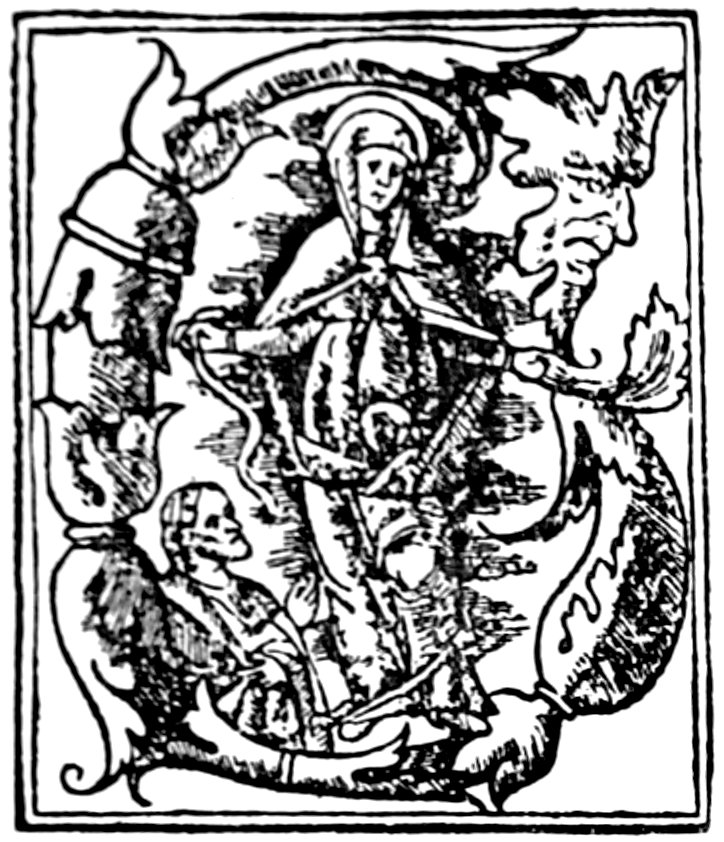
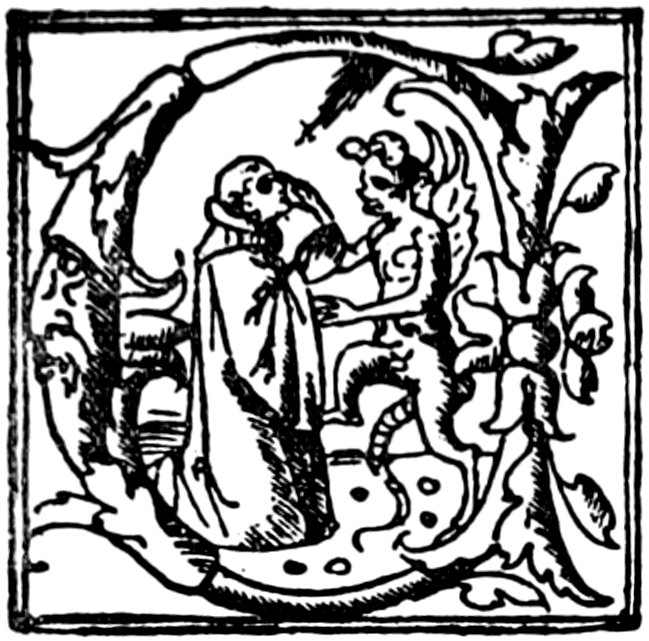
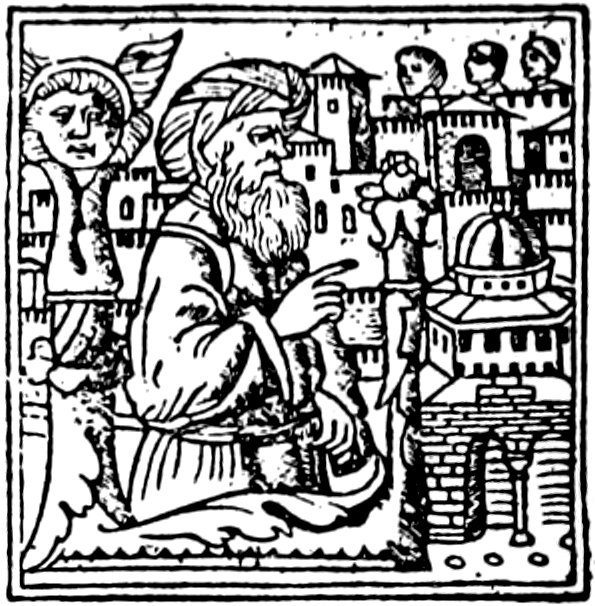
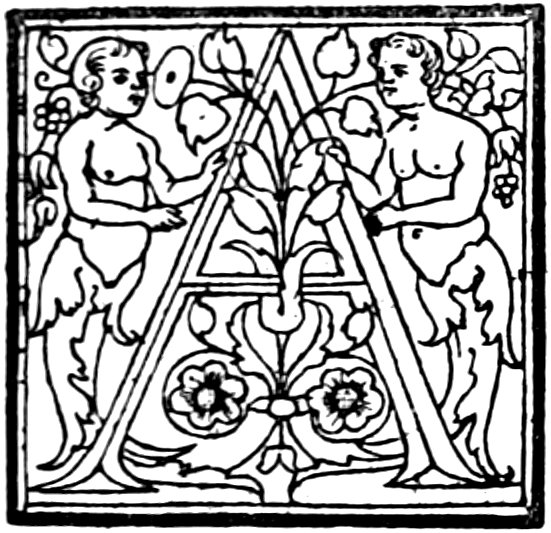
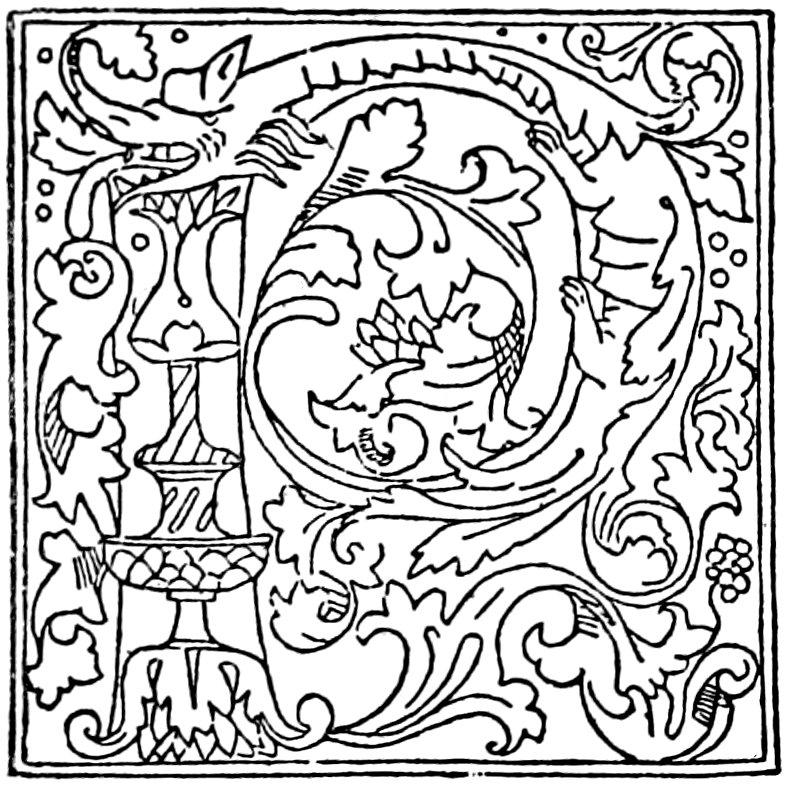
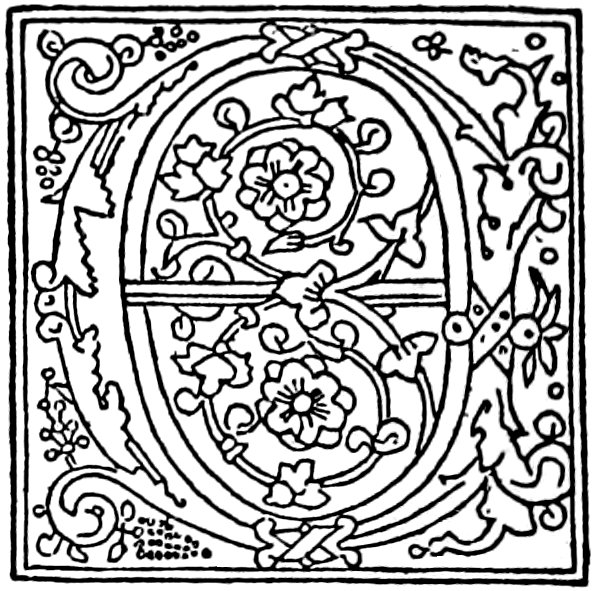
INITIALS BY DE GREGORIIS
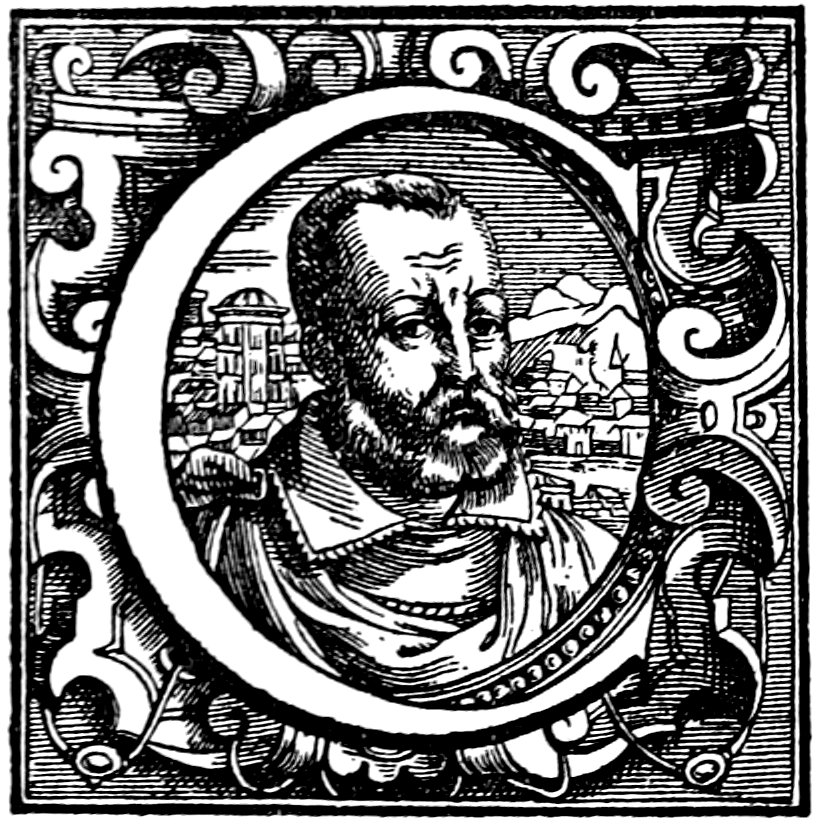
PORTRAIT OF COSMO DE MEDICI
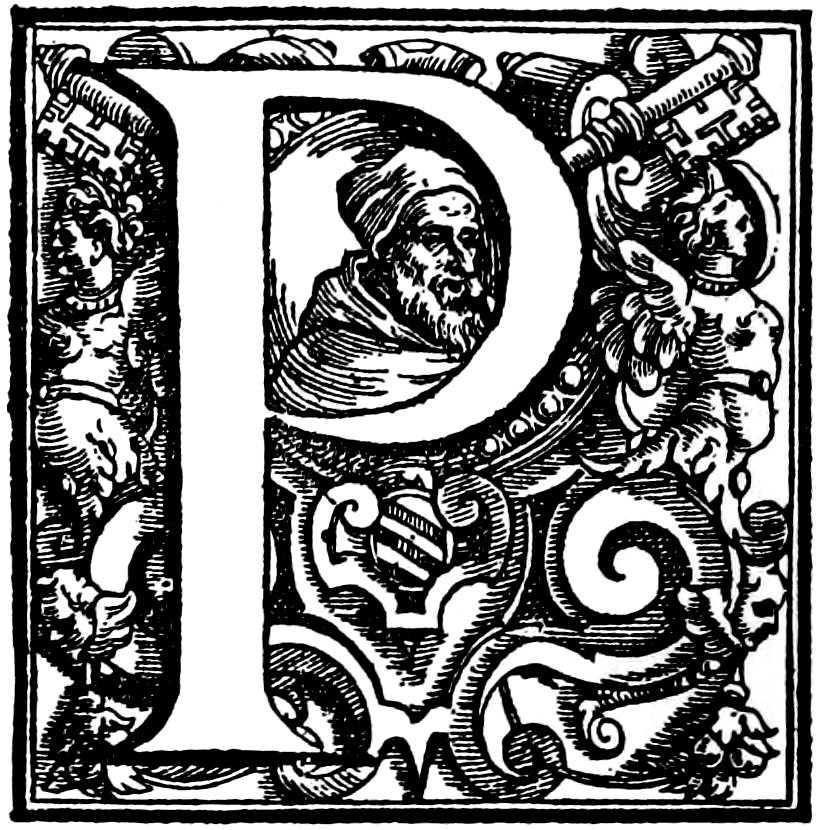
PIUS ROMAE PONTIFEX
[185]
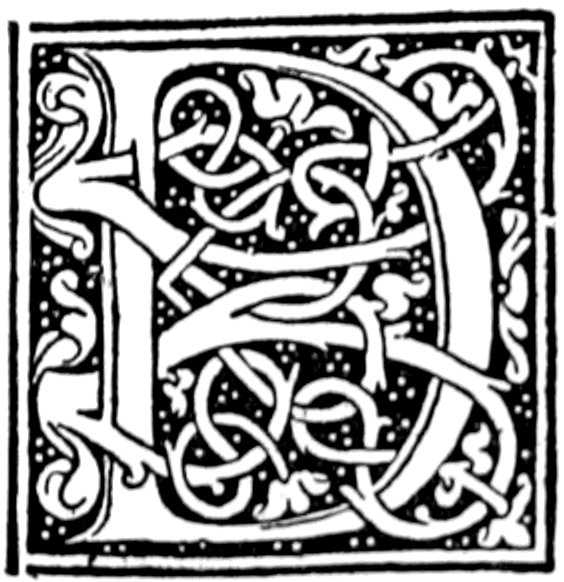
FROM THE ‘VITÆ CÆSARUM’ OF SUETONIUS BY SWEYNHEIM AND PANNARTZ, 1471

E. SILBER, 1507

JACOBUS MAZOCHIUS, 1515
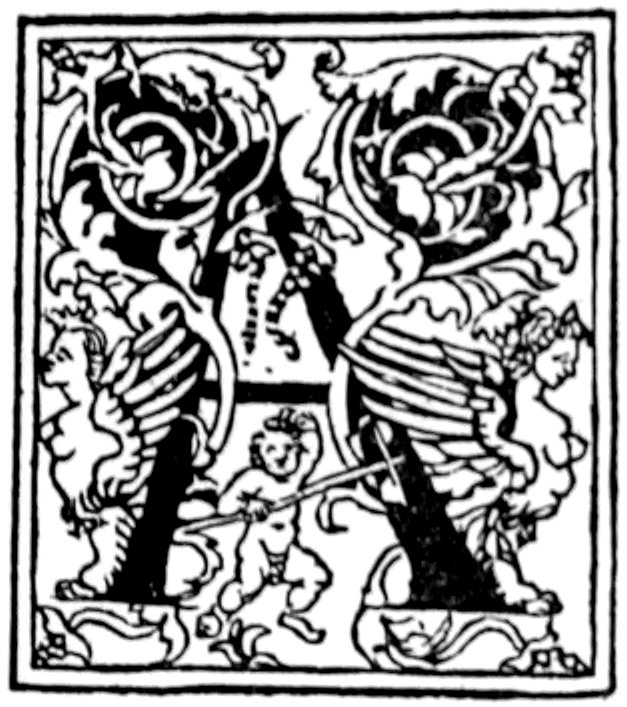
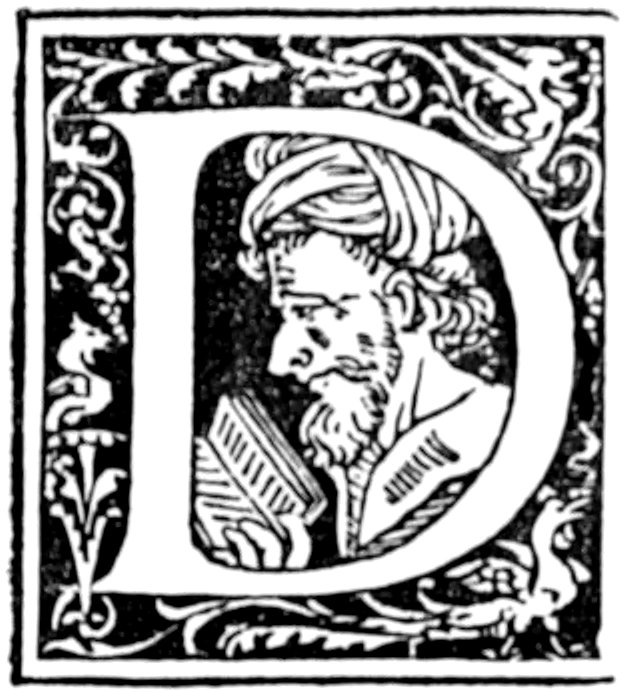
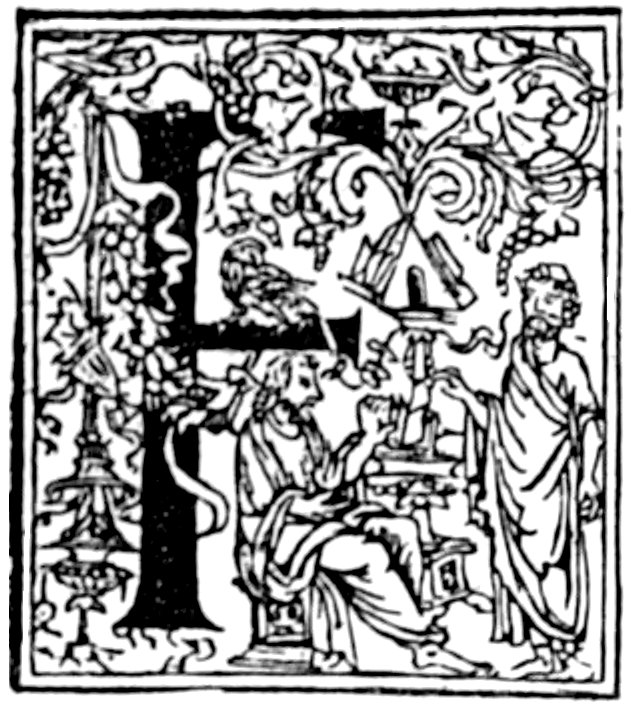
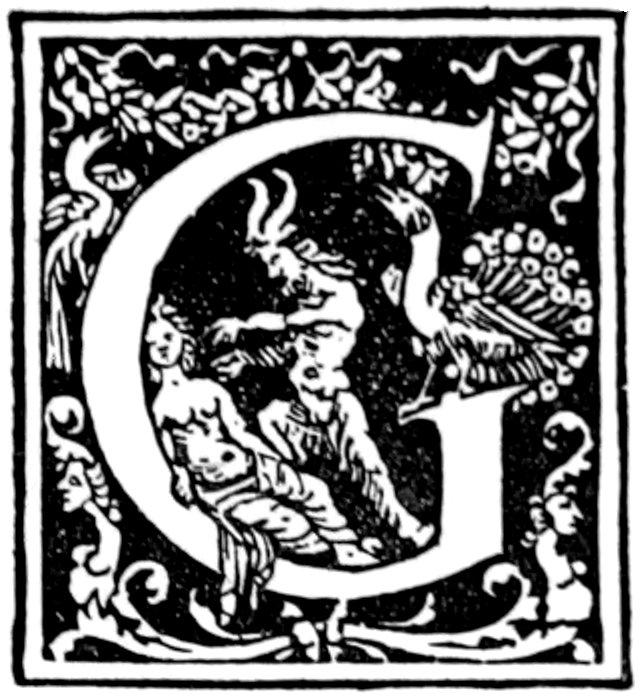
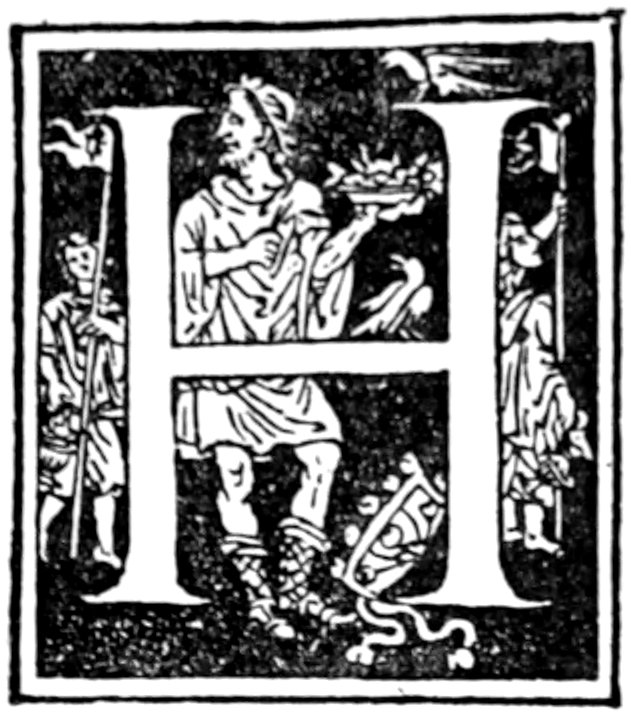
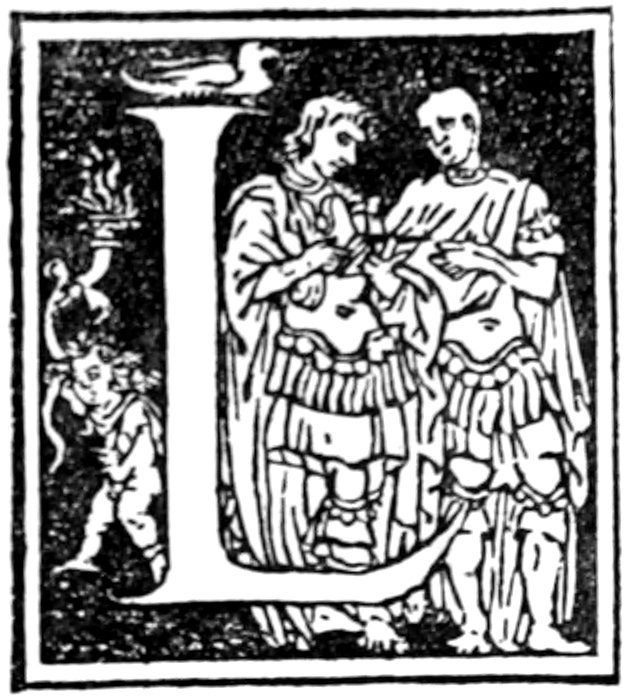
FROM THE ‘OPERA DATHI’ OF NARDI, 1503
[186]
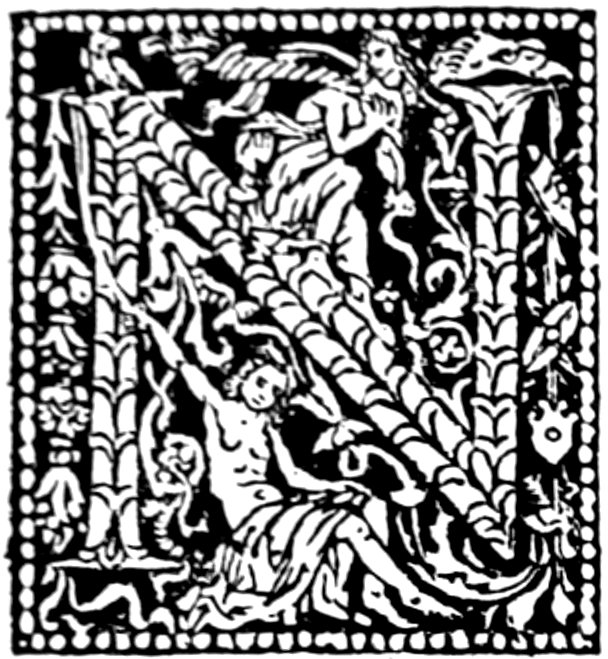
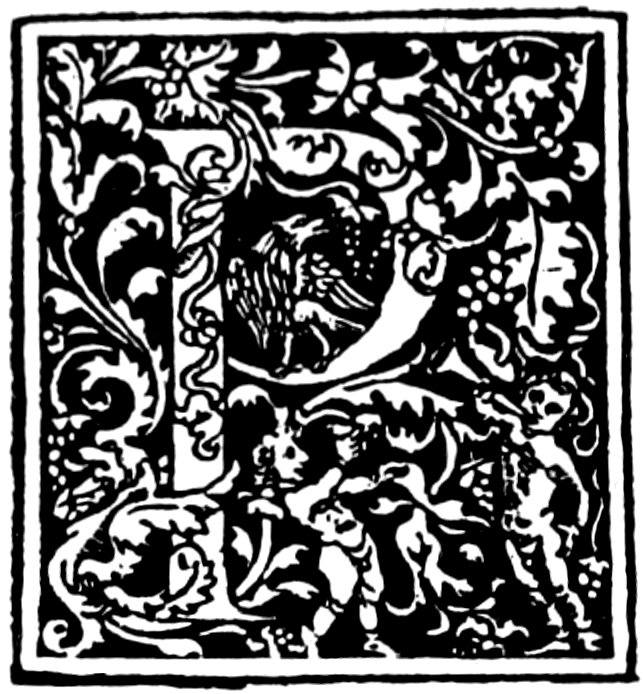
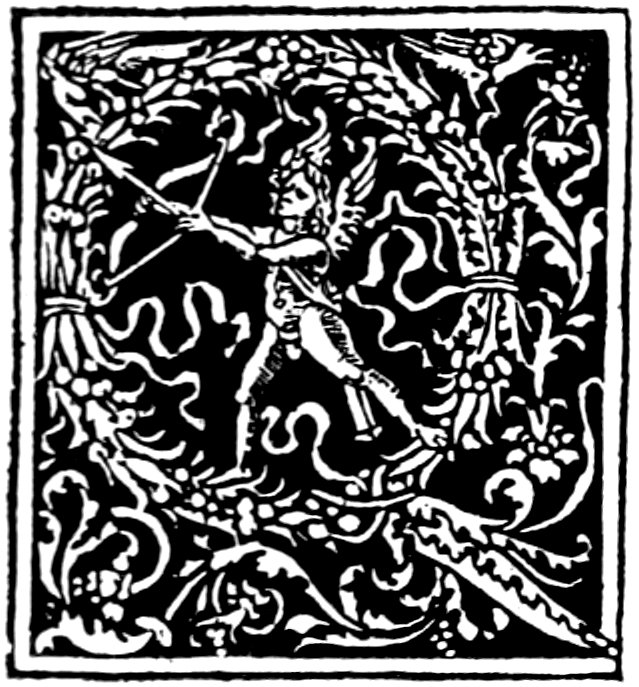
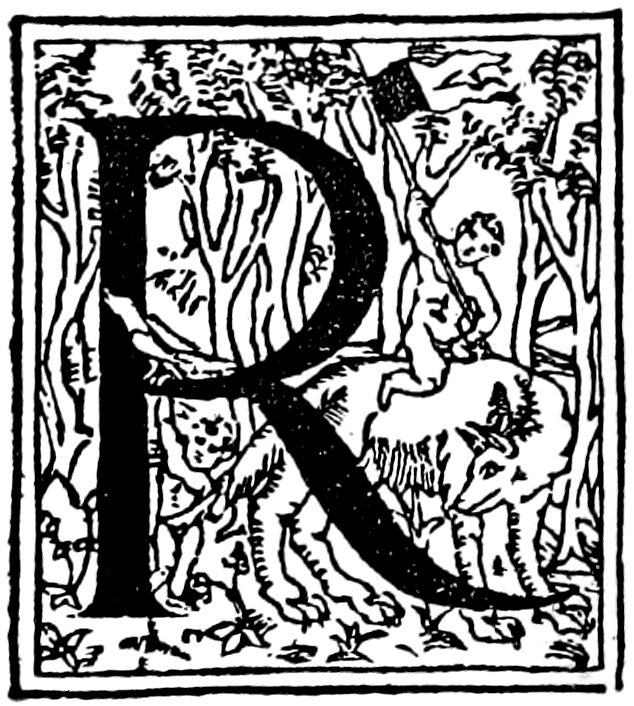
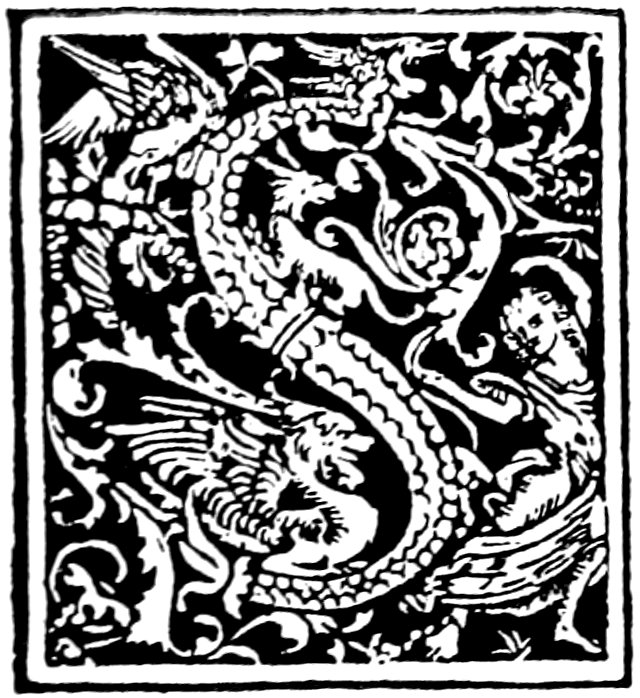
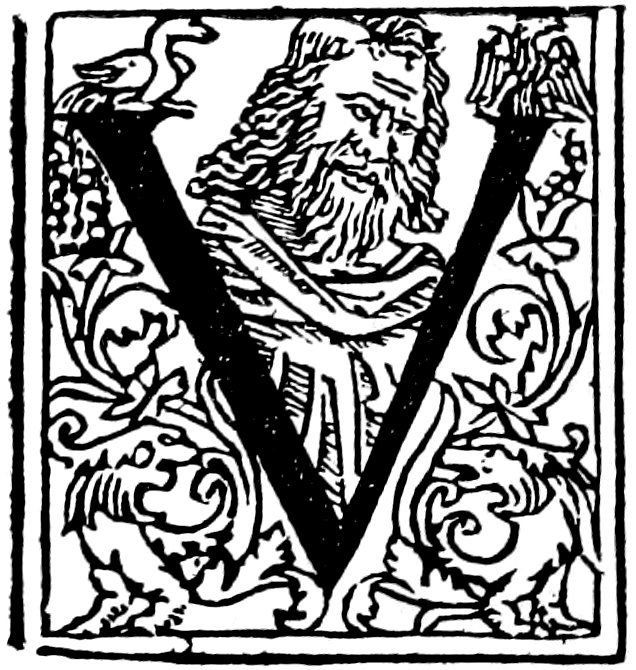
FROM THE ‘OPERA DATHI’ OF NARDI, 1503
[187]
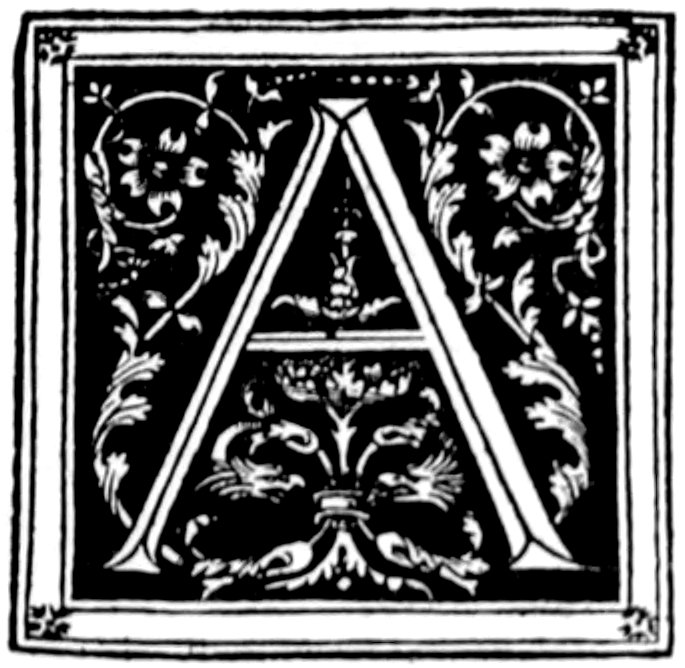
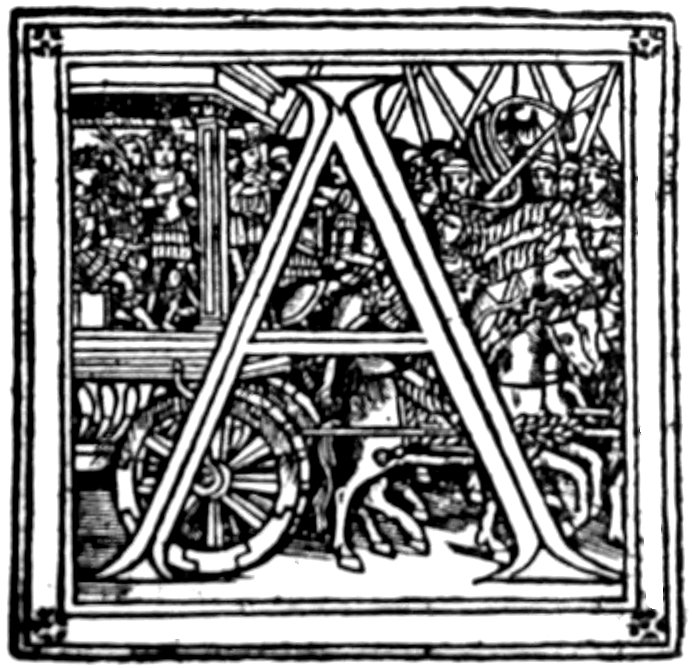
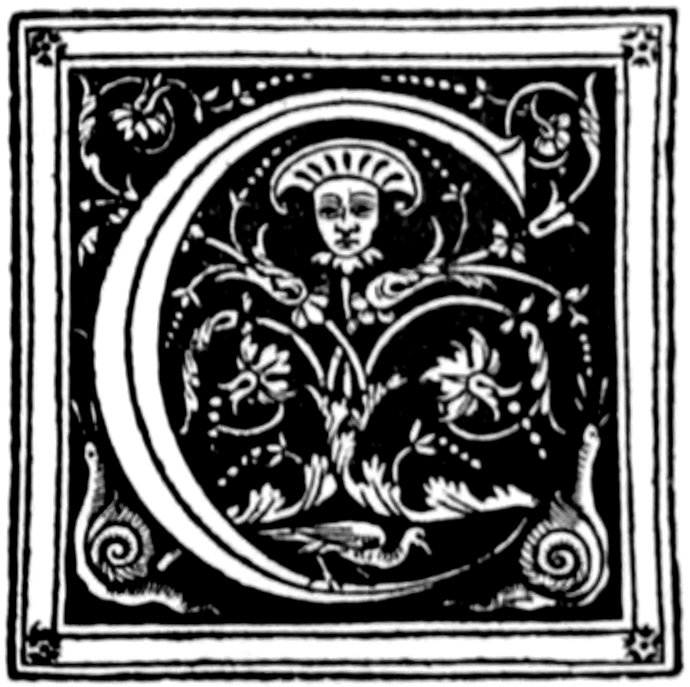
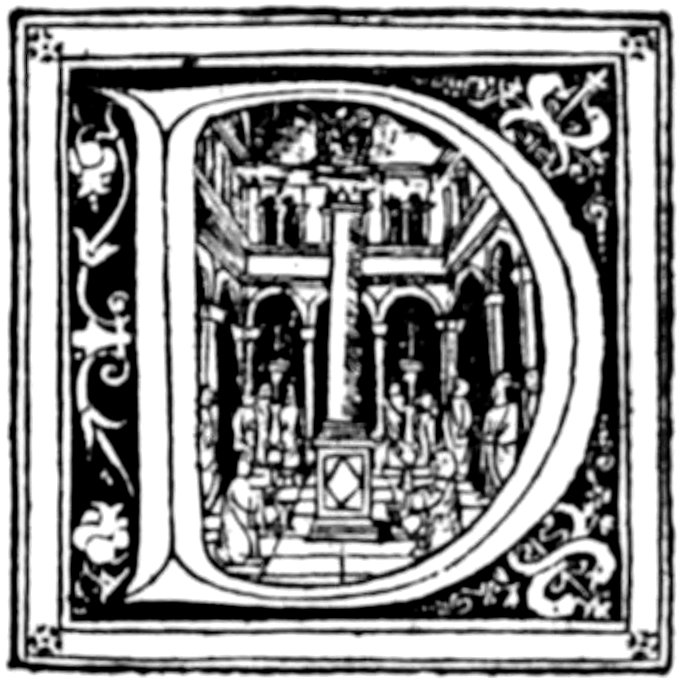
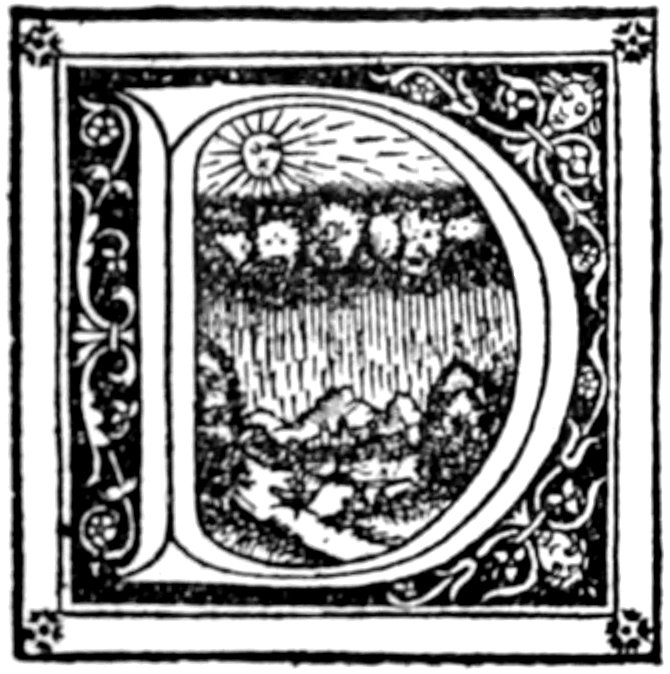

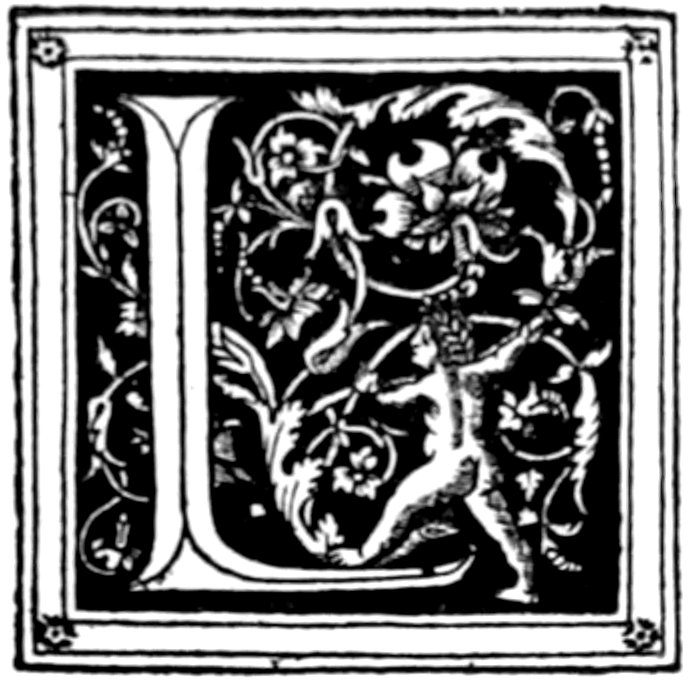
FROM THE VITRUVIUS OF GOTARDUS DE PONTE
[188]

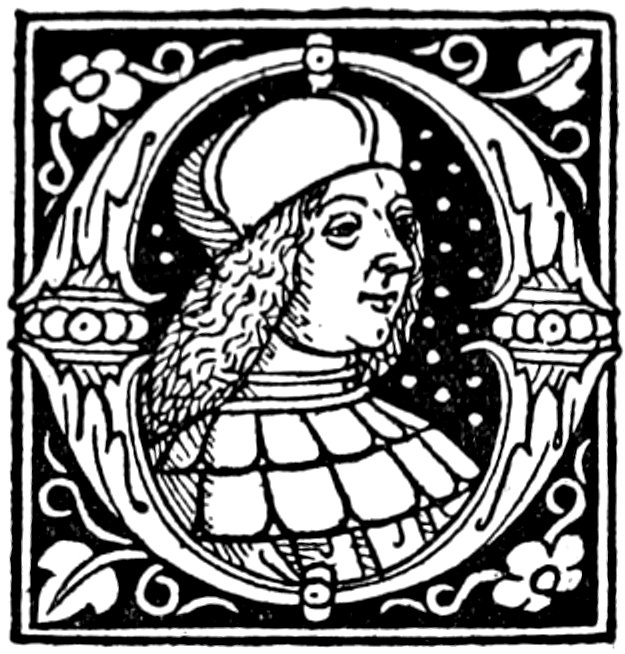
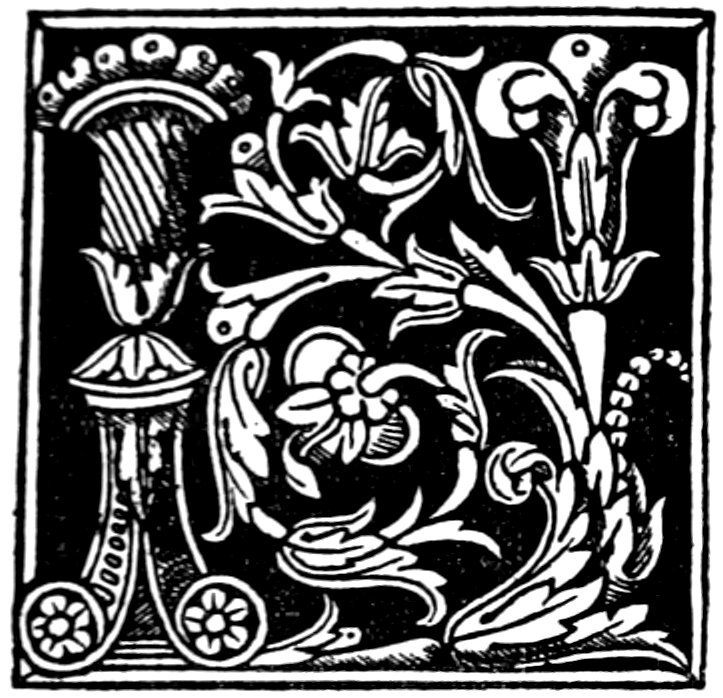
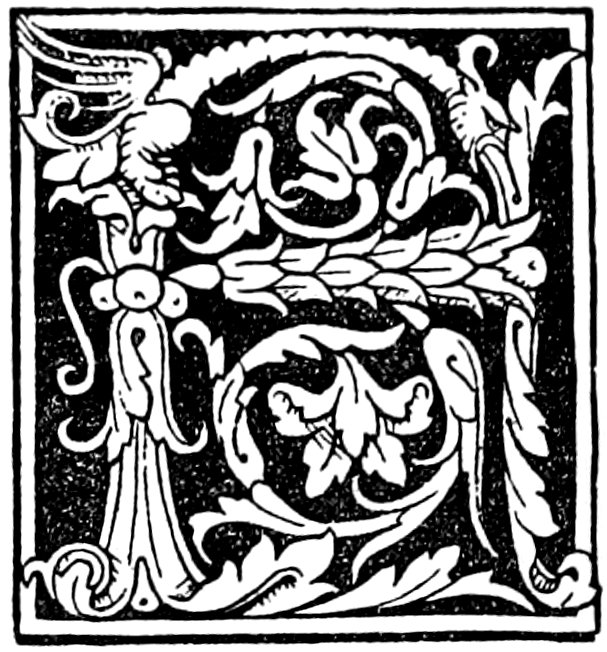

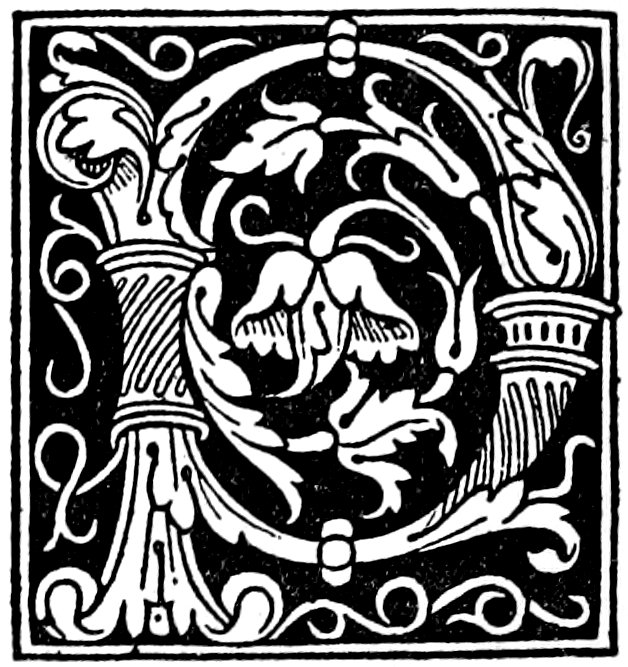
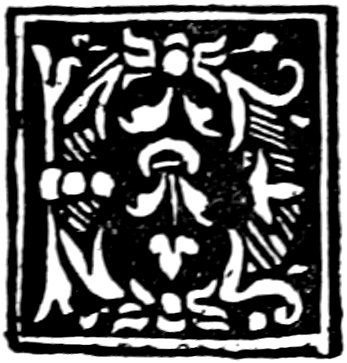
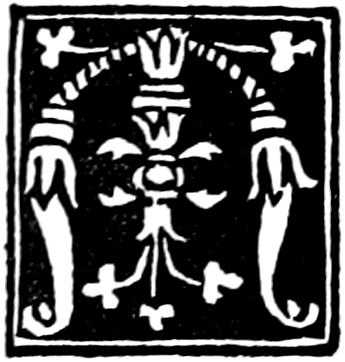
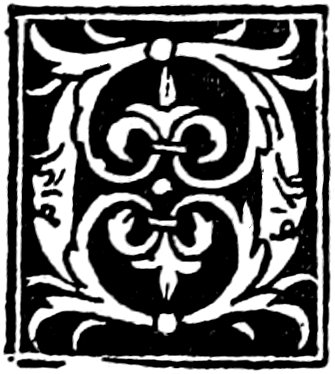
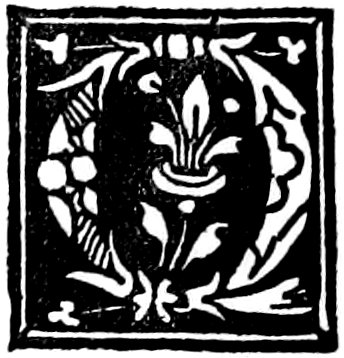
INITIALS OF J. DE BURGOFRANCO
[189]
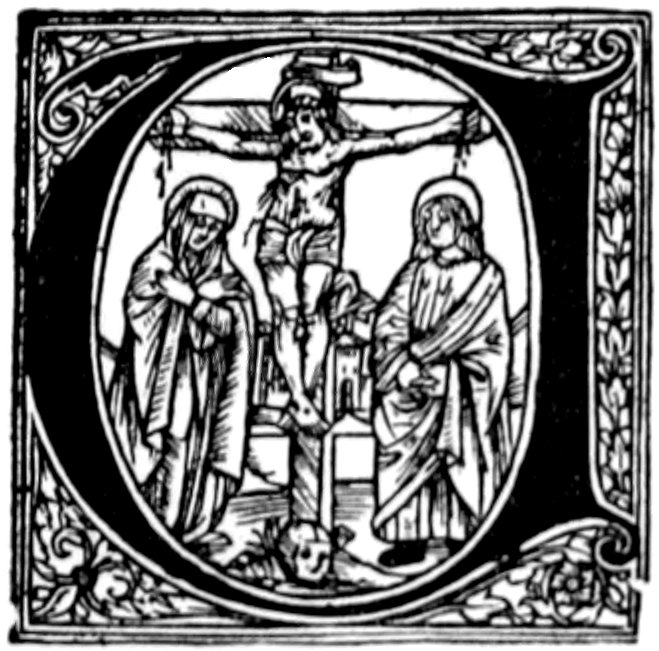
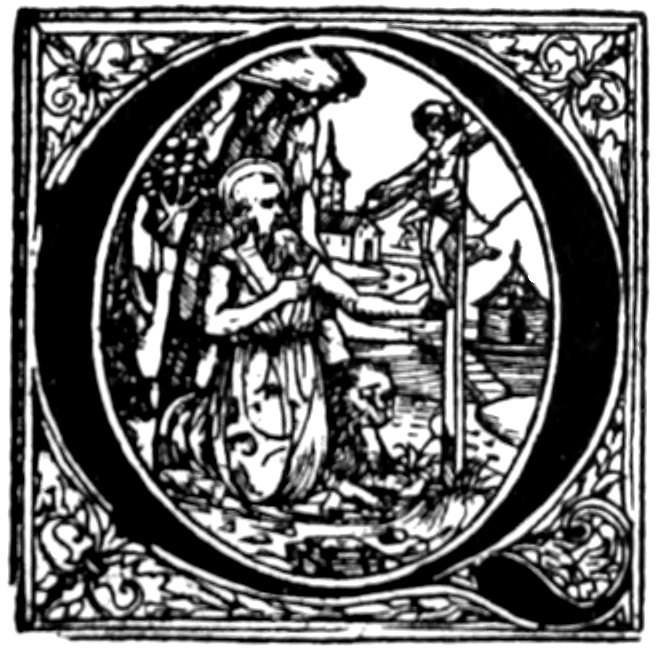
FROM THE ‘AUREUM OPUS’ OF LE SIGNERRE
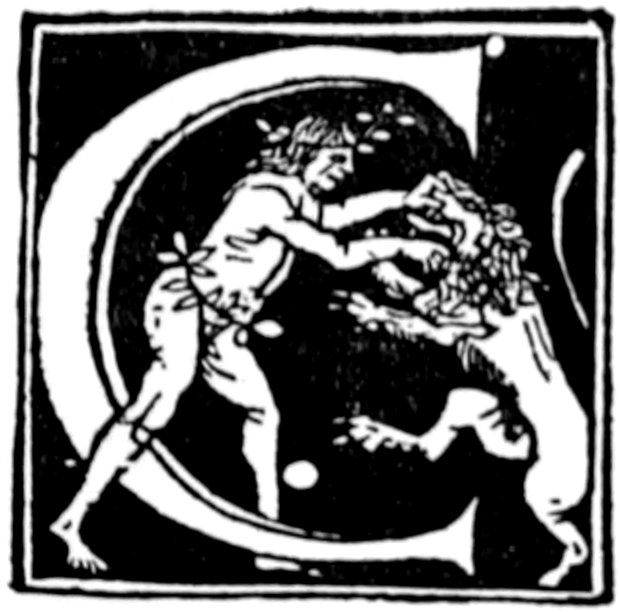
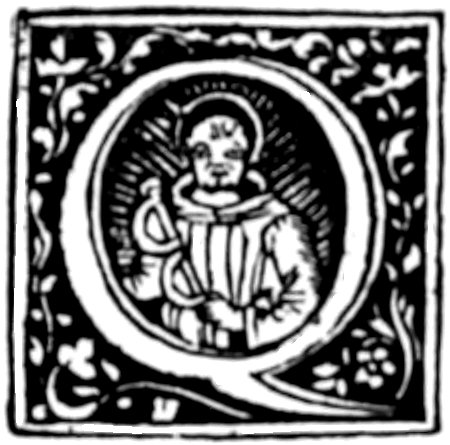
FROM A WORK BY CELSUS MAPHEUS

FROM A CATALOGUS SANCTORUM
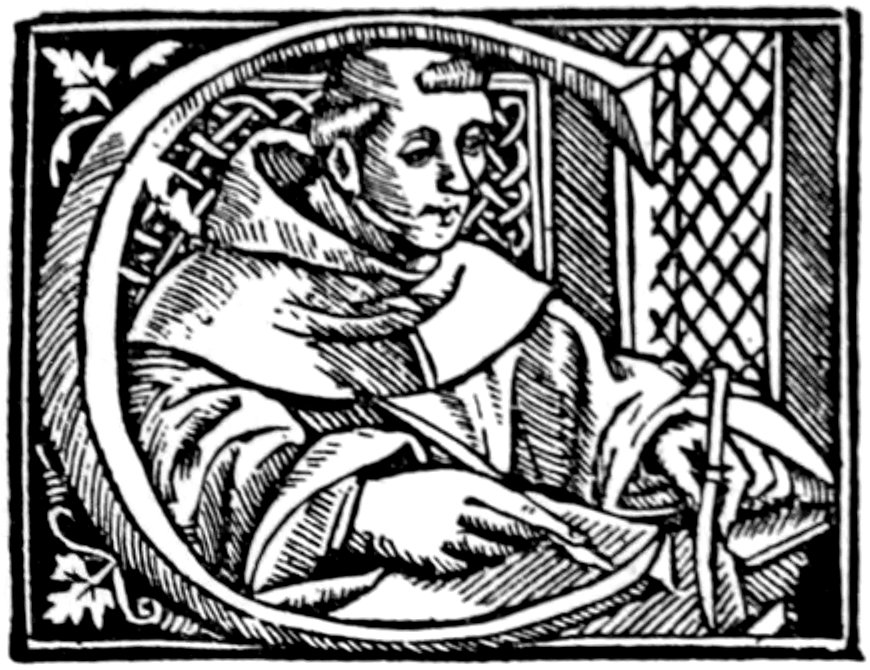
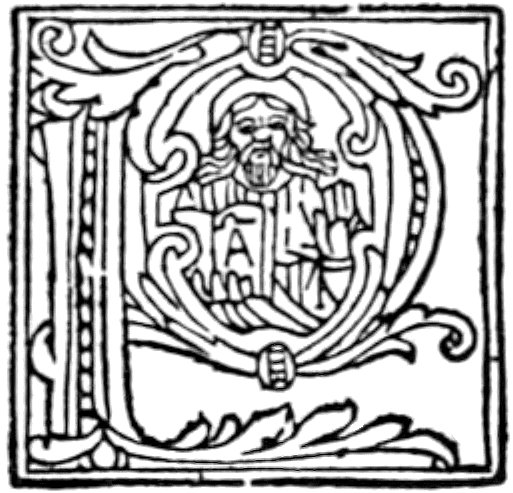
FROM THE ‘INVECTIVAE’ OF T. N. CYCHUTHOE
[190]
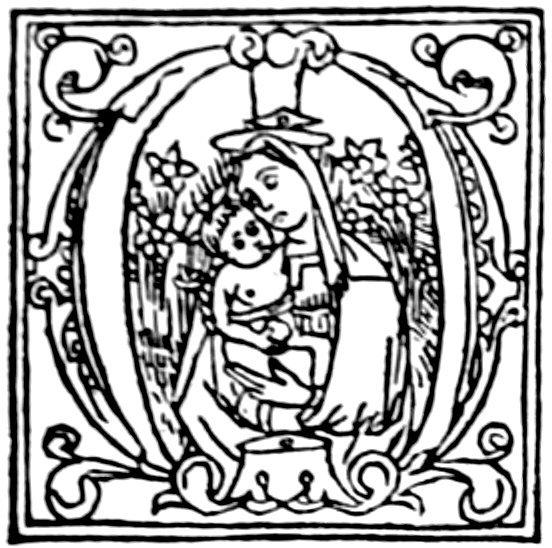
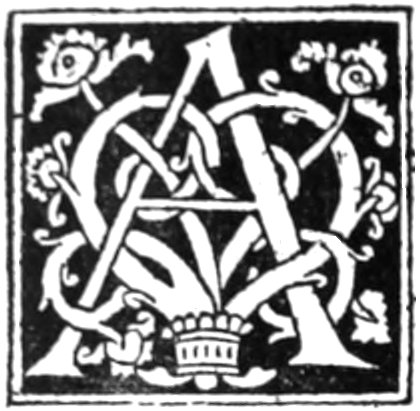
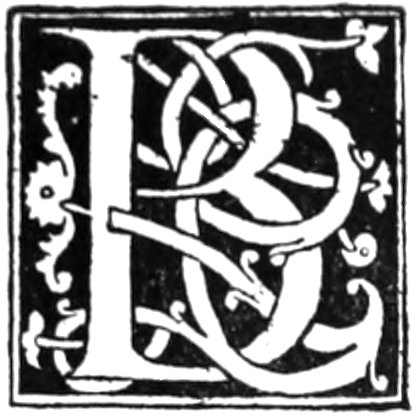
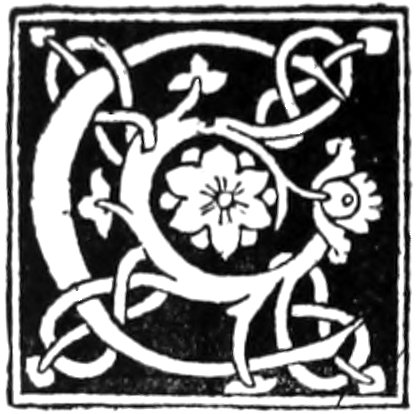
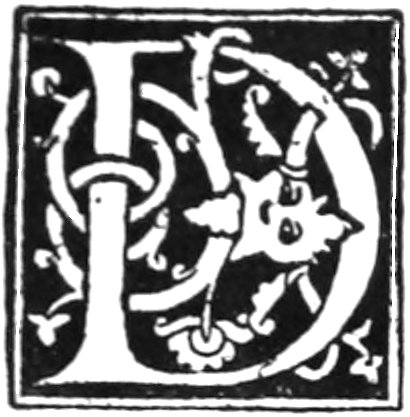
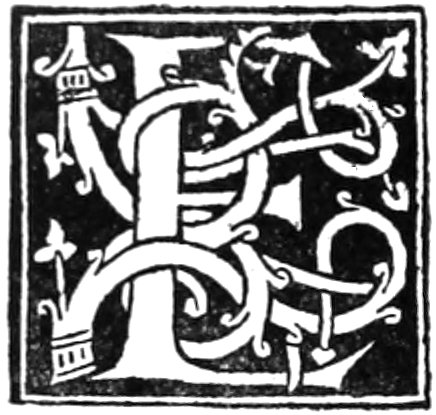
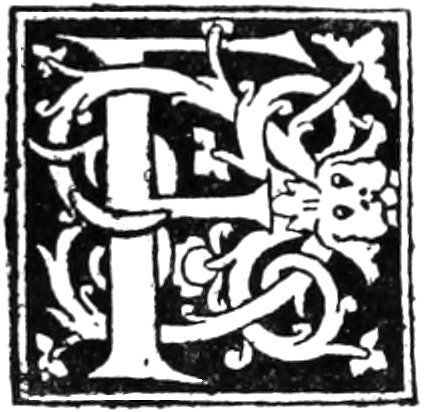
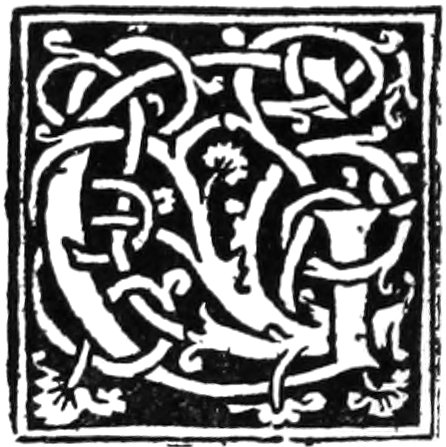
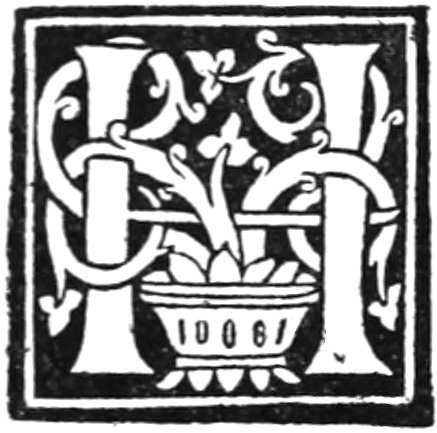
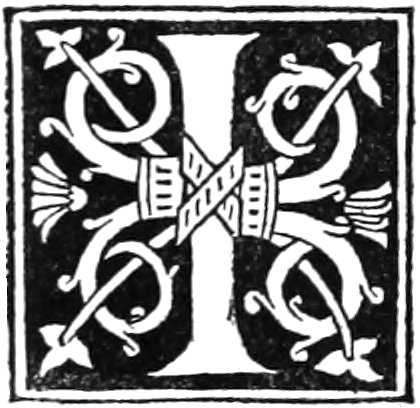
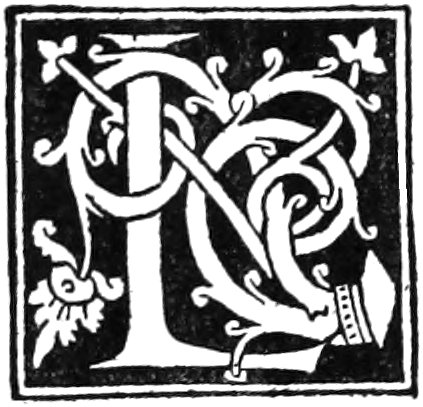
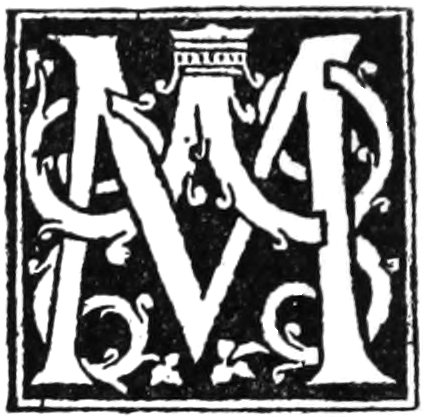
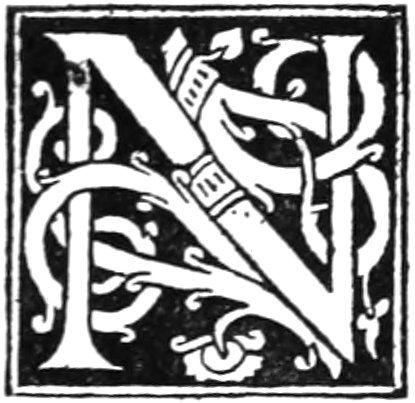
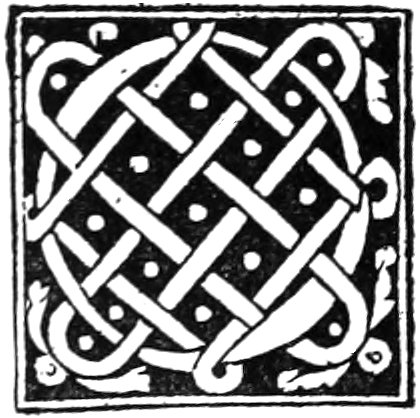
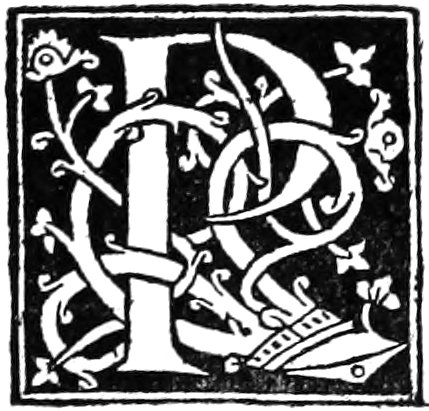
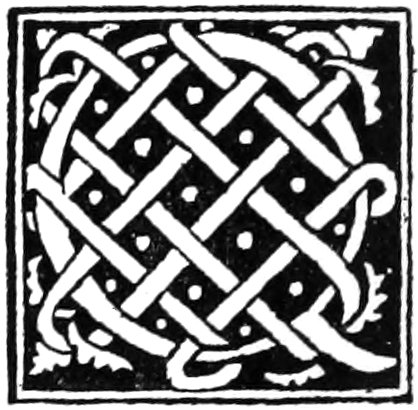
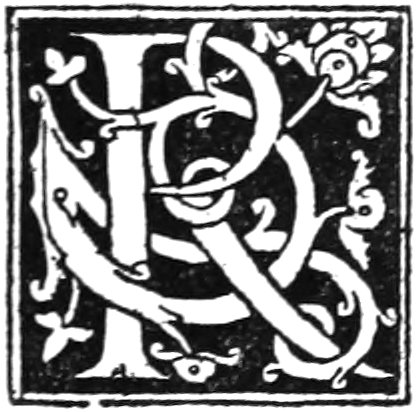
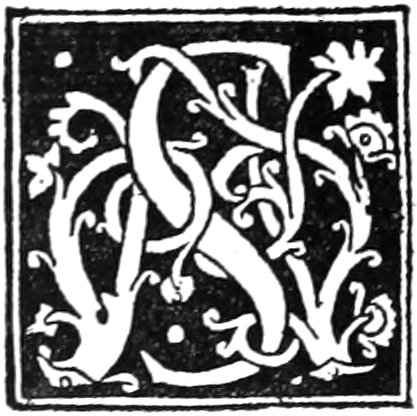
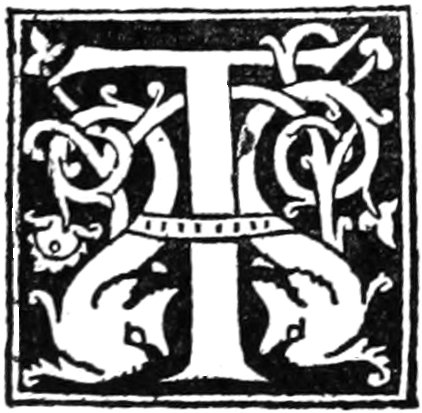
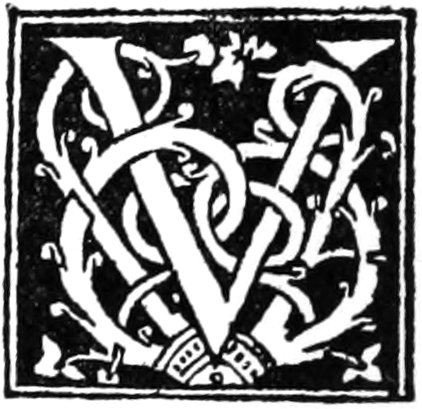
FROM THE ‘DE CLARIS MULIERIBUS’
[191]
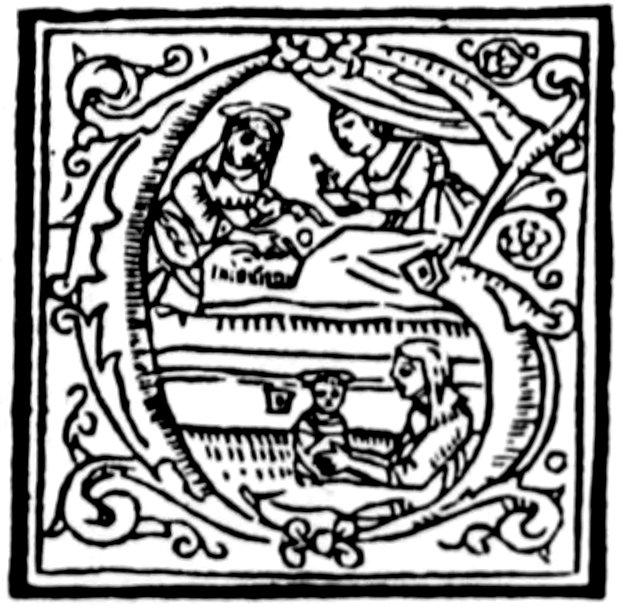
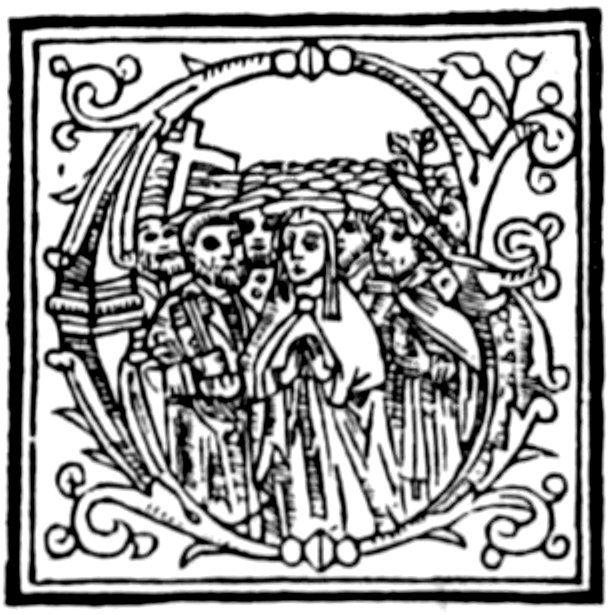
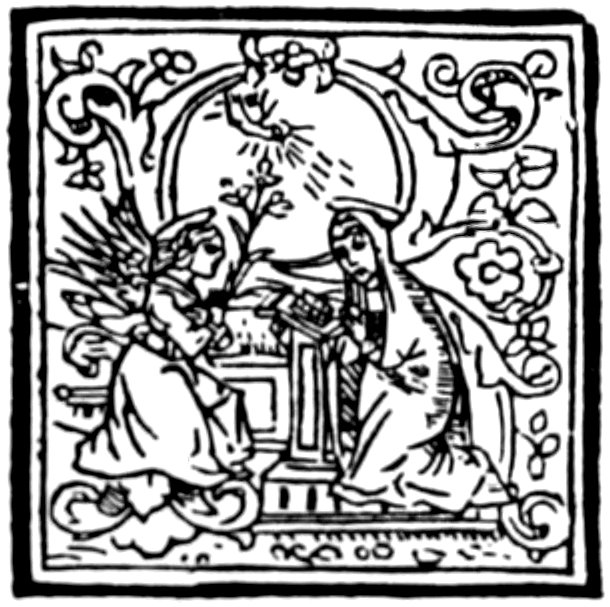
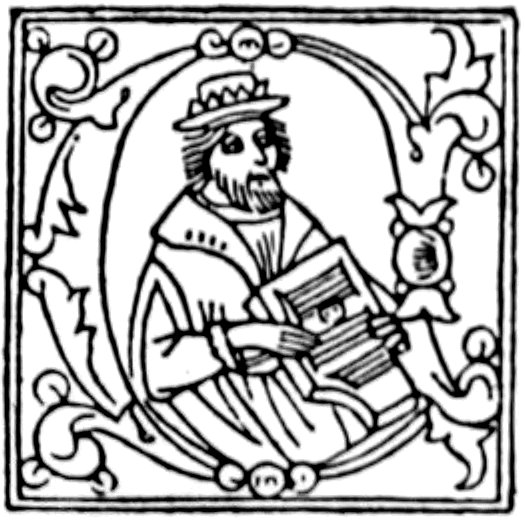
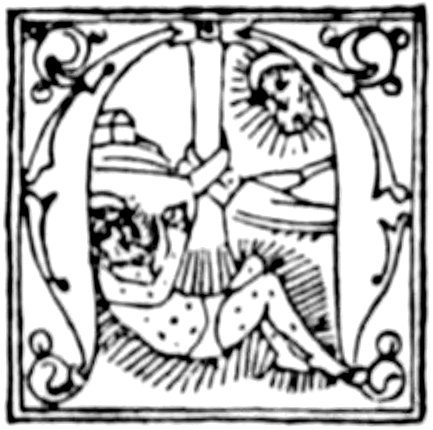
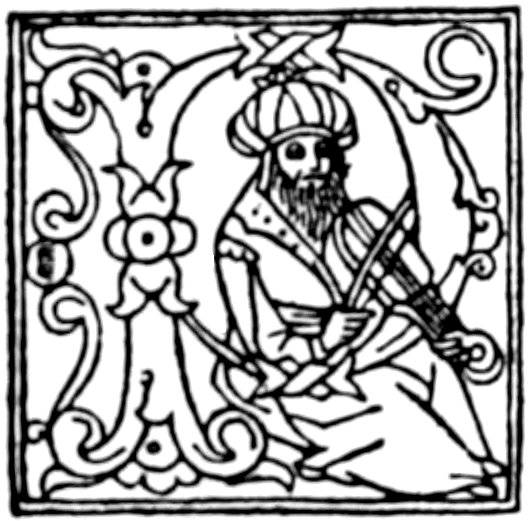

FROM THE ‘MISSALE CARTHUSIENSE,’ PRINTED BY THE MONKS AT THEIR CONVENT
[192]
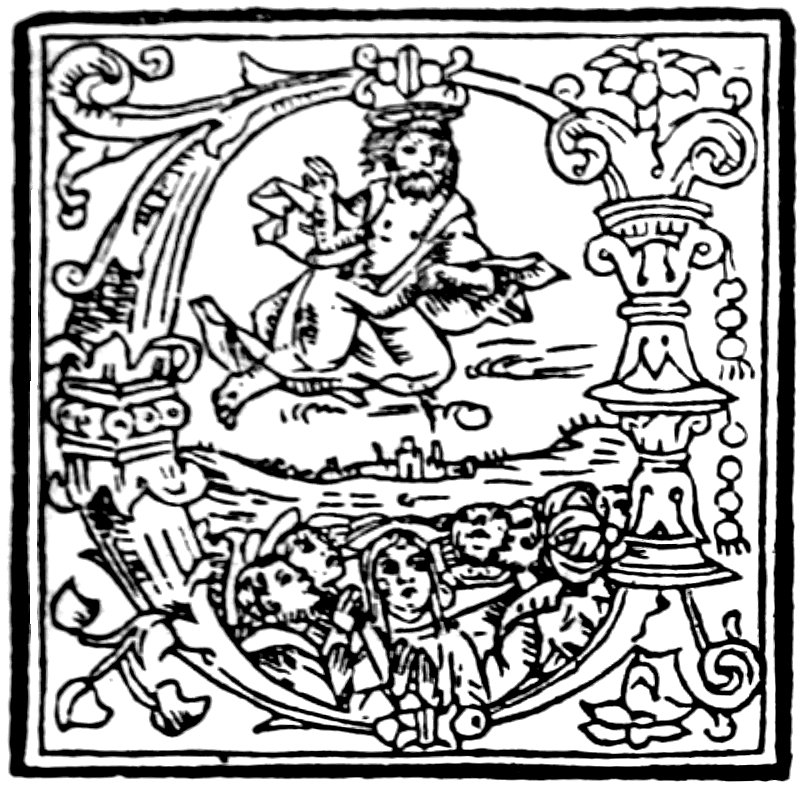
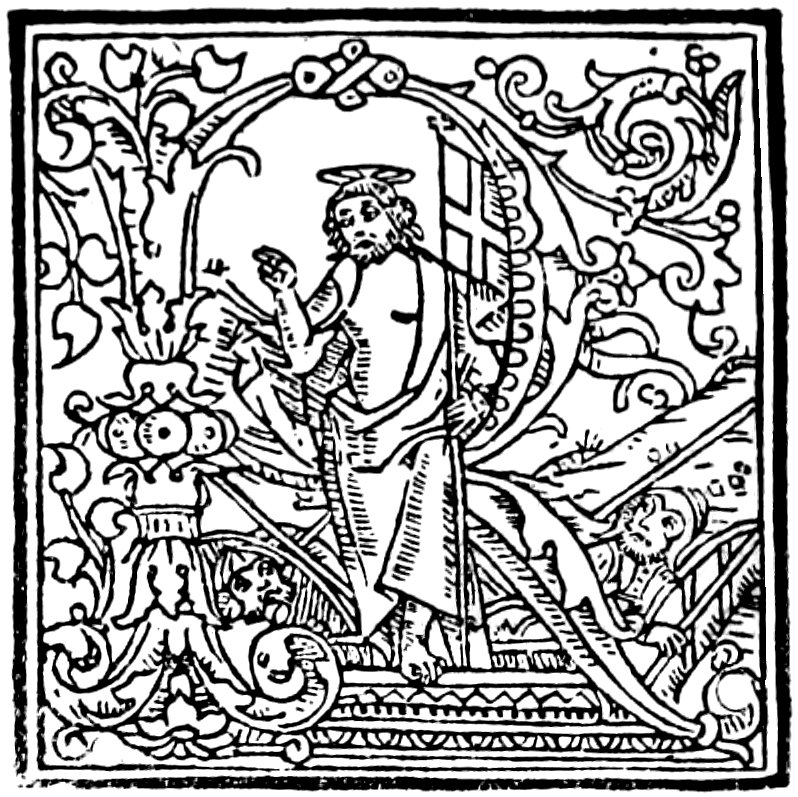
FROM THE ‘MISSALE CARTHUSIENSE,’ PRINTED BY THE MONKS AT THEIR CONVENT
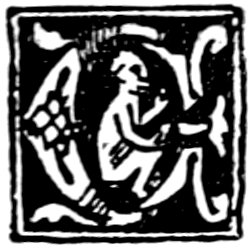
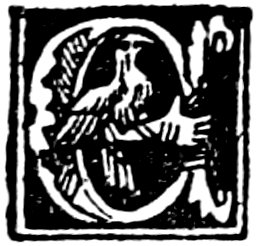
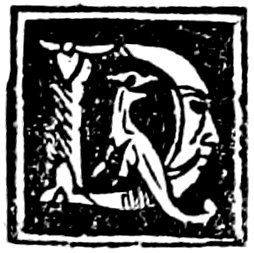

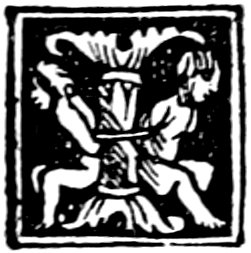
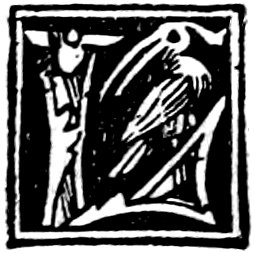
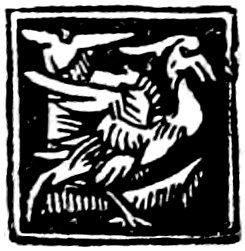
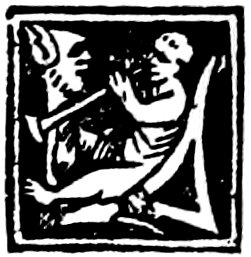
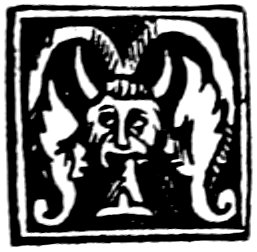
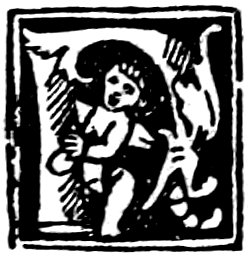
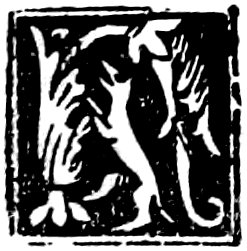
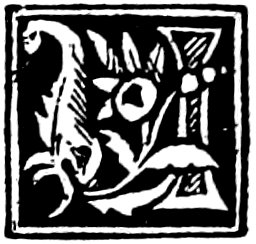
LETTRINES BY SCINZENZELLER
[193]
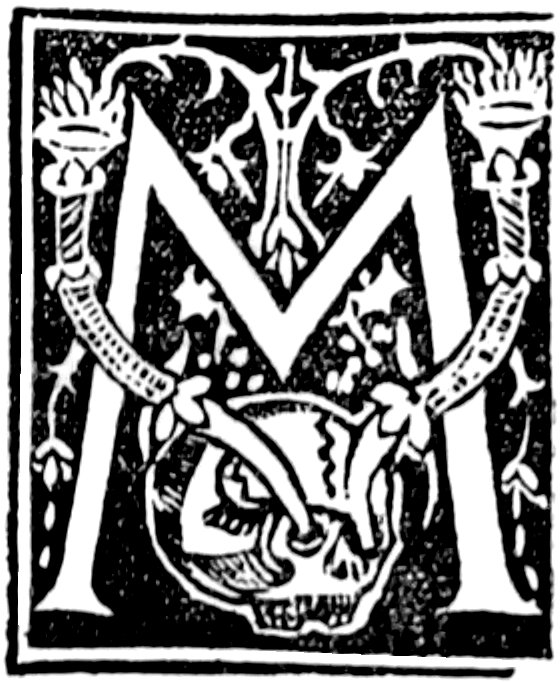

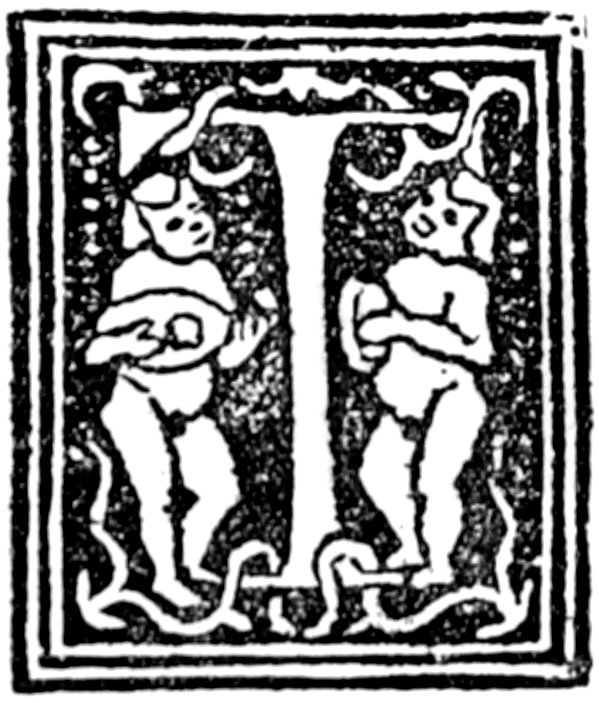
FROM THE ‘OPUS AUREE’ OF ZAROTUS, 1513
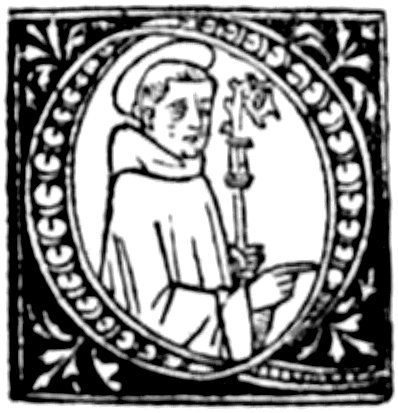
FROM THE ‘SERMONS OF ST. BERNARD,’ LEONARD PACHEL, 1495
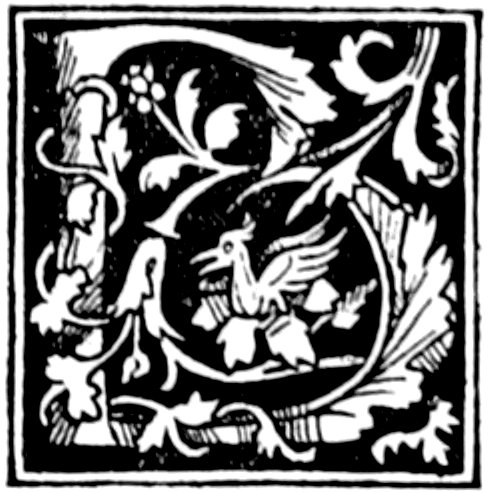
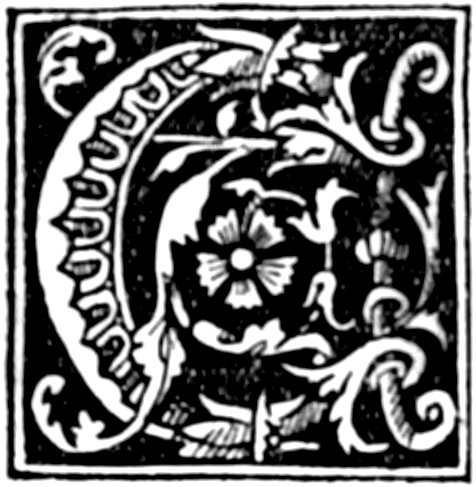
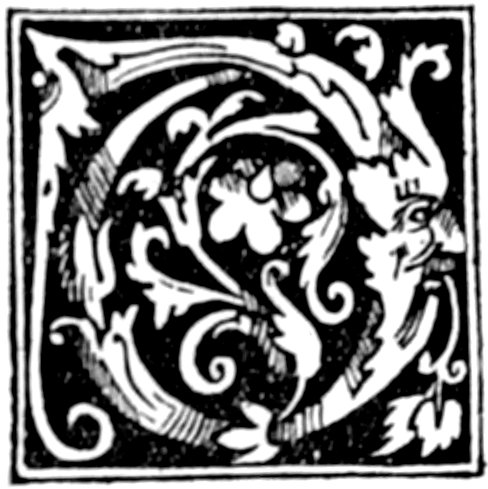
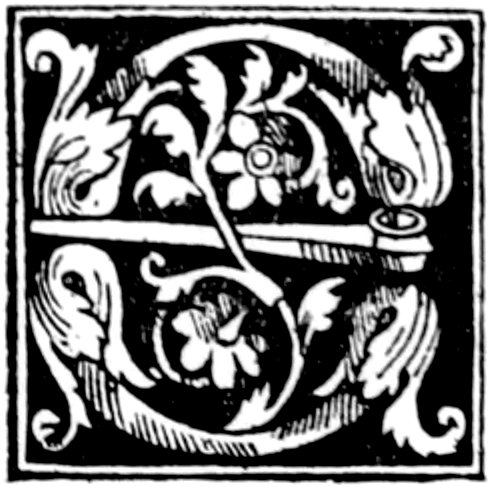
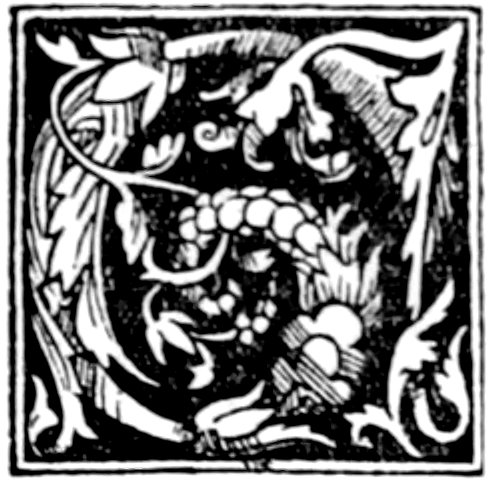

FROM WORKS PRINTED BY GERARD PONTICUS
[194]
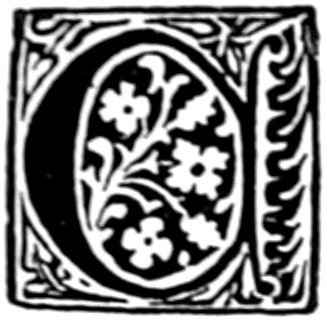
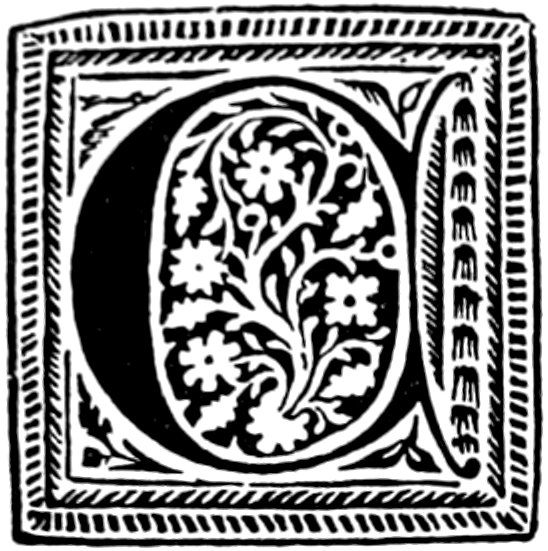
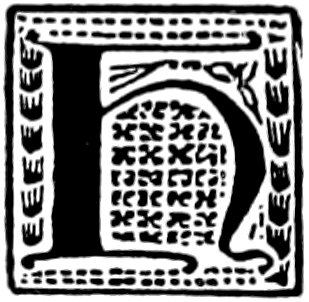
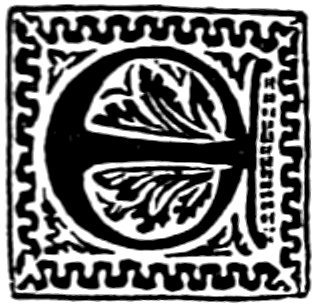
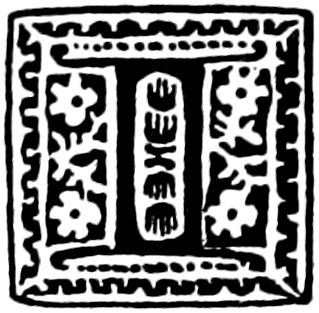
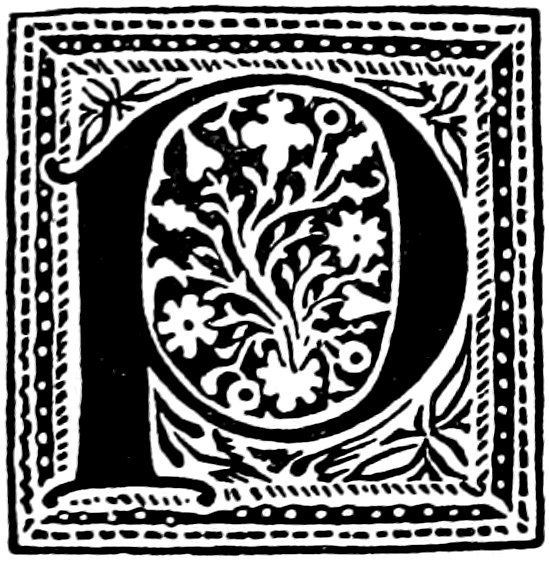
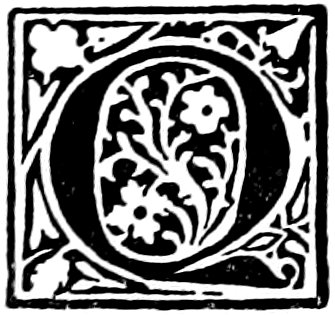
‘LETTRES TOURNEURES FLEURONNÉES’ OF W. LEROY, 1479
[195]
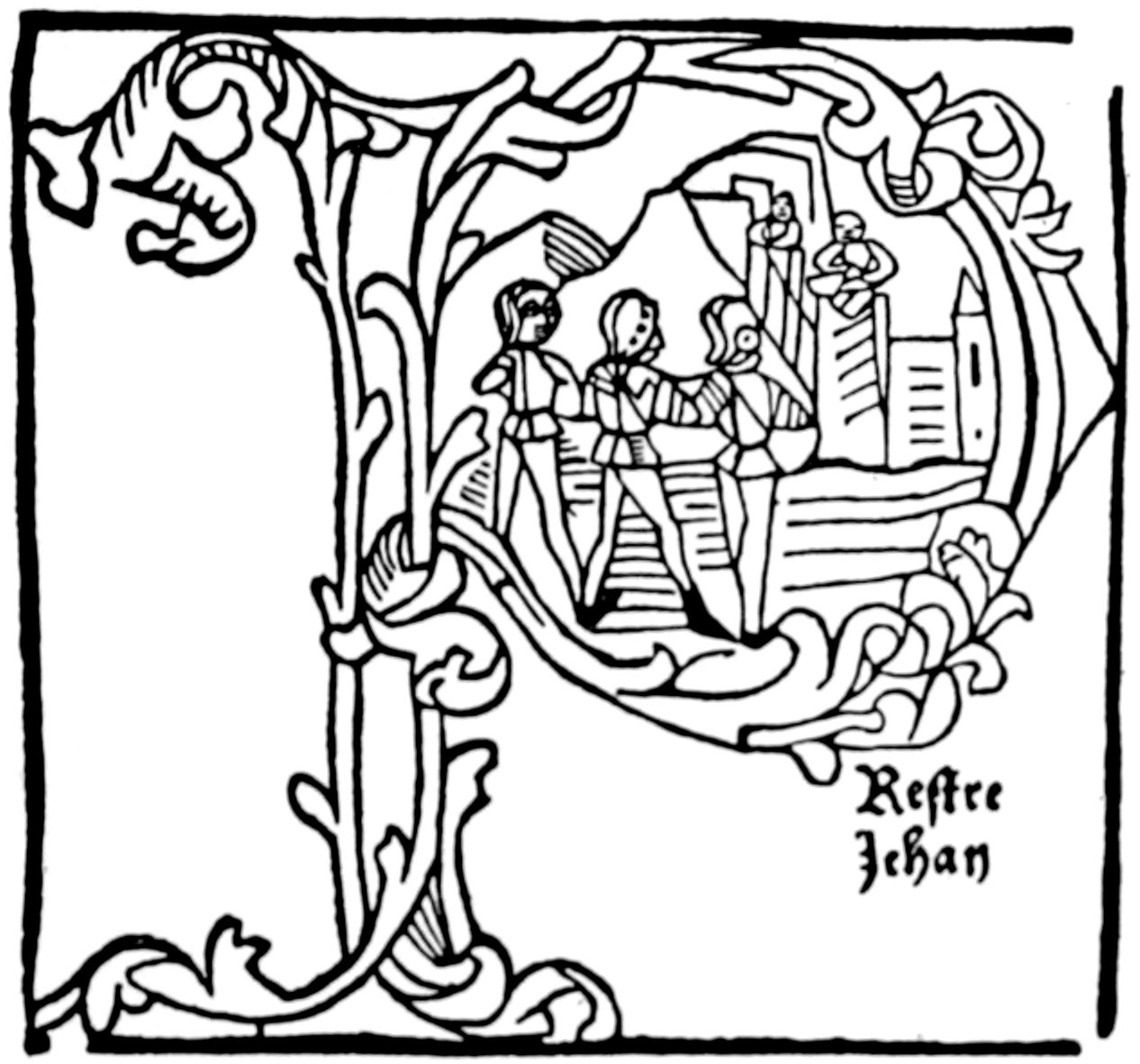
FROM ‘LE PRESTRE JEHAN’
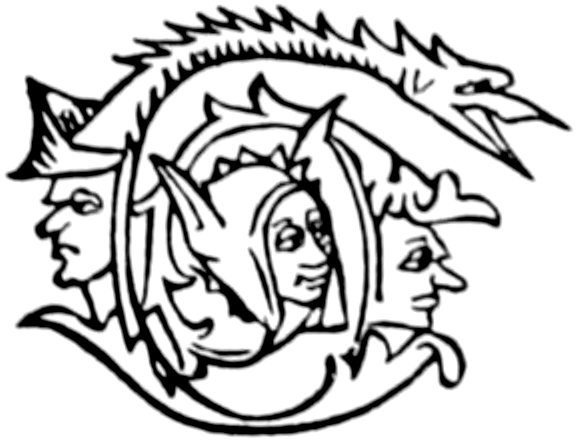
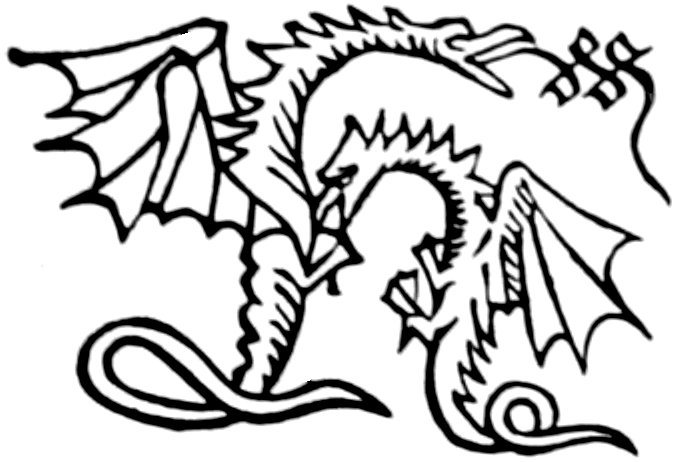
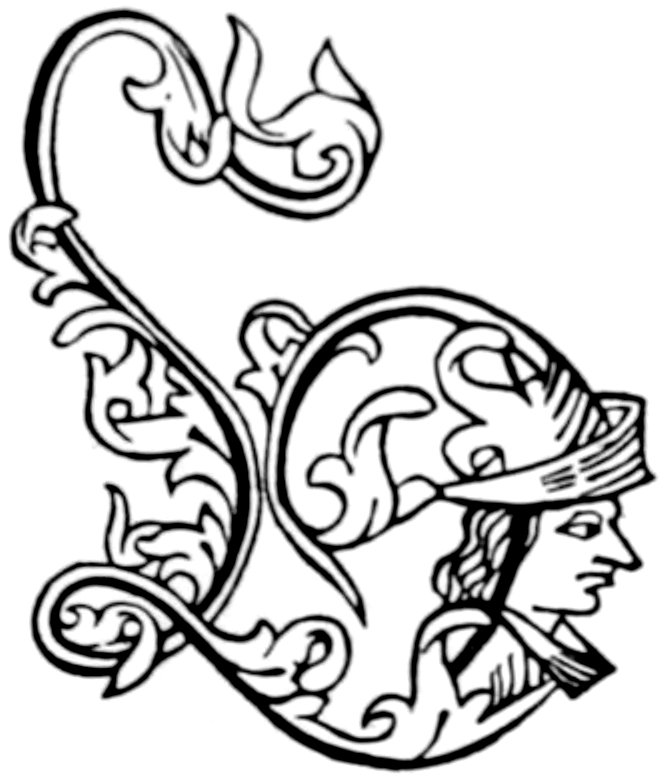

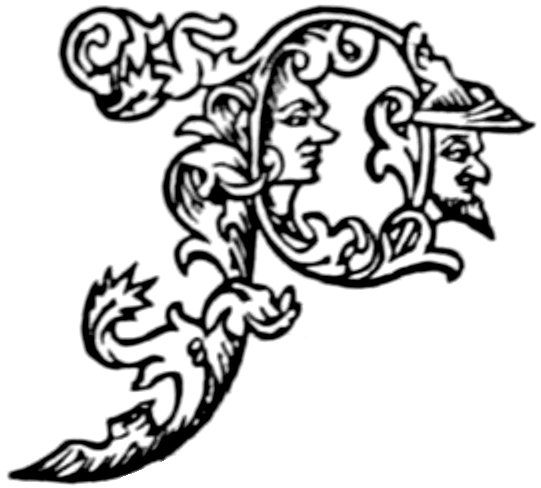
FROM ‘LES QUATRE FILS AYMON’ OF W. LEROY
[196]
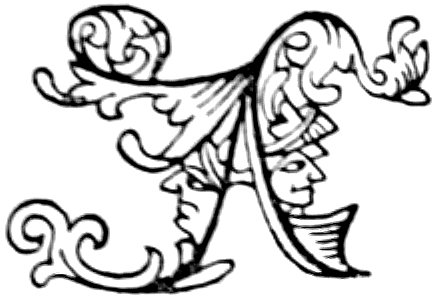
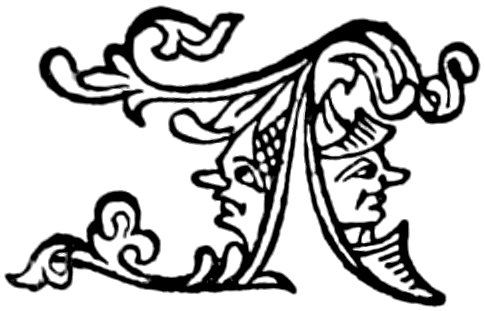
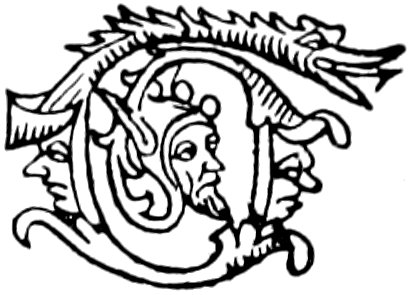
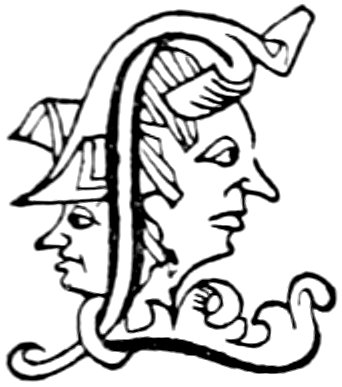
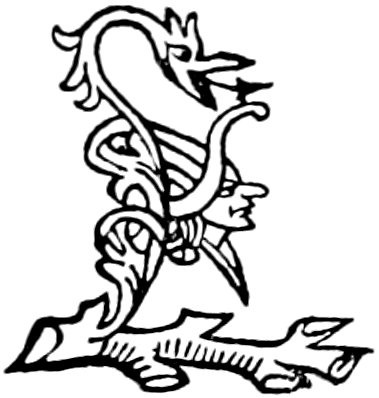
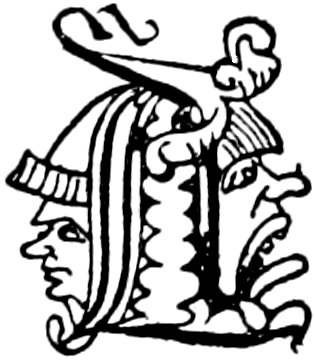
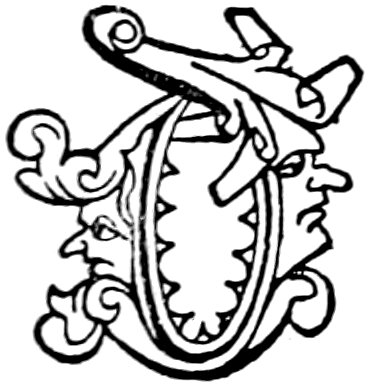
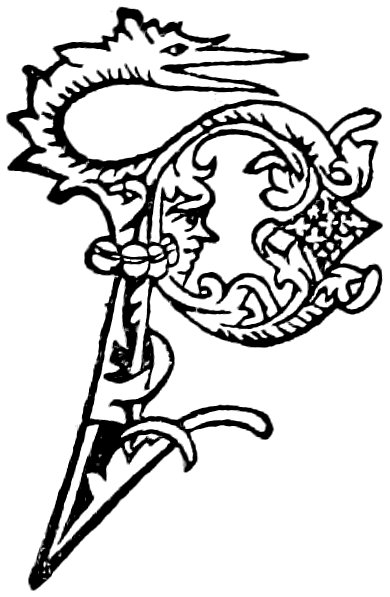
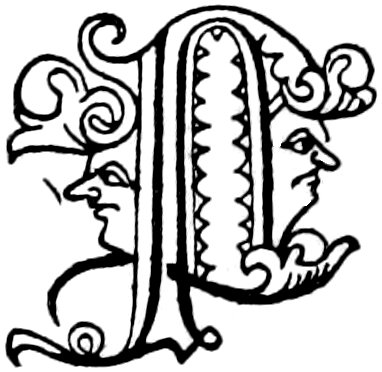
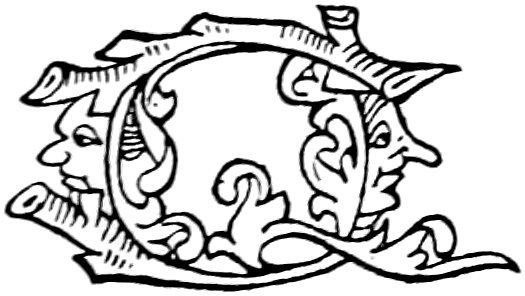
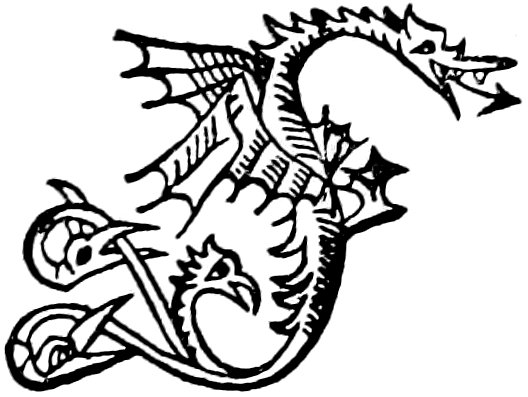
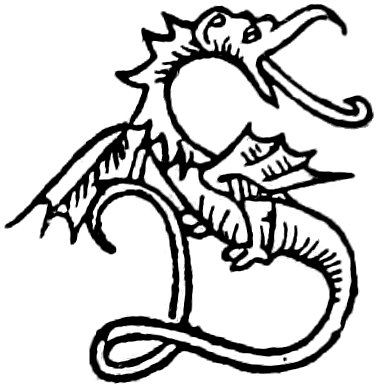
FROM THE ‘STATUTA SYNODALIA’ OF W. LEROY
[197]
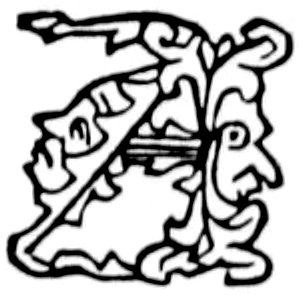
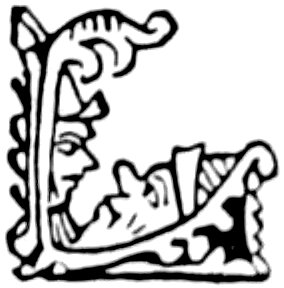
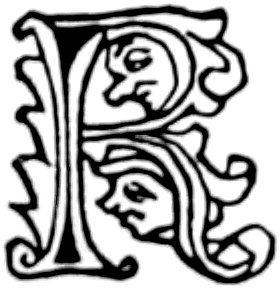
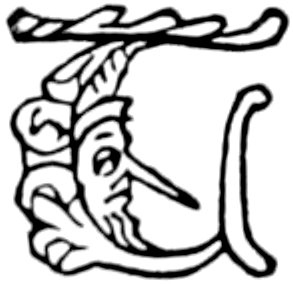
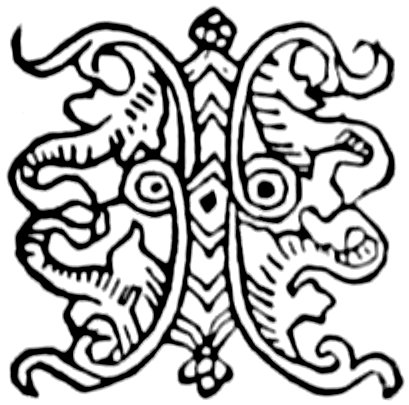
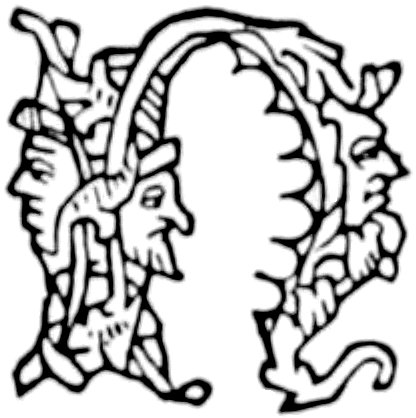
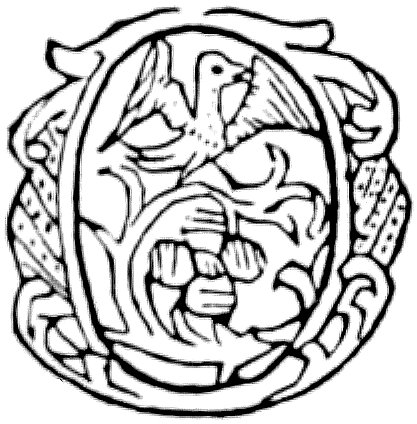
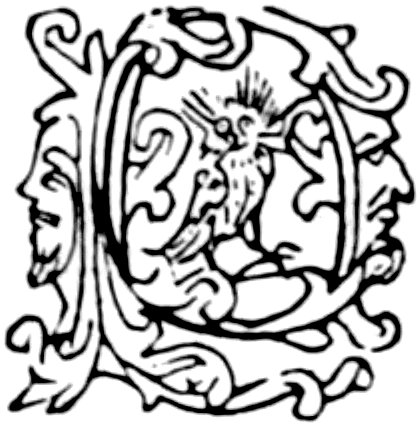
FROM THE BOCCACCIO OF MATHIEU AND JEAN SCHABELER, 1483
[198]
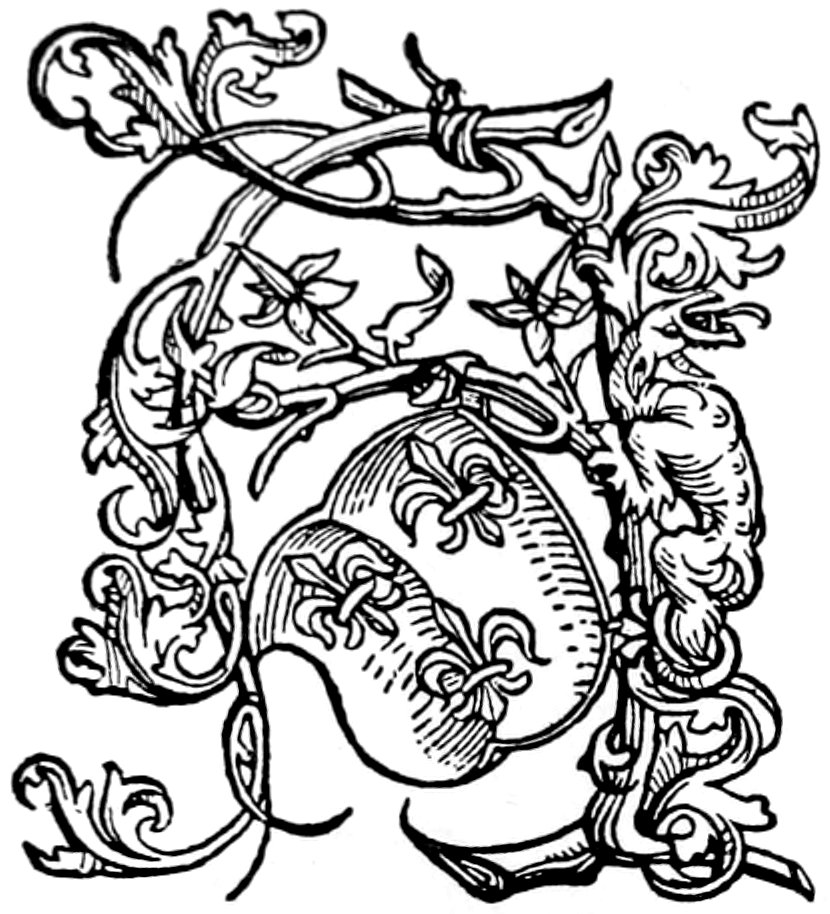
FROM THE BREIDENBACH OF GASPARD ORTUIN
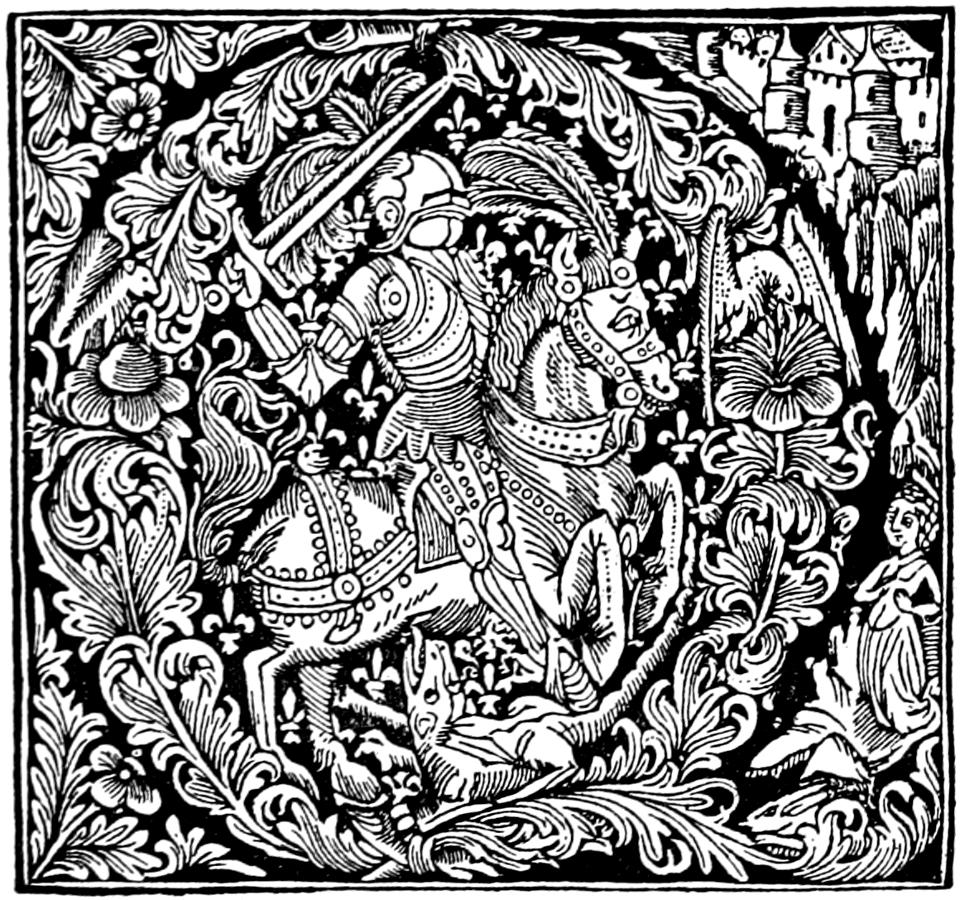
FROM ‘LA MER DES HYSTOIRES’ BY MICHEL TOPIE
[199]
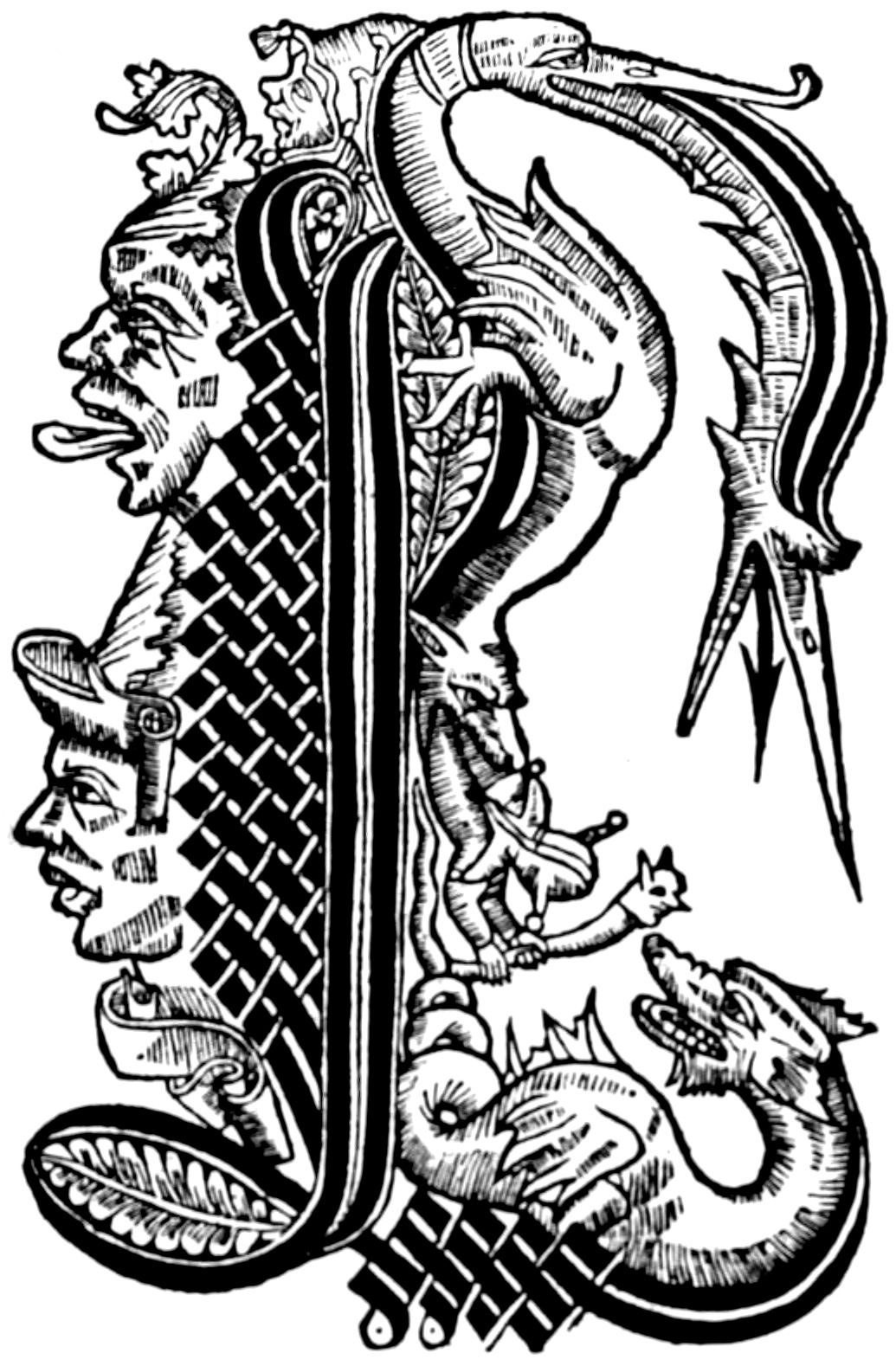
FROM A MELUSINE
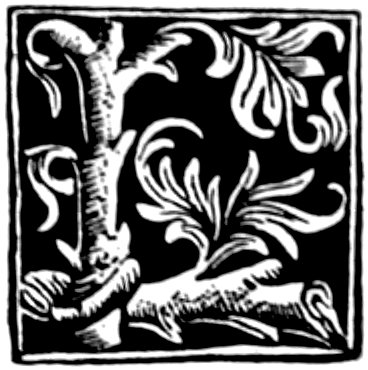
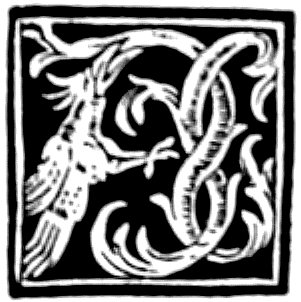
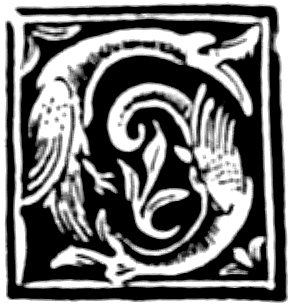
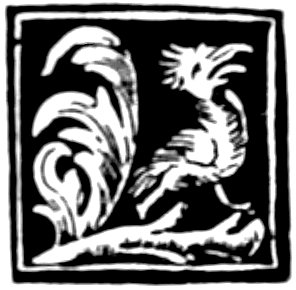

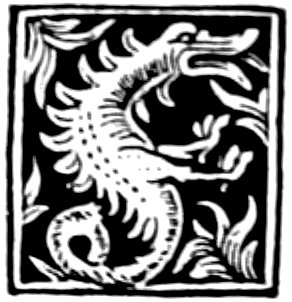

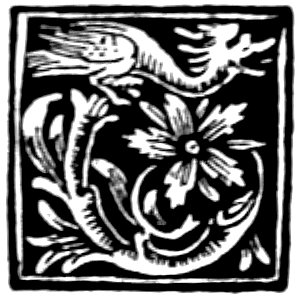
LETTRES RUSTIQUES OF MATHIEU HUSZ
[200]
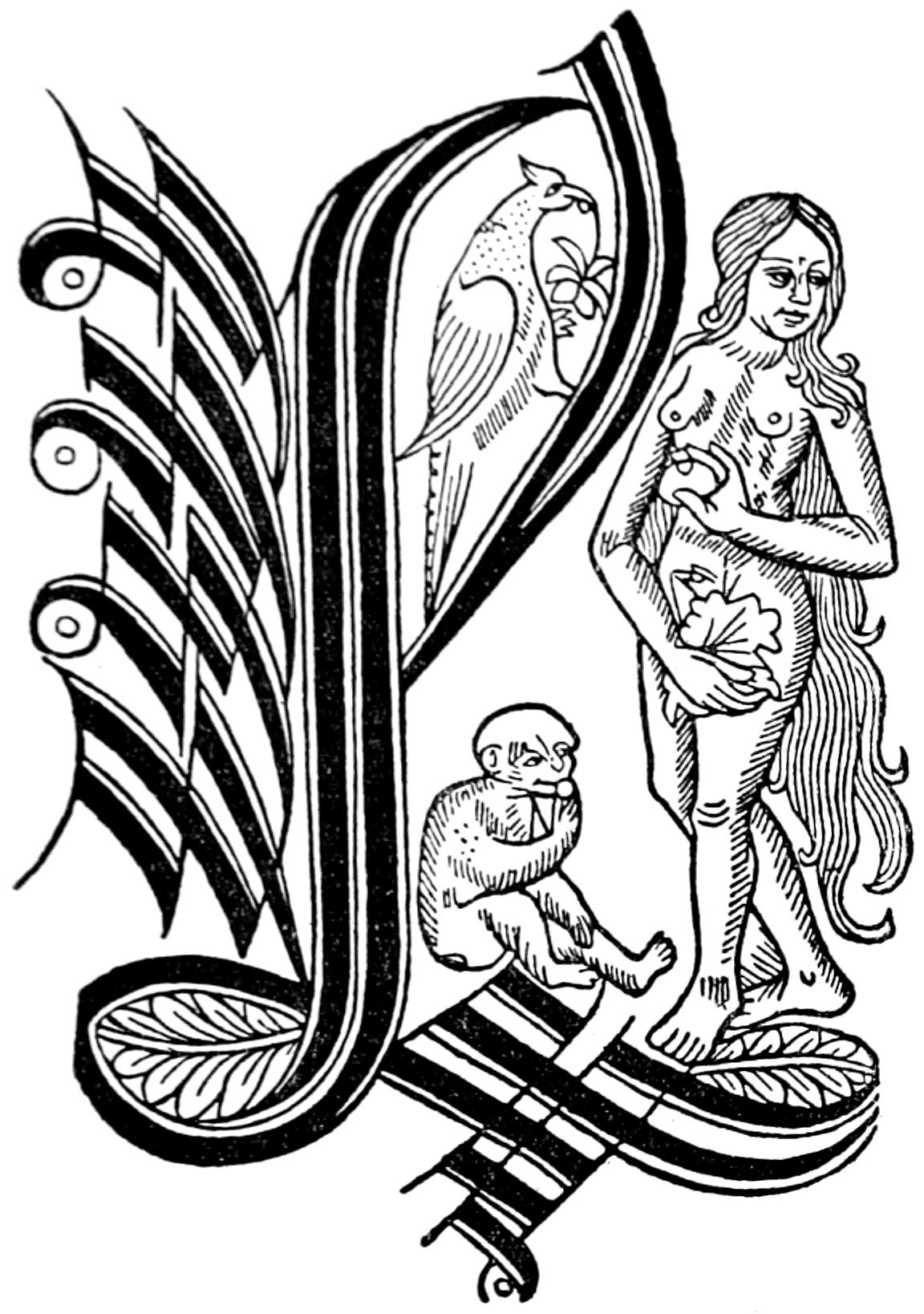
FROM THE ‘LIVRE DES MARCHANDS’
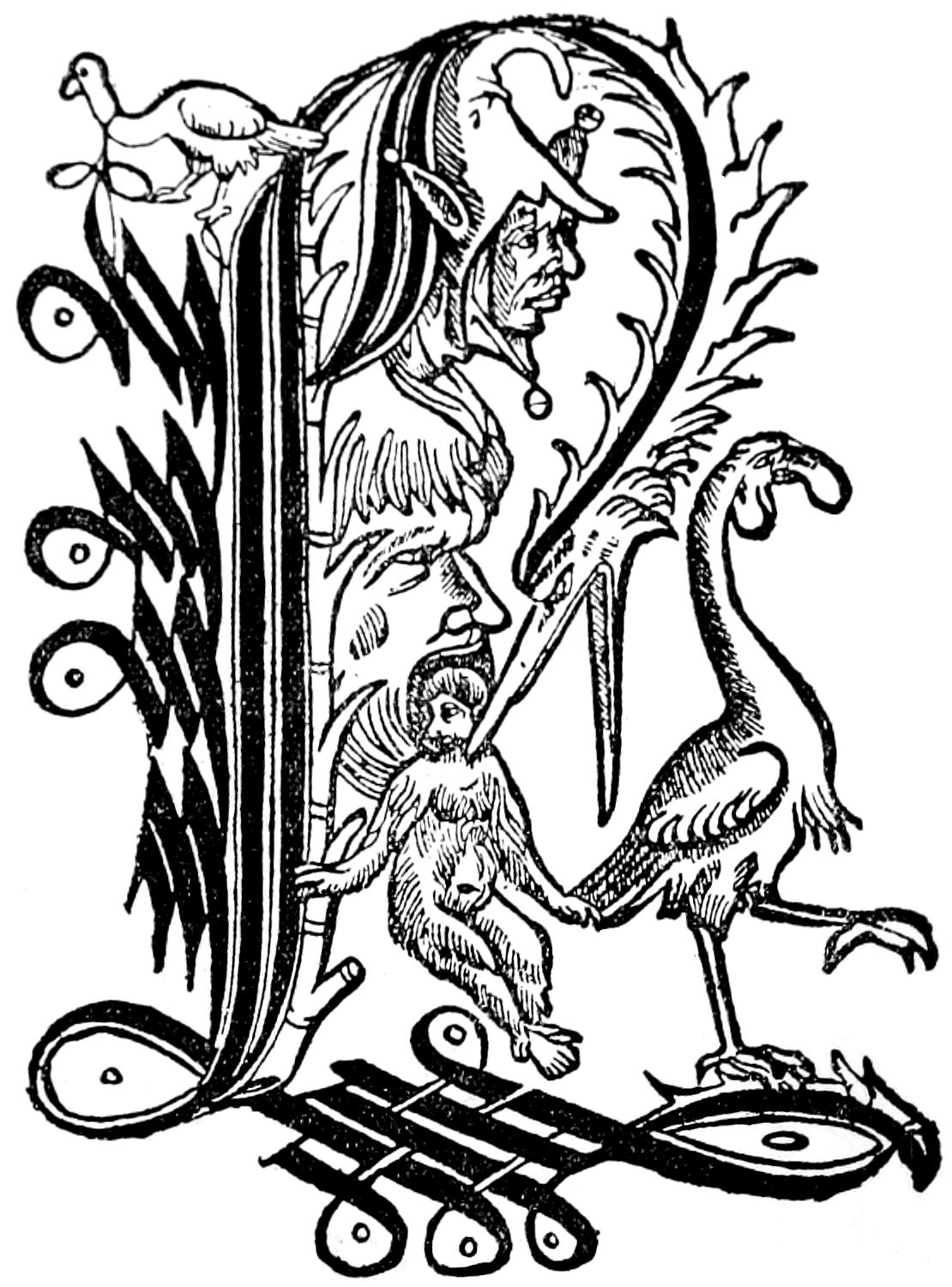
FROM THE ‘SOMME RURALE’ OF BOUTELLIER
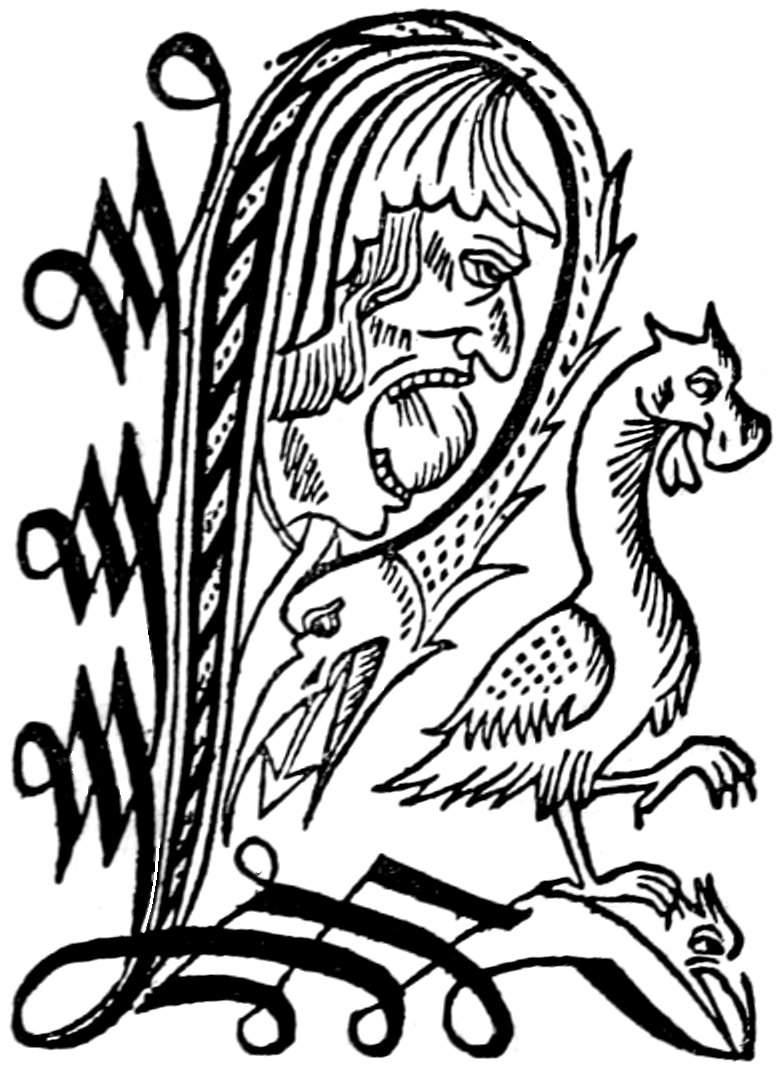
FROM THE ‘CATHON EN FRANÇOYS’
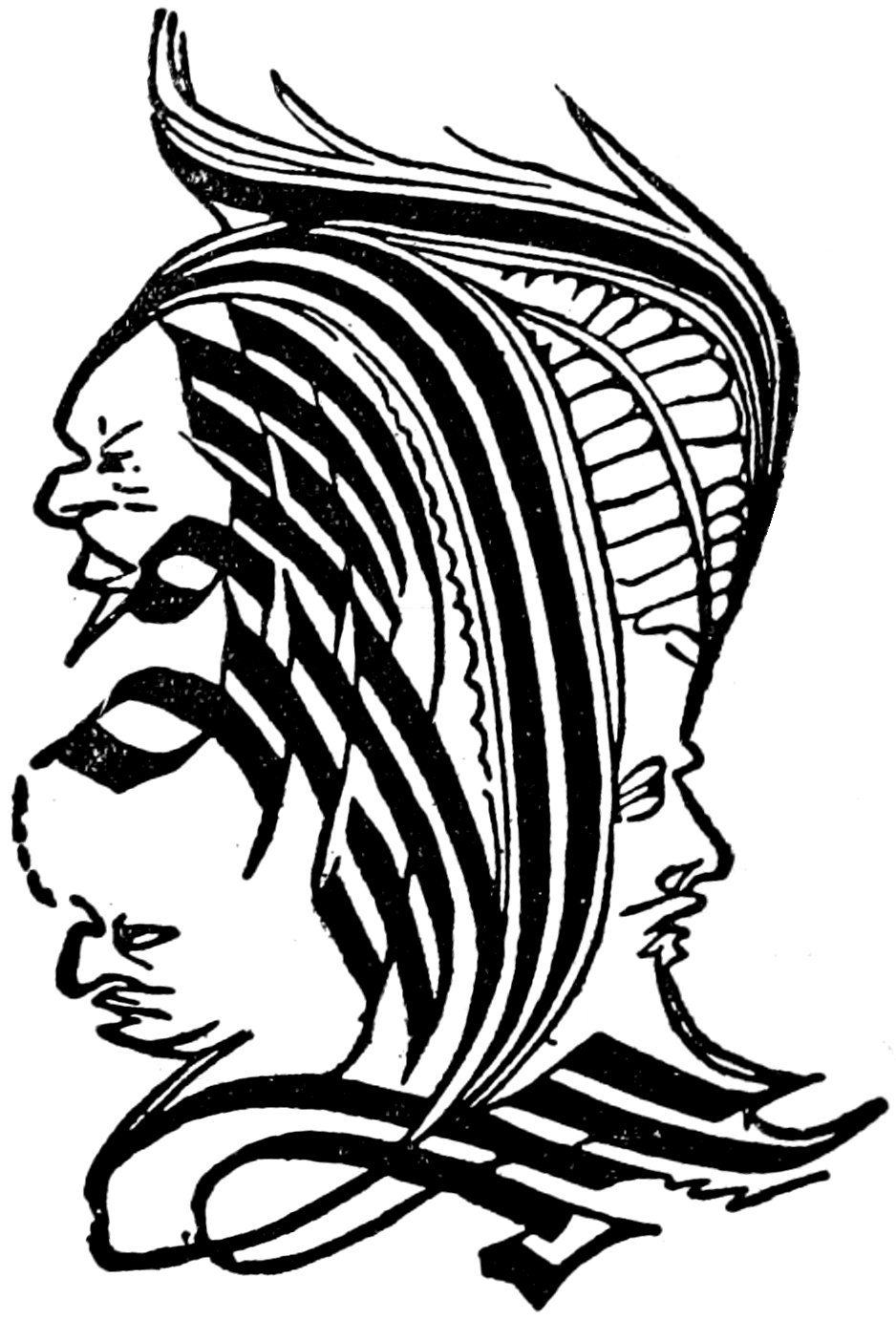
LYONS COPY OF AN INITIAL FROM THE BOECE OF VÉRARD
[201]
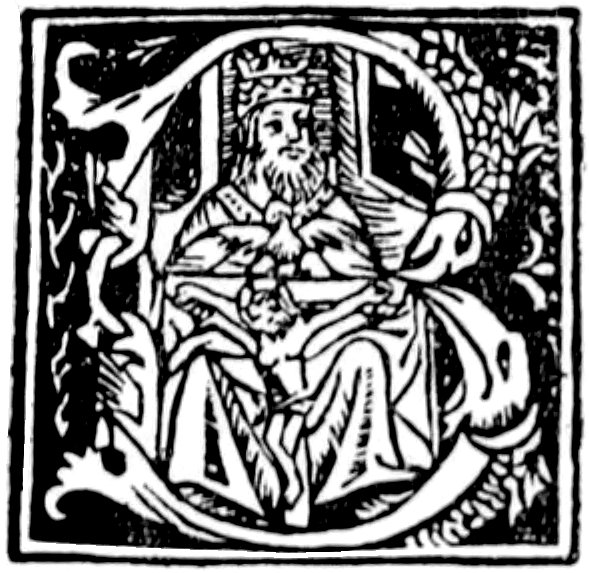
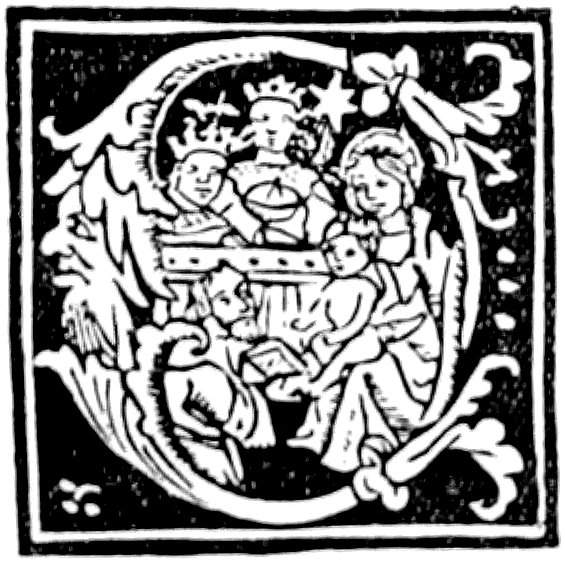
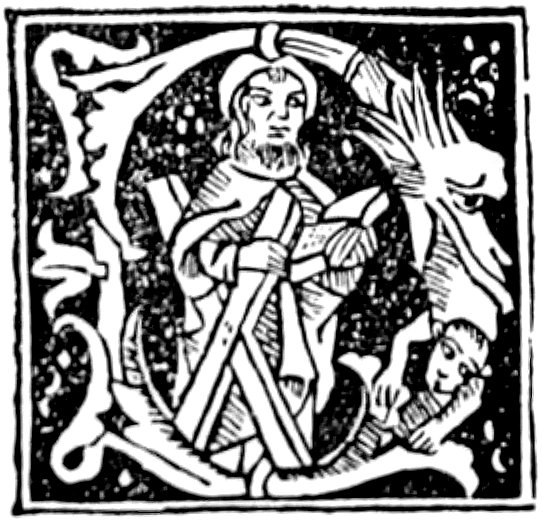
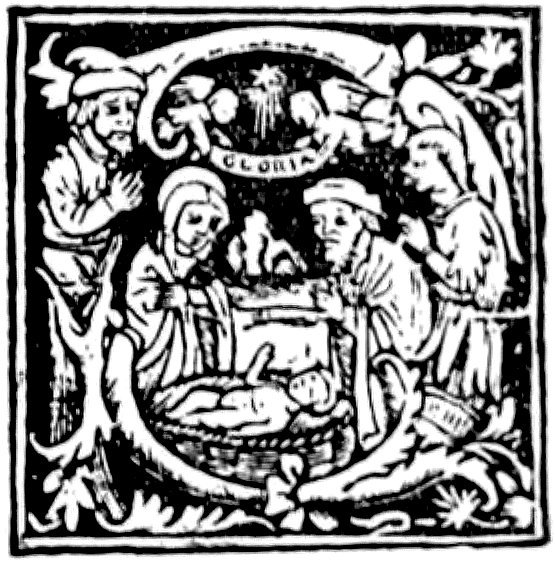
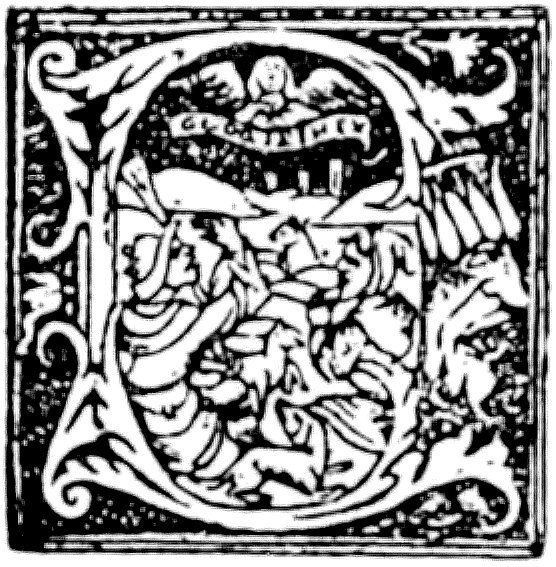
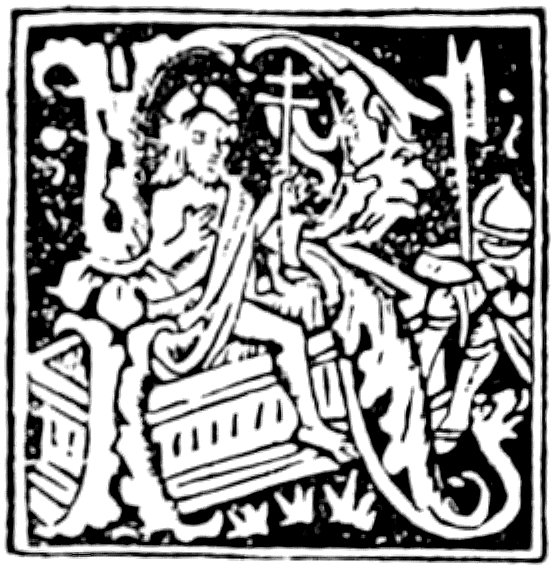
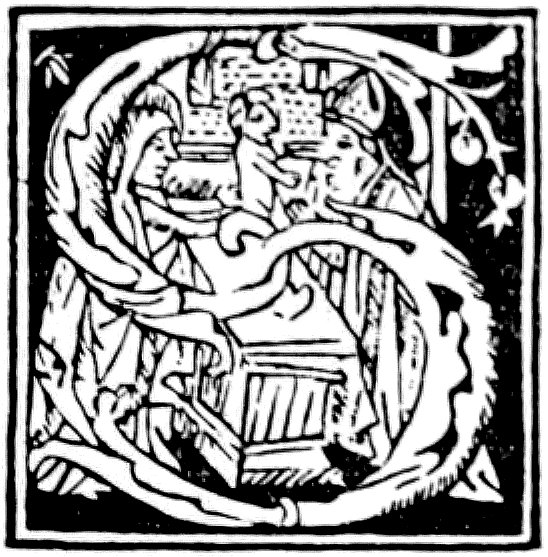
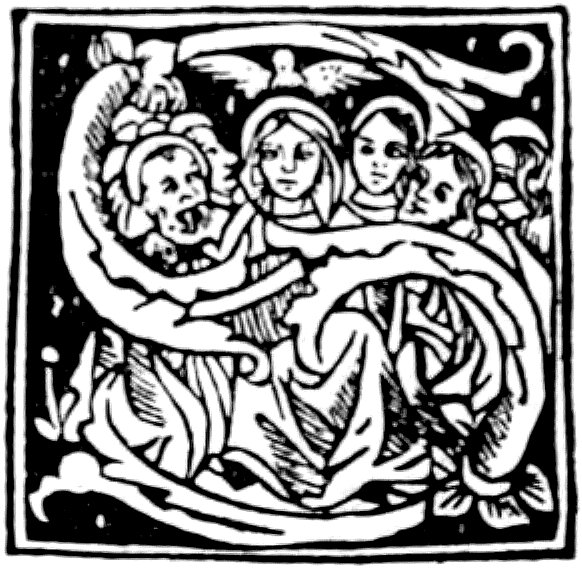
FROM SACCON’S MISSAL
[202]
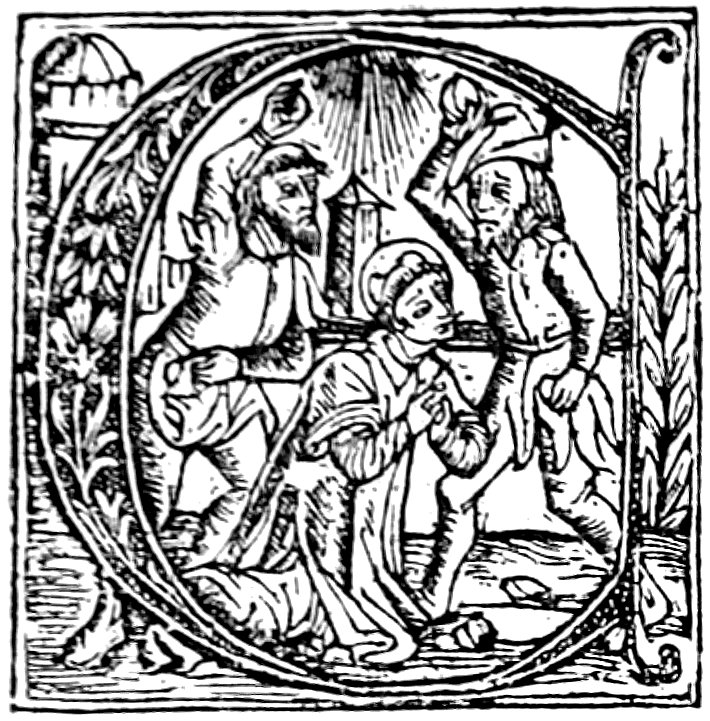

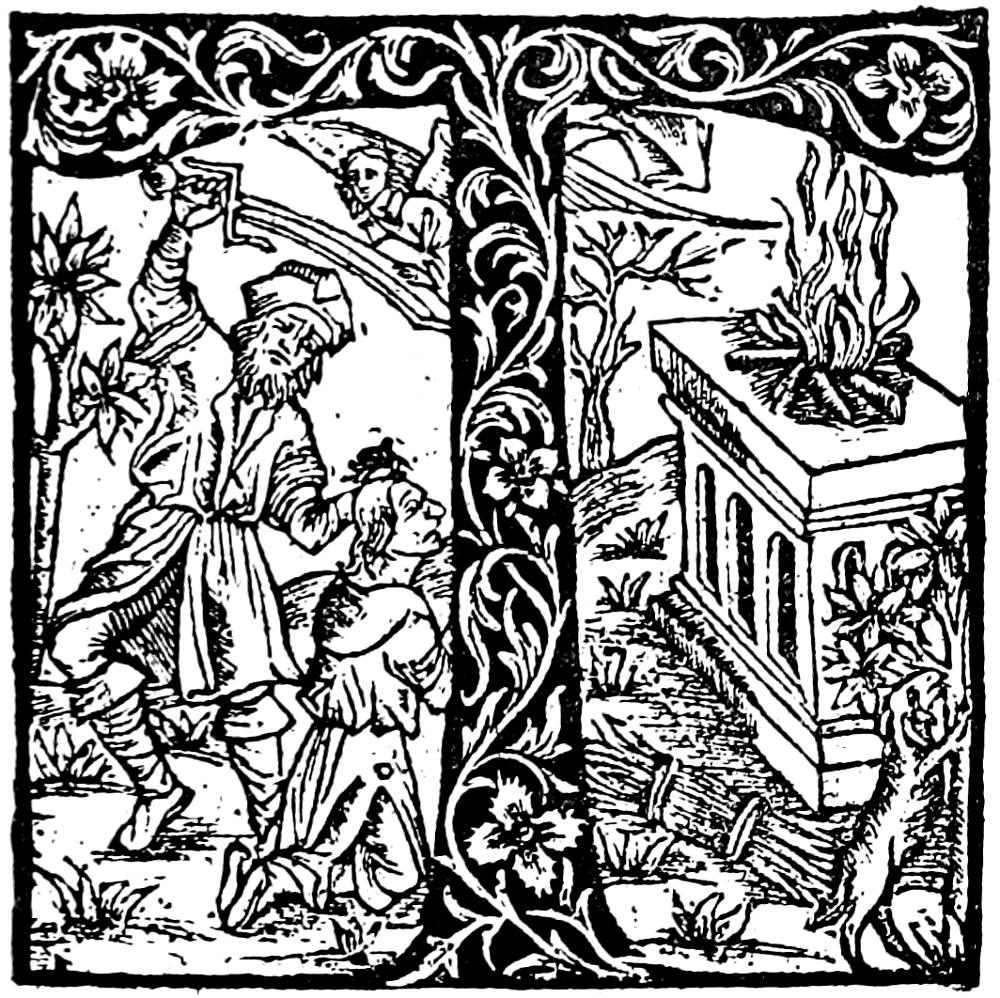
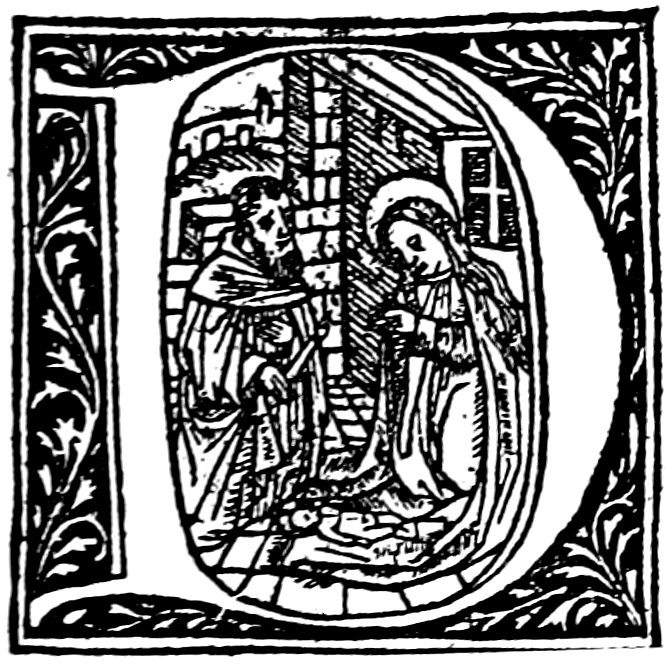
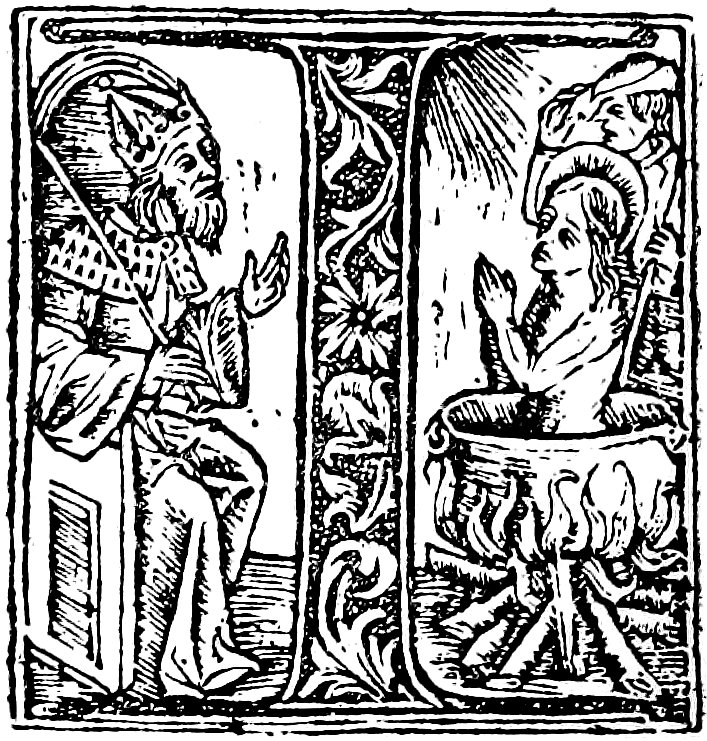
FROM THE MISSAL OF PIERRE HONGRE
[203]
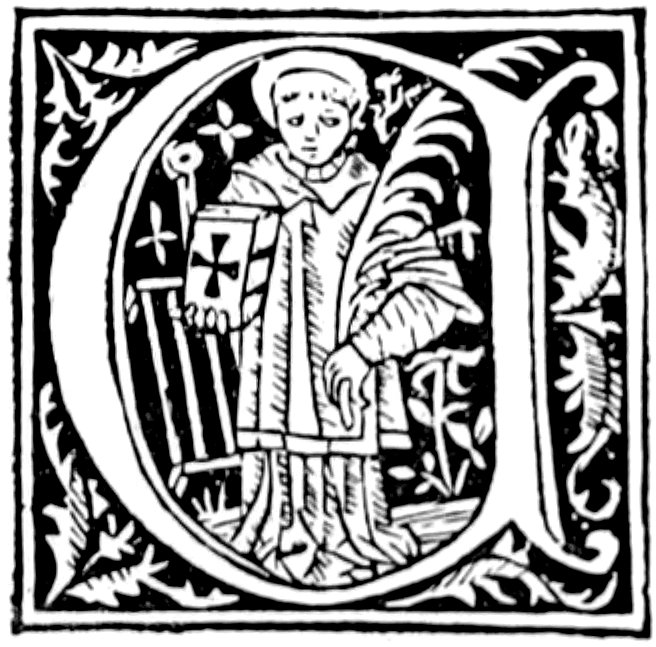

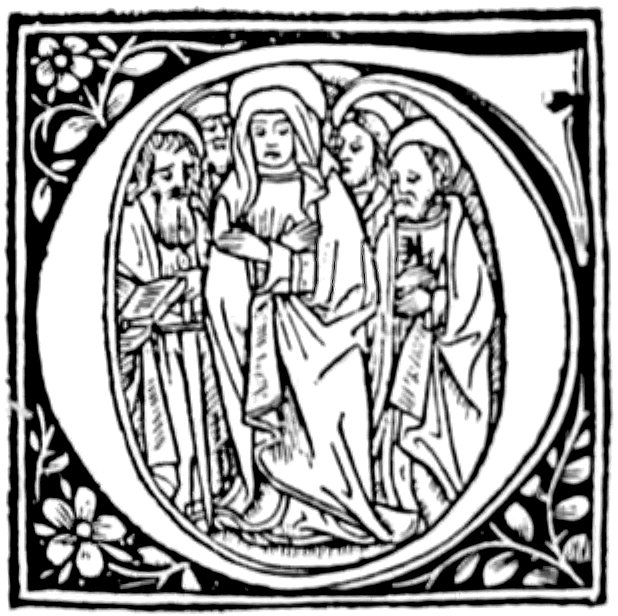
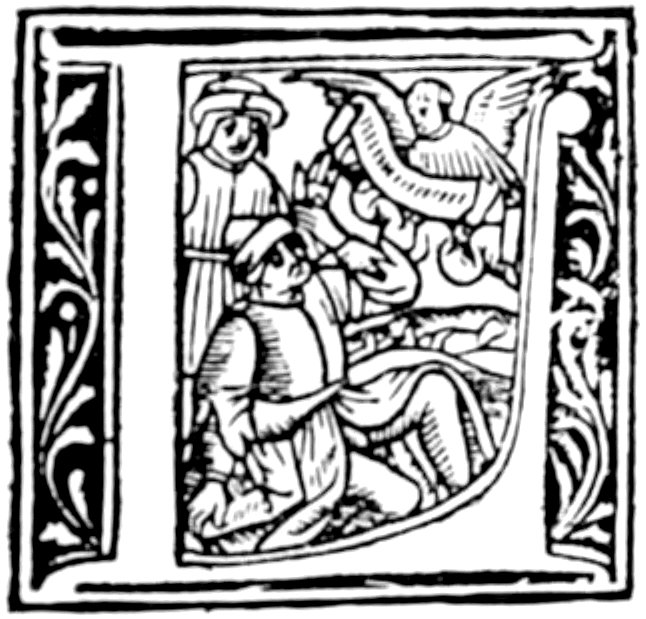
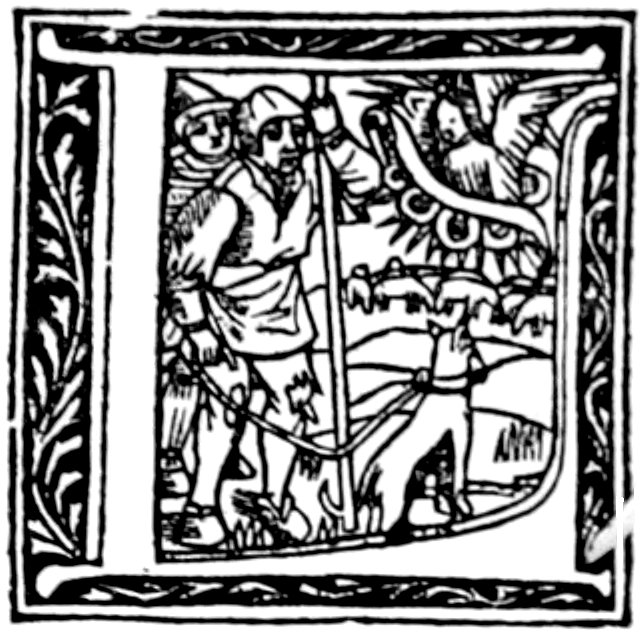
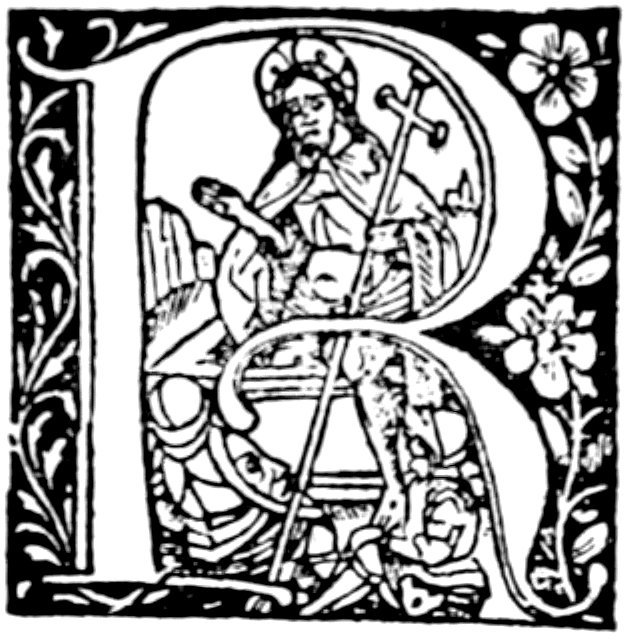
FROM THE MISSAL OF PIERRE HONGRE
[204]
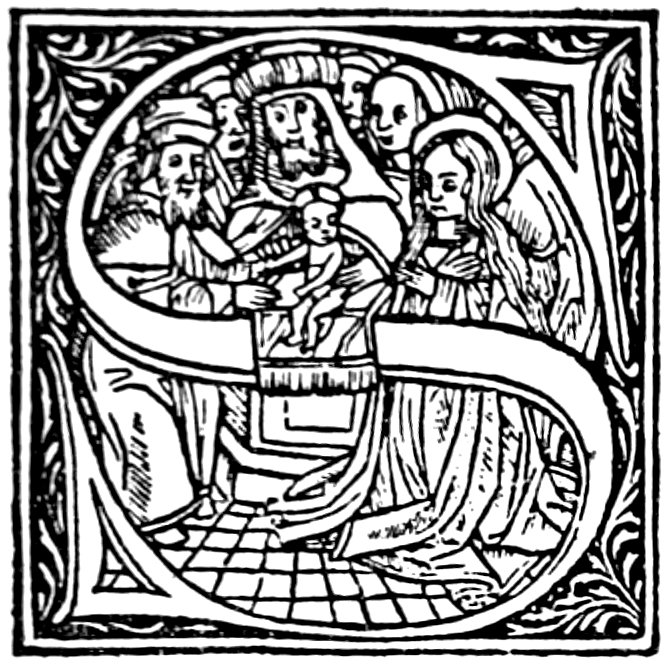
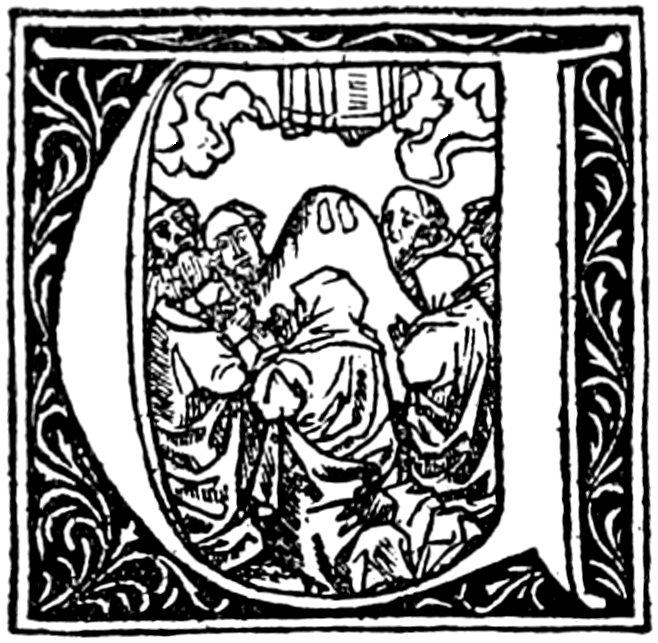
FROM THE MISSAL OF PIERRE HONGRE

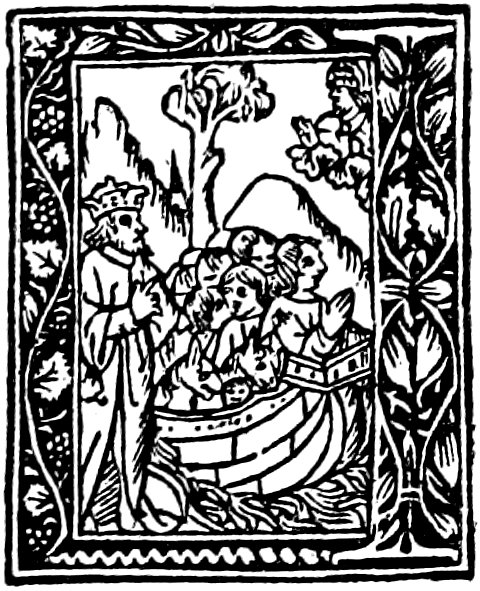
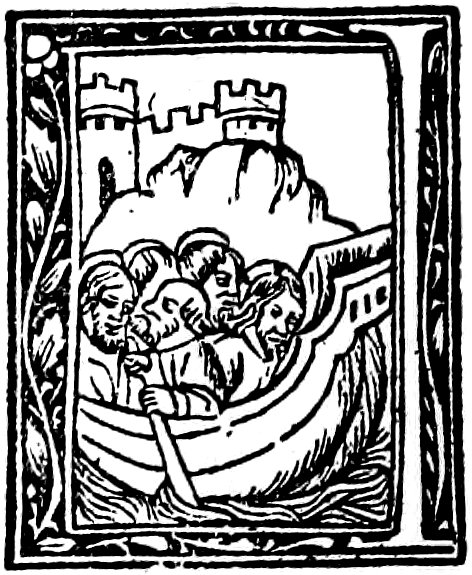
INITIALS BY J. POULLET, 1505
[205]
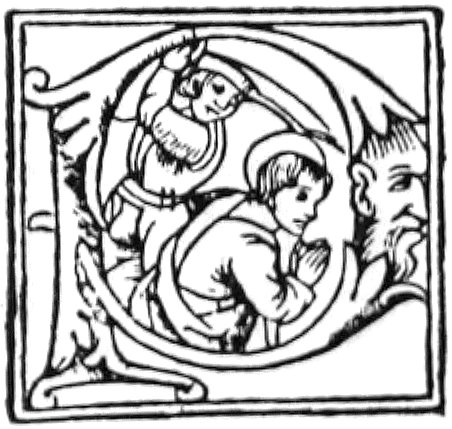
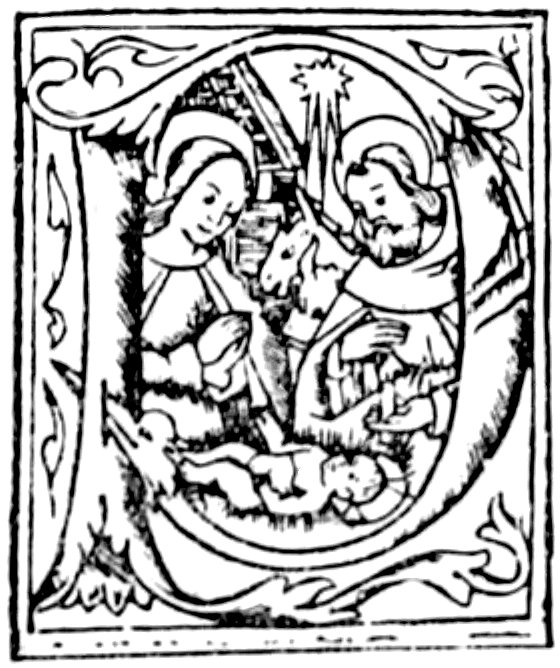
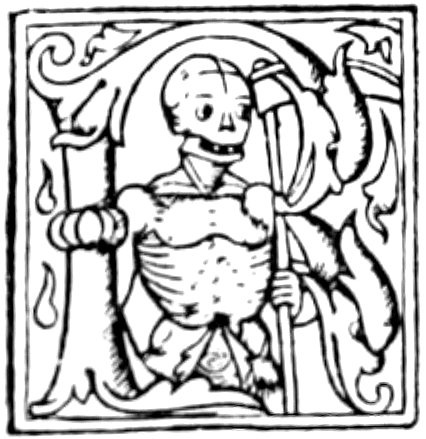
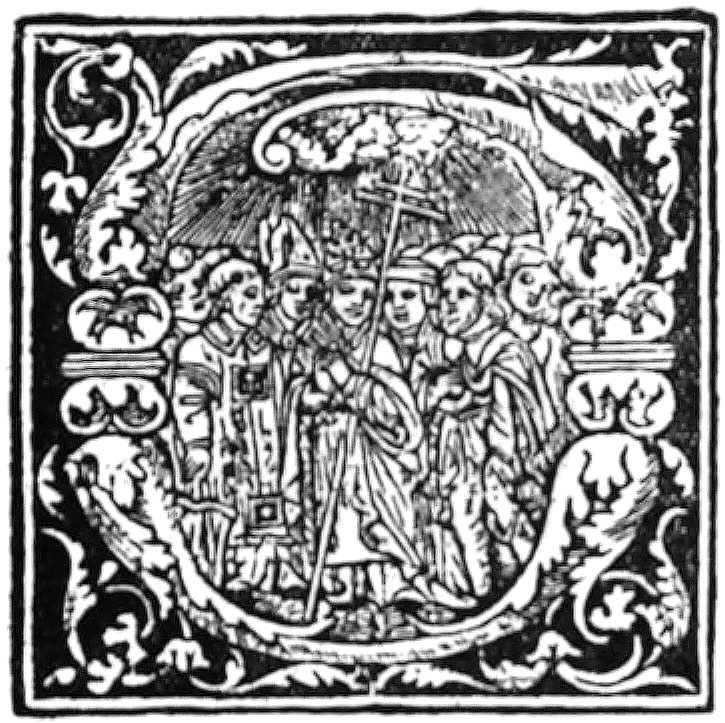
FROM THE MISSAL OF NARBONNE, 1528
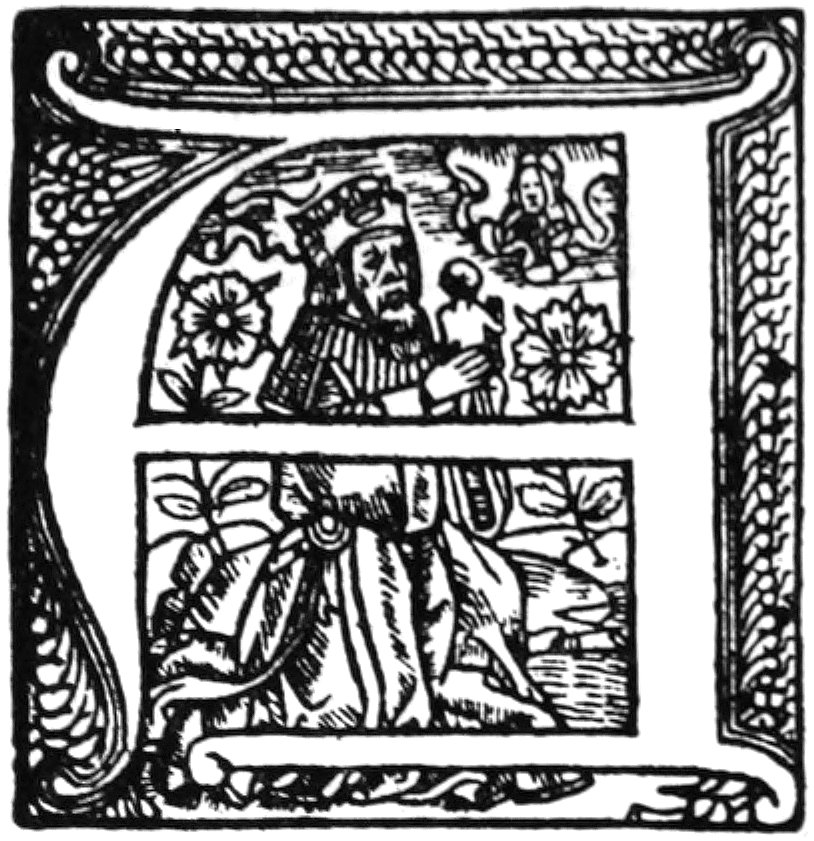
FROM A LYONS MISSAL
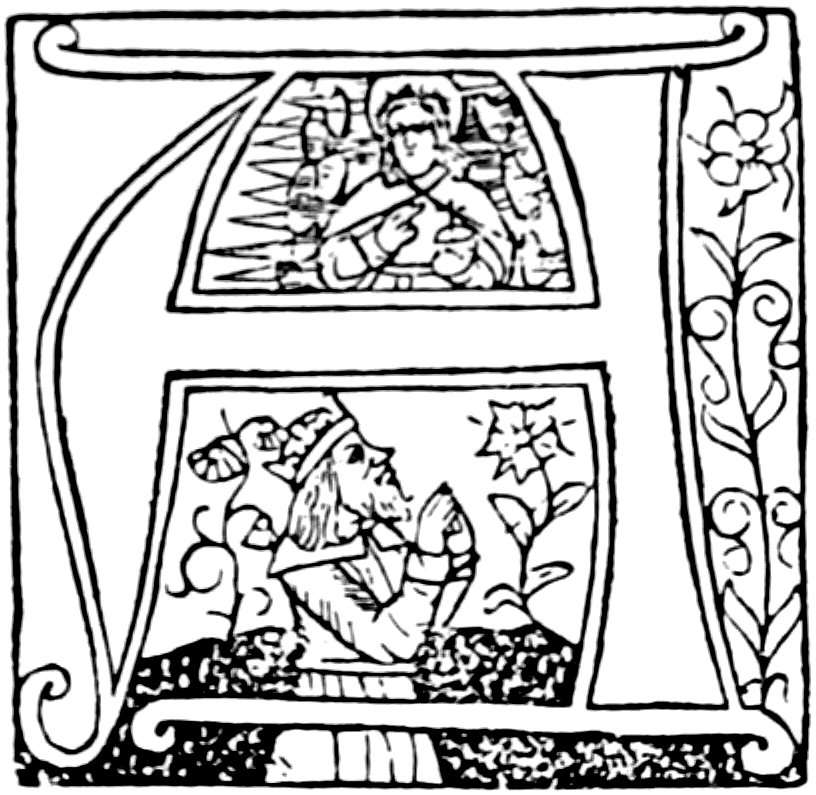
FROM A ‘CATALOGUS SANCTORUM’ OF SACCON
[206]
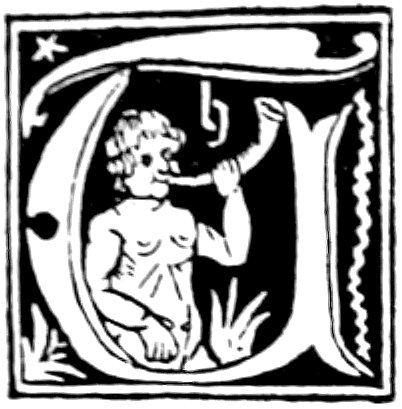
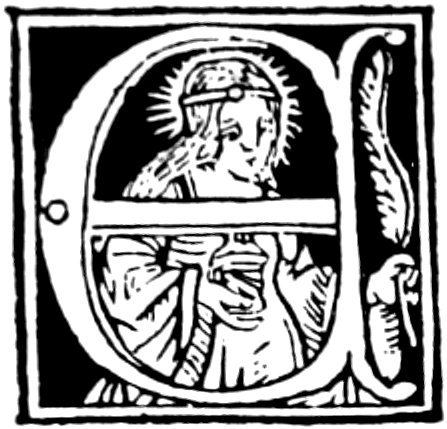
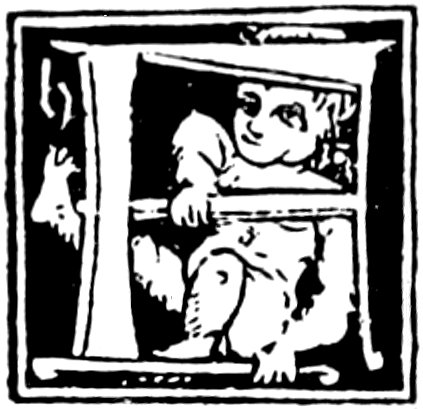
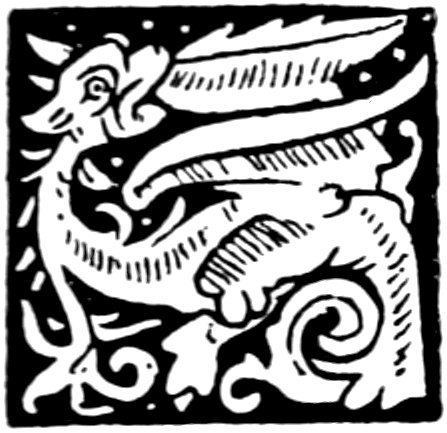
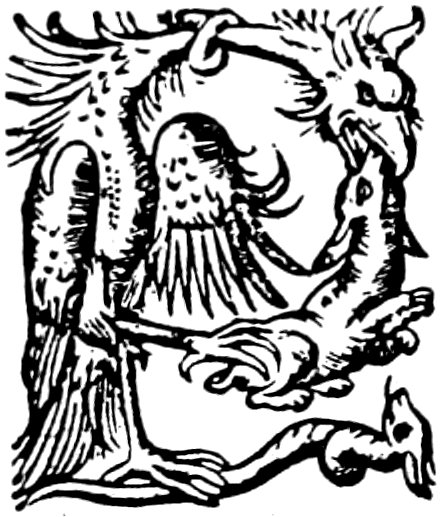
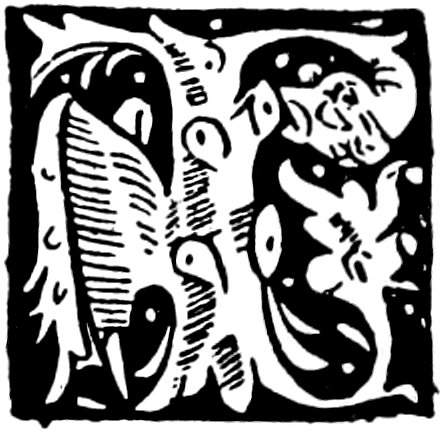
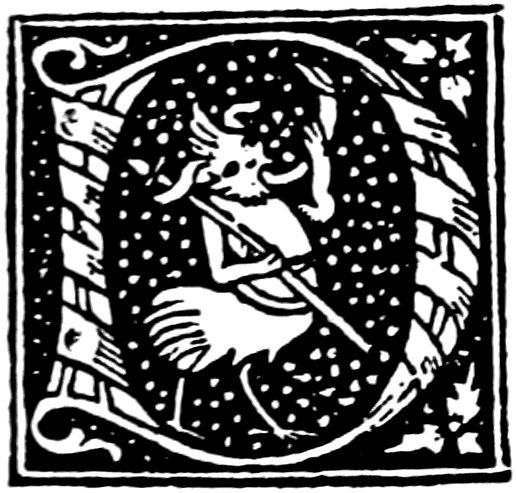
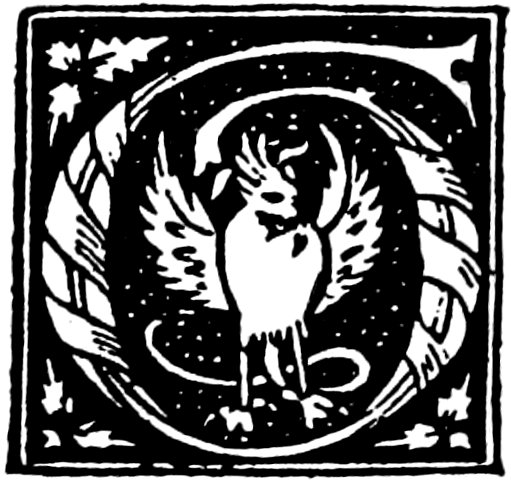

FROM THE ‘CATHOLICON’ OF J. WOLFF, 1503
[207]
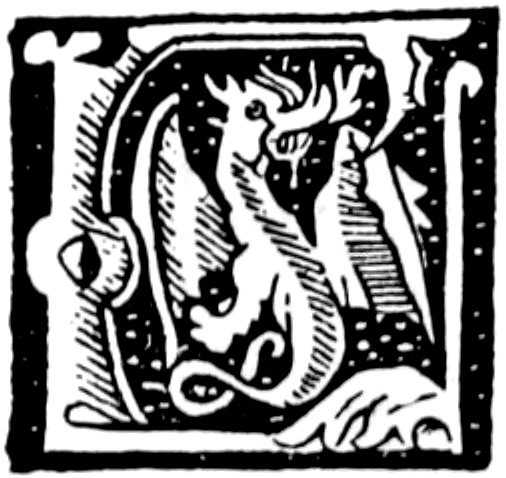
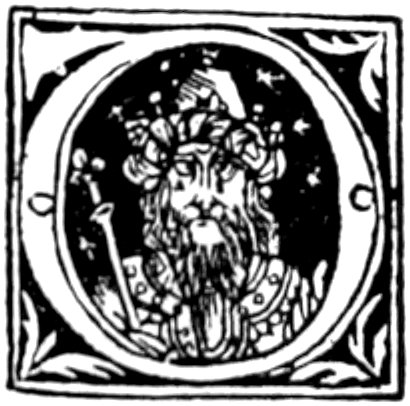
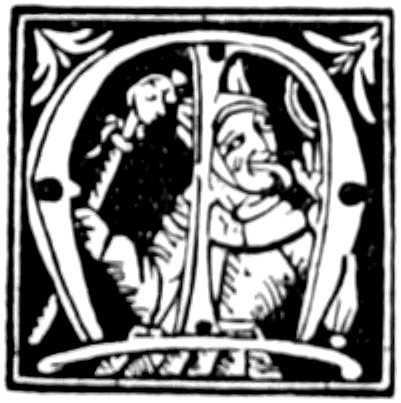
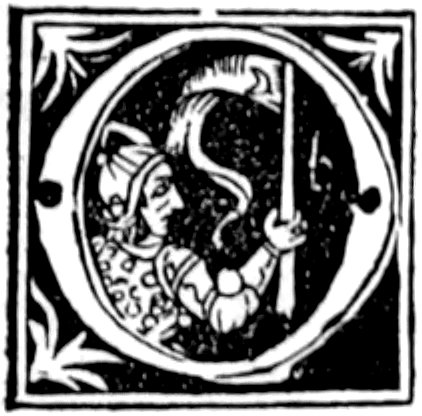
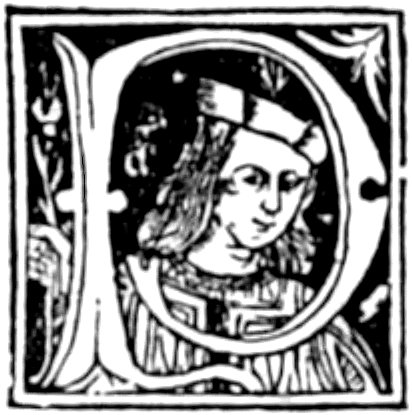
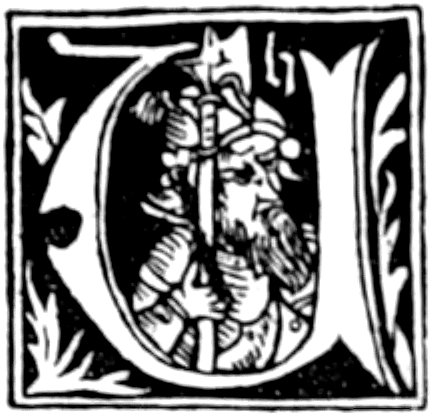
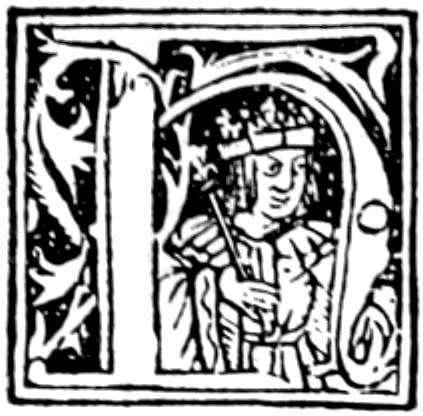
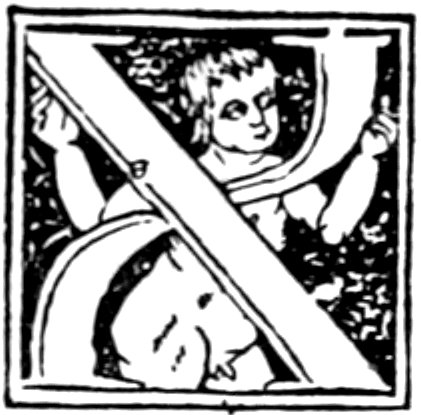
FROM THE ‘CATHOLICON’ OF J. WOLFF, 1503
[208]
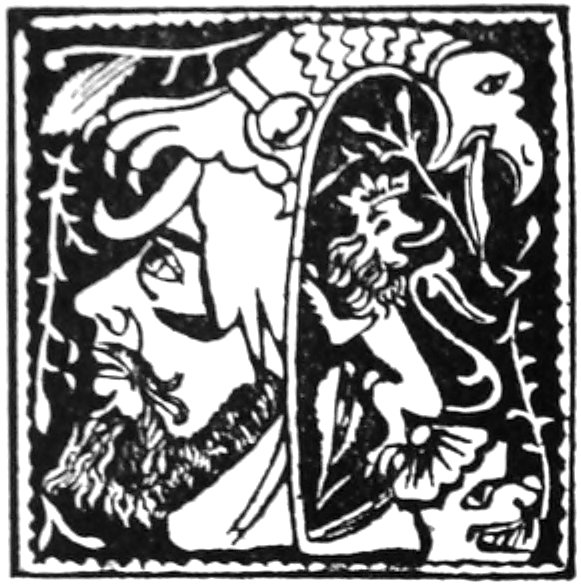
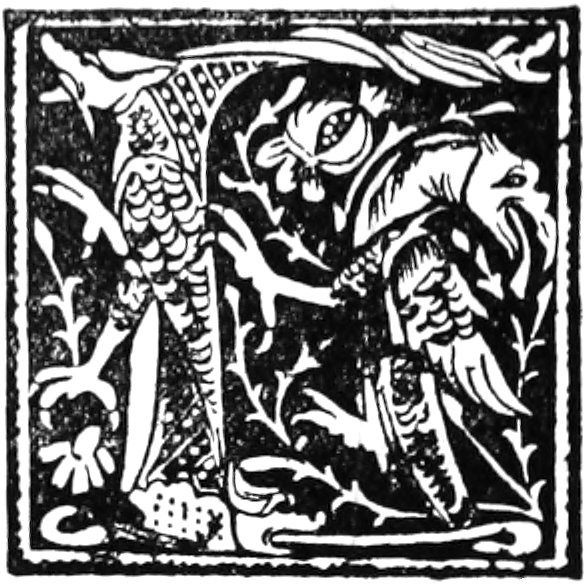
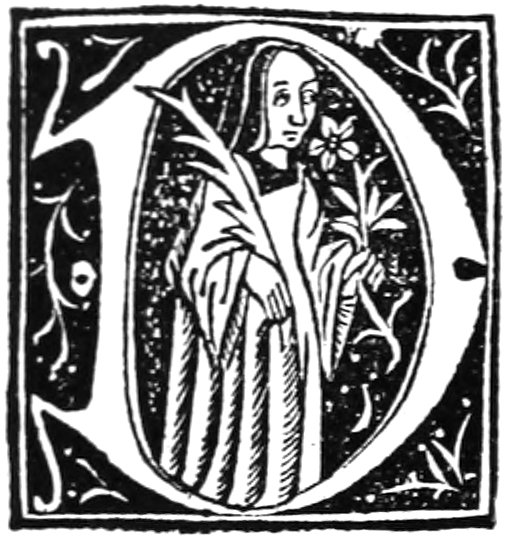
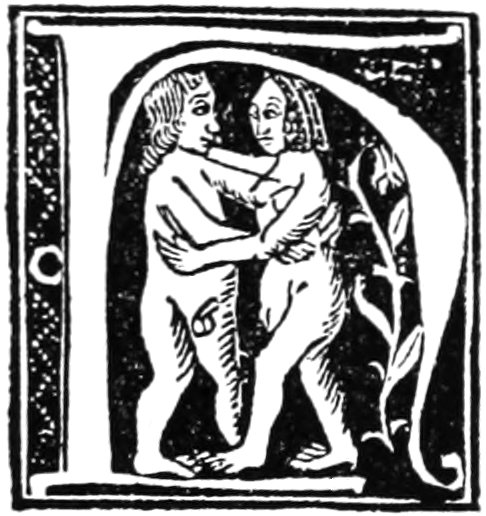
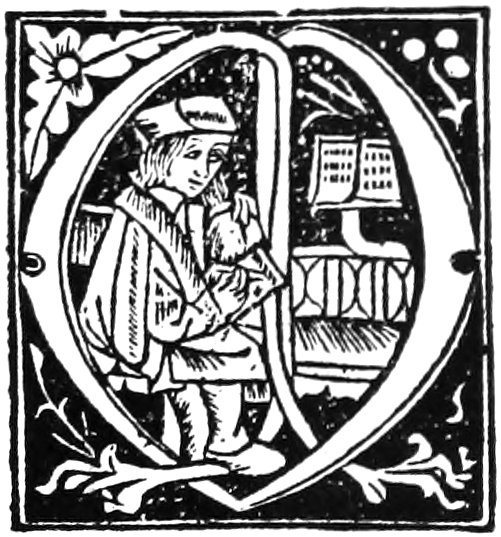
FROM AN UNIDENTIFIED ‘PROPRIETAIRE’
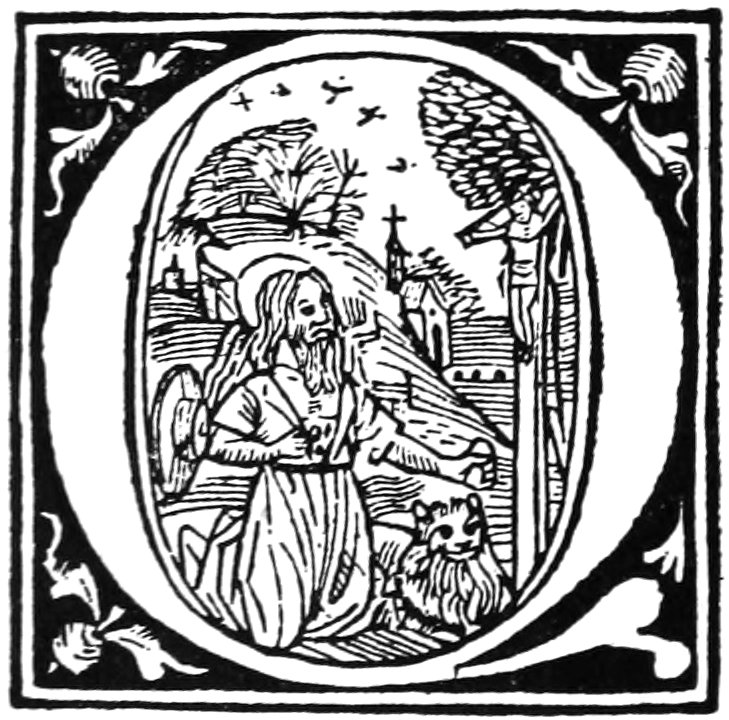
FROM ‘AUREUM OPUS’
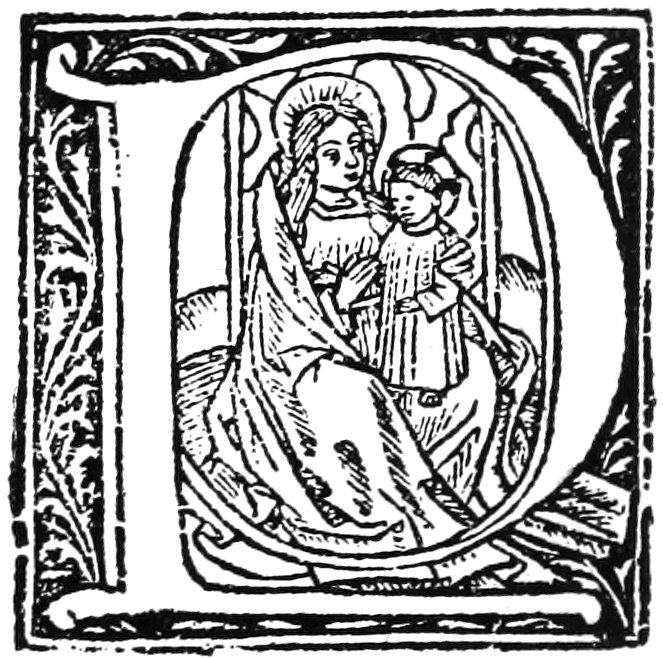
FROM ‘PLUSIEURS GENTILLESSES’ ETC.
[209]
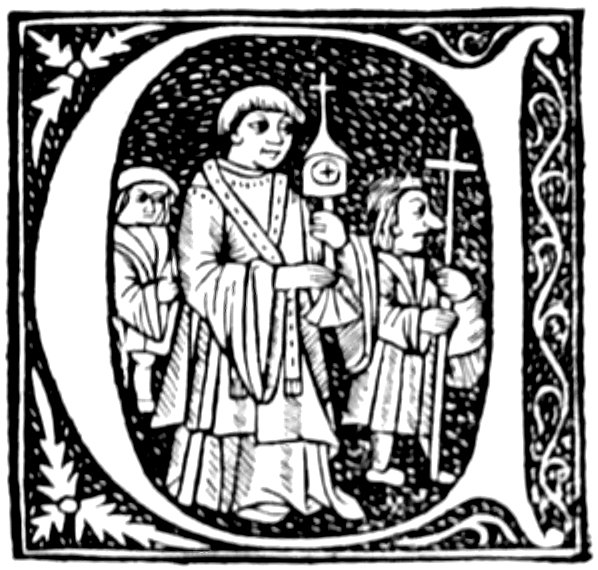
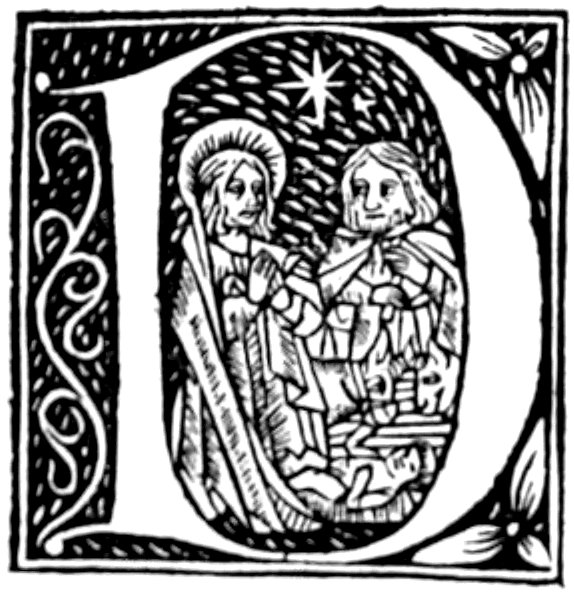
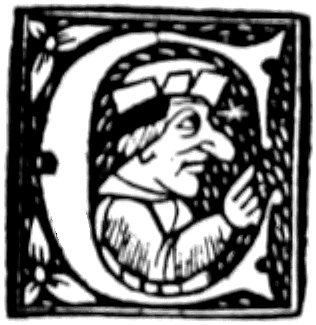
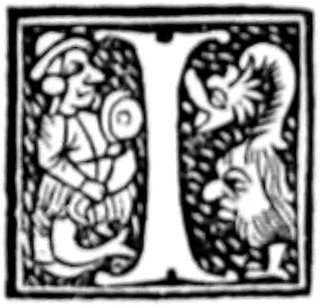
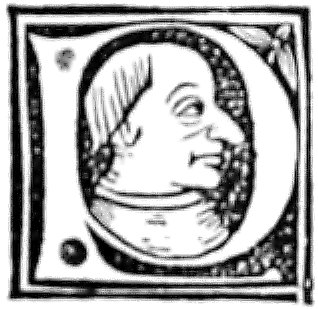
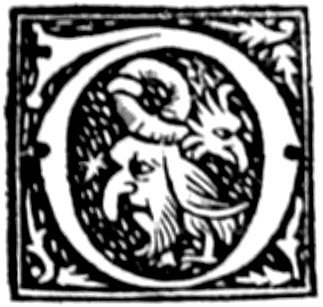

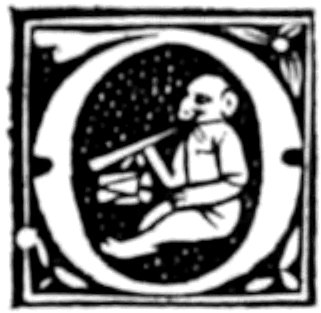
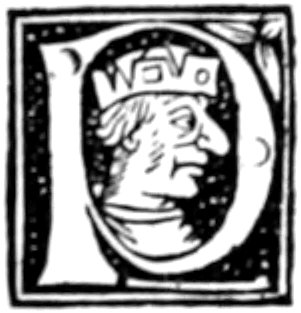
FROM MAGNINI’S ‘REGIMEN SANITATIS,’ BY FRADIN
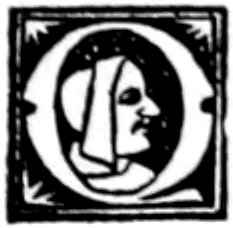
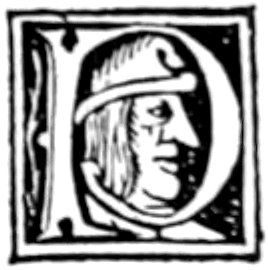

INITIALS BY SACCON
[210]
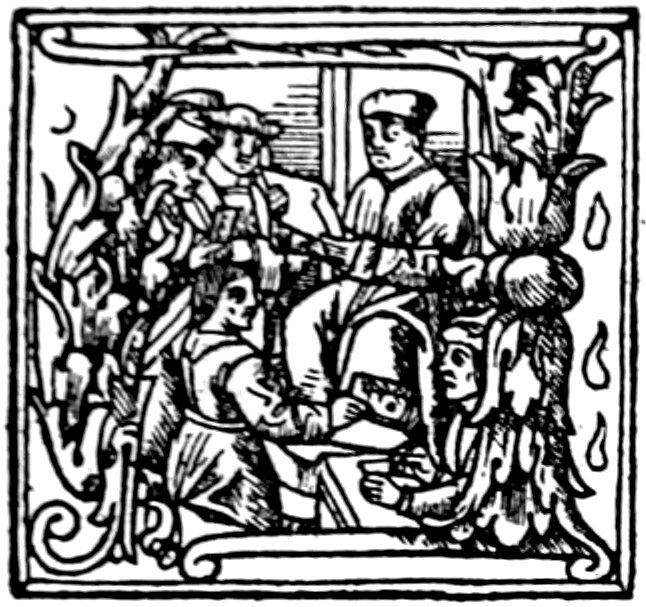
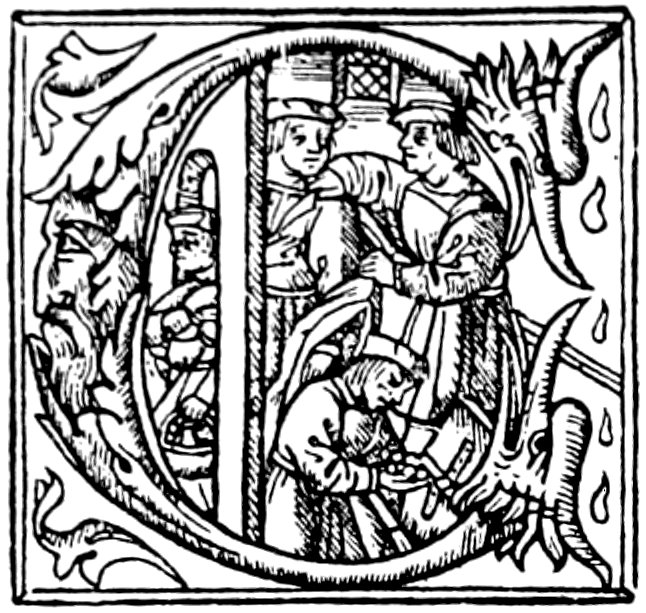
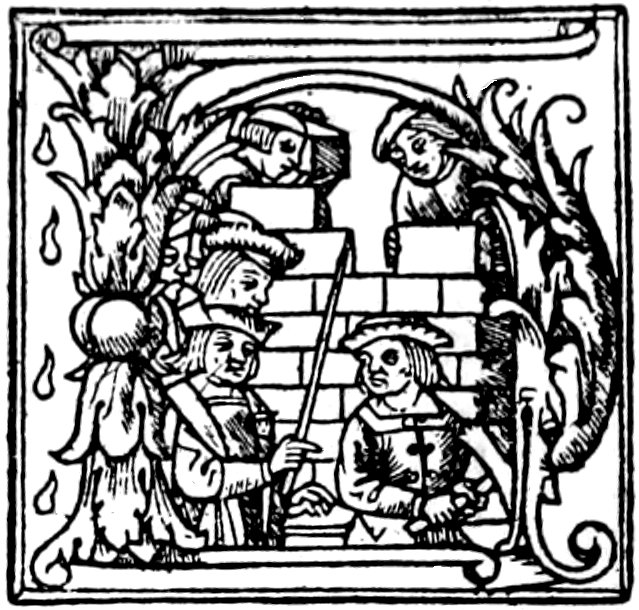
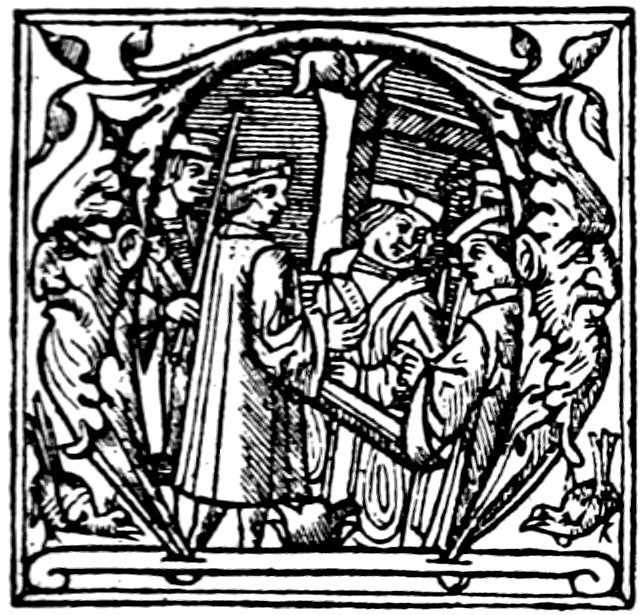
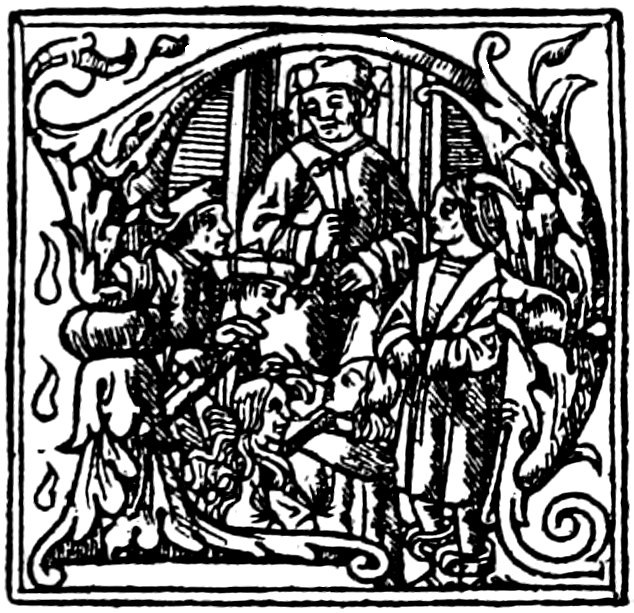
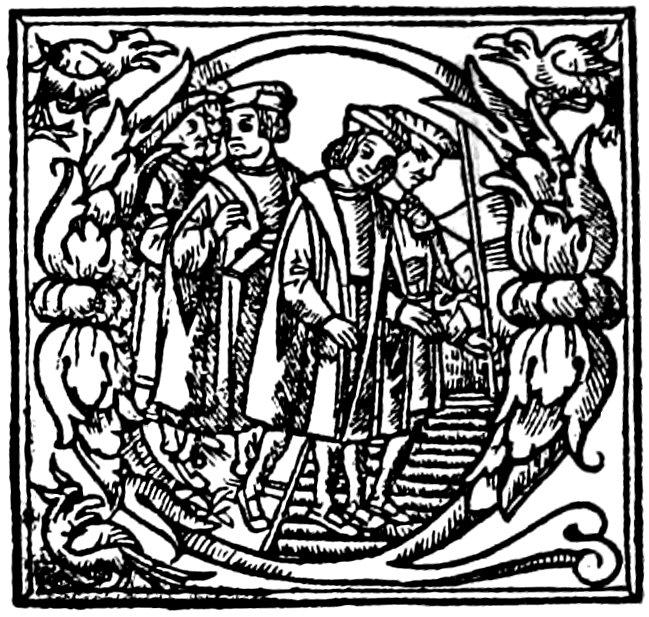
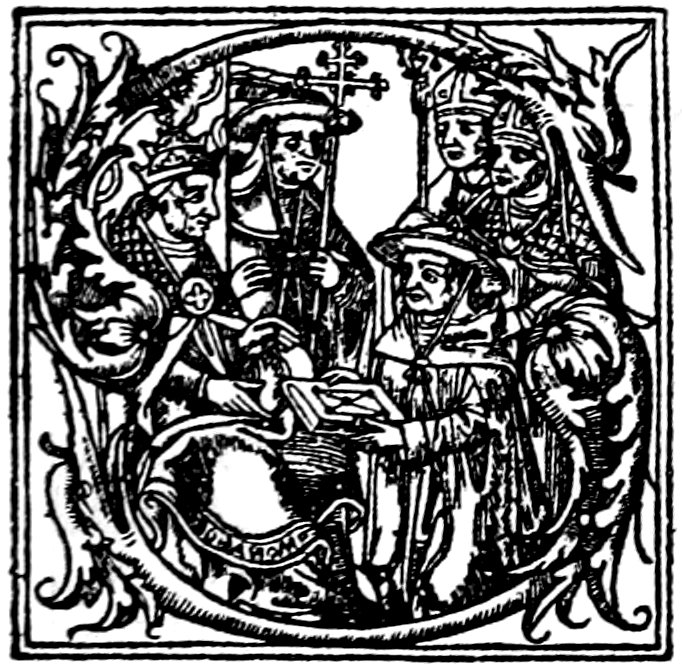
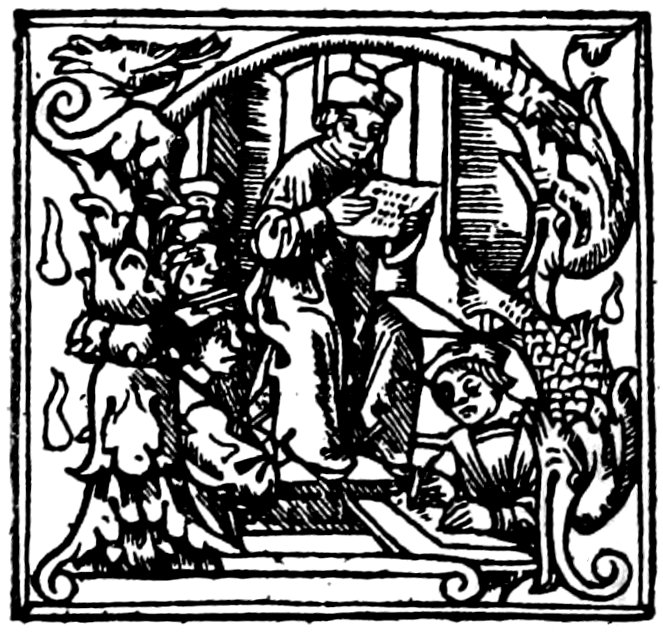
INITIALS BY BLANCHARD AND OTHER PRINTERS
[211]
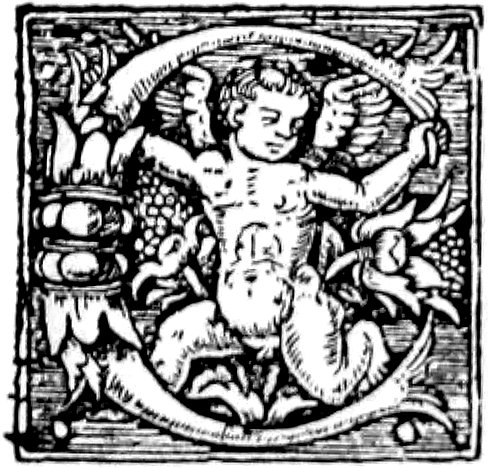
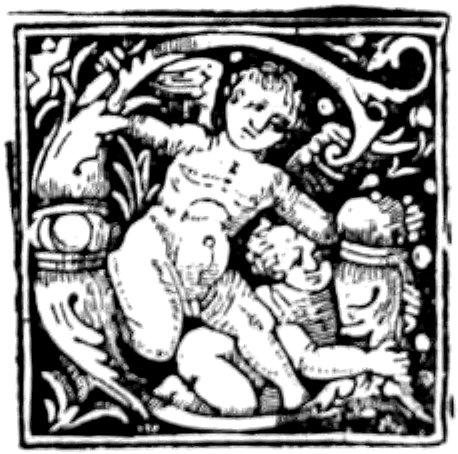
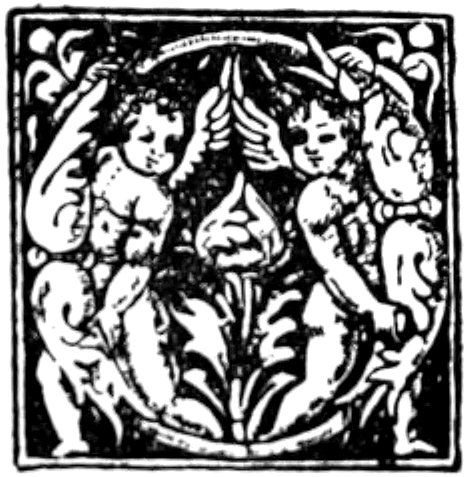
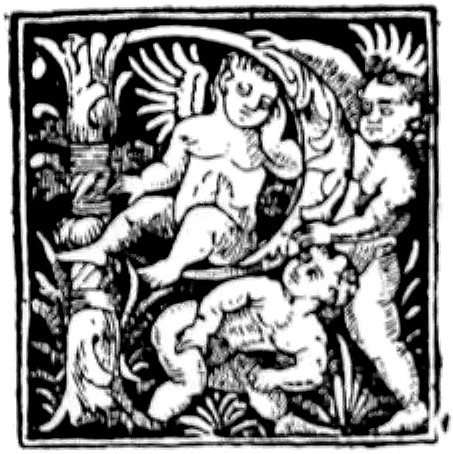
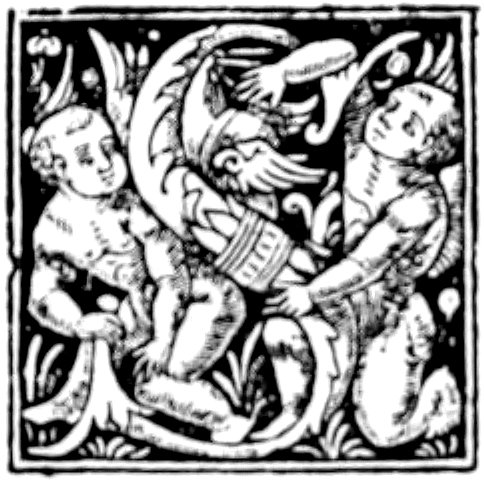
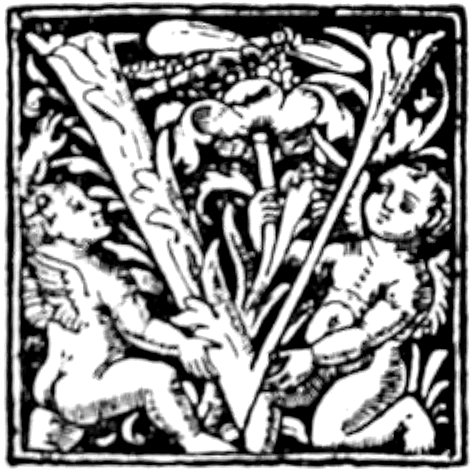
CHILDREN’S ALPHABET BY FRADIN
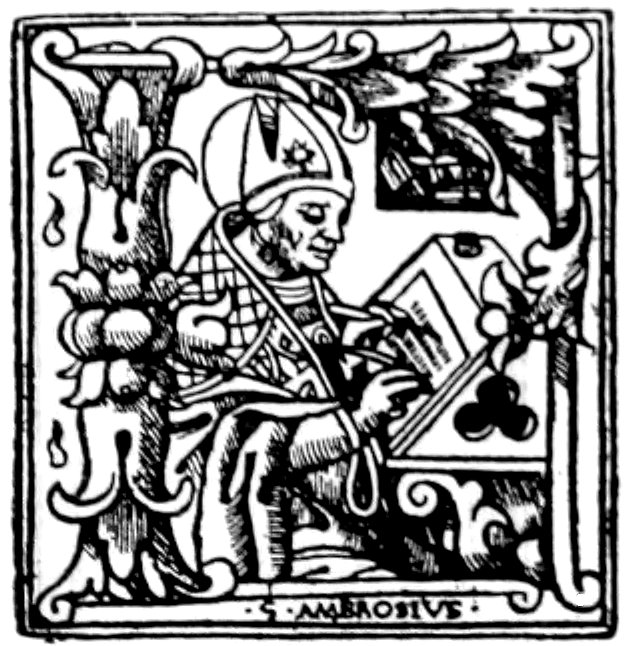
FROM WORKS OF ST. AMBROSE
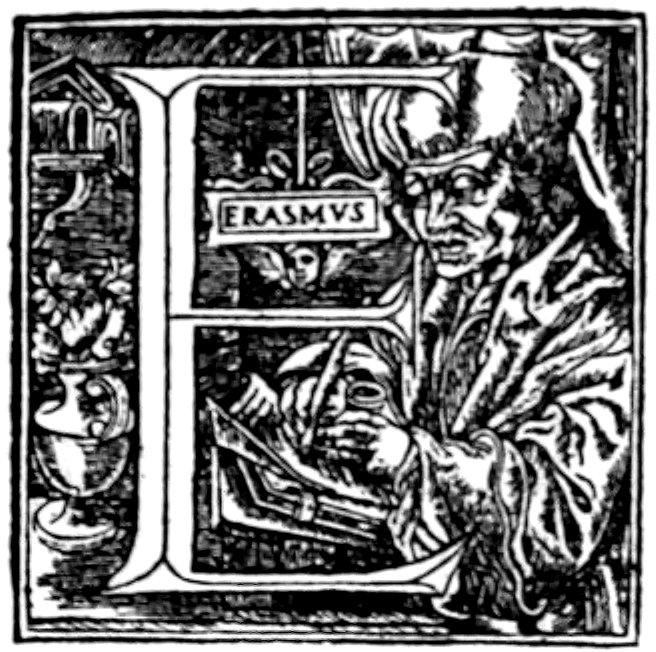
PORTRAIT OF ERASMUS
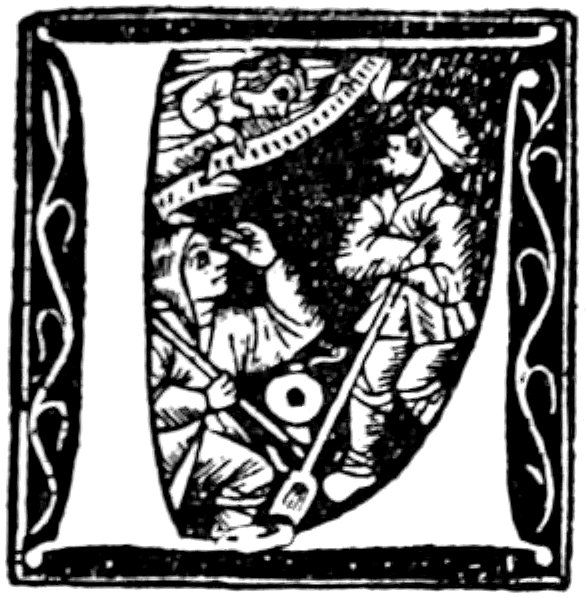
FROM A LYONS BIBLE
[212]
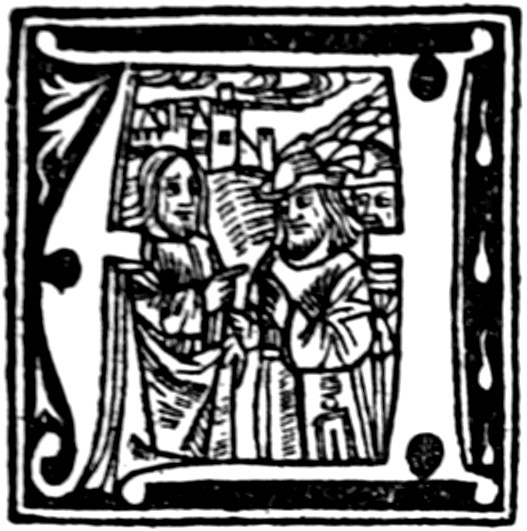
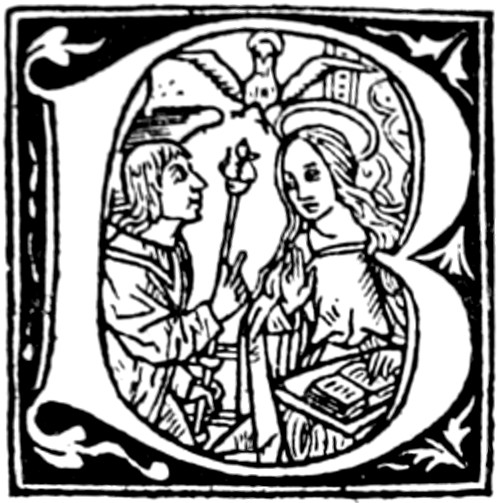
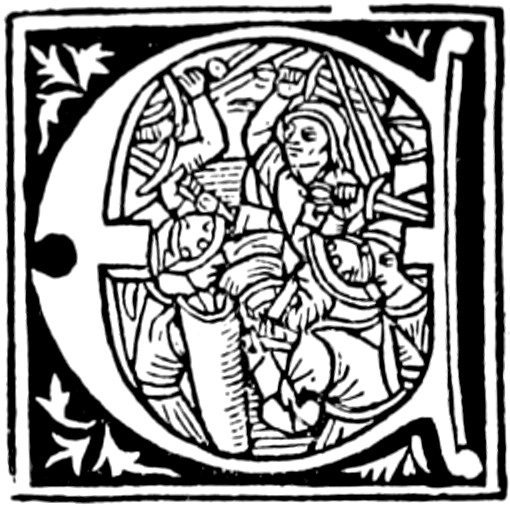
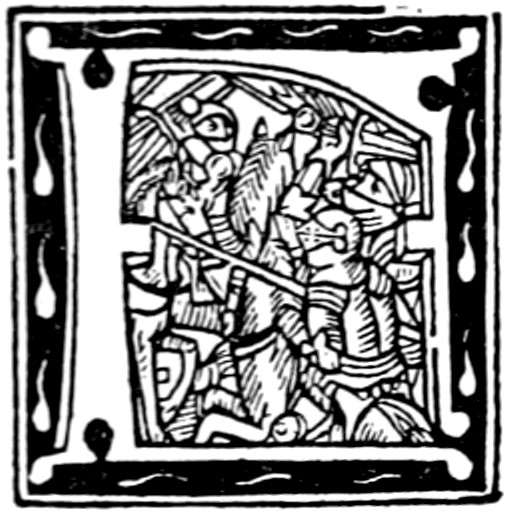
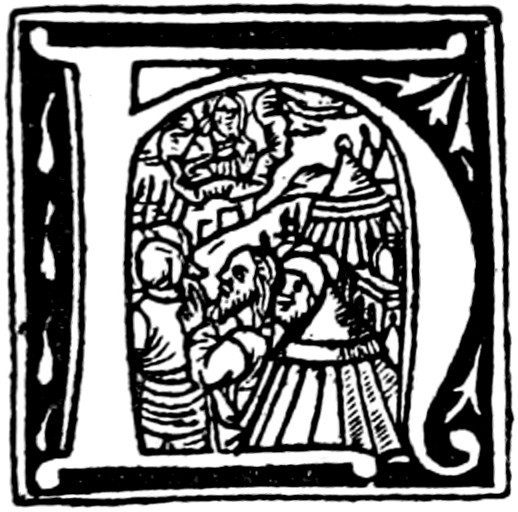
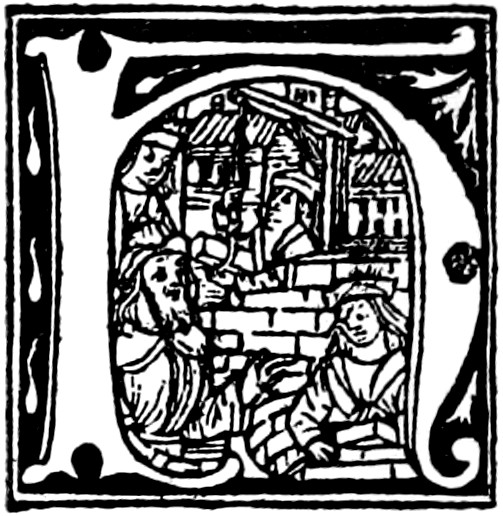
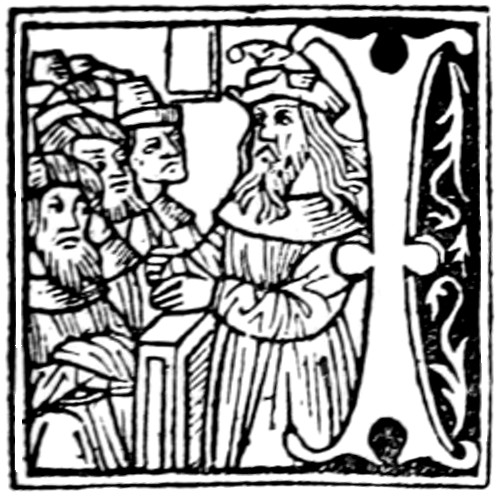
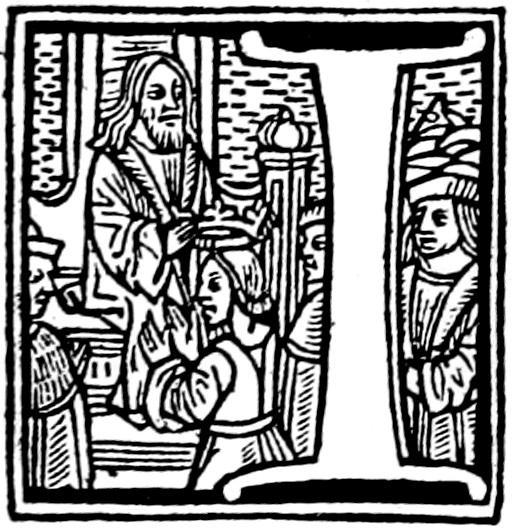
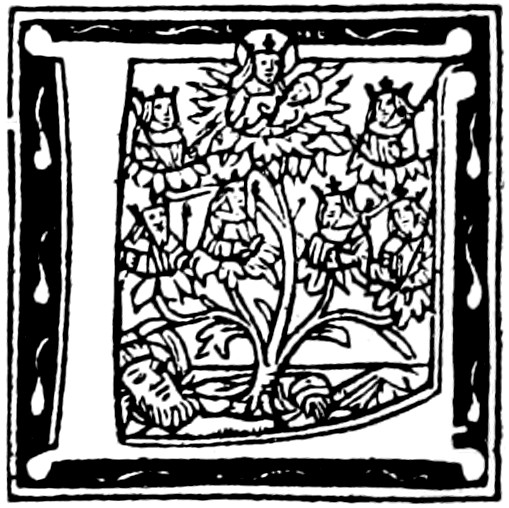
FROM THE ‘BIBLIA CUM SUMMARIIS CONCORDANTIIS,’ ETC., BY JOHN MOYLIN
[213]
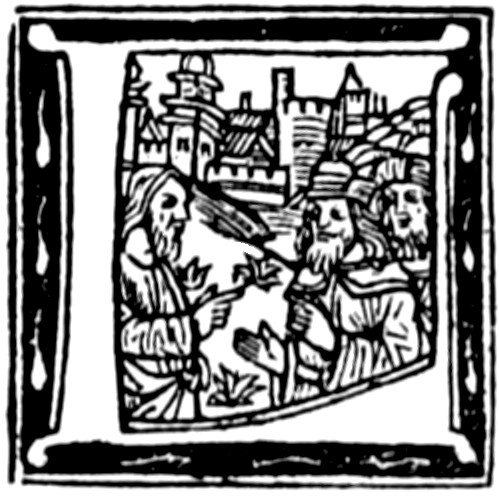
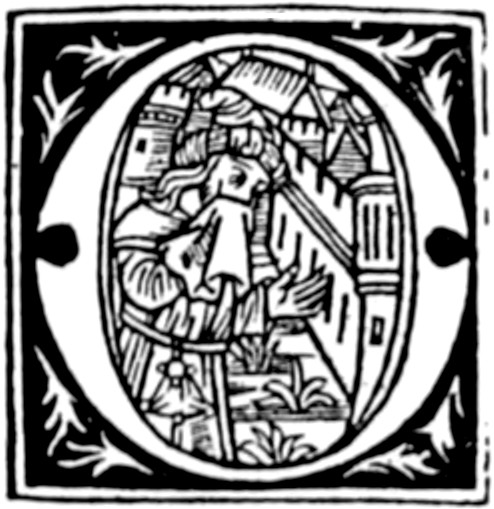
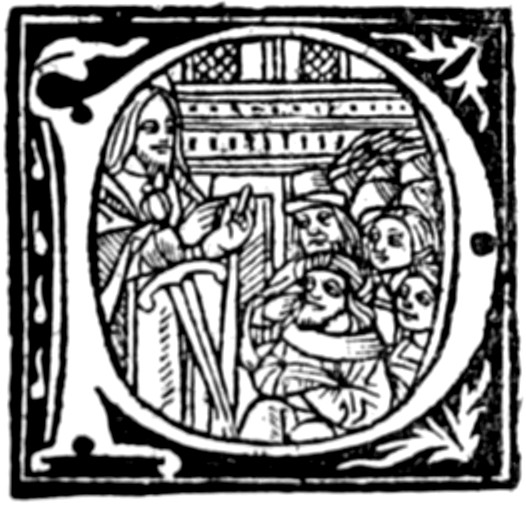
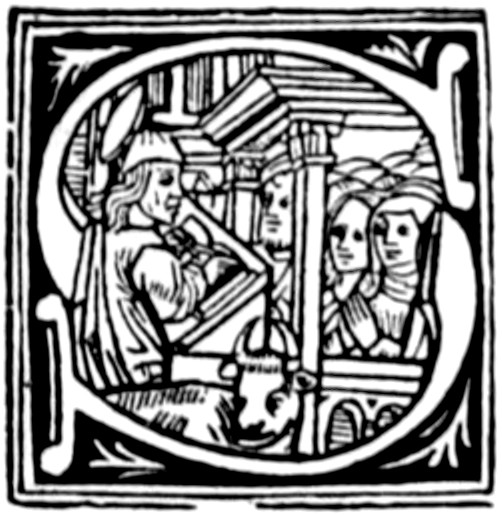
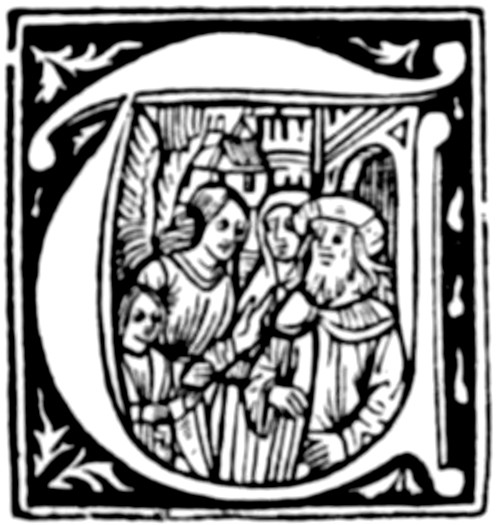

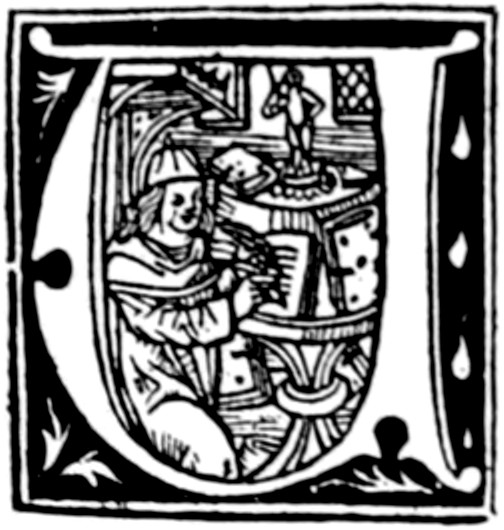
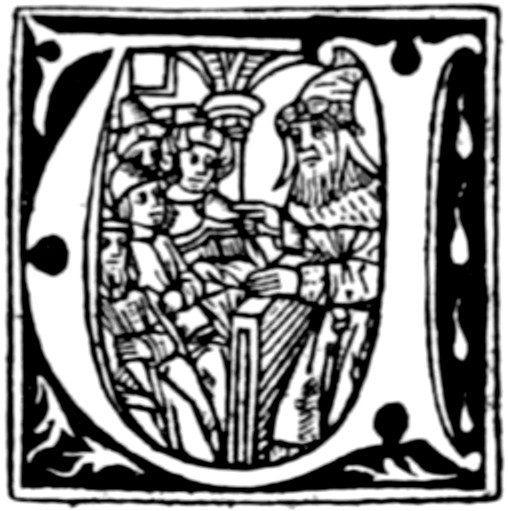
FROM THE ‘BIBLIA CUM SUMMARIIS CONCORDANTIIS,’ ETC., BY JOHN MOYLIN
[214]
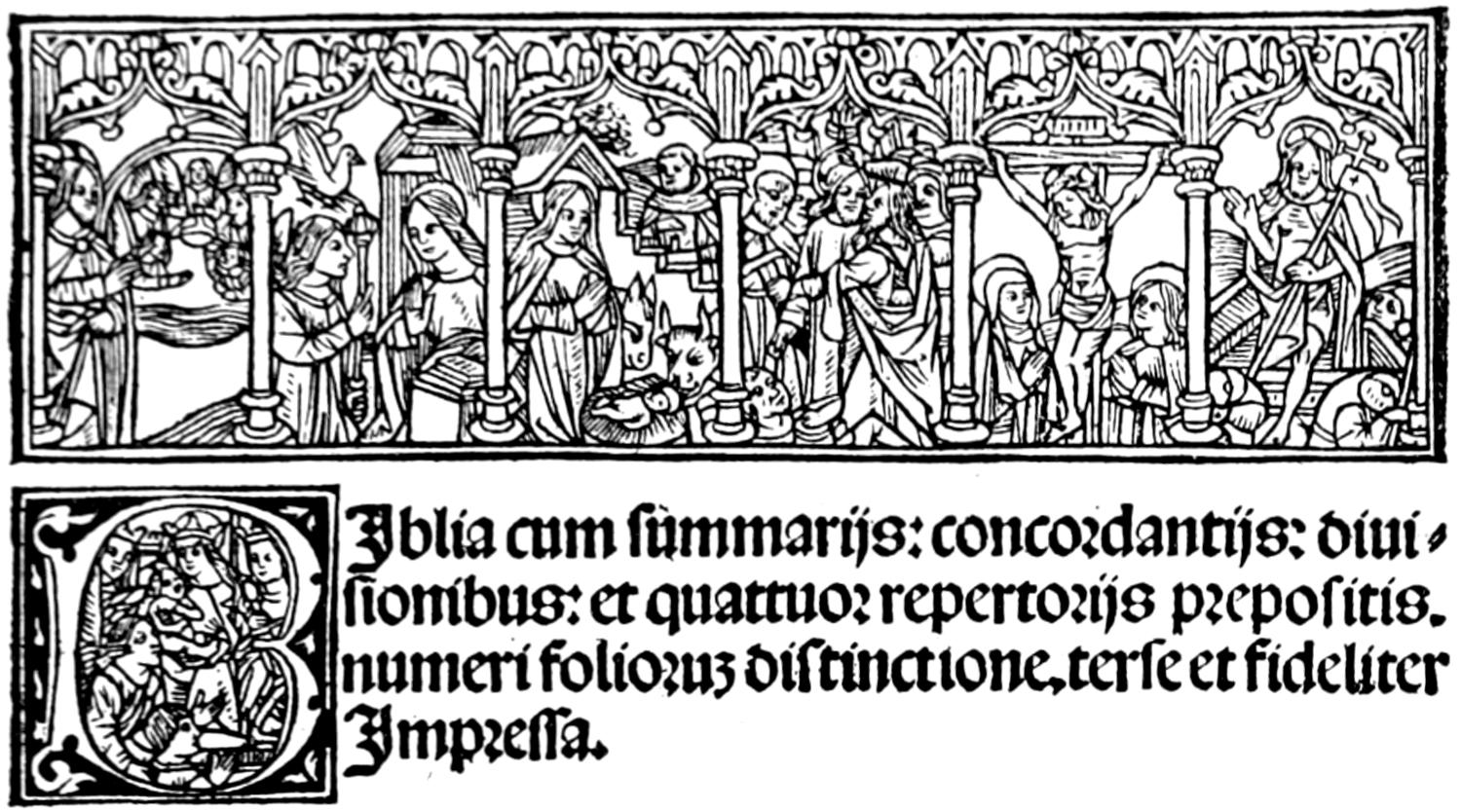
FROM THE ‘BIBLIA CUM SUMMARIIS CONCORDANTIIS’
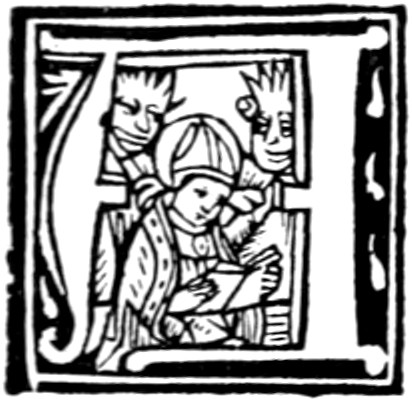
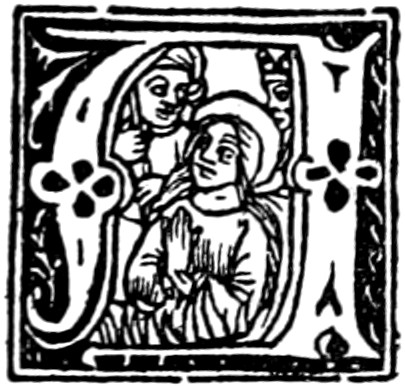
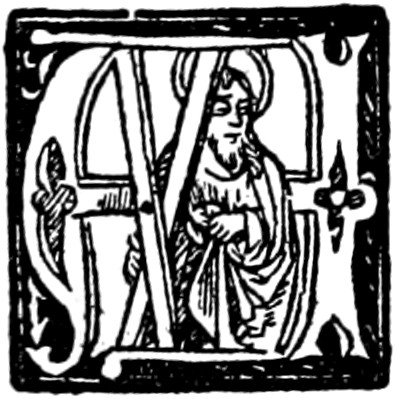

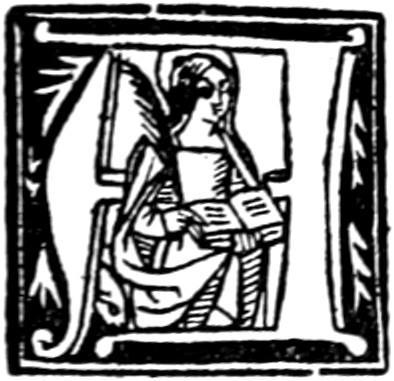
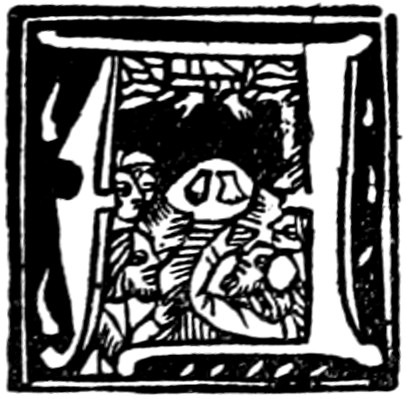
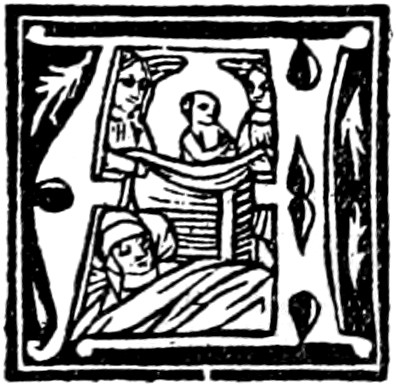
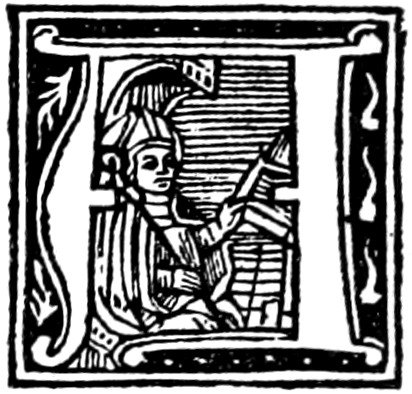
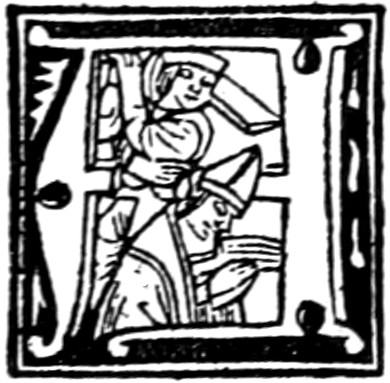


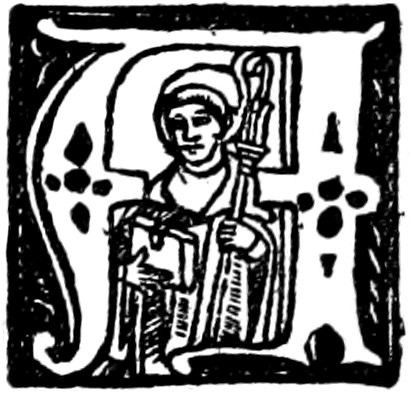
FROM THE ‘CATALOGUS SANCTORUM’ OF SACCON
[215]
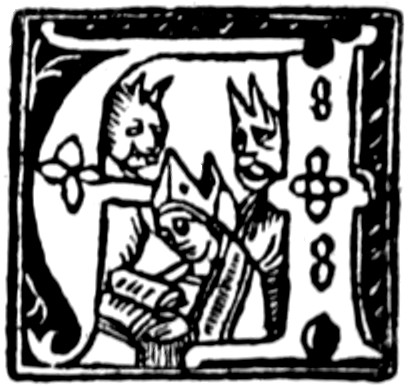
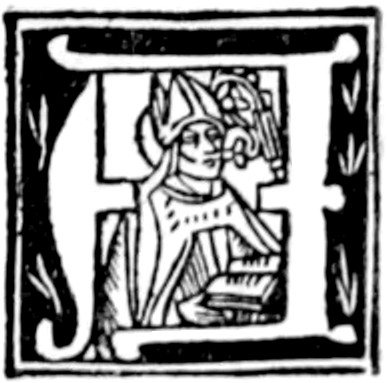
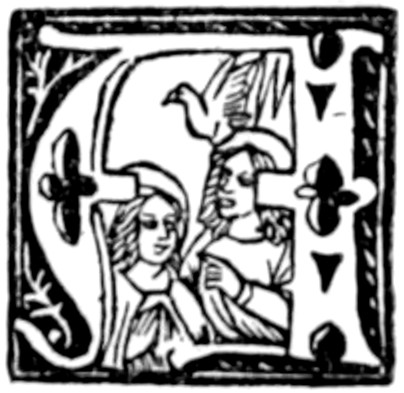
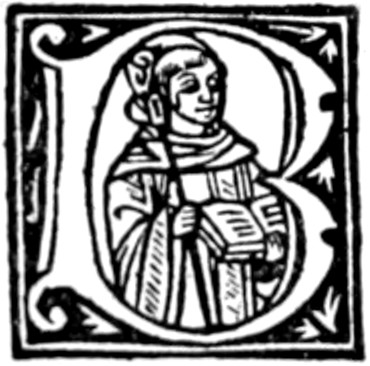
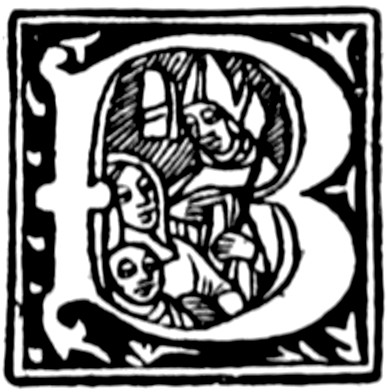
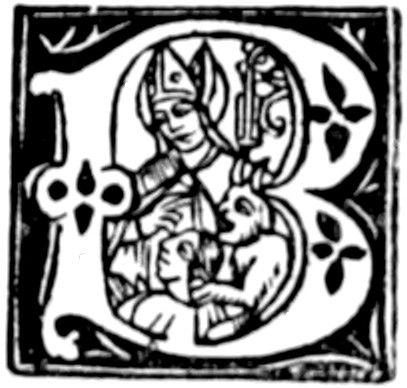
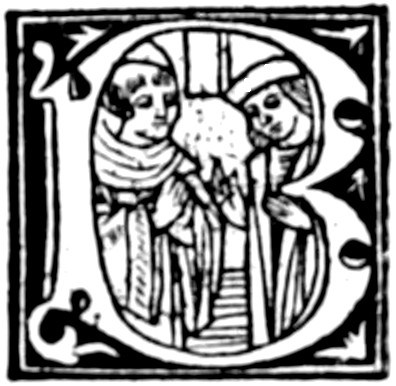
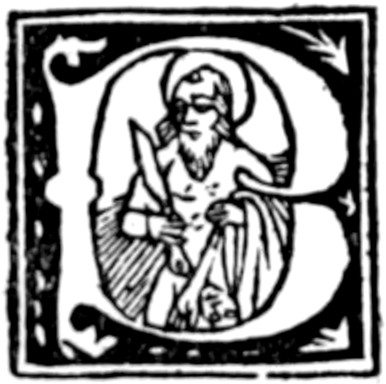

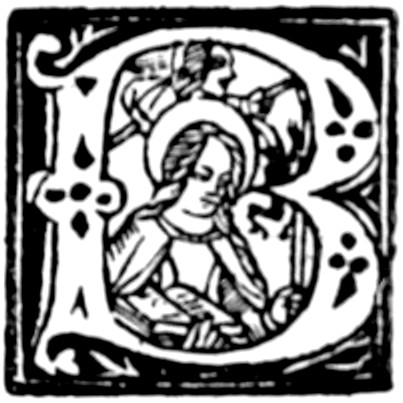
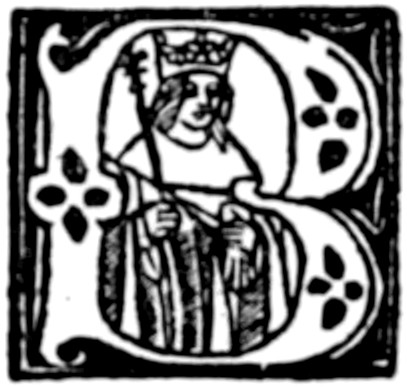
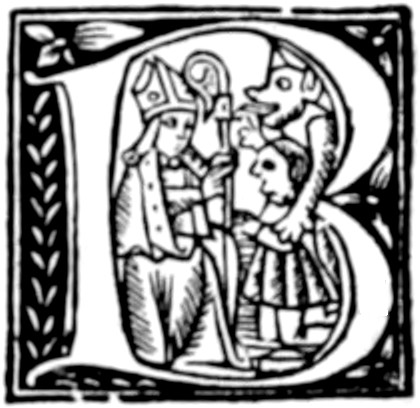
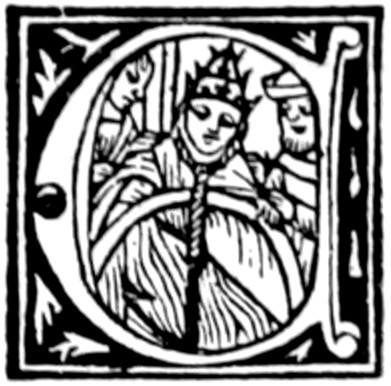
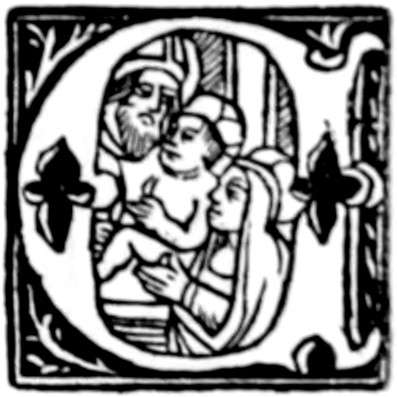
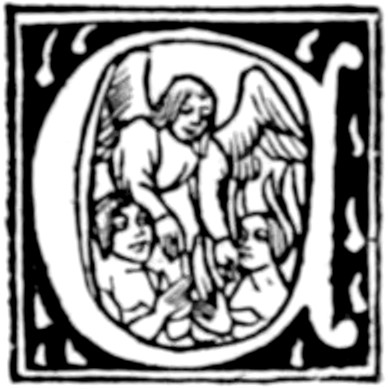
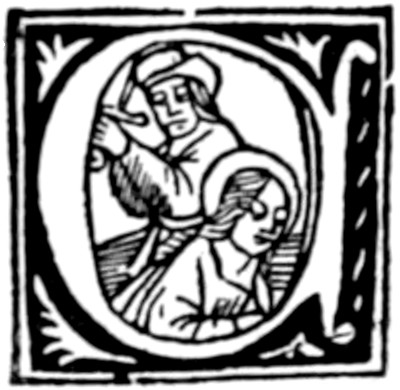
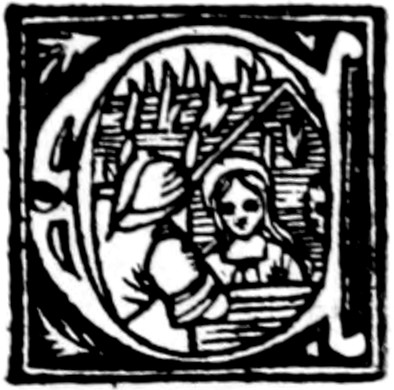
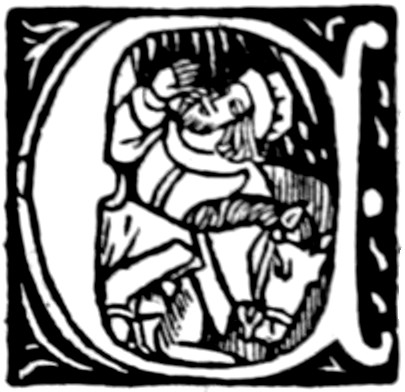
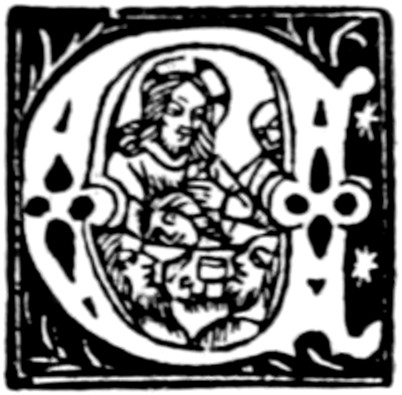
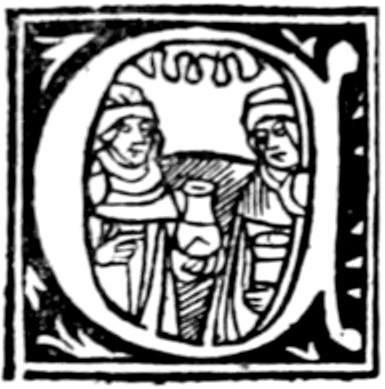
FROM THE ‘CATALOGUS SANCTORUM’ OF SACCON
[216]
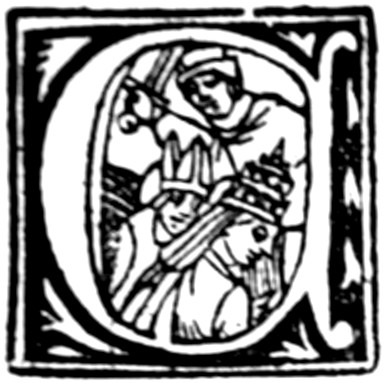
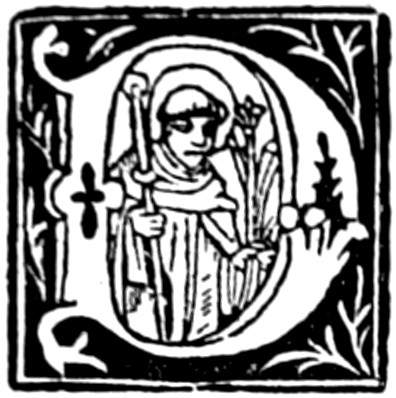
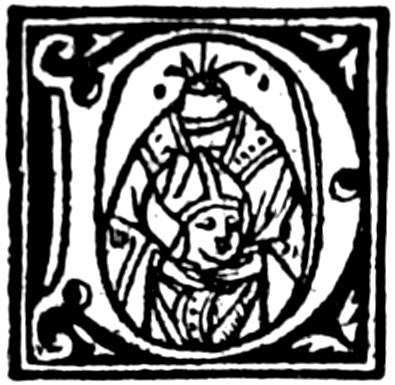
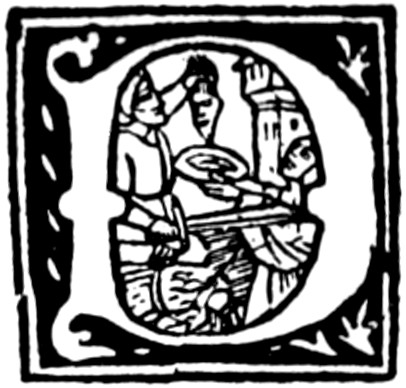
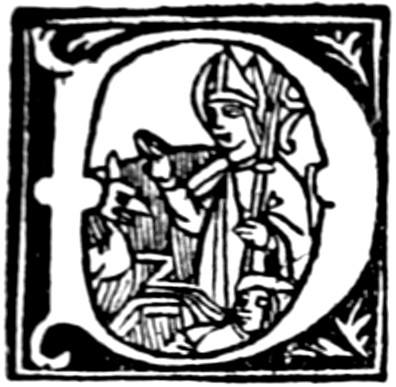
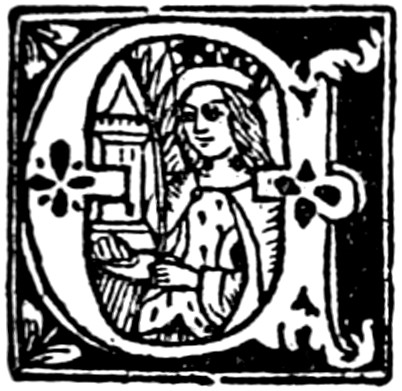
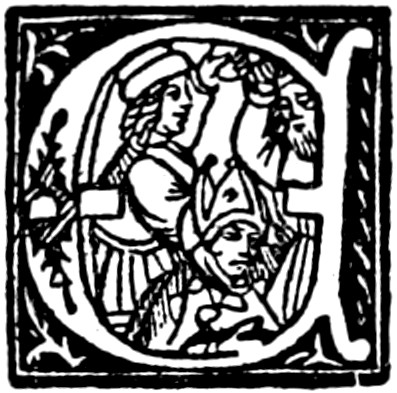
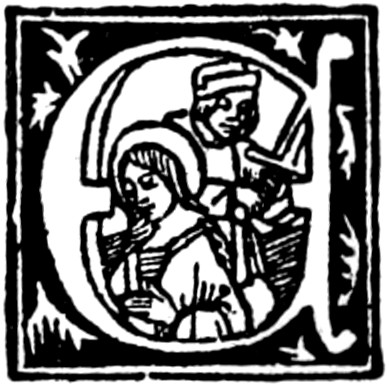
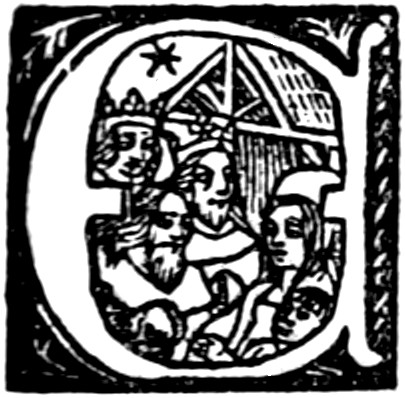
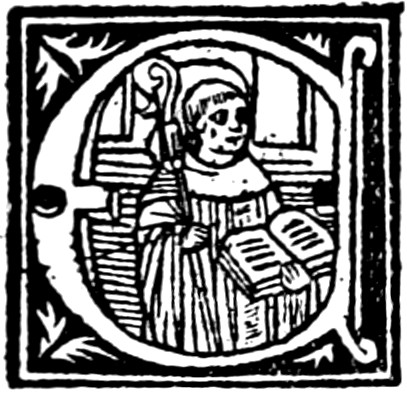
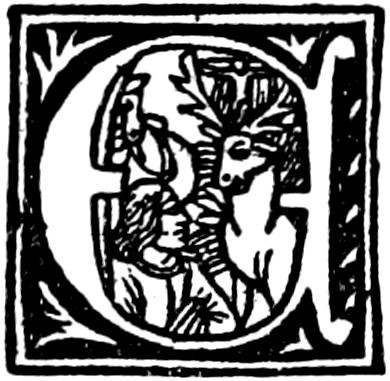
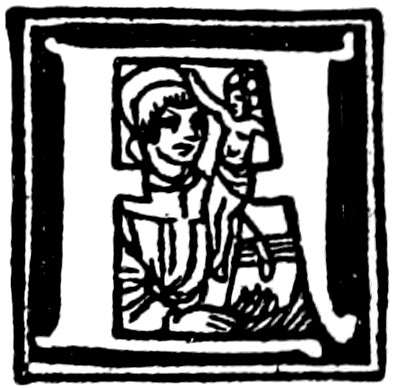
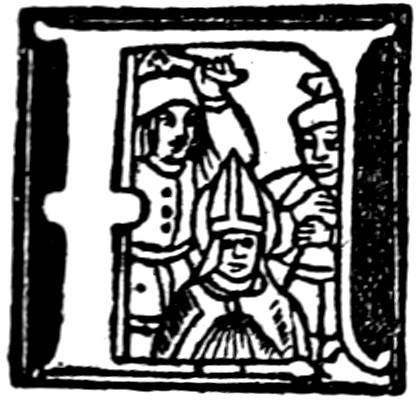
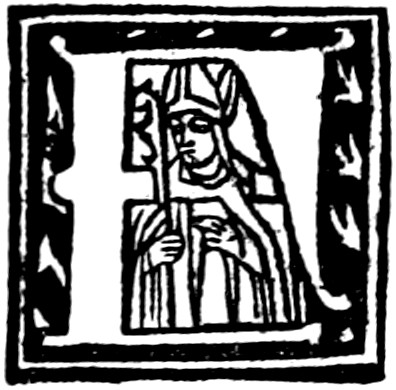
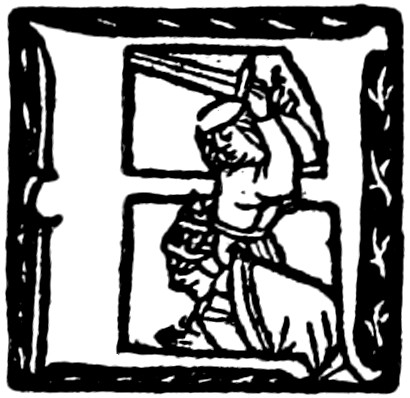
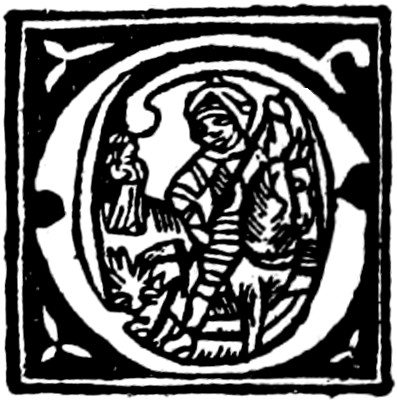
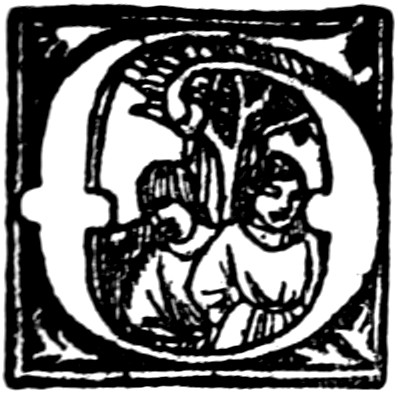
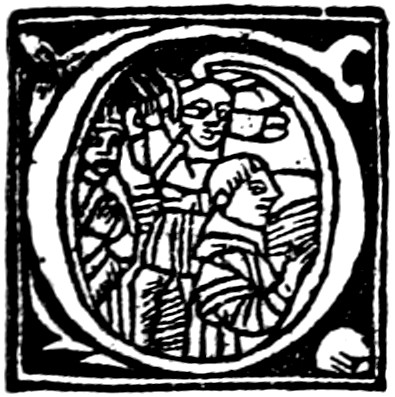
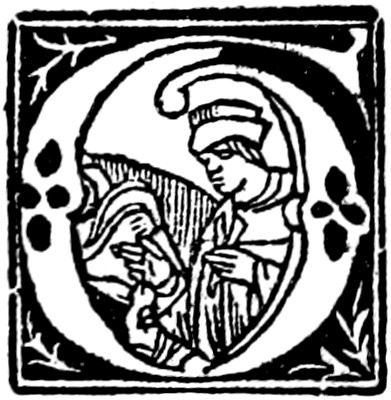
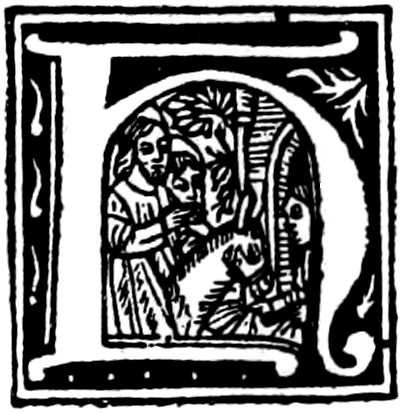
FROM THE ‘CATALOGUS SANCTORUM’ OF SACCON
[217]
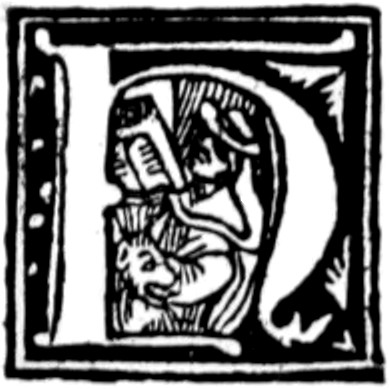
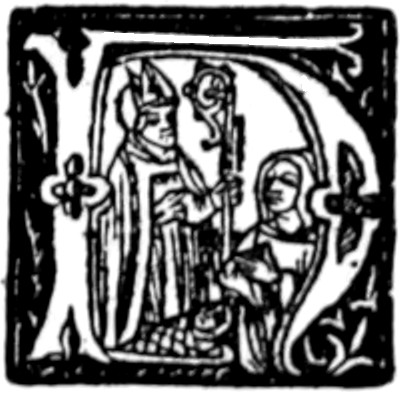
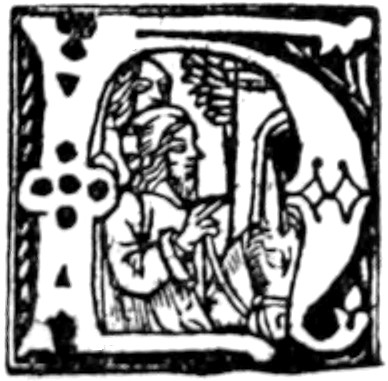
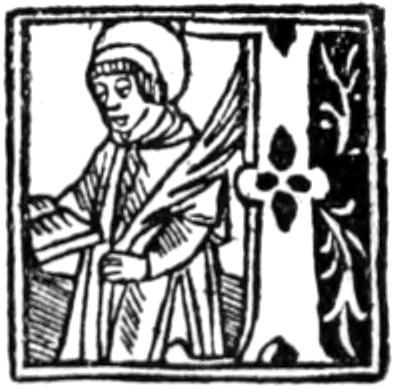
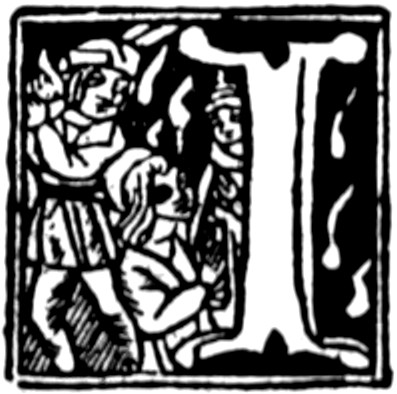
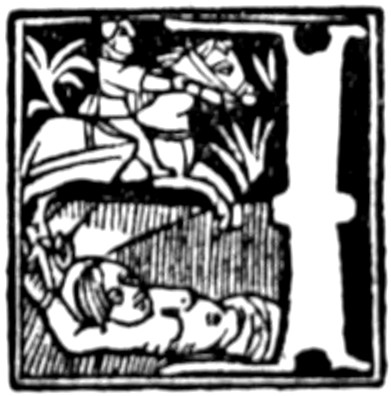
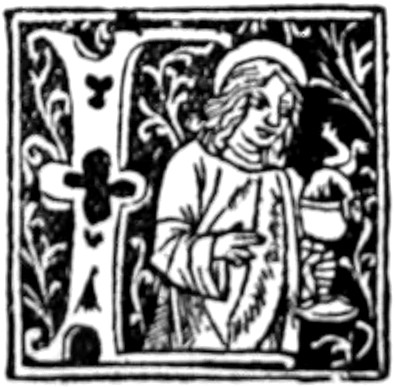
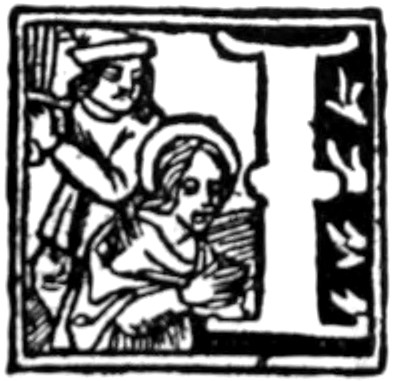
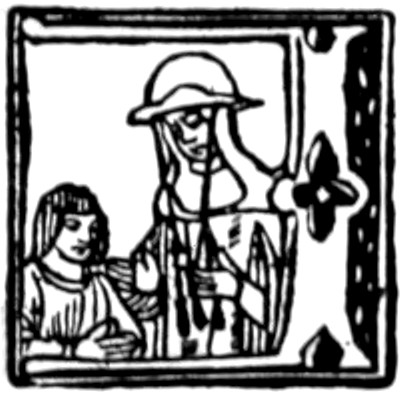
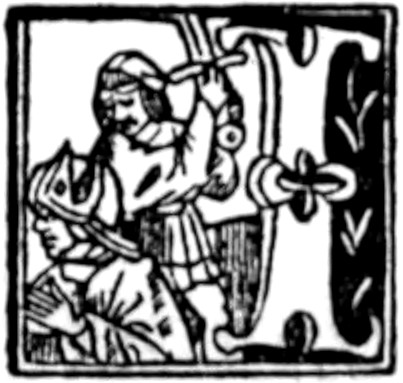
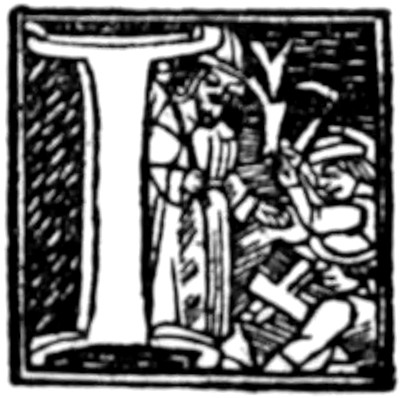
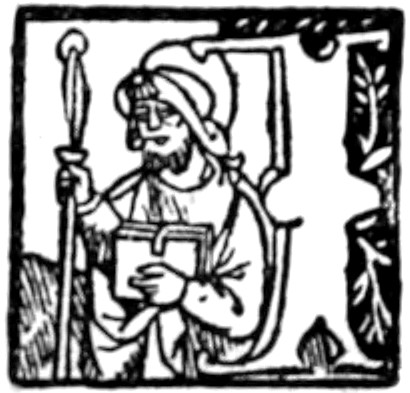
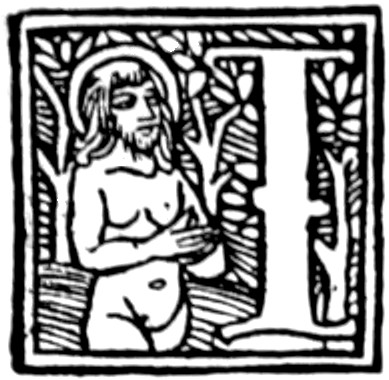

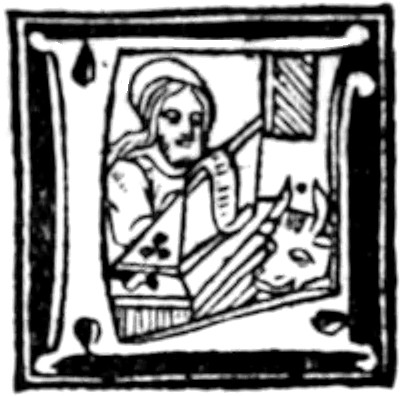
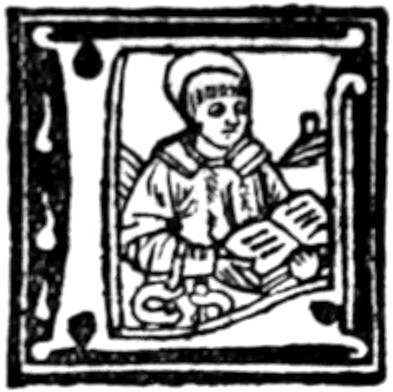
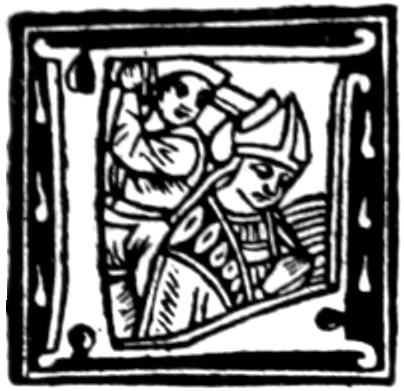
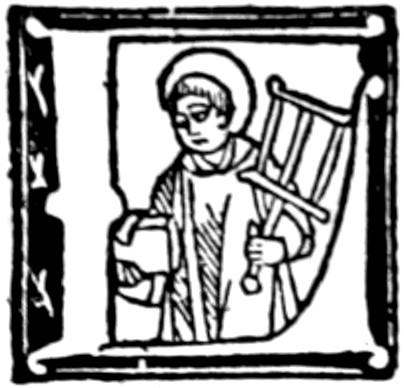
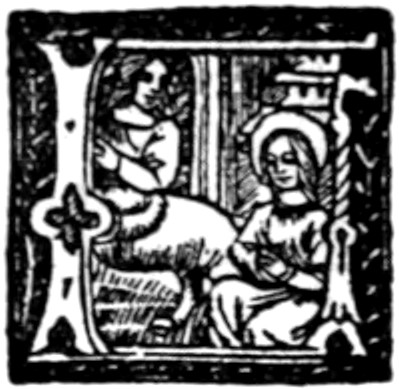
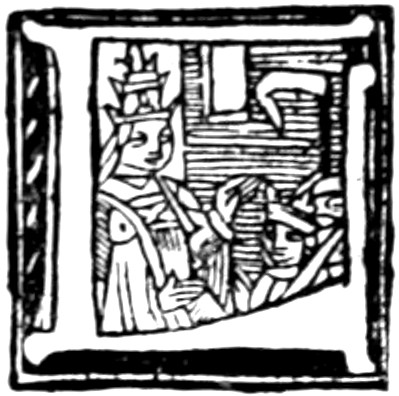
FROM THE ‘CATALOGUS SANCTORUM’ OF SACCON
[218]
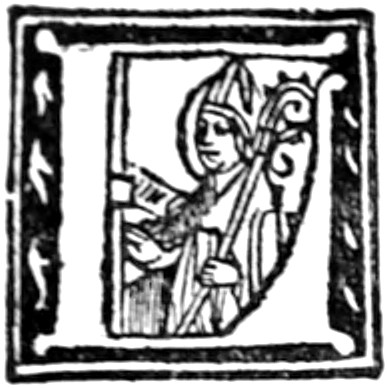
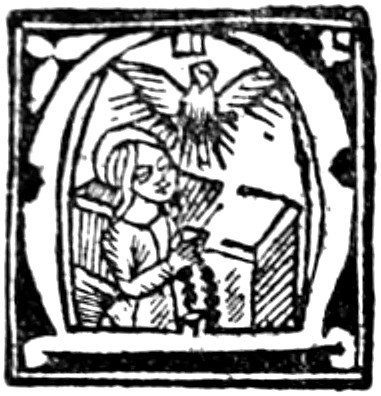
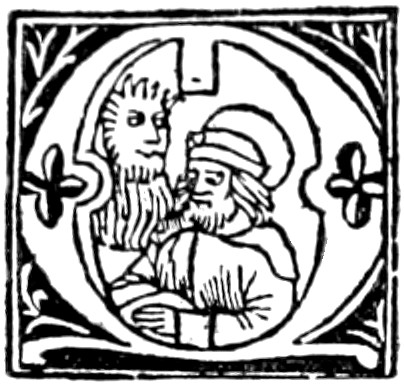
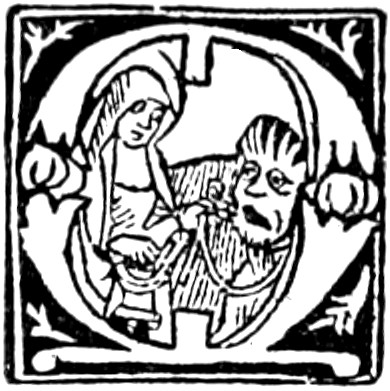
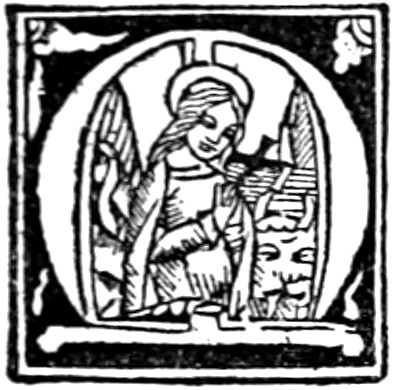

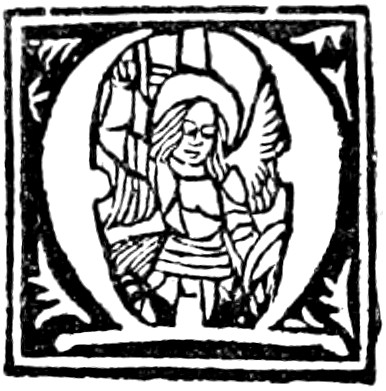
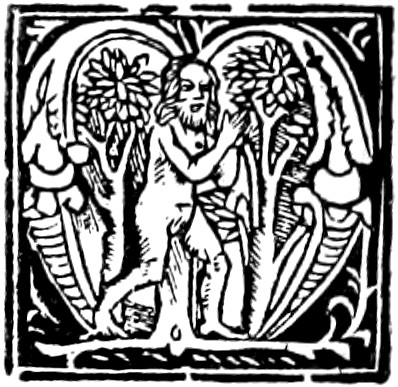
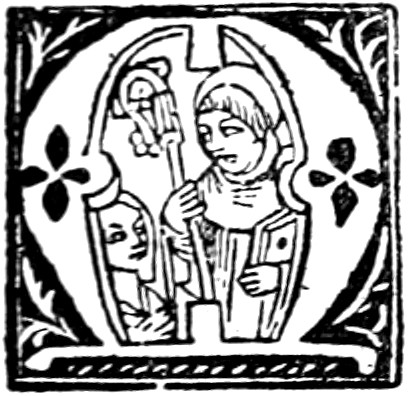
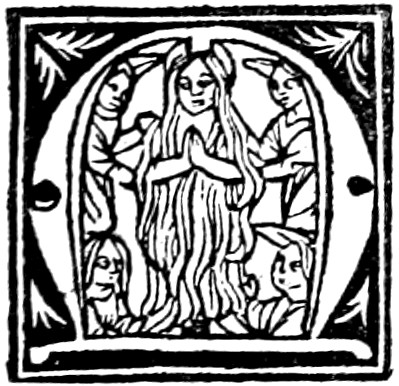



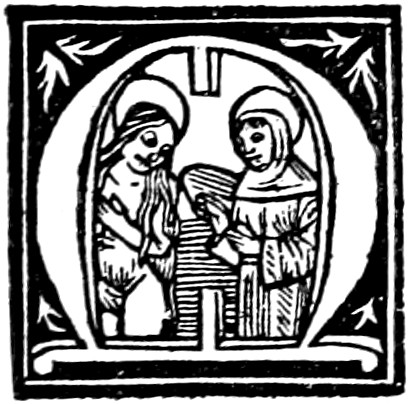
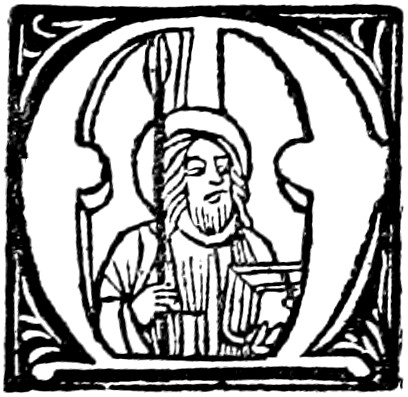
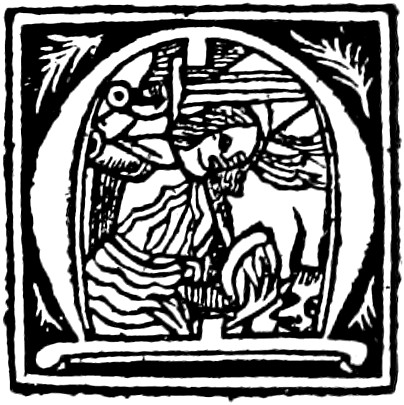
FROM THE ‘CATALOGUS SANCTORUM’ OF SACCON
[219]
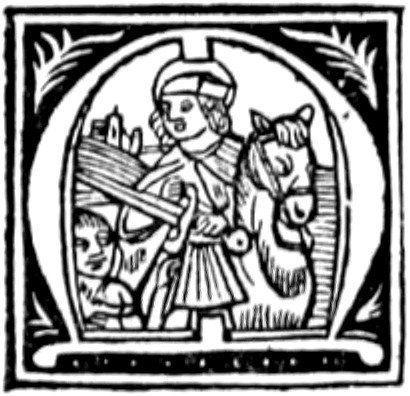
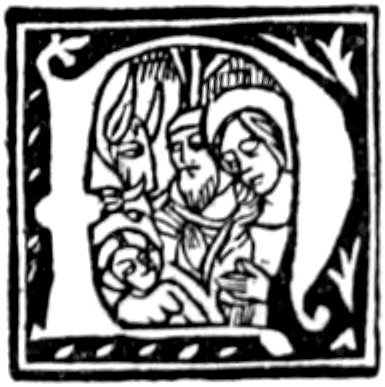
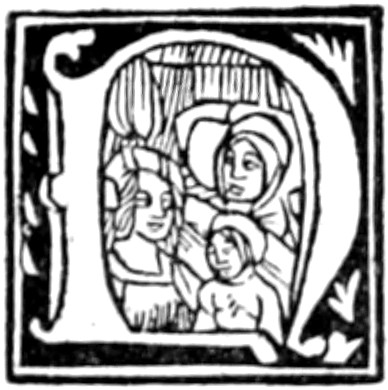
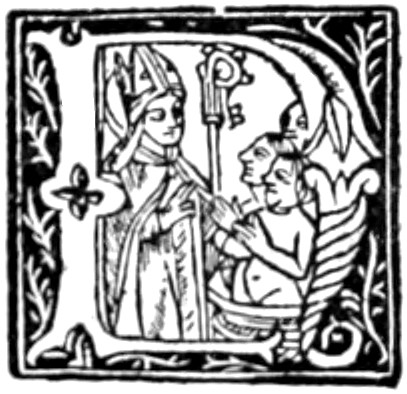
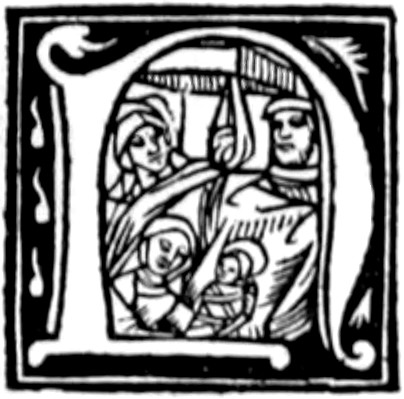
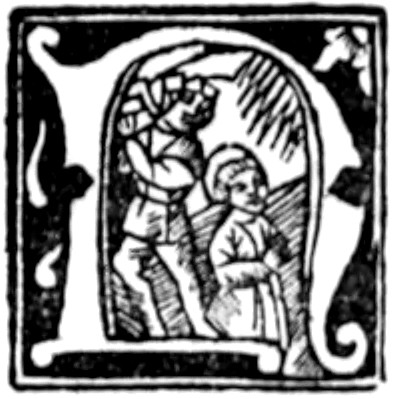
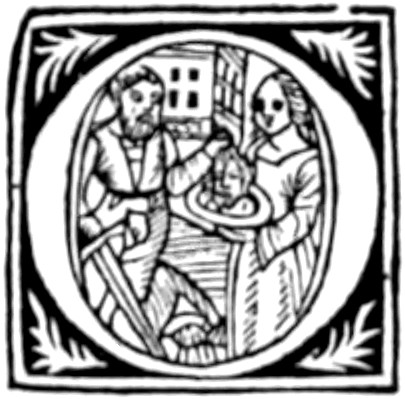
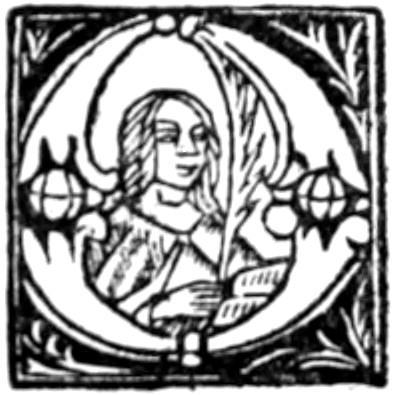
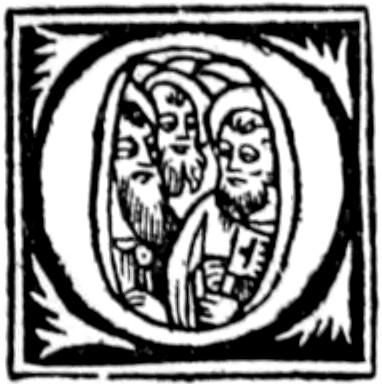
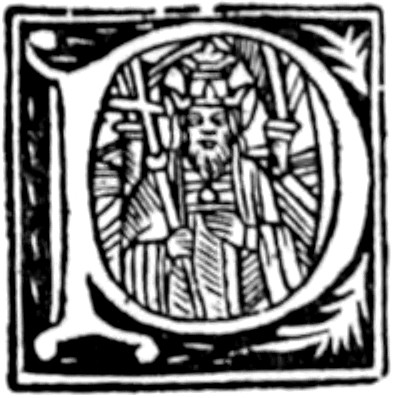
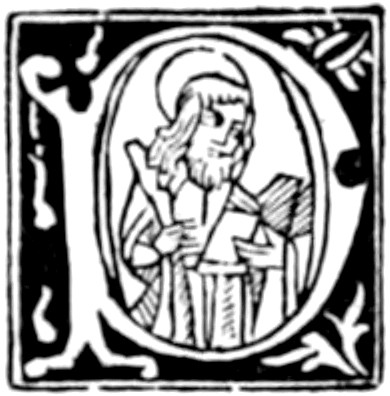
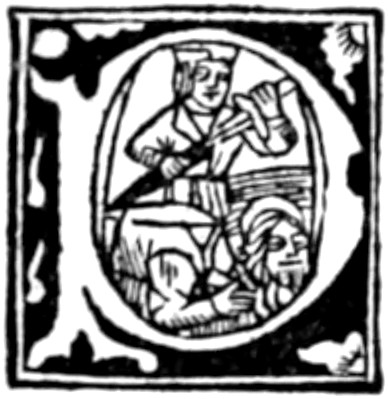
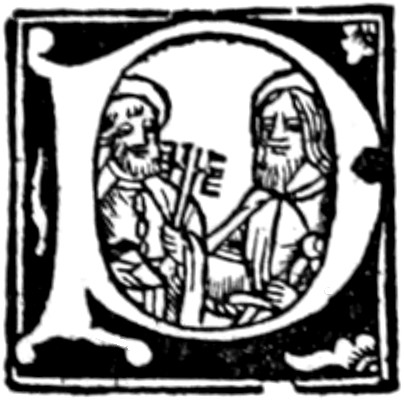
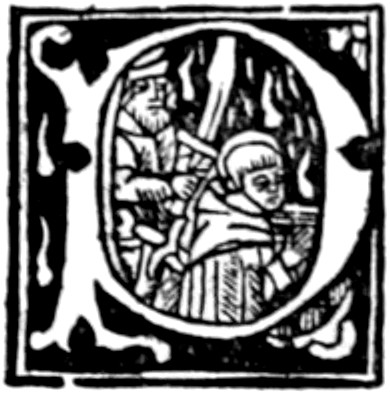
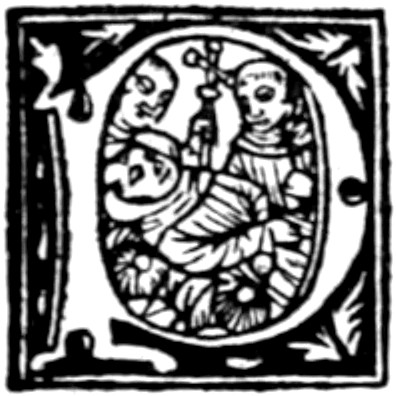
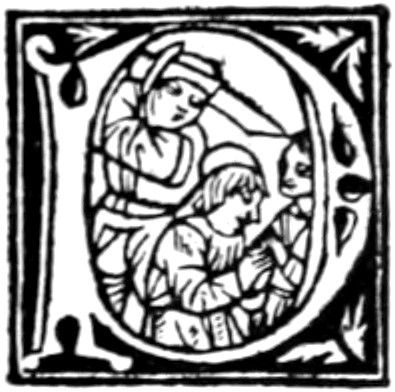
FROM THE ‘CATALOGUS SANCTORUM’ OF SACCON
[220]
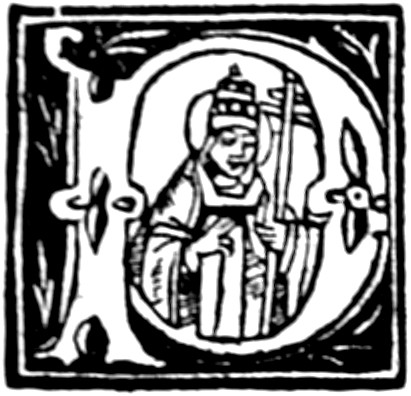
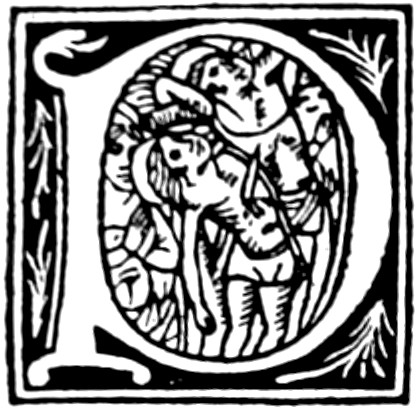
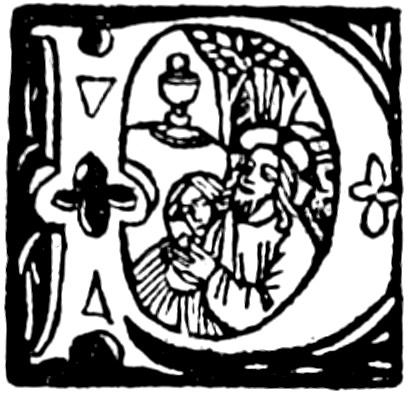
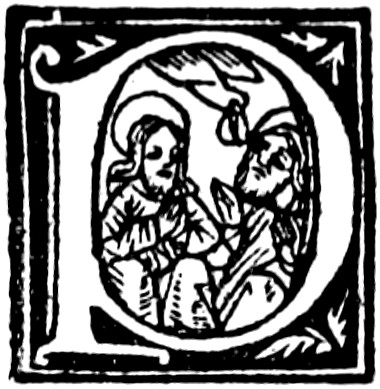
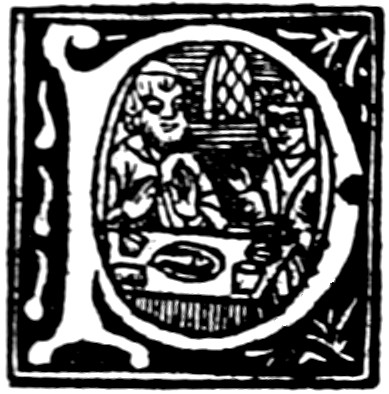
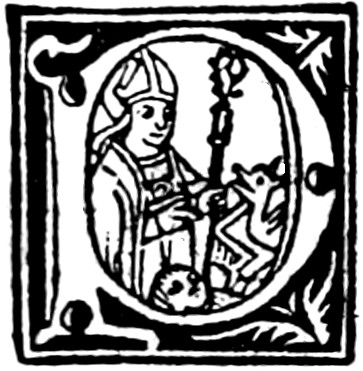
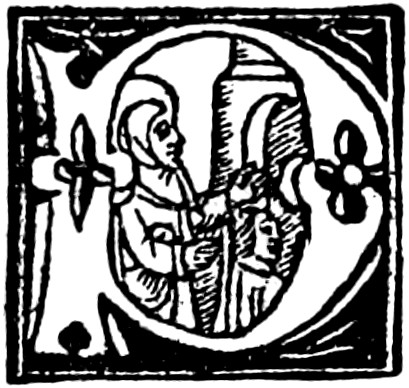
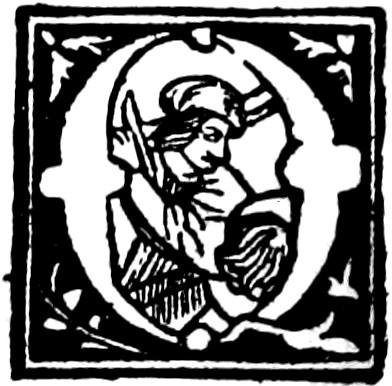
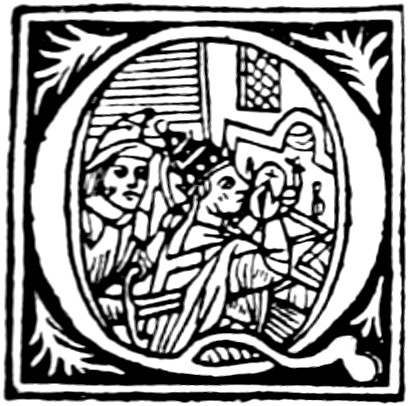
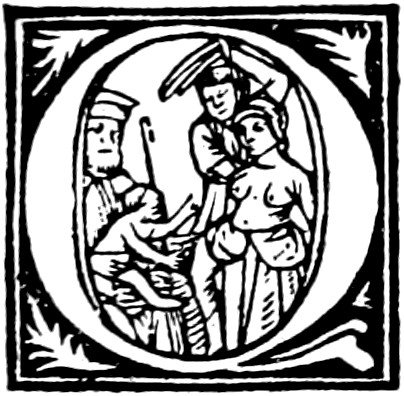

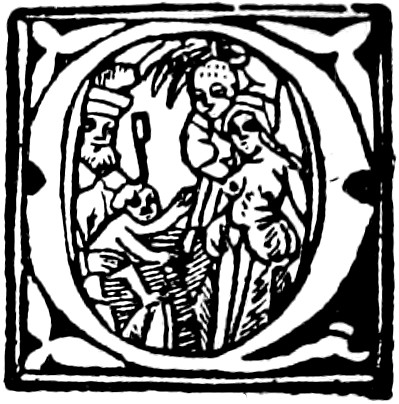
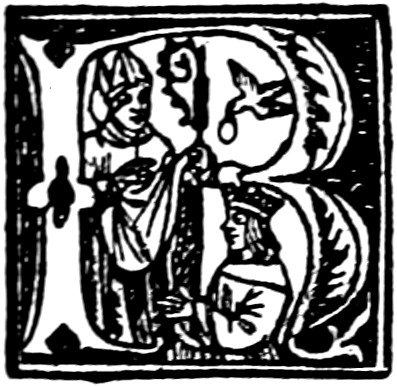
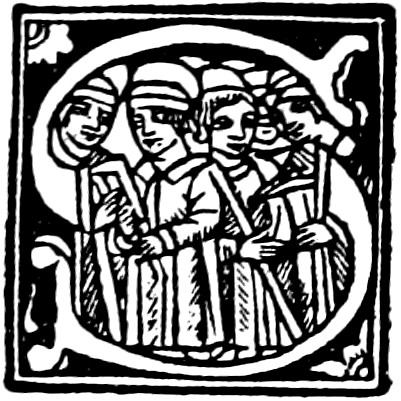
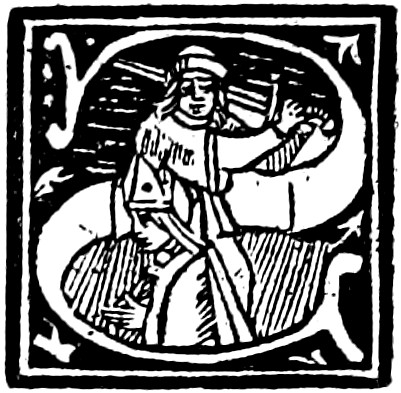
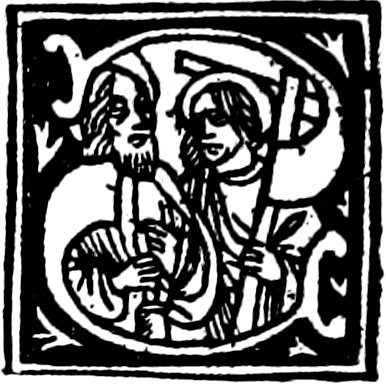
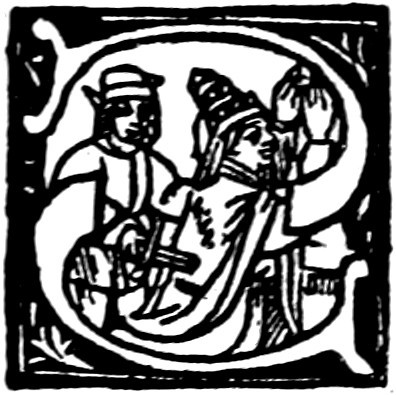
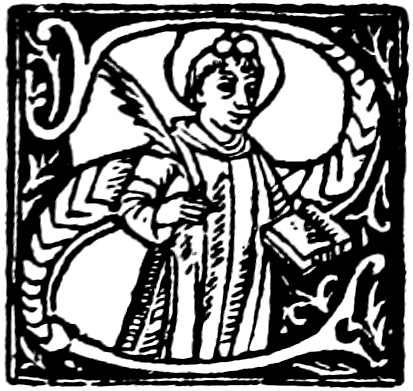
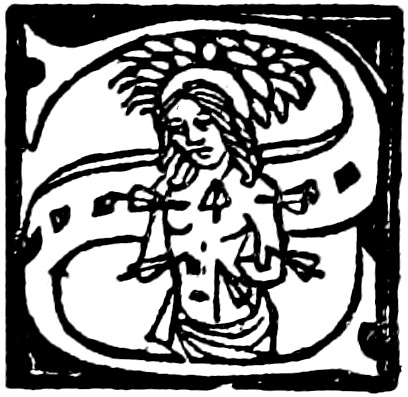
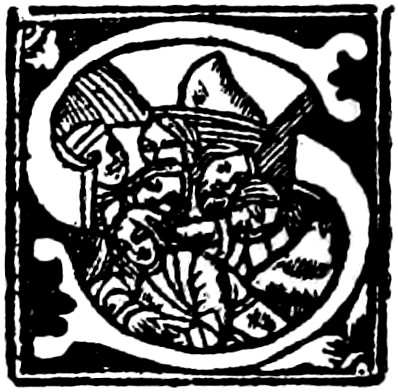
FROM THE ‘CATALOGUS SANCTORUM’ OF SACCON
[221]
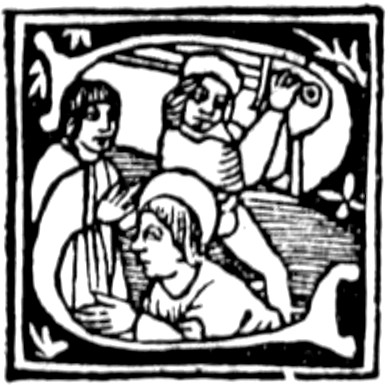
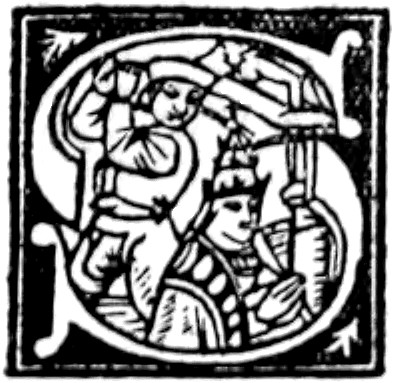
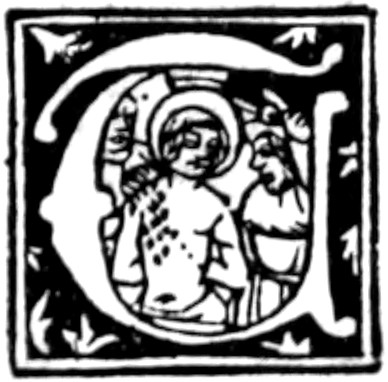
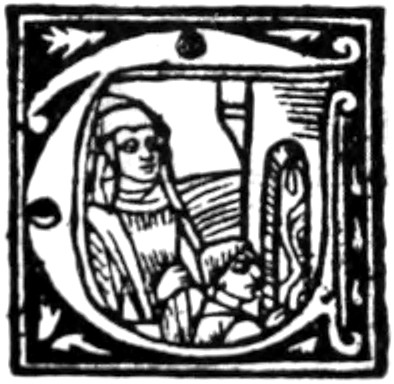
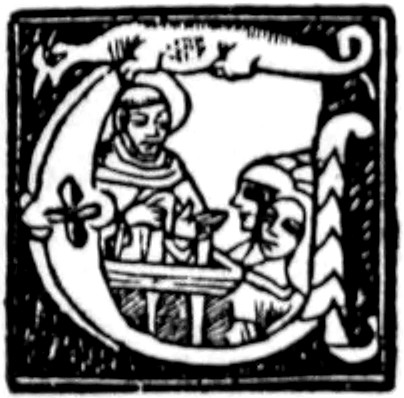
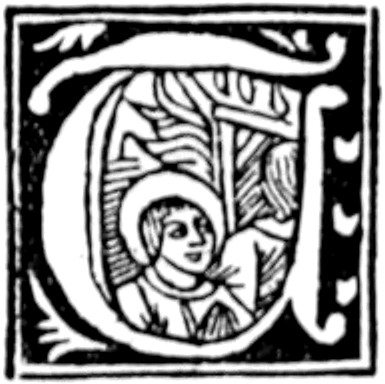
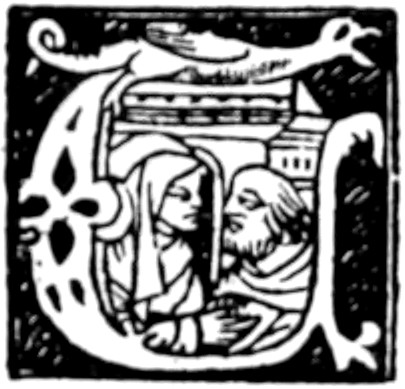
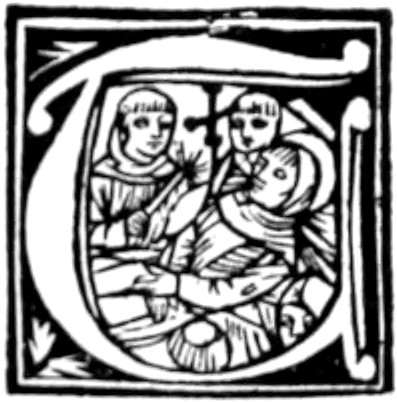
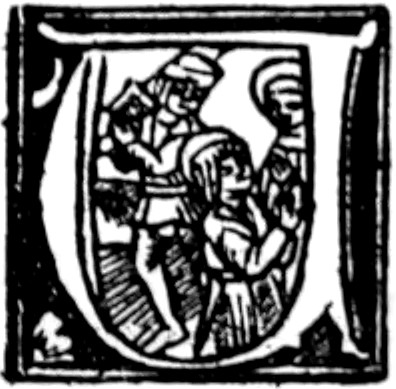
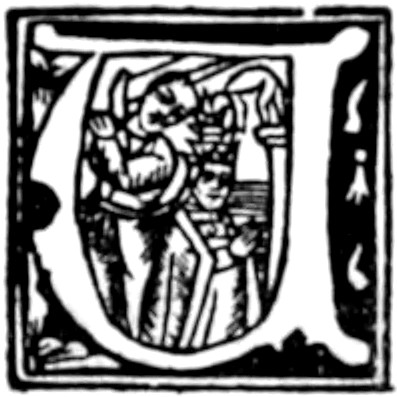
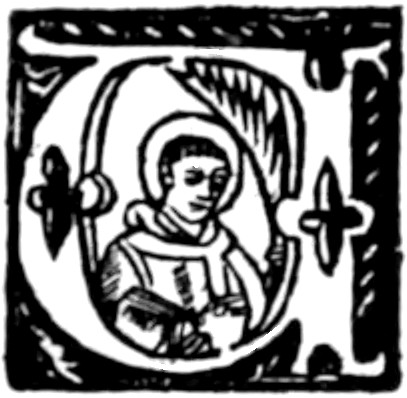
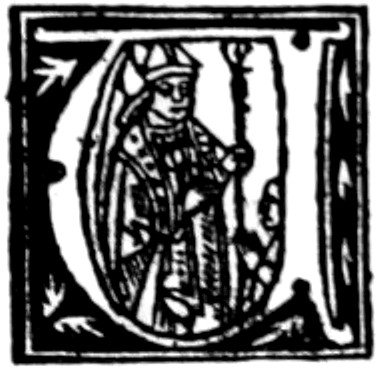

FROM THE ‘CATALOGUS SANCTORUM’ OF SACCON
[222]
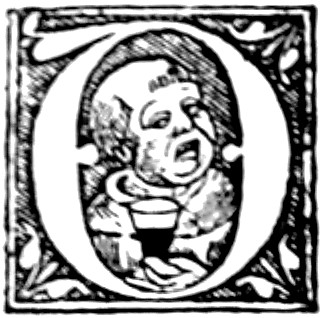
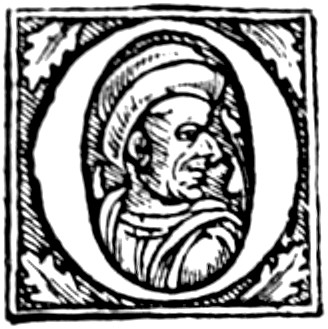

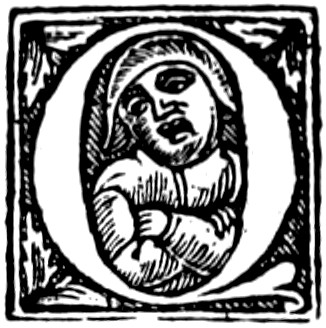
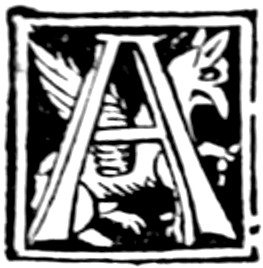
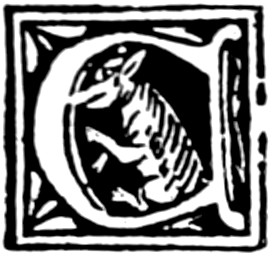
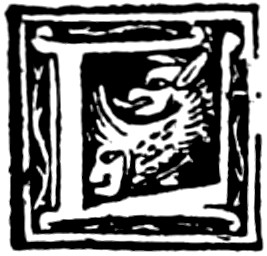
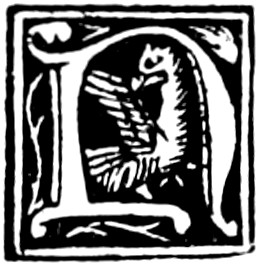
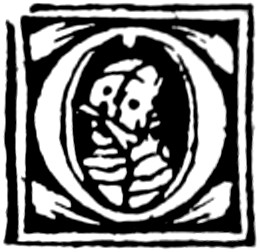
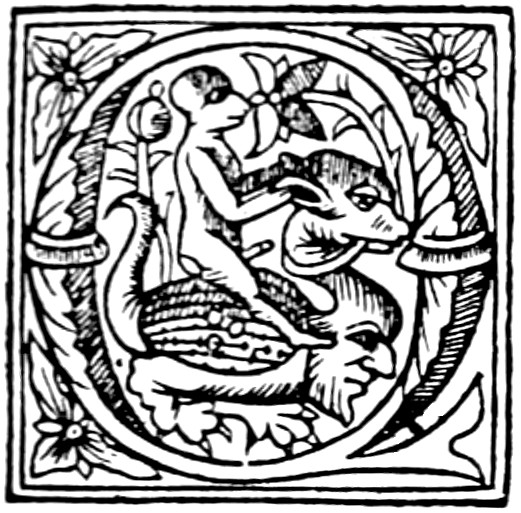
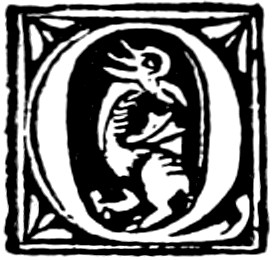
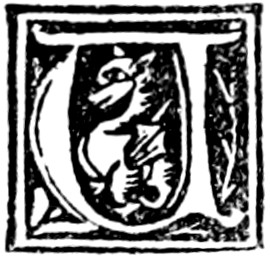
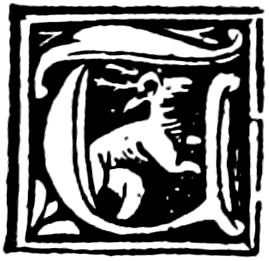
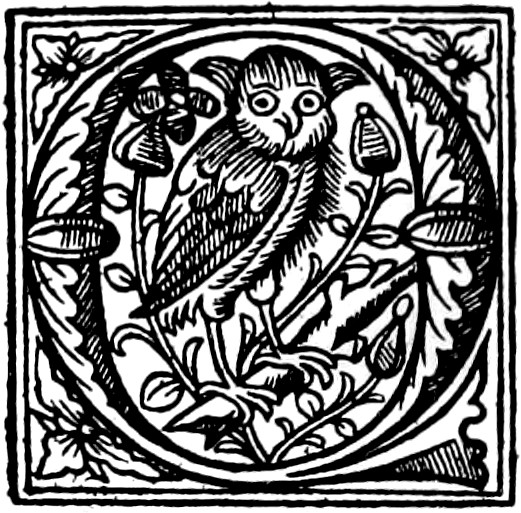
INITIALS OF SACCON
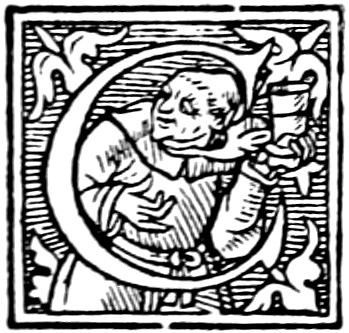

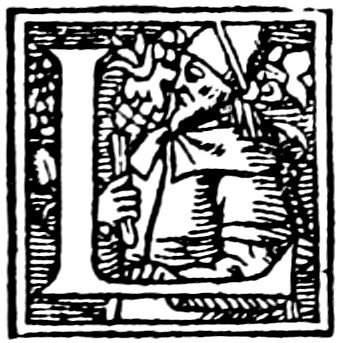
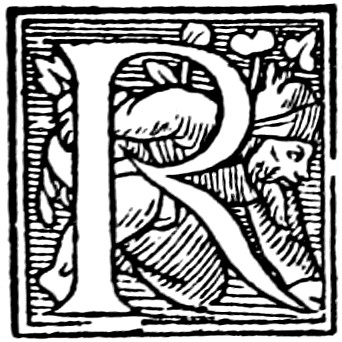
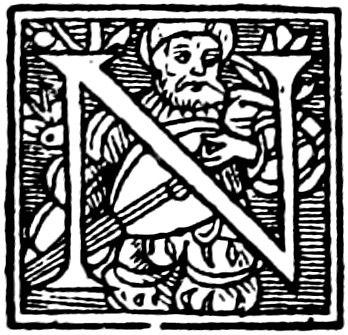
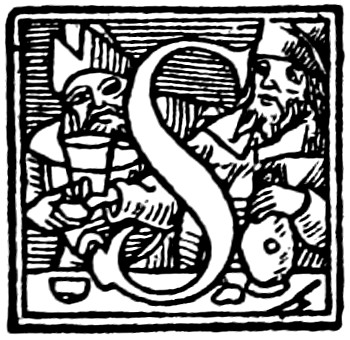
FROM A ‘MORALE REDUCTORIUM PETRI BERTHORII’
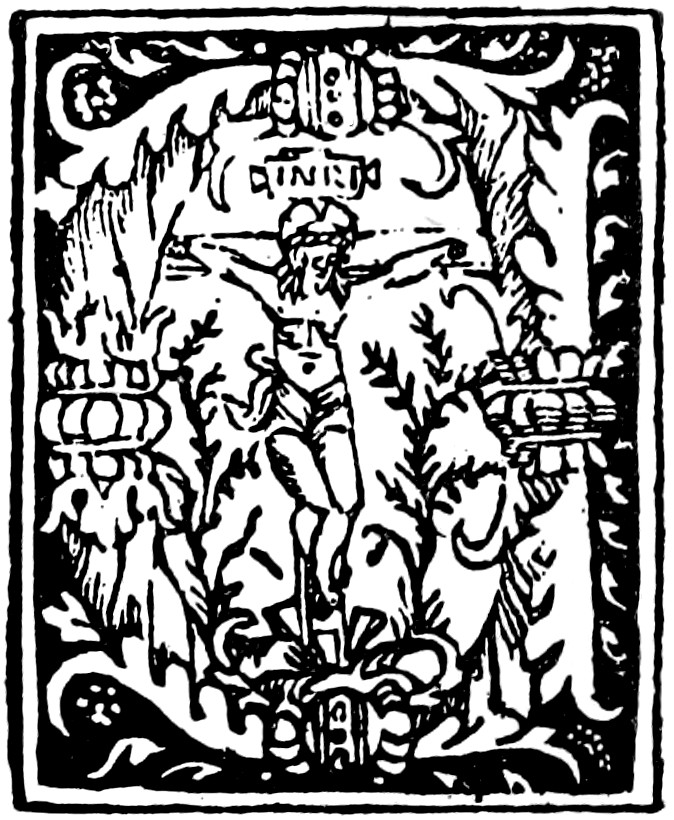
LETTER USED BY JACQUES MODERNES
[223]
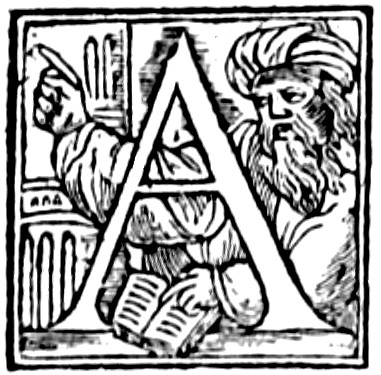
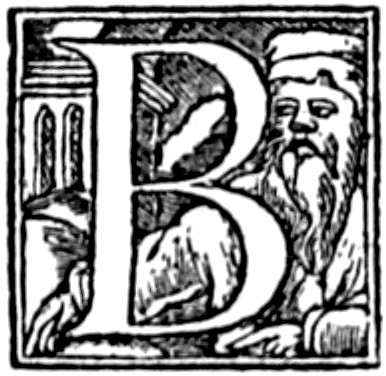
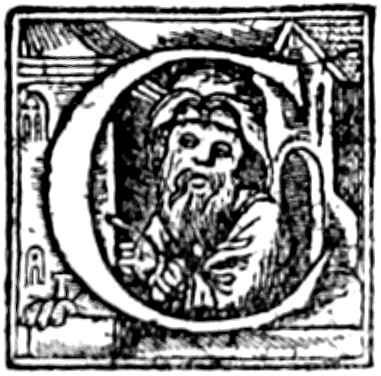
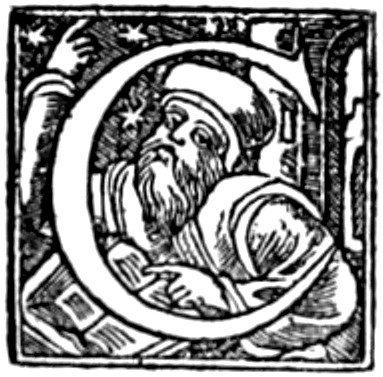
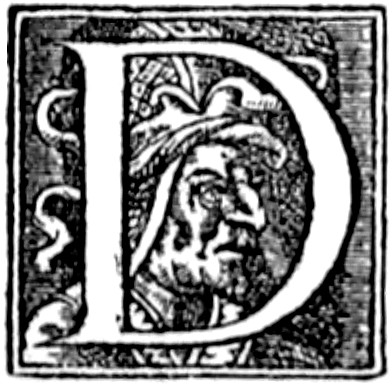
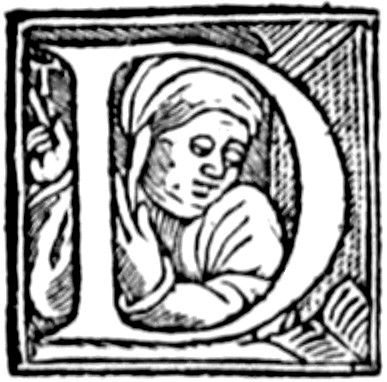
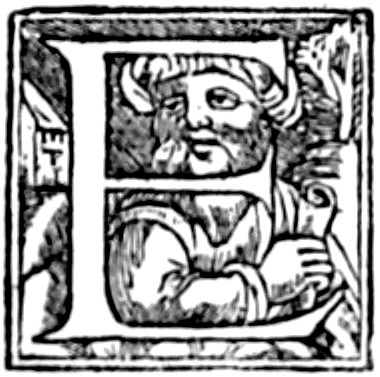
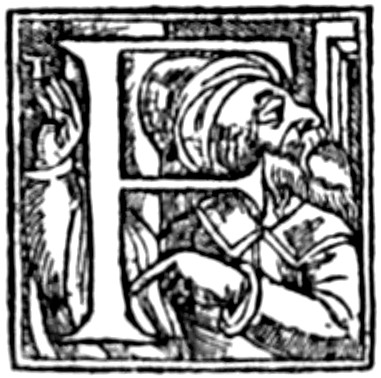
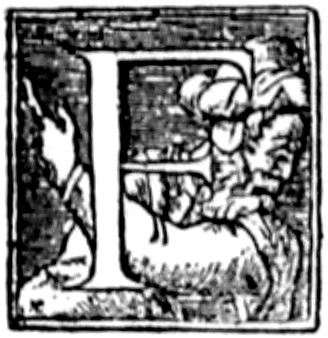
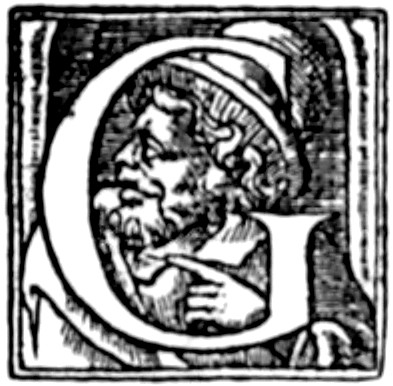
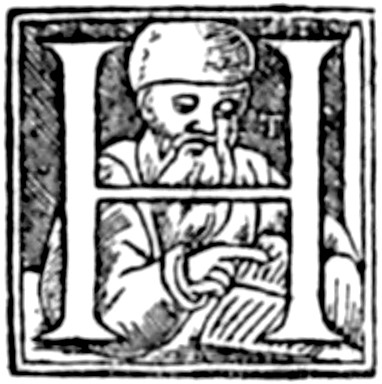
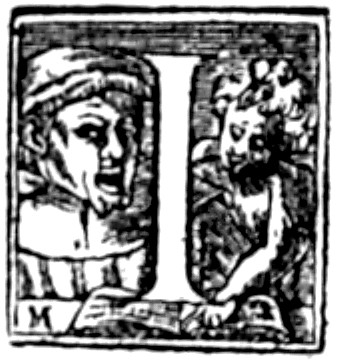
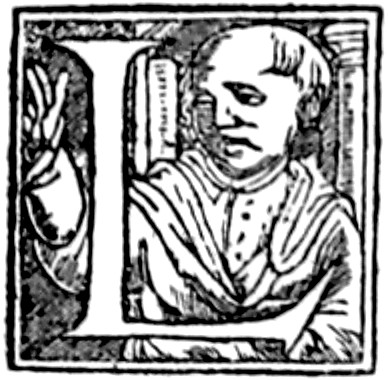
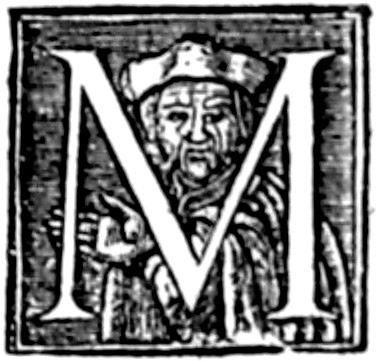
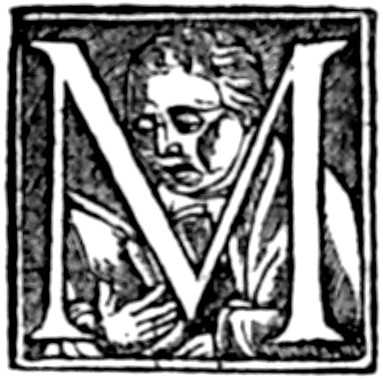
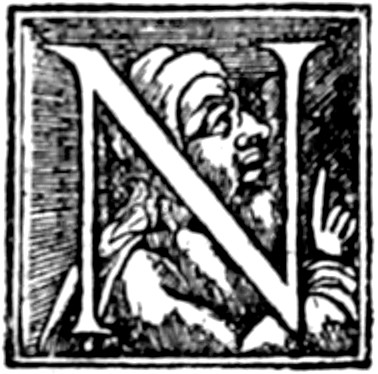
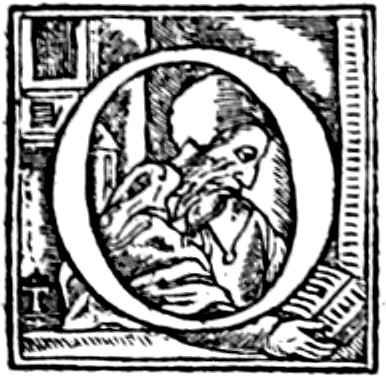
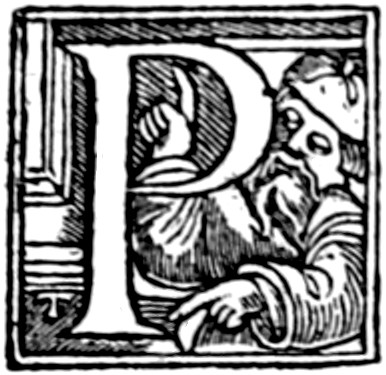
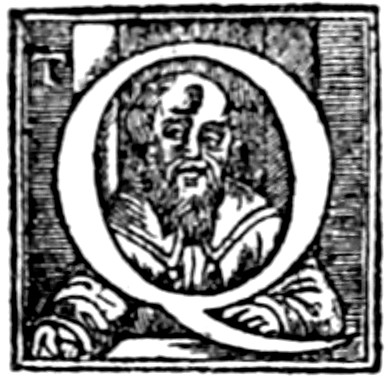
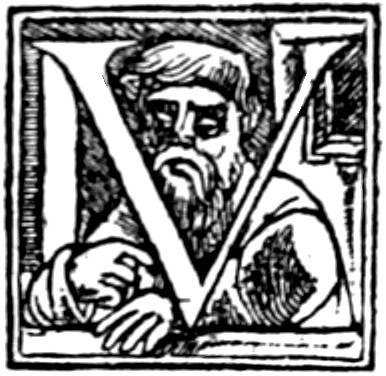
ALPHABET OF PHILOSOPHERS
[224]
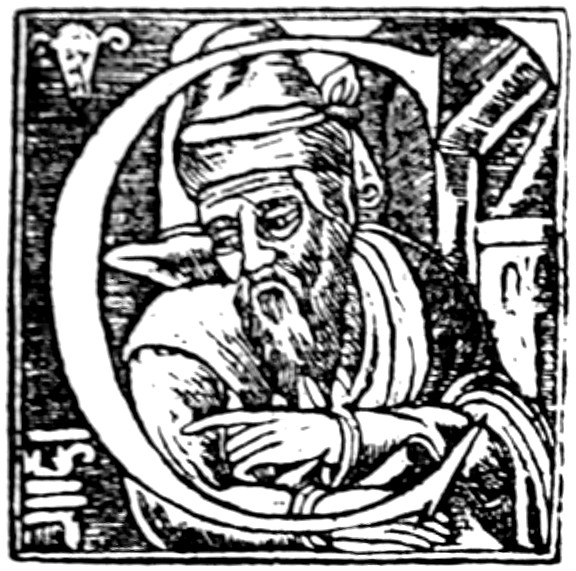

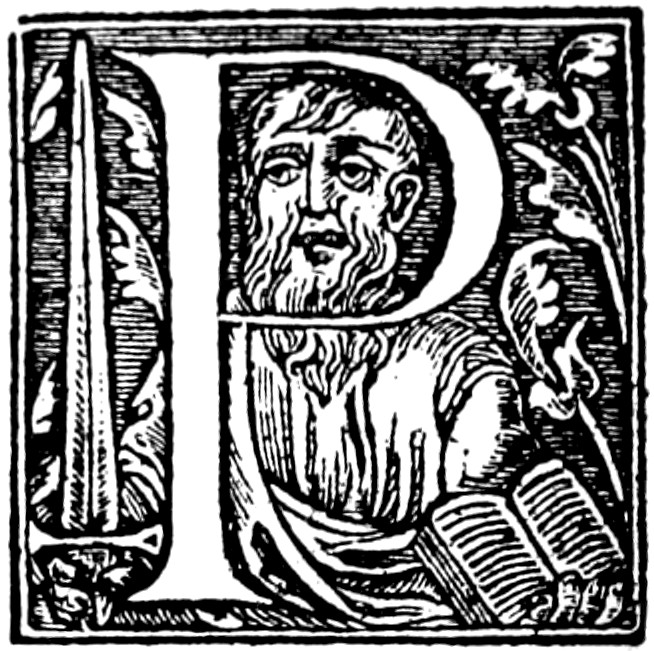
FROM AN ALPHABET OF PHILOSOPHERS


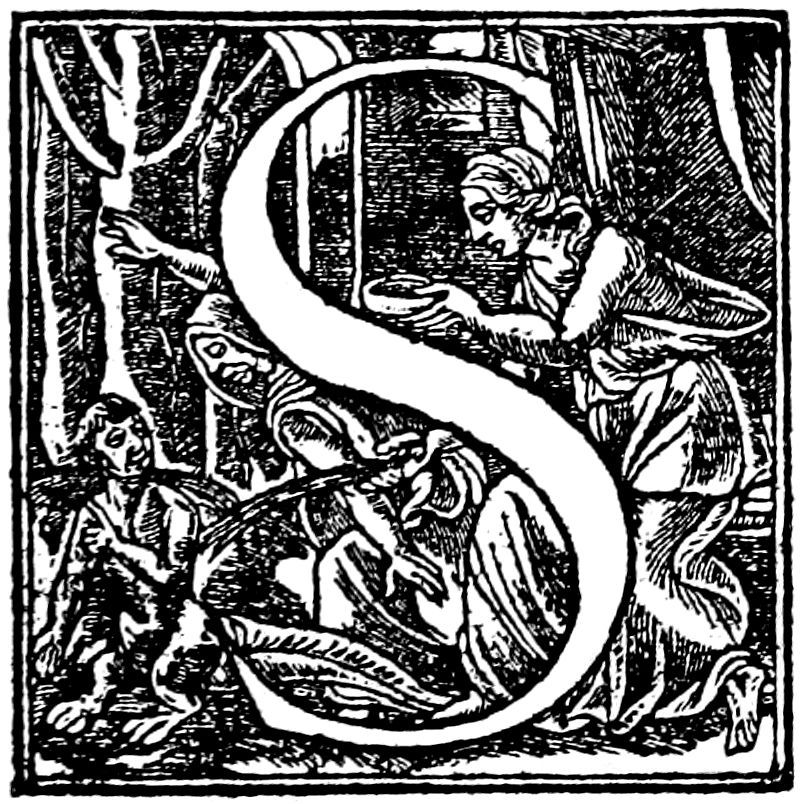
MYTHOLOGICAL INITIALS
[225]
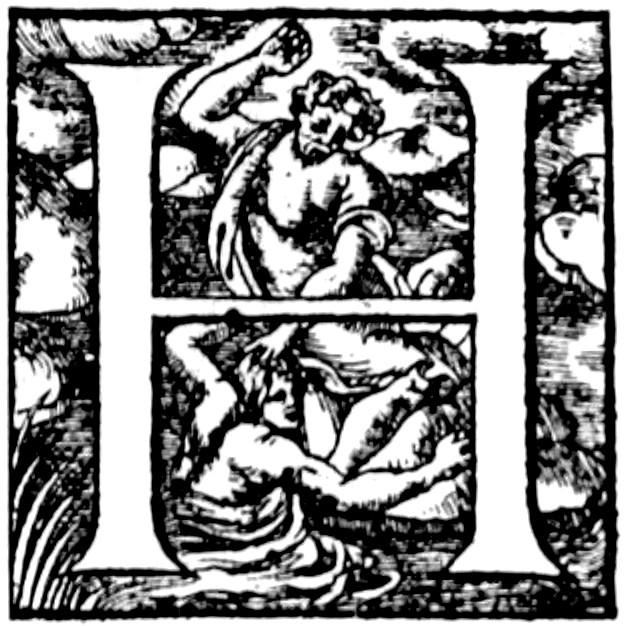
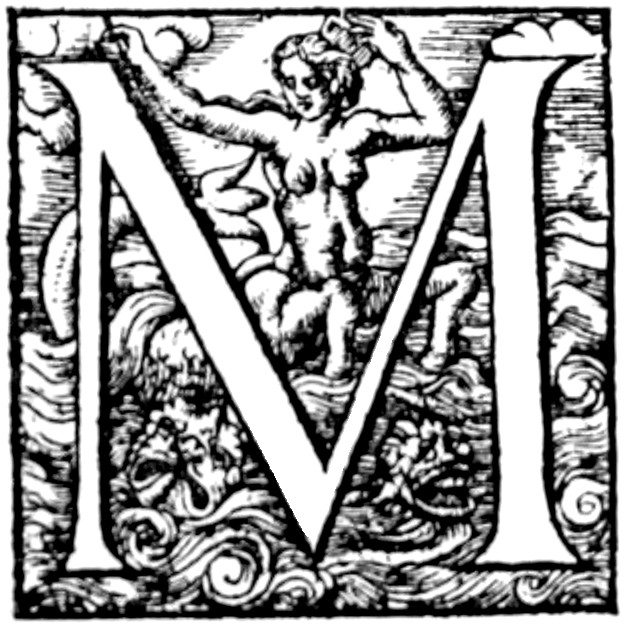
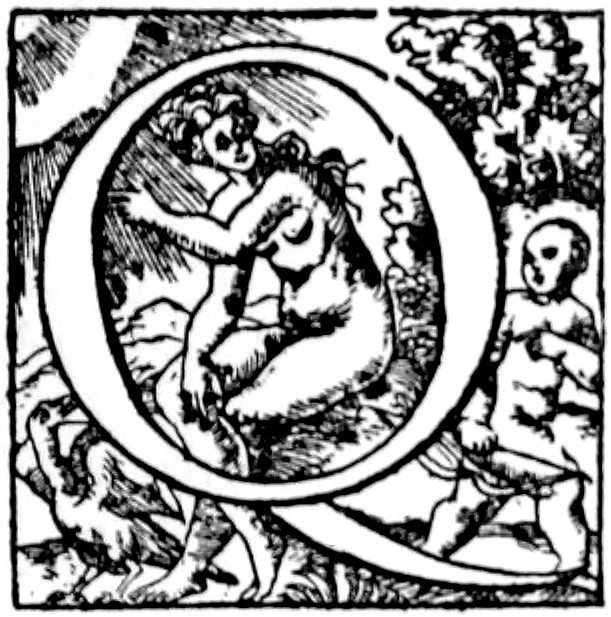
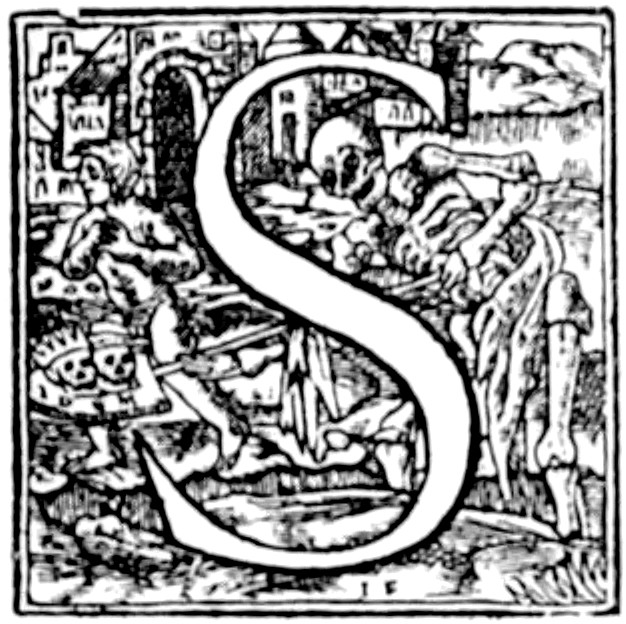
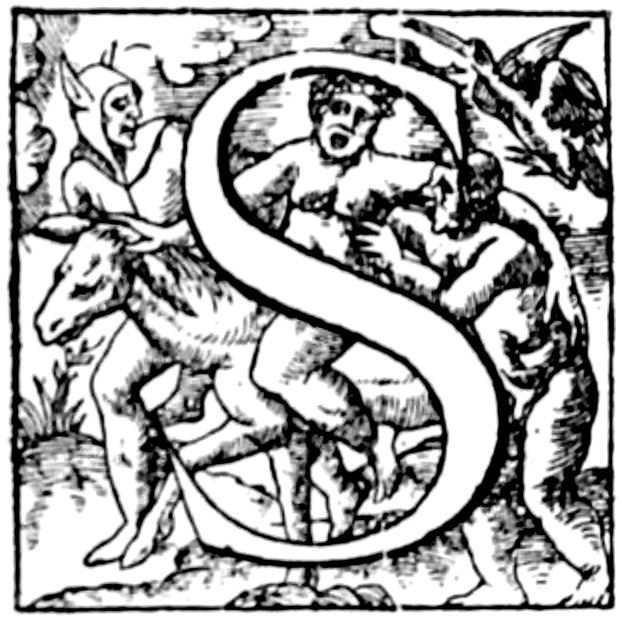
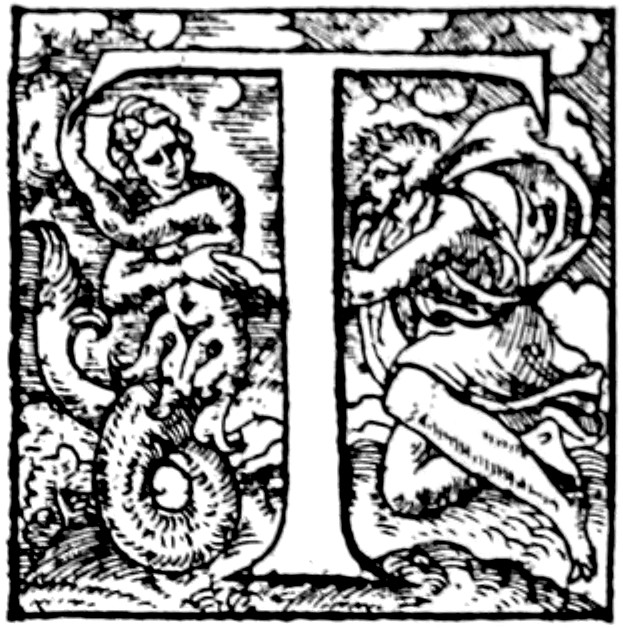
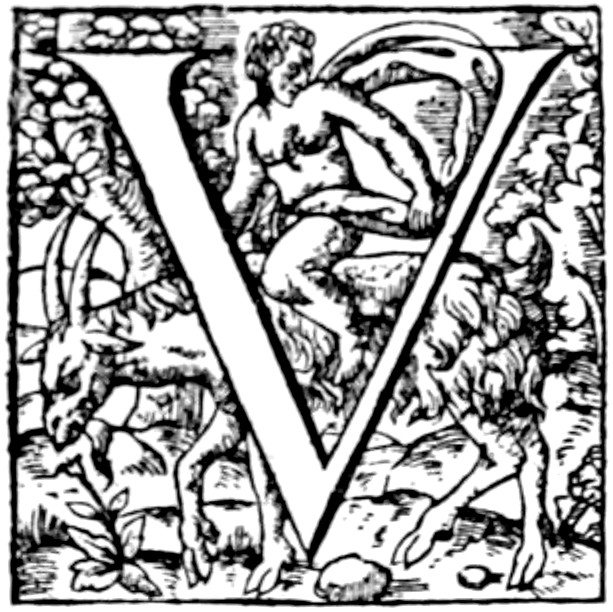
MYTHOLOGICAL LETTERS OF JACOPO FABIO
[226]
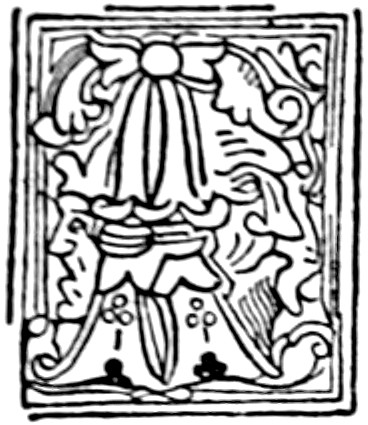

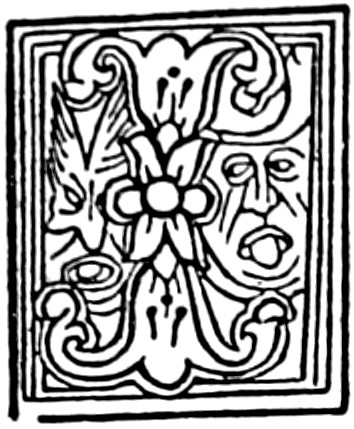
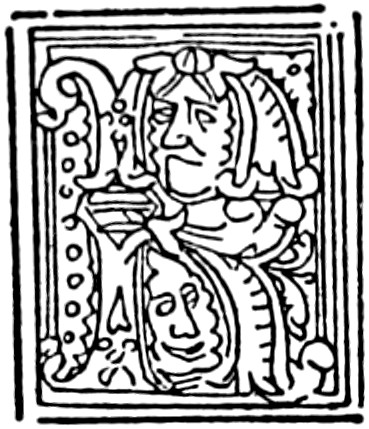
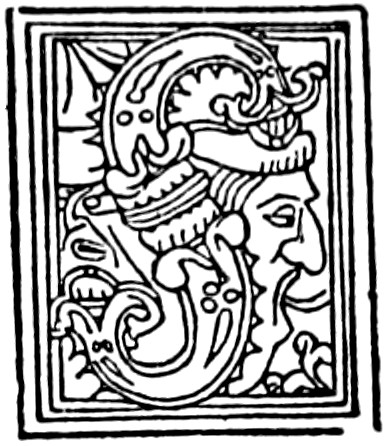
FROM THE ‘VIES DES ANCIENS SAINCTZ PÈRES’ OF DUPRÉ
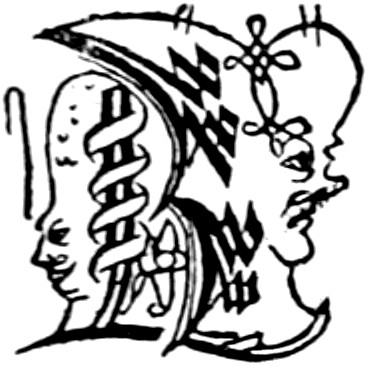
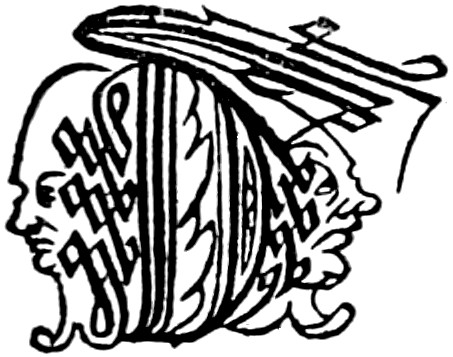
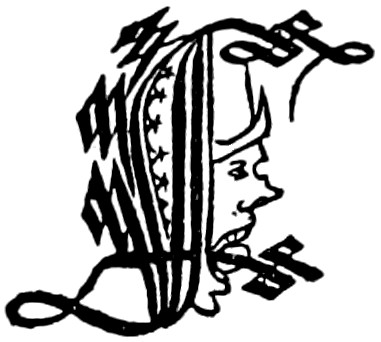
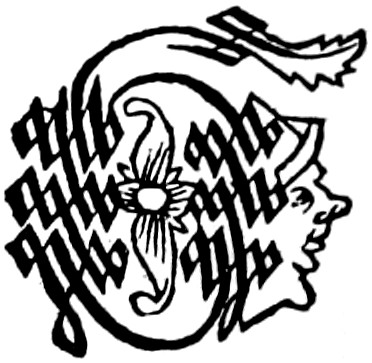
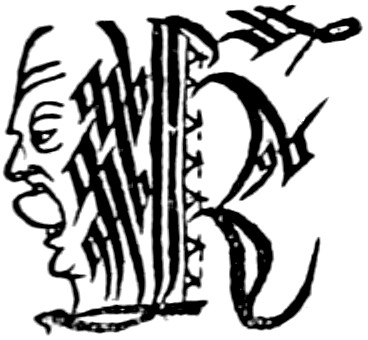


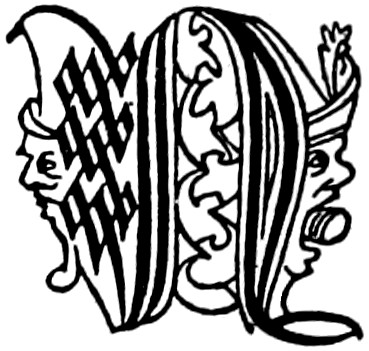

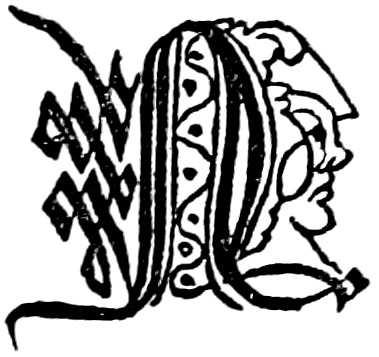
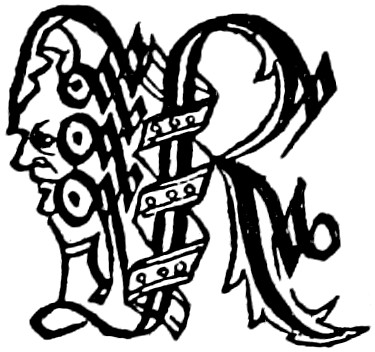
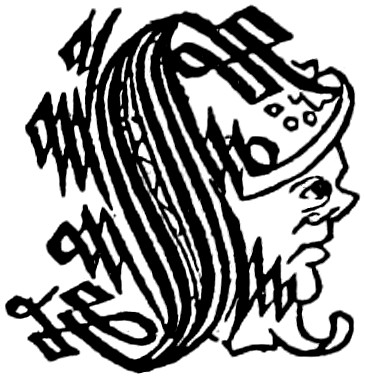
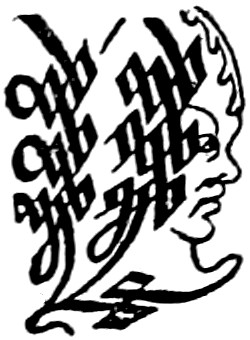
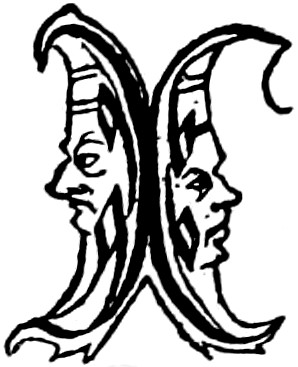
CALLIGRAPHIC ALPHABET OF VÉRARD
[227]
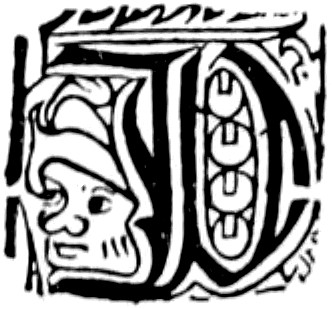
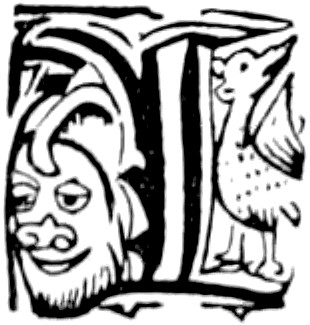
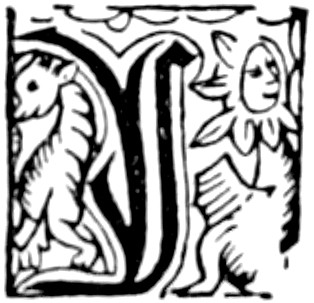
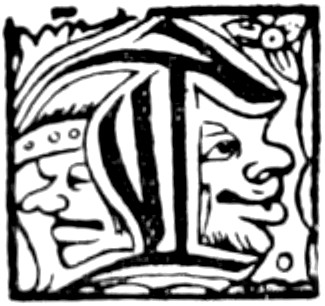
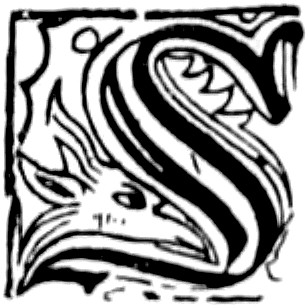
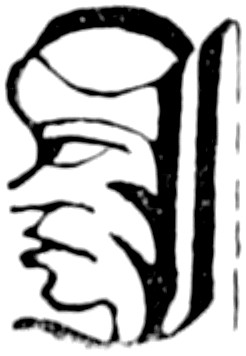
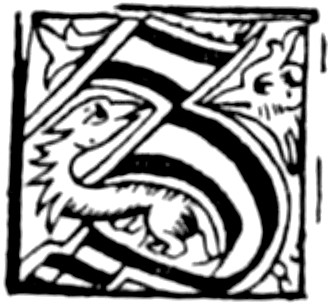
FROM THE ‘NEF DE SANTÉ’ OF TREPPEREL
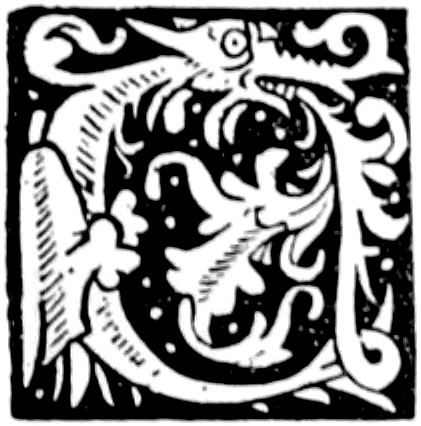
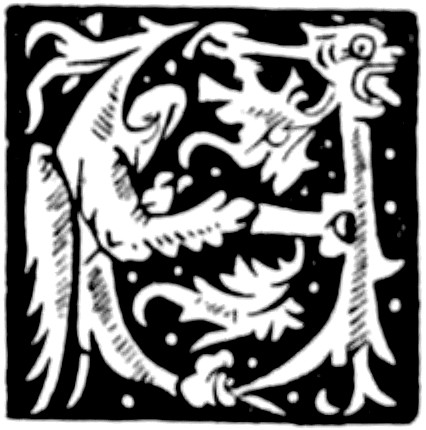
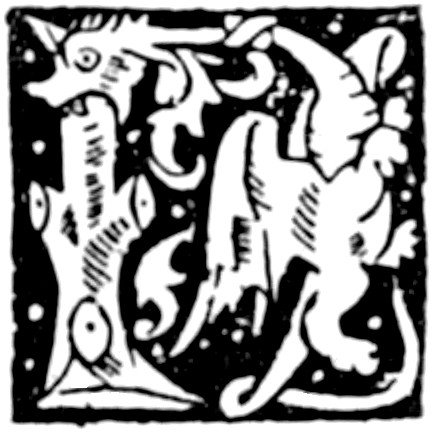

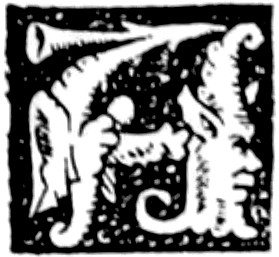
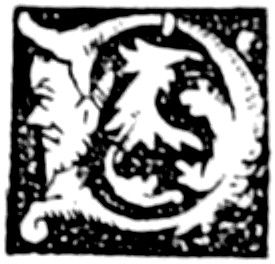
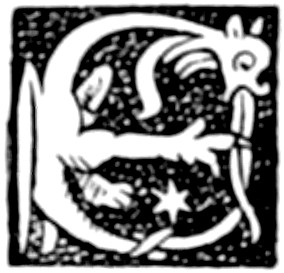
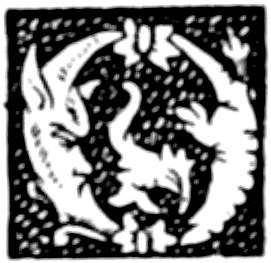
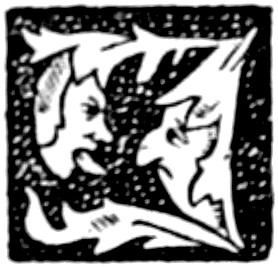
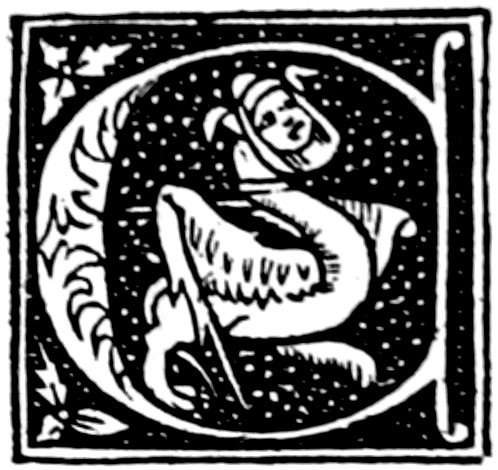
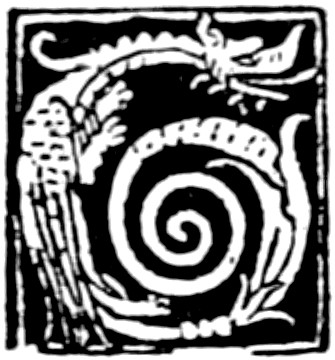
INITIALS IN BOOKS BY BOCARD
[228]
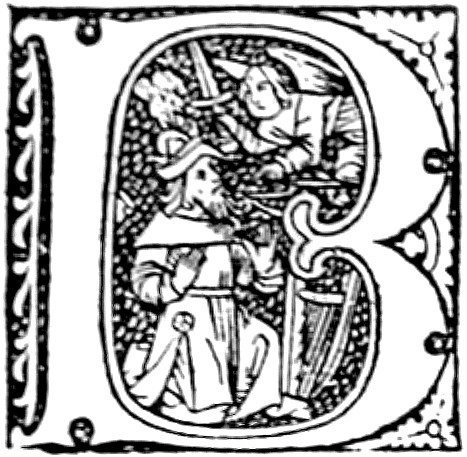
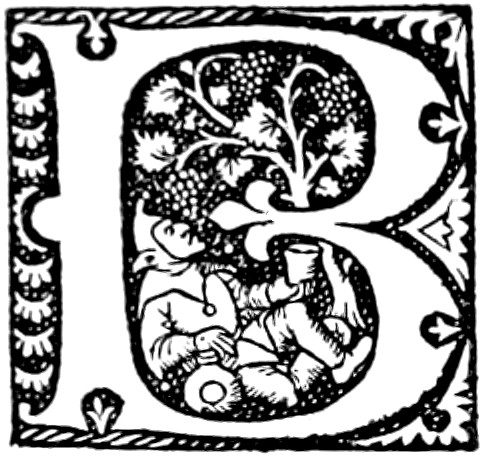
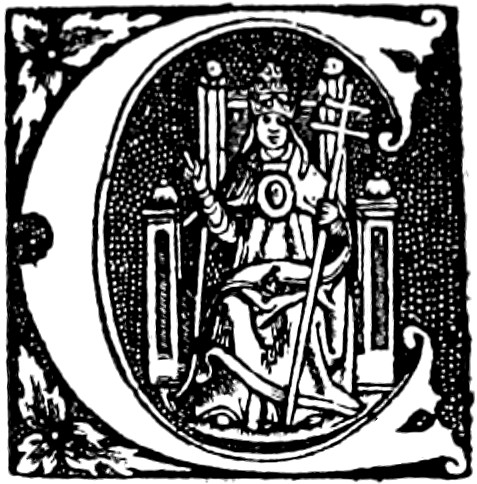
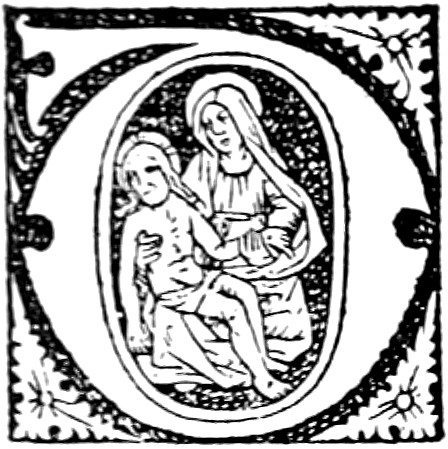
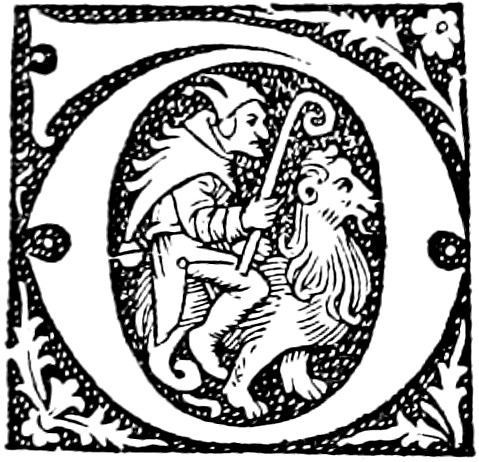
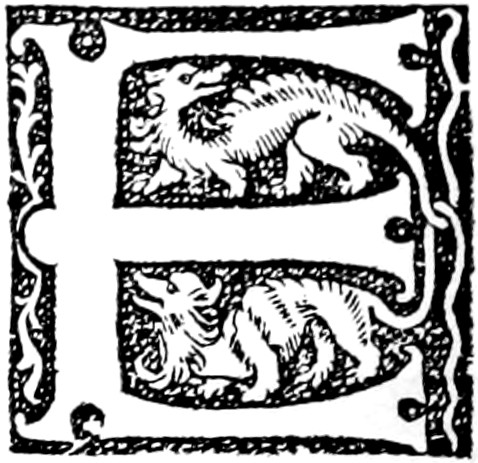

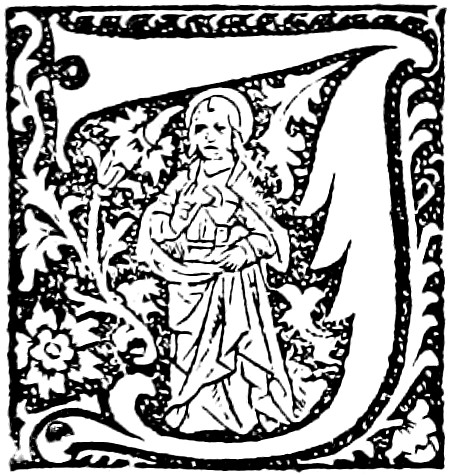
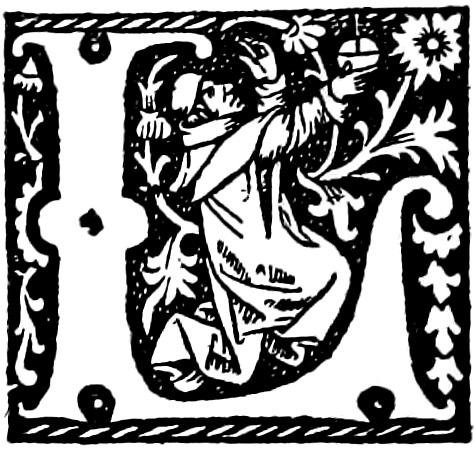
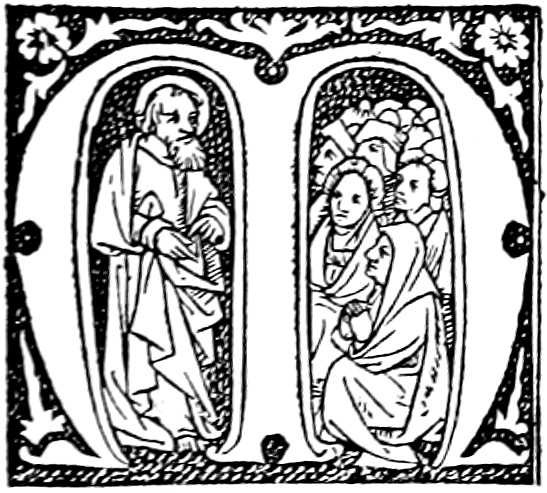
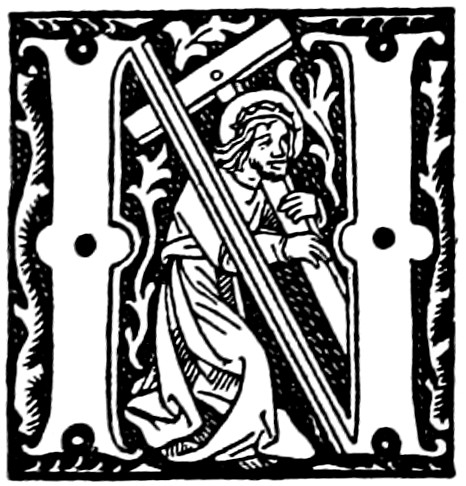
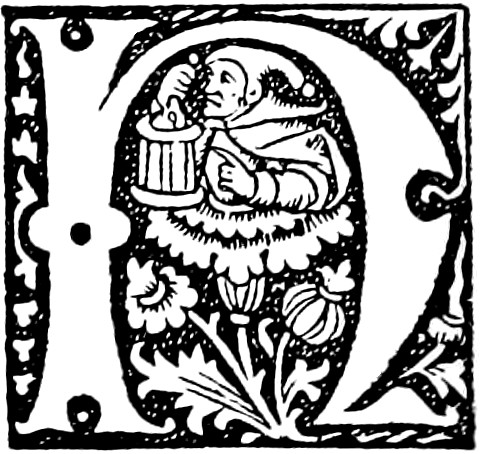
INITIALS IN BOOKS PRINTED BY REMBOLT AND GERING
[229]
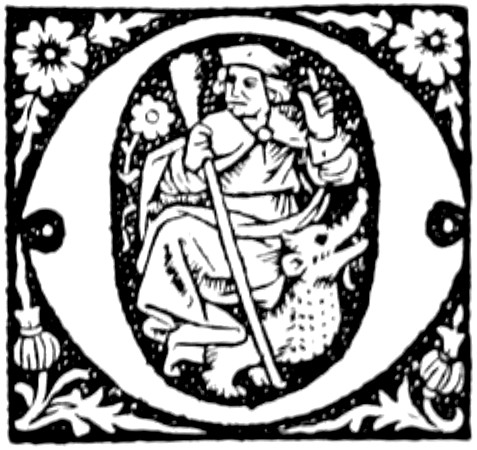

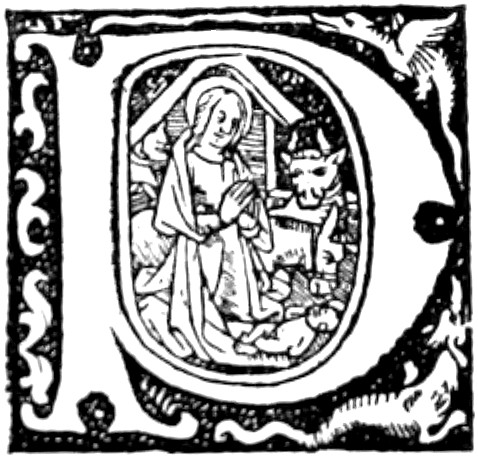
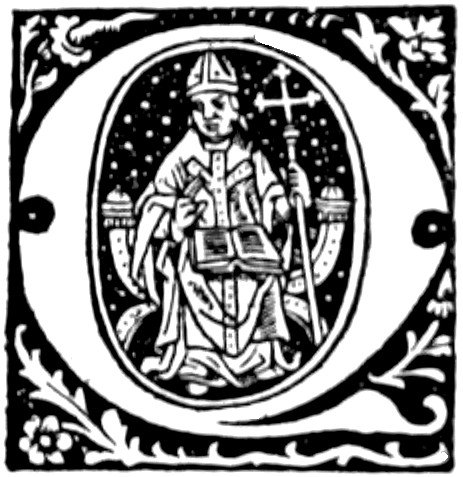
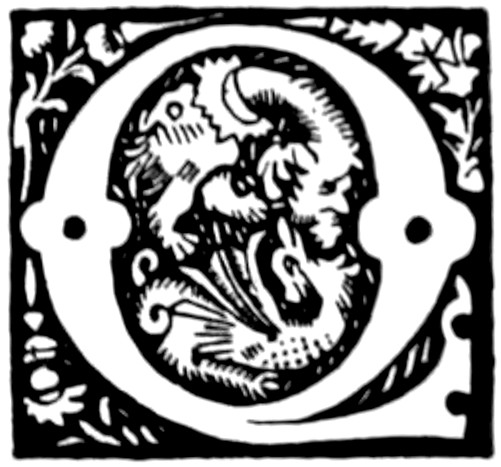
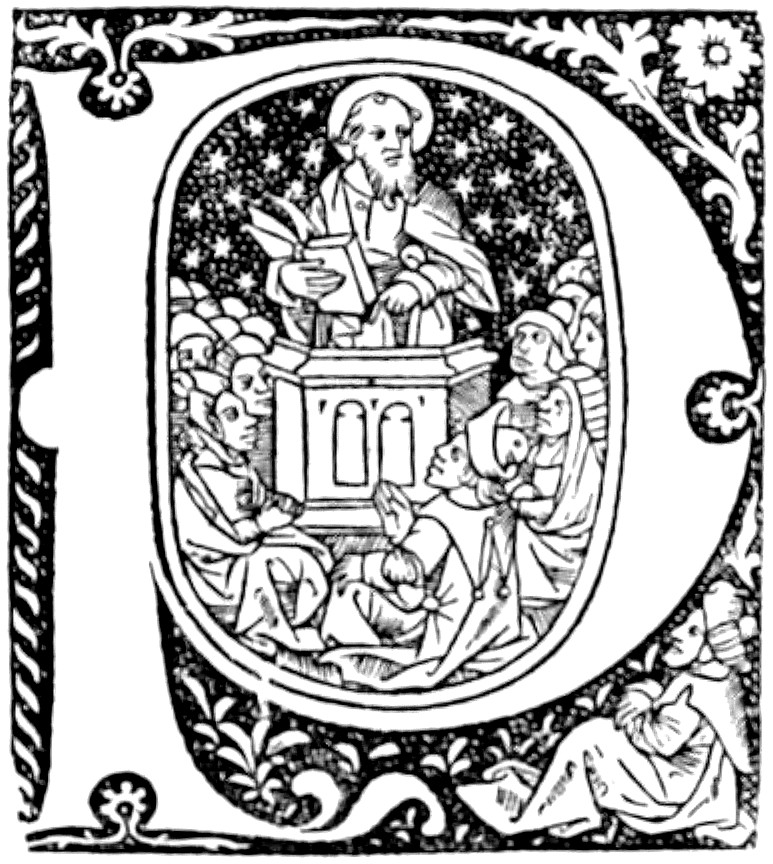
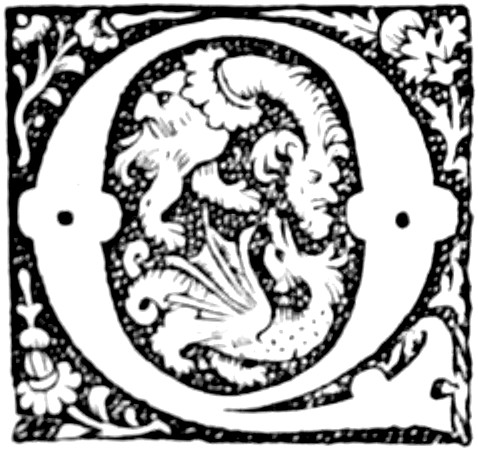
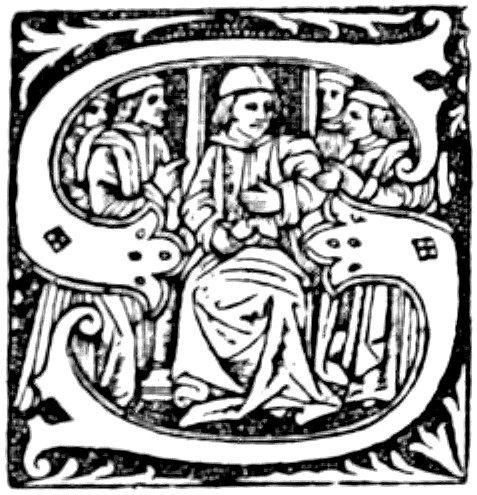
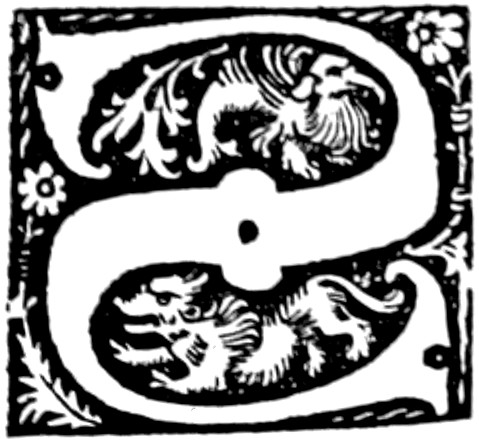
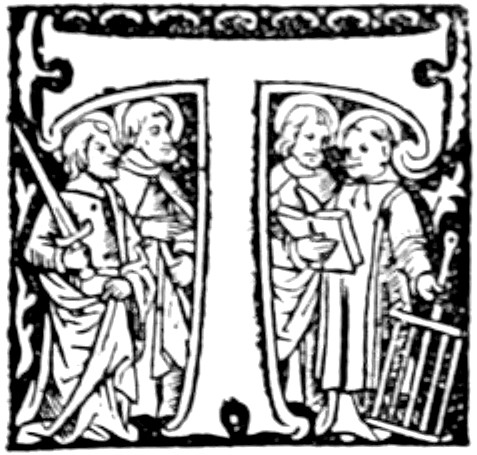
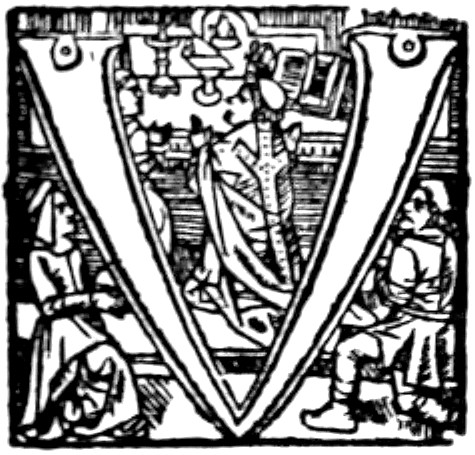
INITIALS IN BOOKS PRINTED BY REMBOLT AND GERING
[230]
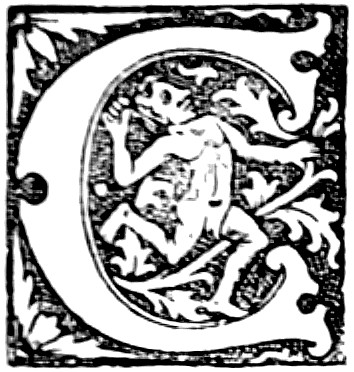
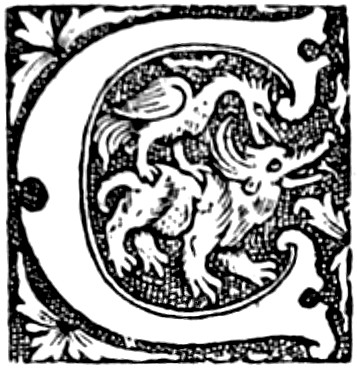
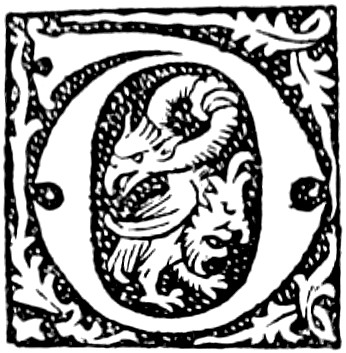
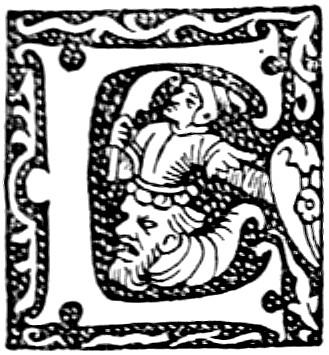
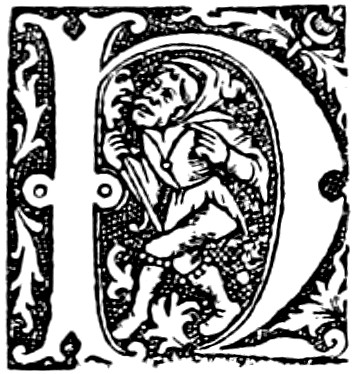
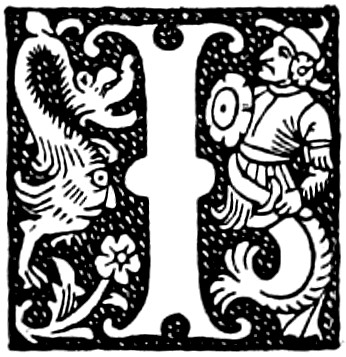

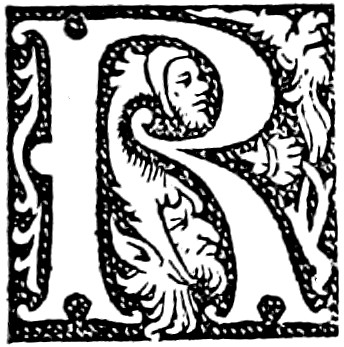
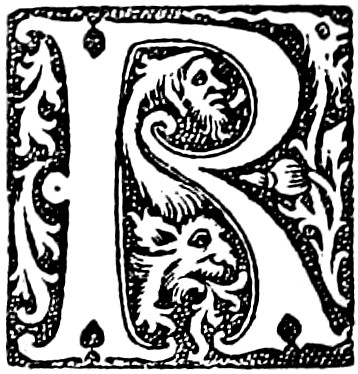
INITIALS IN BOOKS PRINTED BY REMBOLT AND GERING
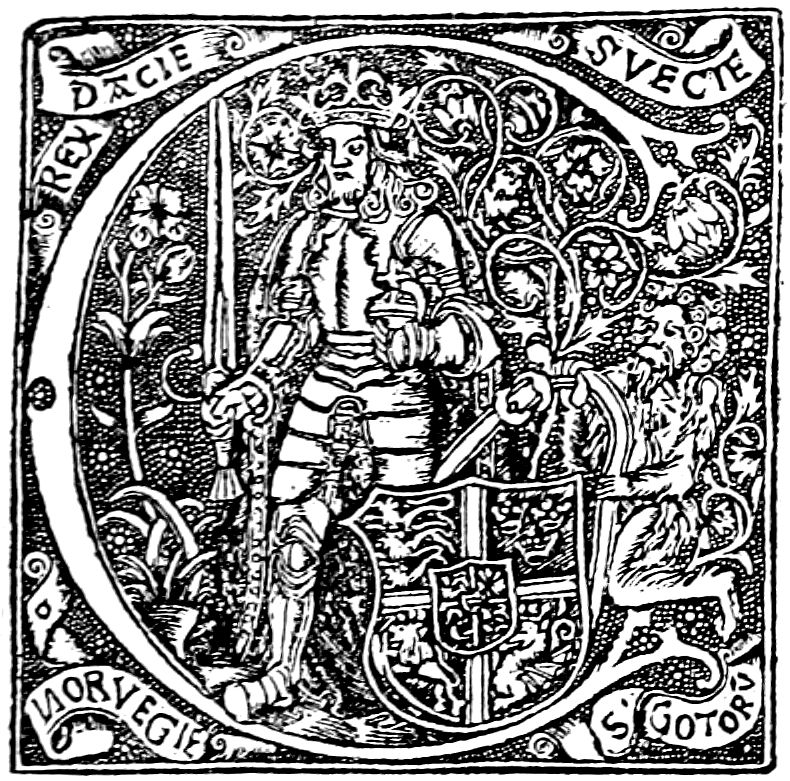

FROM THE HISTORY OF DENMARK BY SAXO GRAMMATICUS
[231]
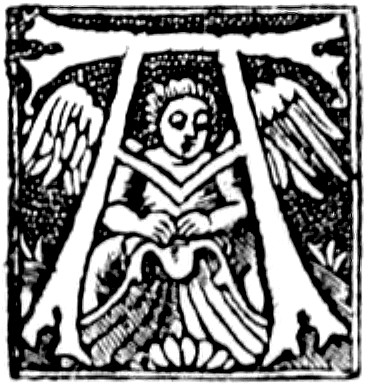

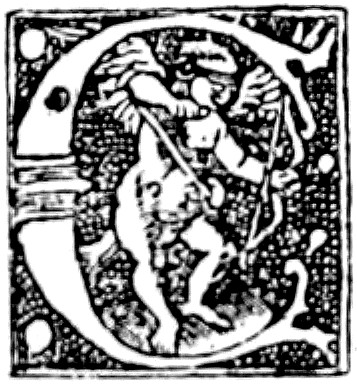
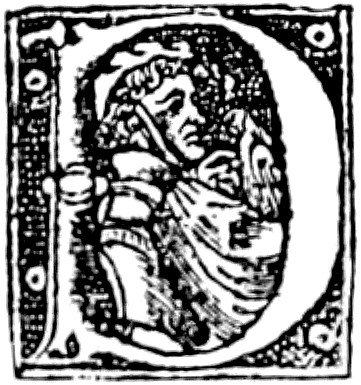
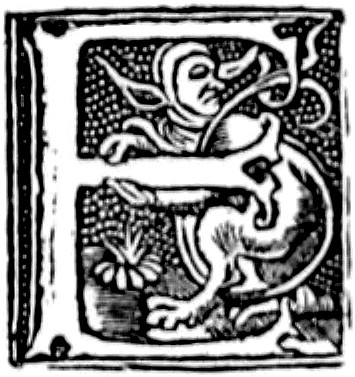
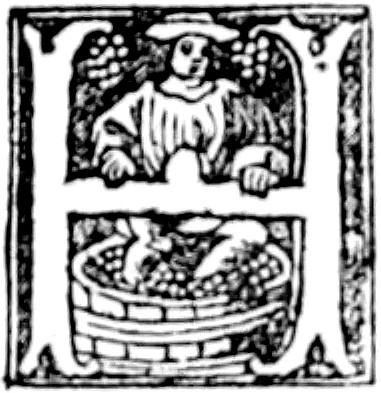
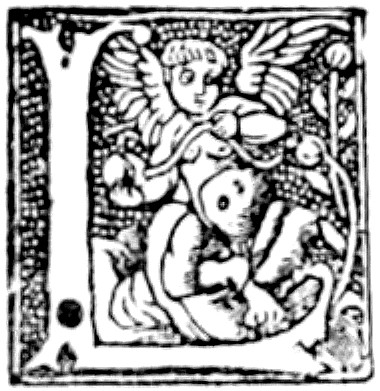
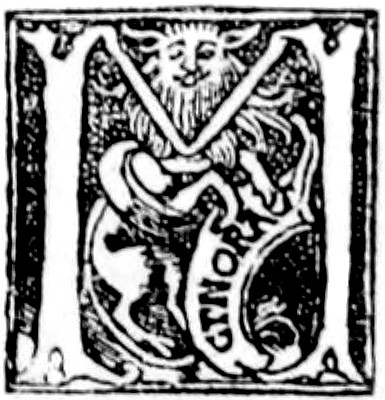
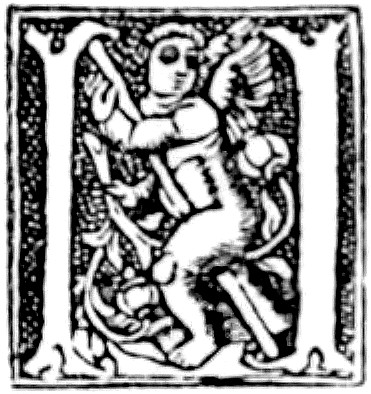
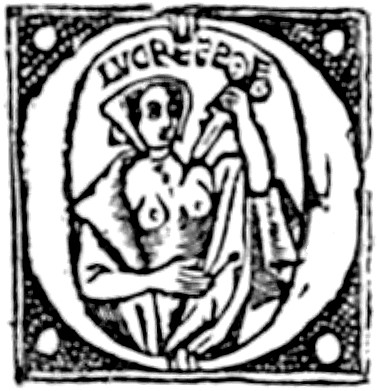
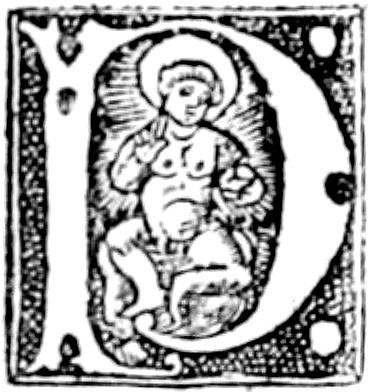
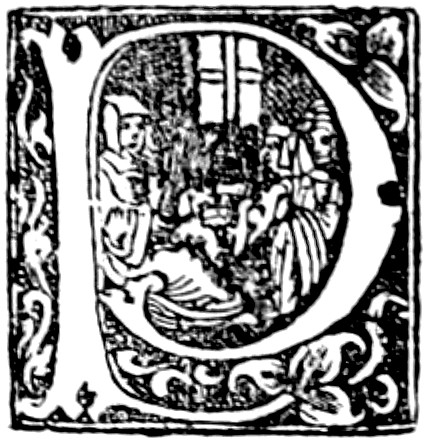
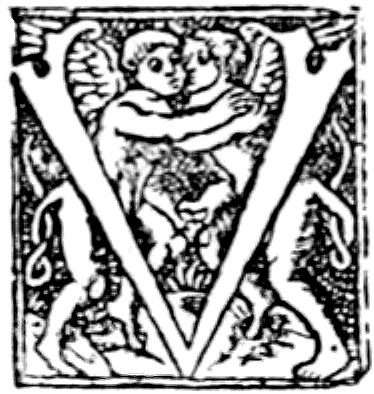
INITIALS USED IN THE ‘JARDIN DE SANTÉ’ BY TREPPEREL
[232]
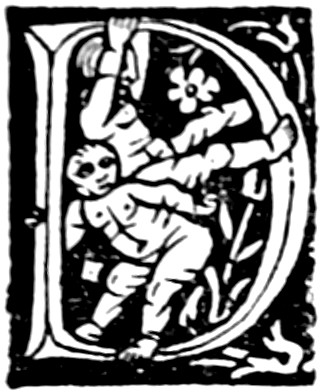
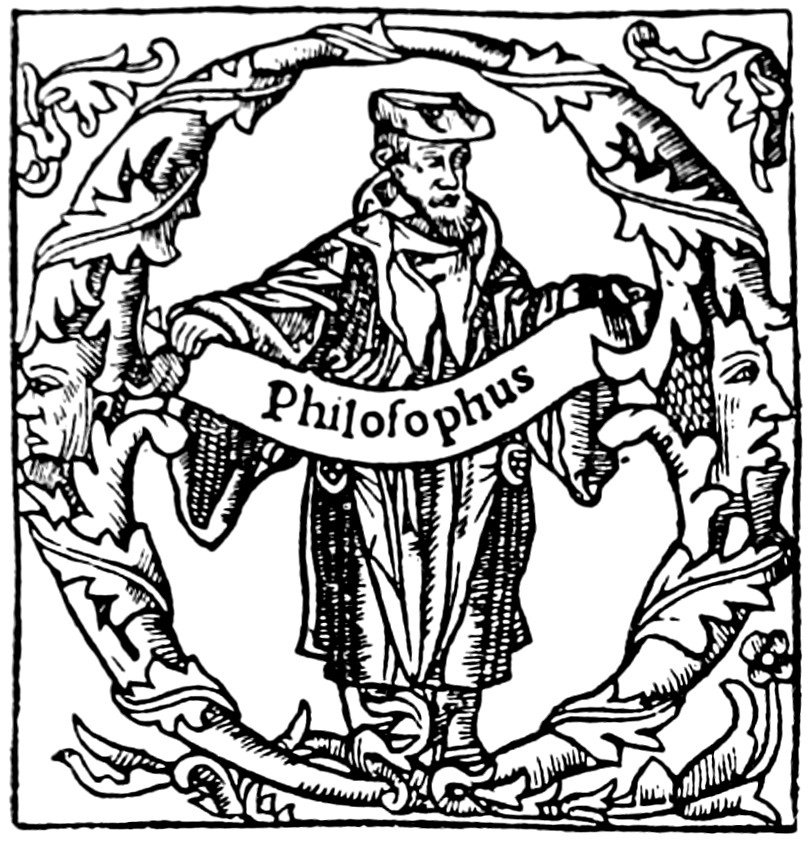
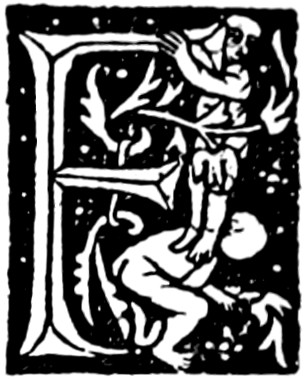
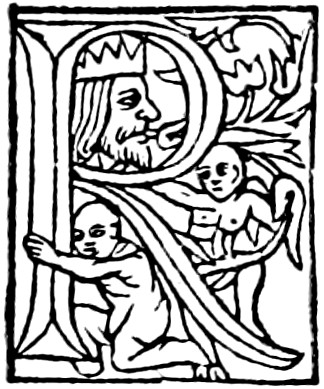
FROM THE ARISTOTLE OF H. ESTIENNE
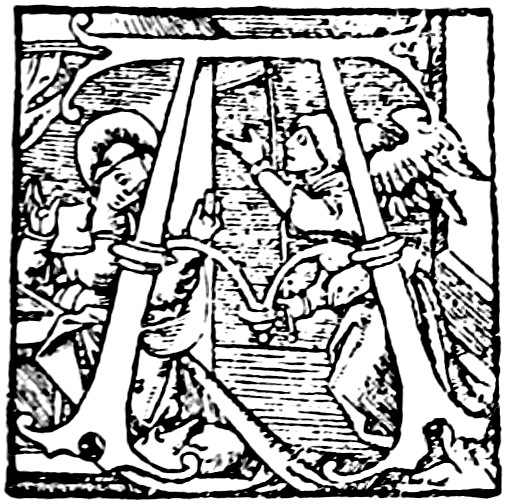
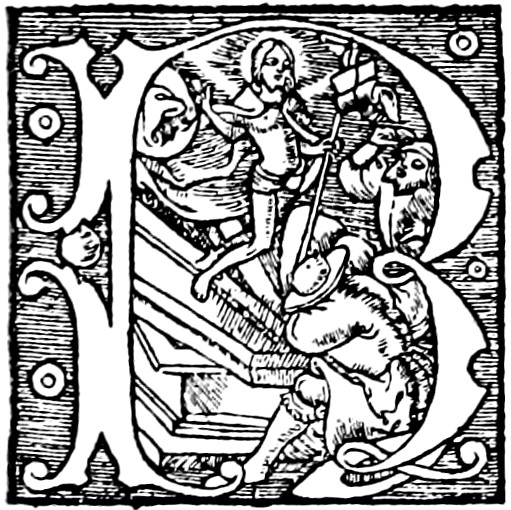
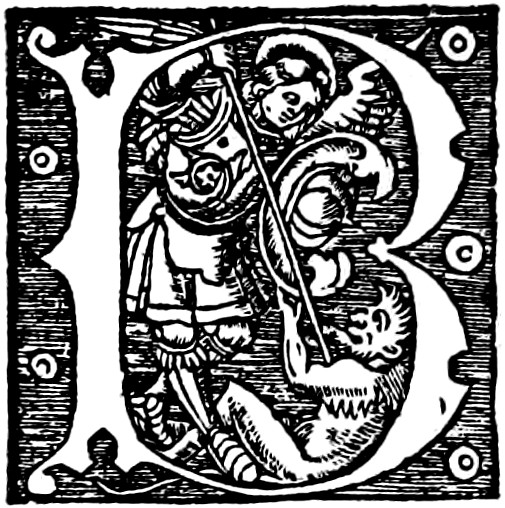
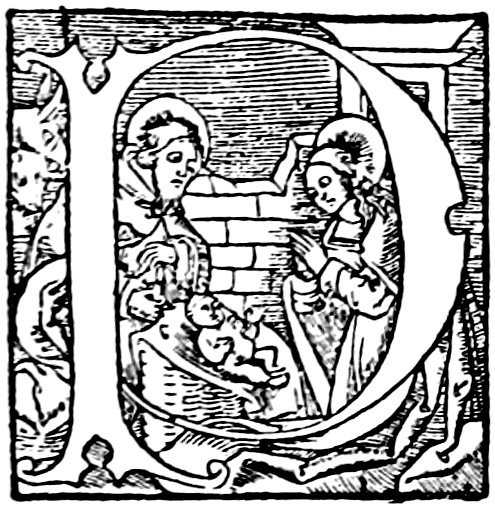
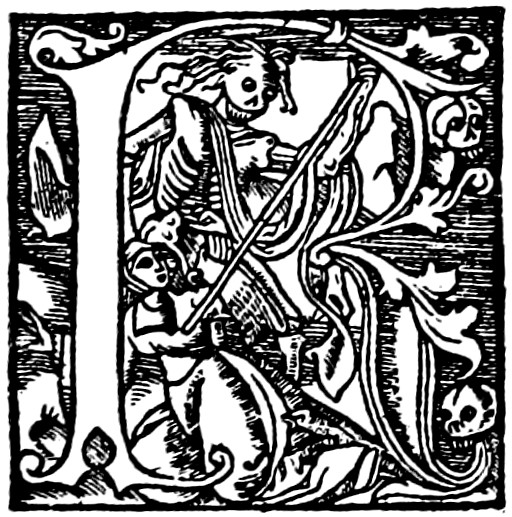
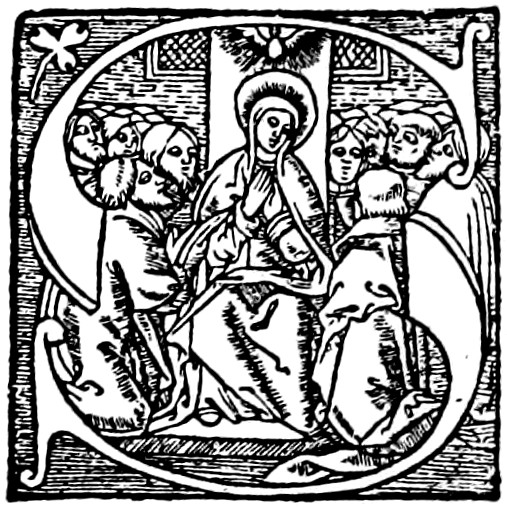
FROM THE ‘MISSALE PARISIENSE’ BY WOLFGANG HOPYL
[233]
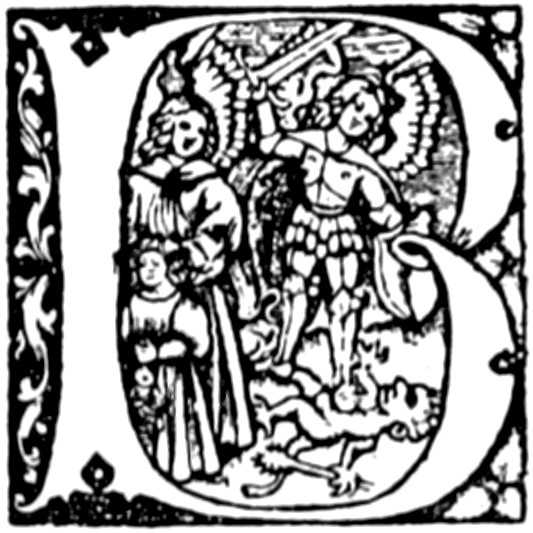
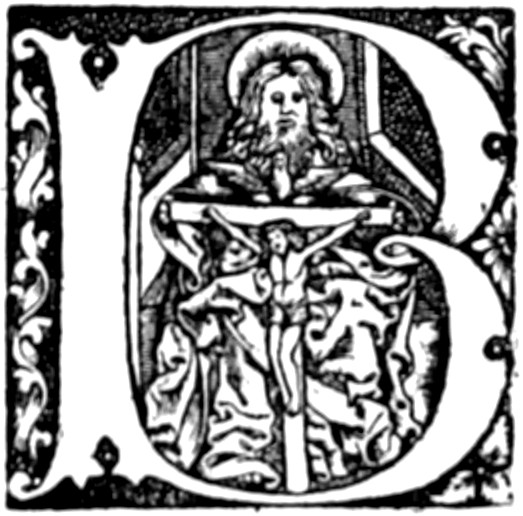
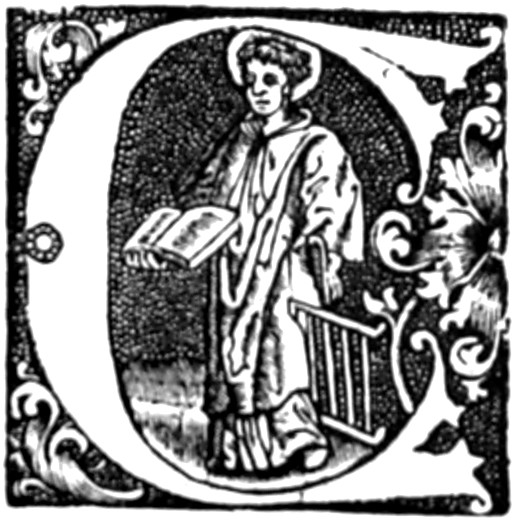
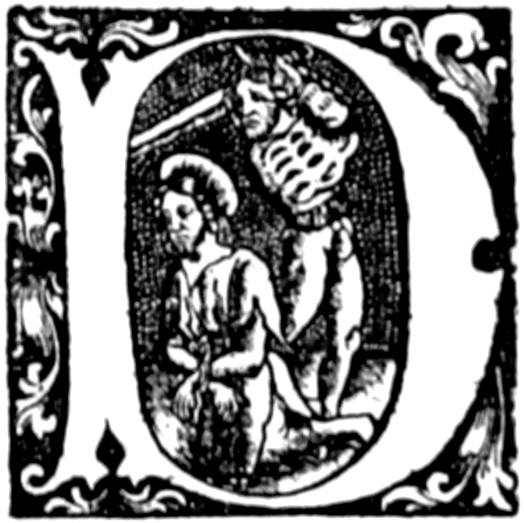
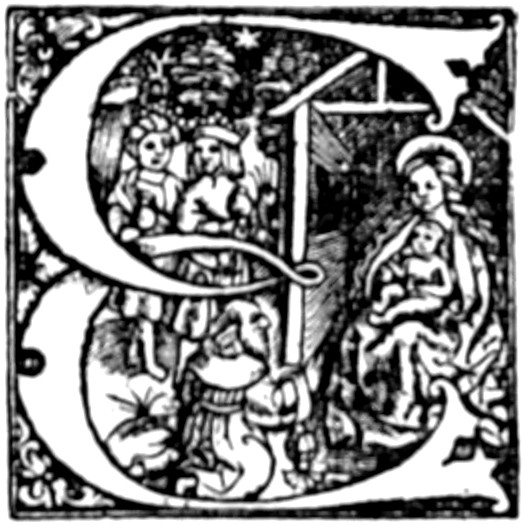

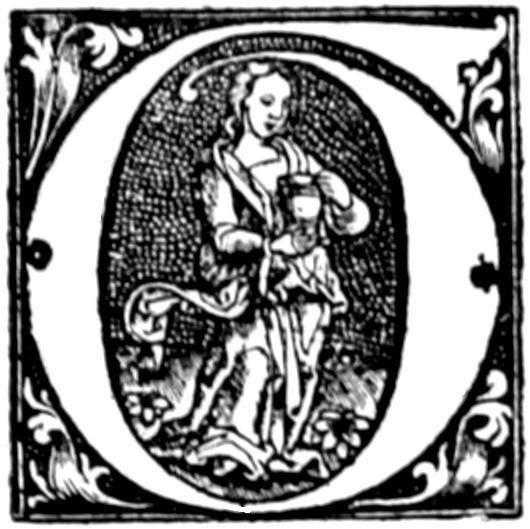
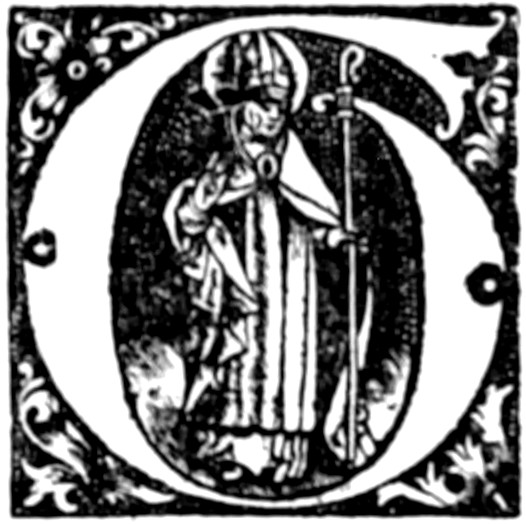
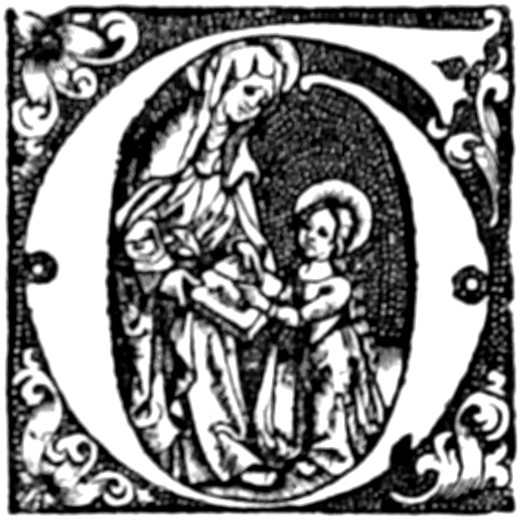
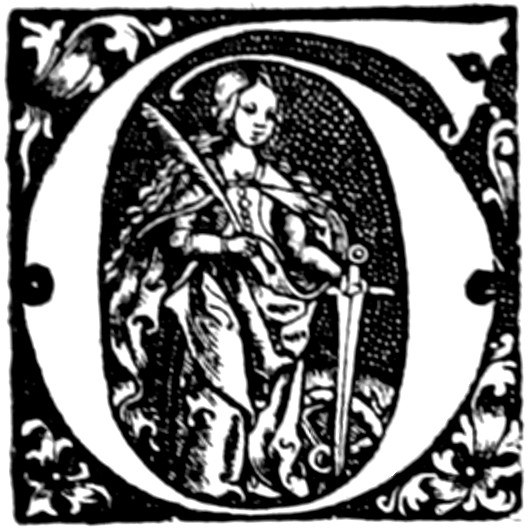

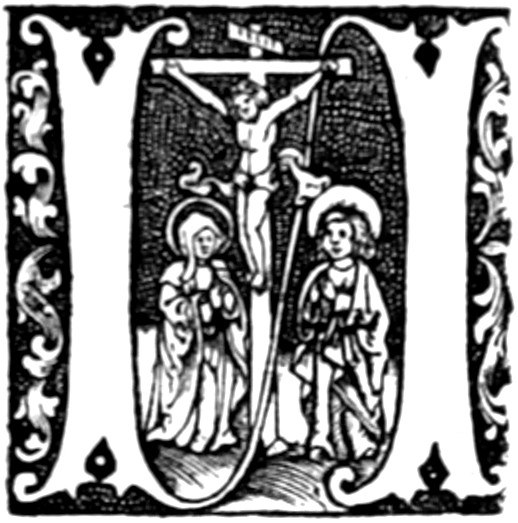
FROM MISSALS BY WOLFGANG HOPYL
[234]
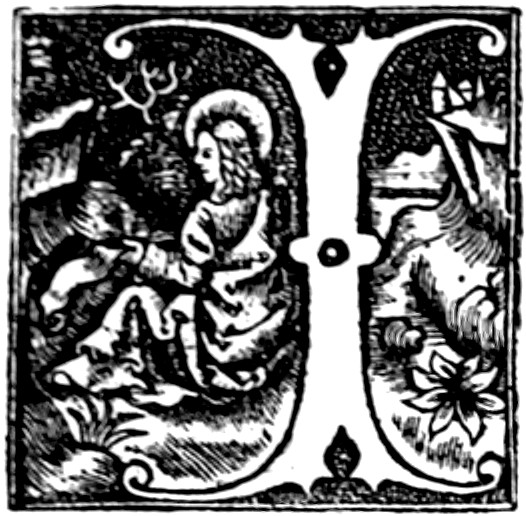
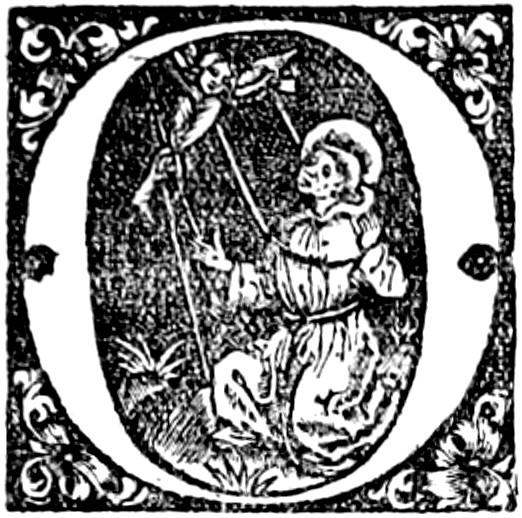
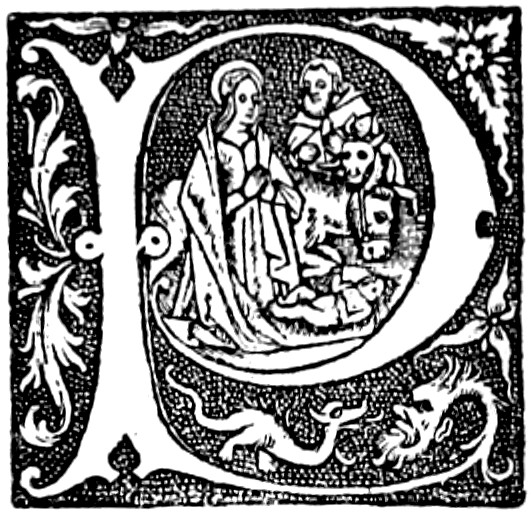
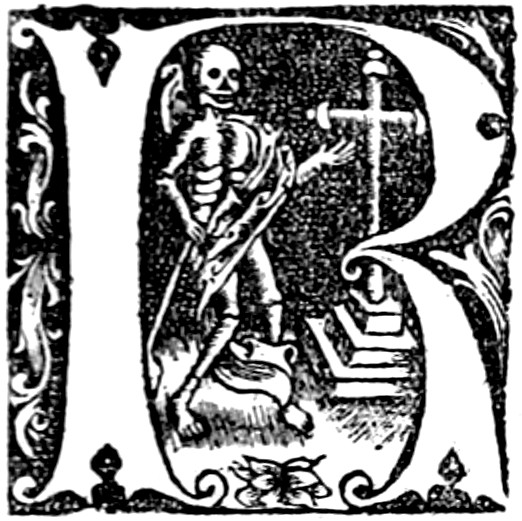
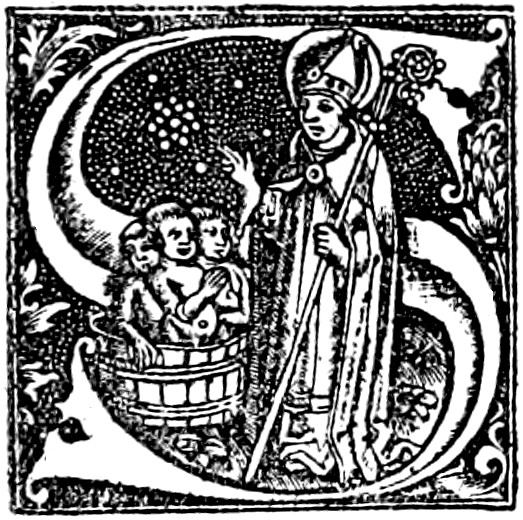
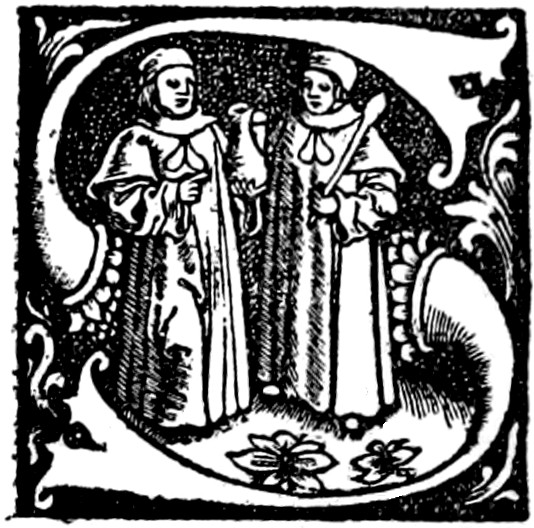
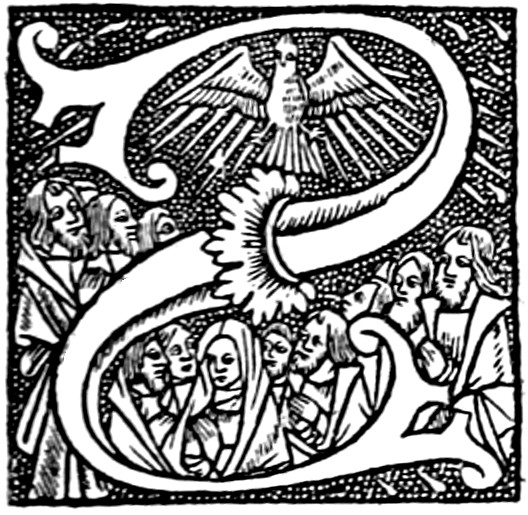
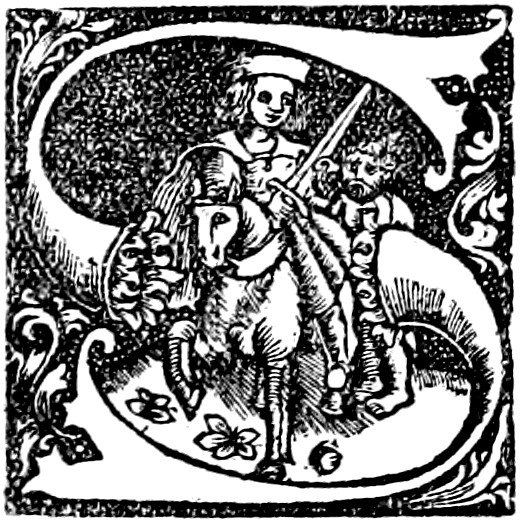
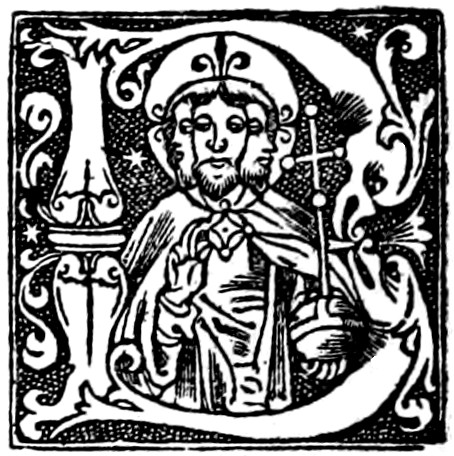
FROM MISSALS BY WOLFGANG HOPYL
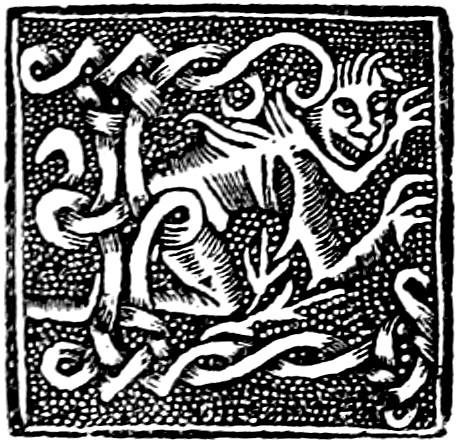
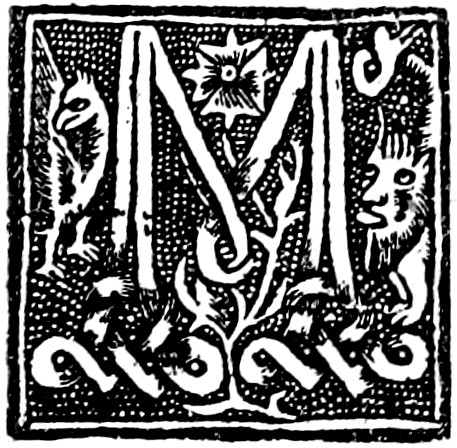
INITIALS USED BY PHILIPPE LENOIR, TREPPEREL, AND OTHERS
[235]
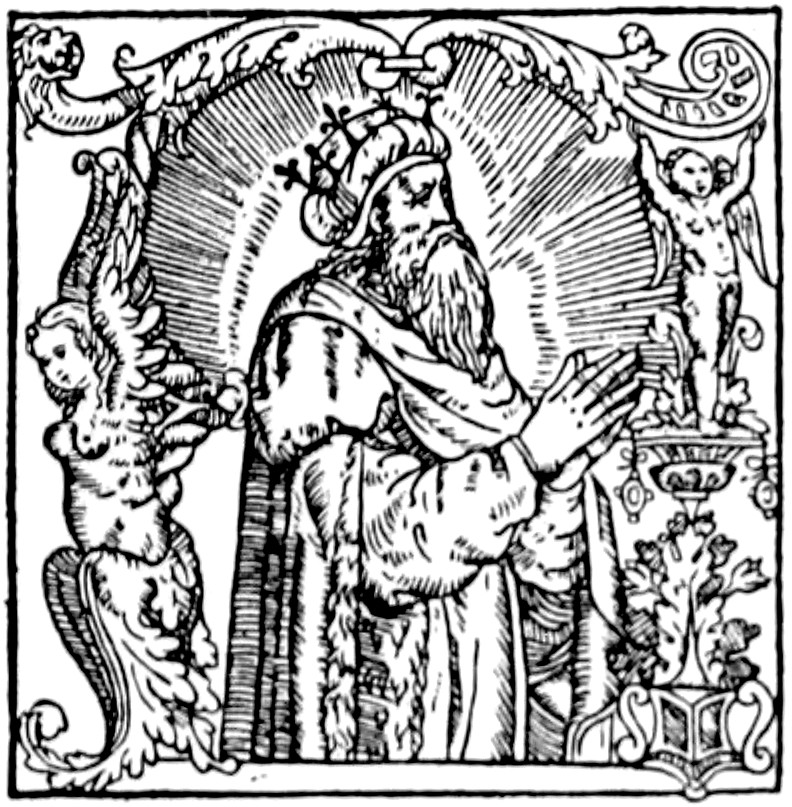
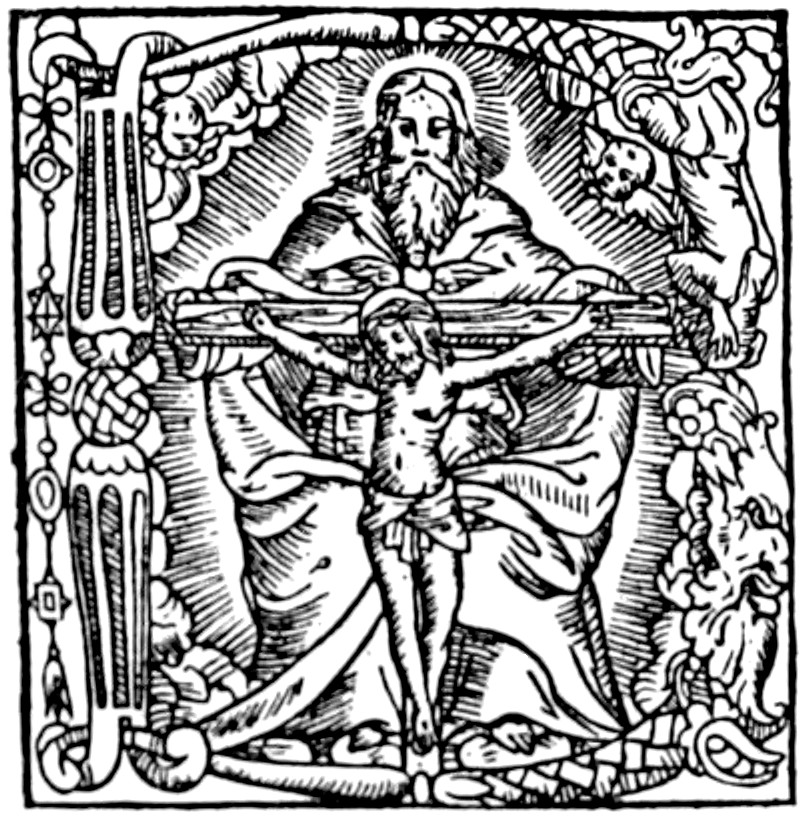
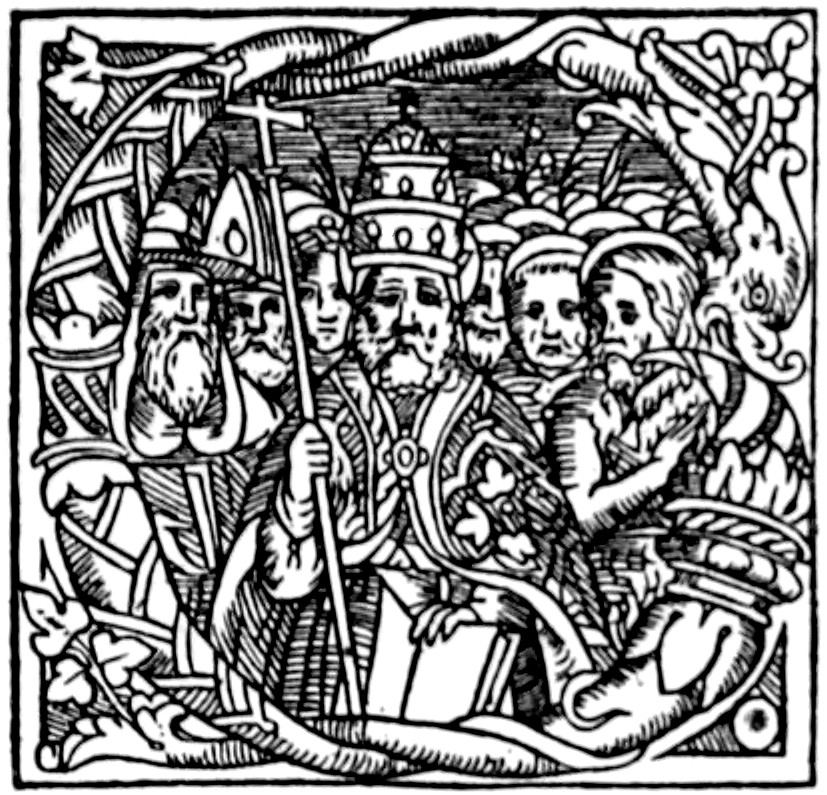
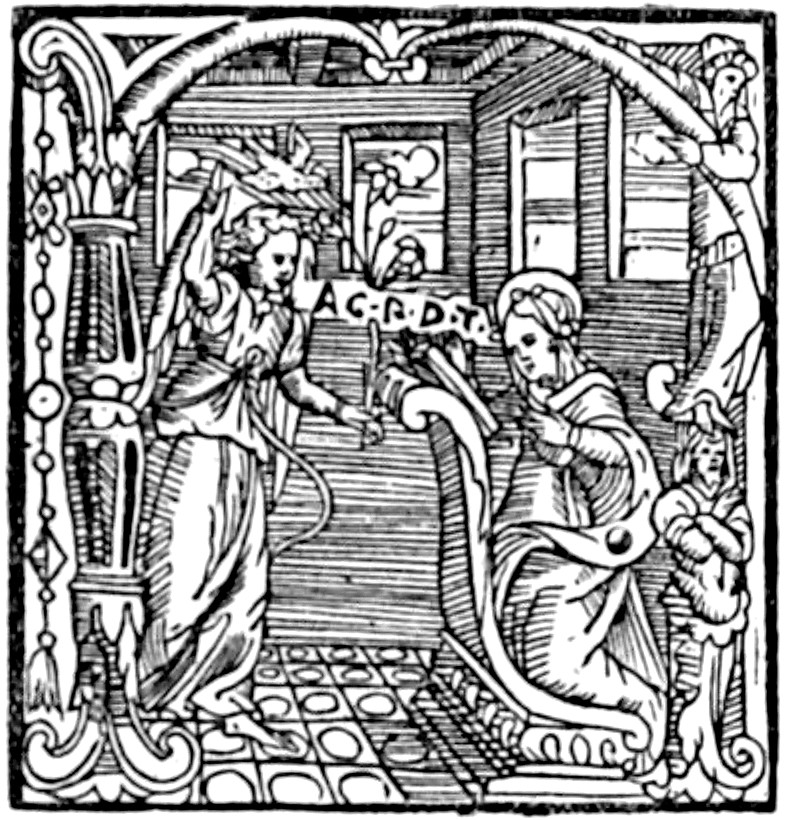
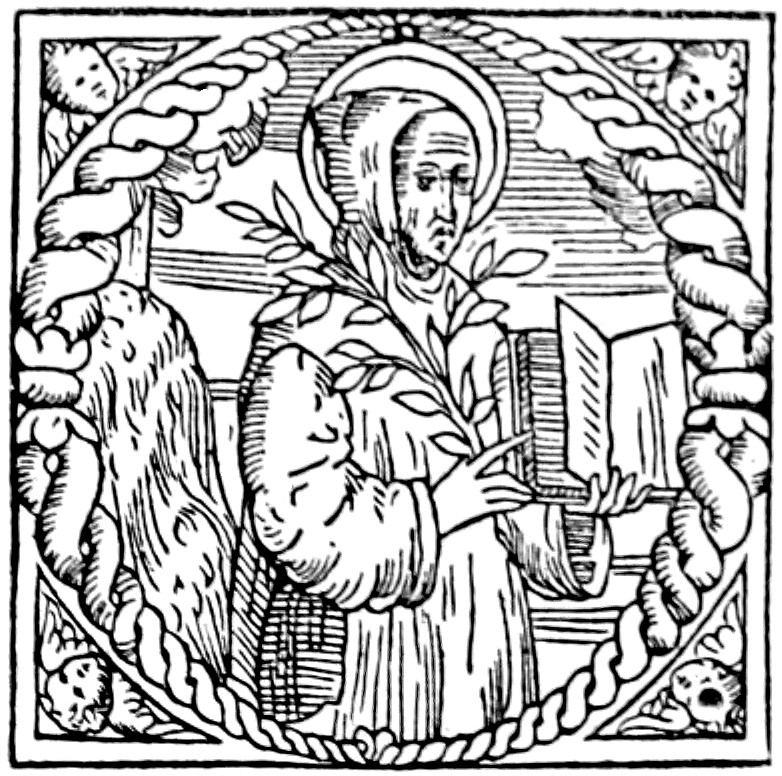

FROM AN UNIDENTIFIED MISSAL ATTRIBUTED TO G. TORY
[236]
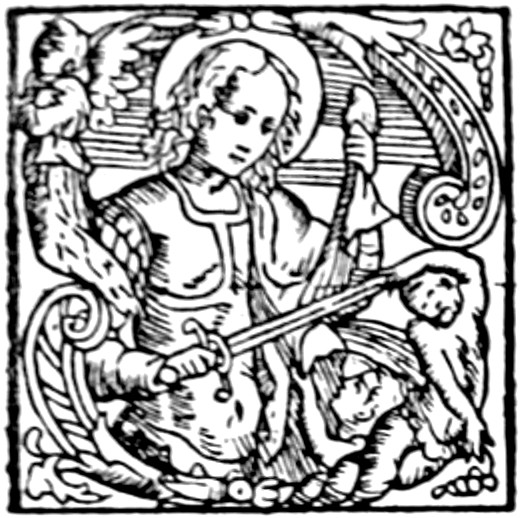
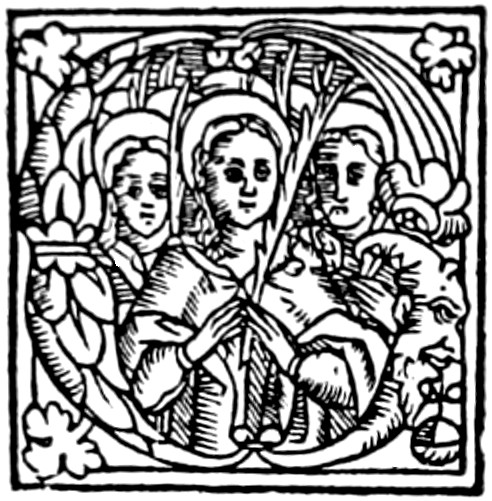
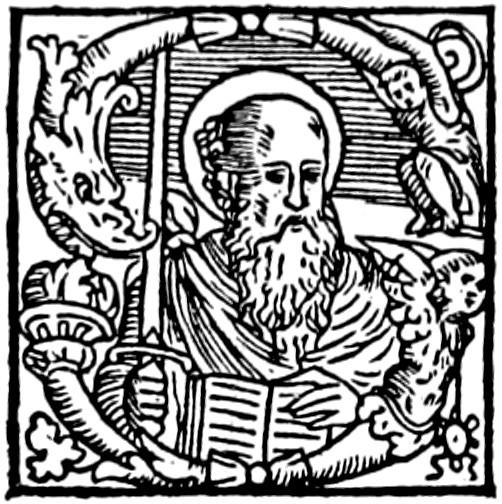
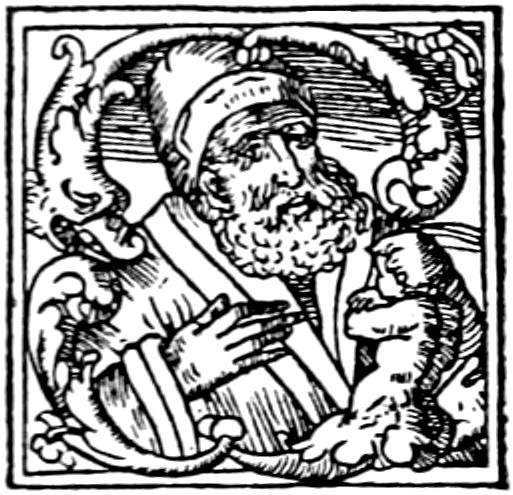
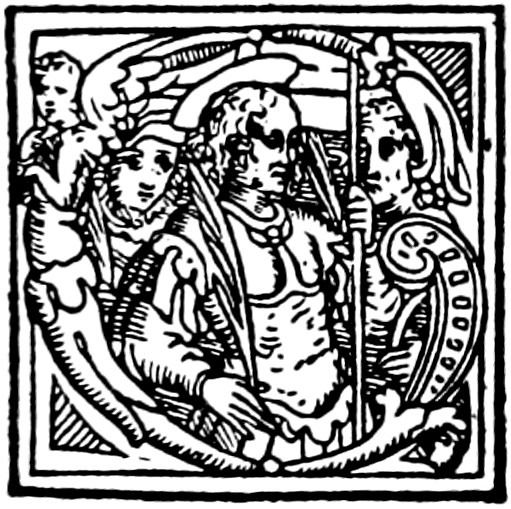
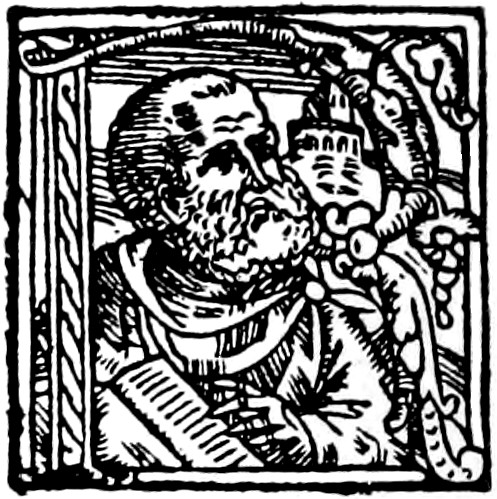
FROM AN UNIDENTIFIED MISSAL ATTRIBUTED TO G. TORY

FROM A PARIS MISSAL
[237]
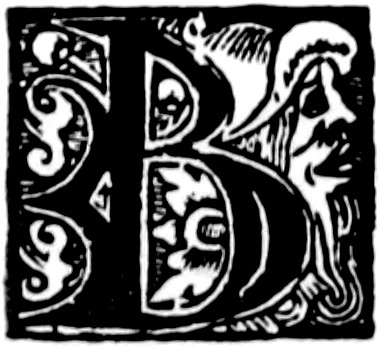

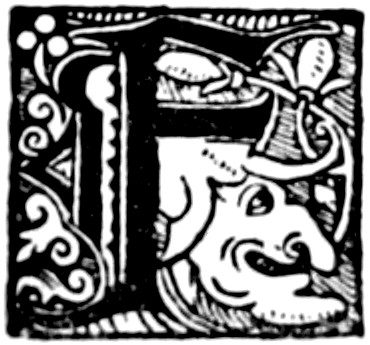
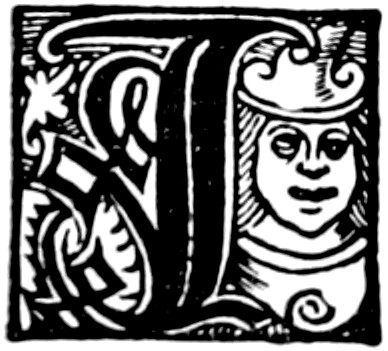

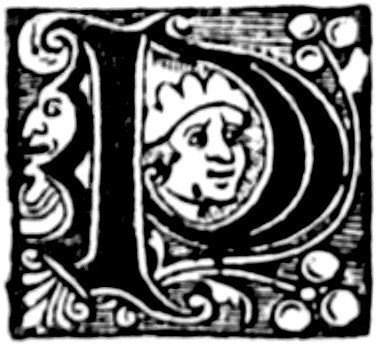
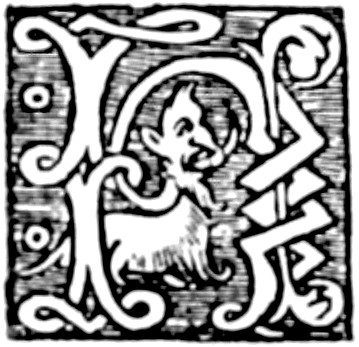
GROTESQUE MISSAL INITIALS
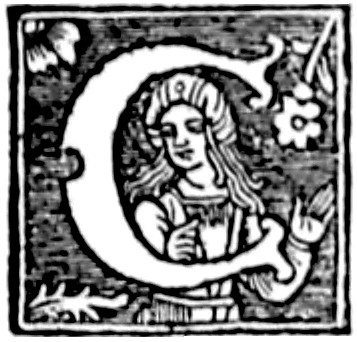
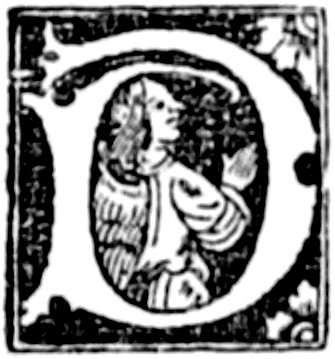
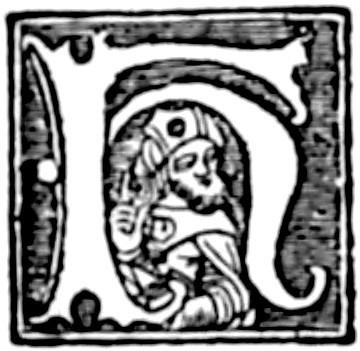
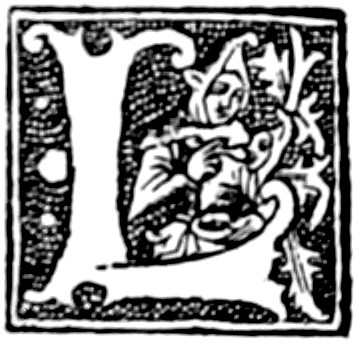
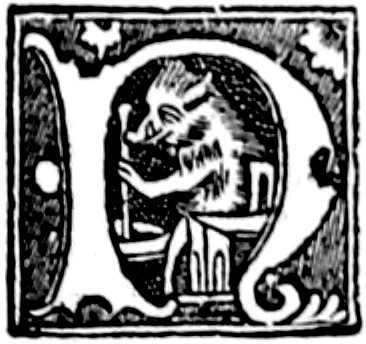
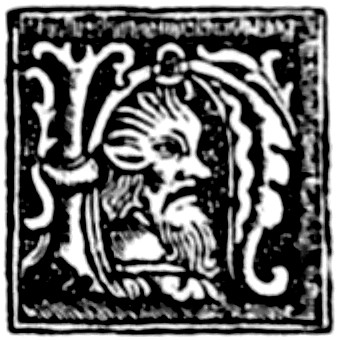
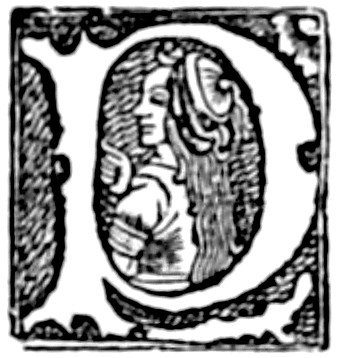
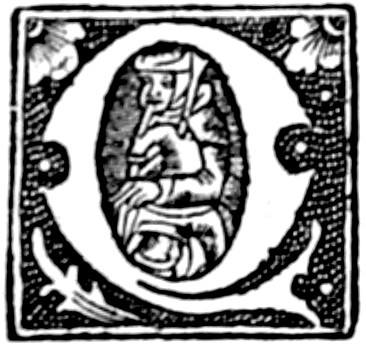
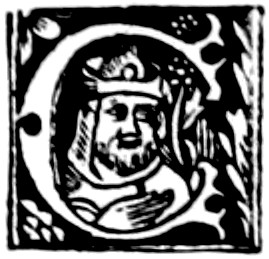
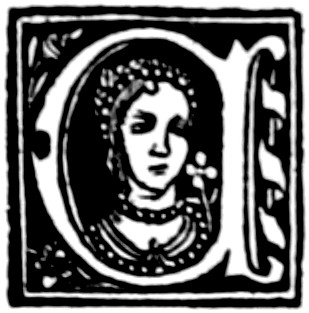
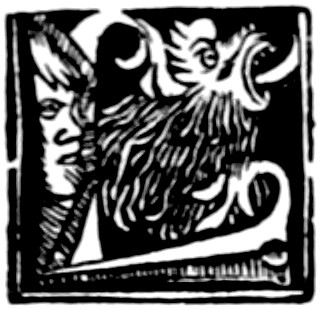
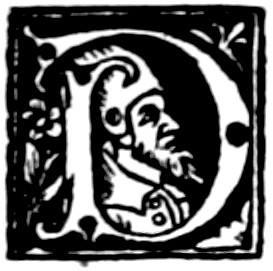
FROM A ‘PROPRIETAIRE’ OF PHILIPPE LENOIR
[238]
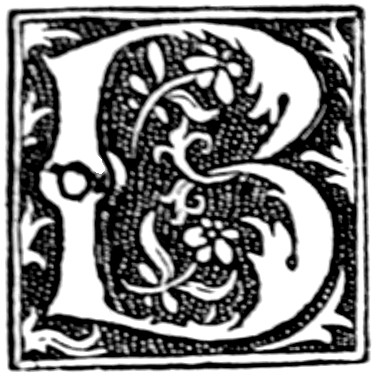
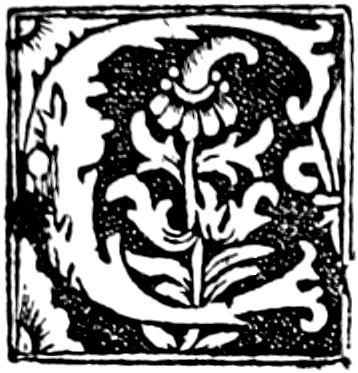
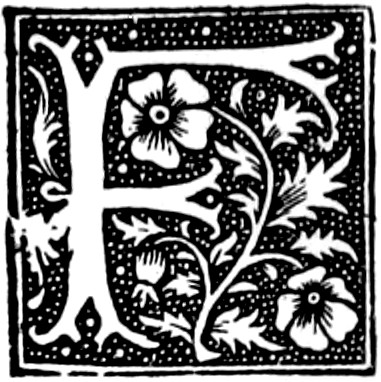
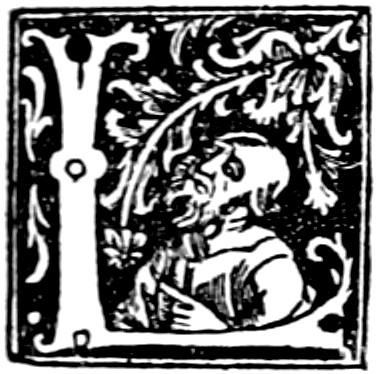
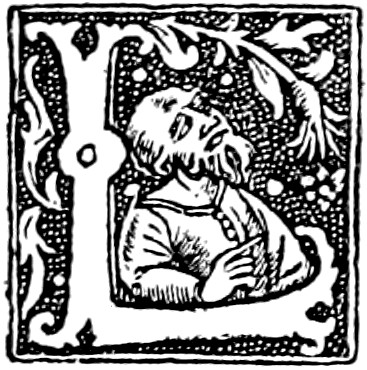
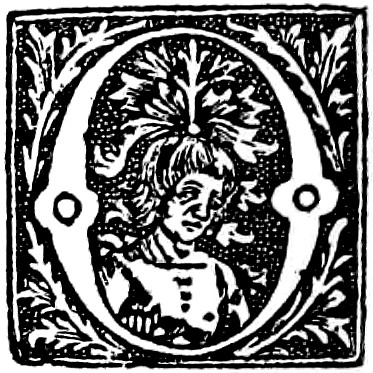
INITIALS USED BY JOSSE BADE
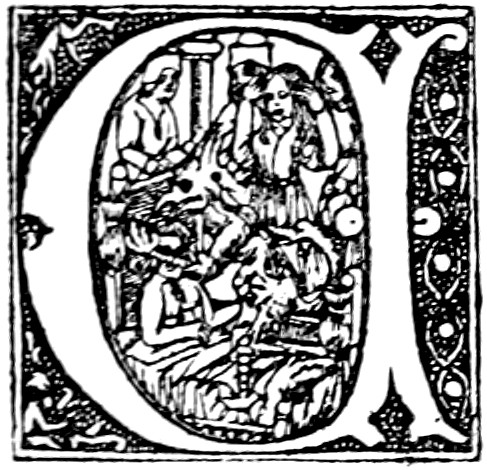
(Original size)
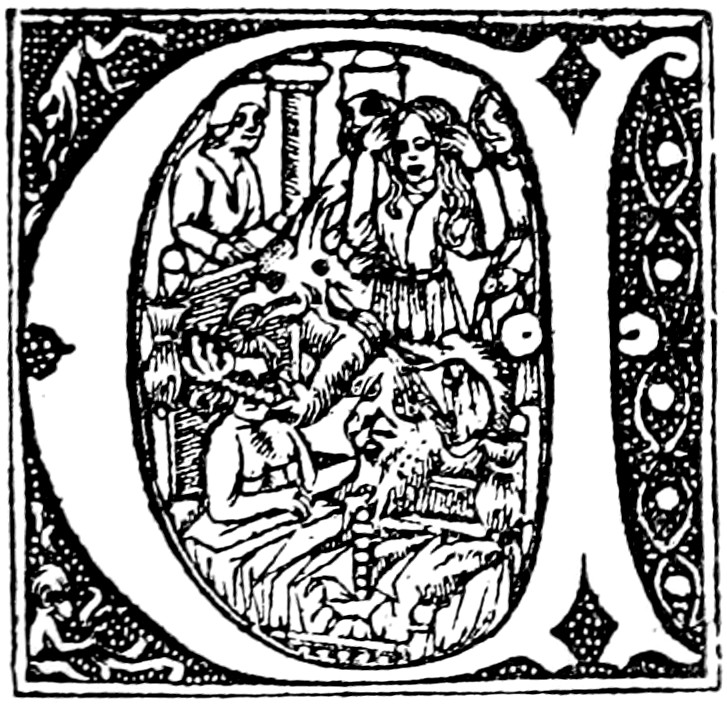
(Enlargement)
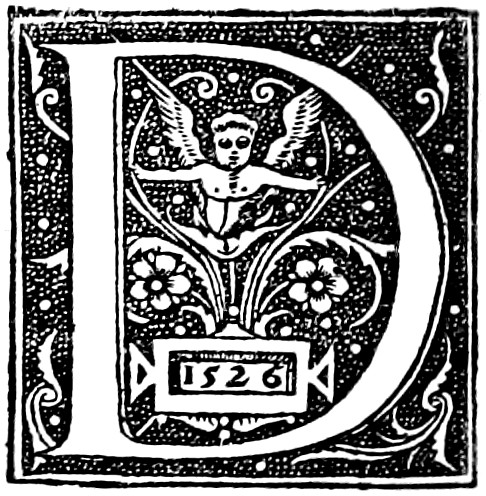
INITIALS USED BY CHEVALLON
[239]
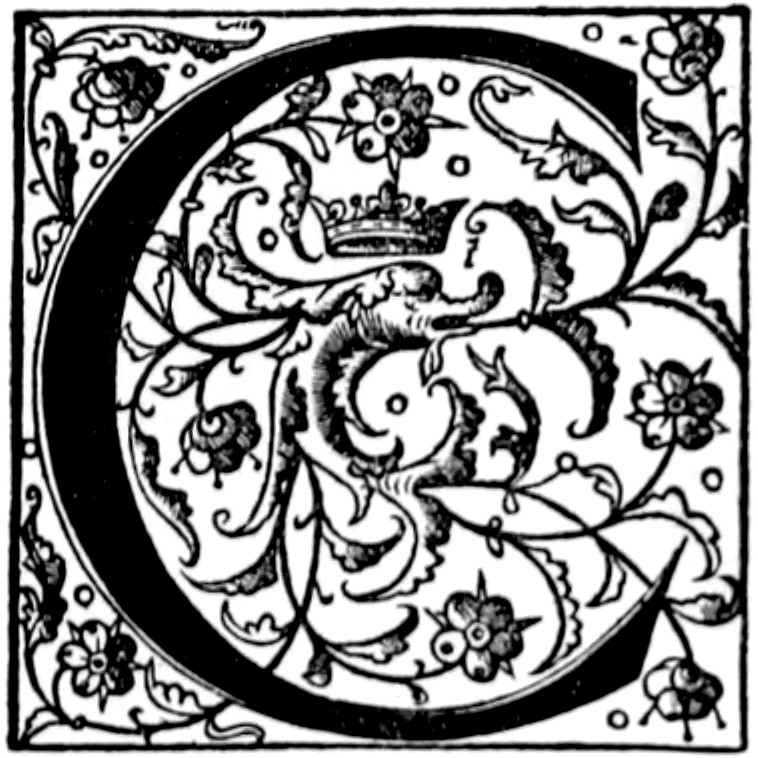
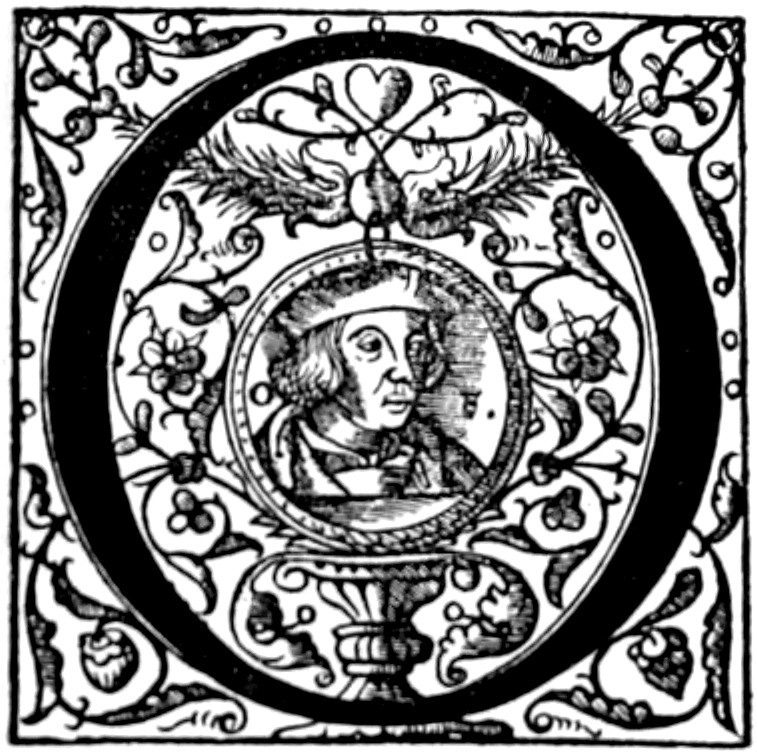
INITIALS BY VASCOSAN
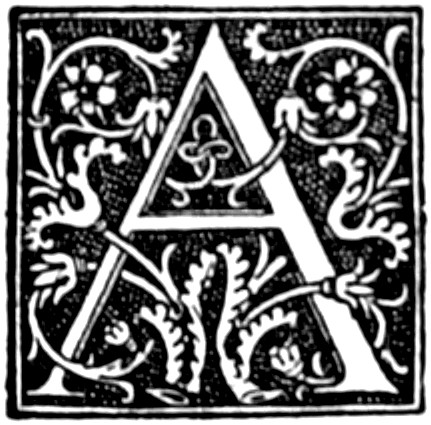
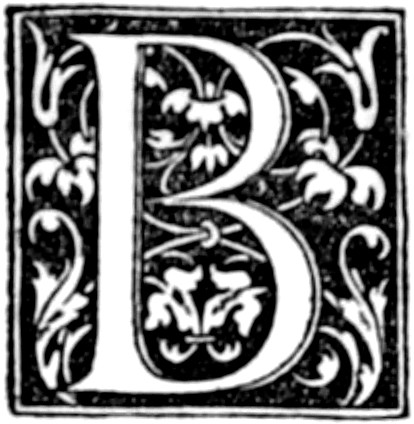
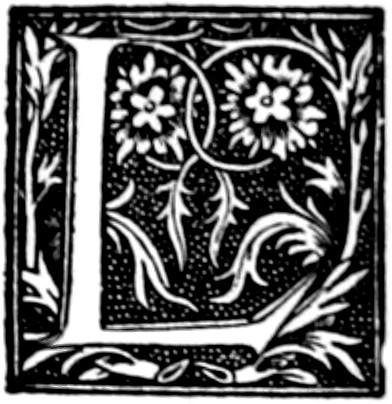
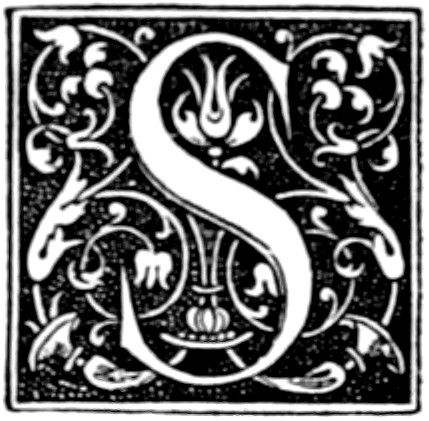
INITIALS BY SIMON DE COLINES
[240]
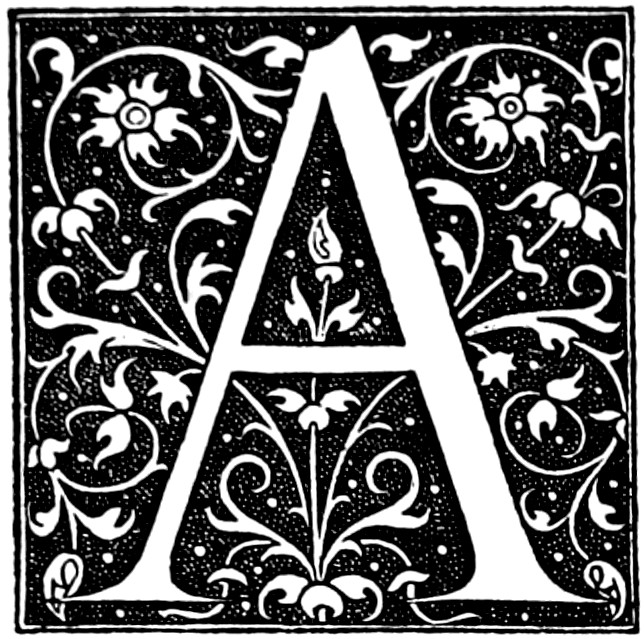
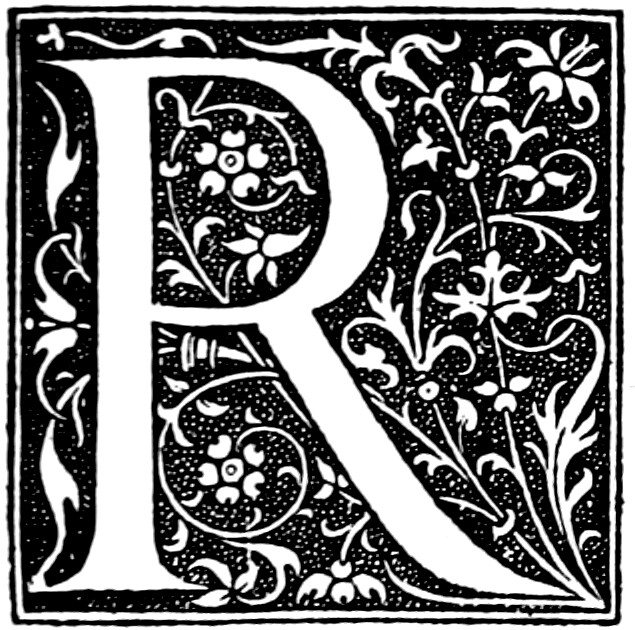

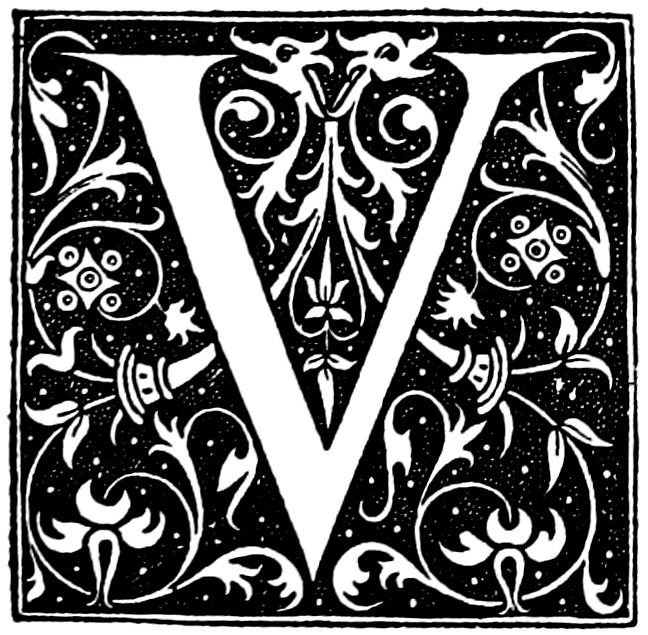
ROYAL LETTERS DESIGNED BY GEOFFROY TORY
[241]
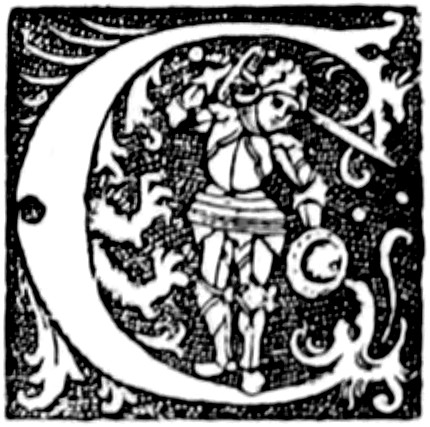
FROM KERVER’S ALPHABET
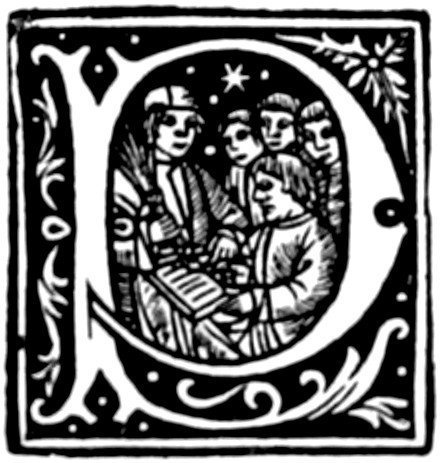
FROM DE LA BARRE’S PRESS
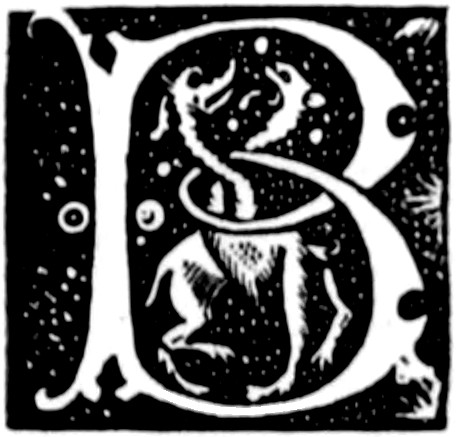
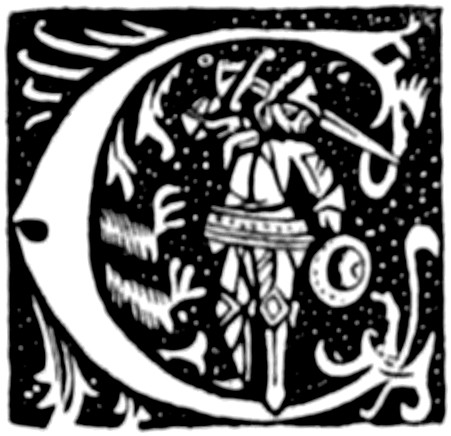

ENGLISH COPIES OF KERVER
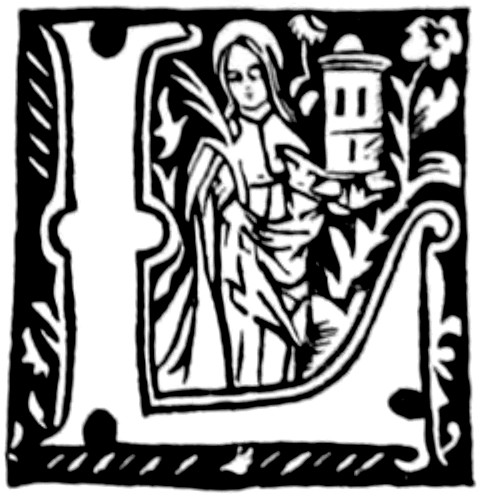
COPY OF REMBOLT
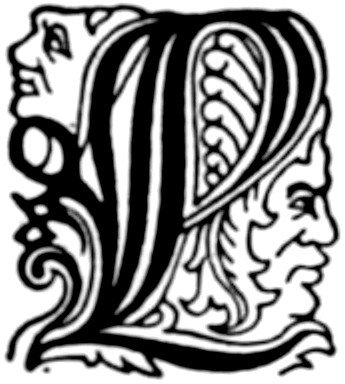
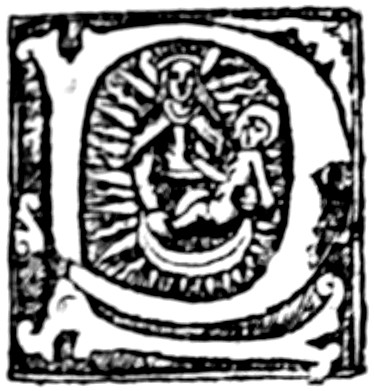
FROM PHILIP LE NOIR
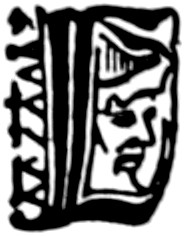

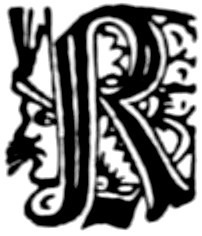
PEN LETTERS OF PHILIP LE NOIR
[242]
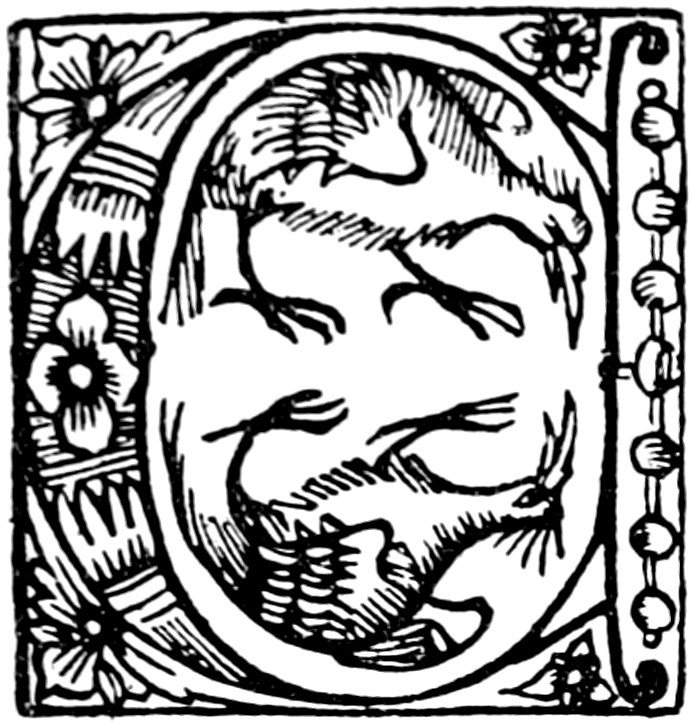
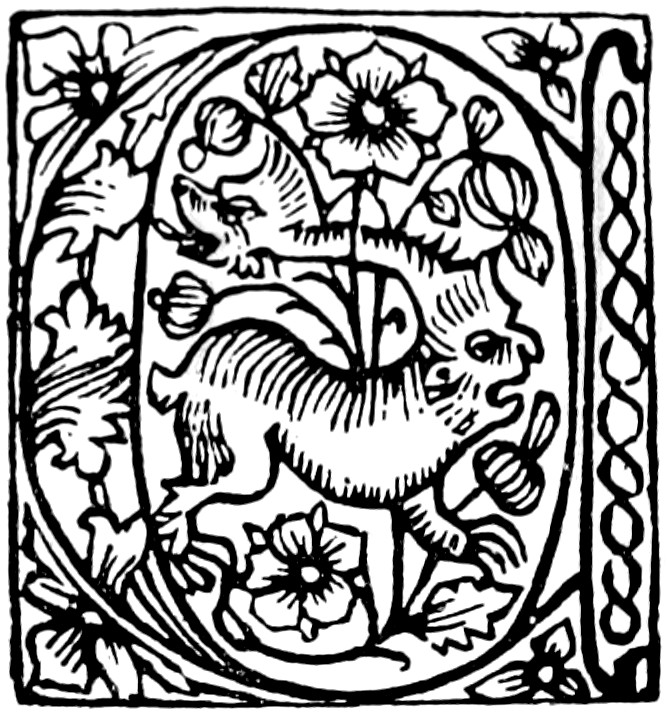
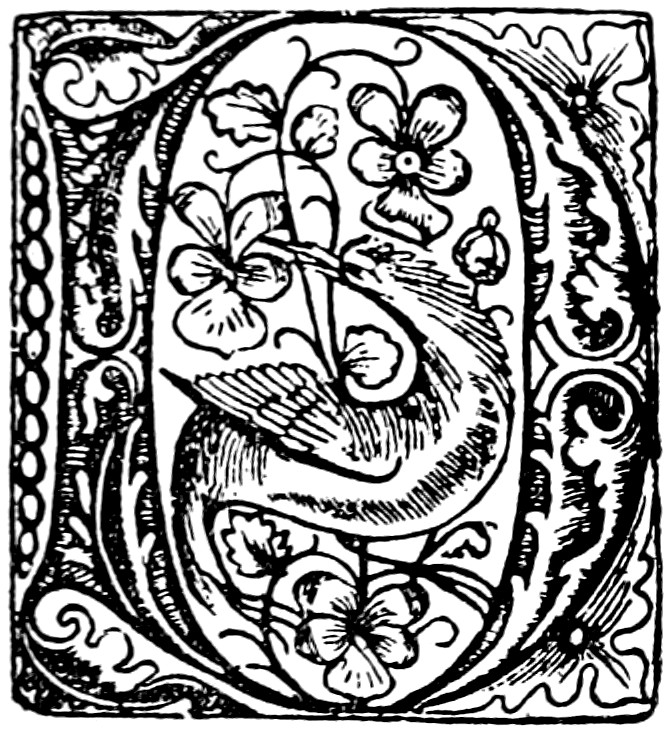
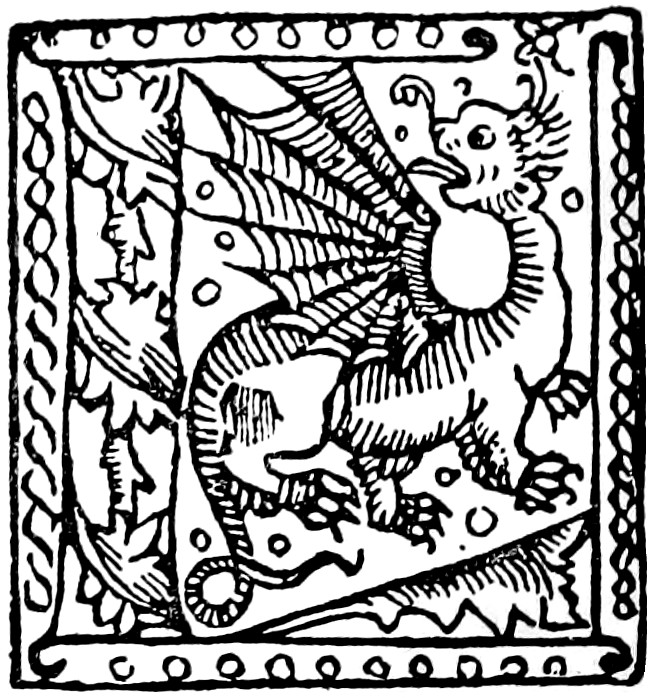

FROM ‘LA THOISON D’OR’ BY THE LEROUGES
[243]
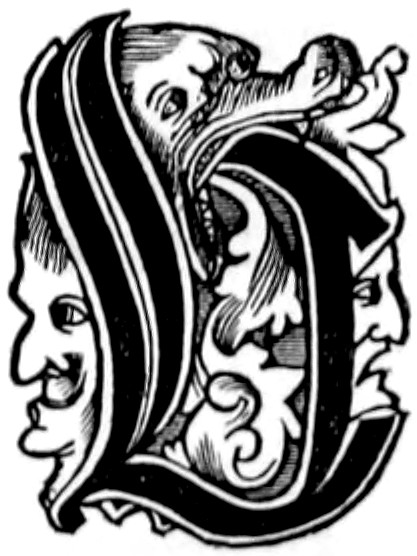
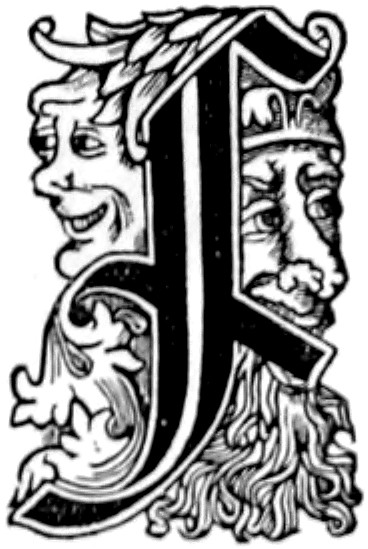
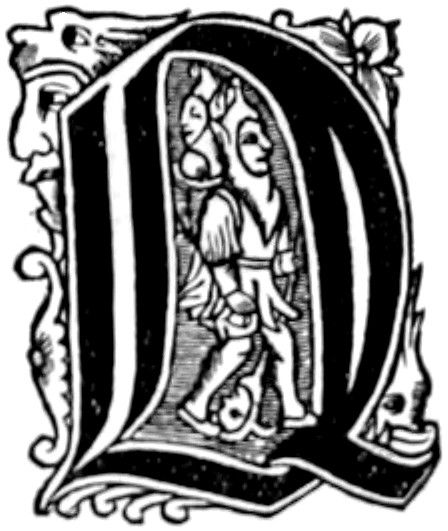
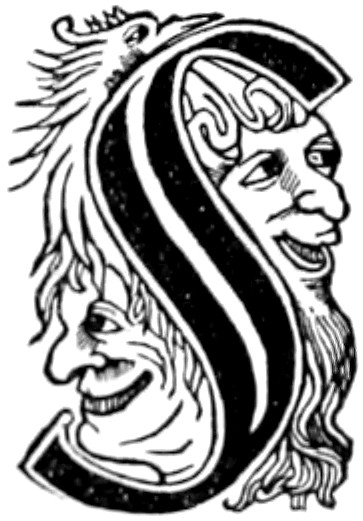
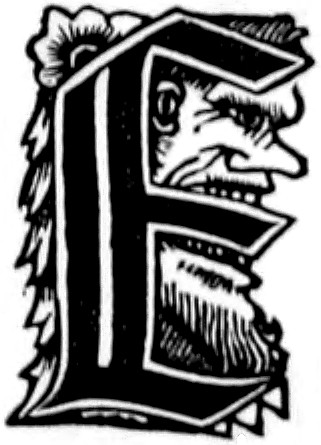

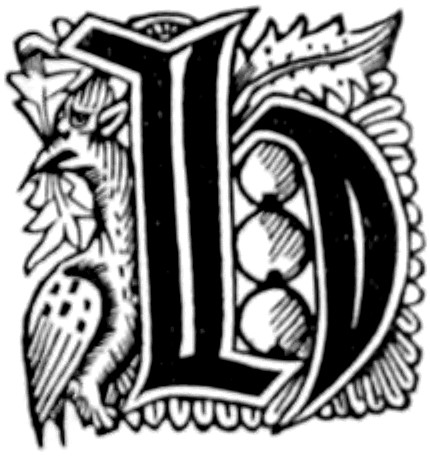
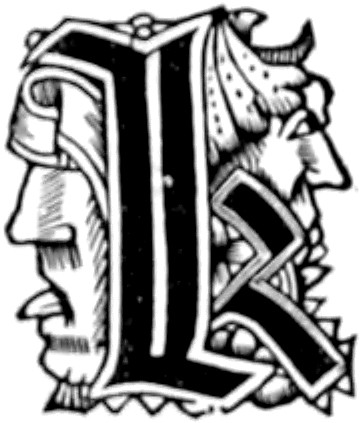
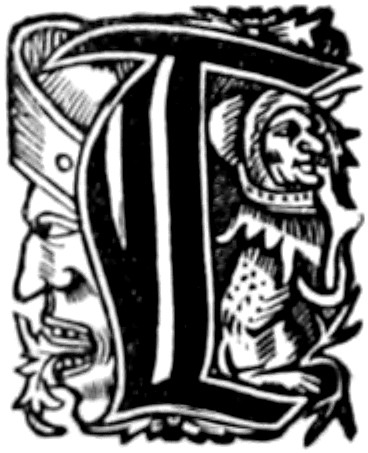
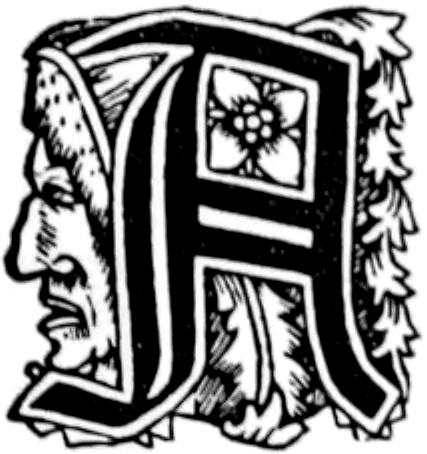
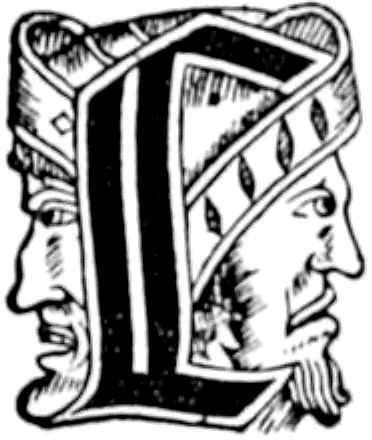
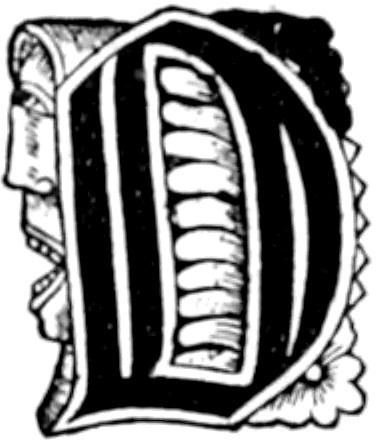
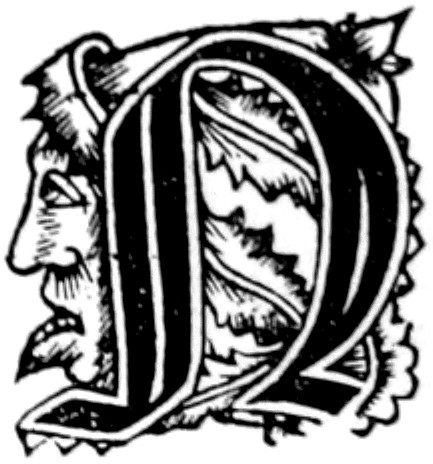
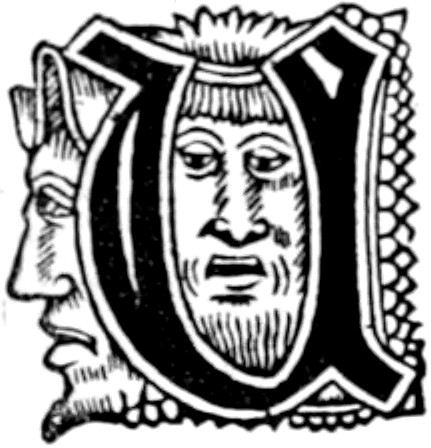
FROM THE ‘GRADUALE TRECENSE’ AND ‘STATUTA SYNODALIA’ BY LECOQ
[244]
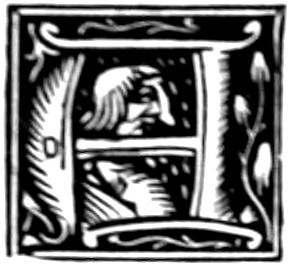
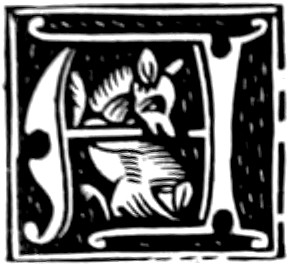
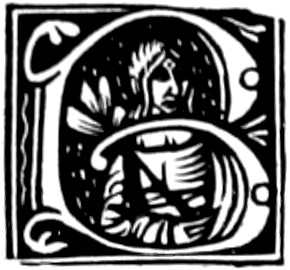
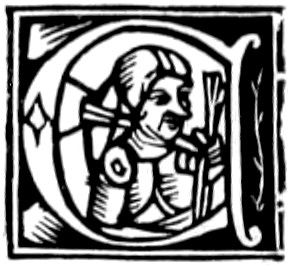
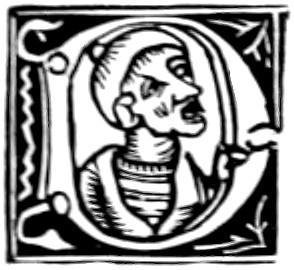
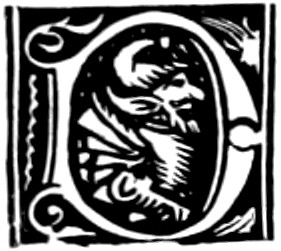
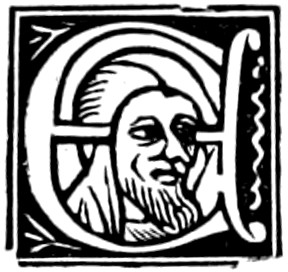
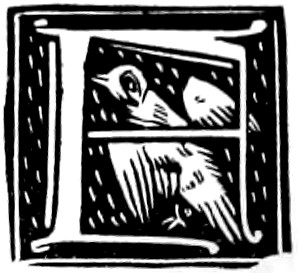
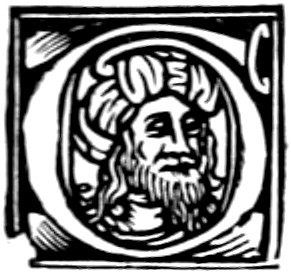
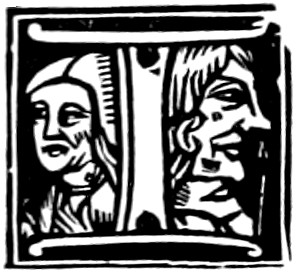
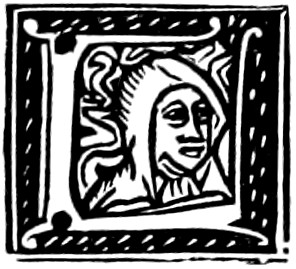
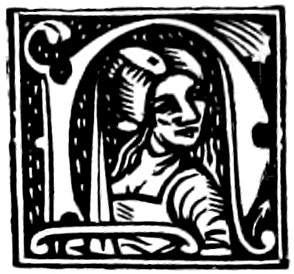

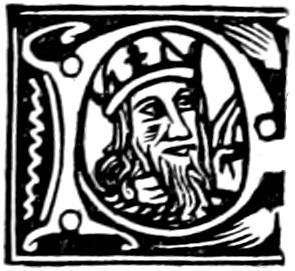
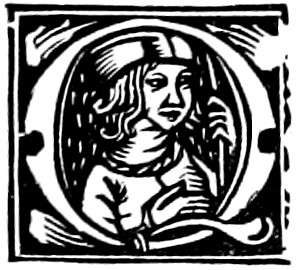

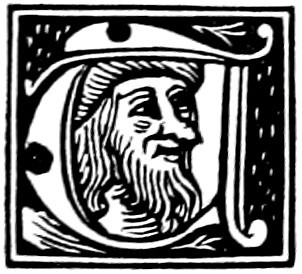
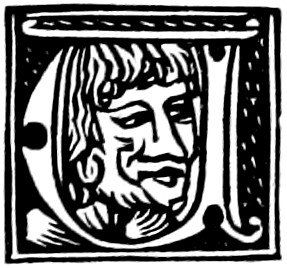
LITTLE LETTERS OF THE ‘VIE DE MONSEIGNEUR ST. BERNARD’ OF LECOQ
[245]
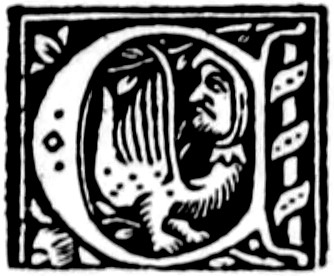
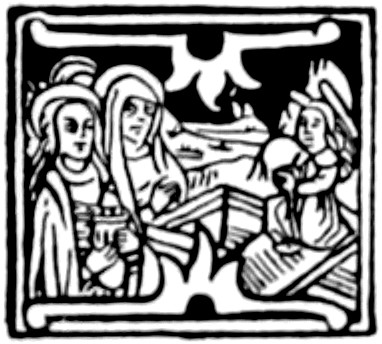
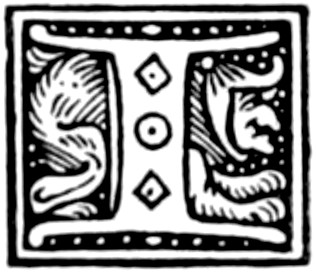
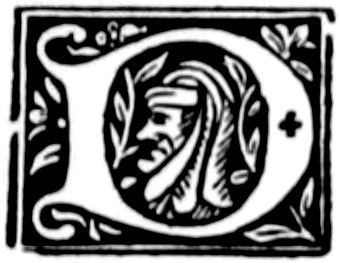
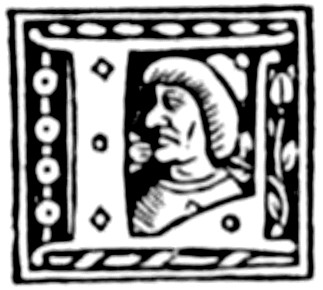
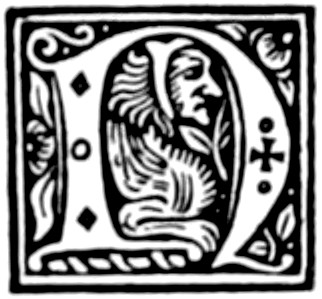
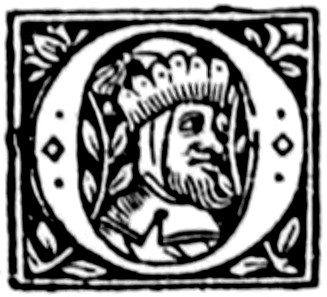
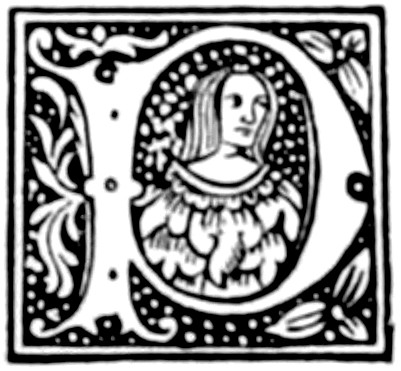
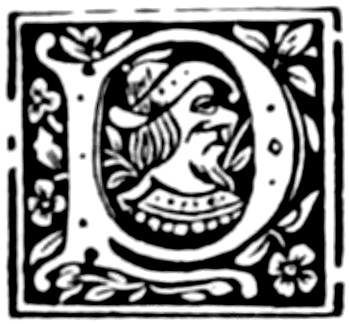
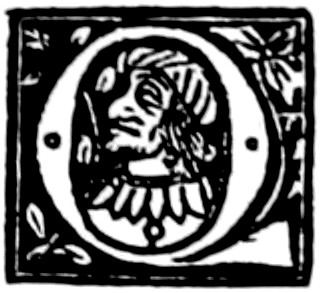
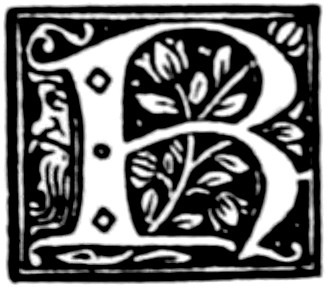
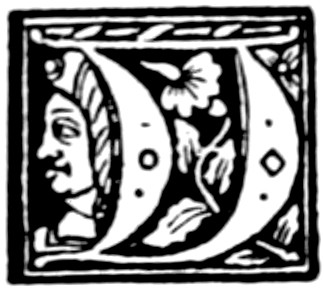
FROM THE ‘PSALTERII EXPOSITIO’ OF PETRUS DE HARENTALS
[246]
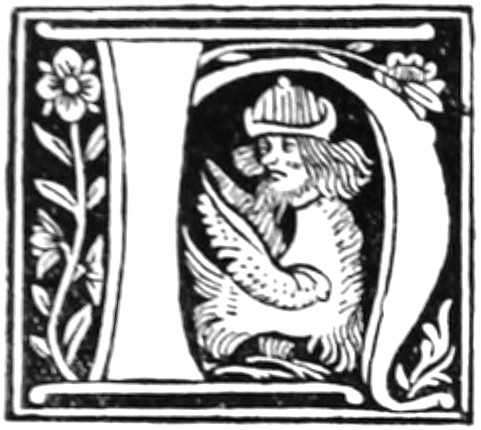
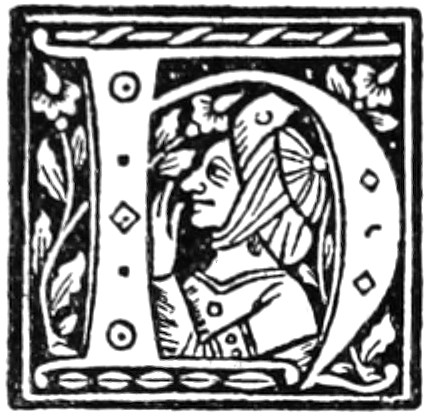

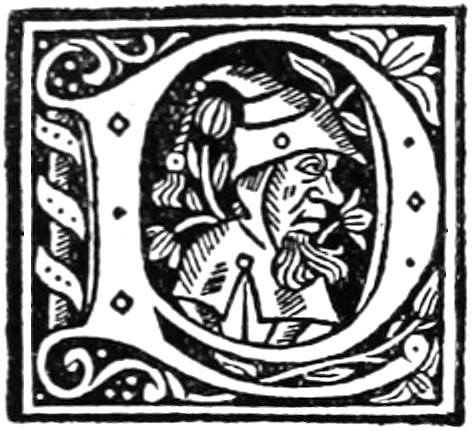
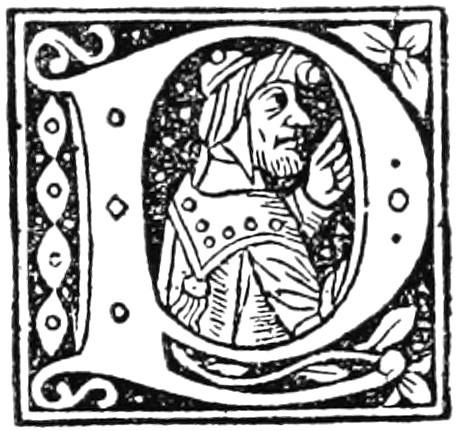
FROM VARIOUS WORKS BY MARTIN MORIN
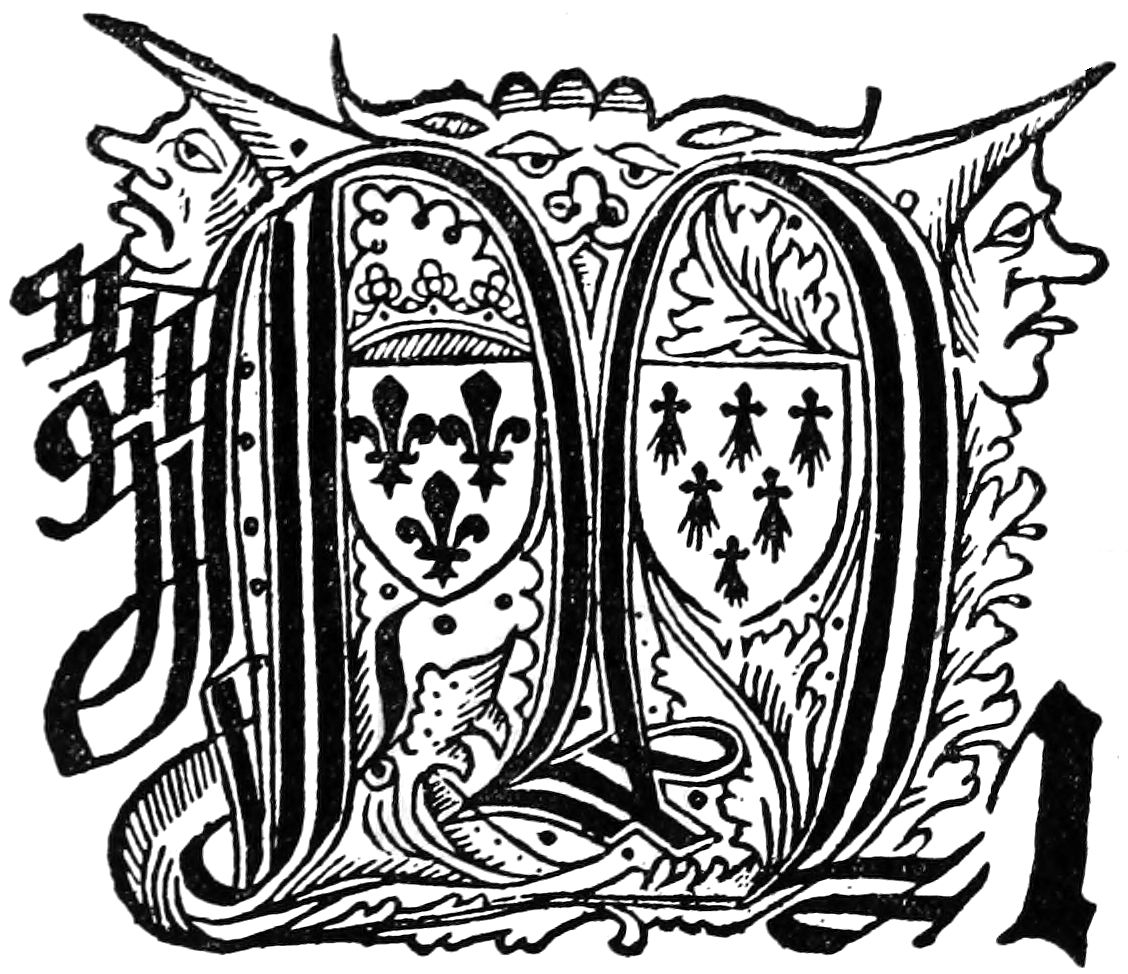
FROM THE ‘MISSALE ATREBATENSE’ OF MARTIN MORIN
[247]
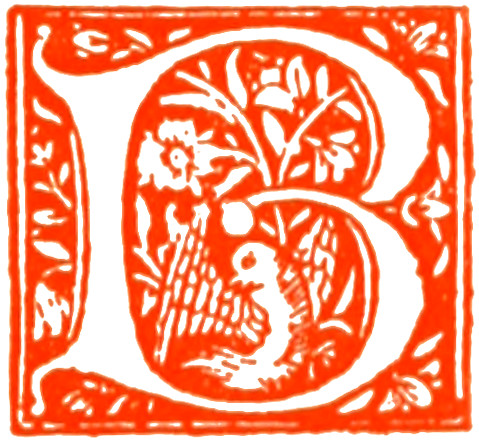
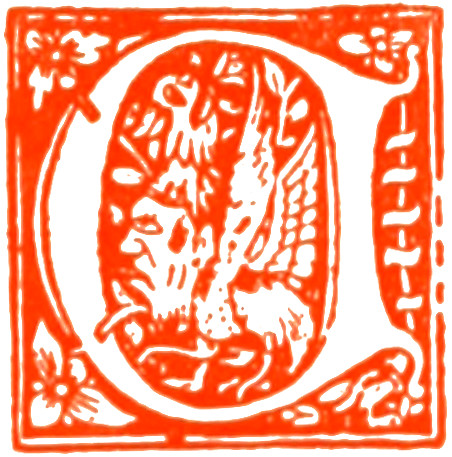
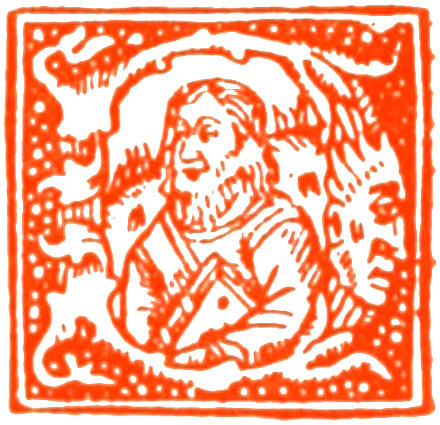
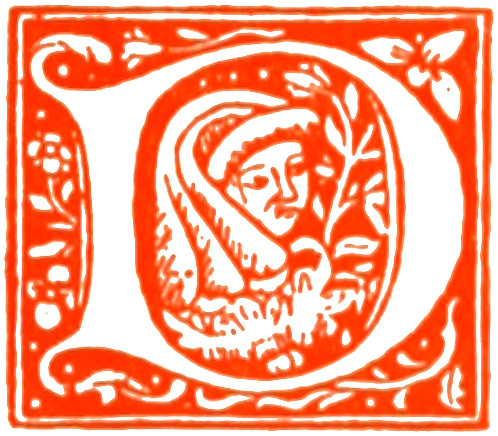
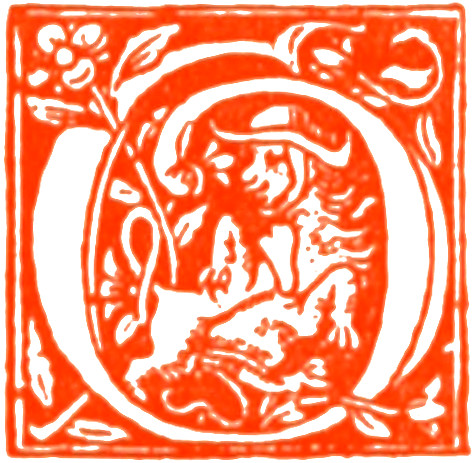
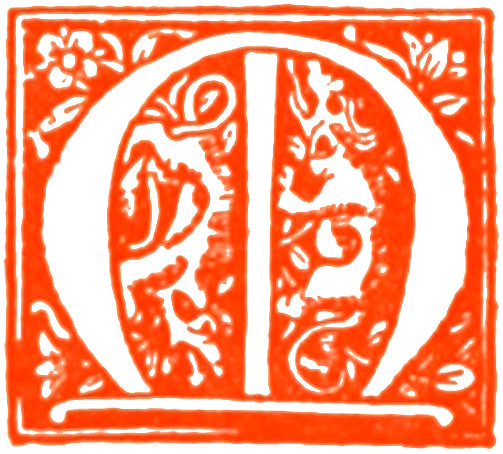
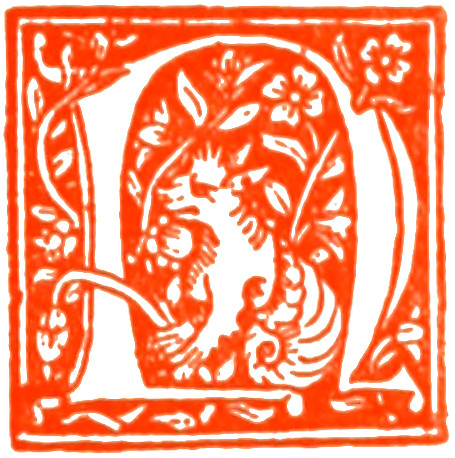
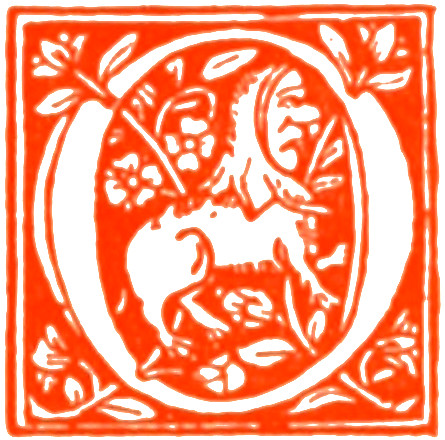

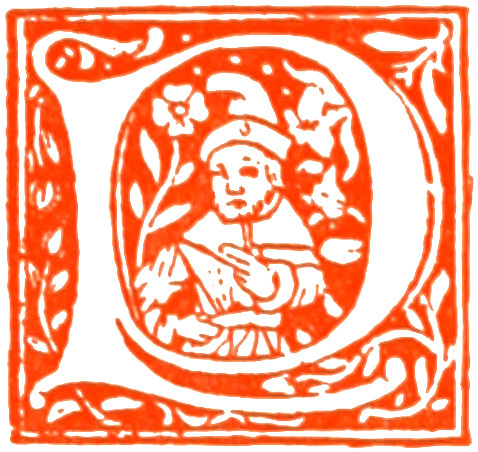
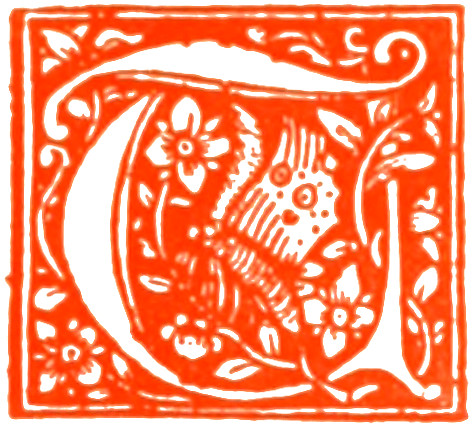
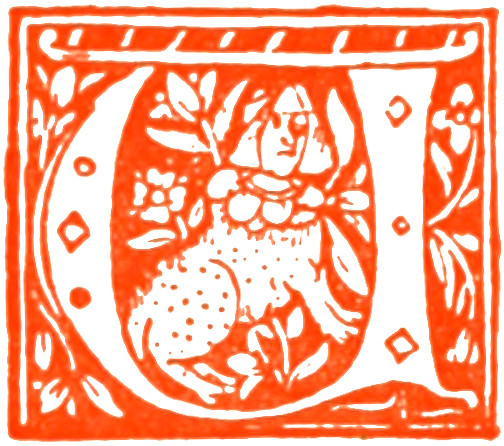
FROM THE ‘MISSALE ATREBATENSE’ OF MARTIN MORIN
[248]
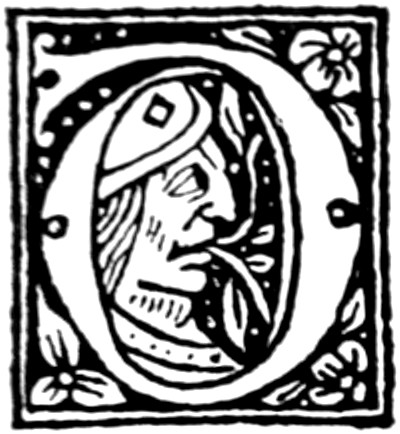
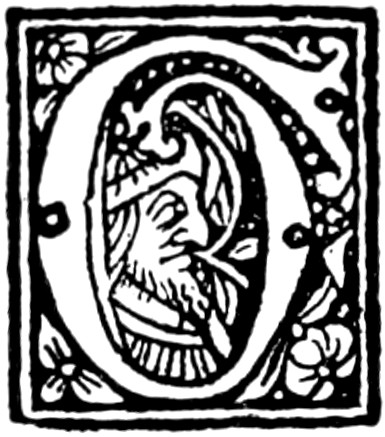
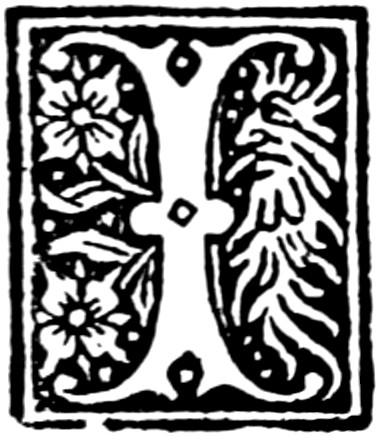
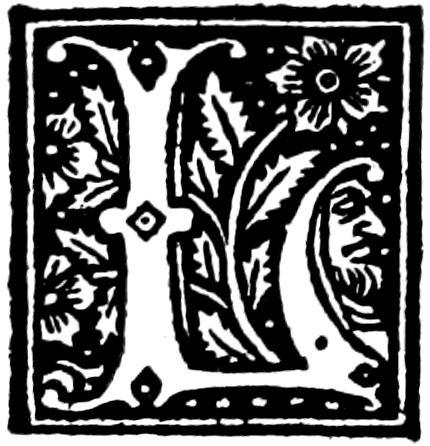
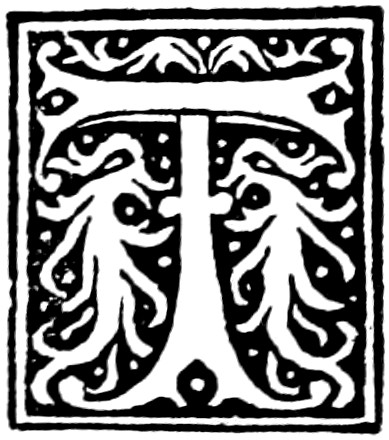
FROM THE ‘COMMINES’ OF J. FORESTIER
[249]
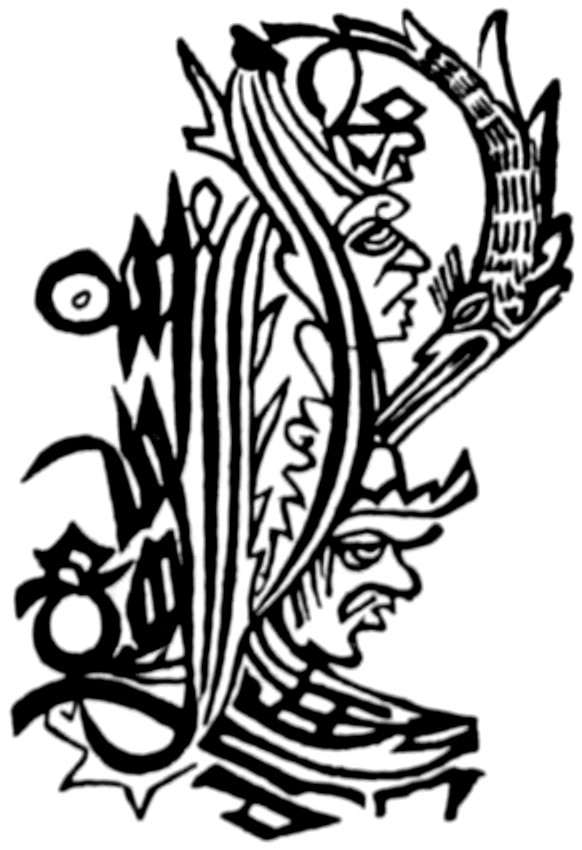
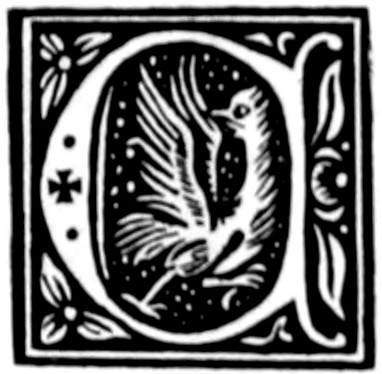
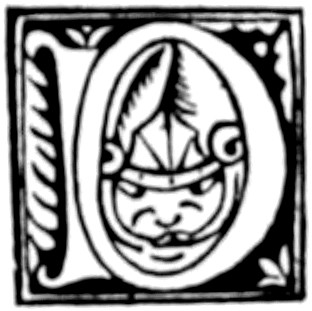
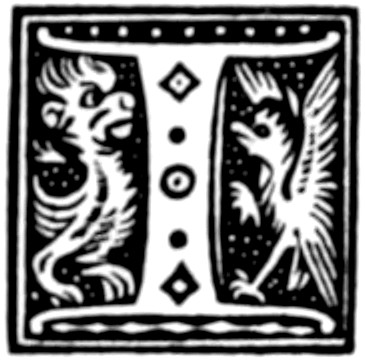
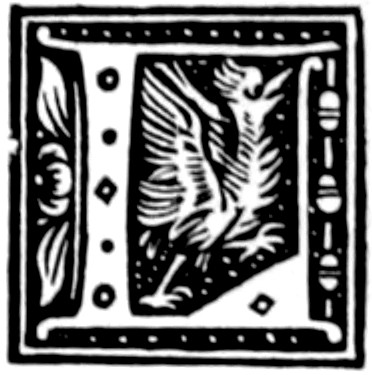
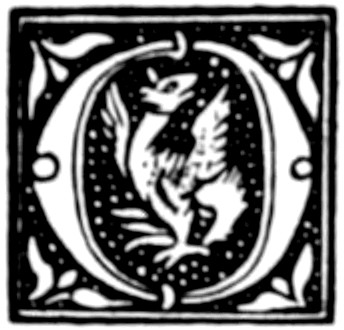
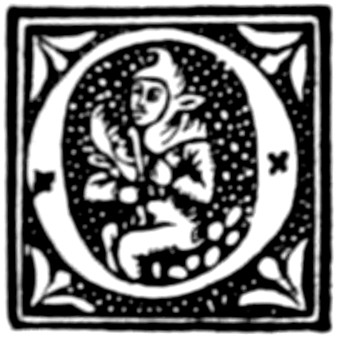
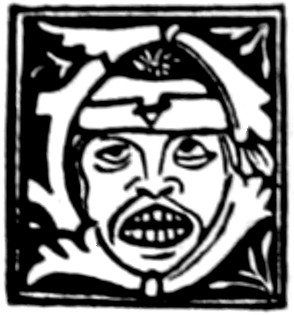
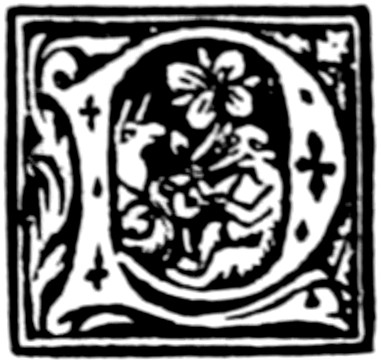
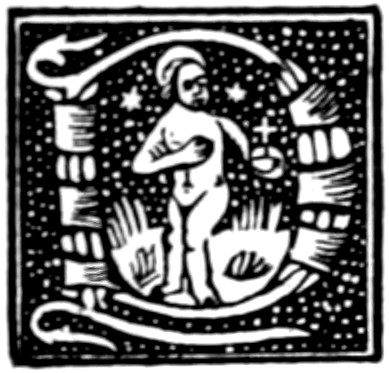
FROM THE ‘PROPRIETAIRE’ OF J. FORESTIER
[250]
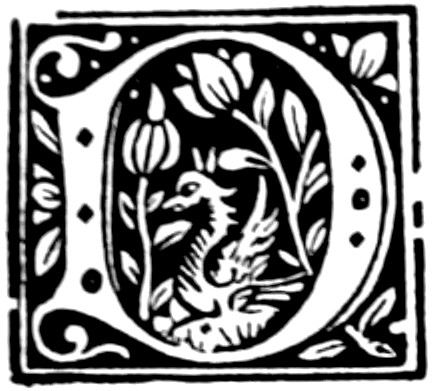
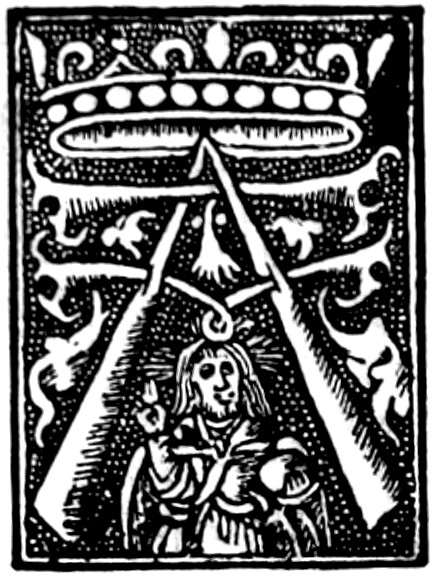
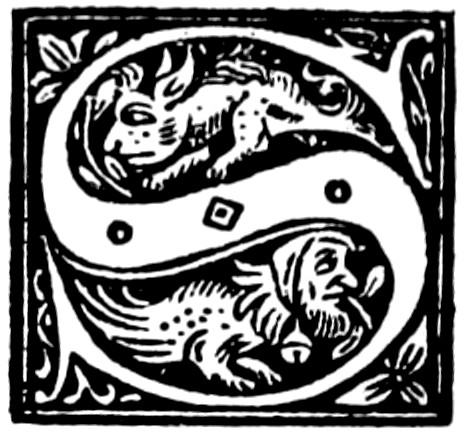
FROM THE ‘OPERA GUILELMI MONACHI VALLADII’ BY HOSTINGUE
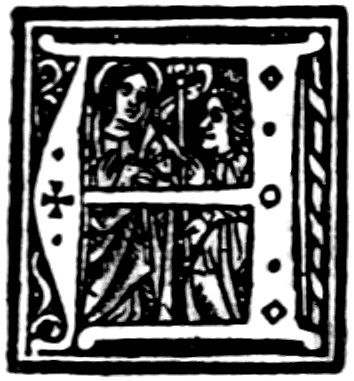
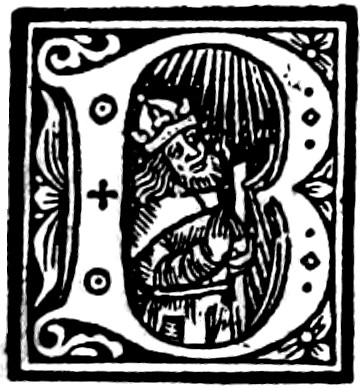
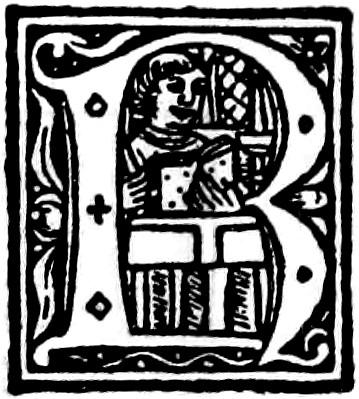
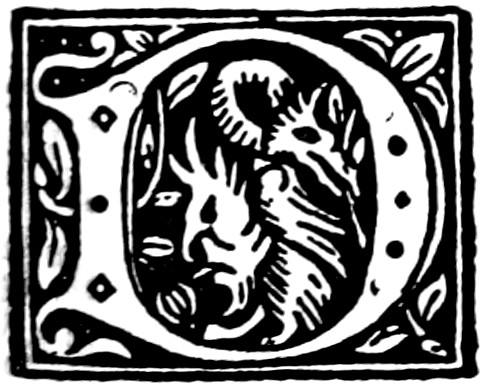
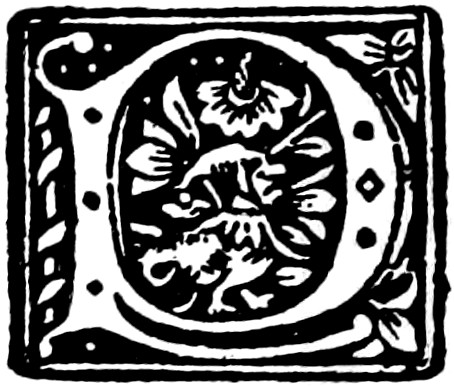
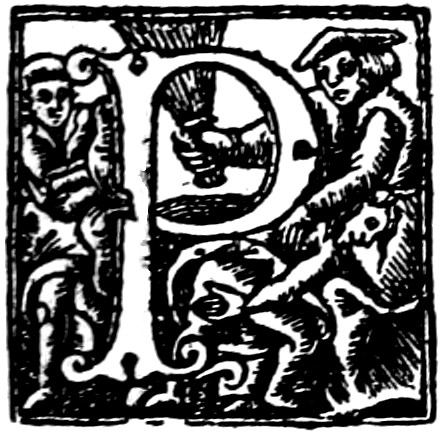
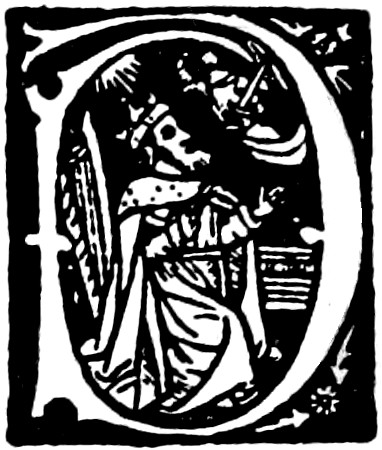
FROM A ‘COUSTUMIER DE NORMANDIE’ OF 1523
[251]
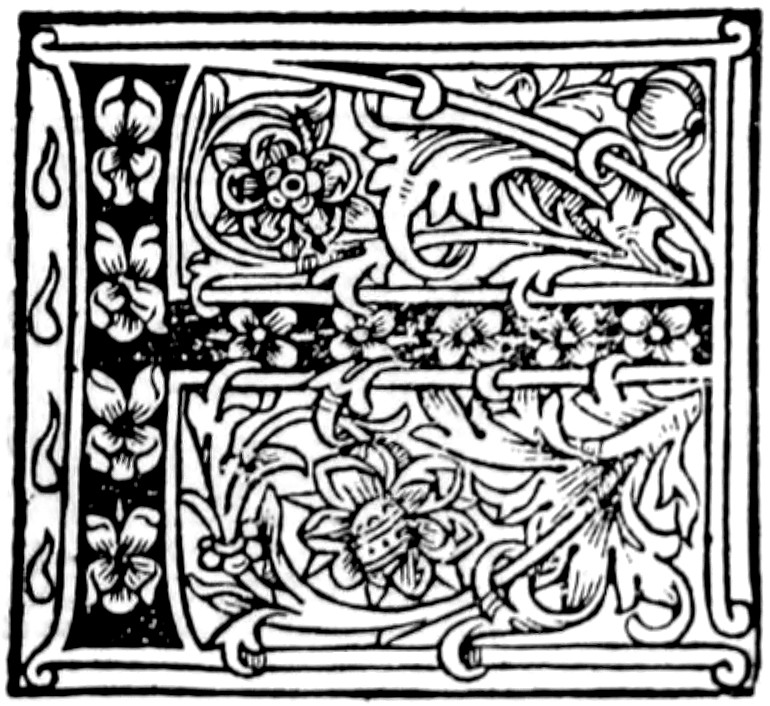
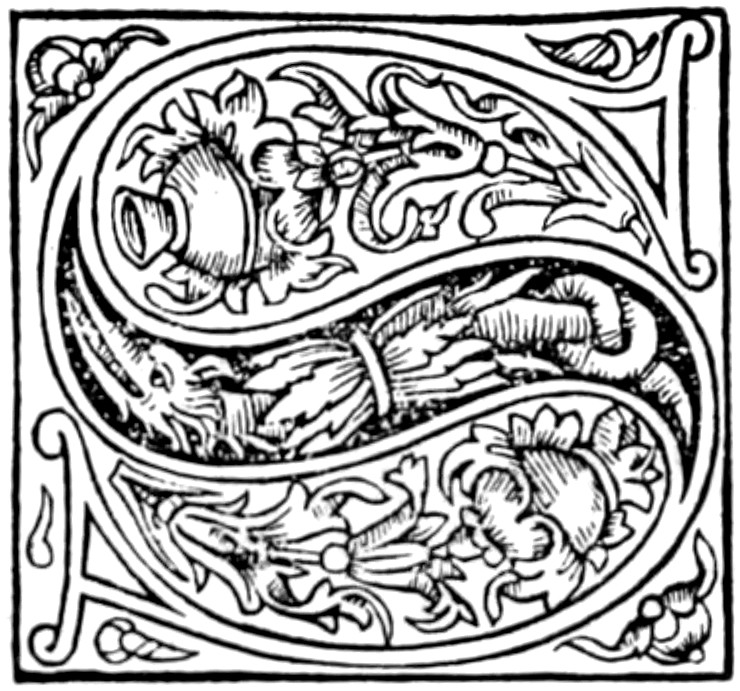
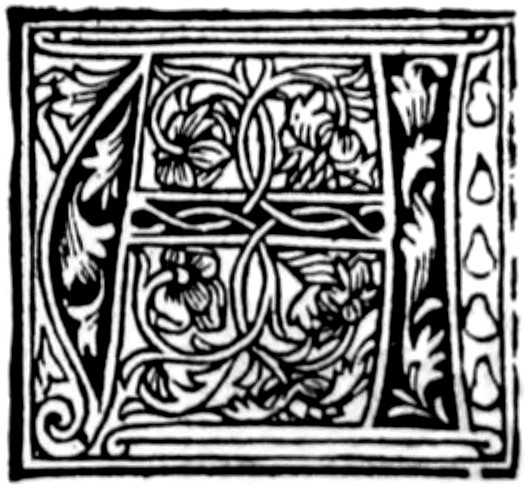
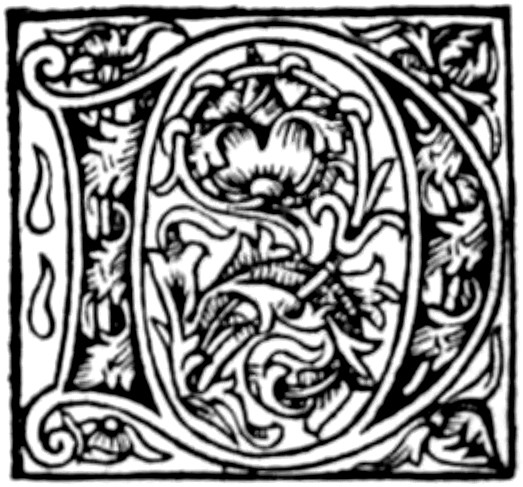
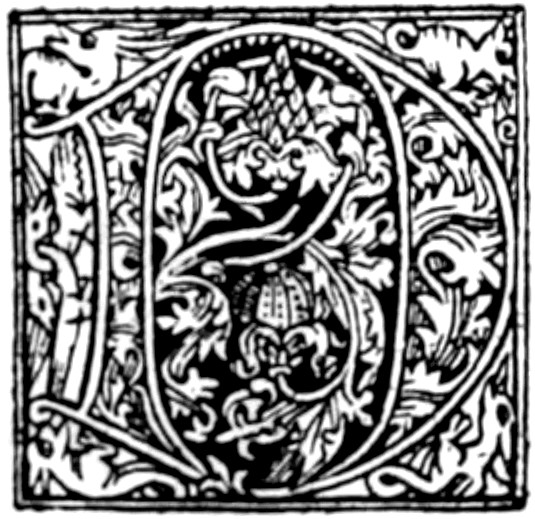
FROM WORKS PRINTED BY JEAN DE CHAUNY
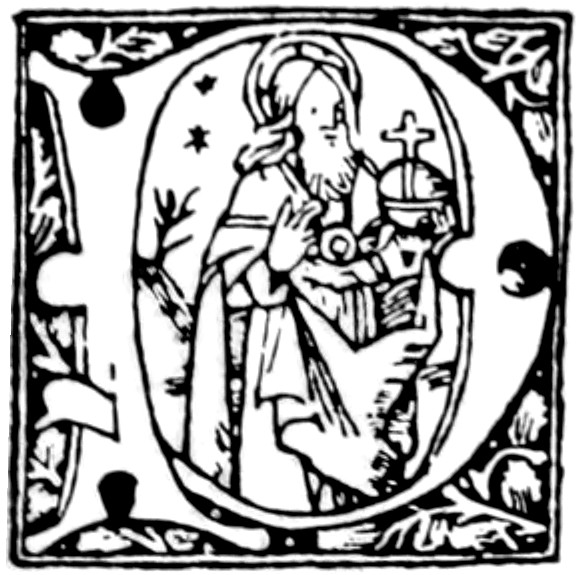
FROM A POITIERS MISSAL
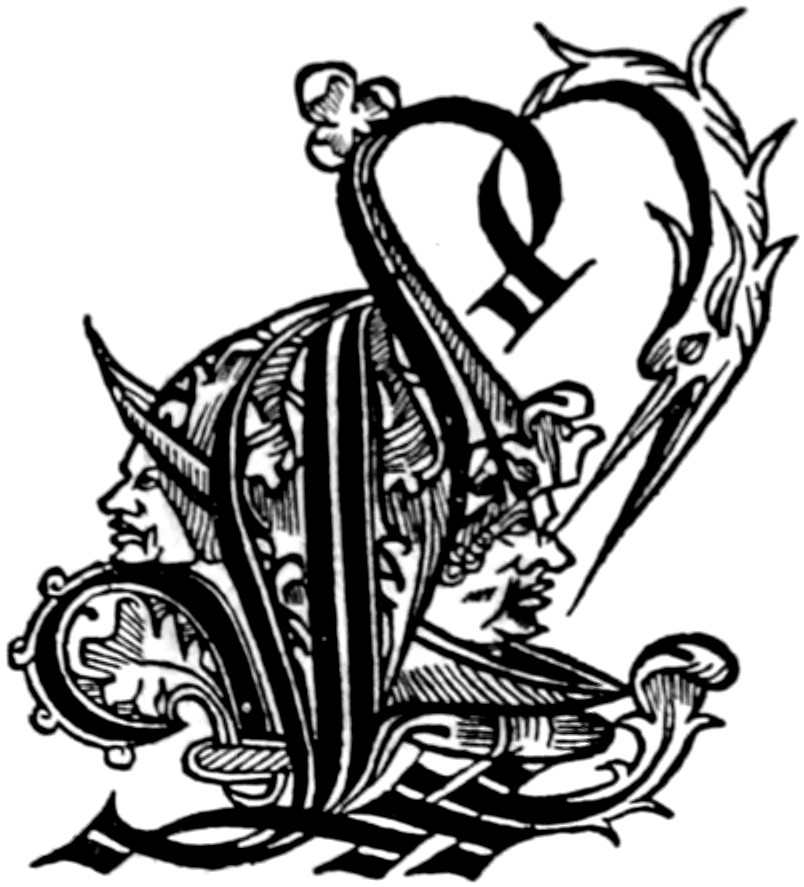
USED IN IMPRESSIONS OF POITIERS

FROM A ‘COUSTUMIER DE POITOU’
[252]
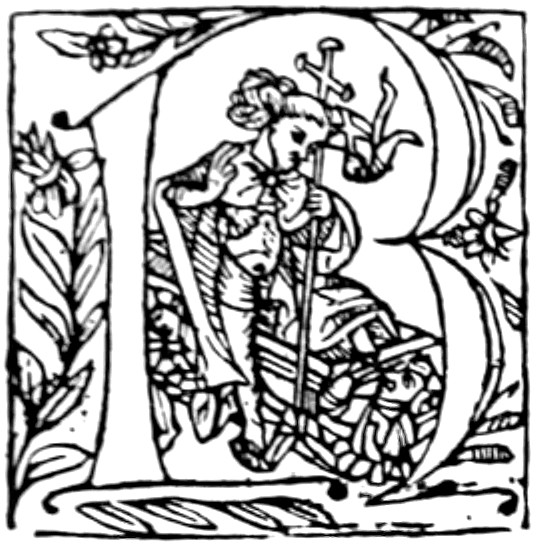
FROM A LIMOGES MISSAL

FROM TOULOUSE
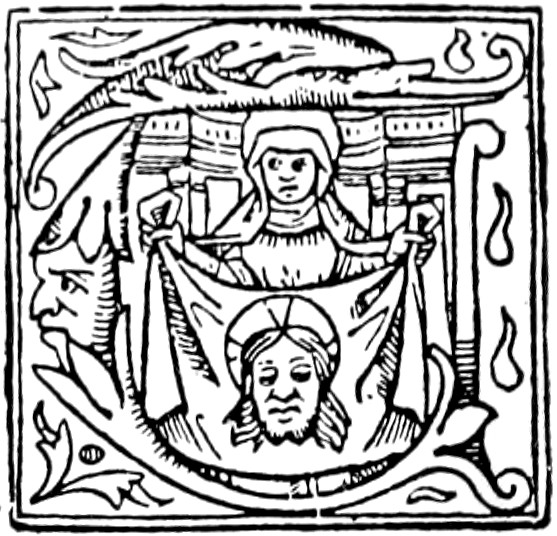
FROM A LIMOGES MISSAL
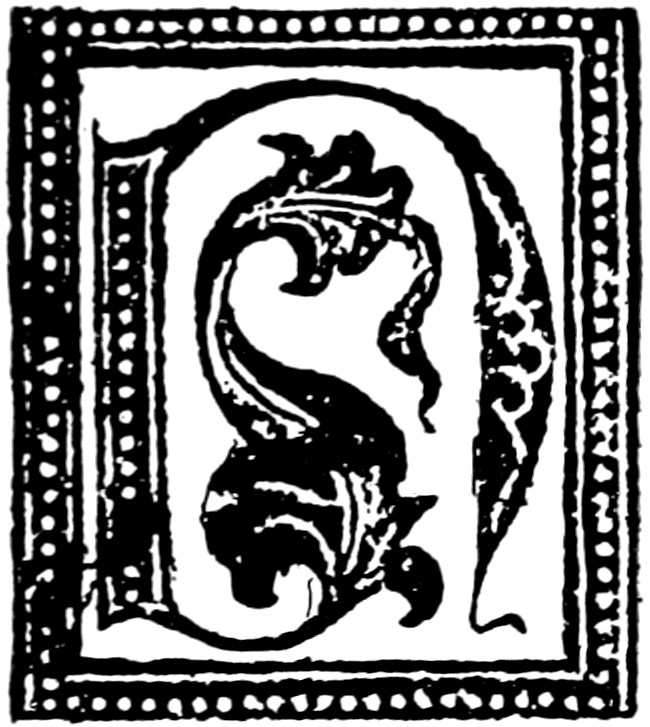
FROM THE ÆSOP OF ALBI
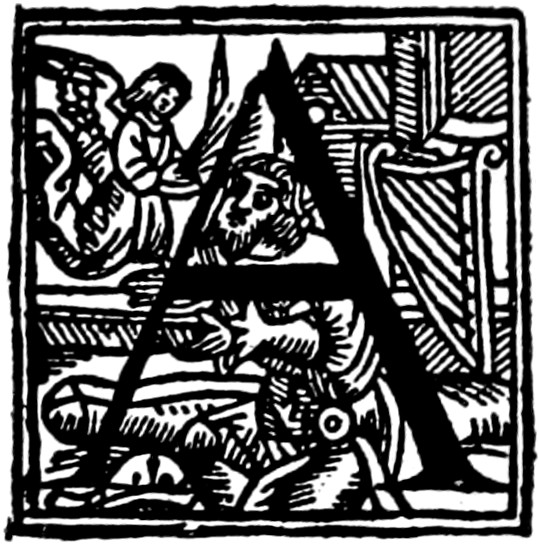
FROM ‘LA VIE ET LÉGENDE DE MME. STE. PETROINE’
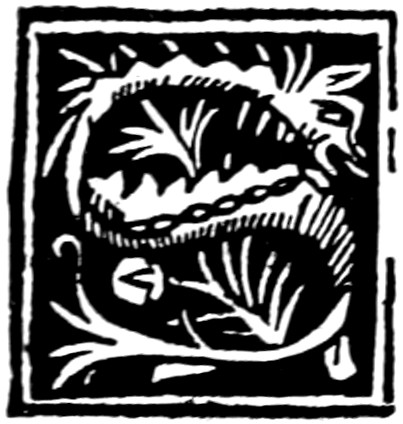
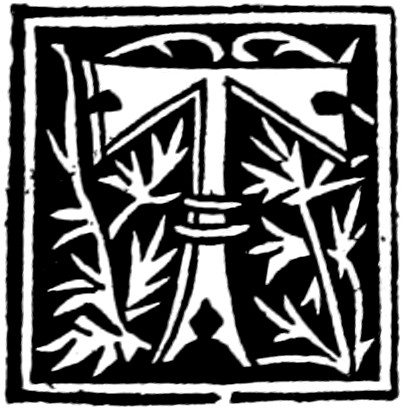
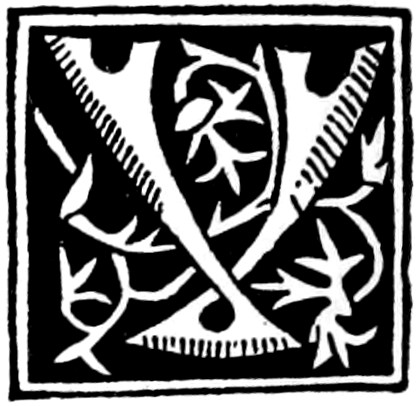
FROM BESANÇON
[253]
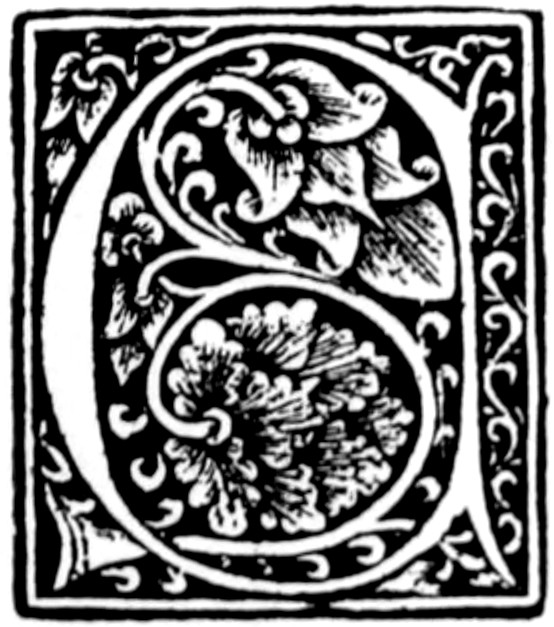
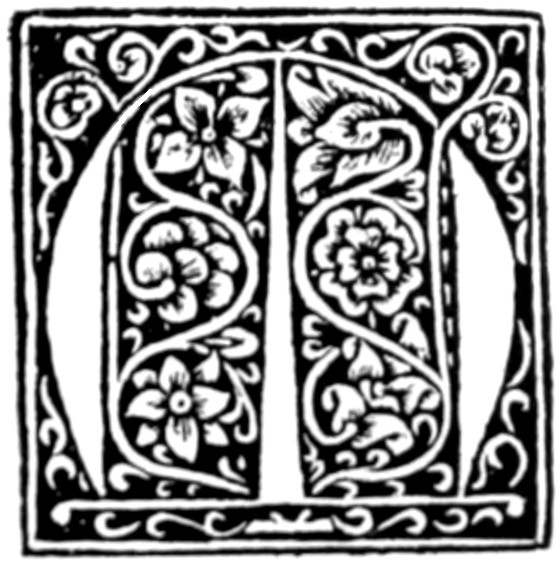
FROM VALENCIA, BY G. CASTILLA
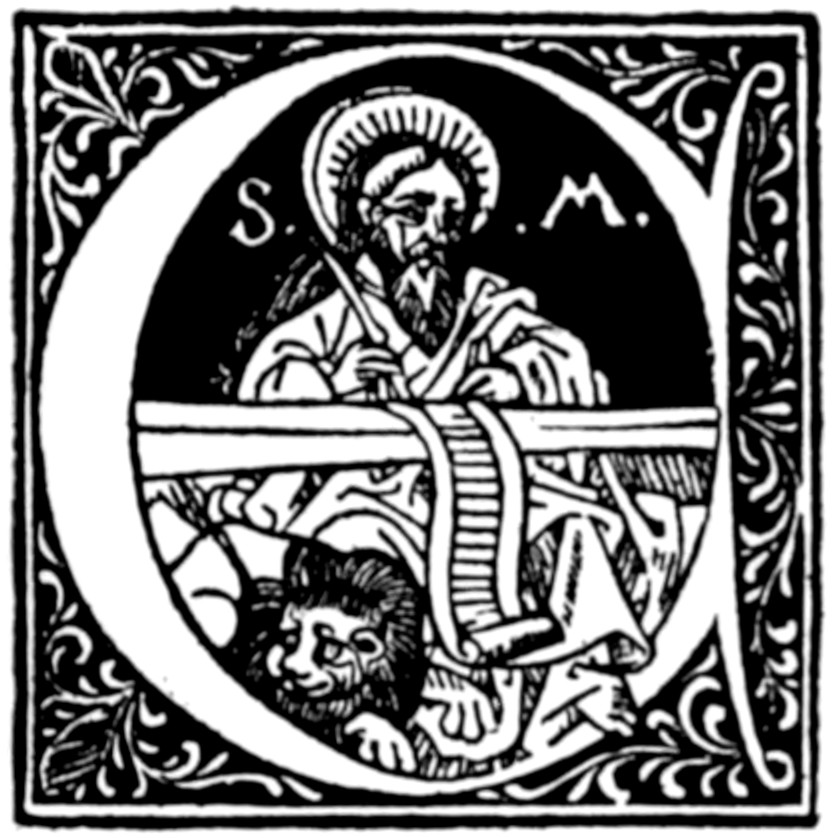
FROM SEVILLE, BY JUAN DE VARILA

FROM COIMBRA, BY J. ALVERA
[254]
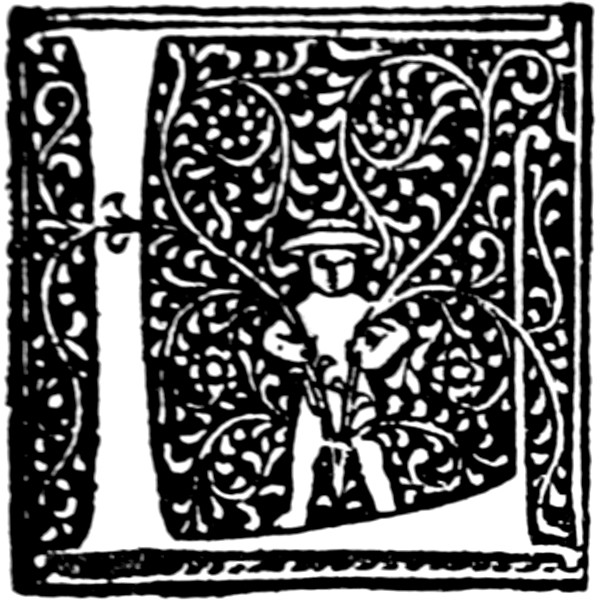
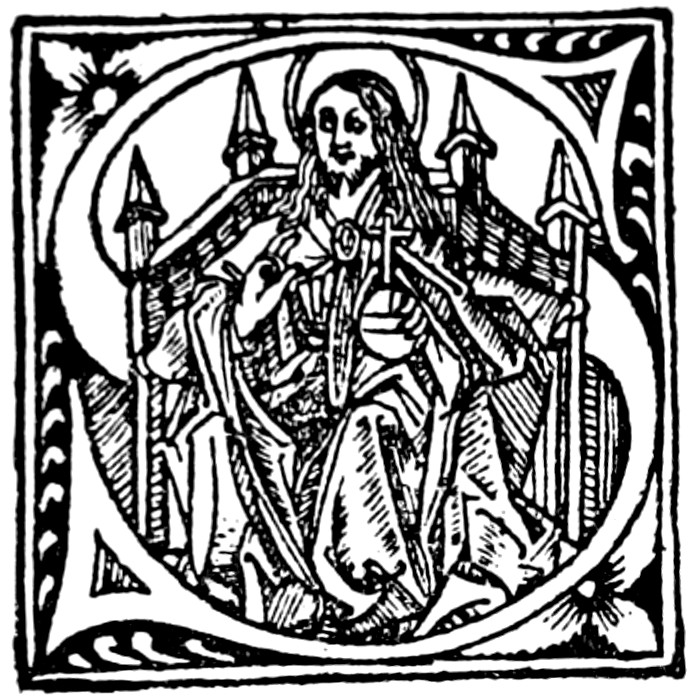

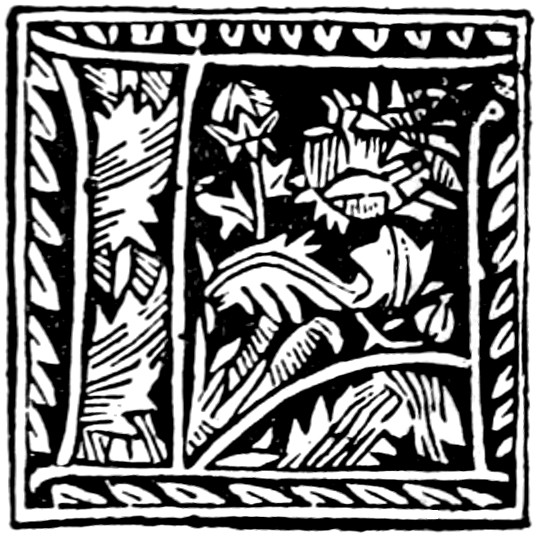
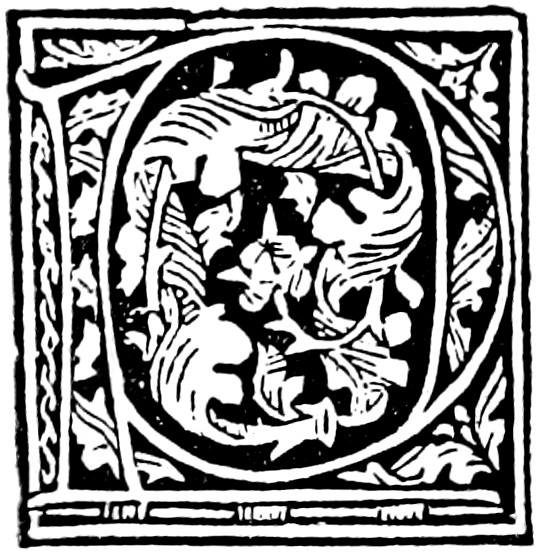
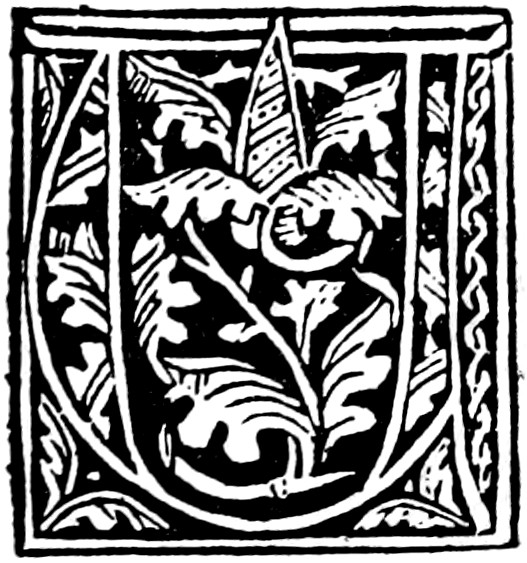
ORIGIN UNCERTAIN
[255]

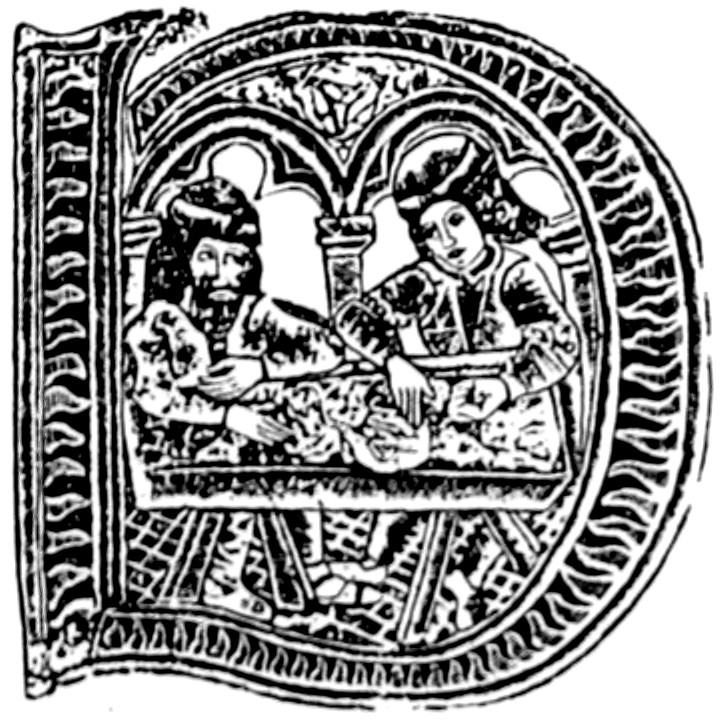
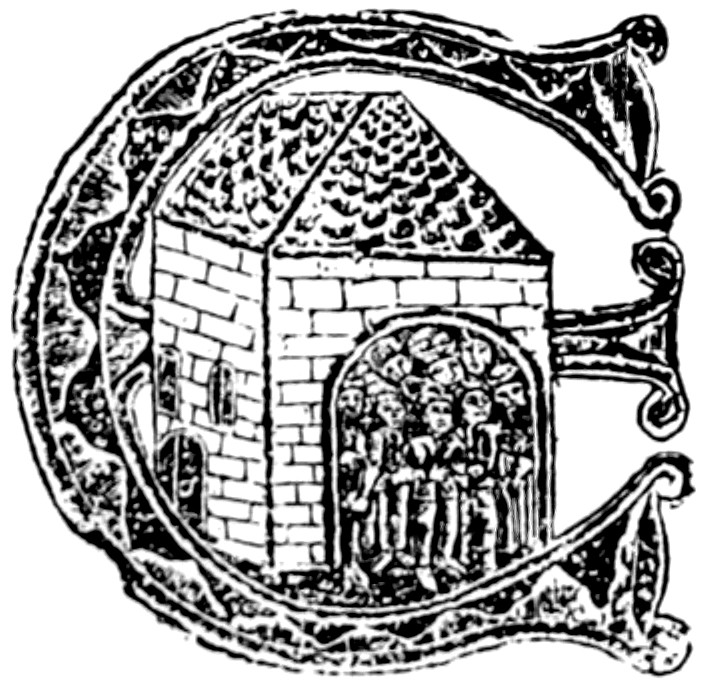

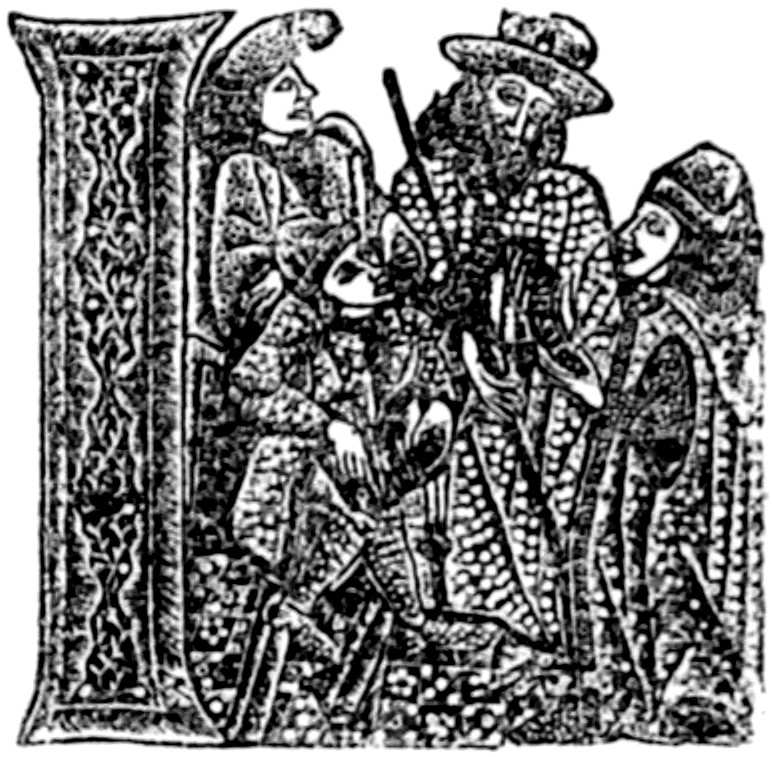
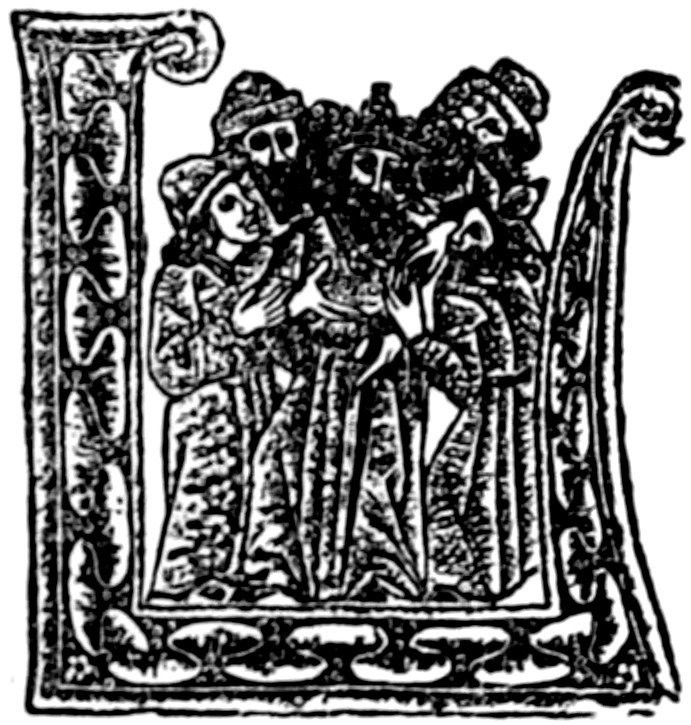
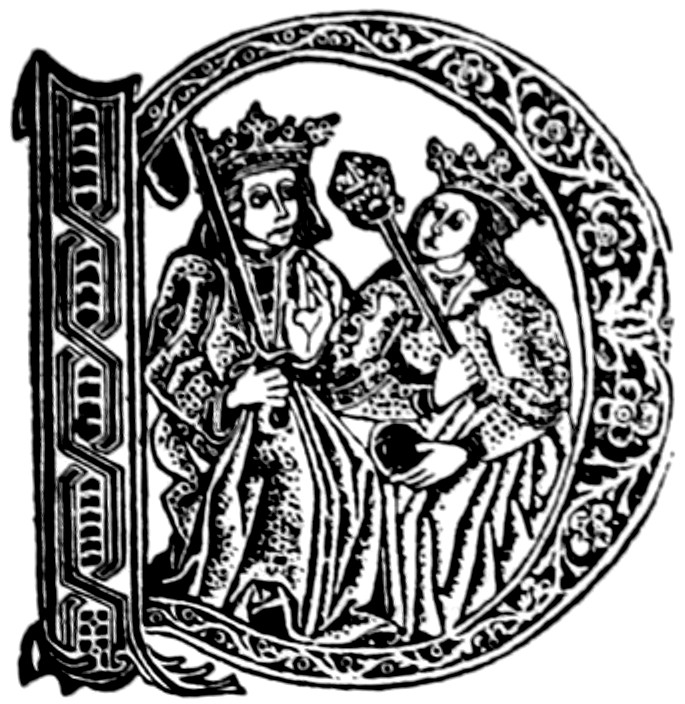
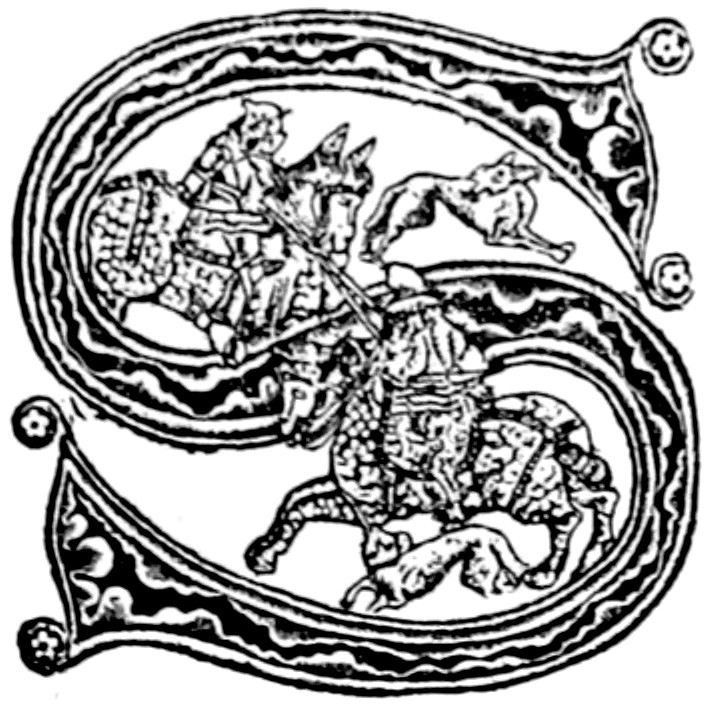
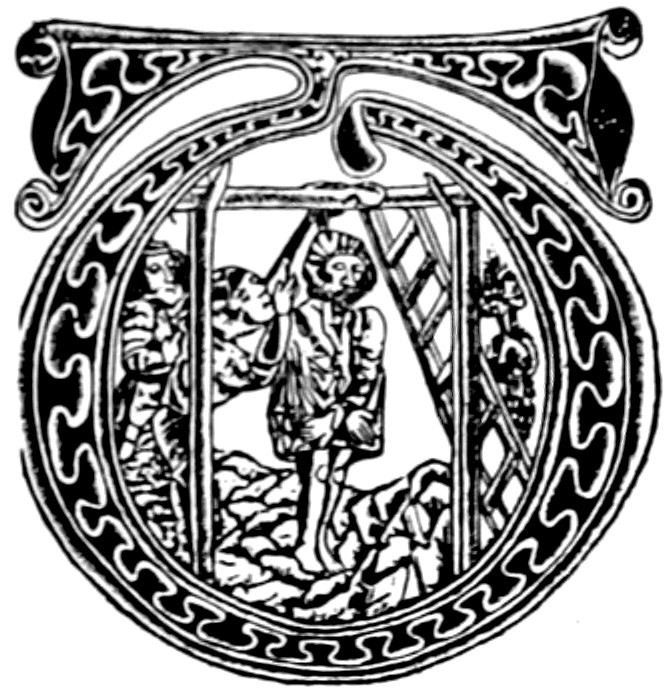
FROM THE ‘COMPILACION DE LEYES,’ PRINTED AT ZAMORA
[256]


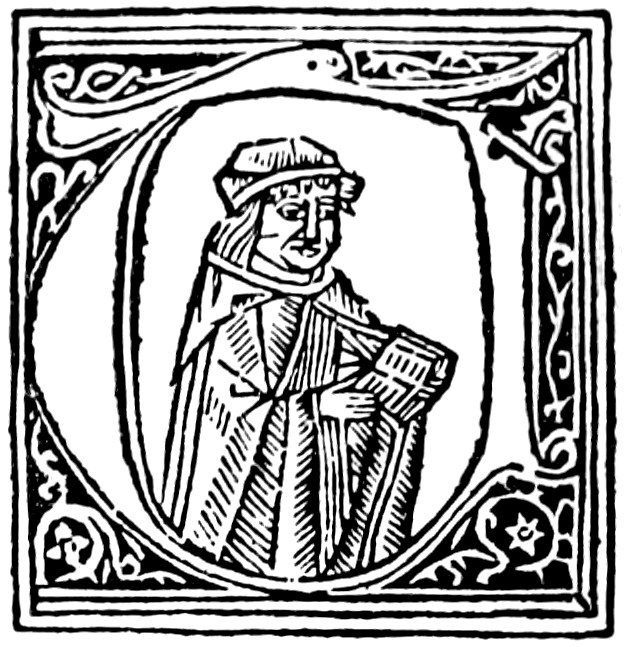
INITIALS USED BY J. CROMBERGER
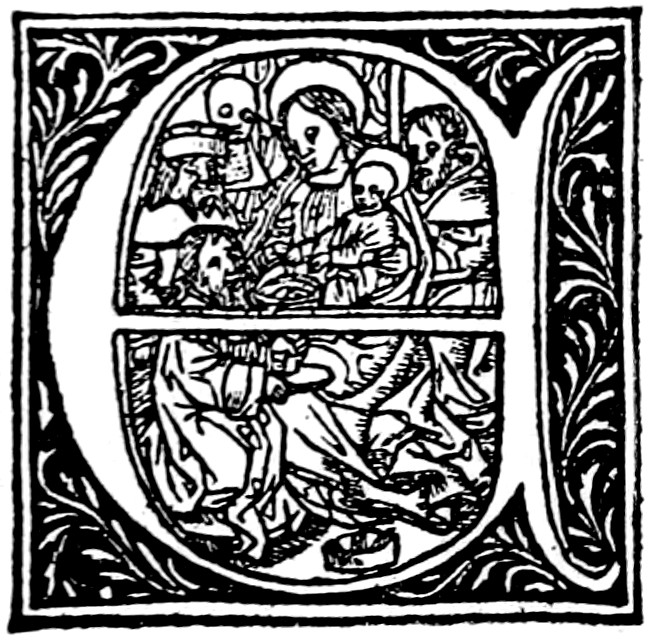
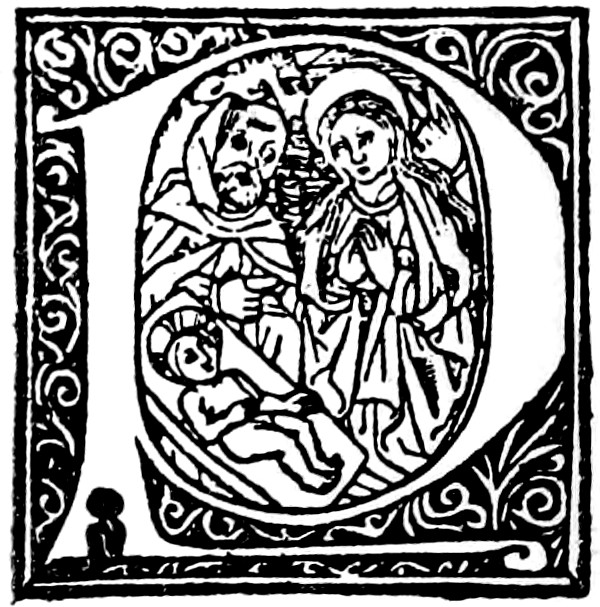
FROM A MEDICAL BOOK
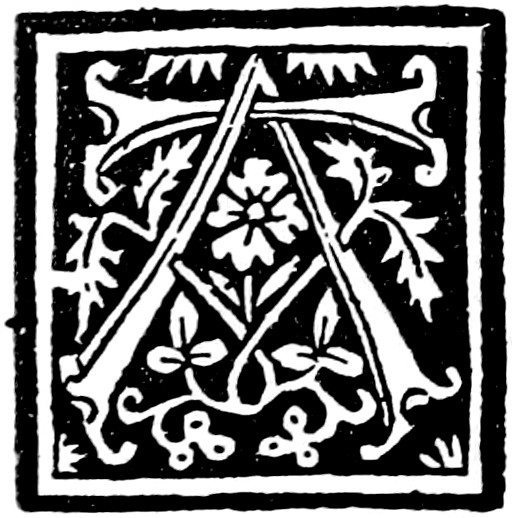
FROM A BOOK PRINTED AT BURGOS
[257]
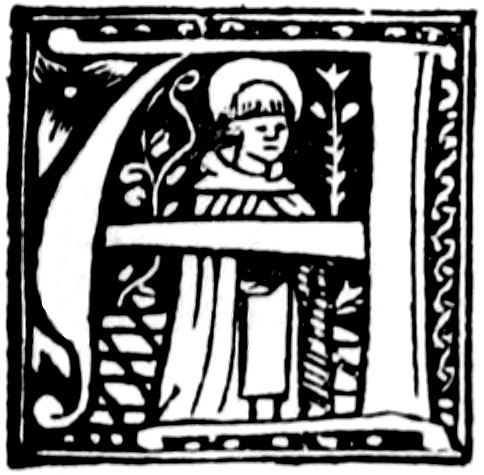
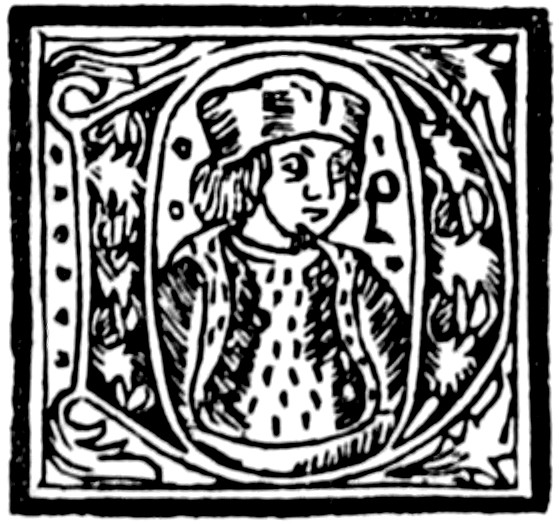
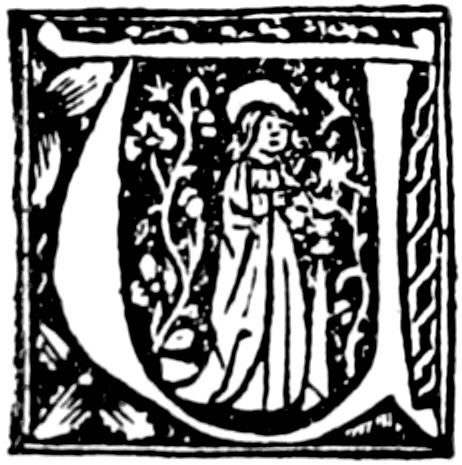
ORIGIN UNCERTAIN
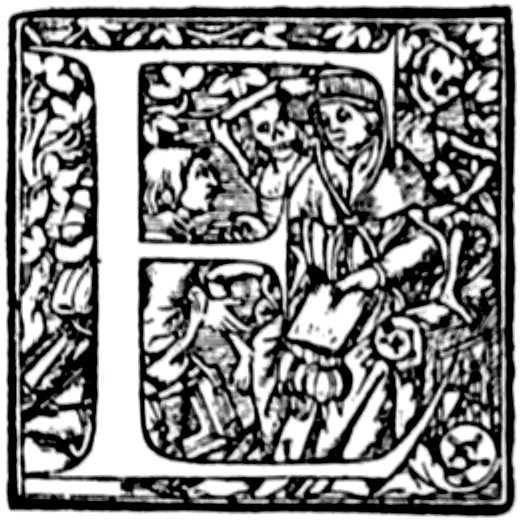
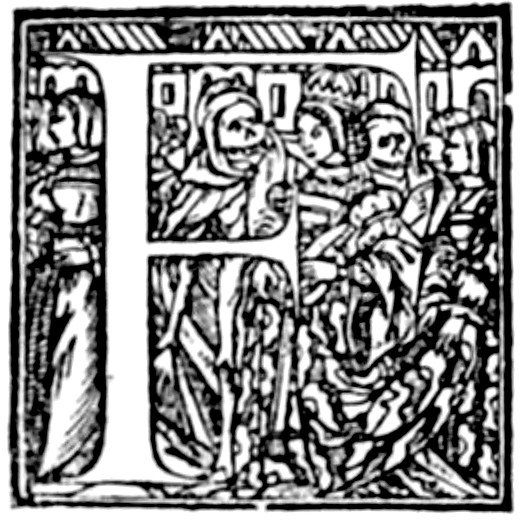
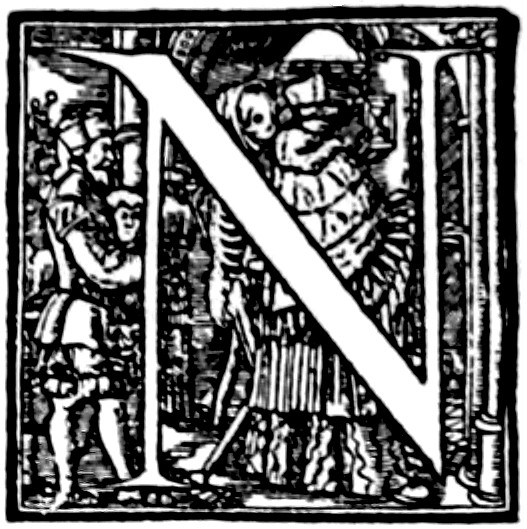
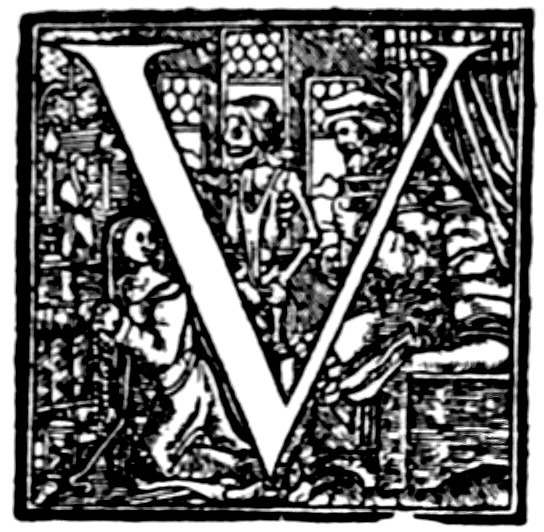
DANCE OF DEATH INITIALS FROM THE ‘LIBRO SOTILISSIMO’ PRINTED AT STELLA
[258]
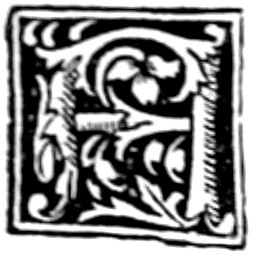
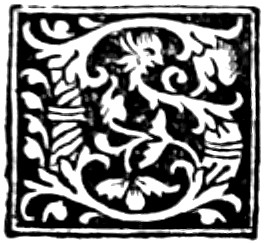
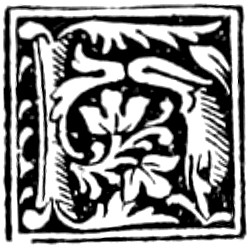
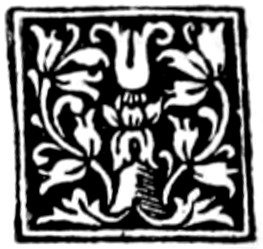
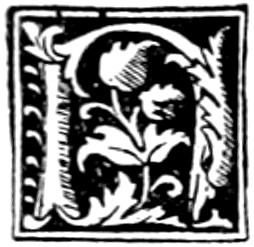
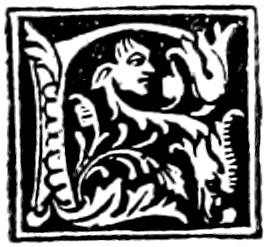
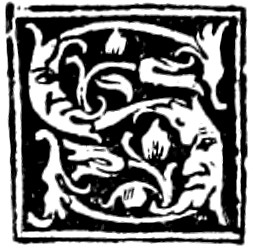
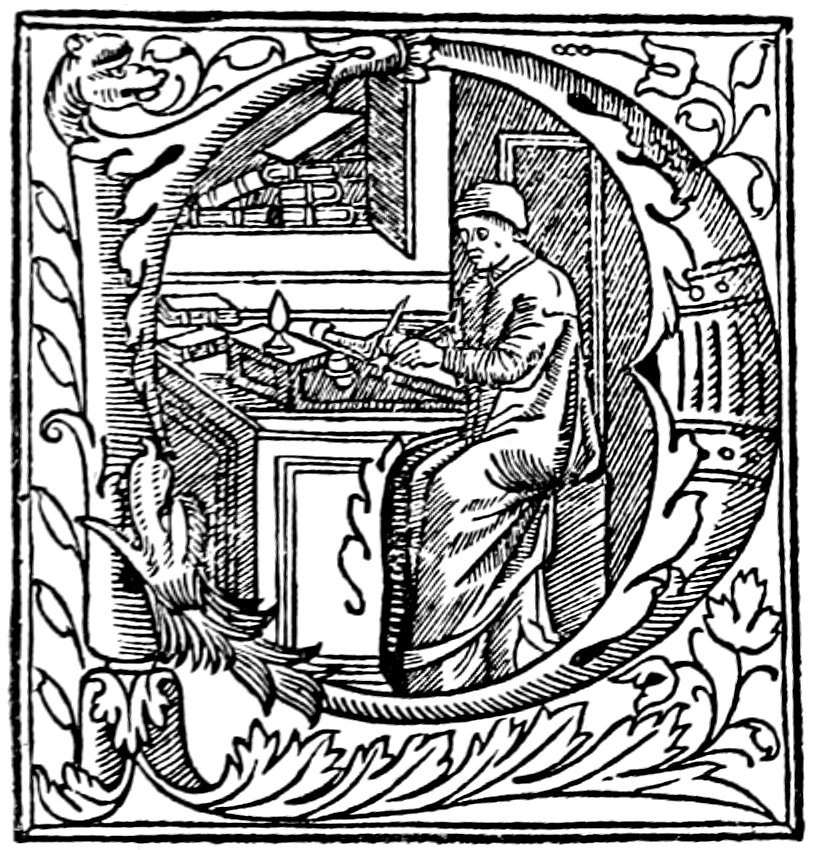
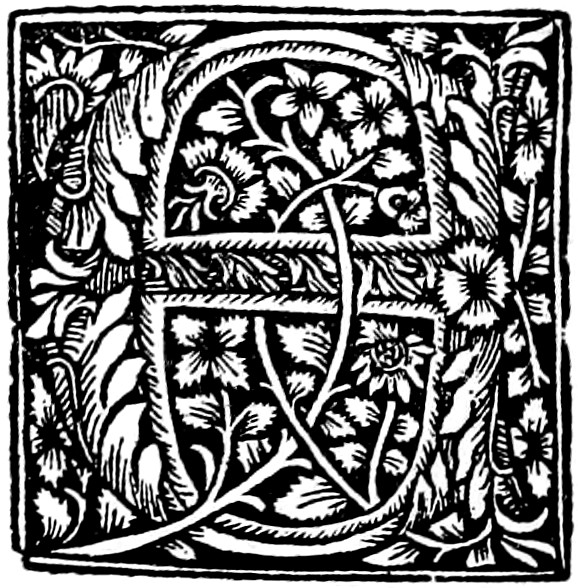
FROM THE ‘COMENTO DE EUSEBIO’ OF H. GYFFER, SALAMANCA
[259]
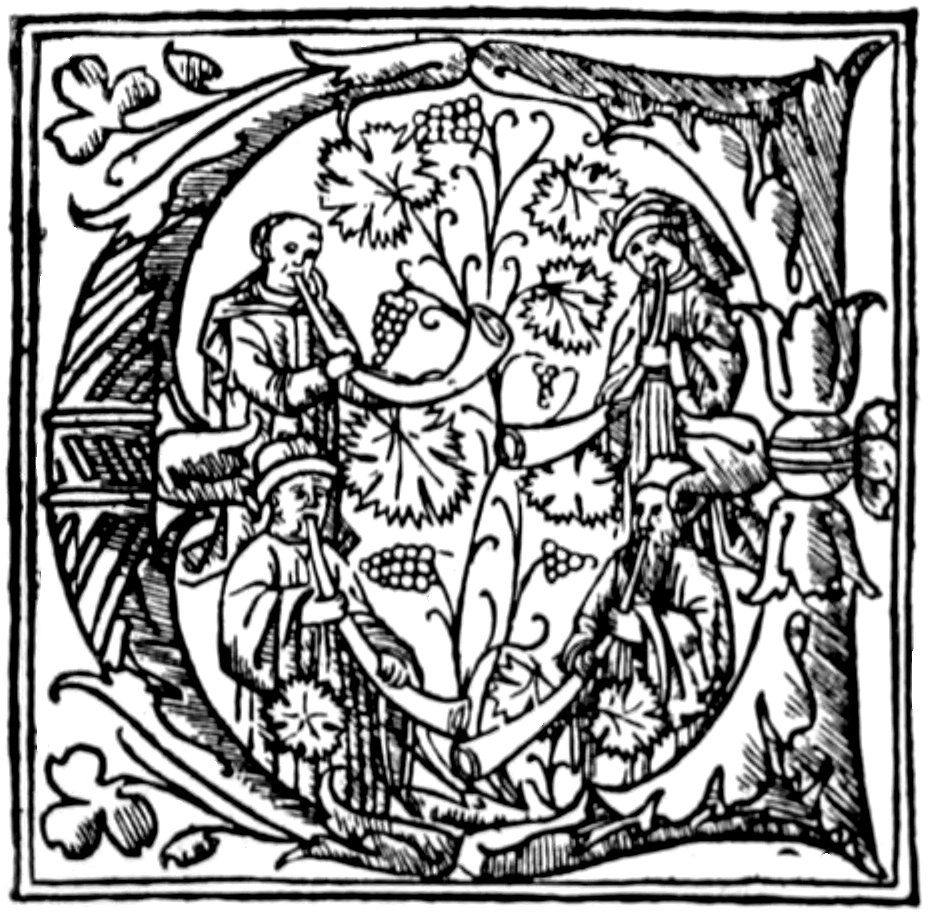
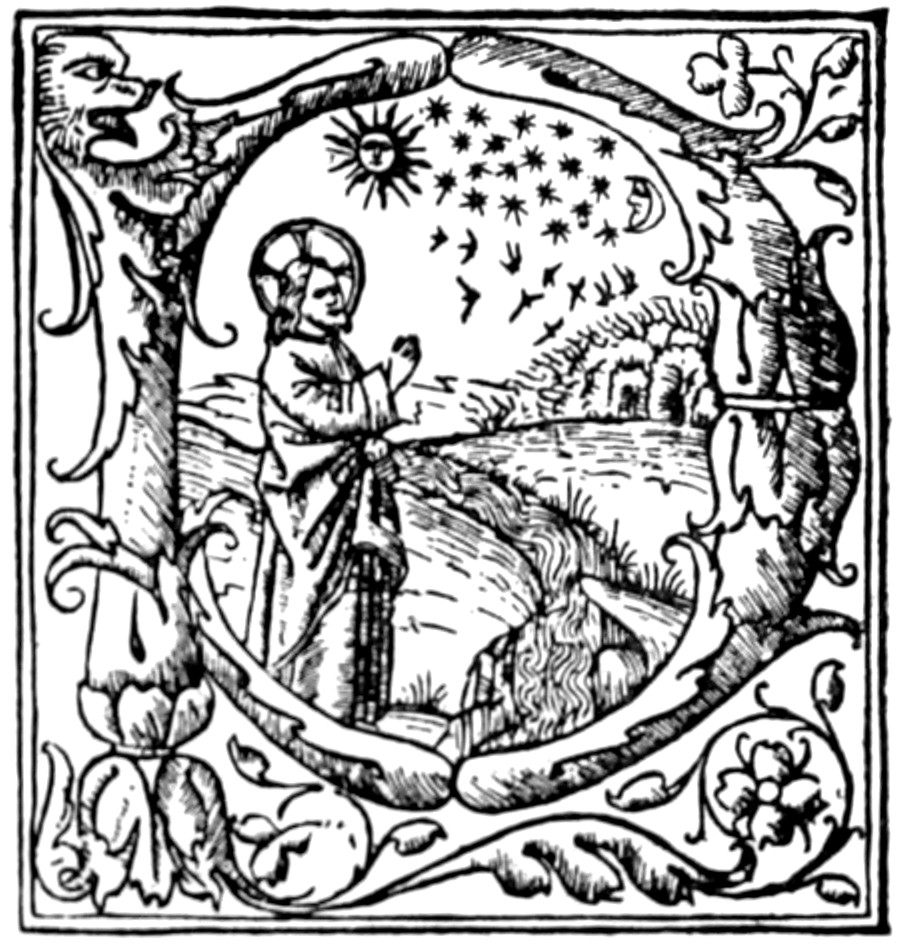
FROM THE ‘PASSIONARIUM’ OF BROCART, COMPLUTUM
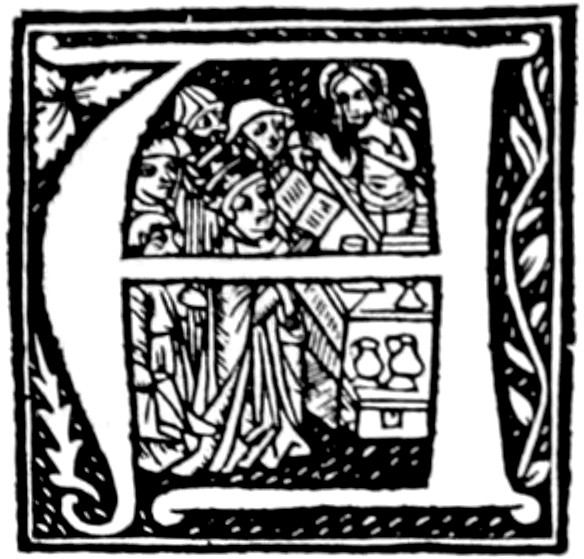
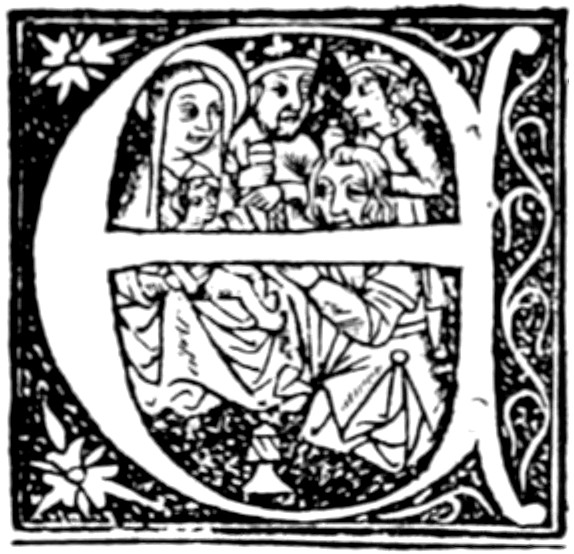
FROM THE ‘EPILOGO IN MEDICINA’
[260]
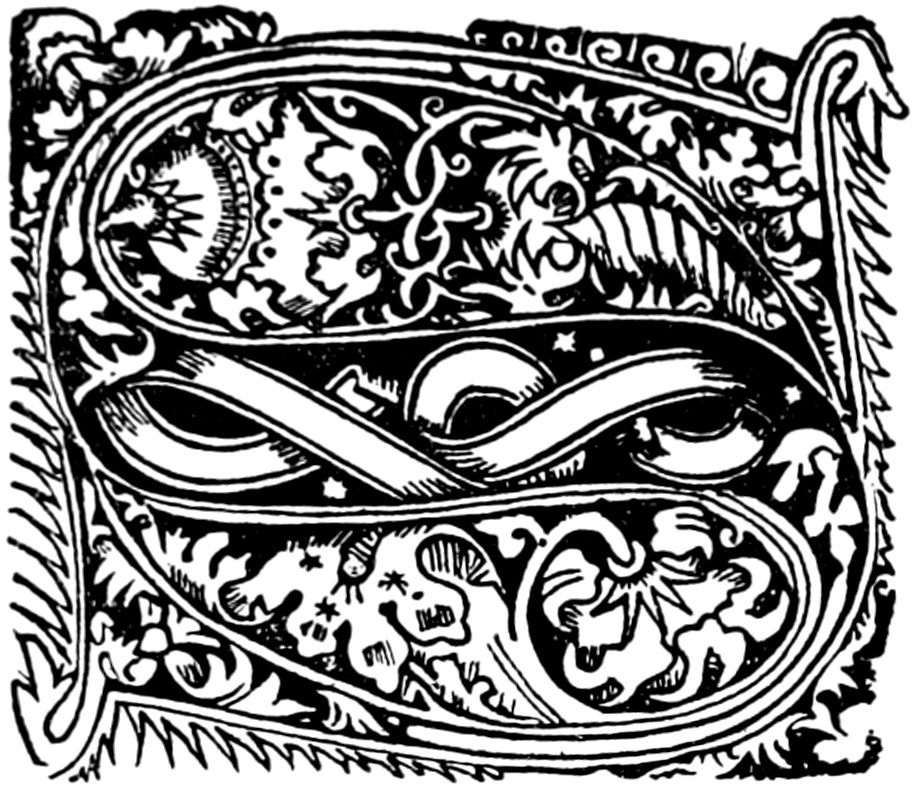
USED BY JACOB VAN DER MEER OF DELFT
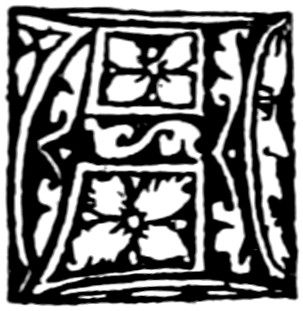

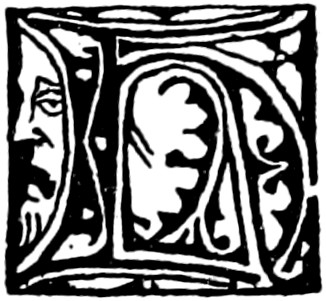
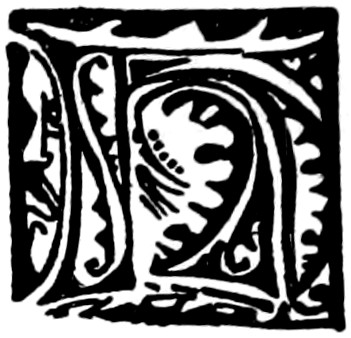

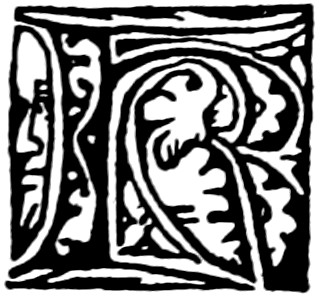
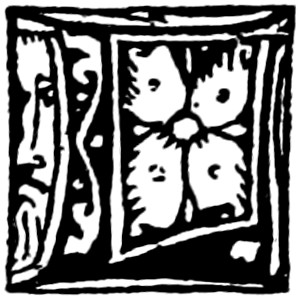
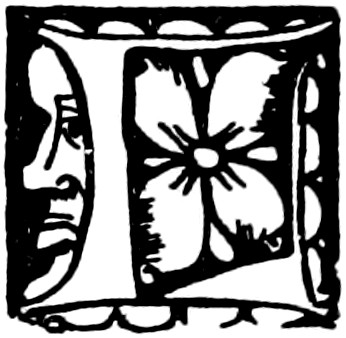
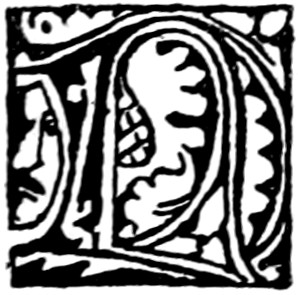
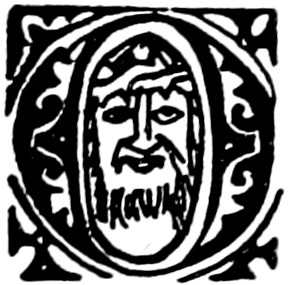
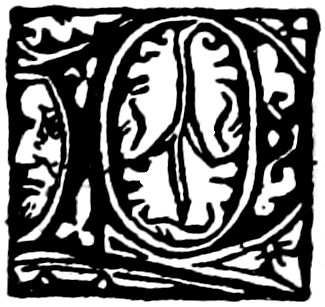
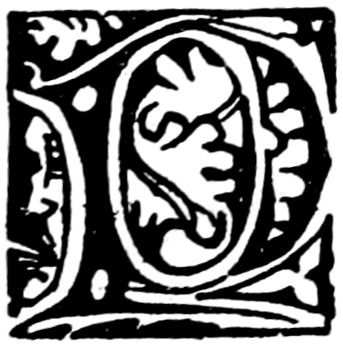
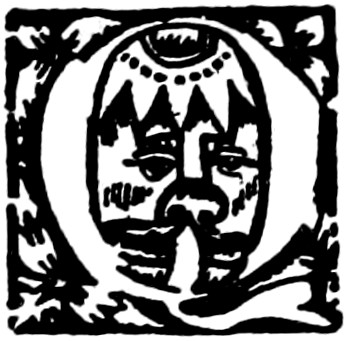
USED BY GODFRID DE OS OF GOUDA
[261]
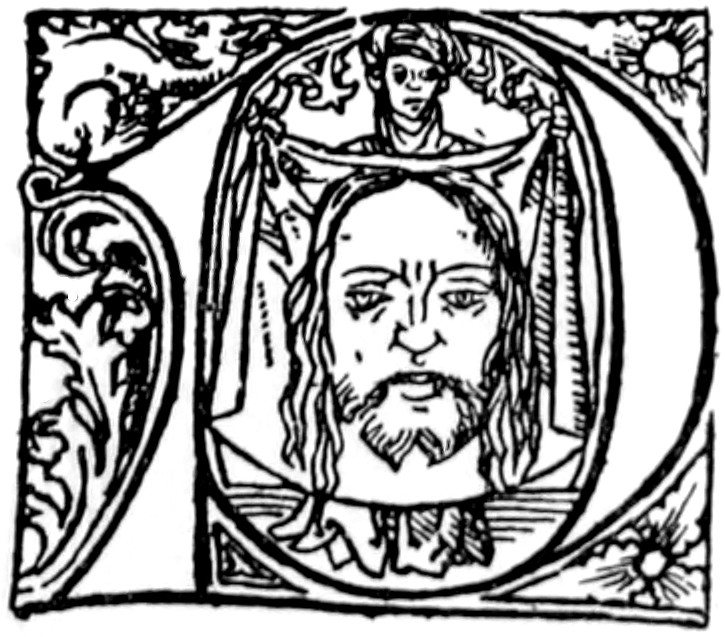
FROM THE ‘LIFE OF ST. LYDWINNE’ PRINTED AT SCHIEDAM
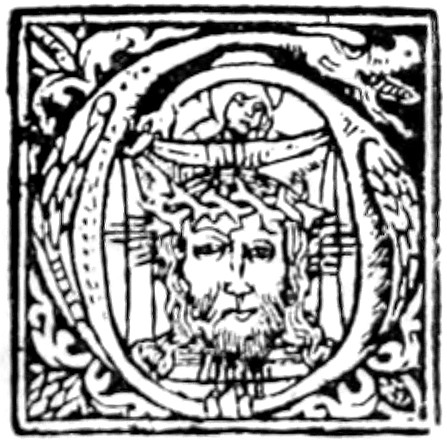
ENGLISH ADAPTATION OF THE PRECEDING
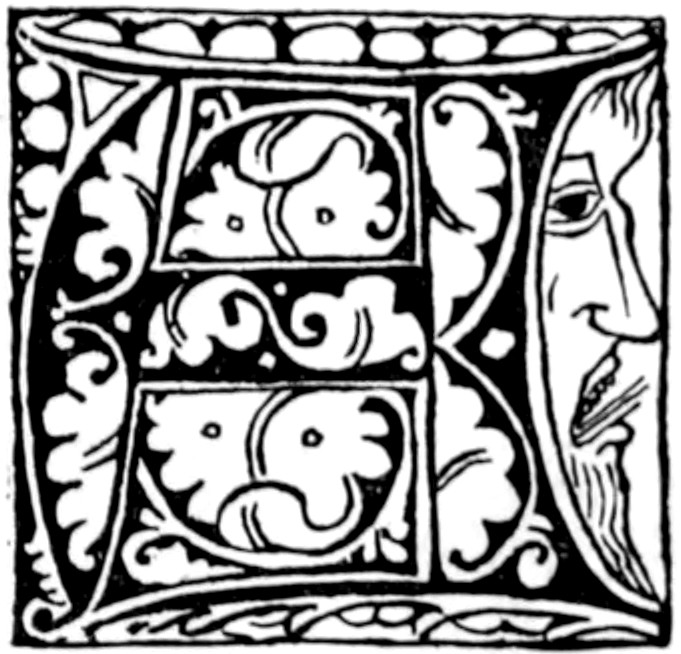

USED BY THIERRY MARTENS
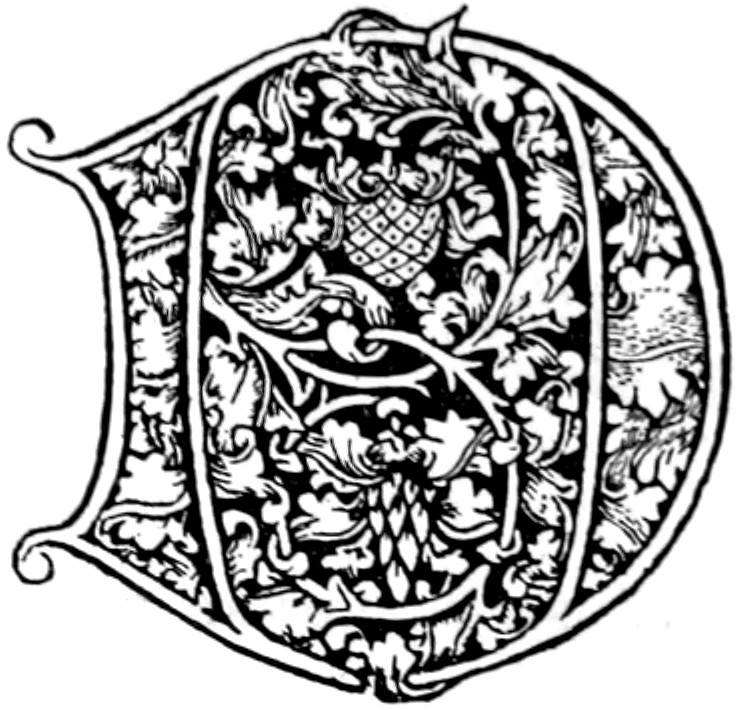
USED BY G. LEEU OF ANTWERP
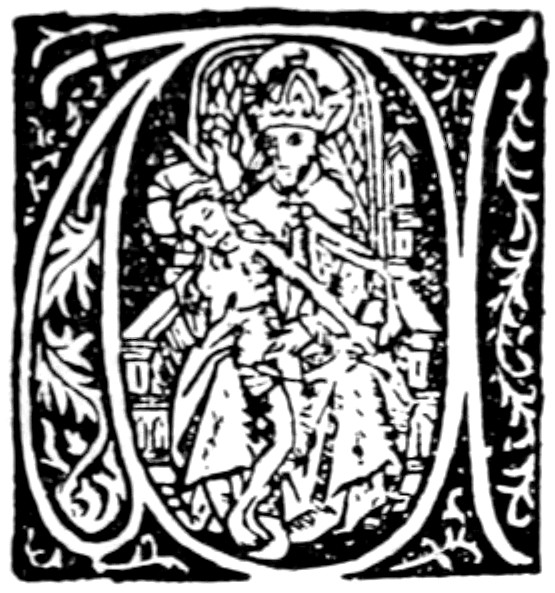
FROM AN EARLY LOUVAIN MISSAL
[262]
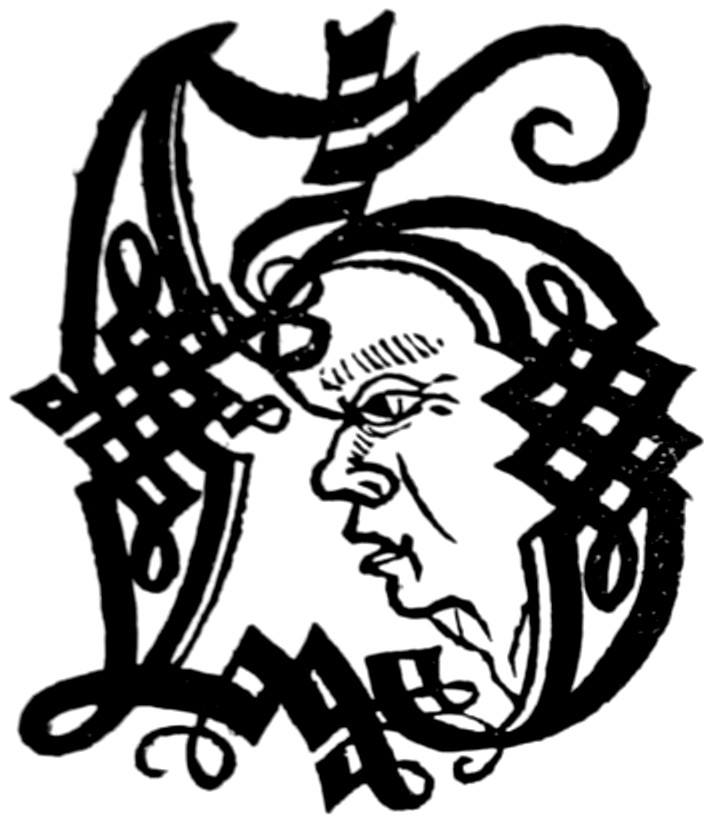
FROM THE TITLE-PAGE OF A ‘BELIAL’ OF ANTWERP

FROM A LEYDEN TITLE-PAGE
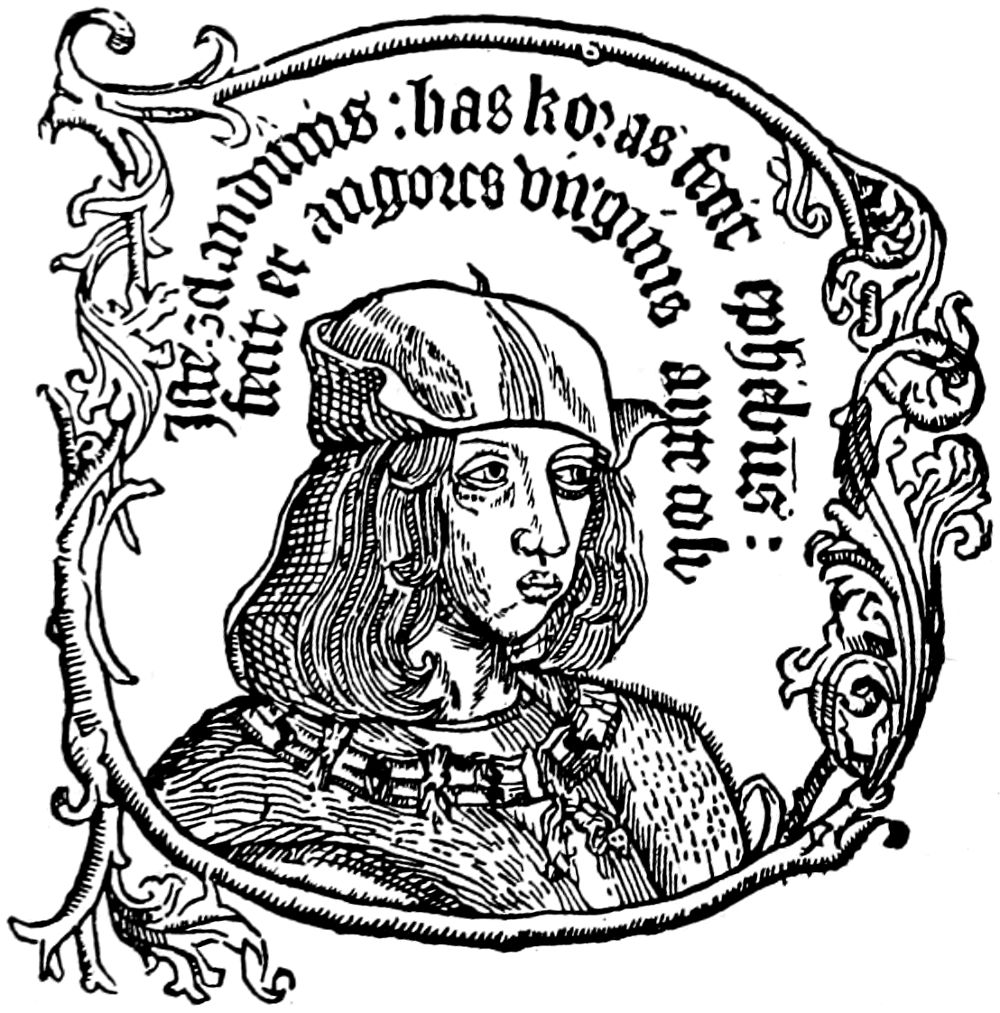
PORTRAIT OF PHILIP LE BEL, FROM A WORK PUBLISHED BY GODFRID BACK OF ANTWERP
[263]
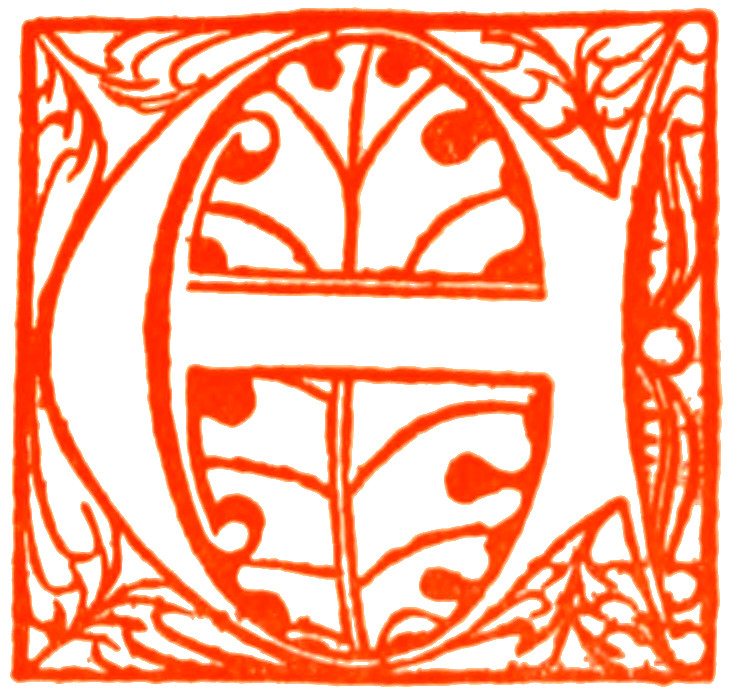
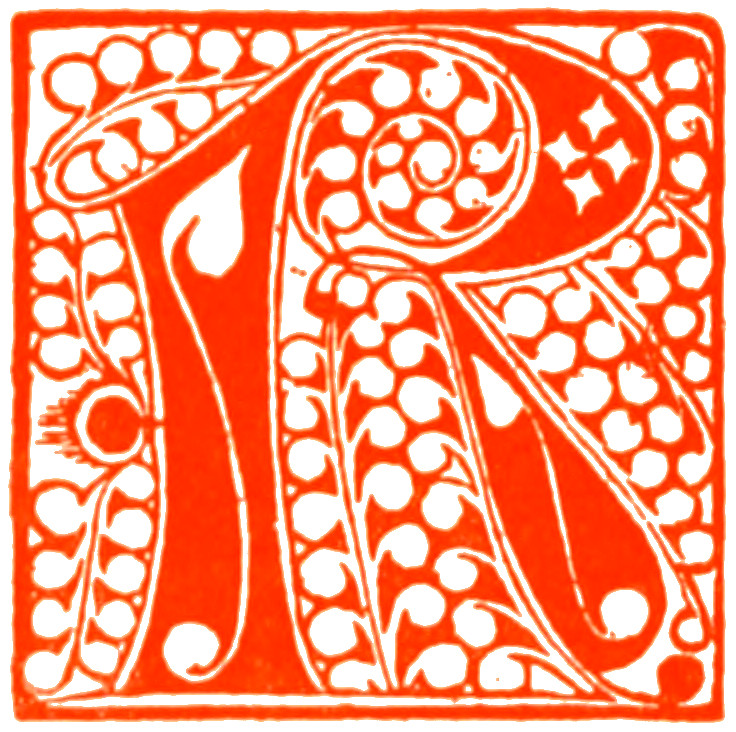
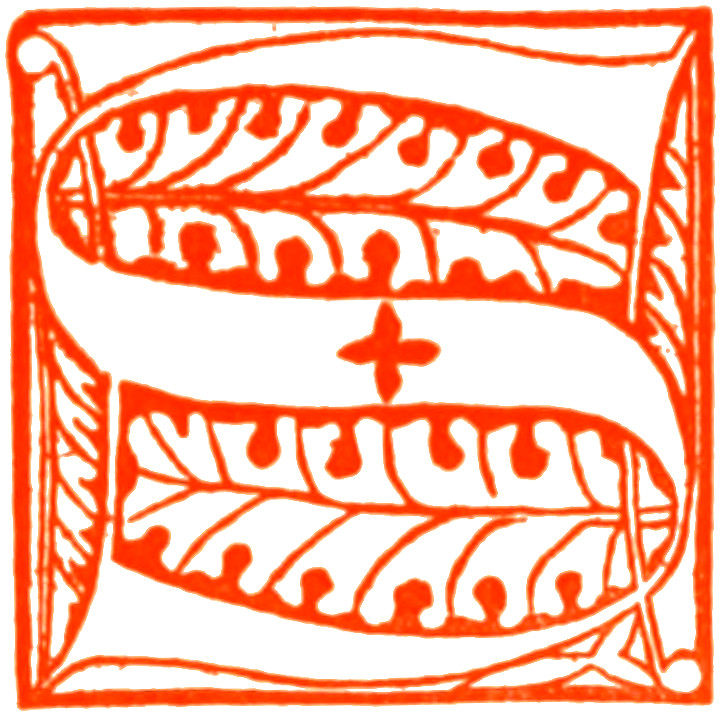
FROM THE MISSAL OF SPIRES BY PETER DRACH
[264]
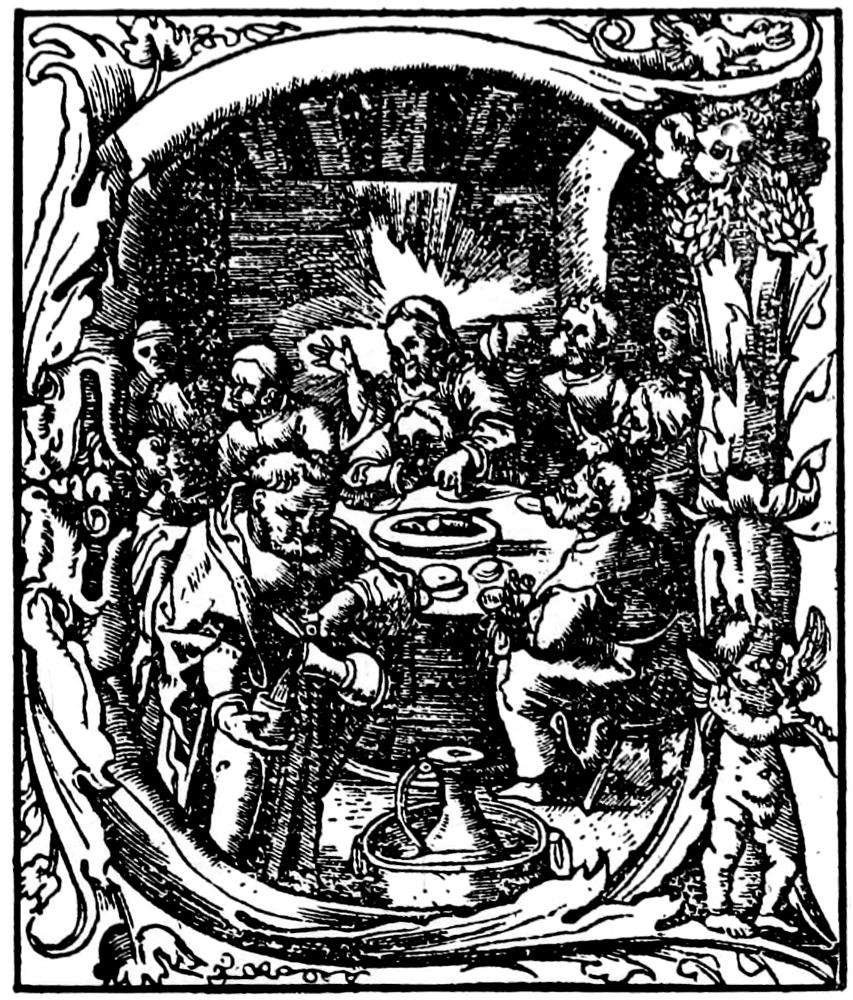
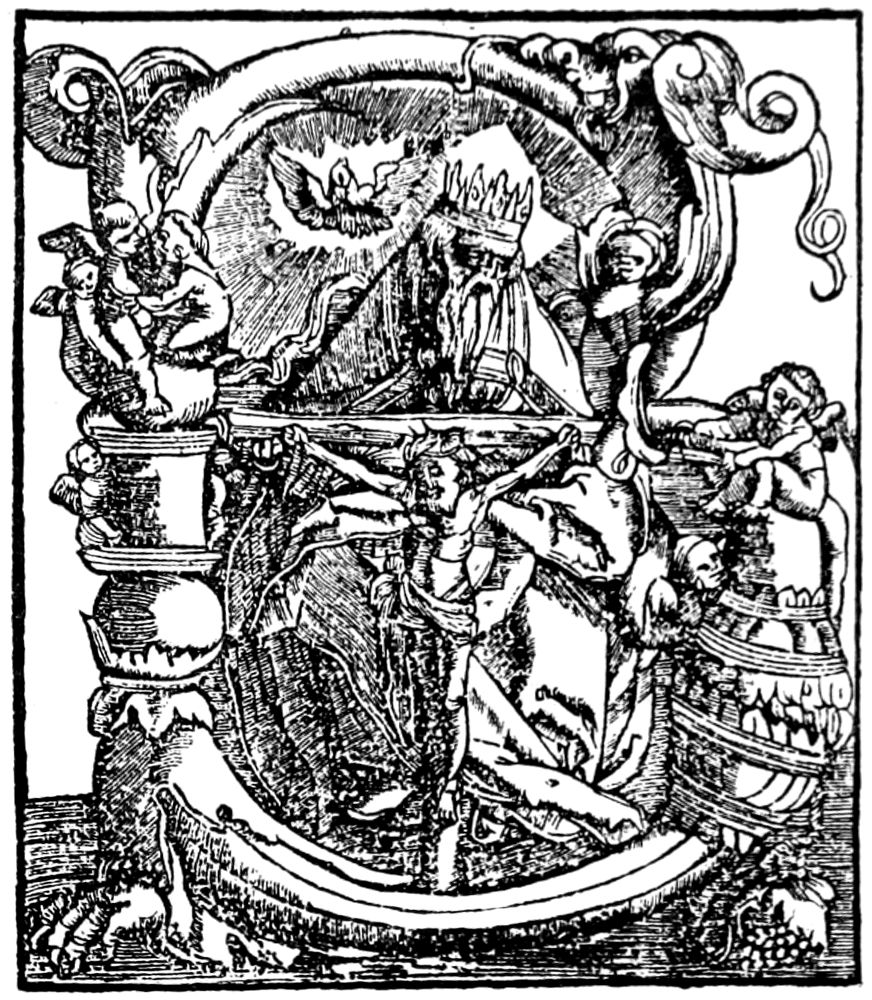
FROM THE BENEDICTINE MISSAL OF HAGENAU
[265]
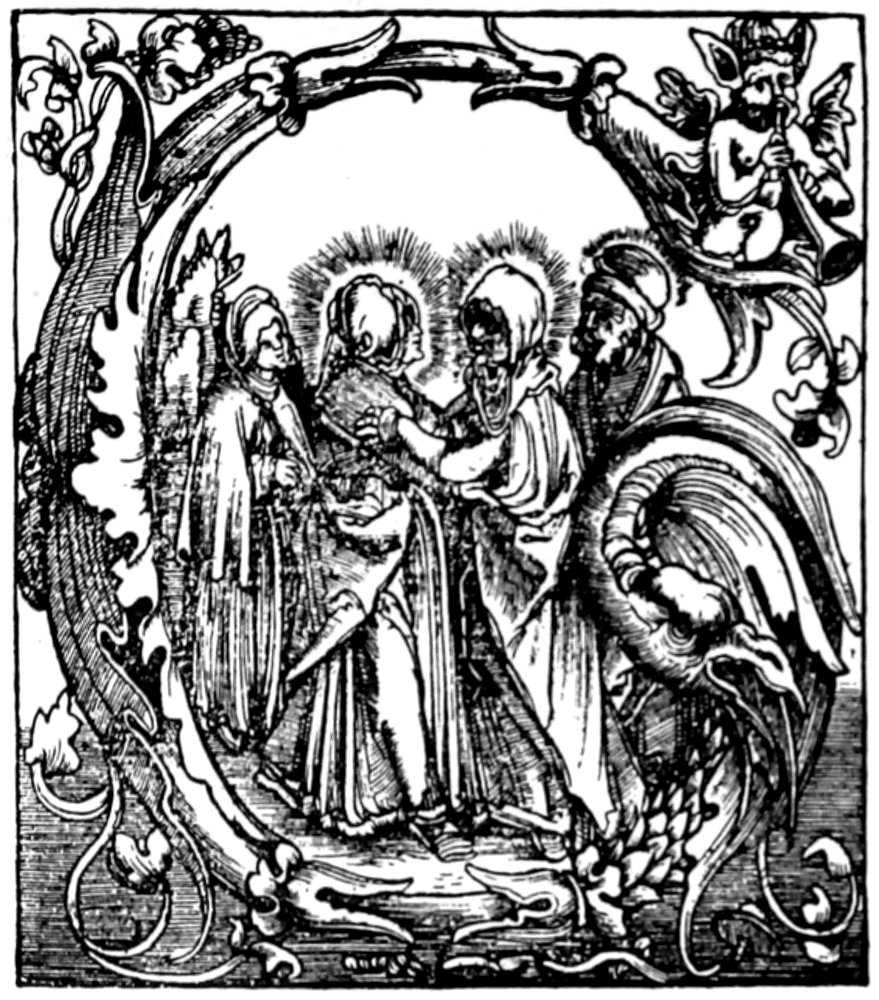
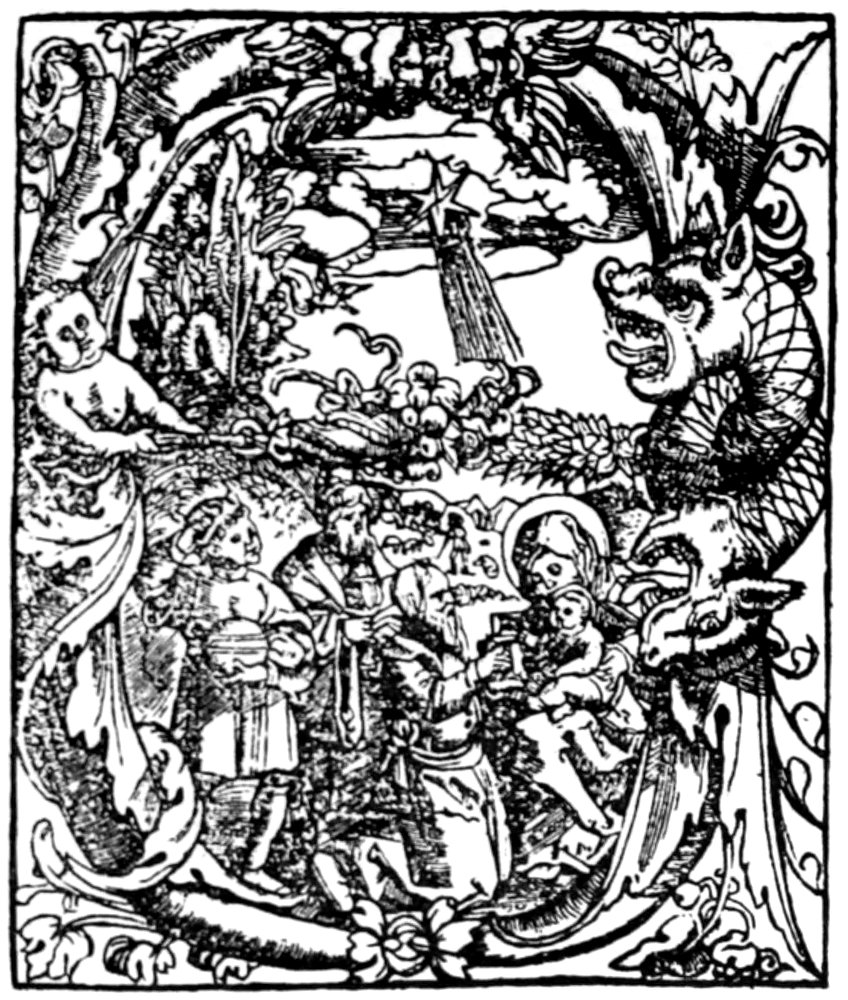
FROM THE BENEDICTINE MISSAL OF HAGENAU
[266]
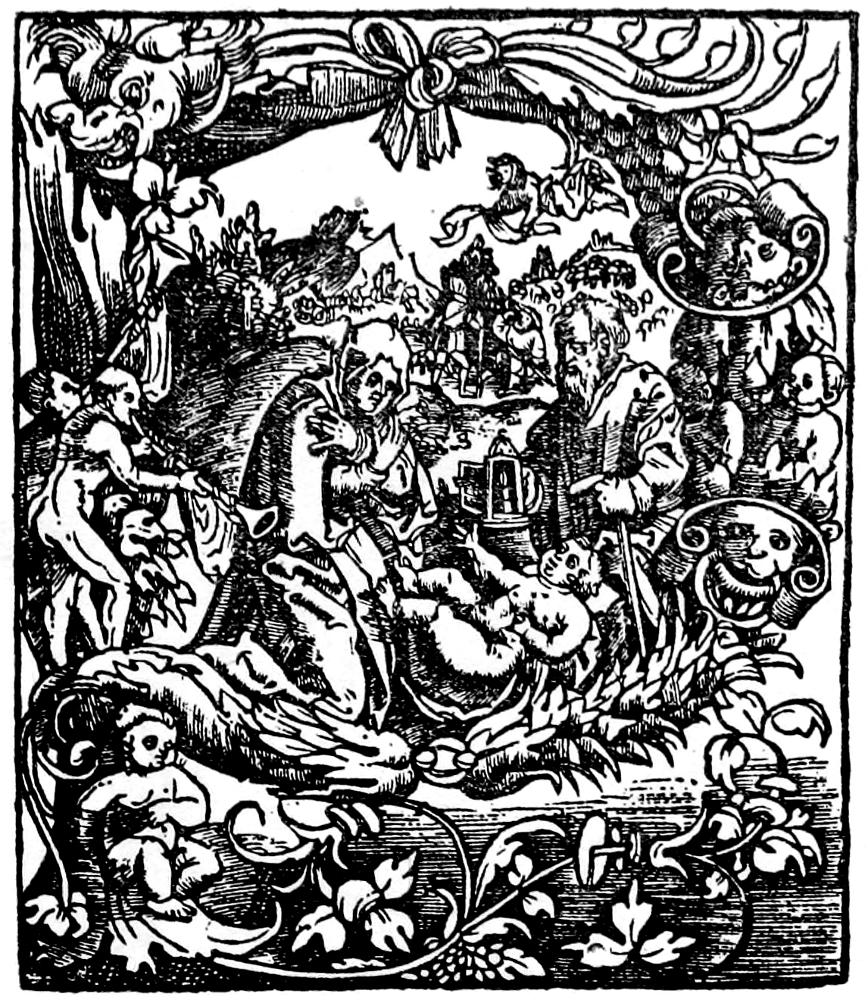
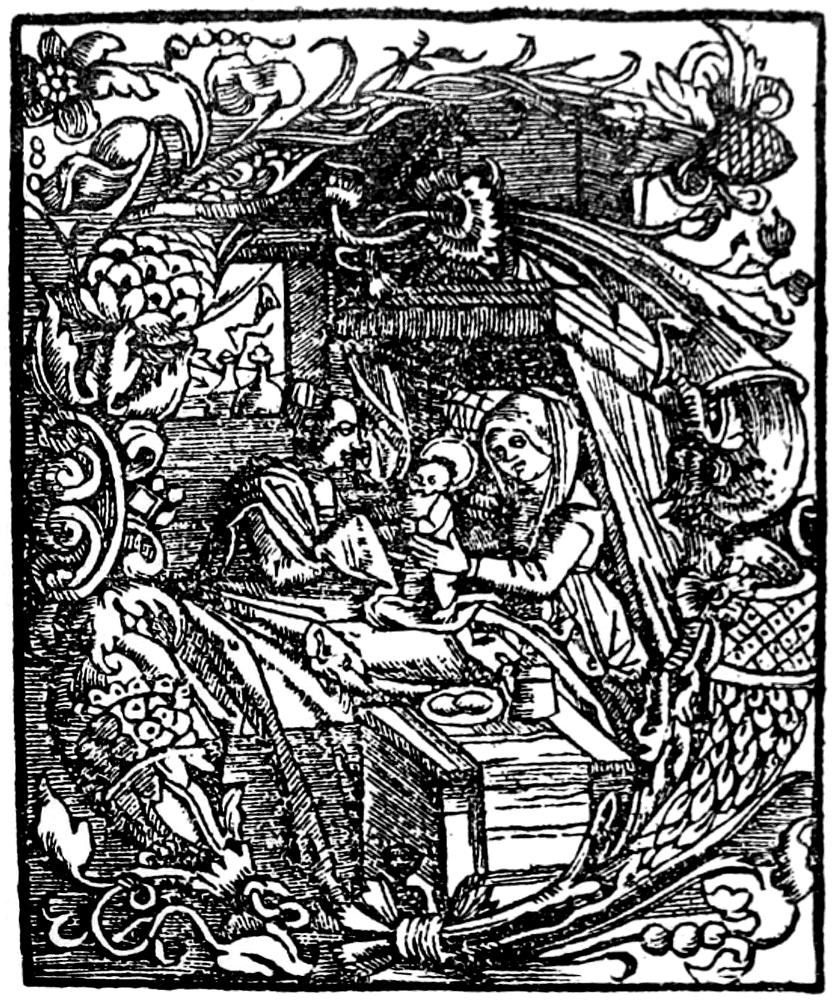
FROM THE BENEDICTINE MISSAL OF HAGENAU
[267]
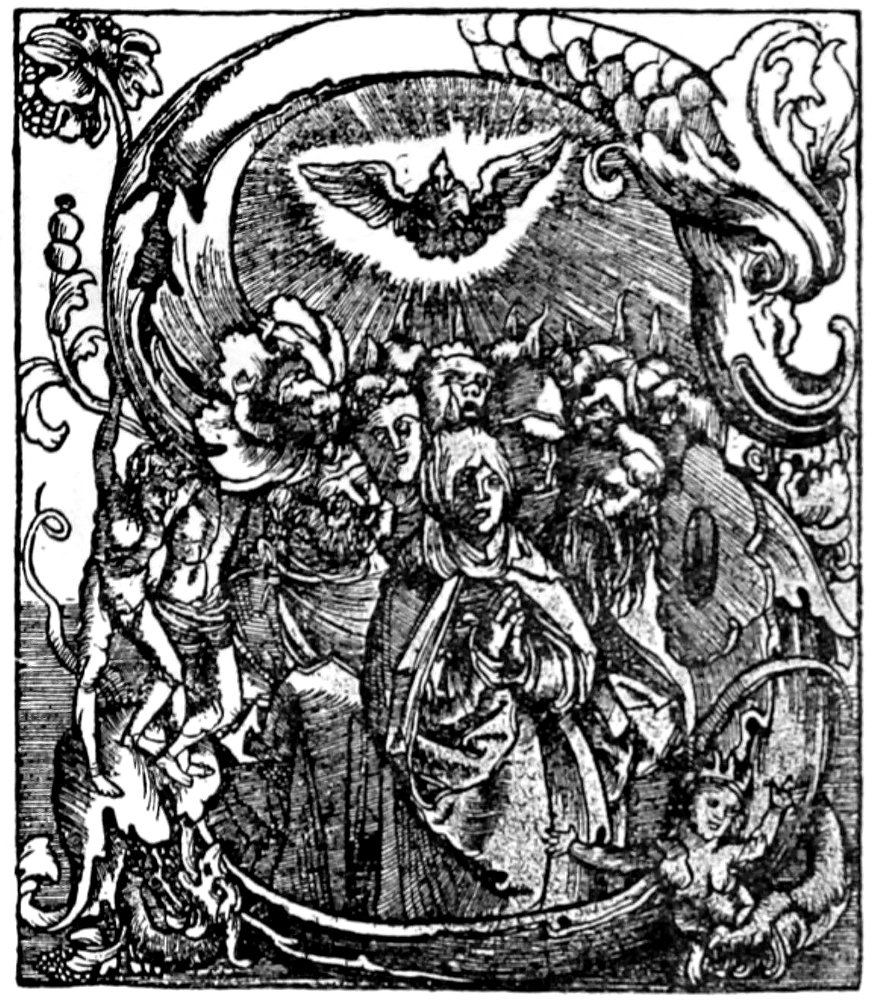
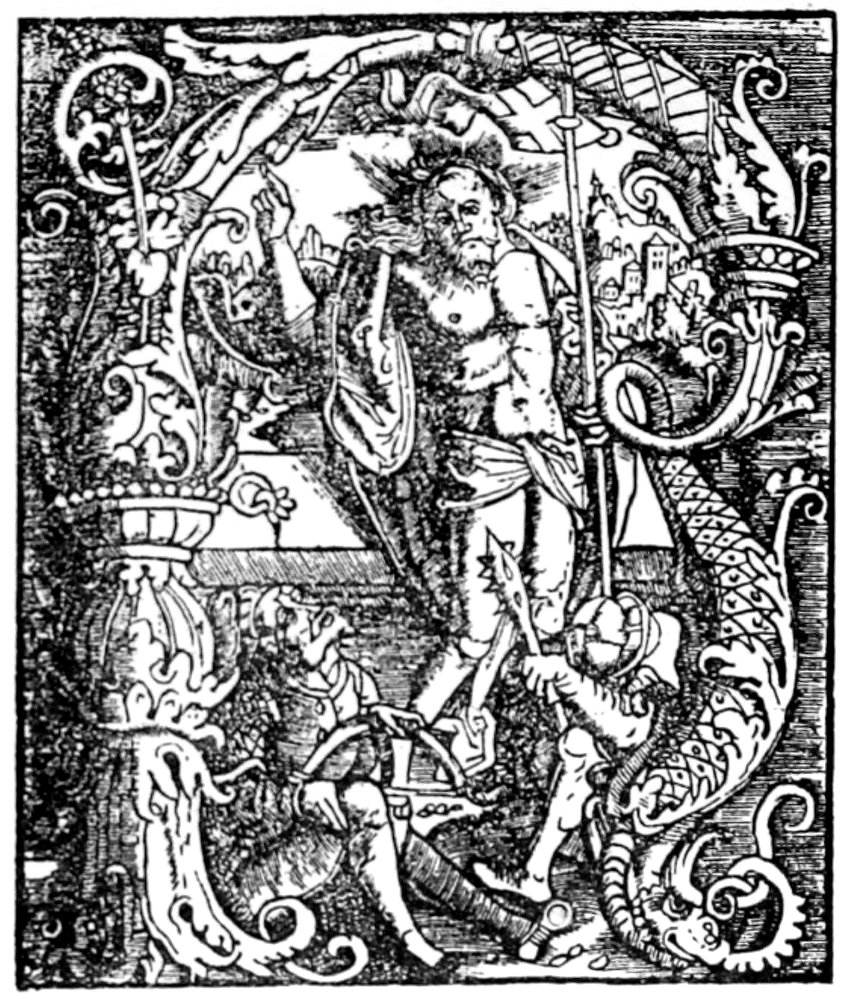
FROM THE BENEDICTINE MISSAL OF HAGENAU
[268]
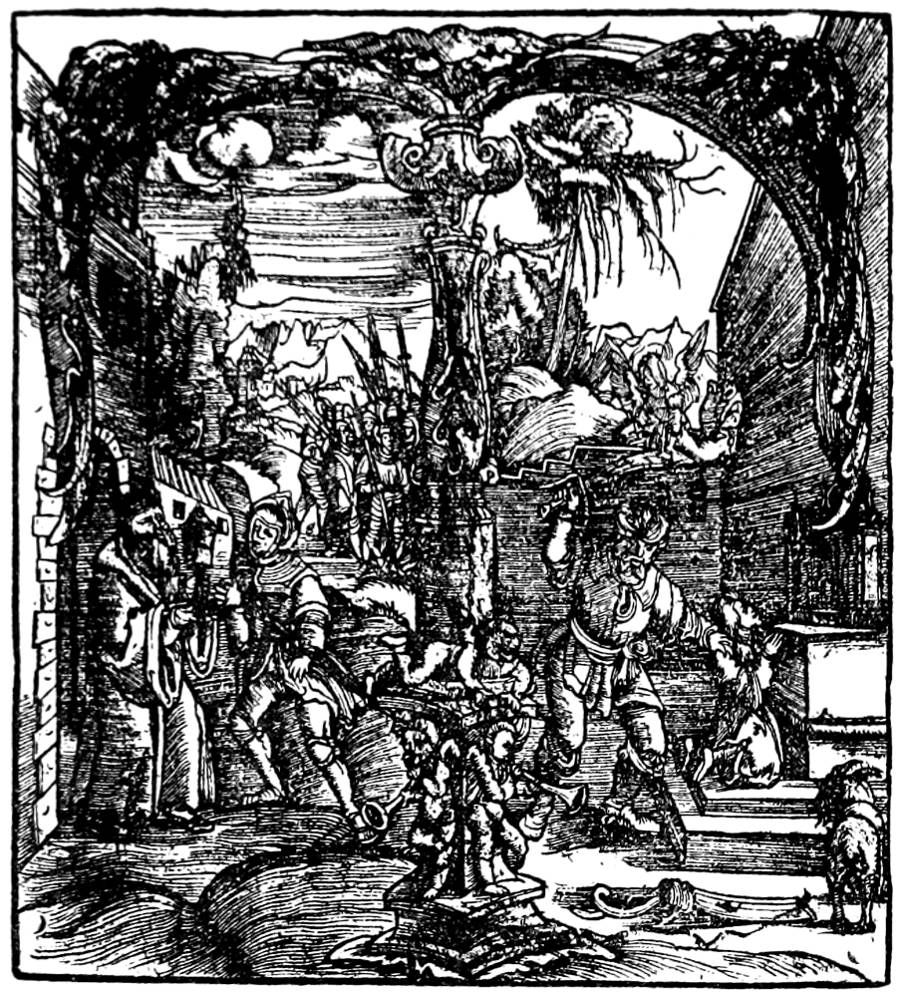
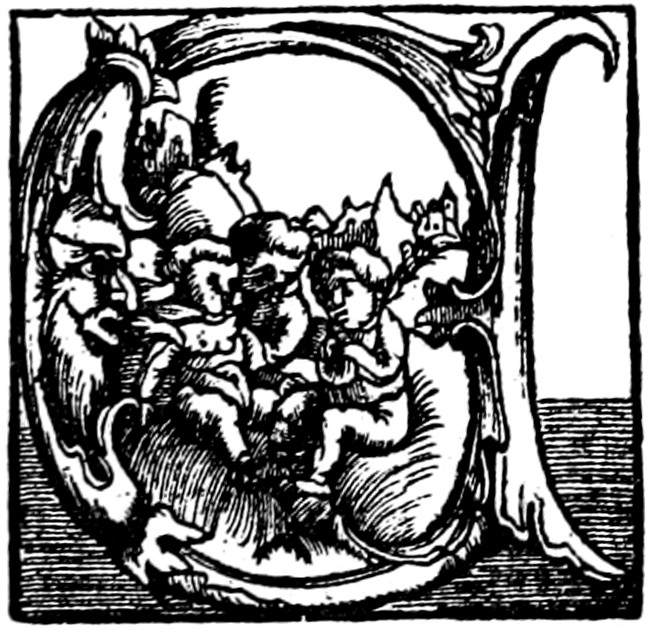
FROM THE BENEDICTINE MISSAL OF HAGENAU
[269]
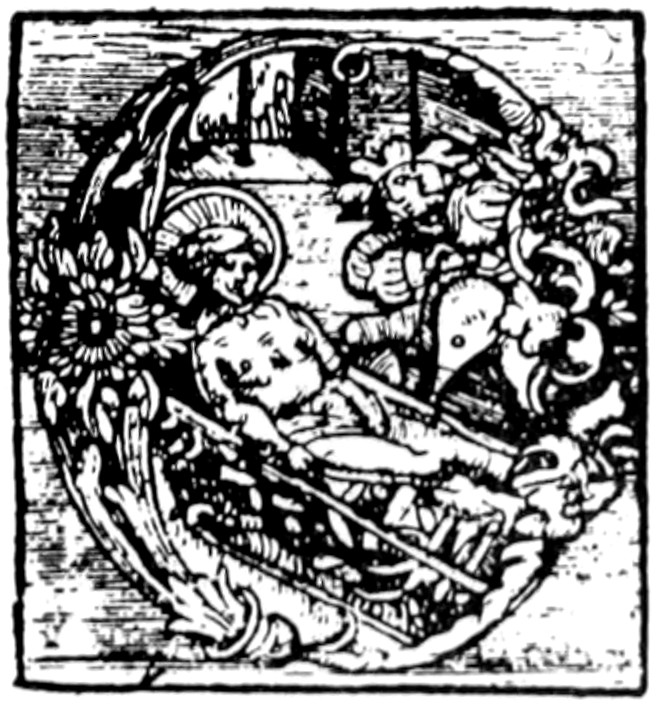
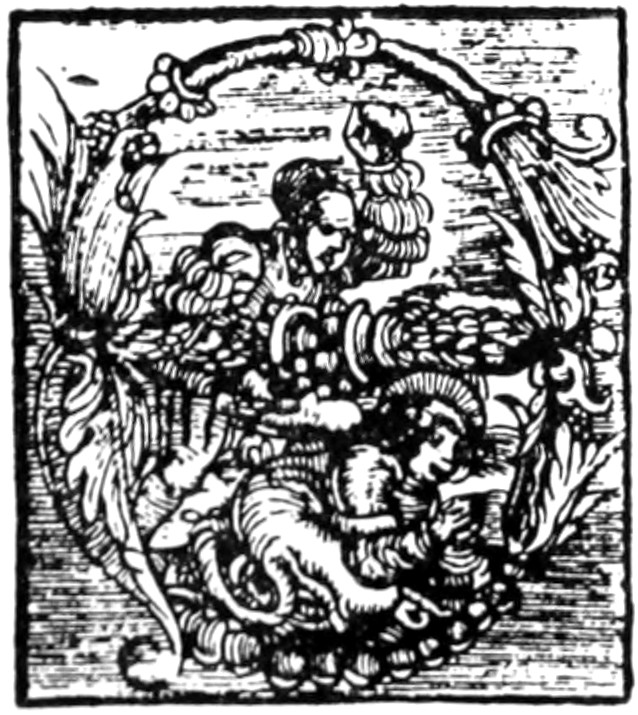
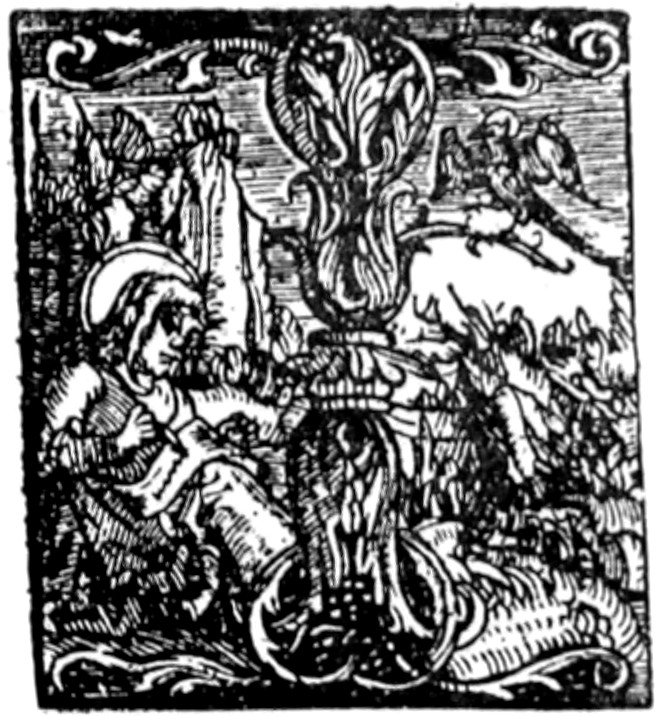
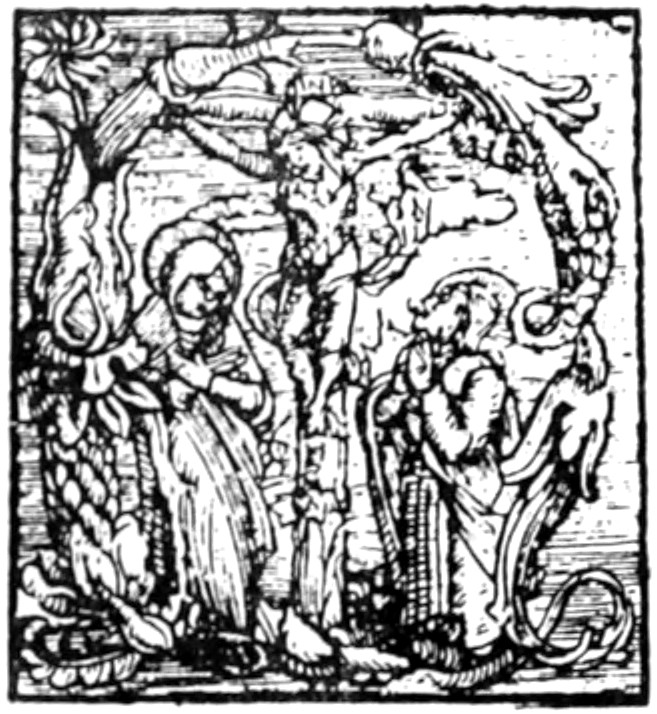
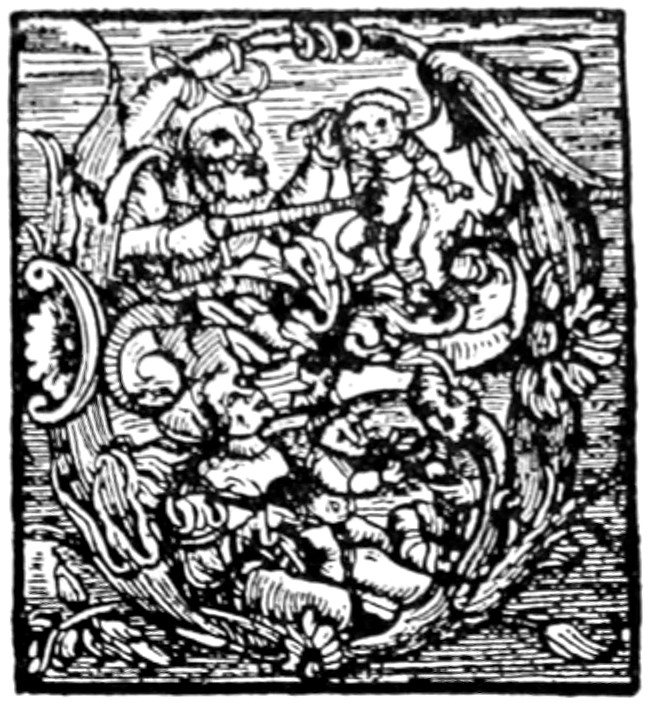
FROM AN UNIDENTIFIED (? MAGDEBURG) MISSAL
[270]
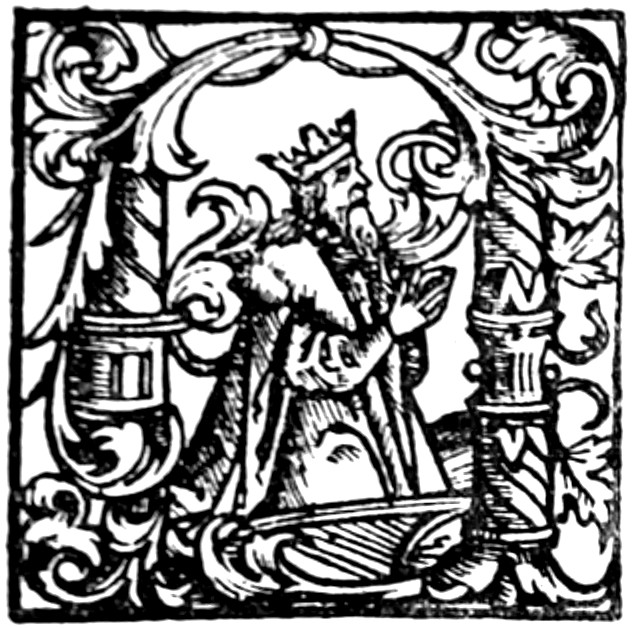
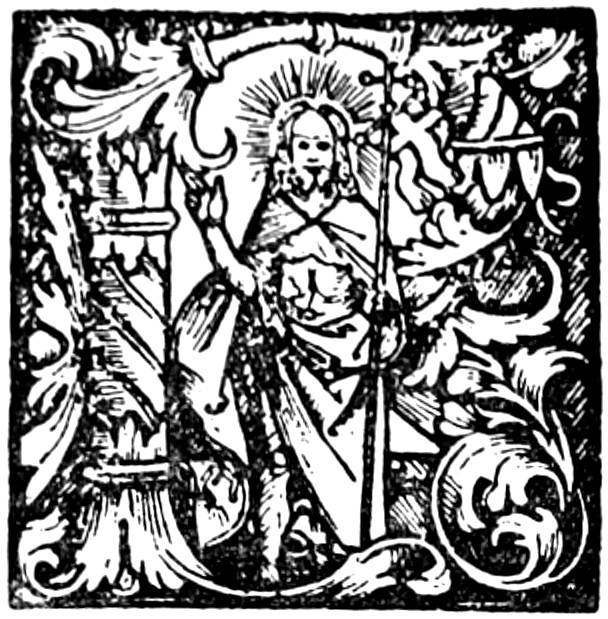
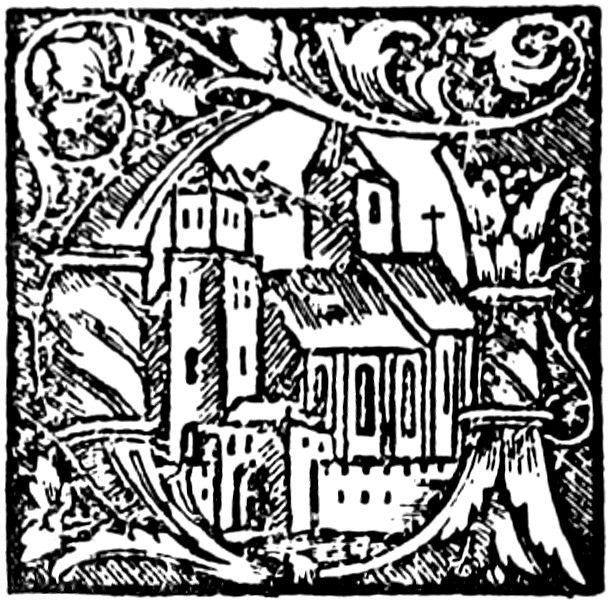
FROM THE ‘MISSALE POSNANIENSE’
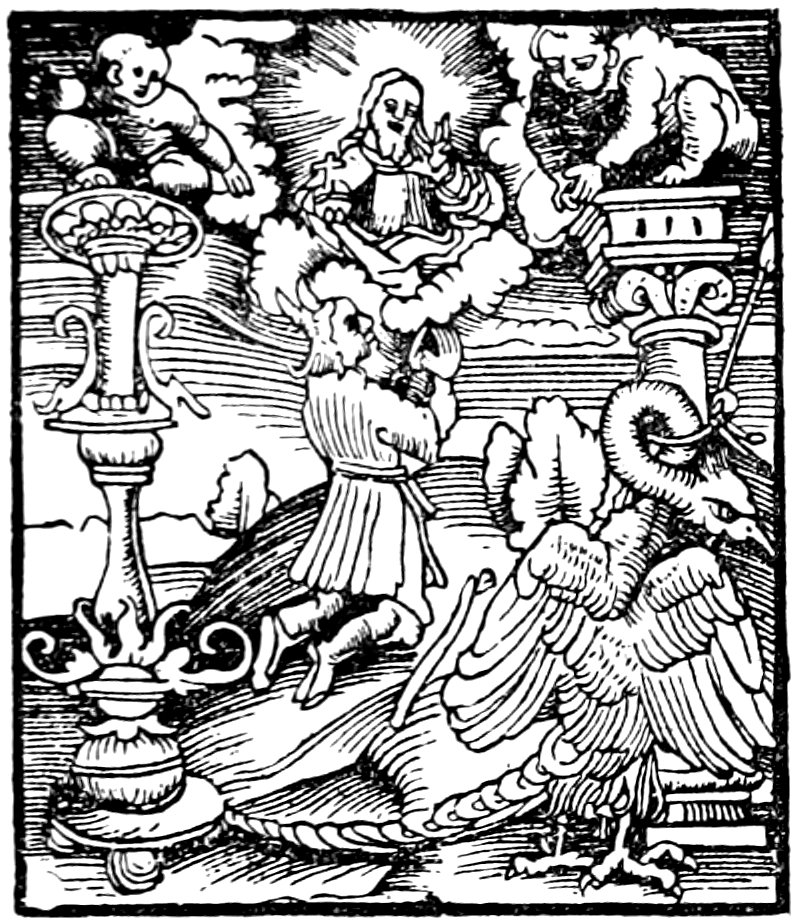
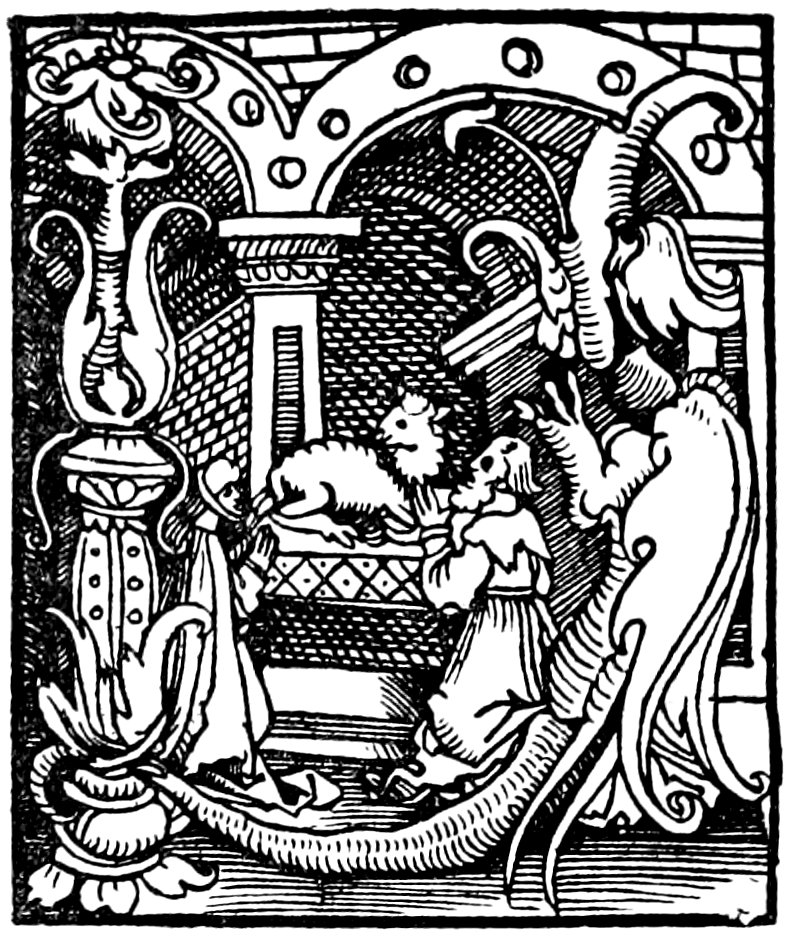
FROM THE ‘MISSALE EVANGELIARE’ OF LUTHER, BY KRAFFT OF WITTEMBURG
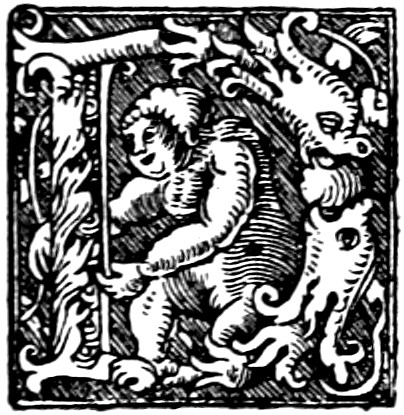
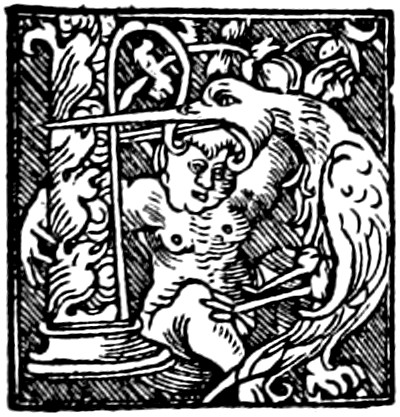
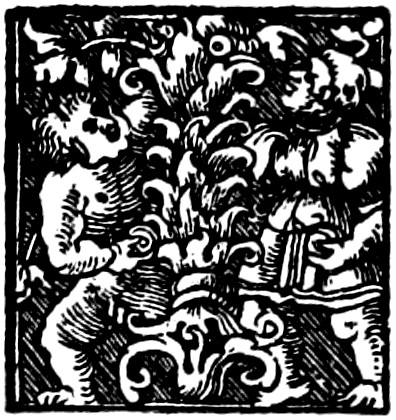
INITIALS USED AT DRESDEN
[271]
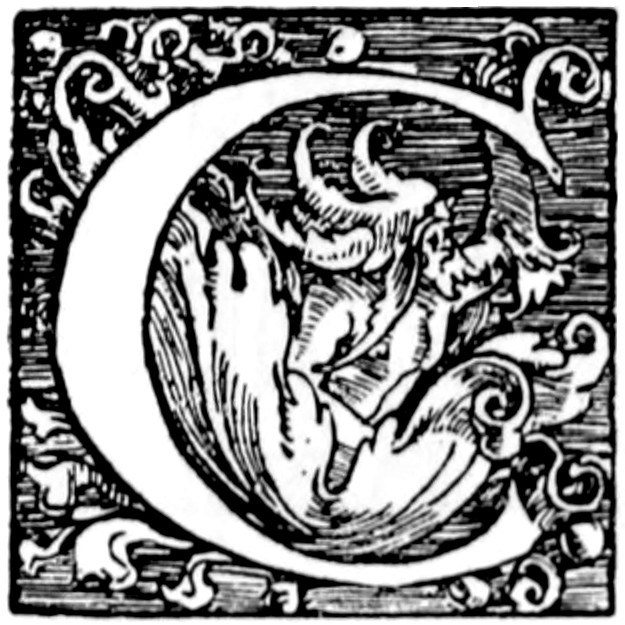
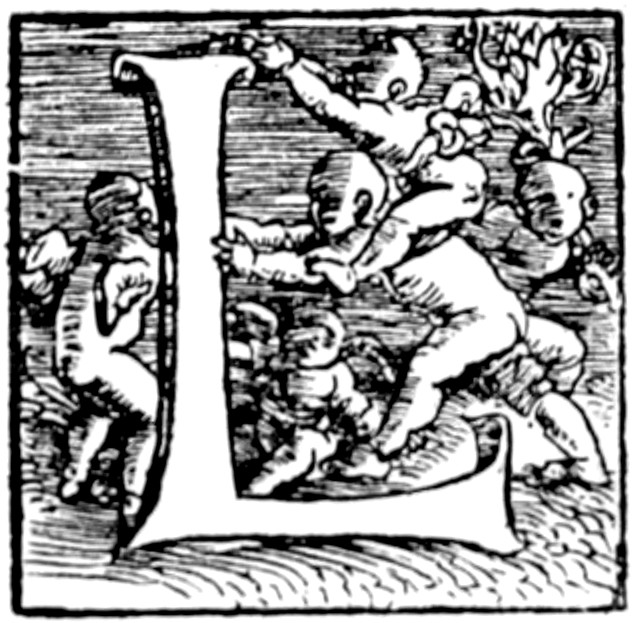
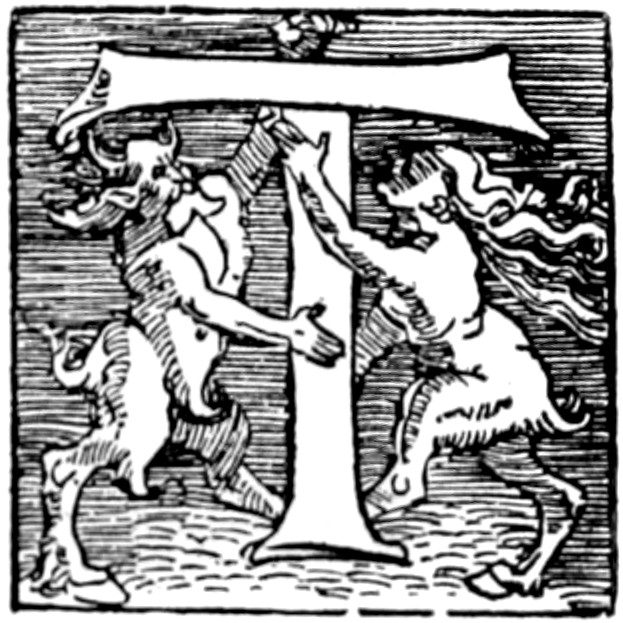
INITIALS BY PILGRIM IN THE ‘ELEGANTIAE’ OF LAURENTIUS VALLA, BY SCHURER, SCHLESTADT

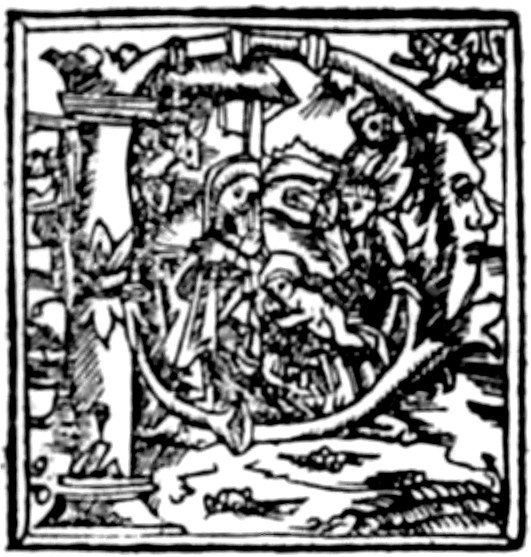
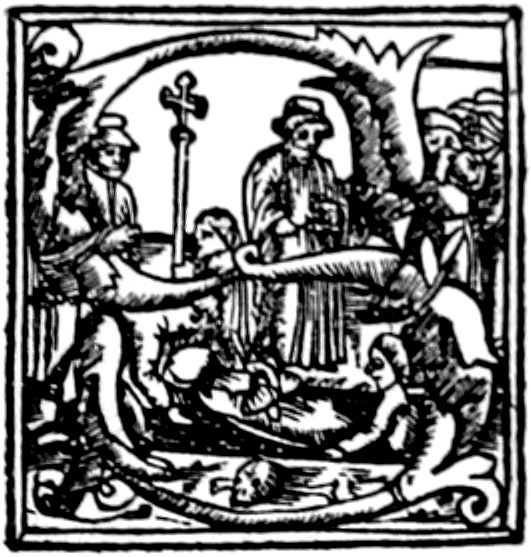
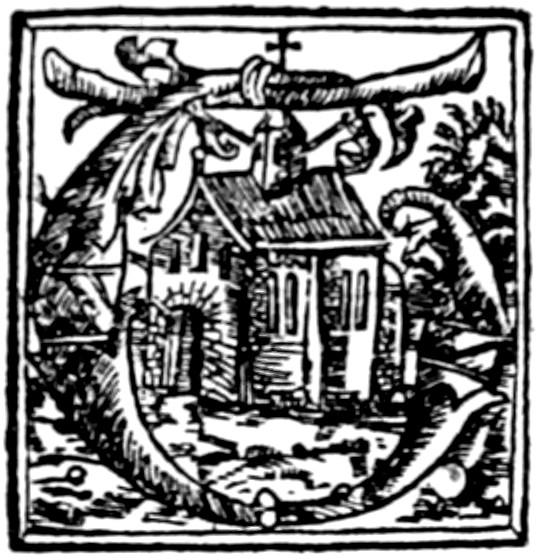
FROM THE ‘MISSALE PATAVIENSE’ OF WINTERBERGER, VIENNA
[272]
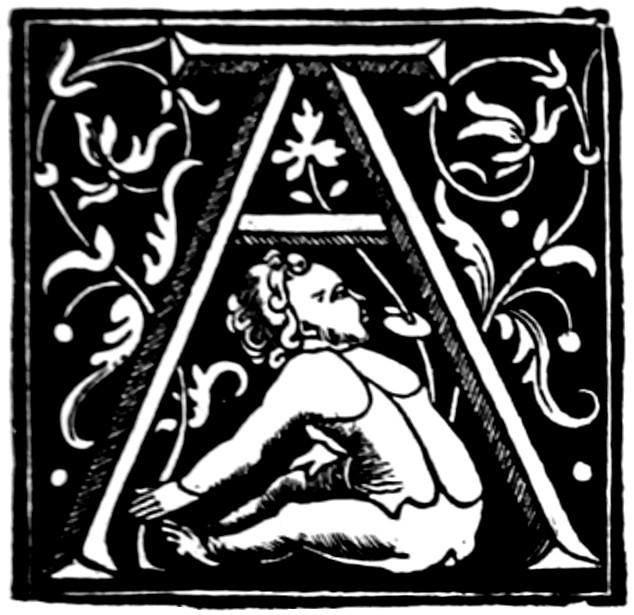

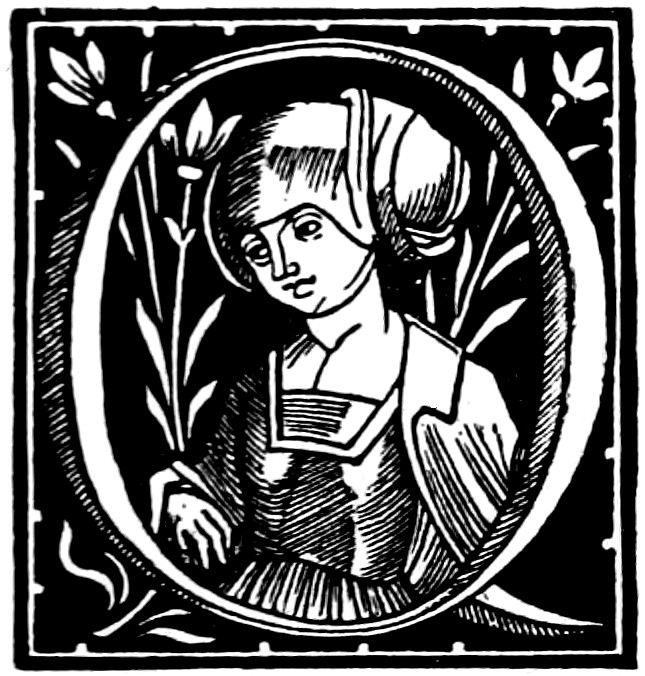
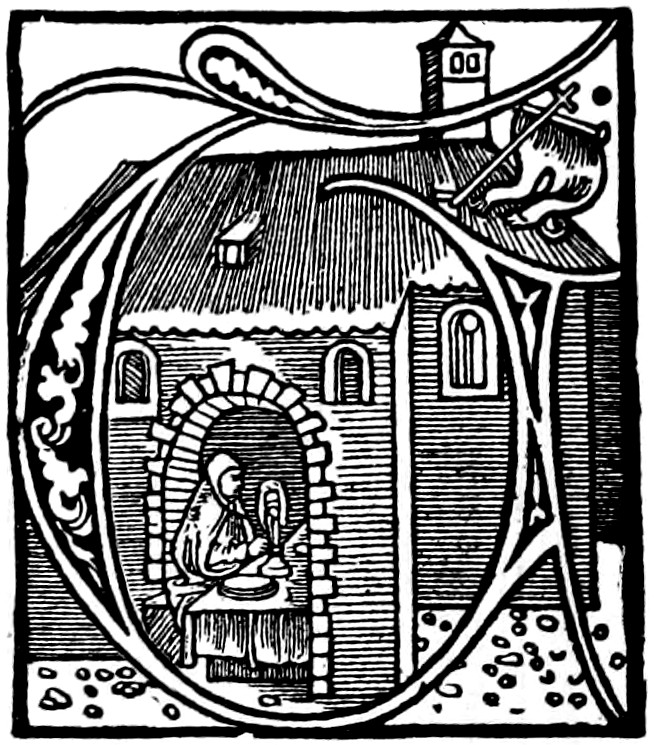
FROM WORKS PRINTED BY KNOBLOUCH
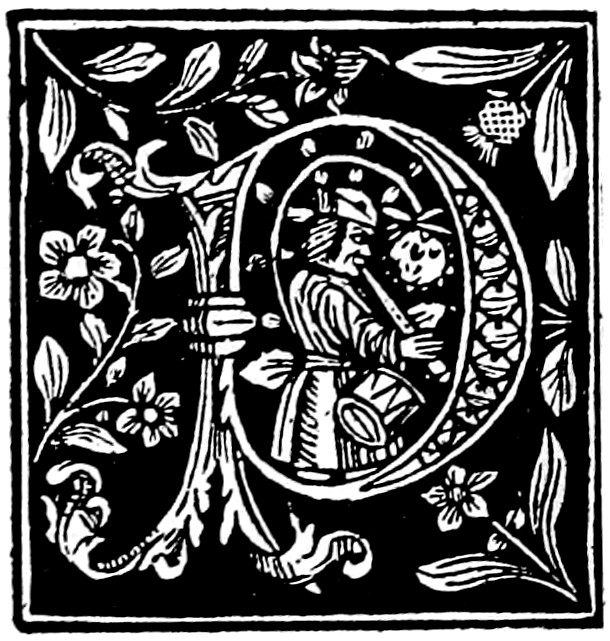
FROM A METZ PSALTER BY CASPAR HOCHFFEDER
[273]
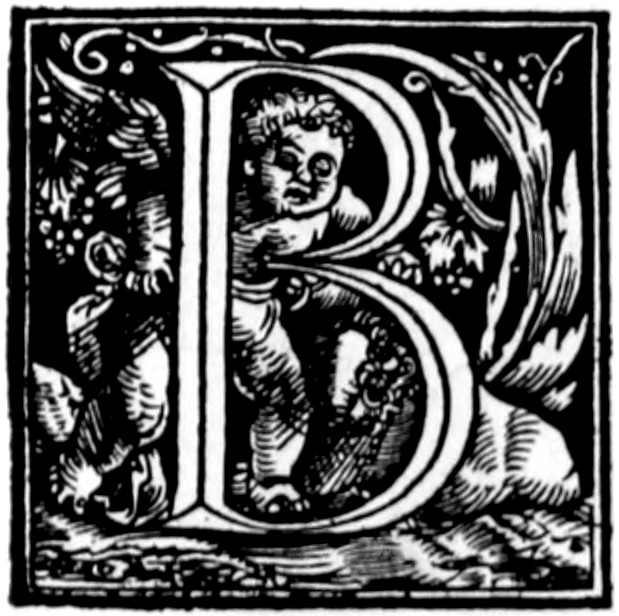

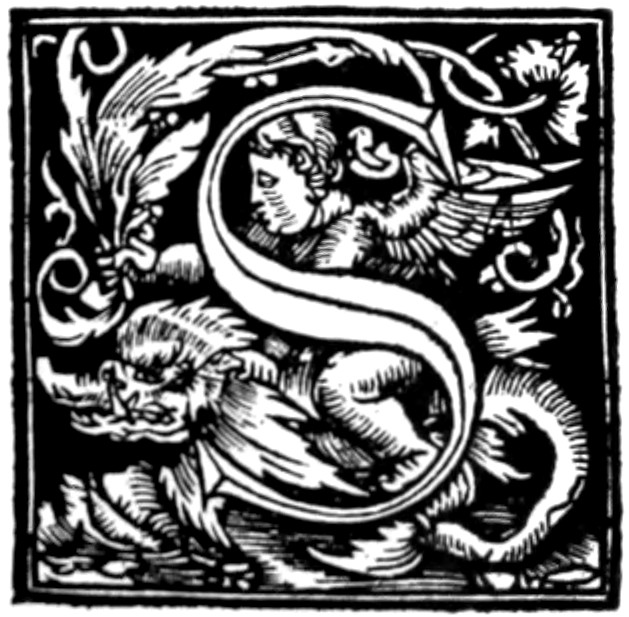
FROM PLINIUS OF HAGENAU, USED AFTERWARDS AT COLOGNE
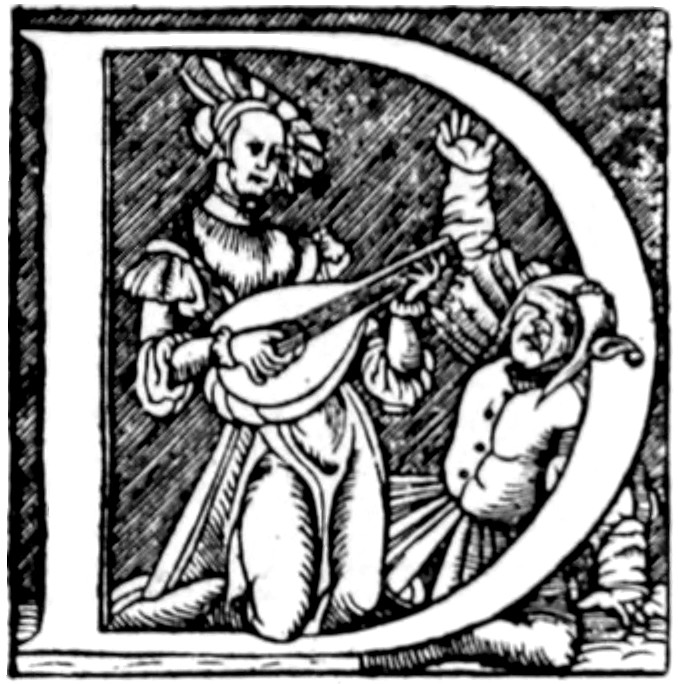

FROM A MAGDEBURG BIBLE
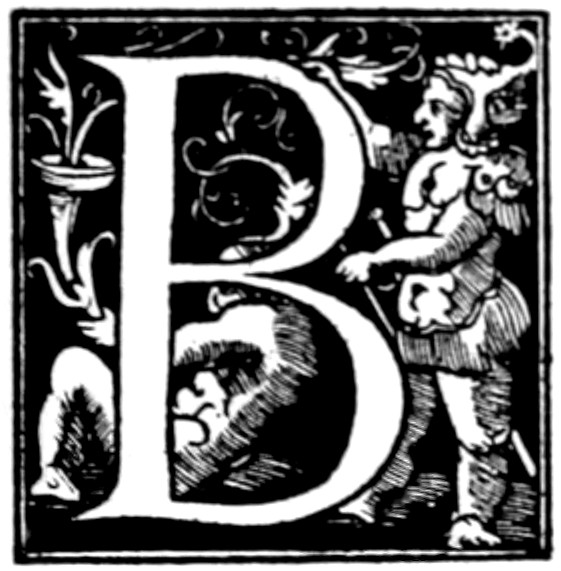
BY SCHEFFER OF MAYENCE
[274]
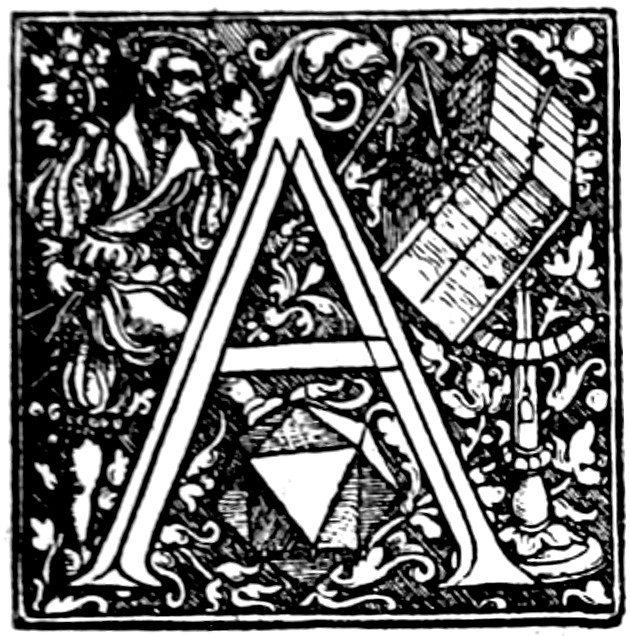
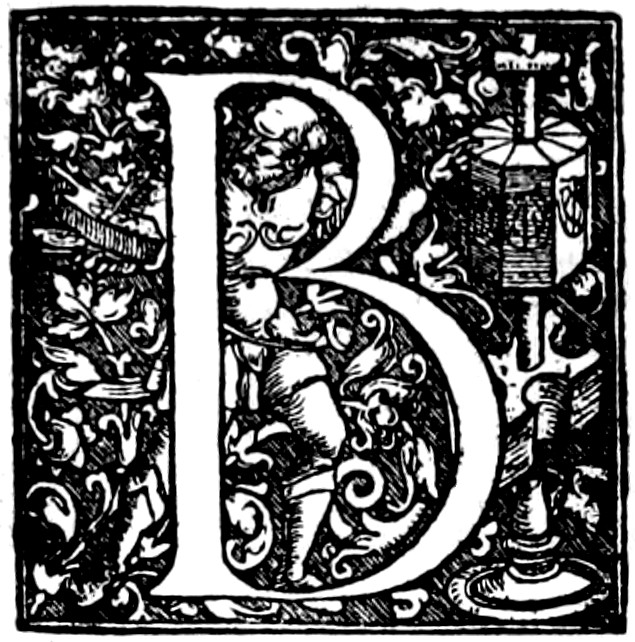
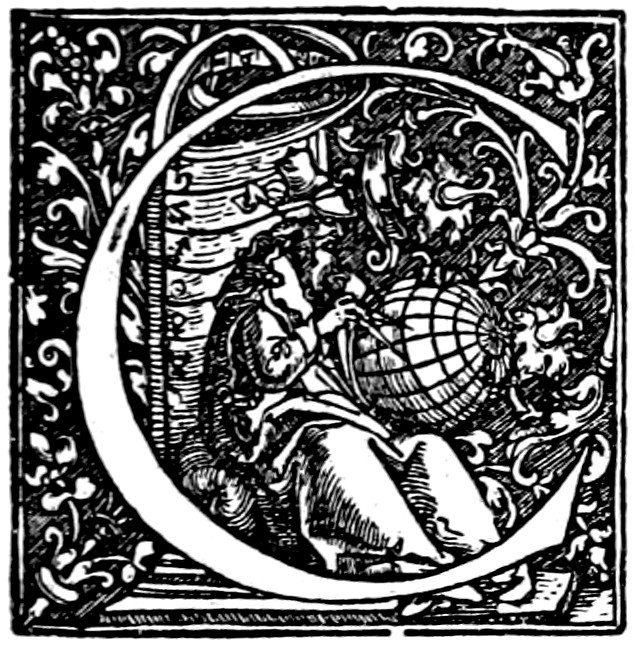
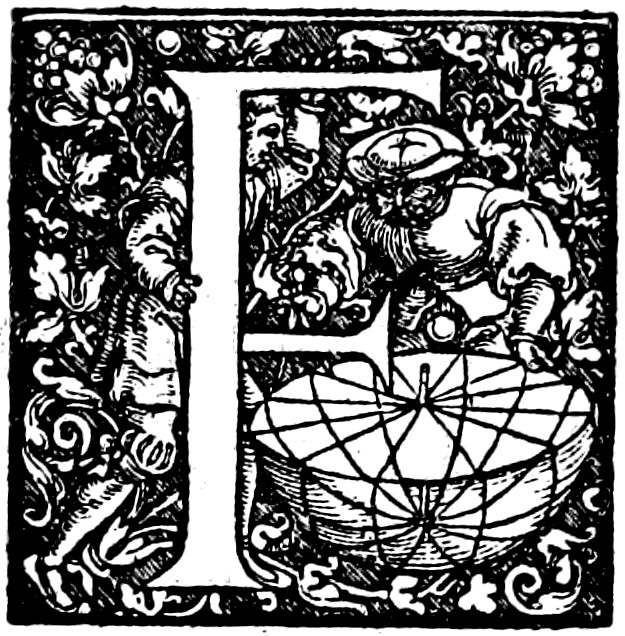
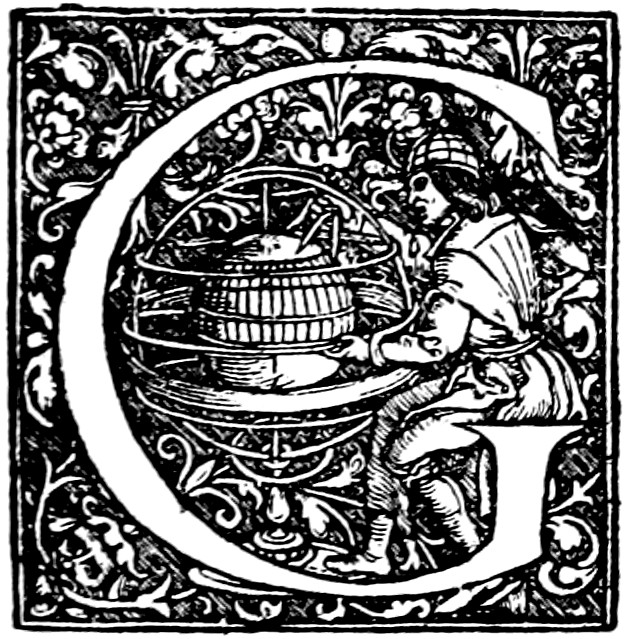
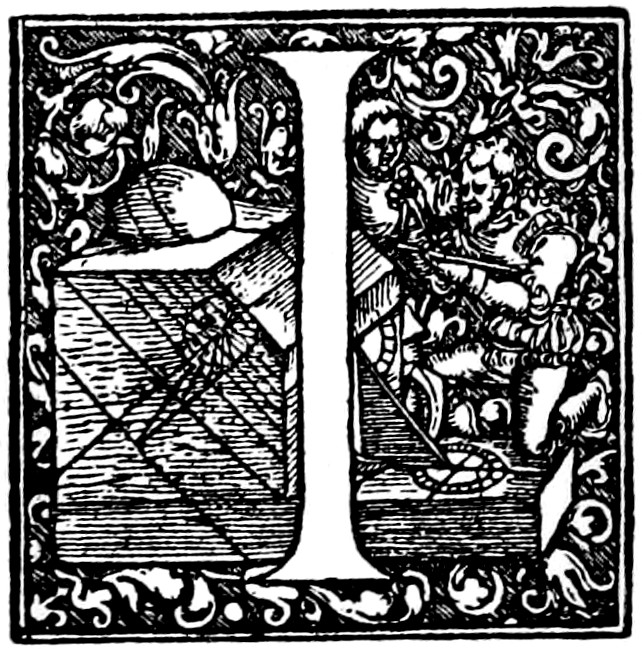
FROM THE ‘ASTRONOMICON CESAREUM’ OF APIANUS
[275]
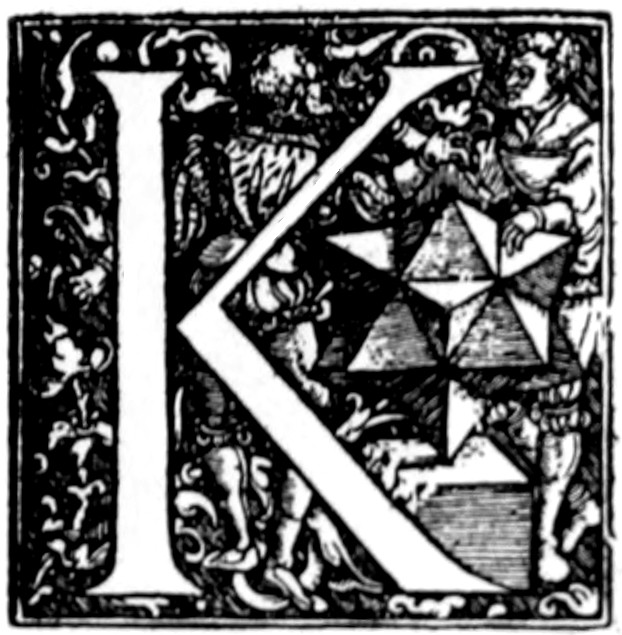
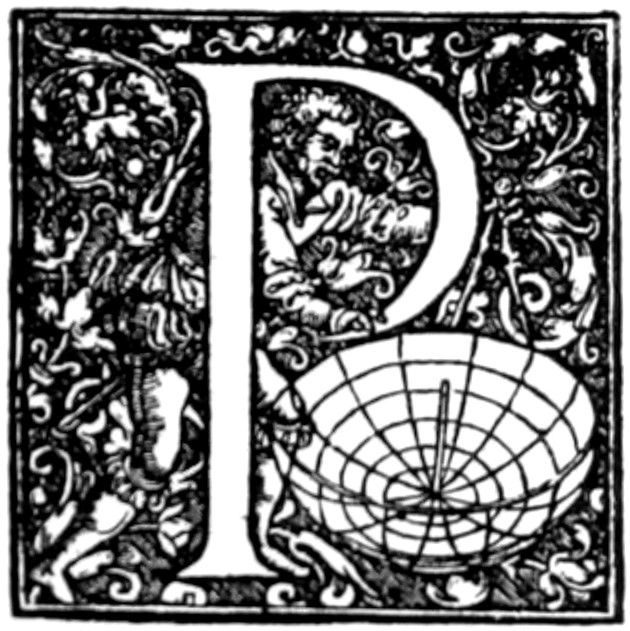
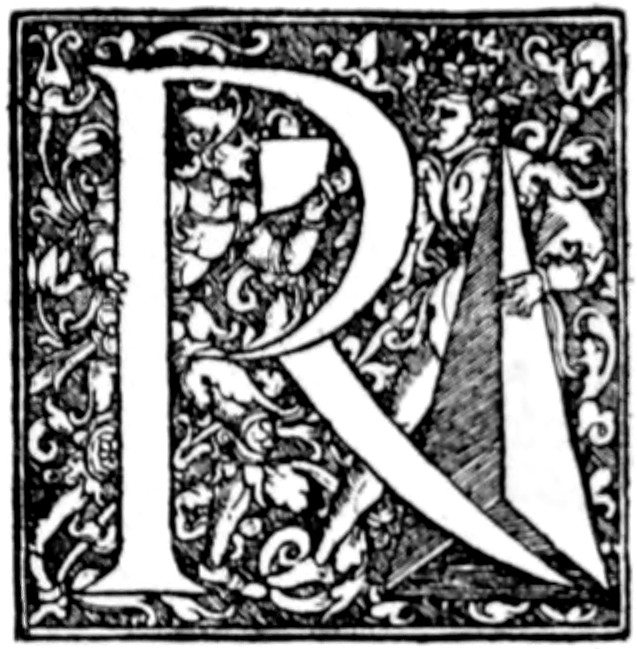

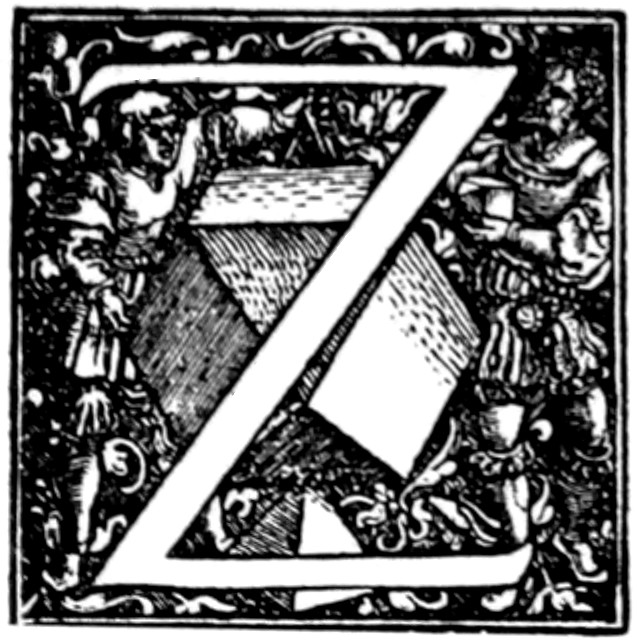

FROM THE ‘ASTRONOMICON CESAREUM’ OF APIANUS
[276]
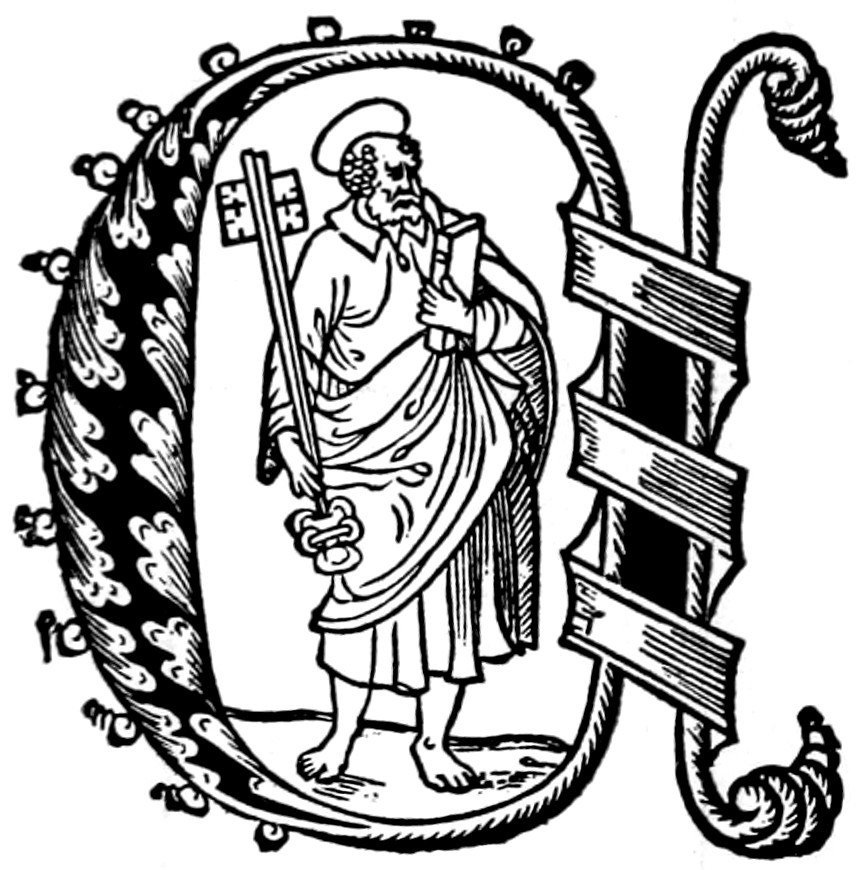
FROM AN ECCLESIASTICAL DOCUMENT
[277]
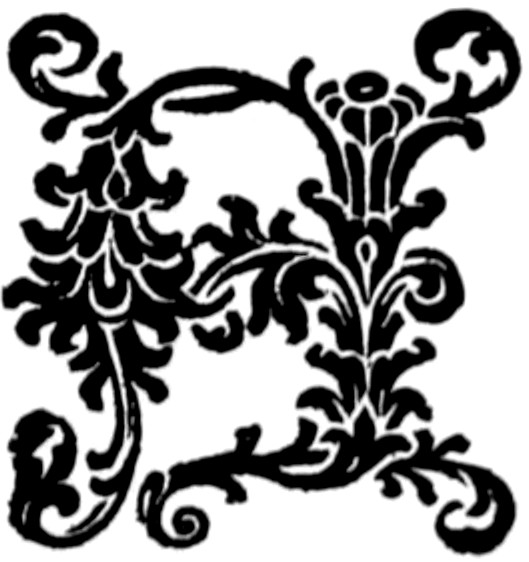
CAXTON’S ‘A’
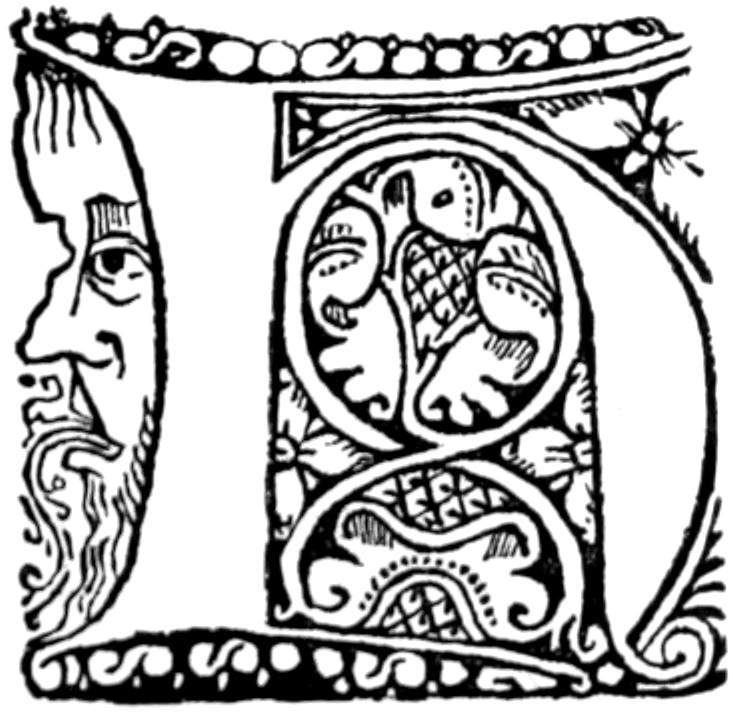
WYNKYN DE WORDE’S BORROWED ‘H’
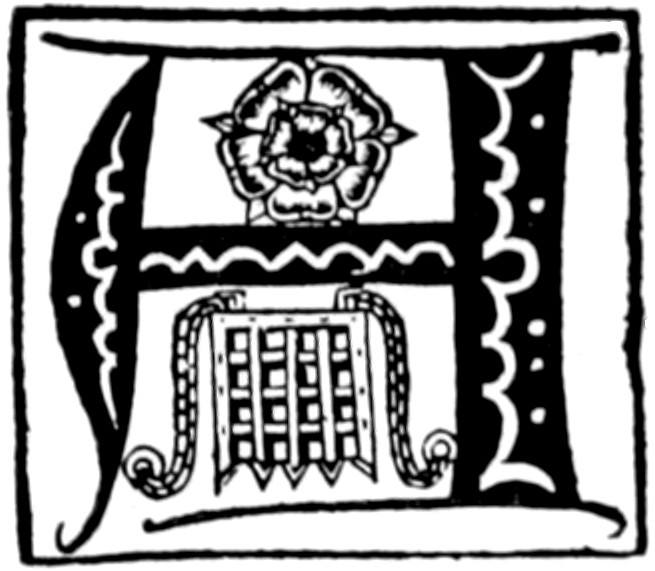
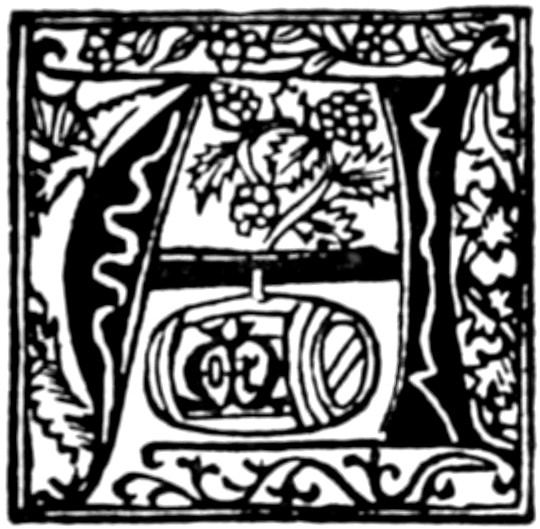
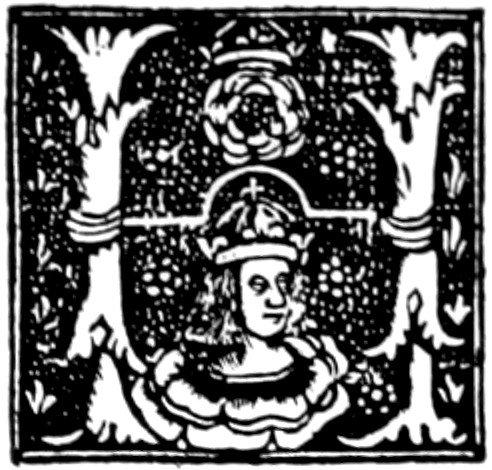
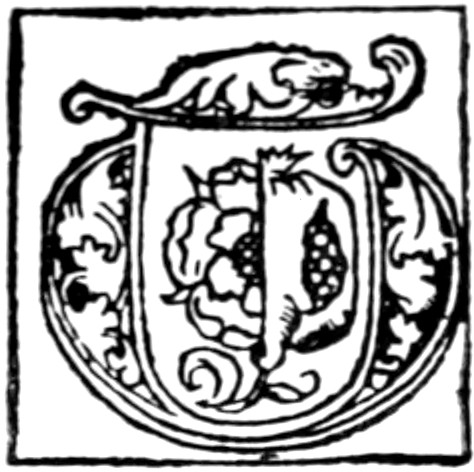
FROM PYNSON’S MORTON MISSAL
[278]
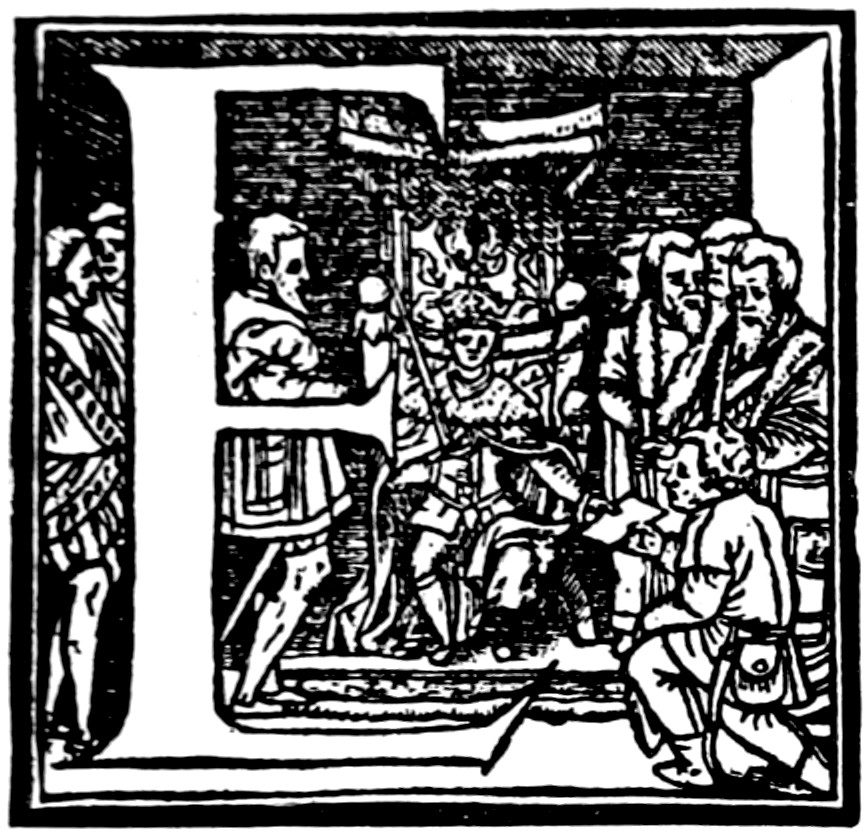
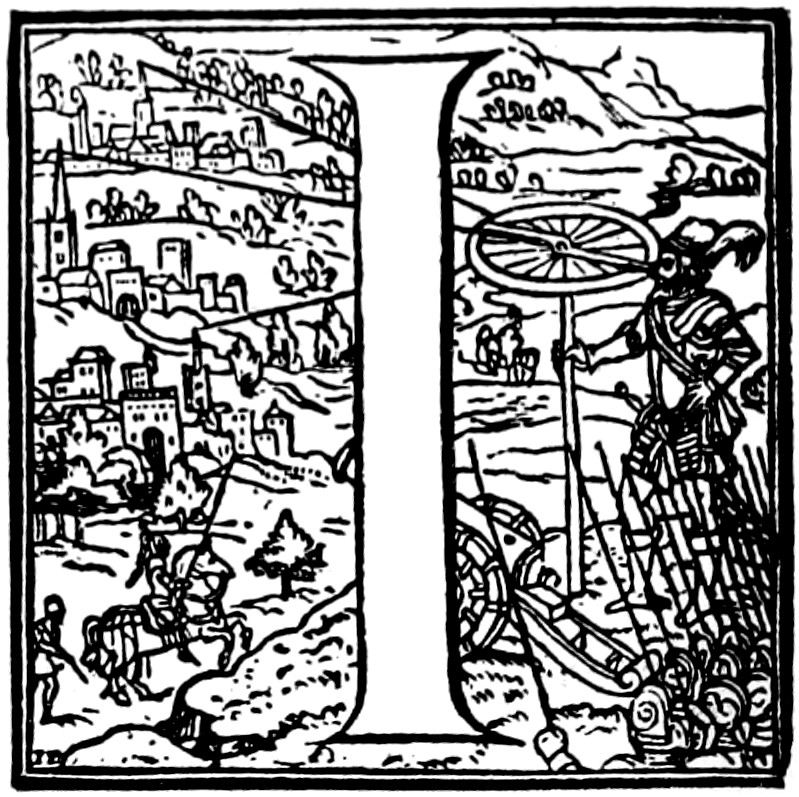
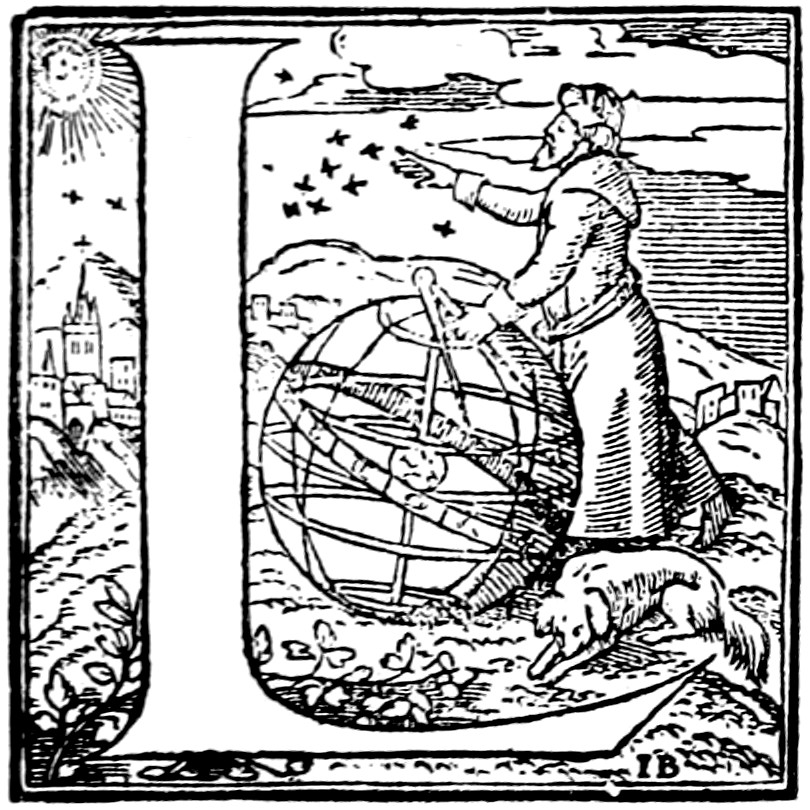
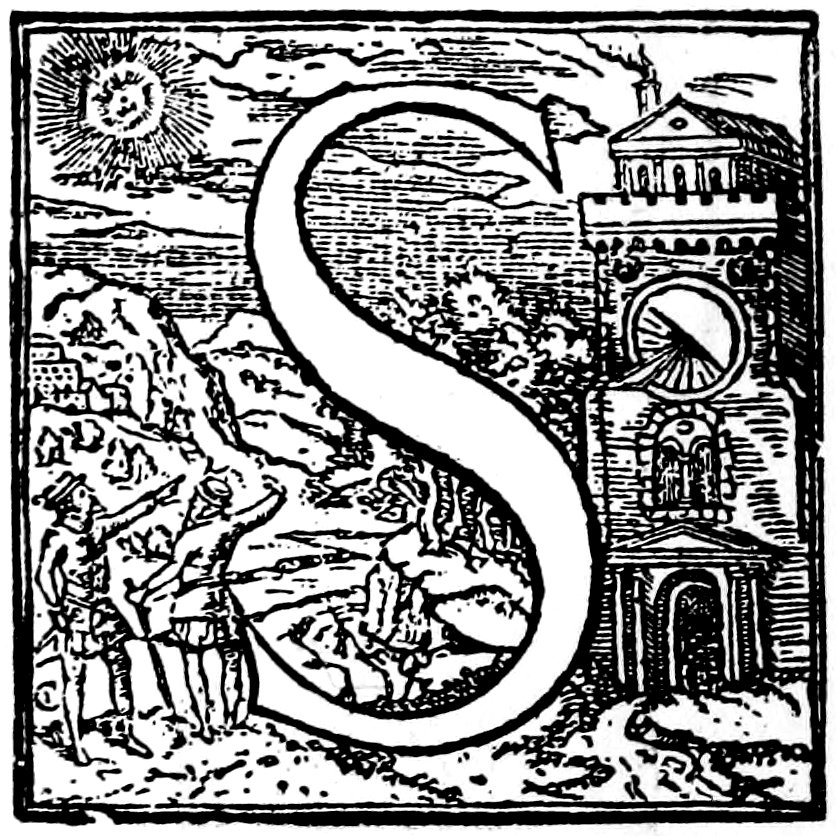
INITIALS USED BY JOHN DAY
[279]
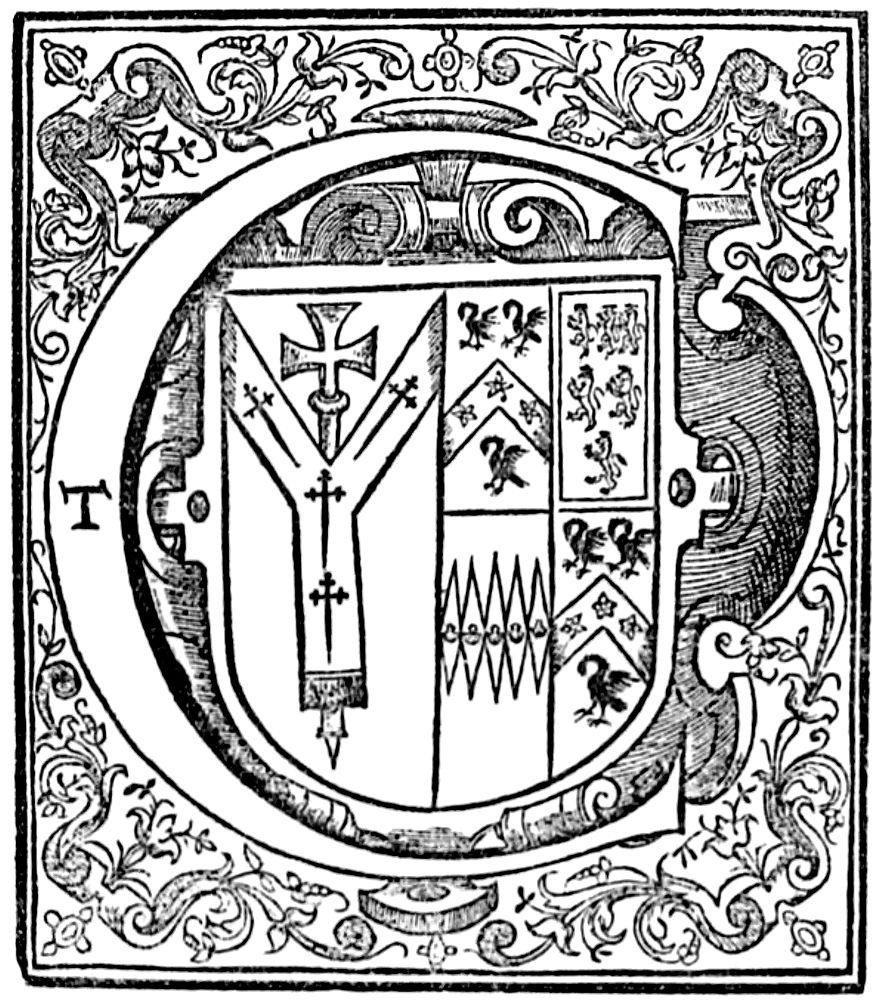
INITIAL WITH ARMS OF ARCHBISHOP CRANMER, FROM THE BISHOPS’ BIBLE
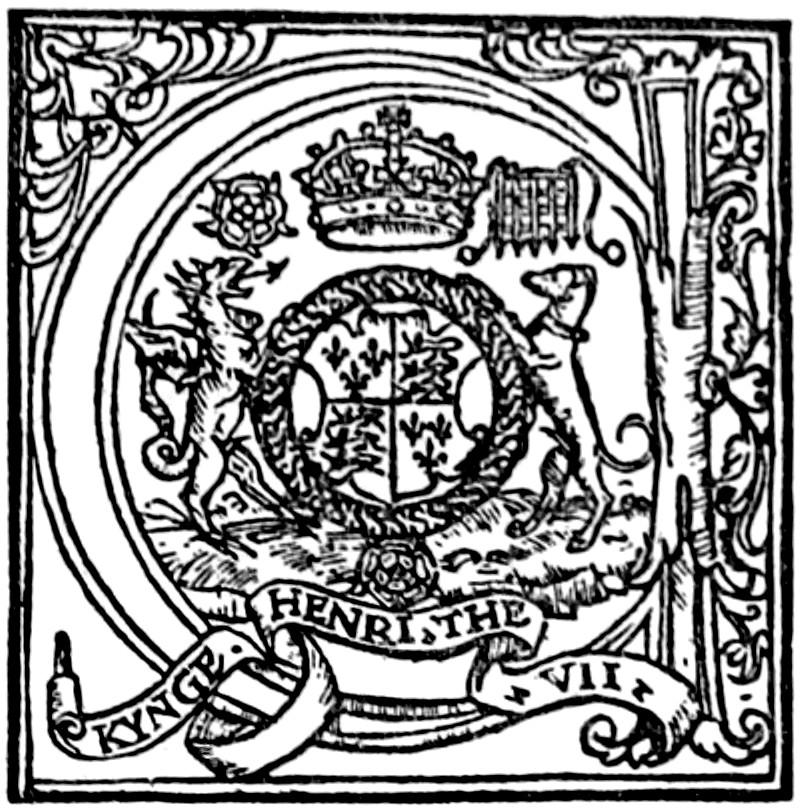
INITIAL WITH ARMS OF HENRY VII., FROM GRAFTON’S EDITION OF ‘HALLE’S CHRONICLE’
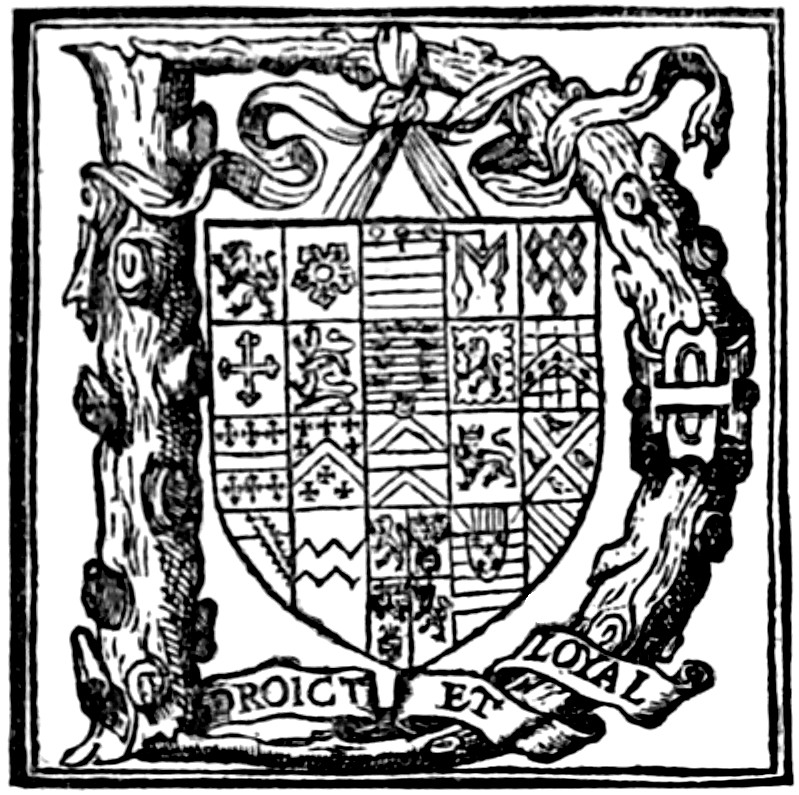
INITIAL WITH ARMS OF THE EARL OF LEICESTER, FROM DAY’S EDITION OF CUNNINGHAM’S ‘COSMOGRAPHICAL GLASS’
[280]
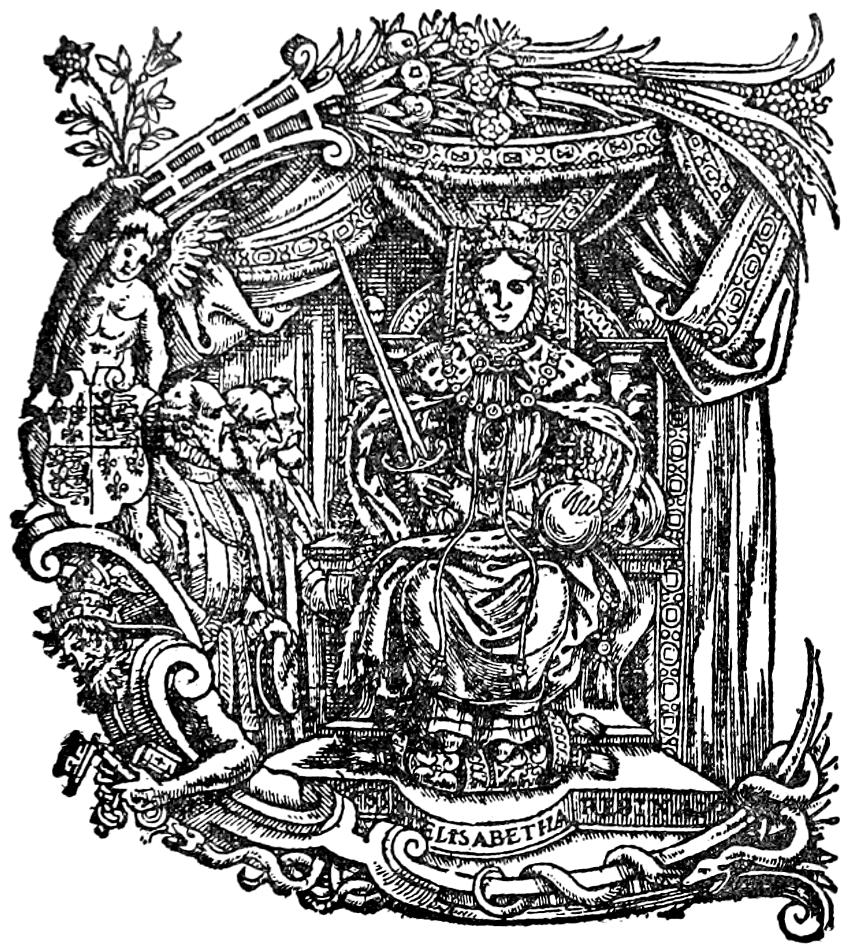
PORTRAIT OF QUEEN ELIZABETH FROM DAY’S EDITION OF FOXE’S ‘BOOK OF MARTYRS’
[281]
FINIS
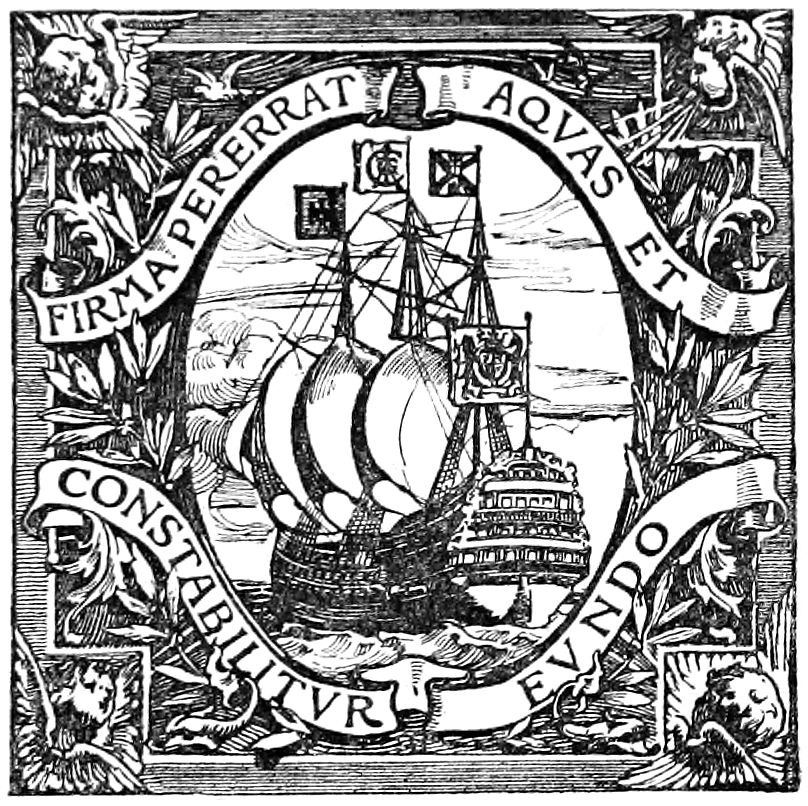
EDINBURGH: T. AND A. CONSTABLE
PRINTERS TO HIS MAJESTY: MCMVIII
The spelling, capitalisation and hyphenation of the source document have been retained (including those of proper names and book titles), except as listed under Changes made below.
Depending on the hard- and software used to read this text, not all elements may display as intended.
The book appears to contain several contradictions between the descriptions given and the illustrations. These have been retained as printed in the source document without further correction or comment.
Several of the author’s references to other parts of the text and to (sets of) illustrations are ambiguous. Hyperlinks to such elements are provided only in cases where there is a clear reference to (the first element of) an unambiguous target.
Page 61, “At Turin ... we find that the L with the satyr,”: as printed in the source document; the sentence appears to be incomplete, or “we find that the L ...” might have to be corrected to “we find the L...”.
Page 109 ff.: The illustrations are presented here as printed in the source document, with minimal straightening and de-skewing. On a wide screen or in a wide window, the illustrations are intended to have widths that are approximately proportional to their relative widths in the source document.
Page 238, “Original size” and “Enlargement”: Based on a quarto book size of around 29 cm, the “Original size” would be around 4.1 × 4.1 cm (1.6″ × 1.6″).
Changes made
Some obvious minor typographical and punctuation errors have been corrected silently.
Footnotes have been moved to under text paragraphs.
Page 39: “LUBECK” changed to “LÜBECK”.
Page 92: “Psalterum of Harentals” changed to “Psalterium of Harentals”.
Page 99: “(B Abraham)” changed to “B (Abraham)”.
Page 137: “LUTZELBERGER” changed to “LÜTZELBERGER”.
Page 142: captions “FROM THE GREEK LEXICON OF RENÉ GELLI” and “FROM THE ‘GALEN’ OF BEBELIUS AND CRATANDER” interchanged.
Page 252: “BEZANÇON” changed to “BESANÇON”.
Page 282: “Zamara” changed to “Zamora”.
Page 284: “Leo the Isaurian burns the public” changed to “Leo the Isaurian burns the public library”.
Index: some page numbers corrected or inserted to conform to the text.
This eBook is for the use of anyone anywhere in the United States and most other parts of the world at no cost and with almost no restrictions whatsoever. You may copy it, give it away or re-use it under the terms of the Project Gutenberg License included with this eBook or online at www.gutenberg.org. If you are not located in the United States, you will have to check the laws of the country where you are located before using this eBook.